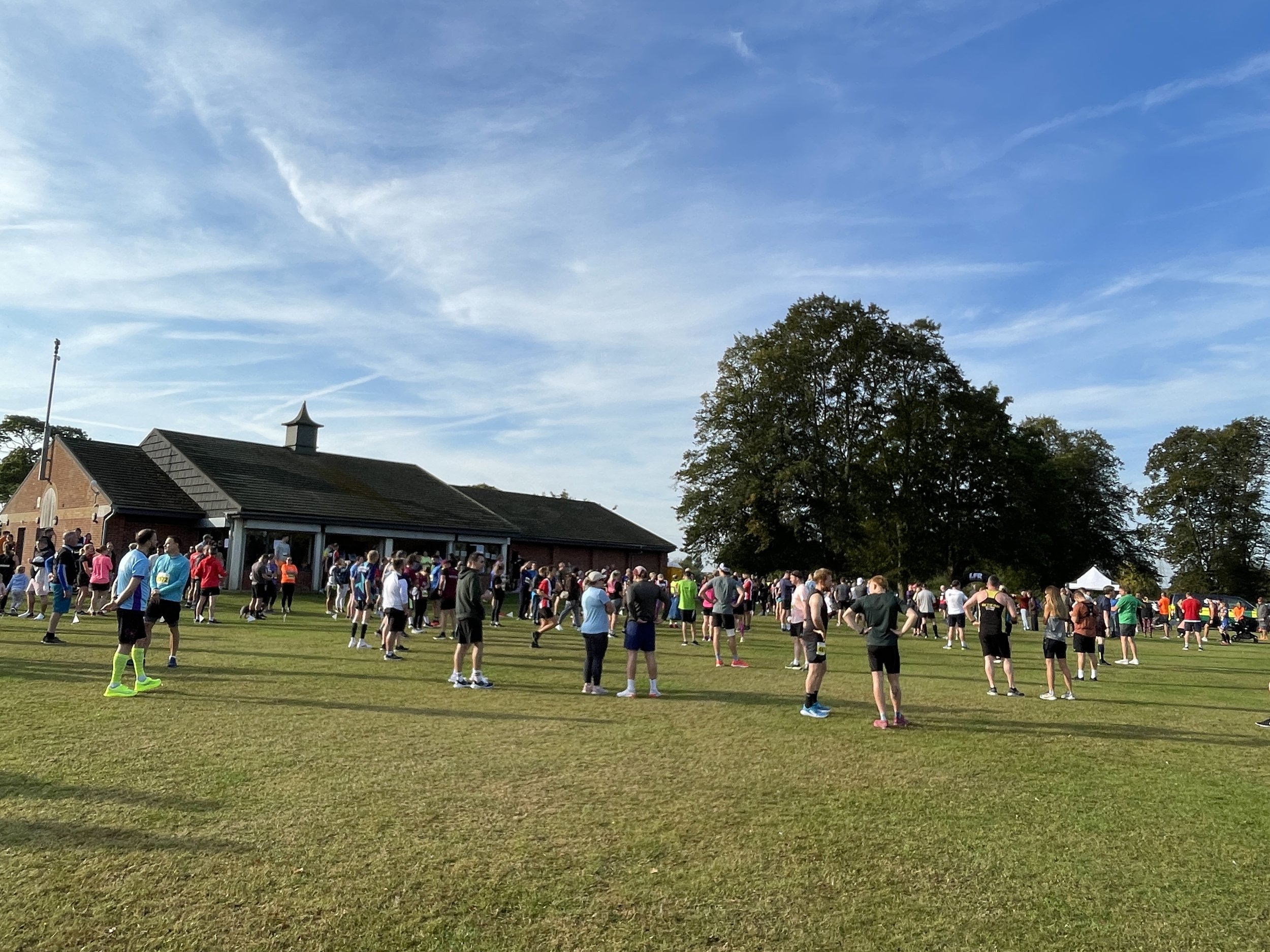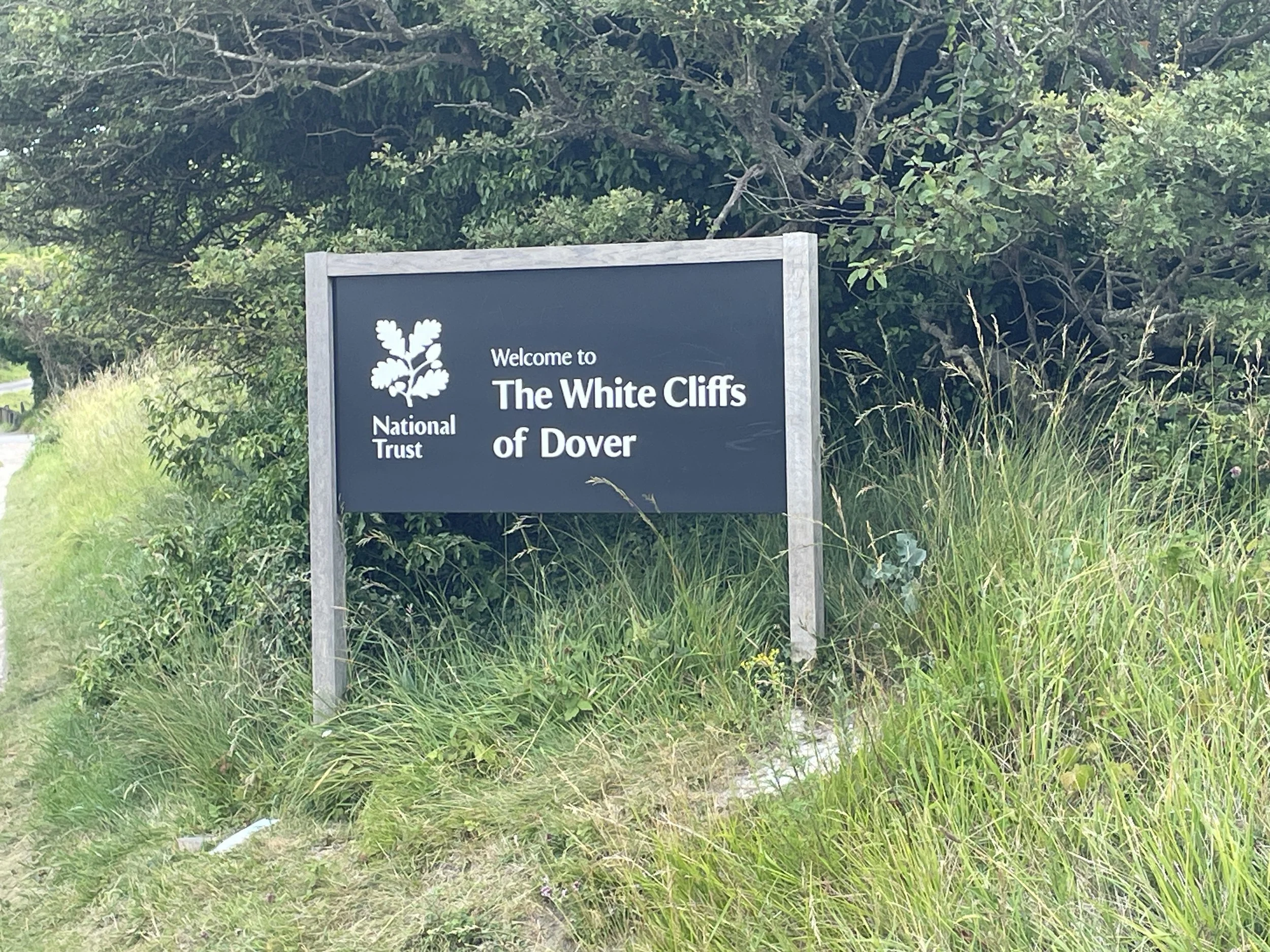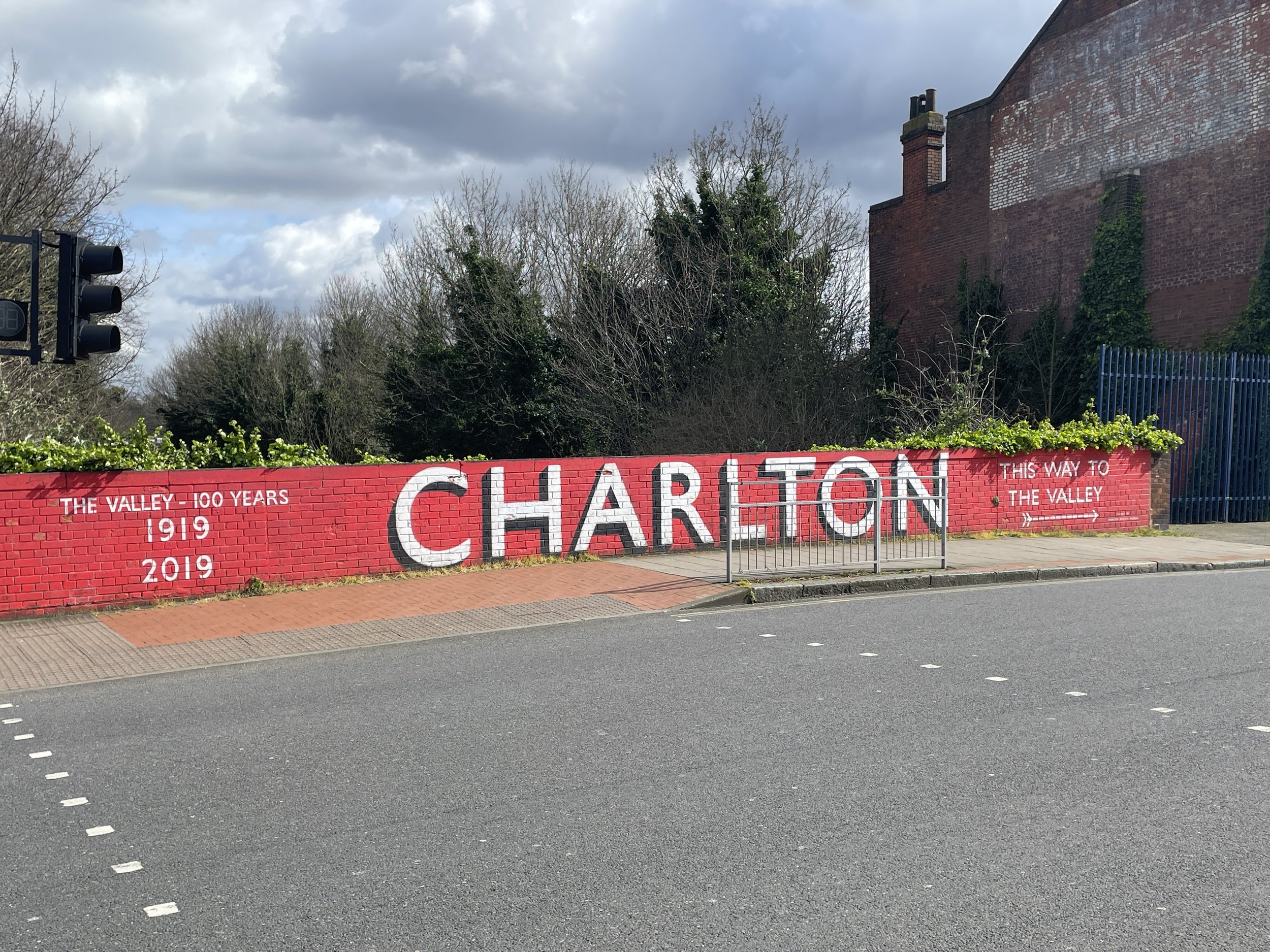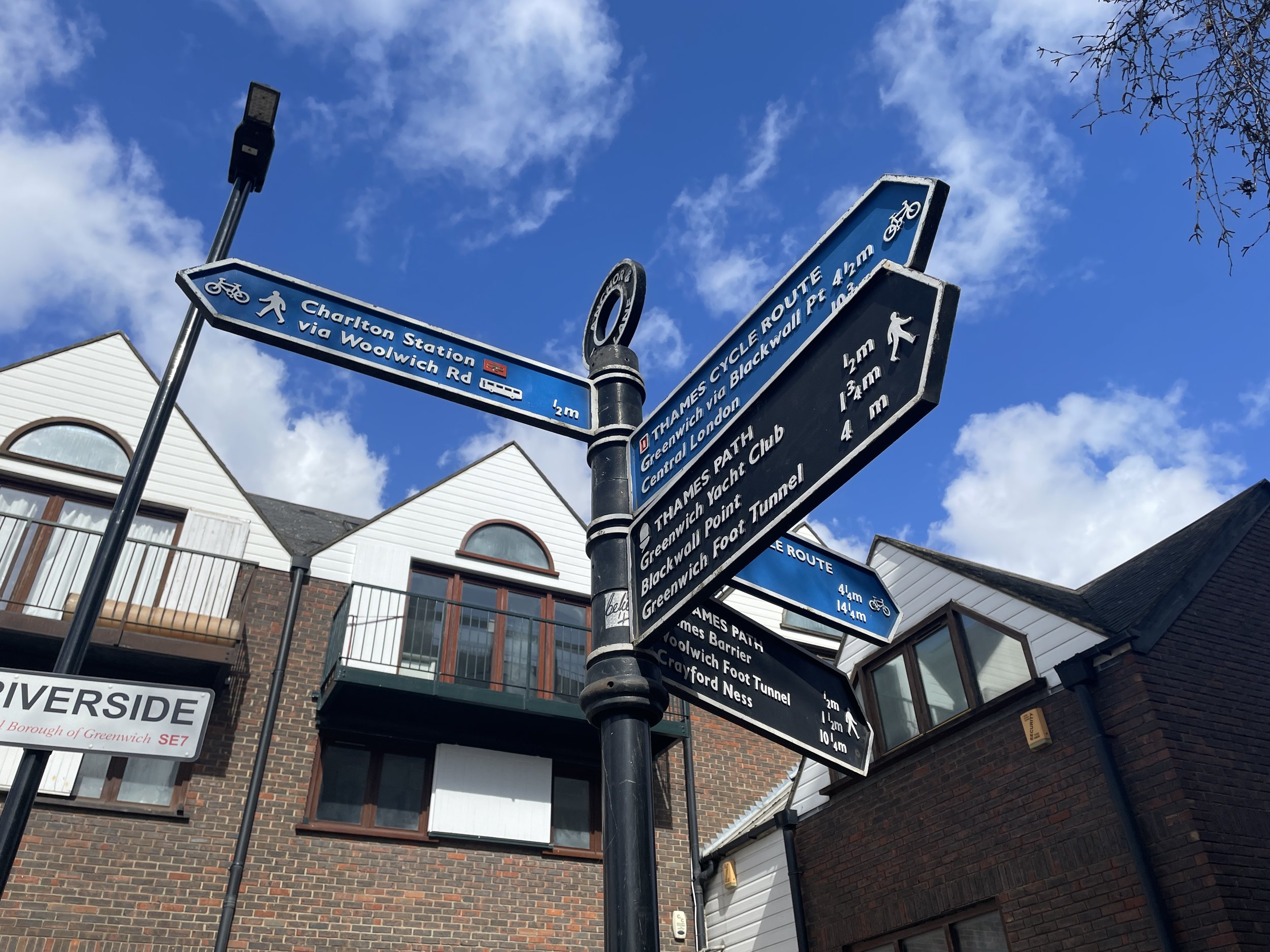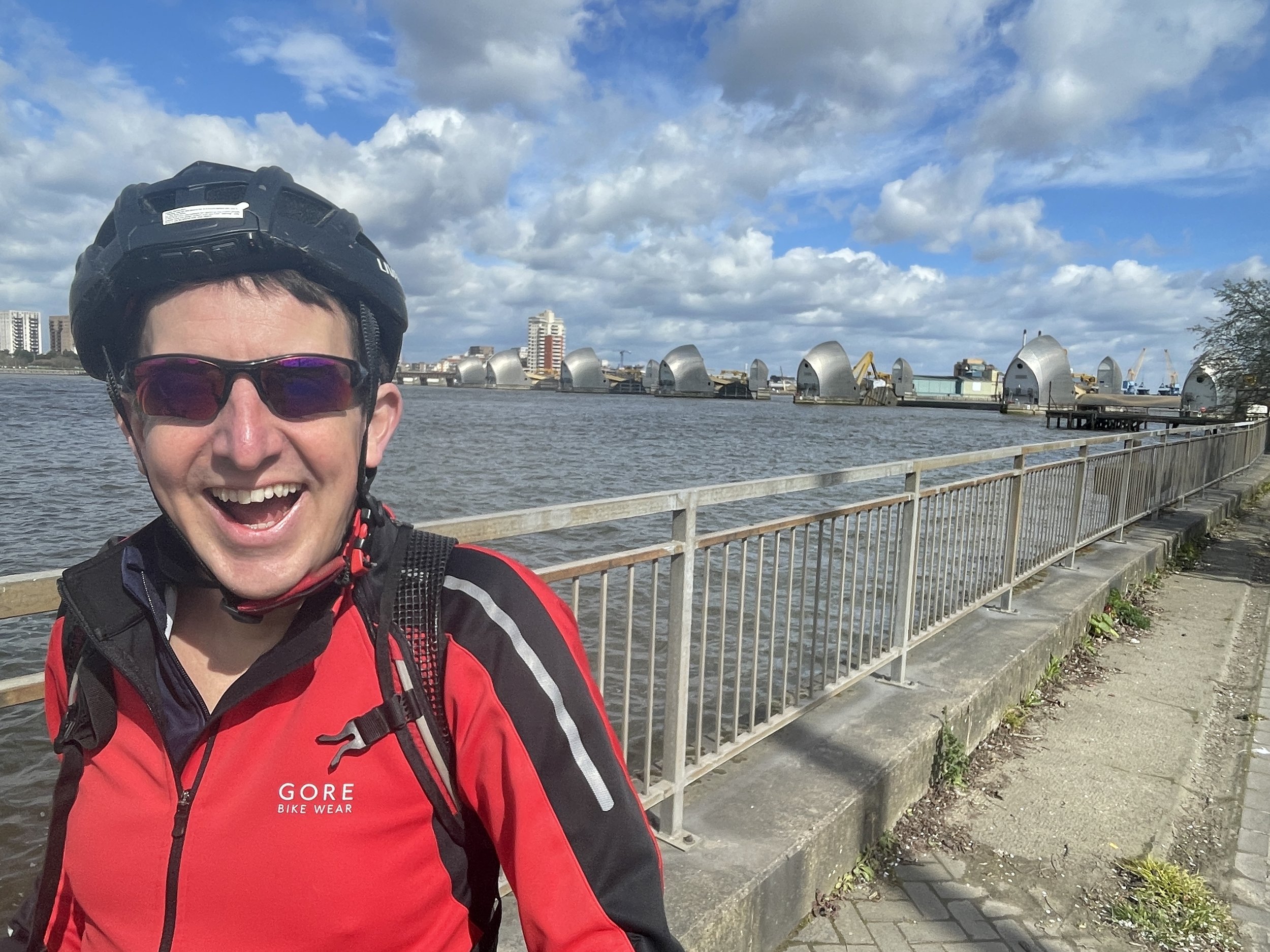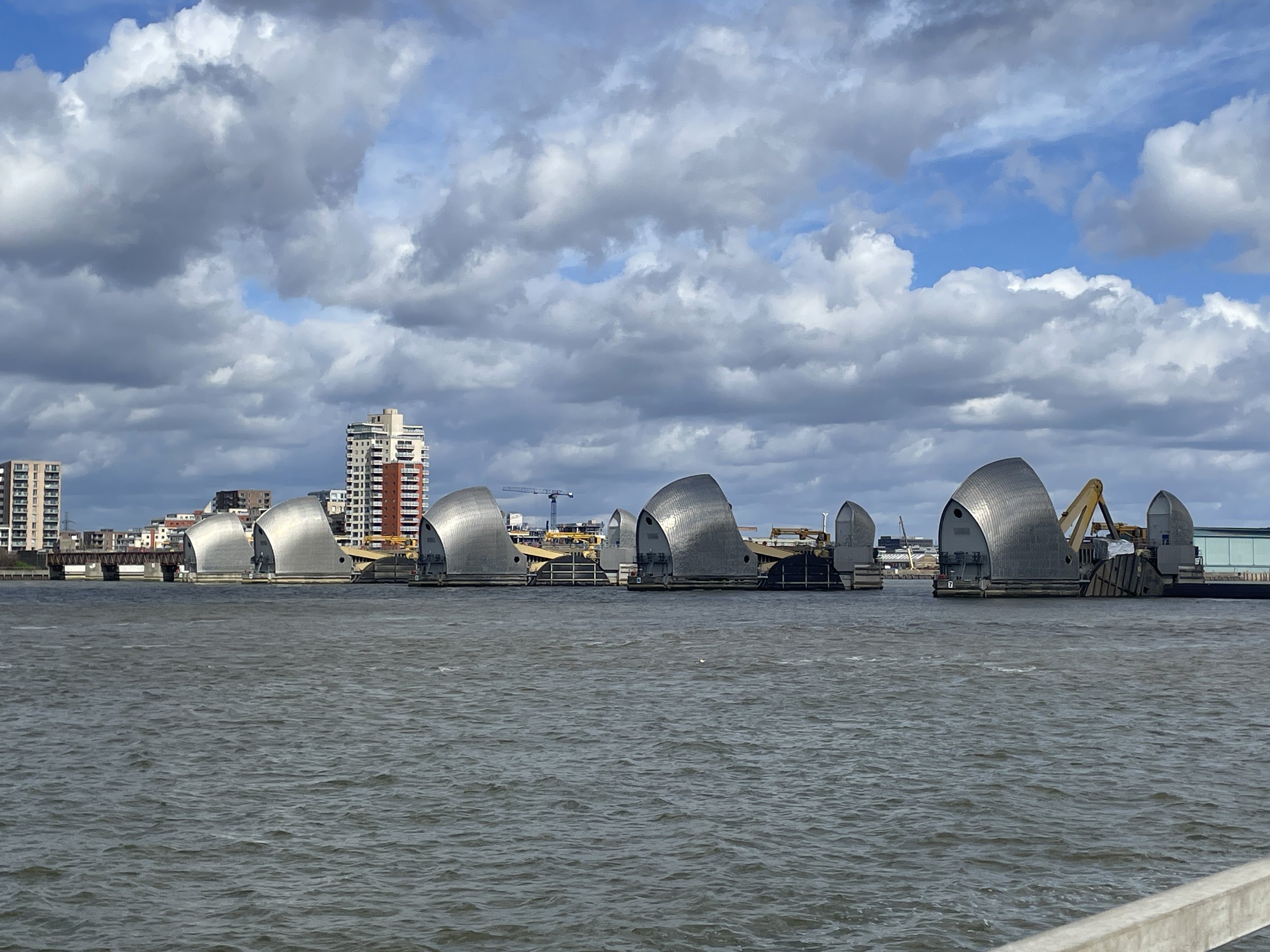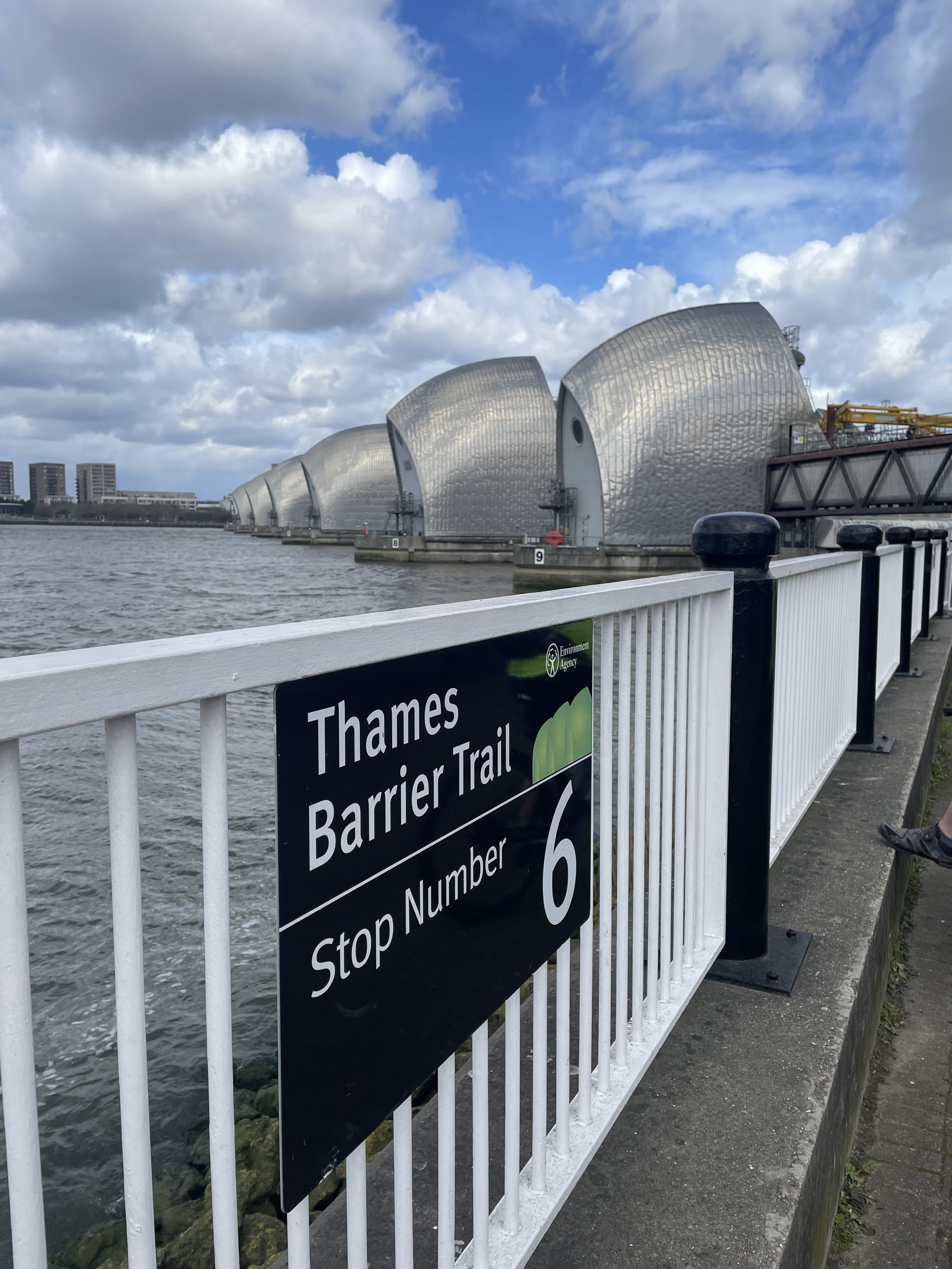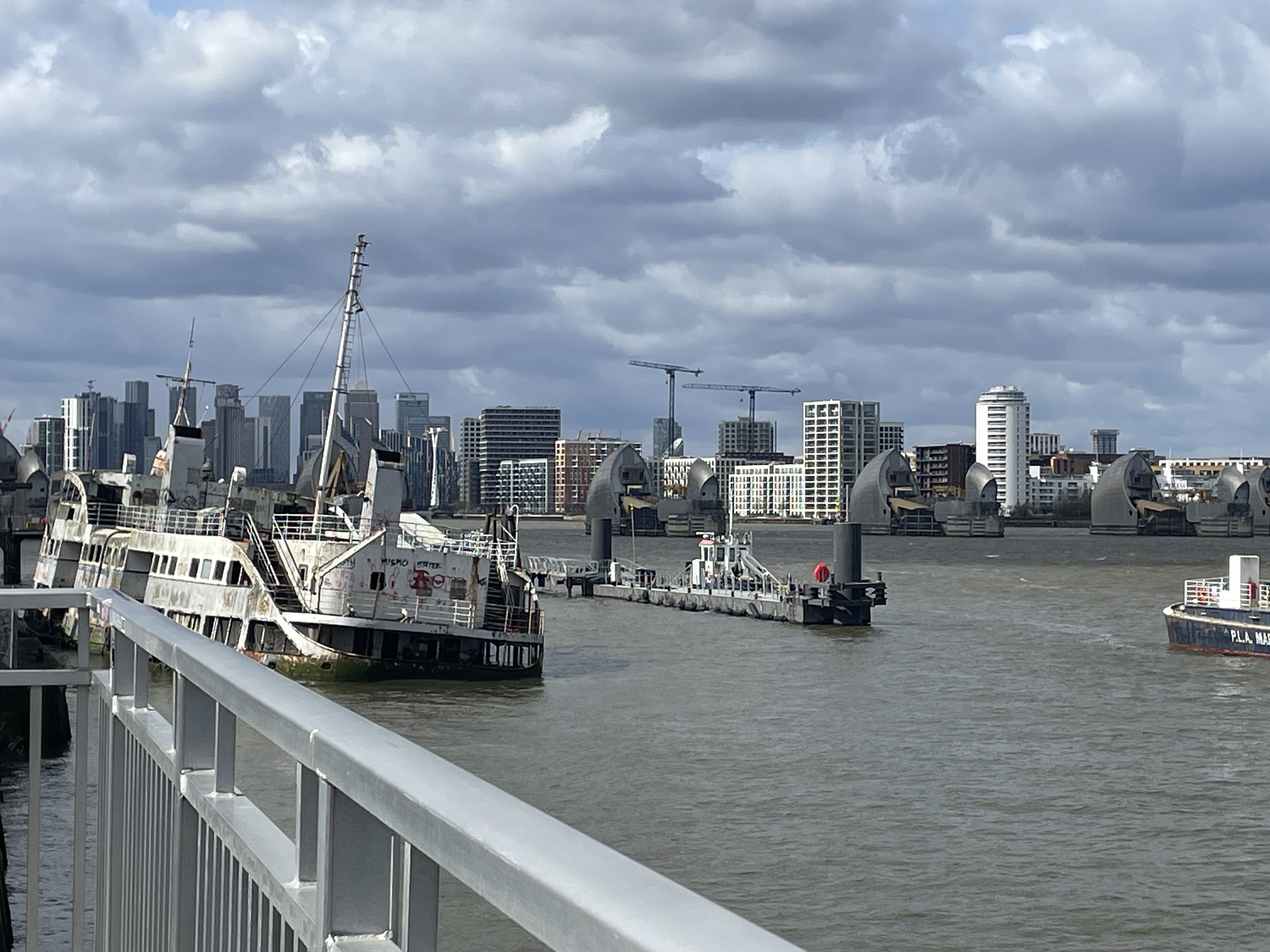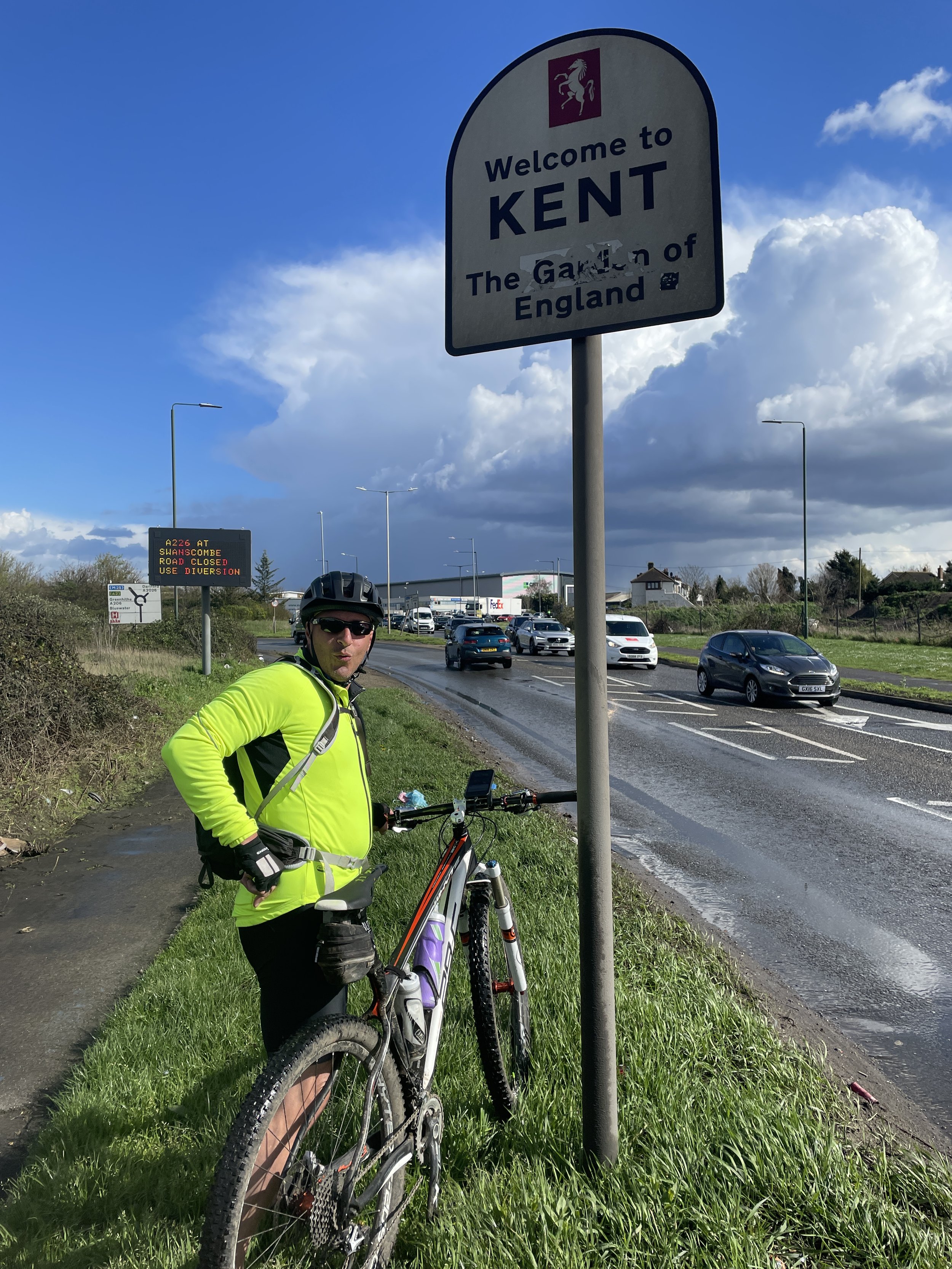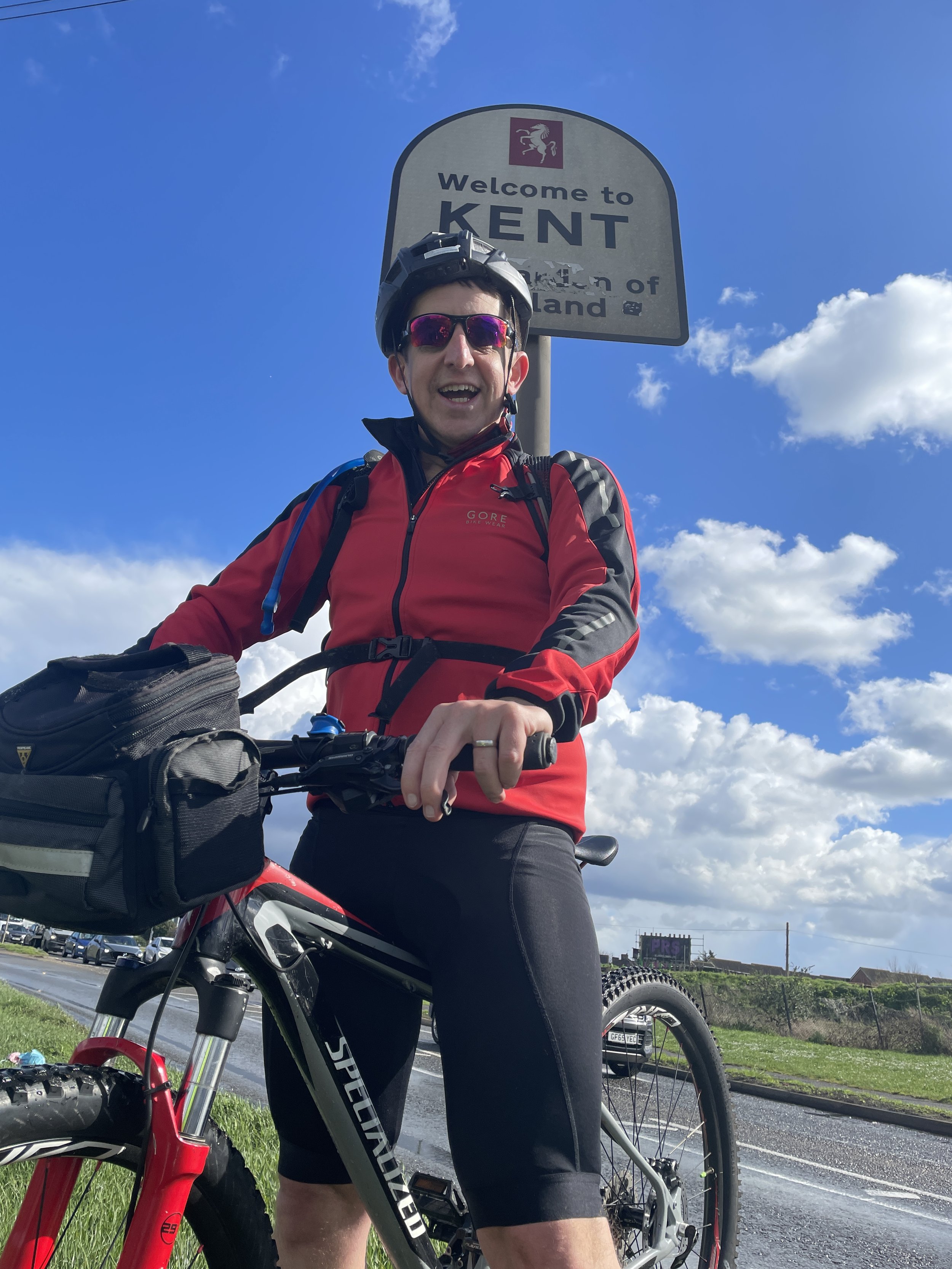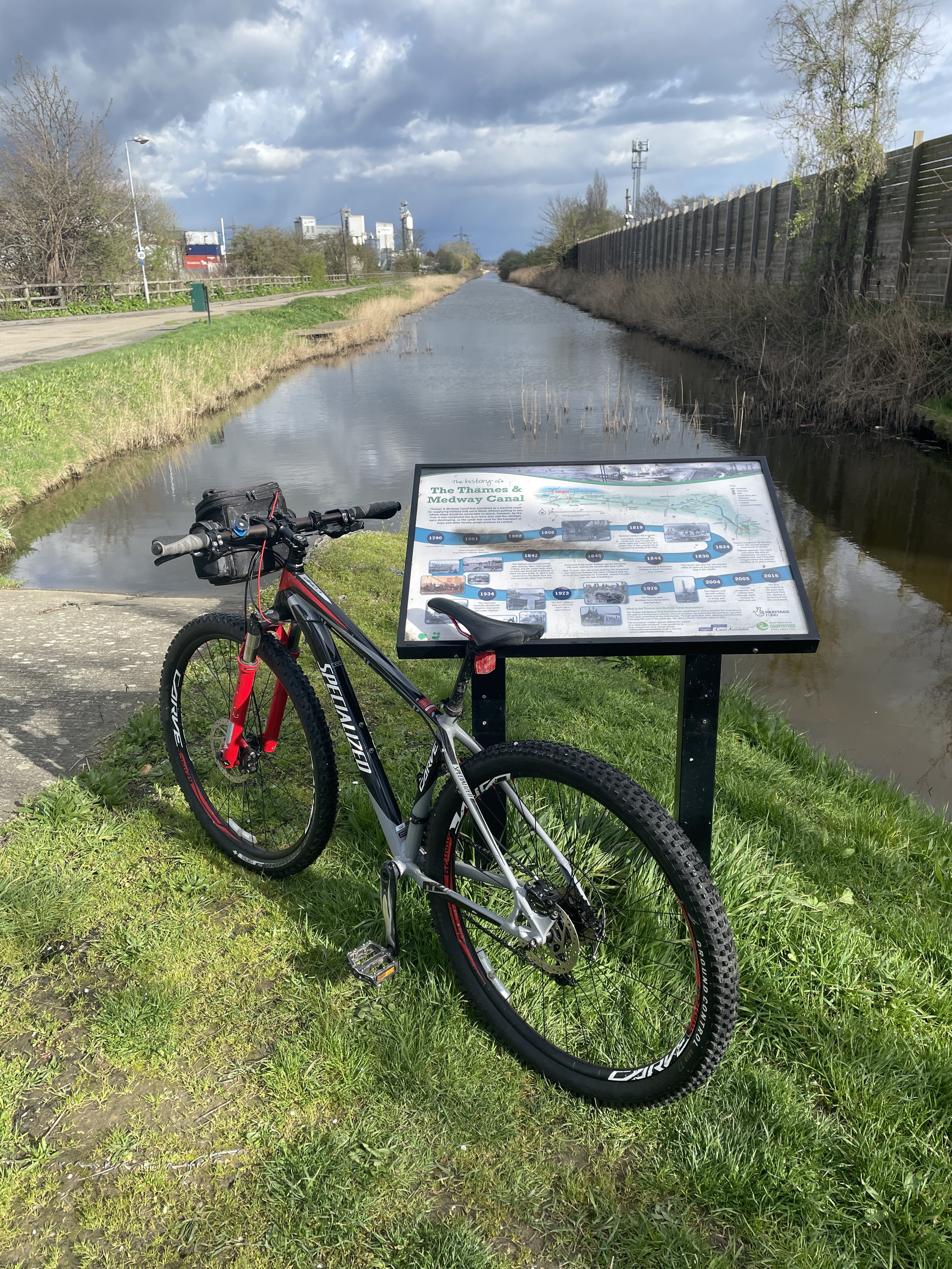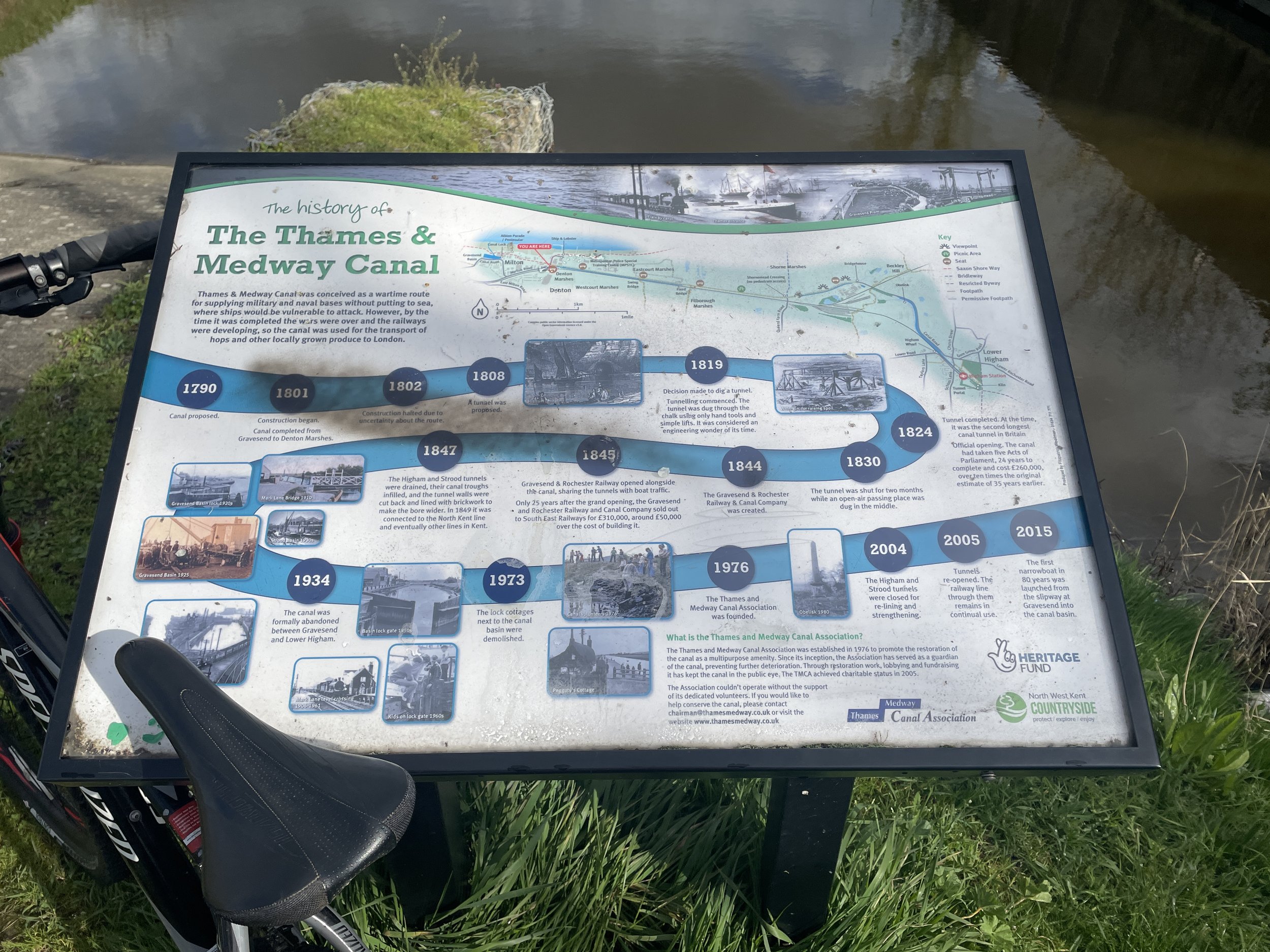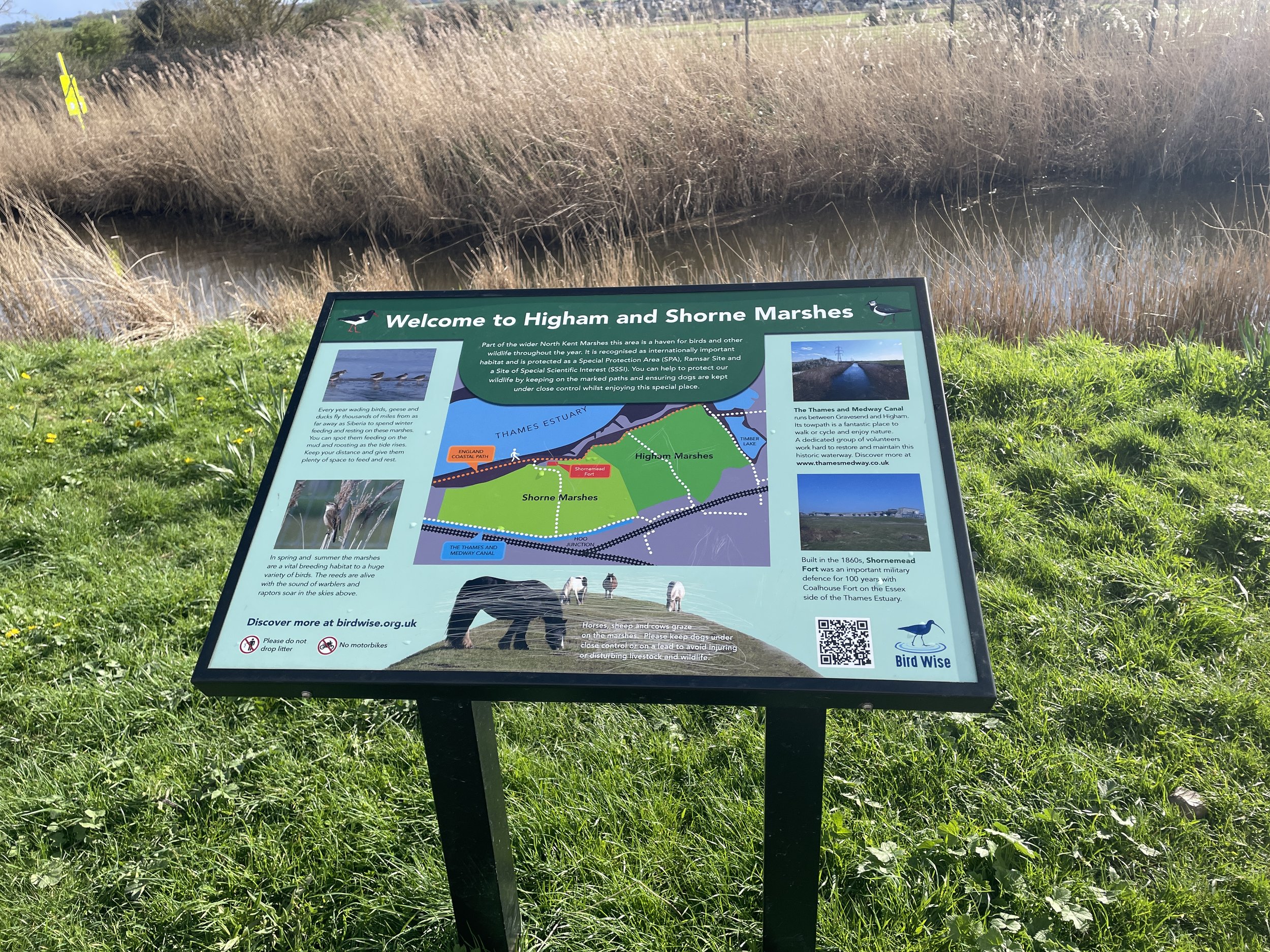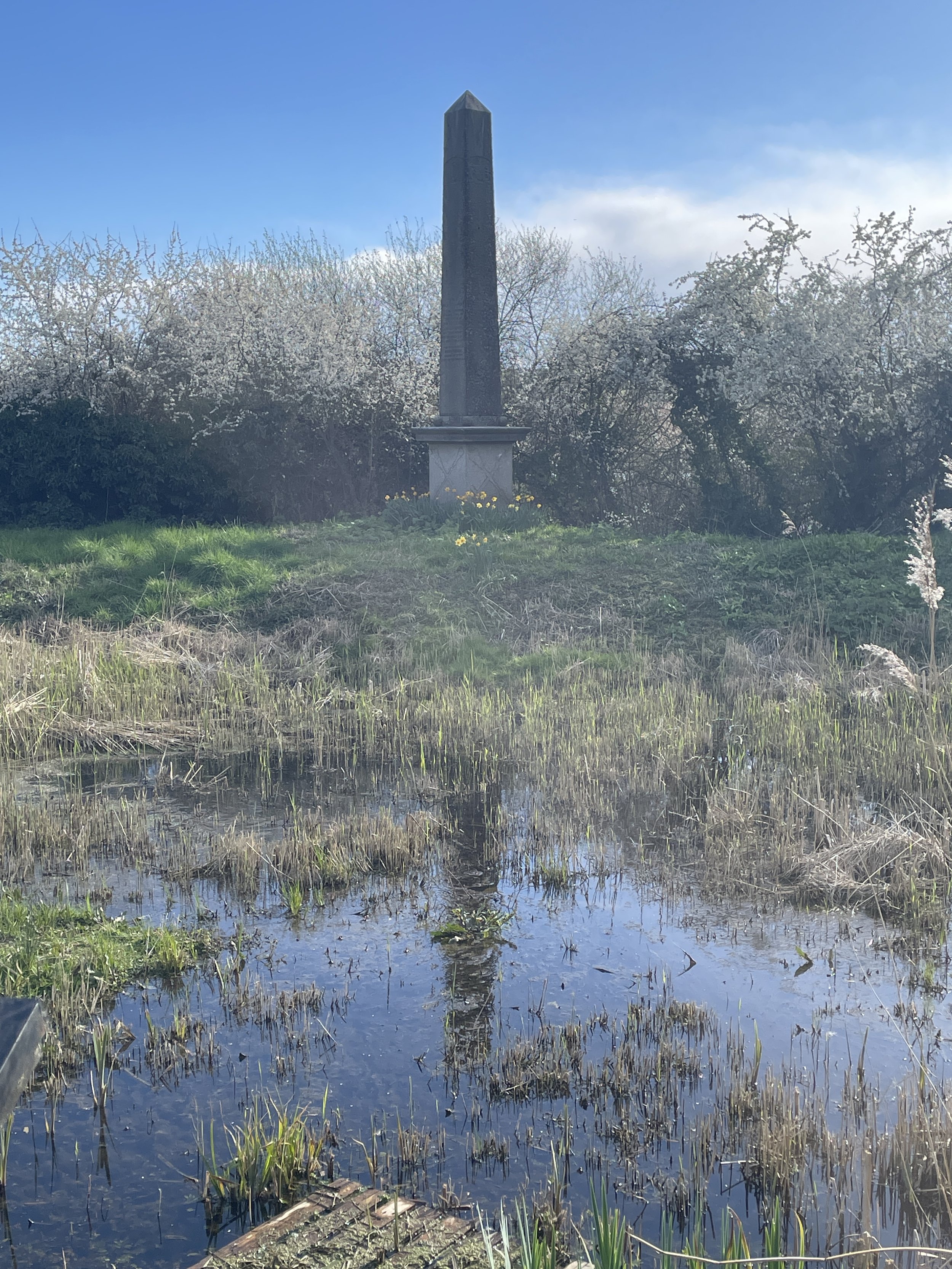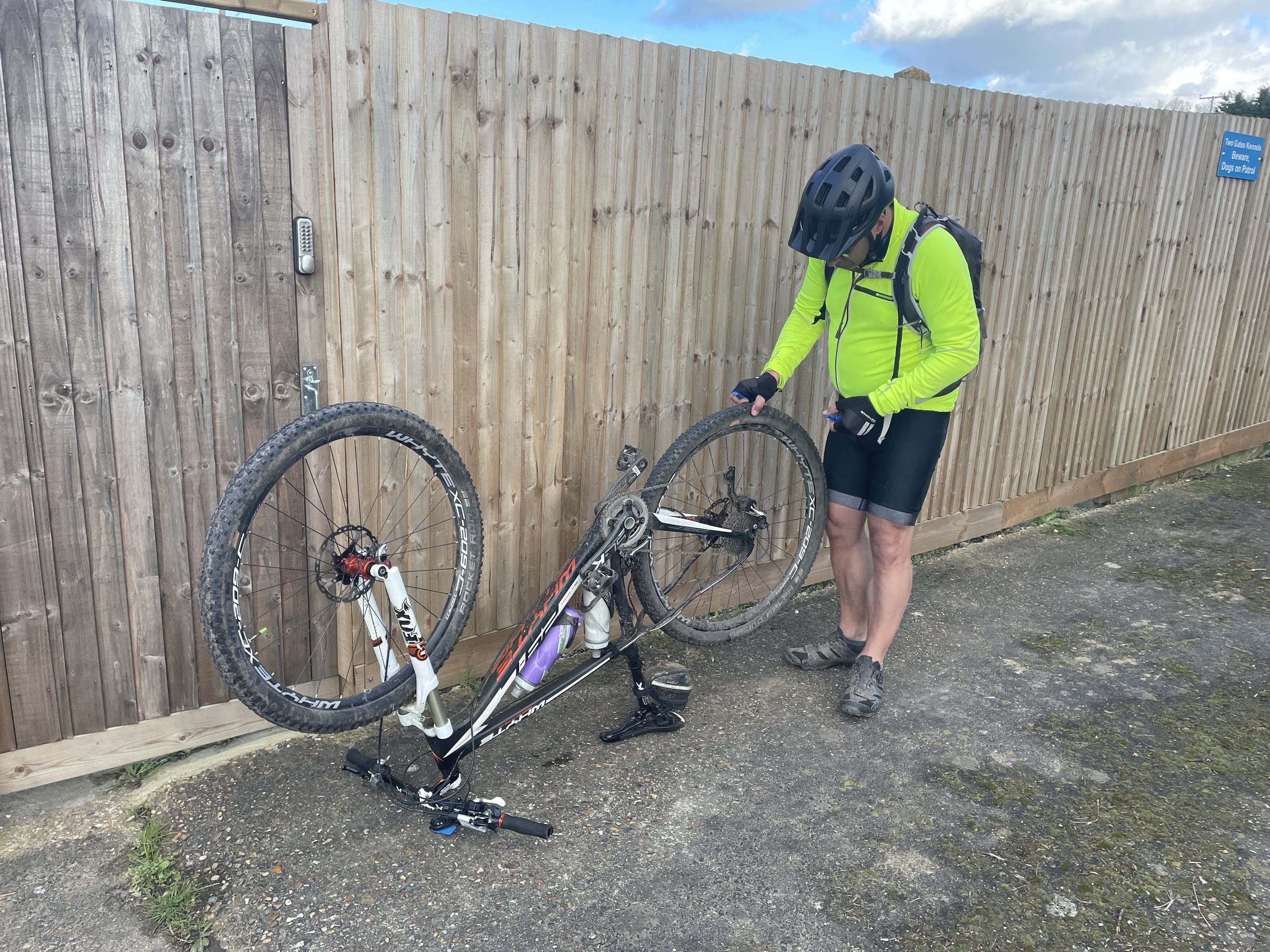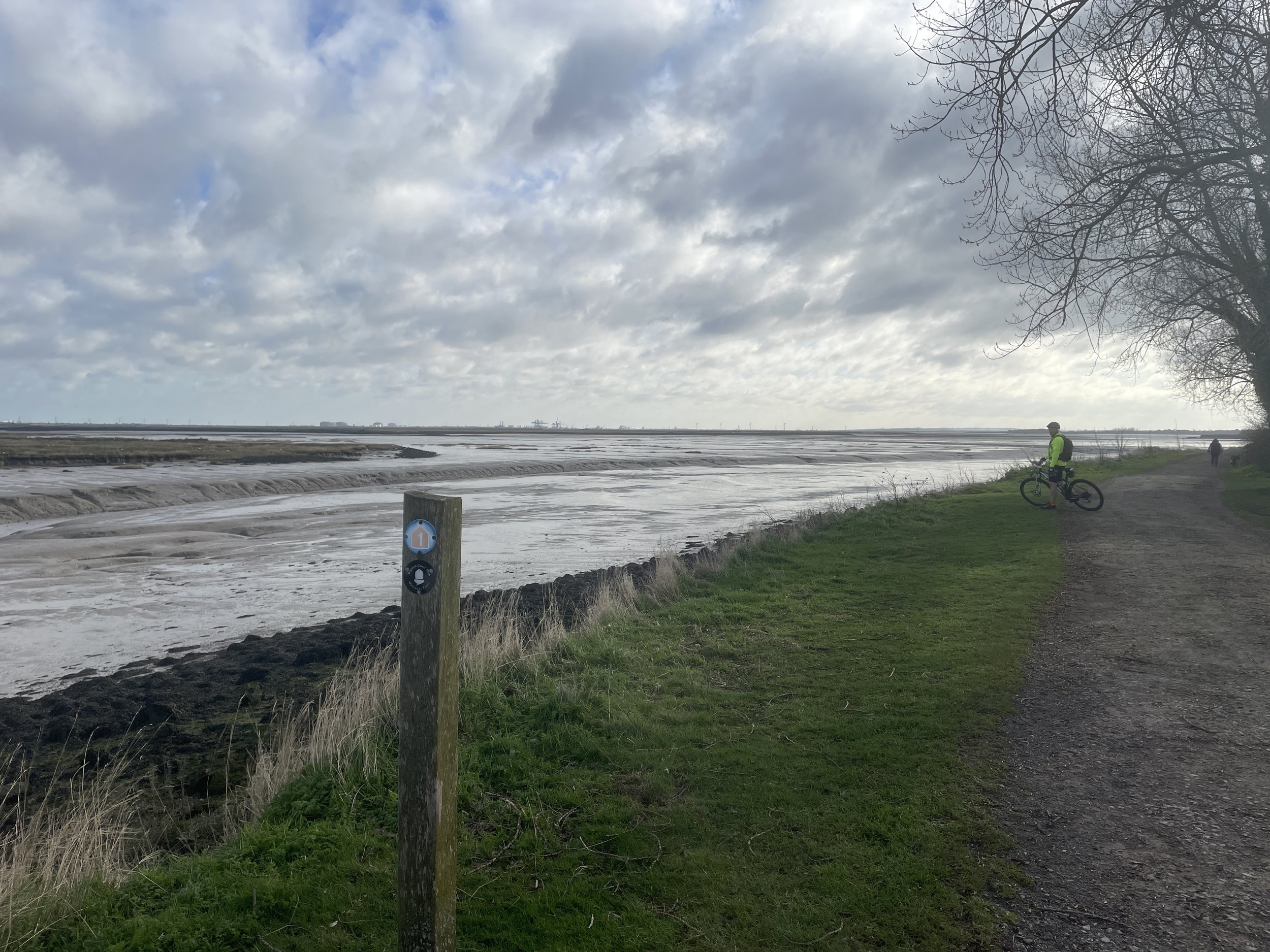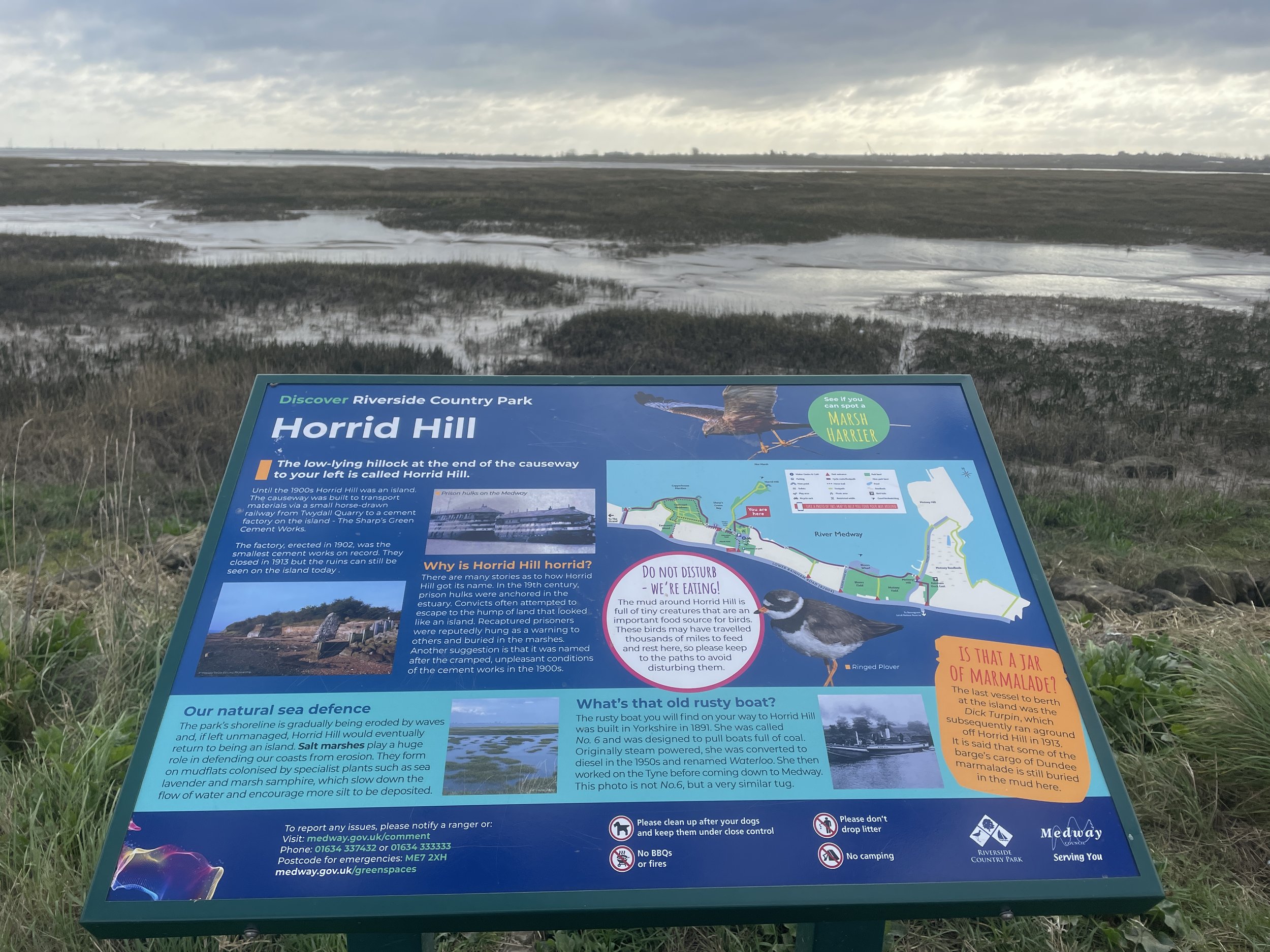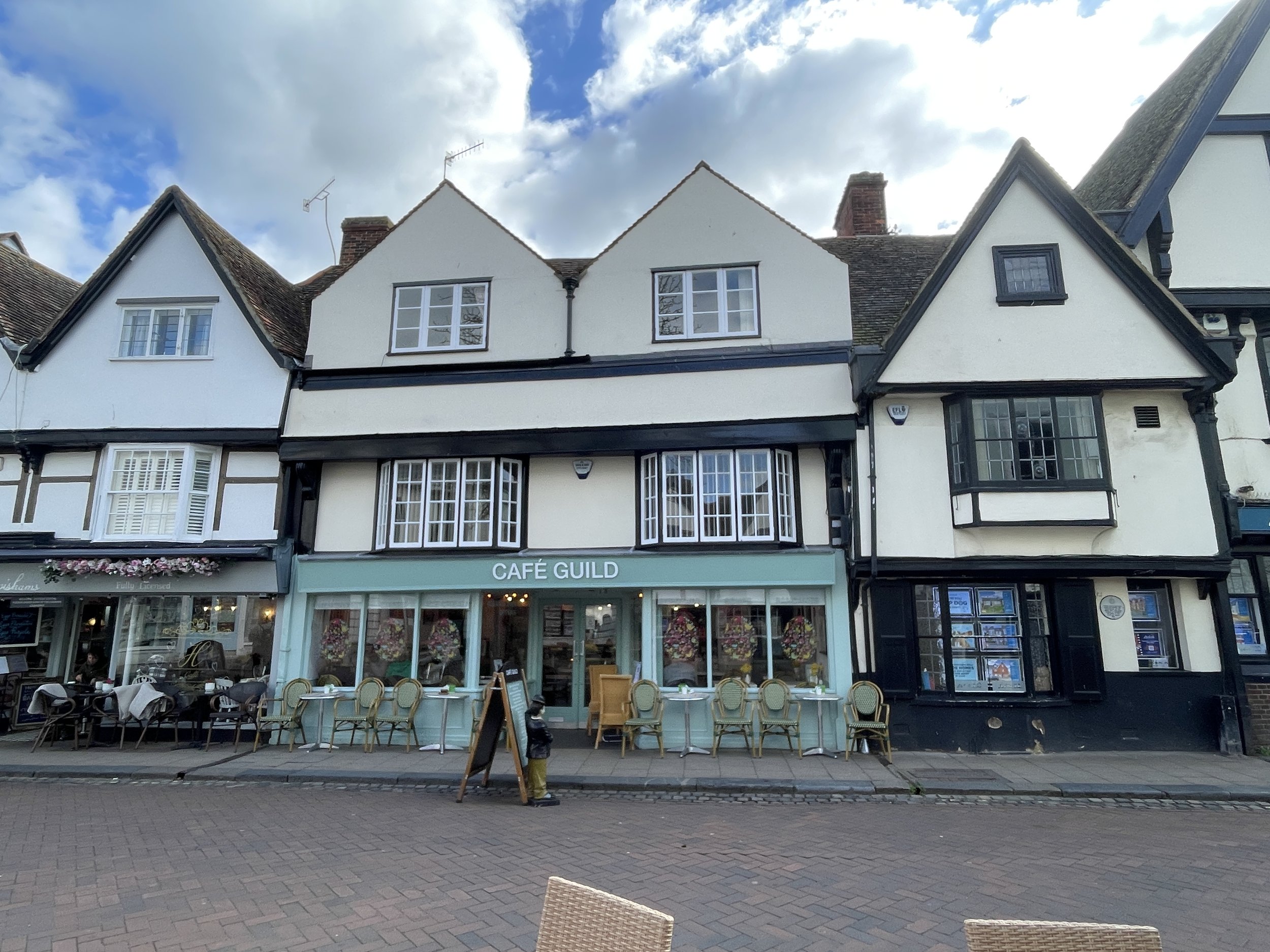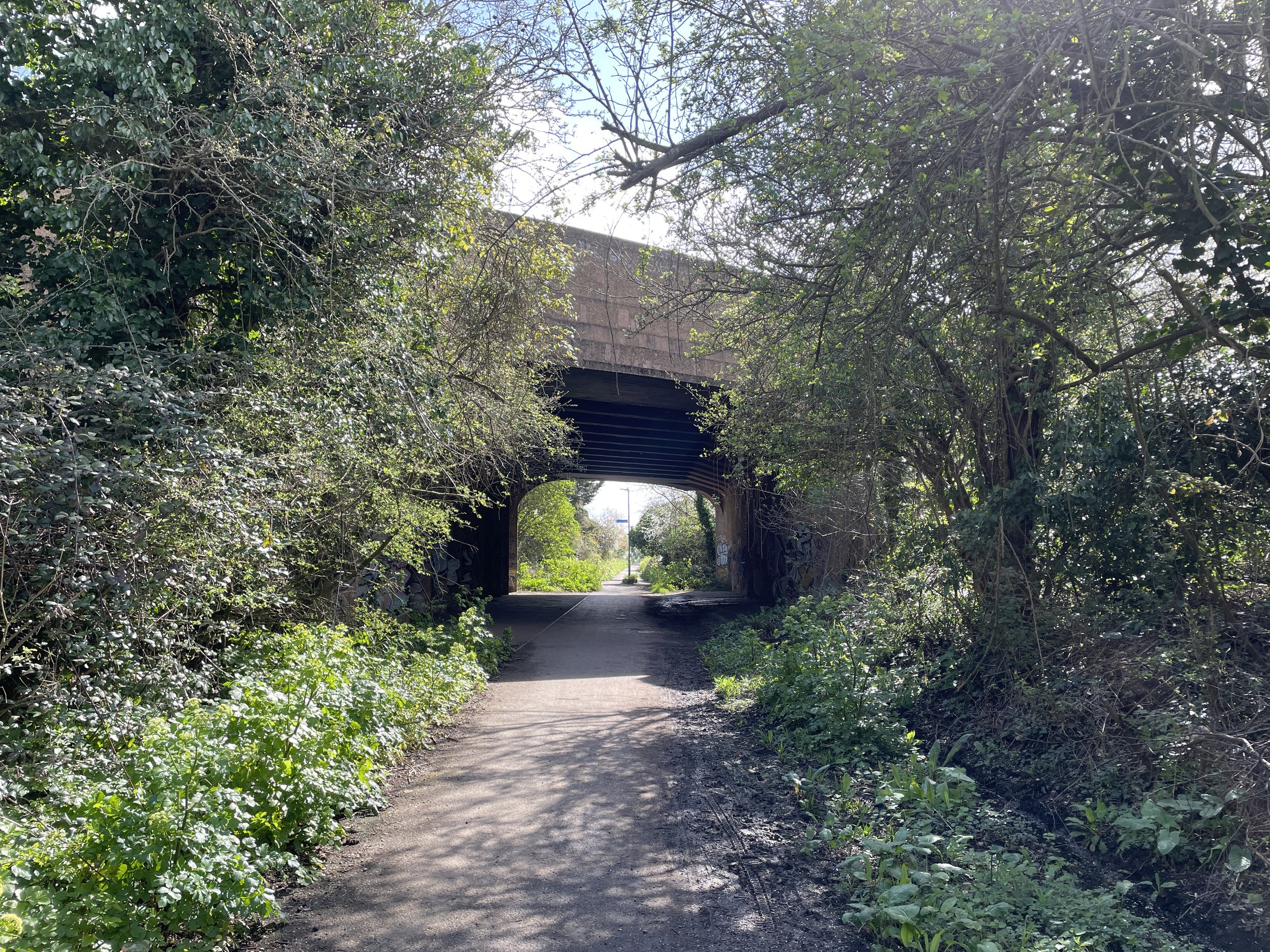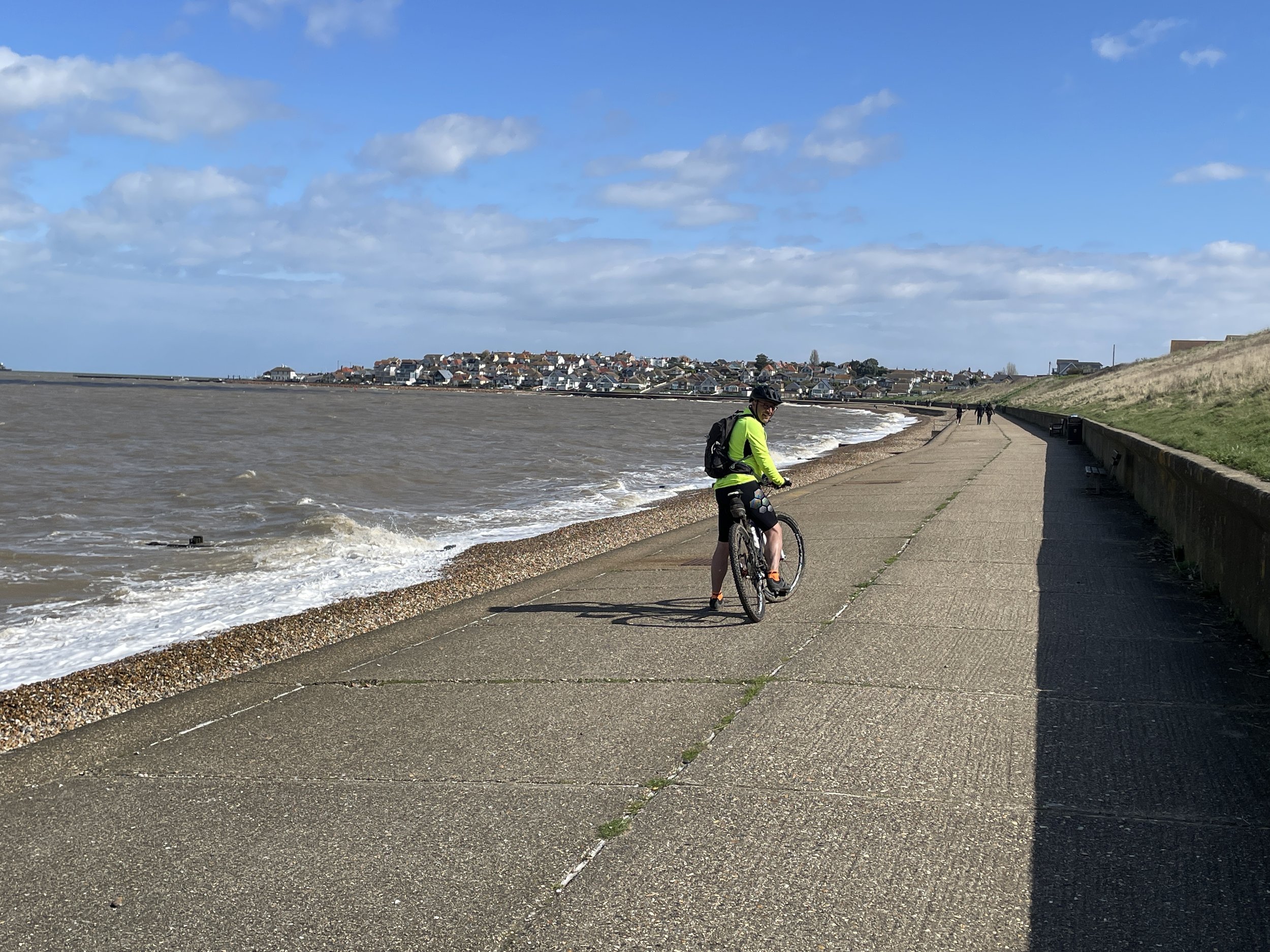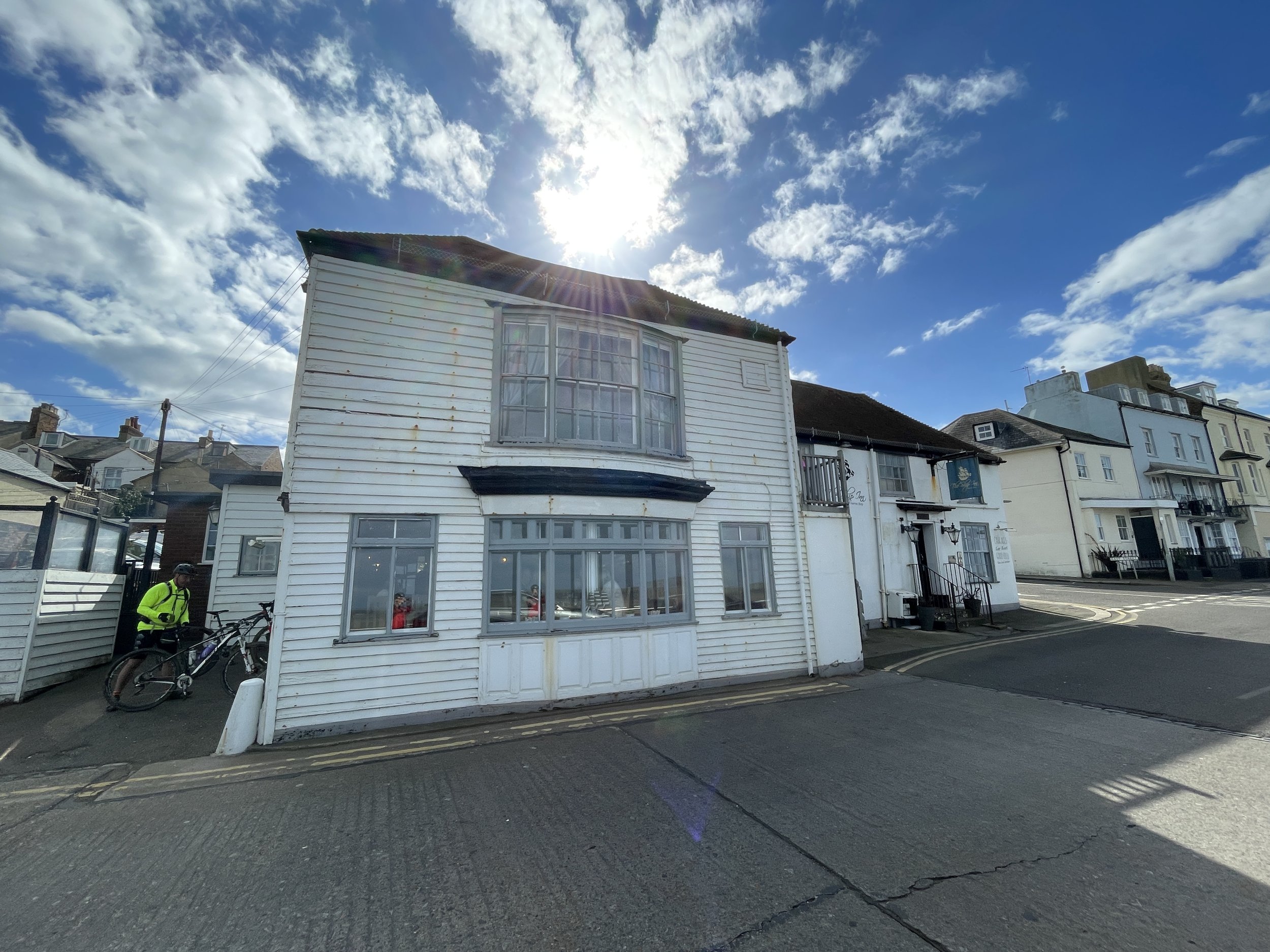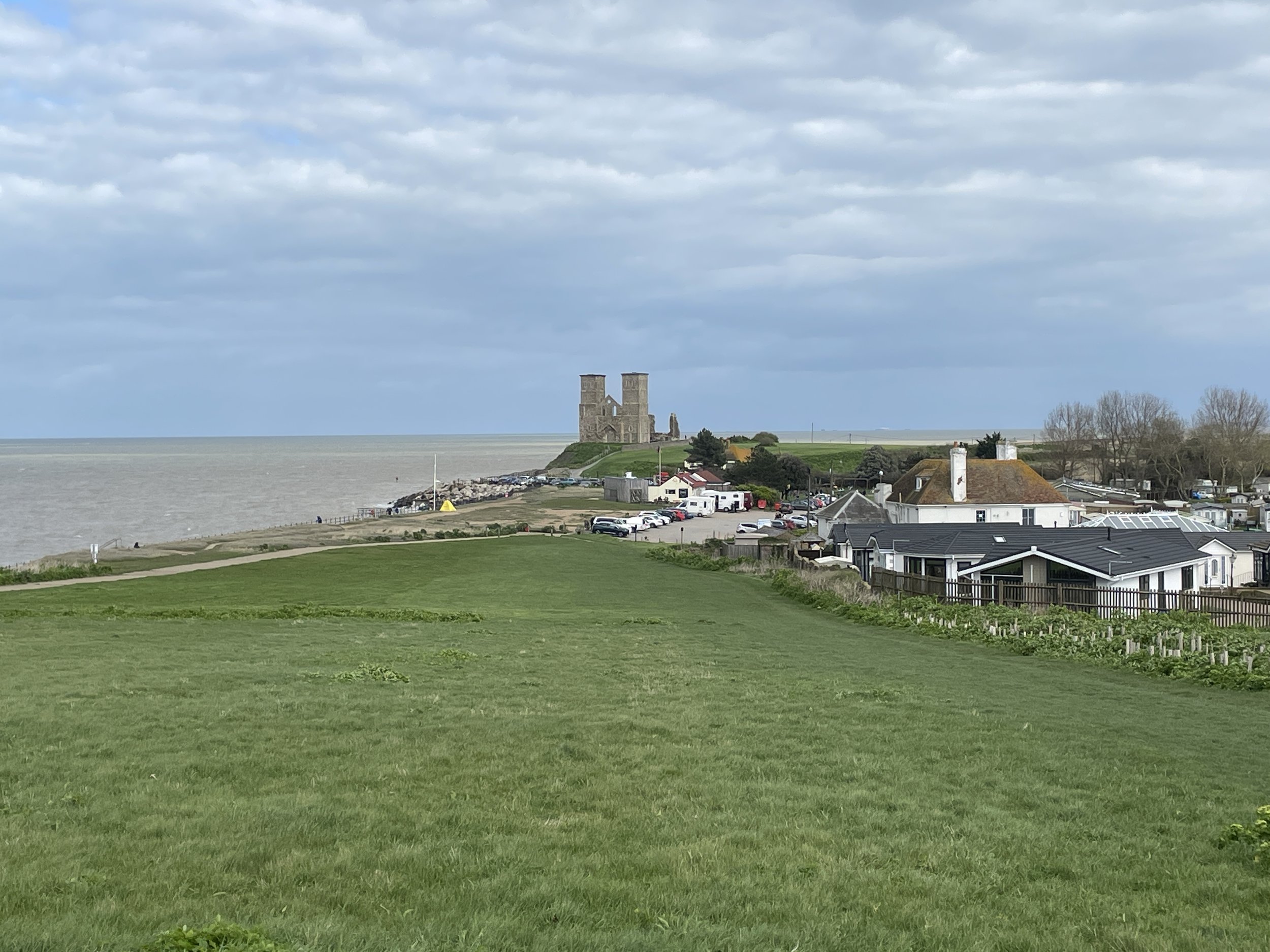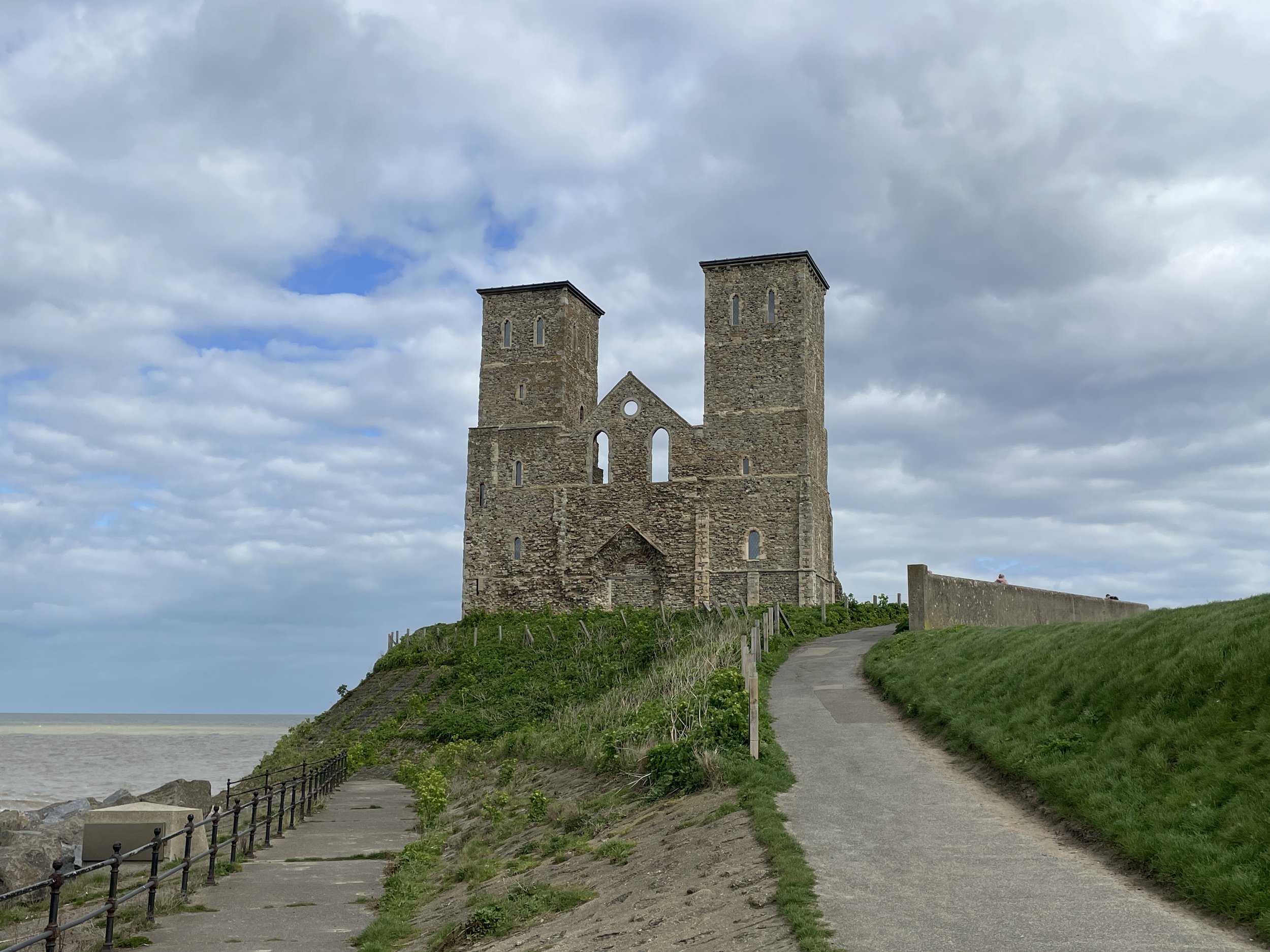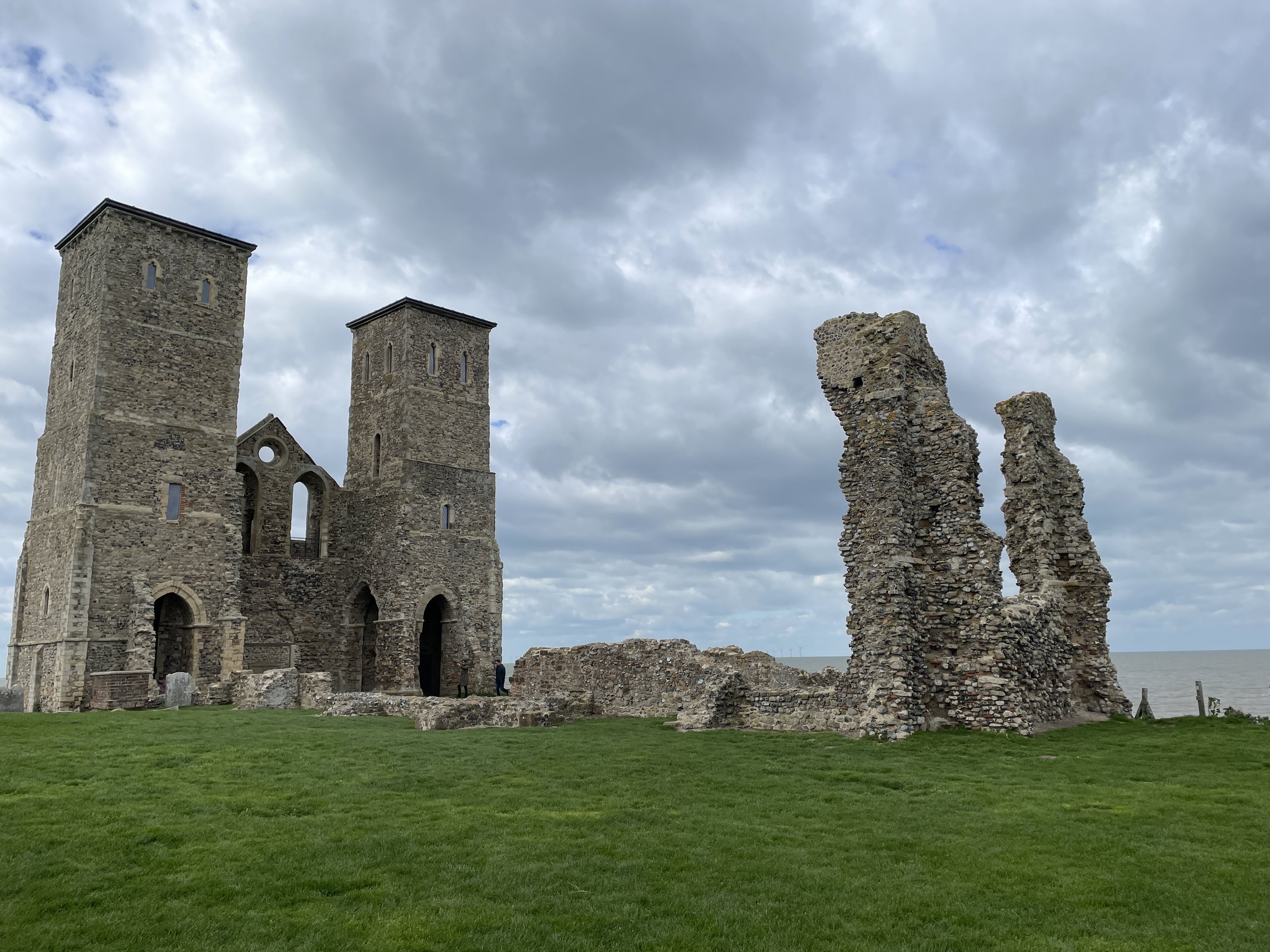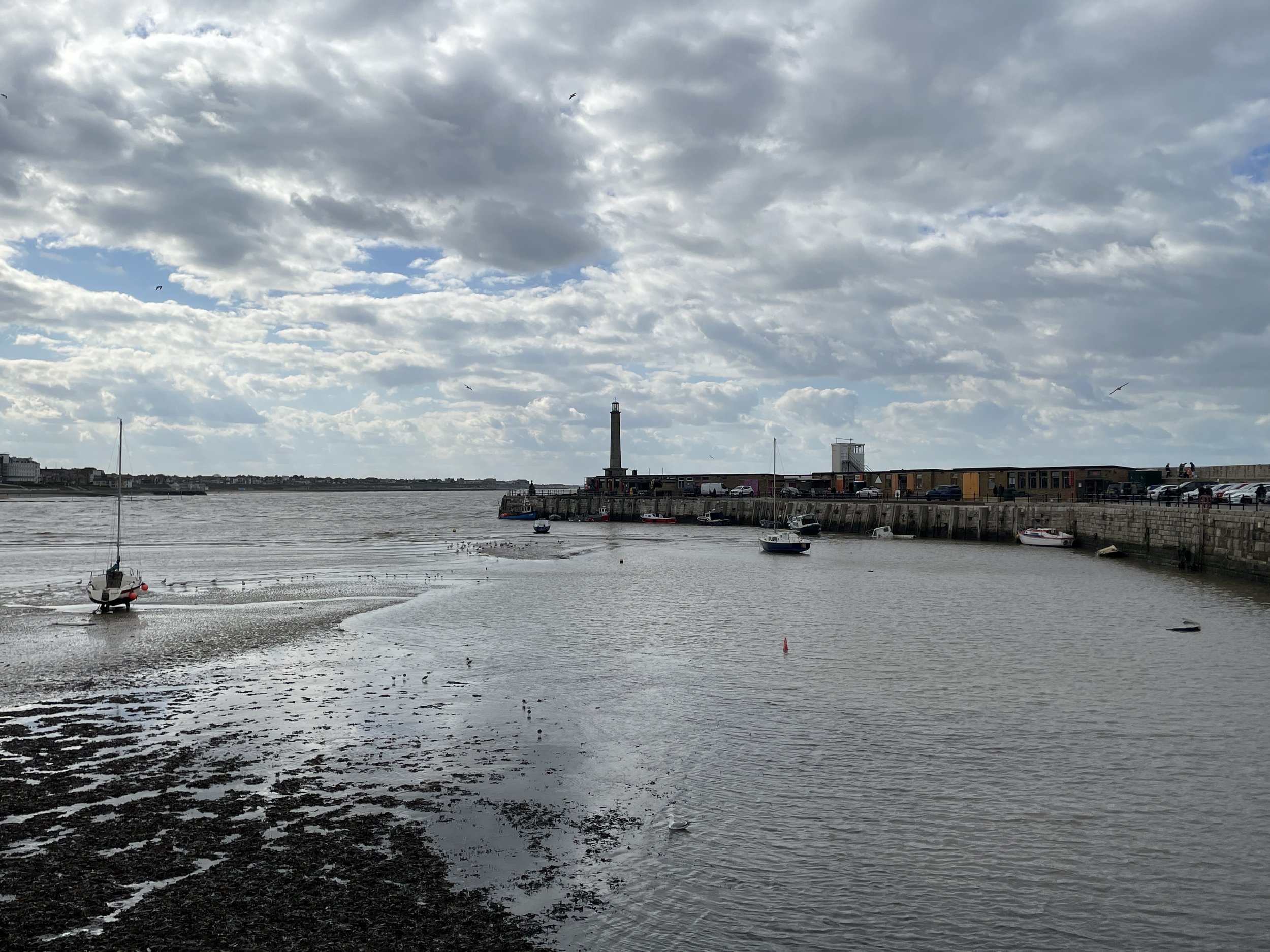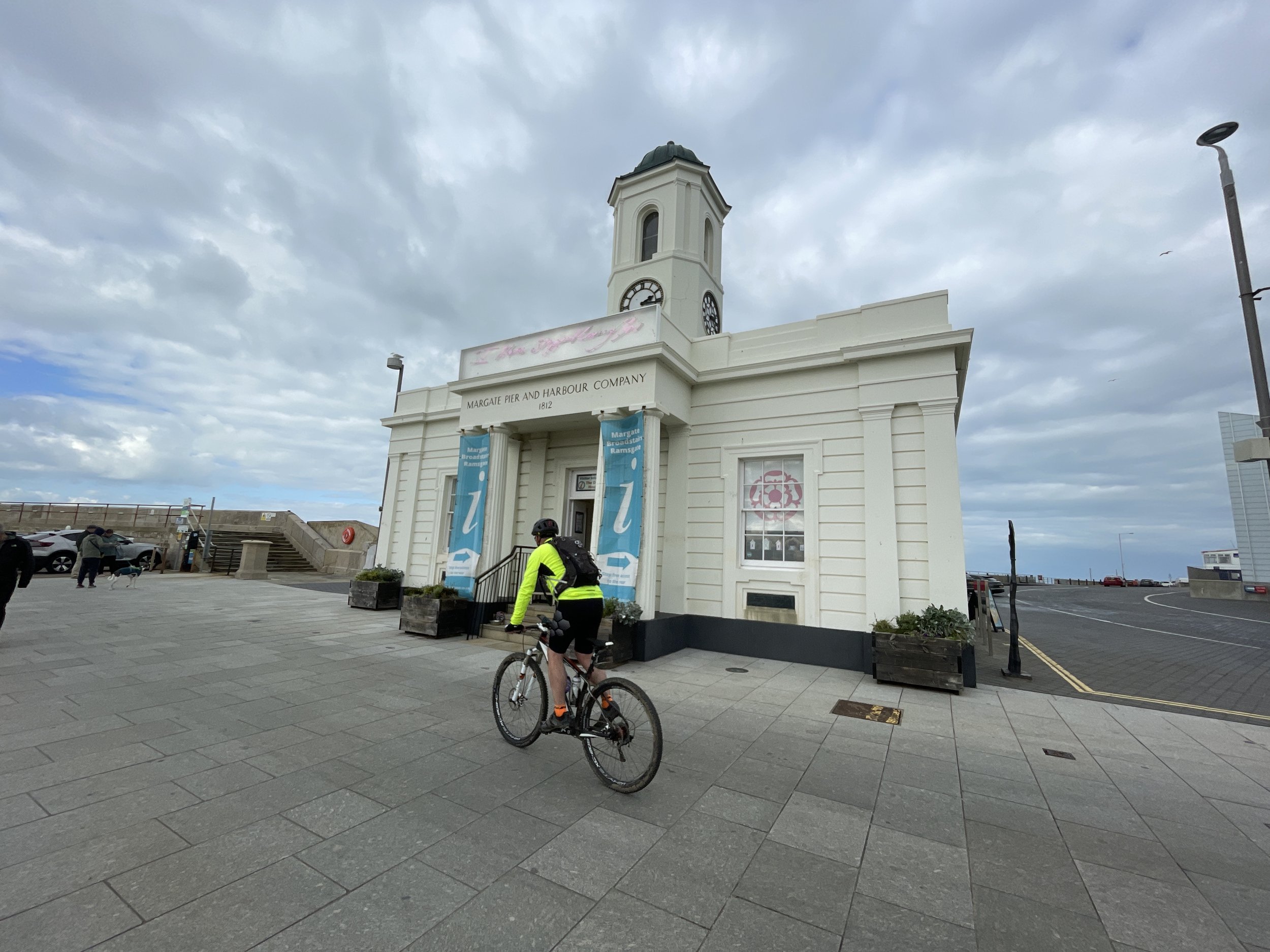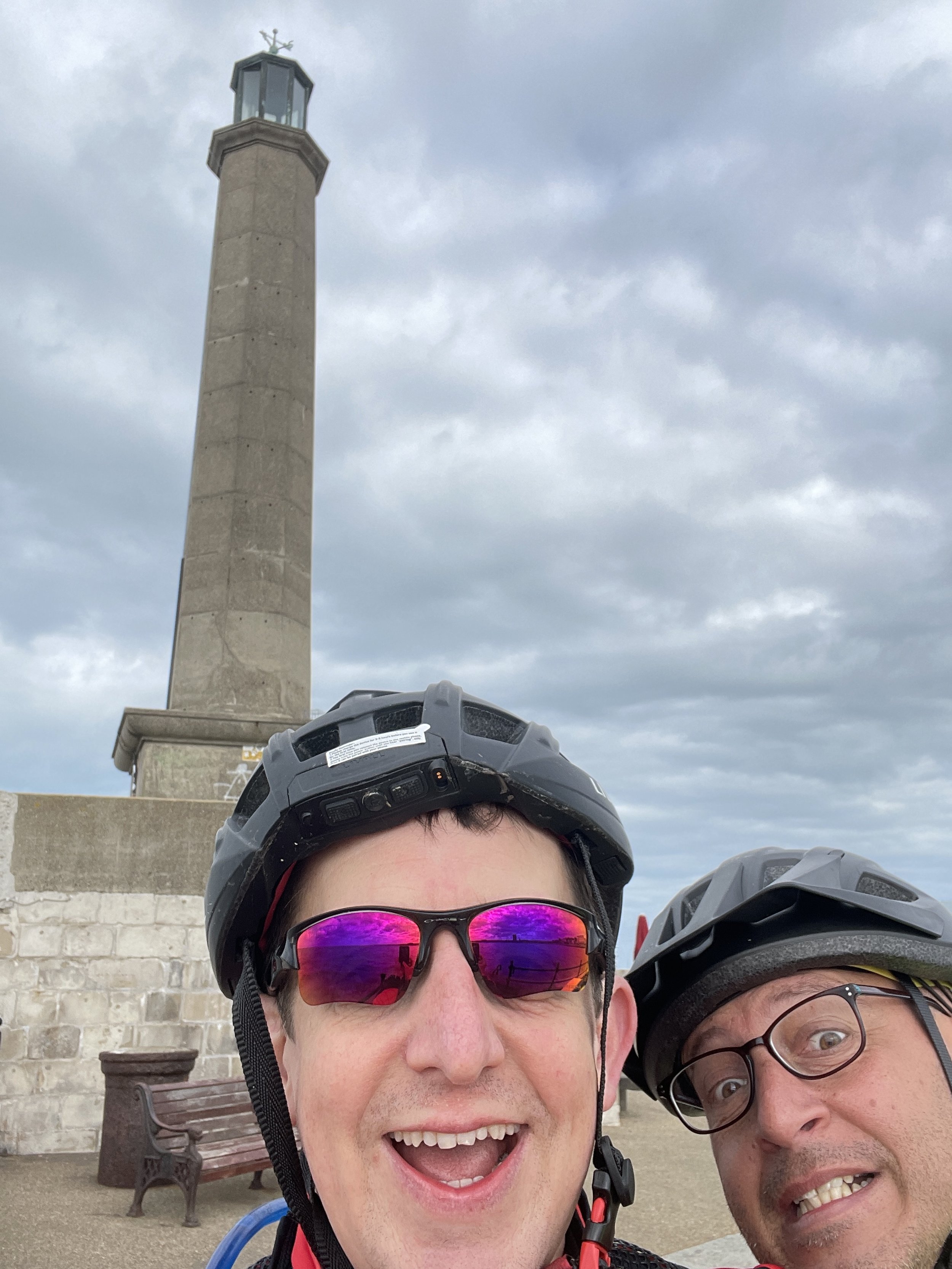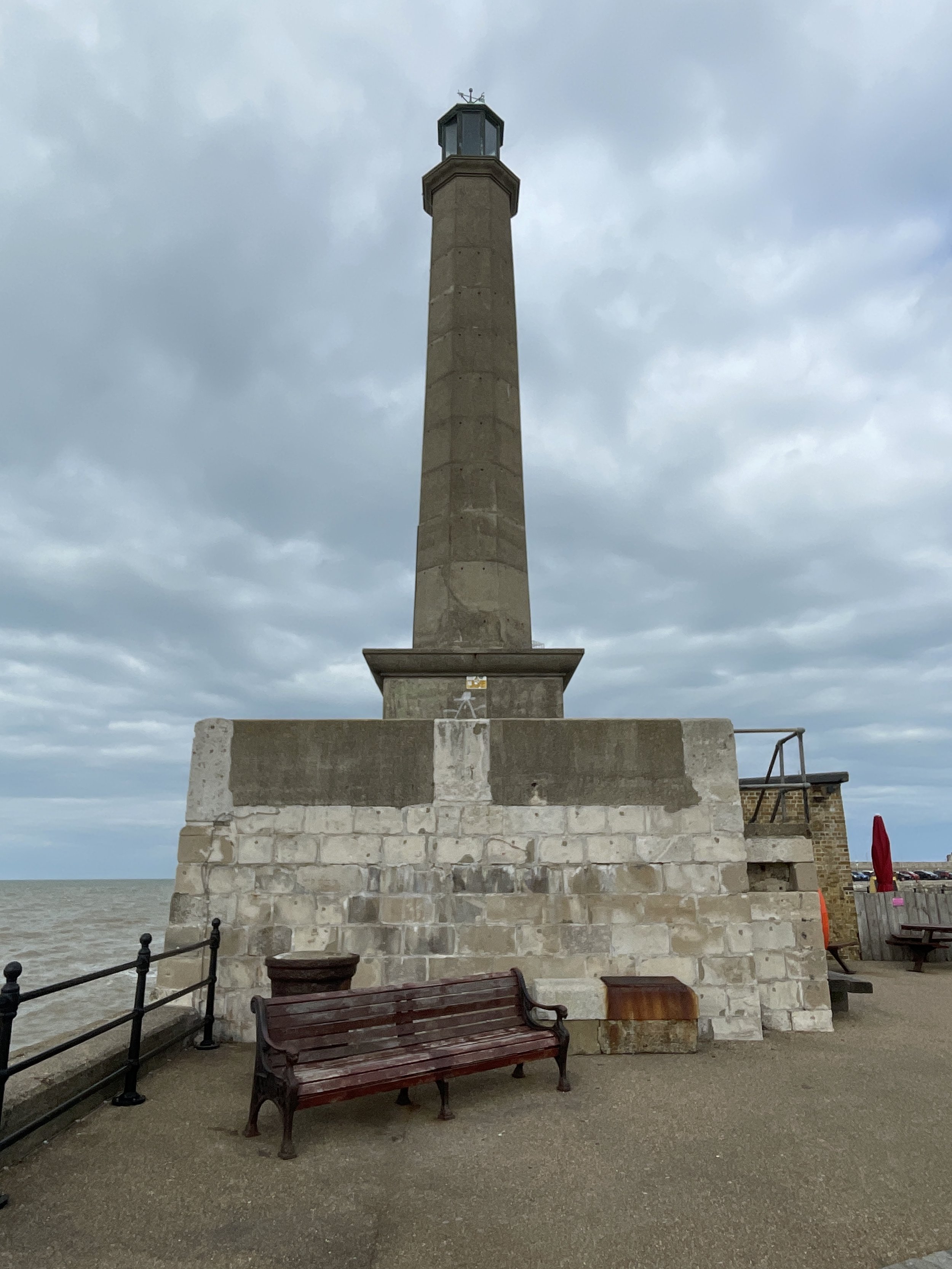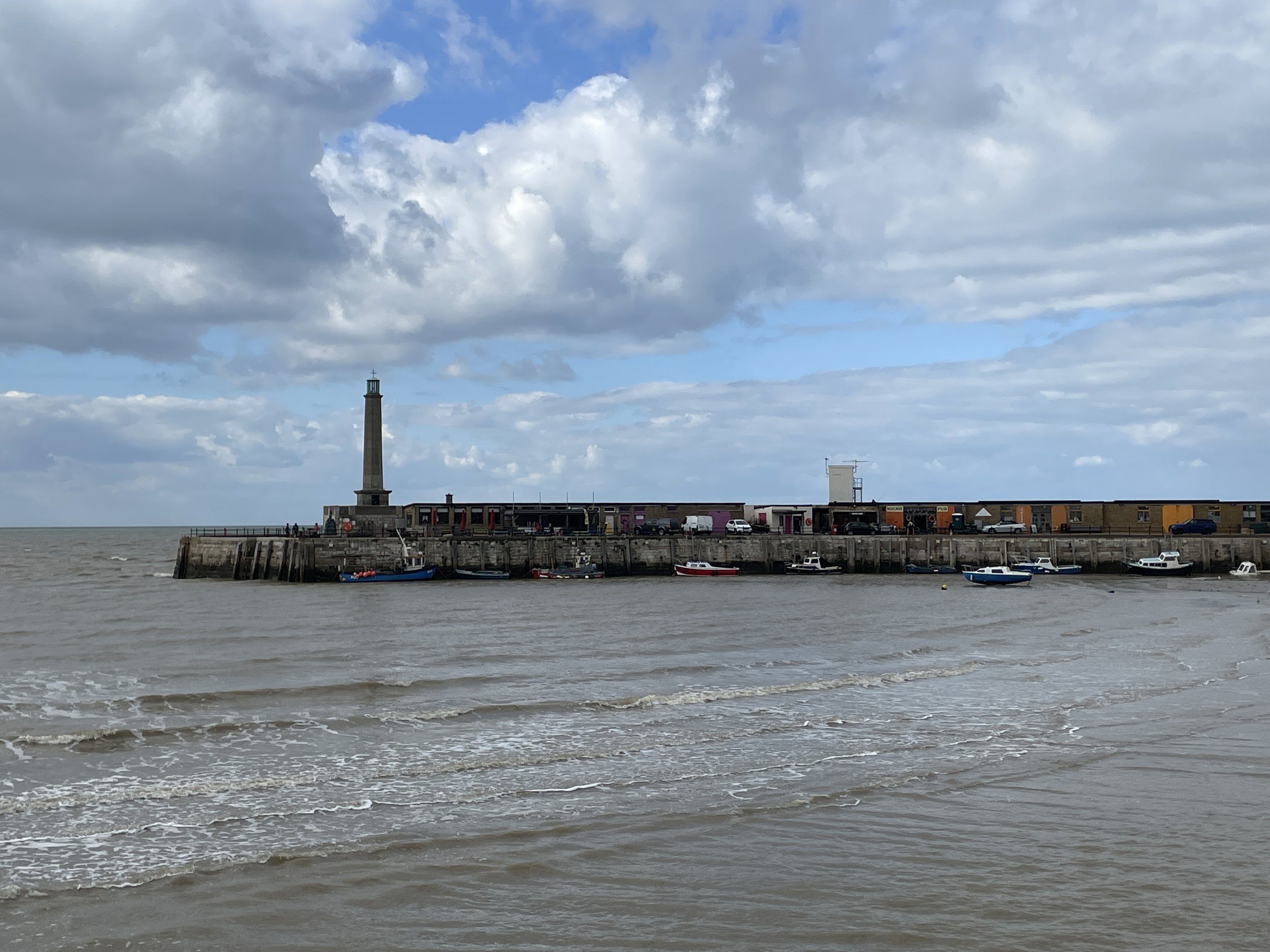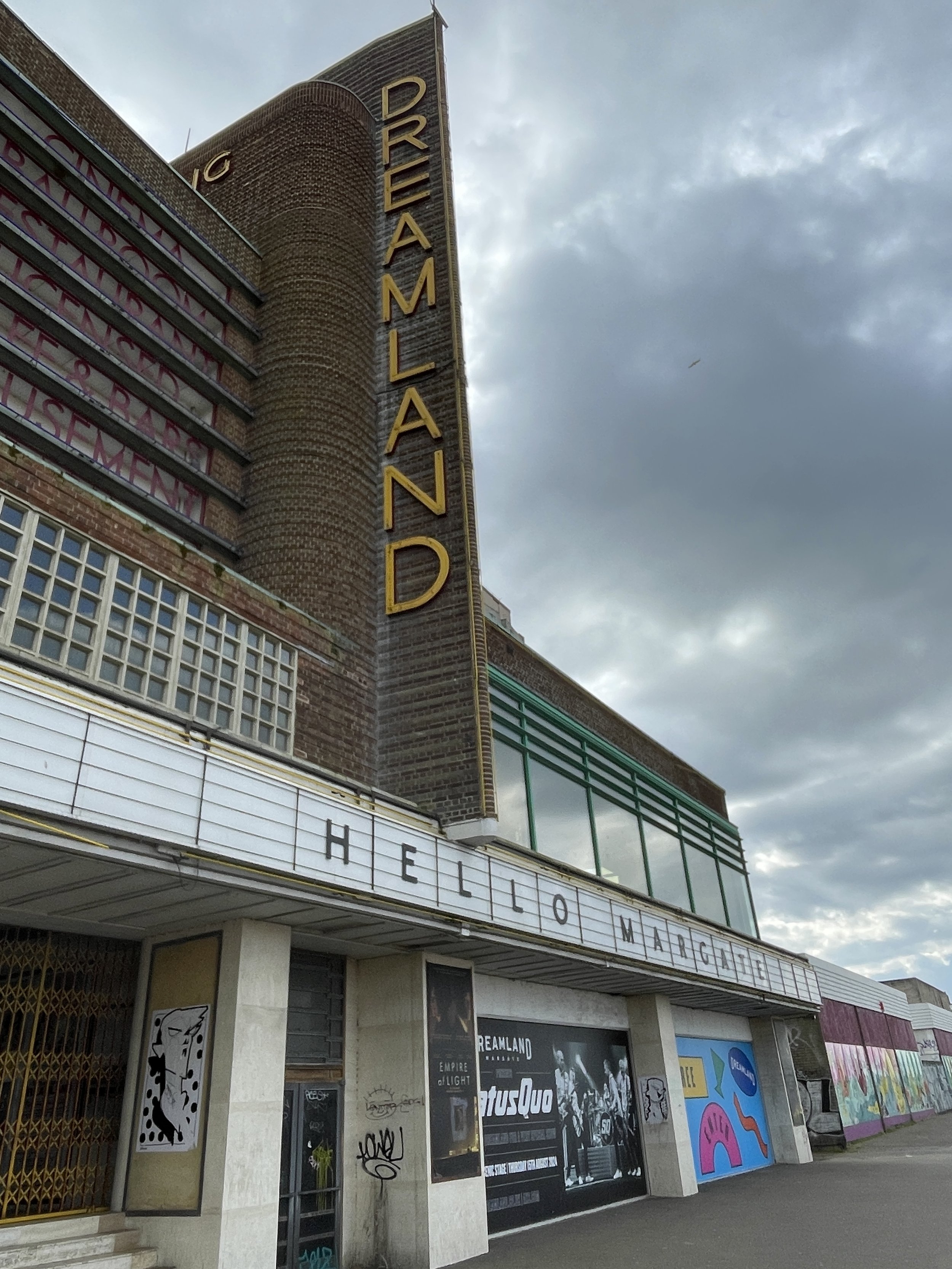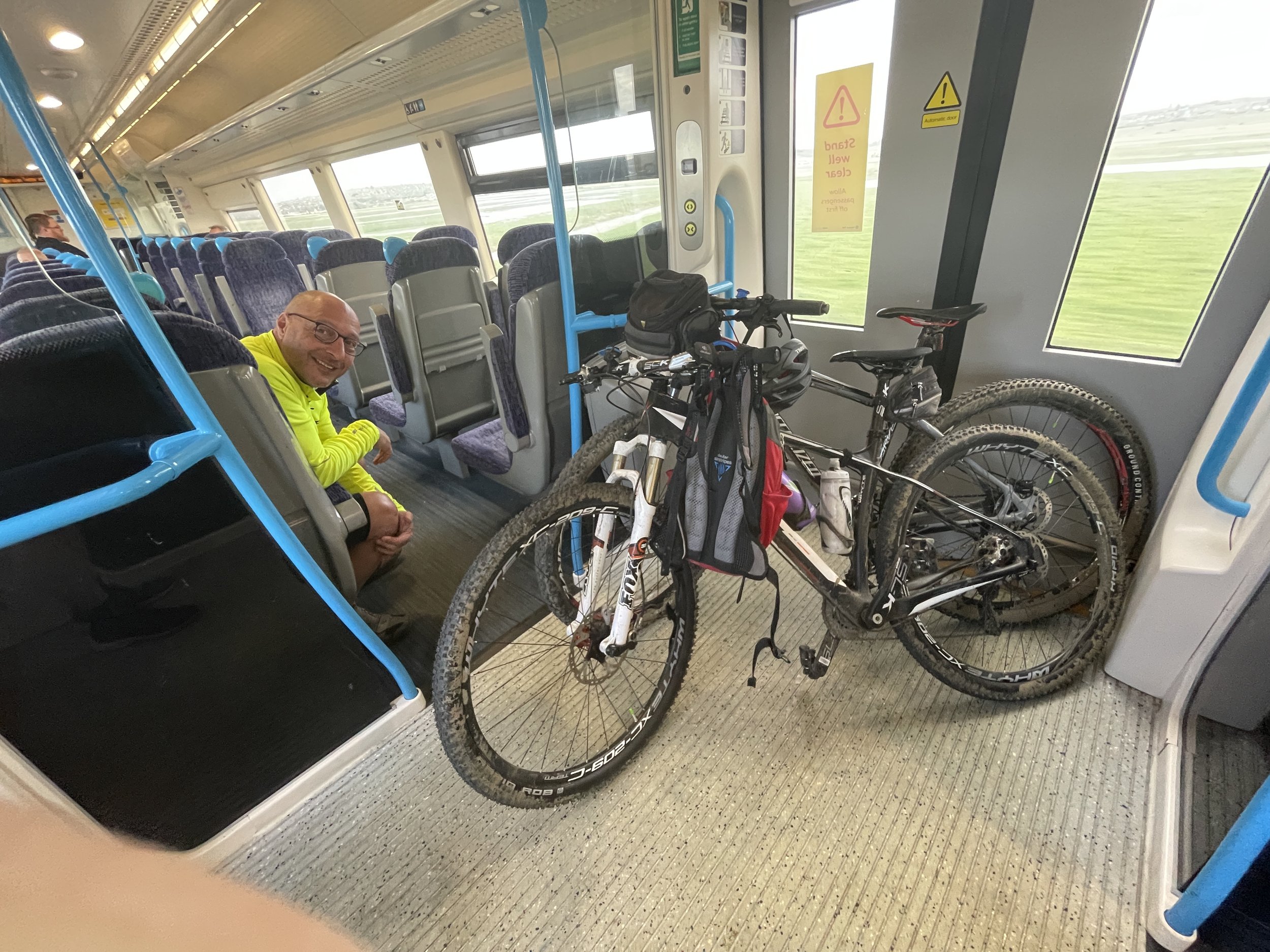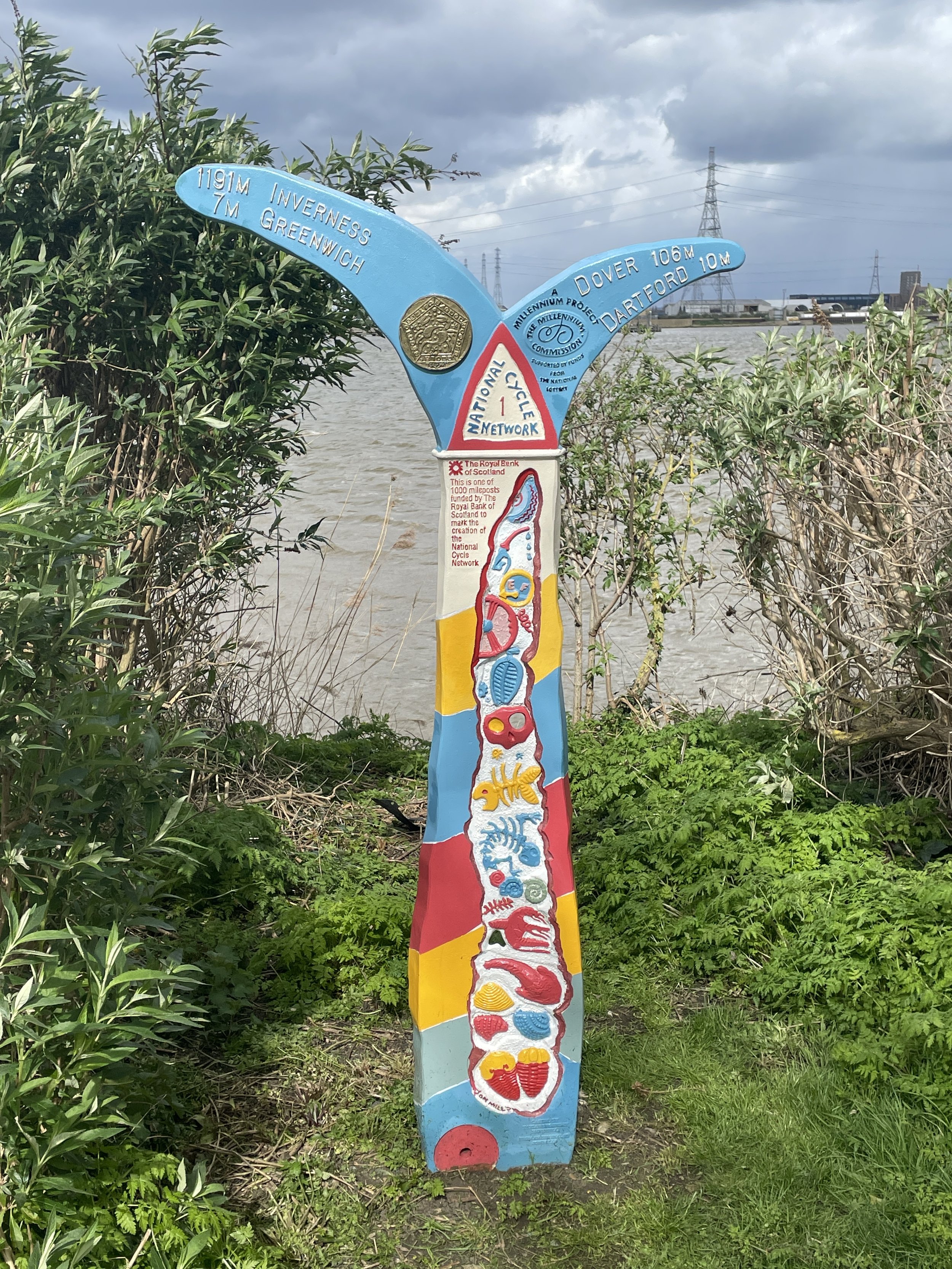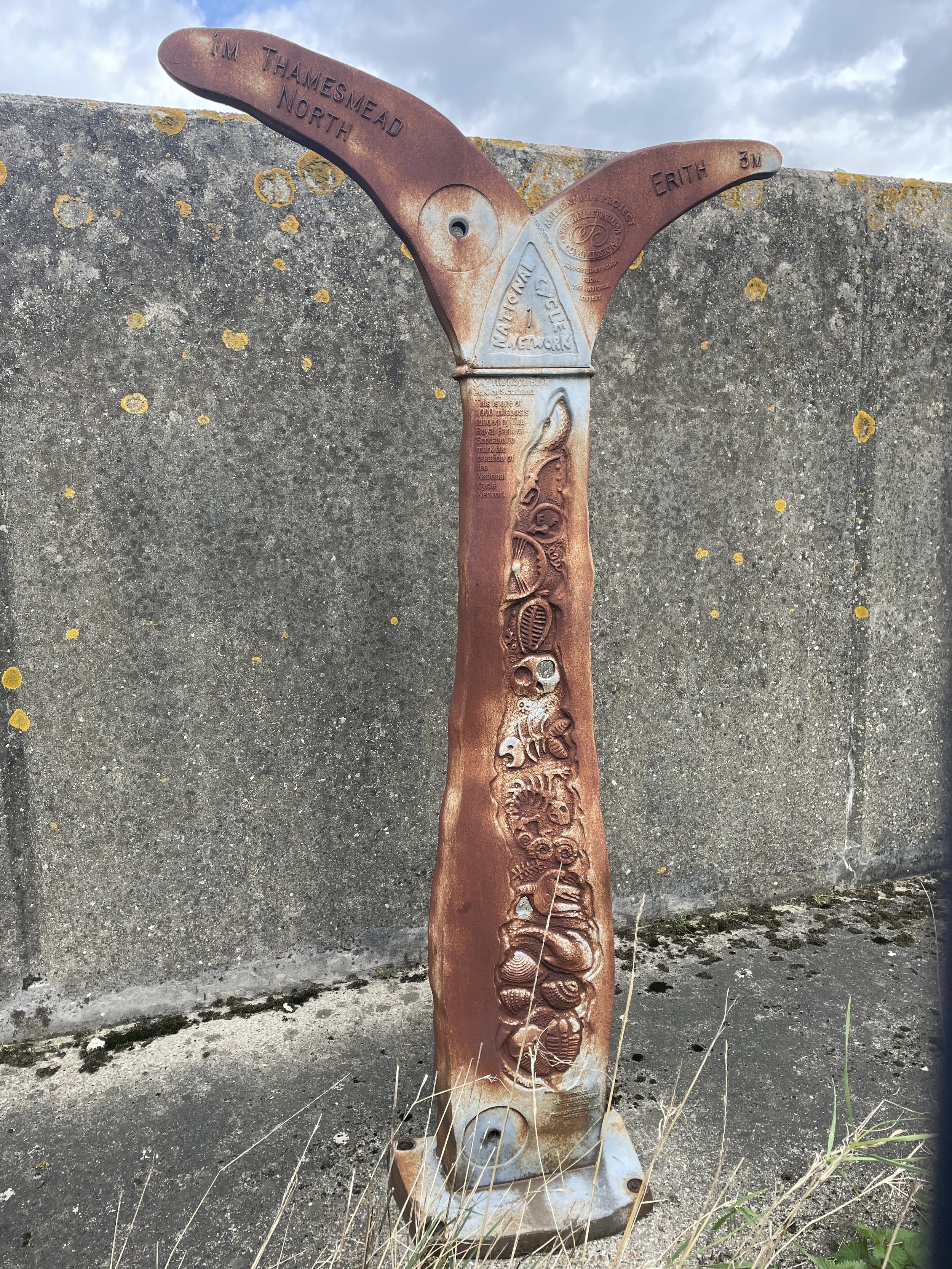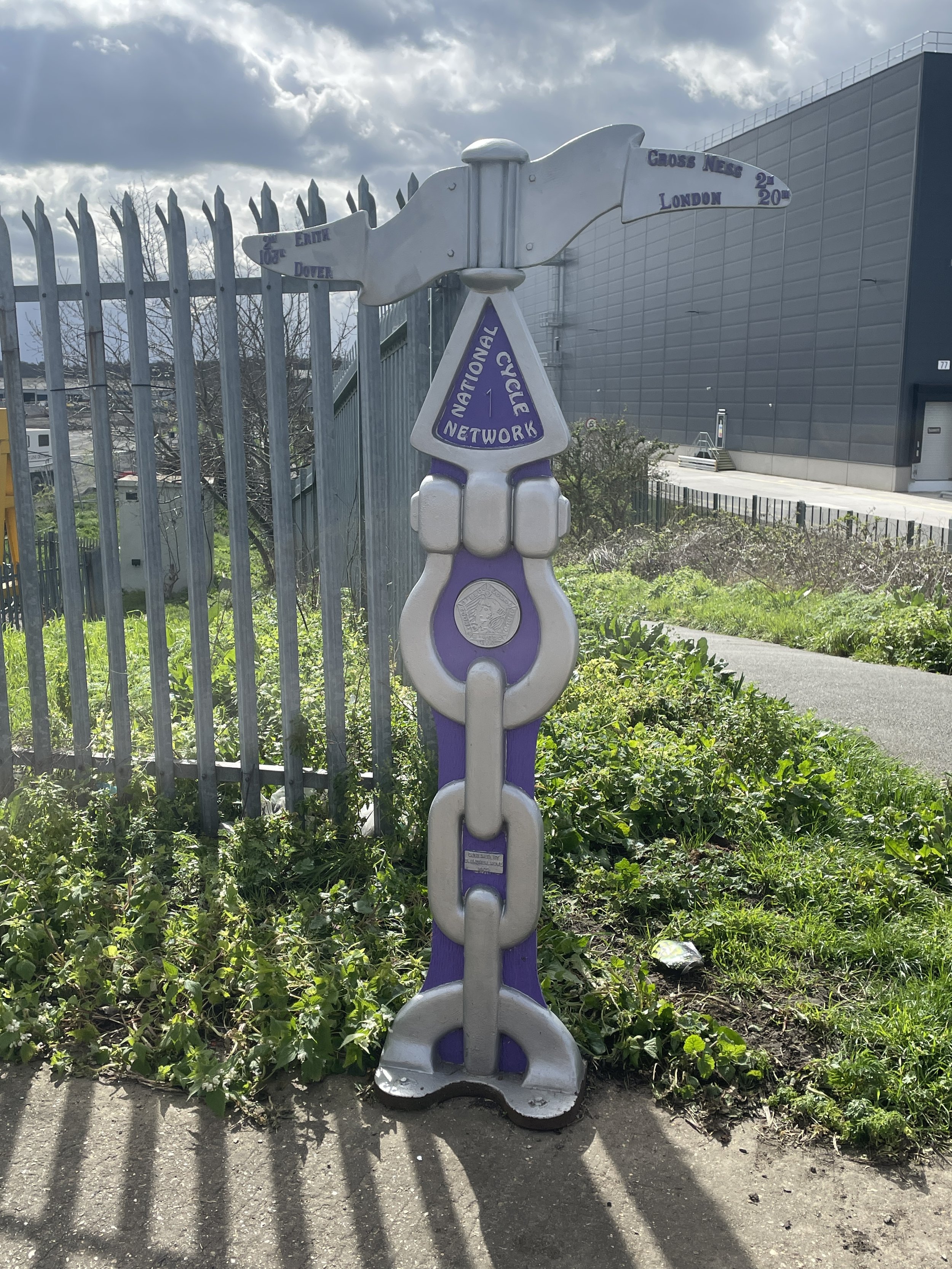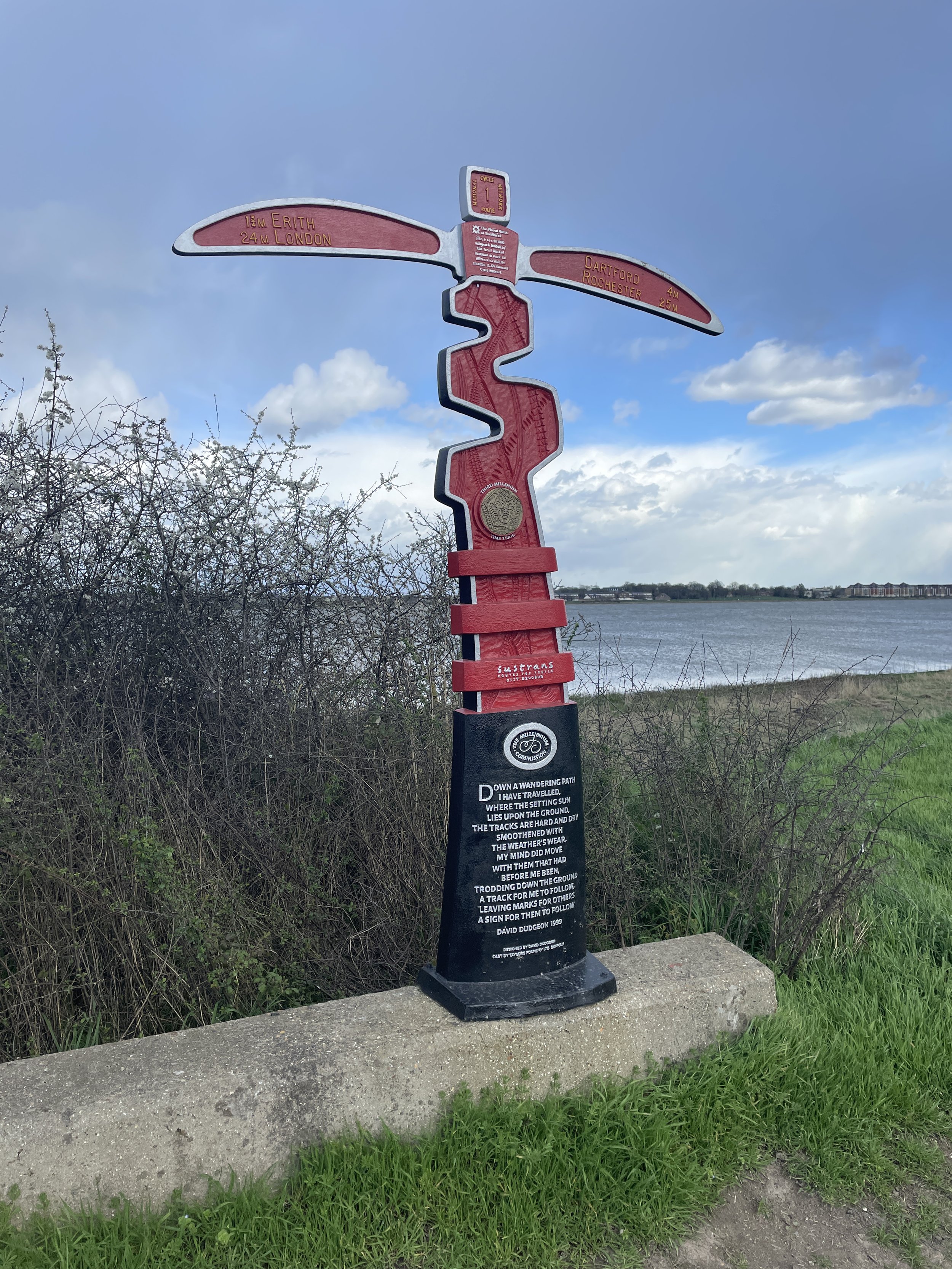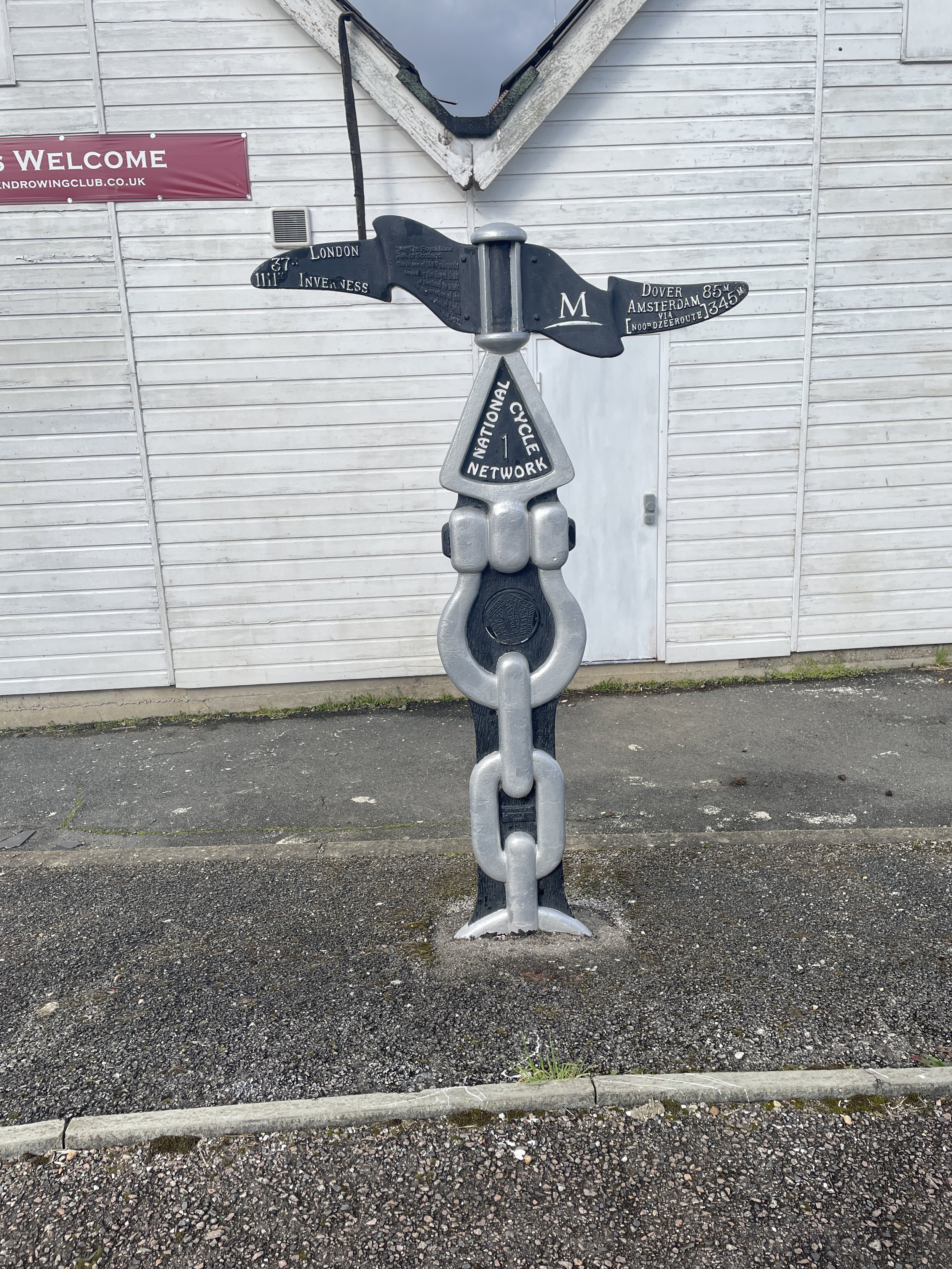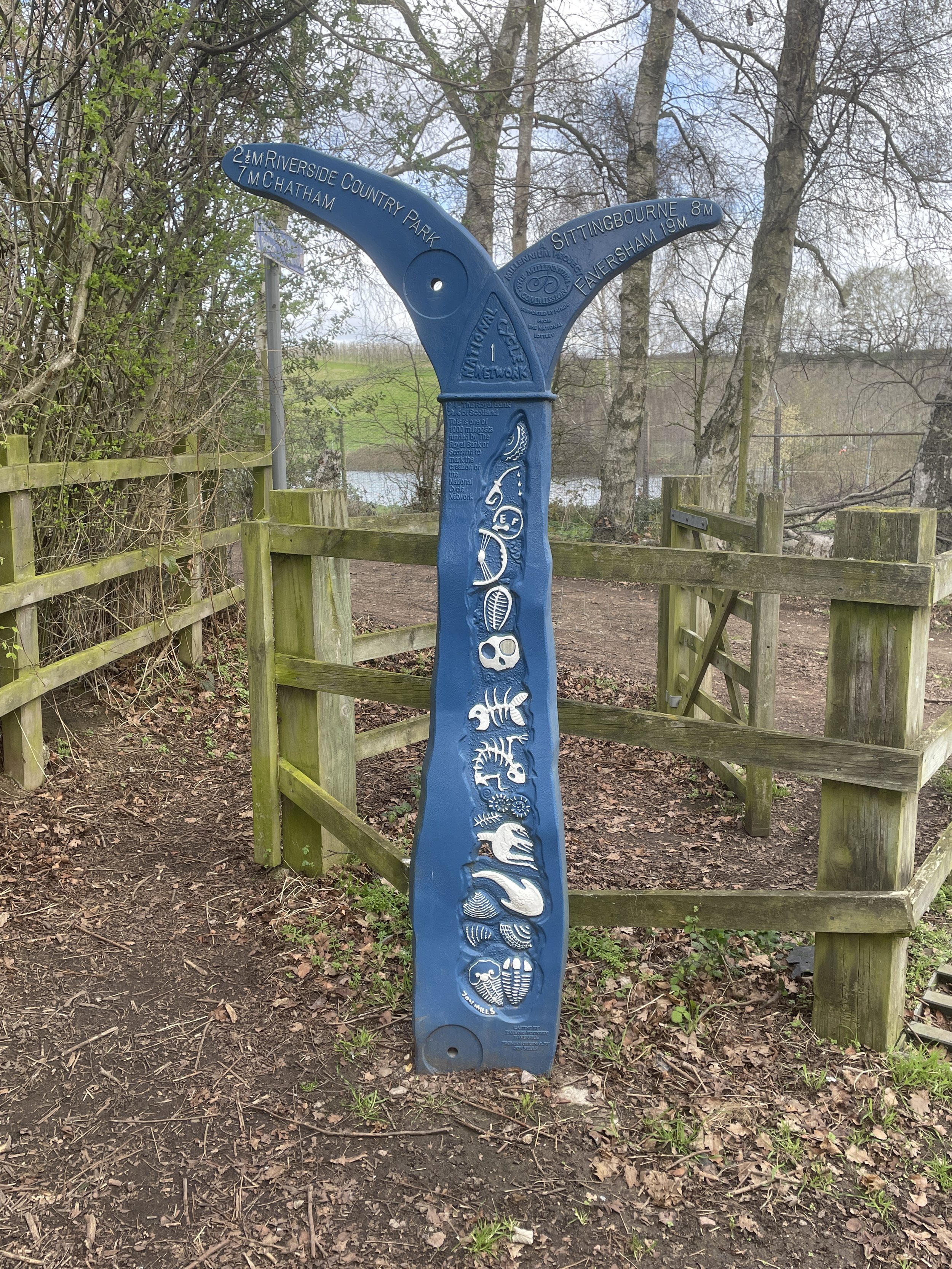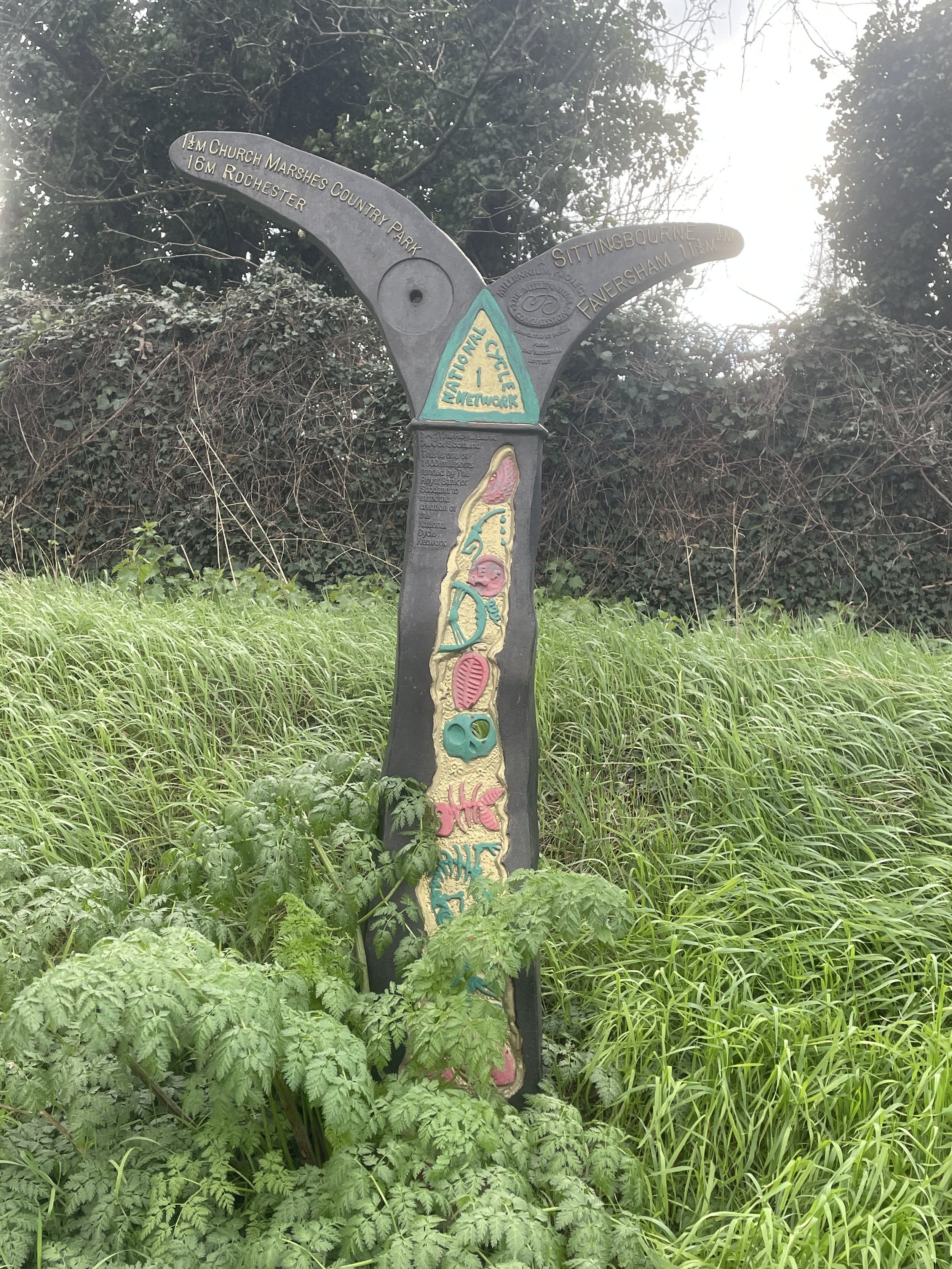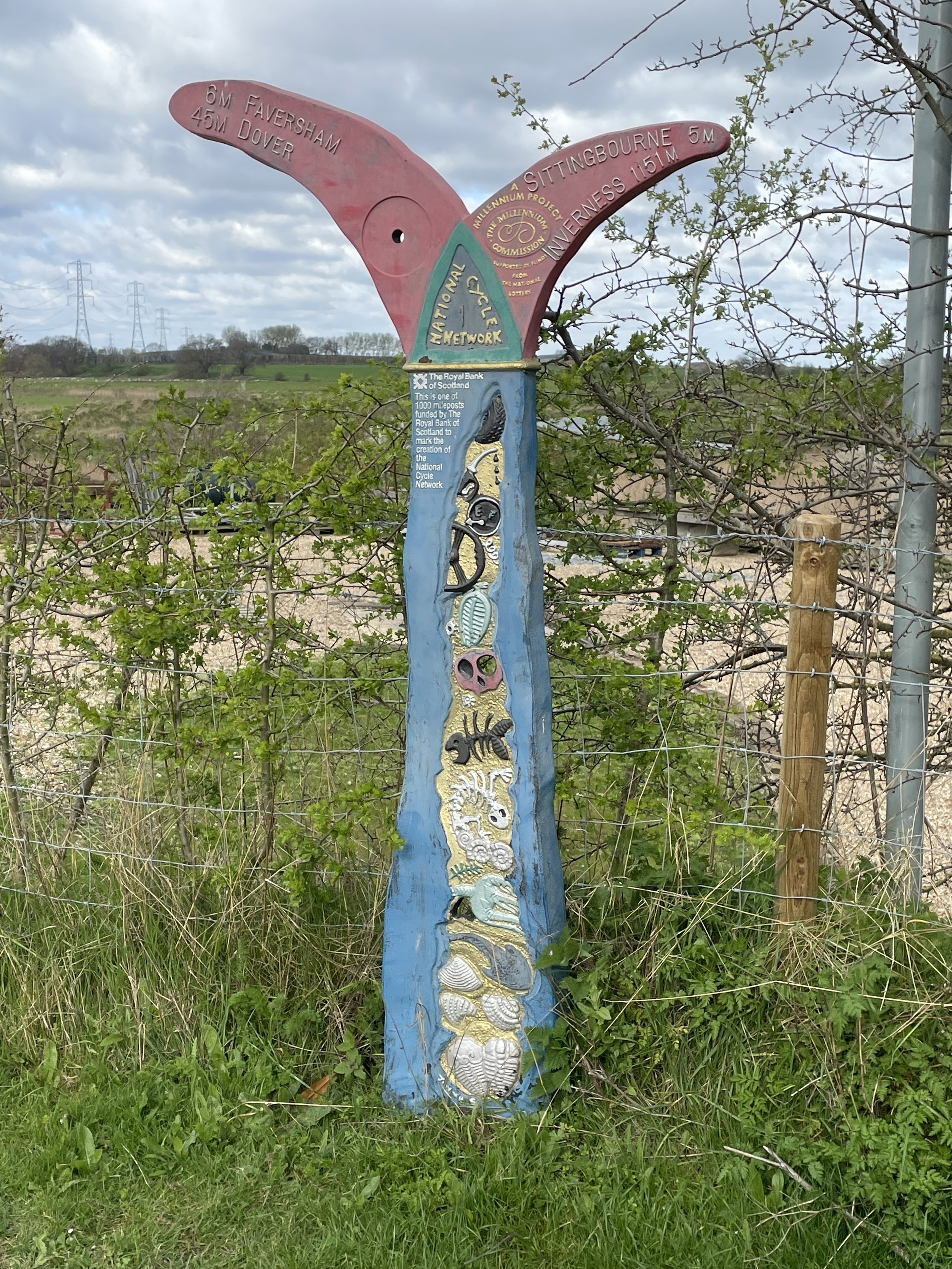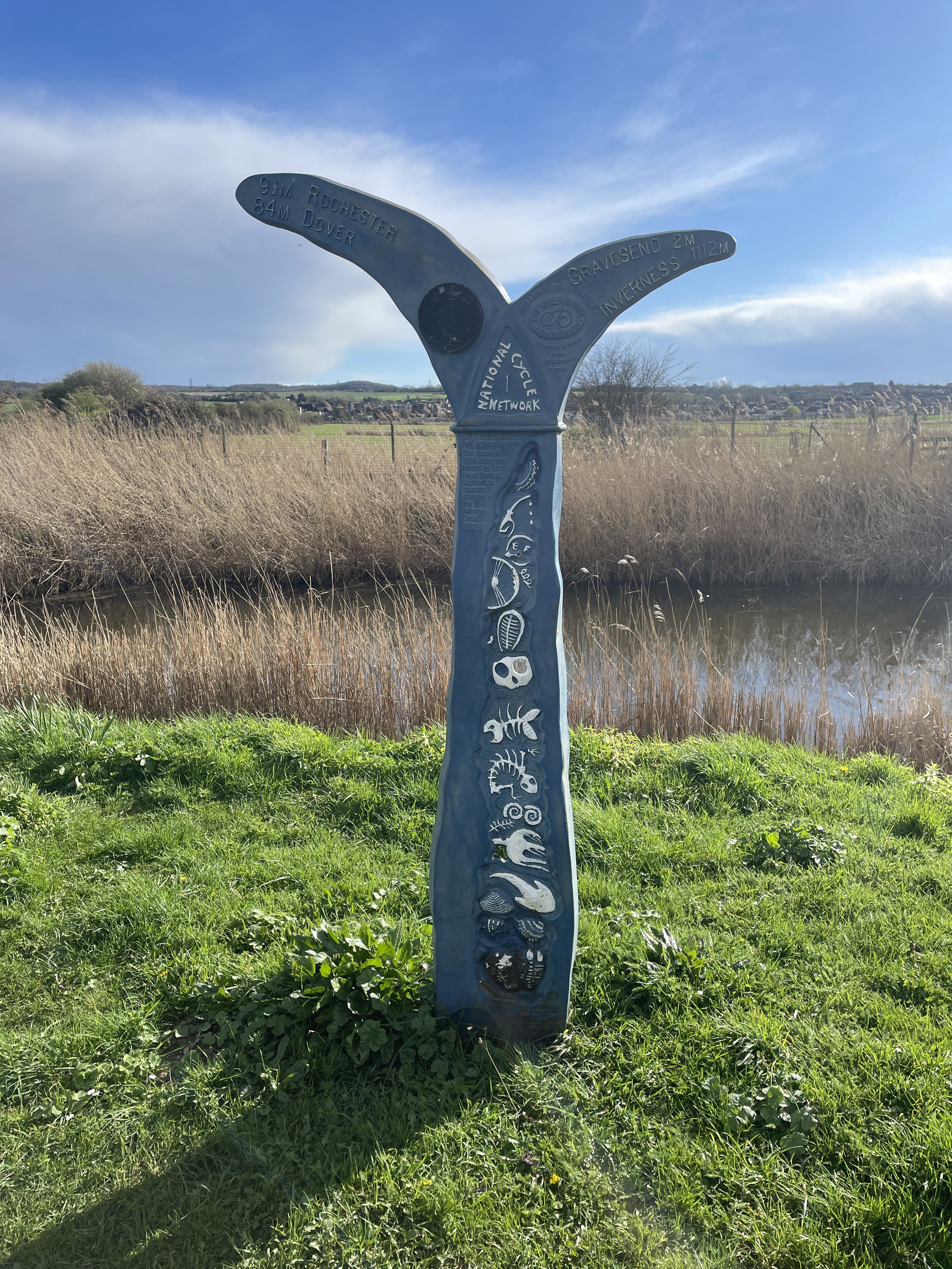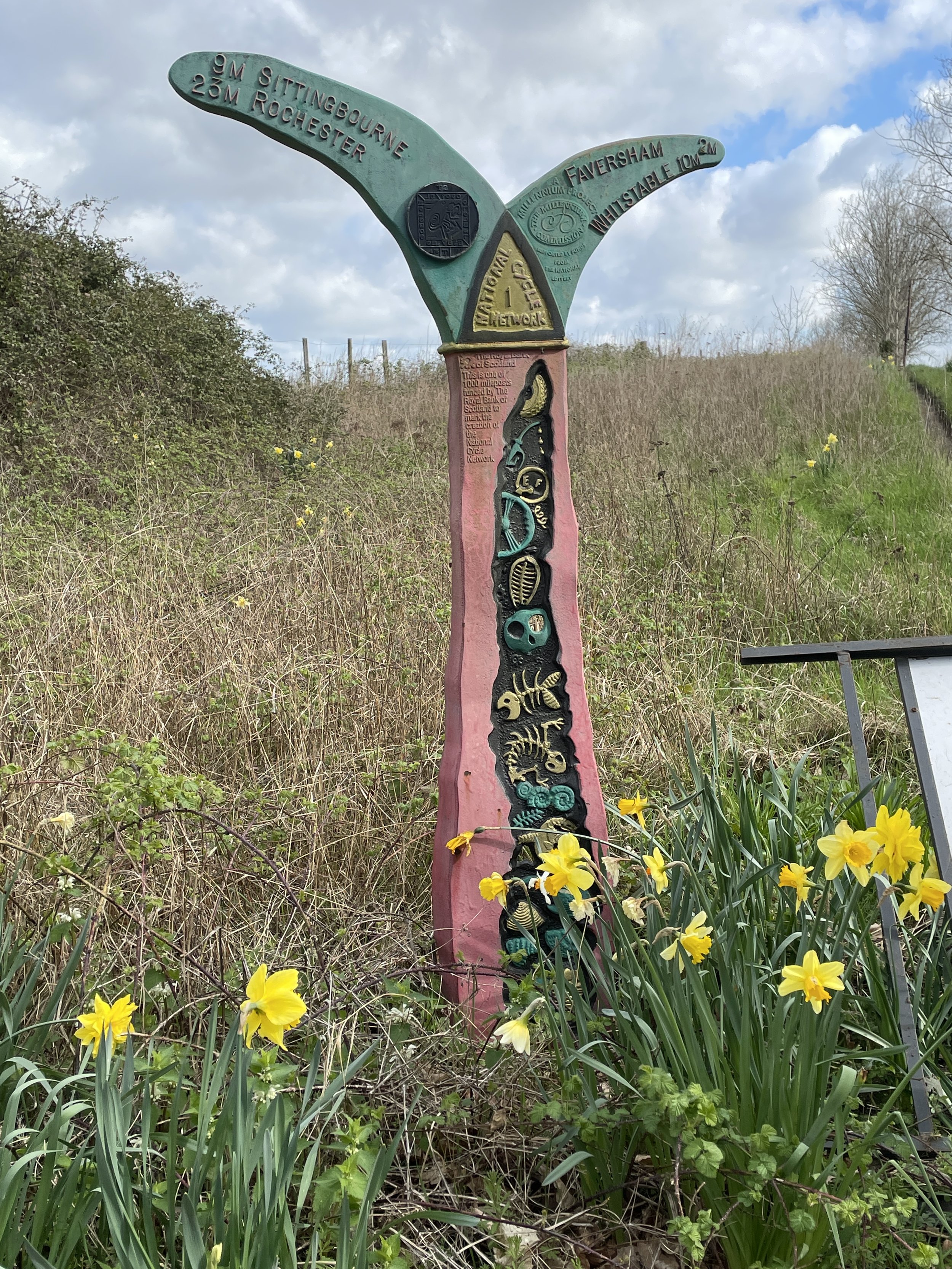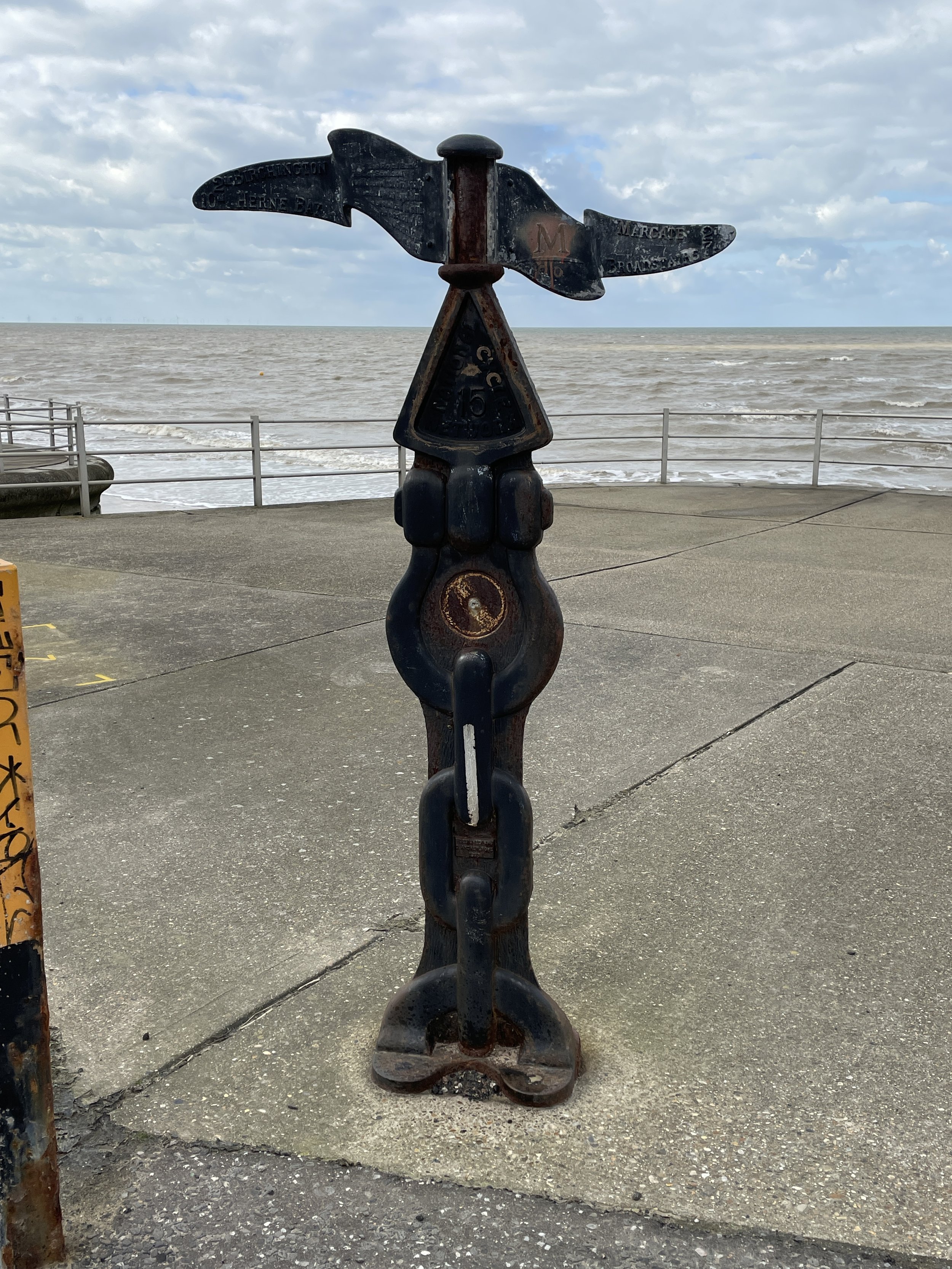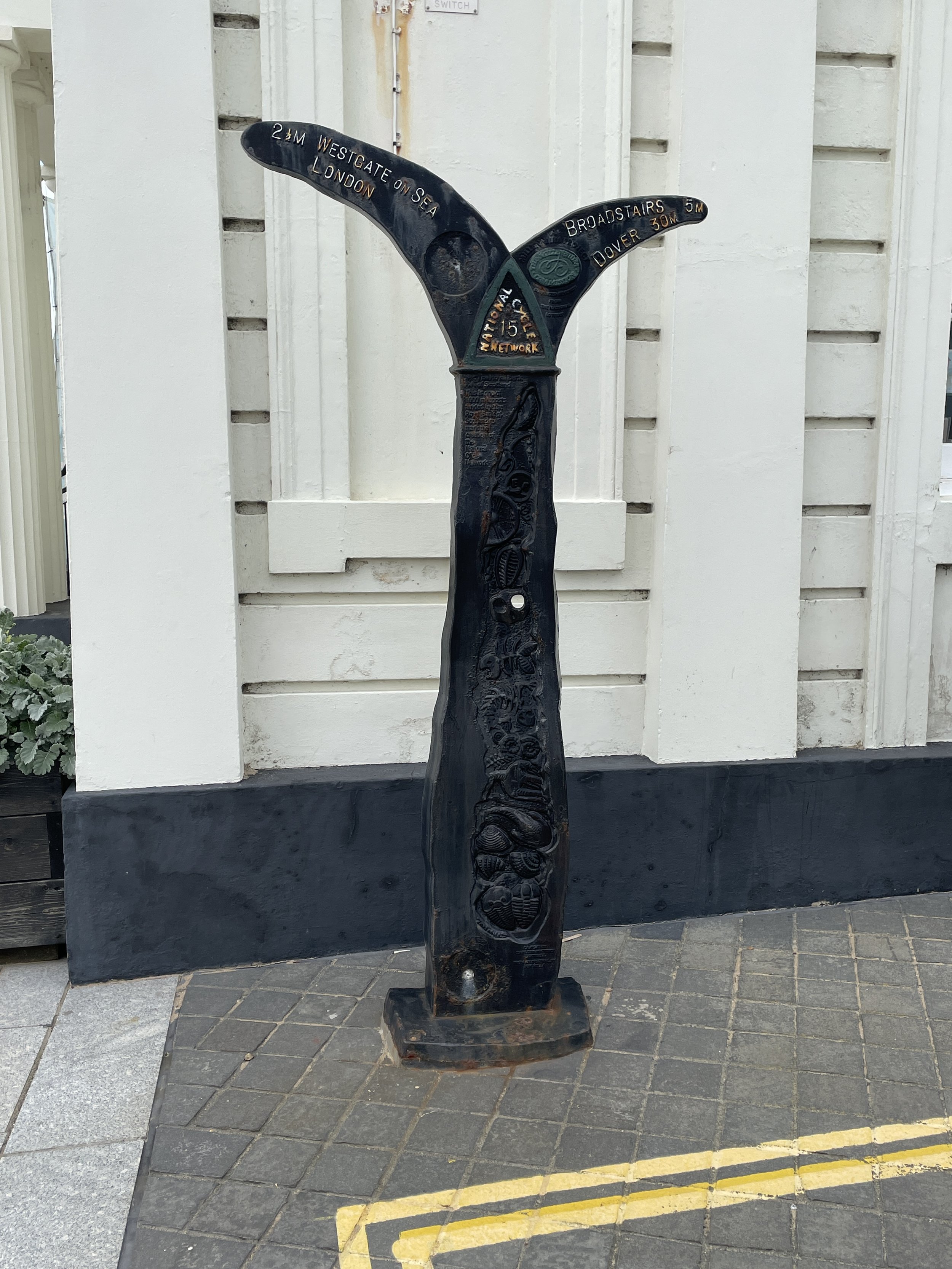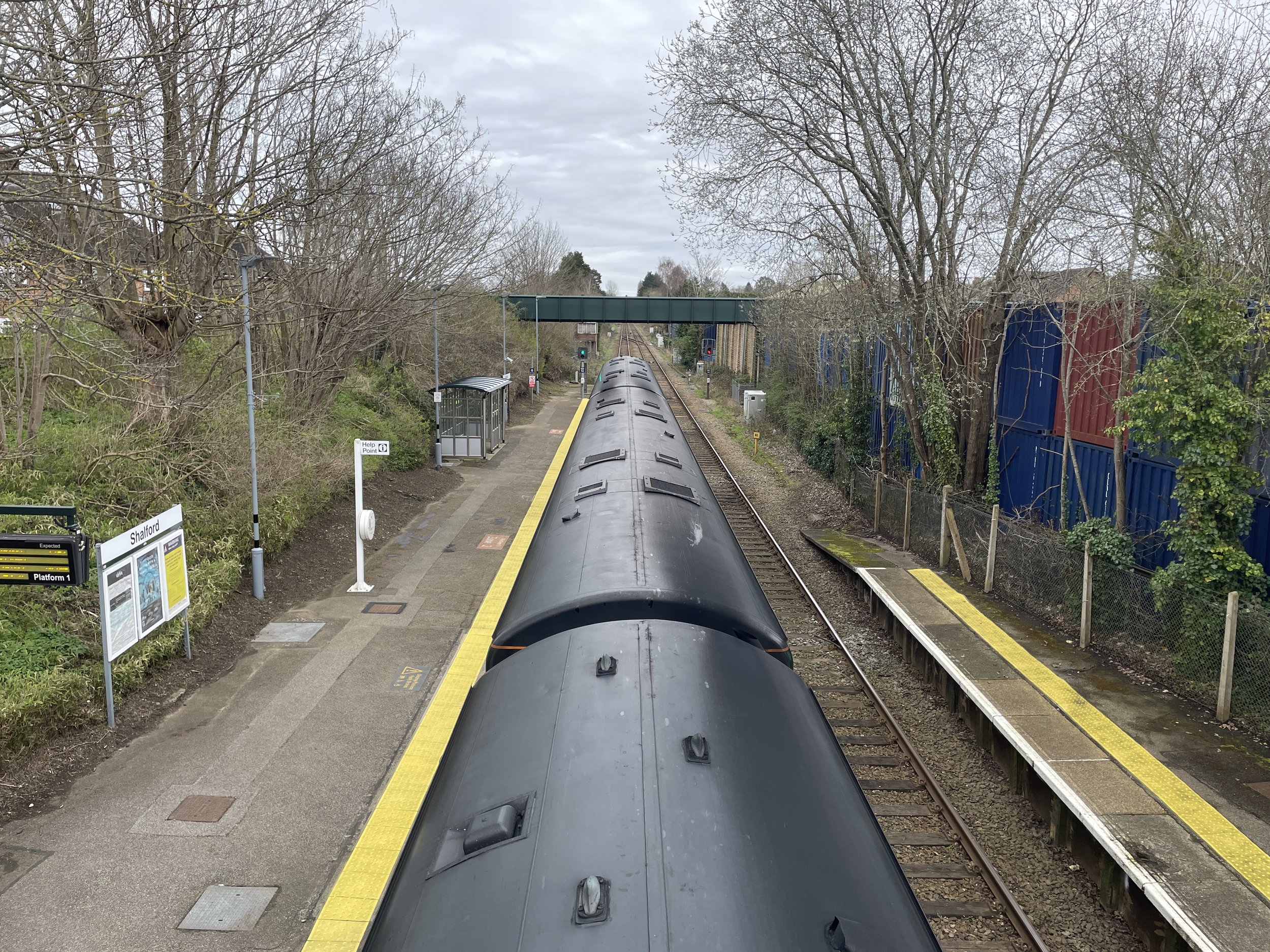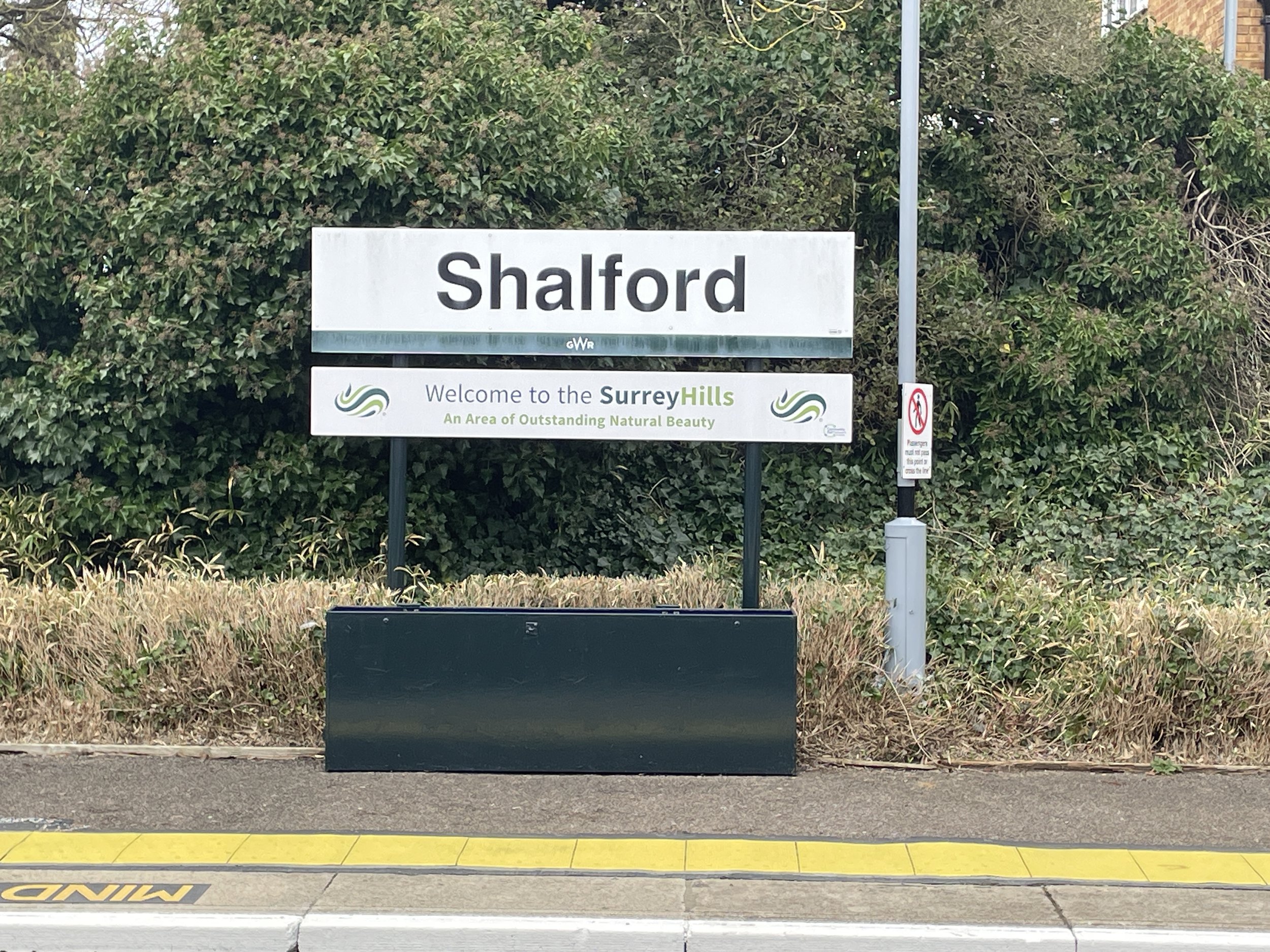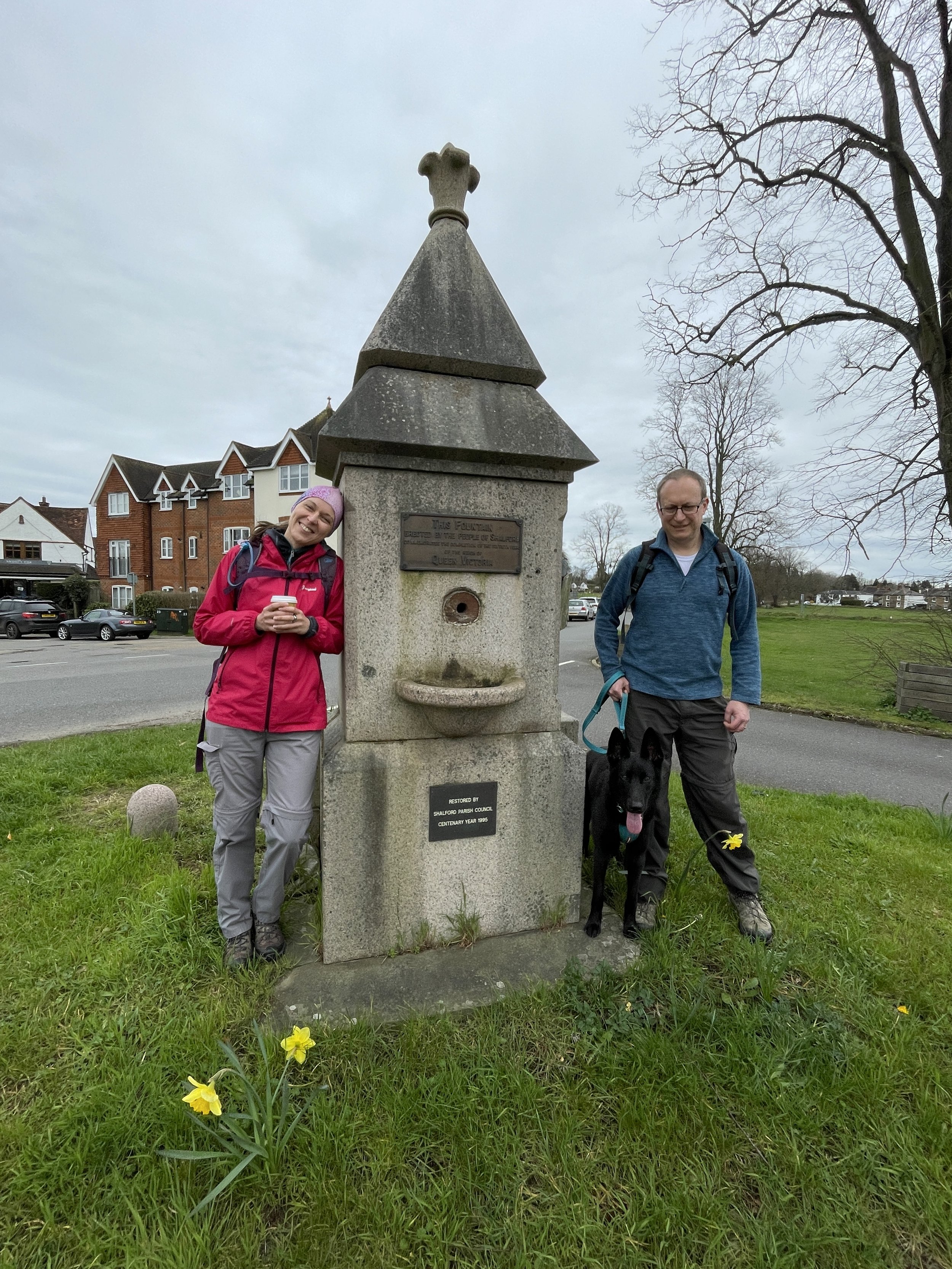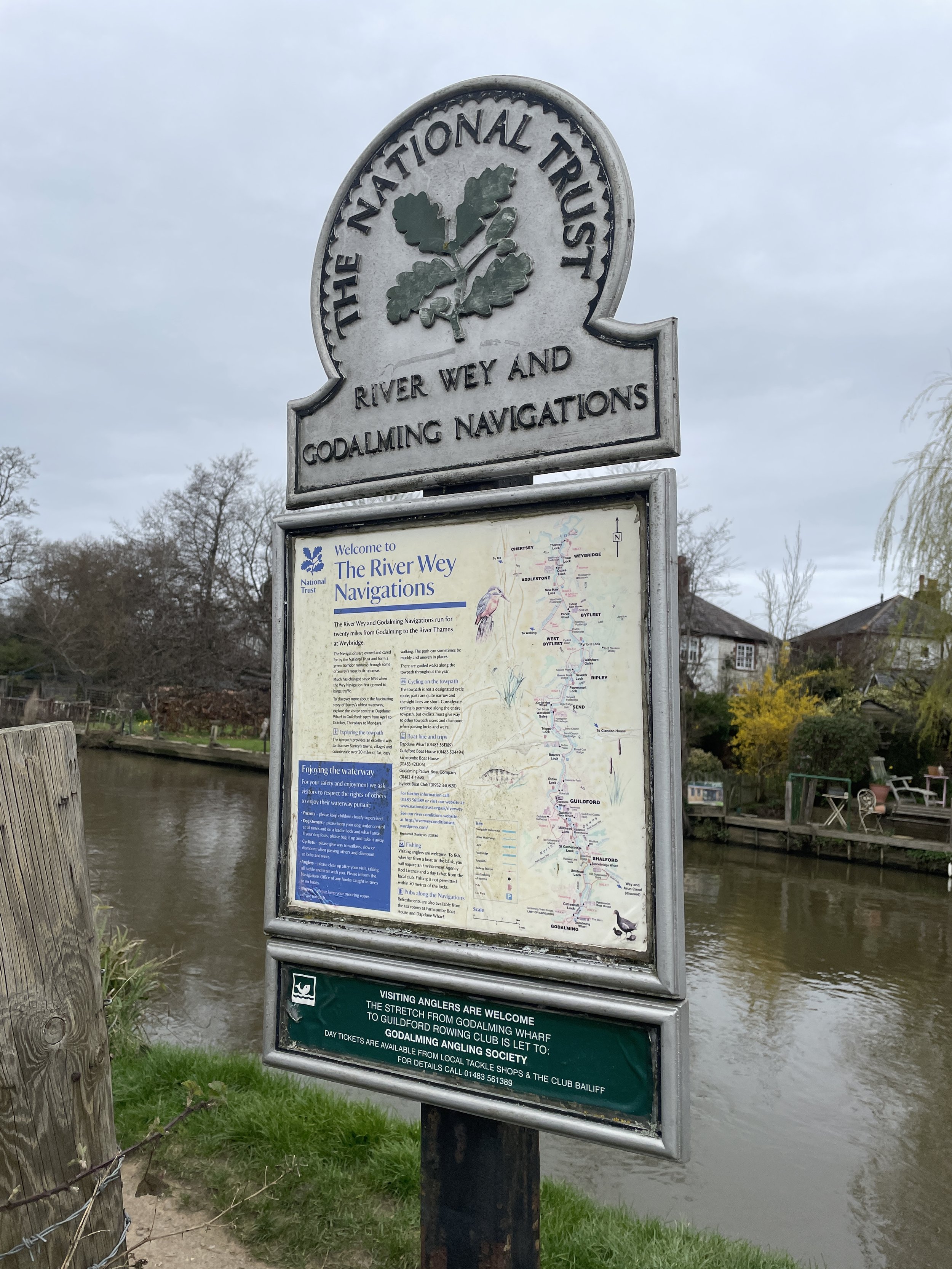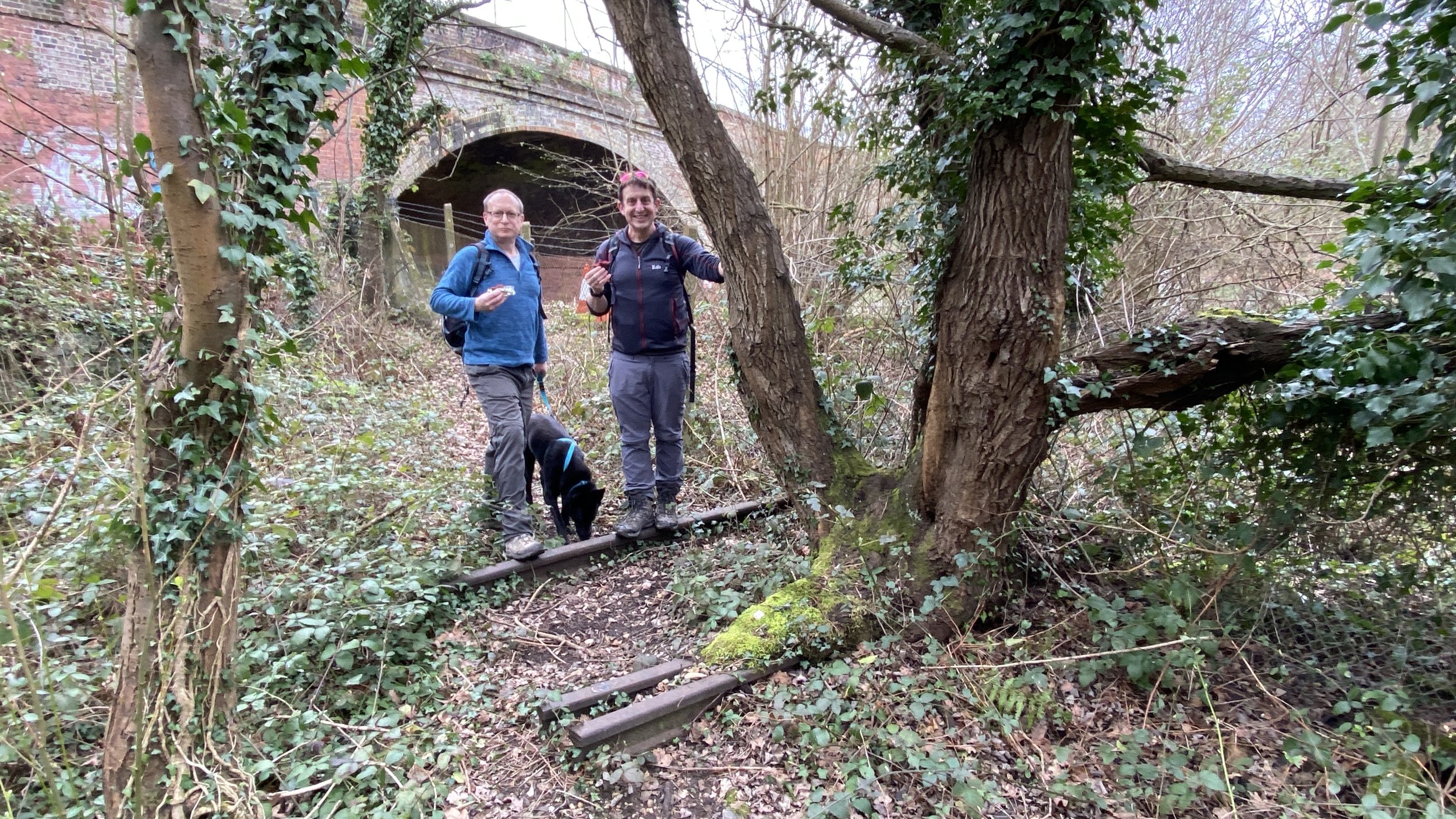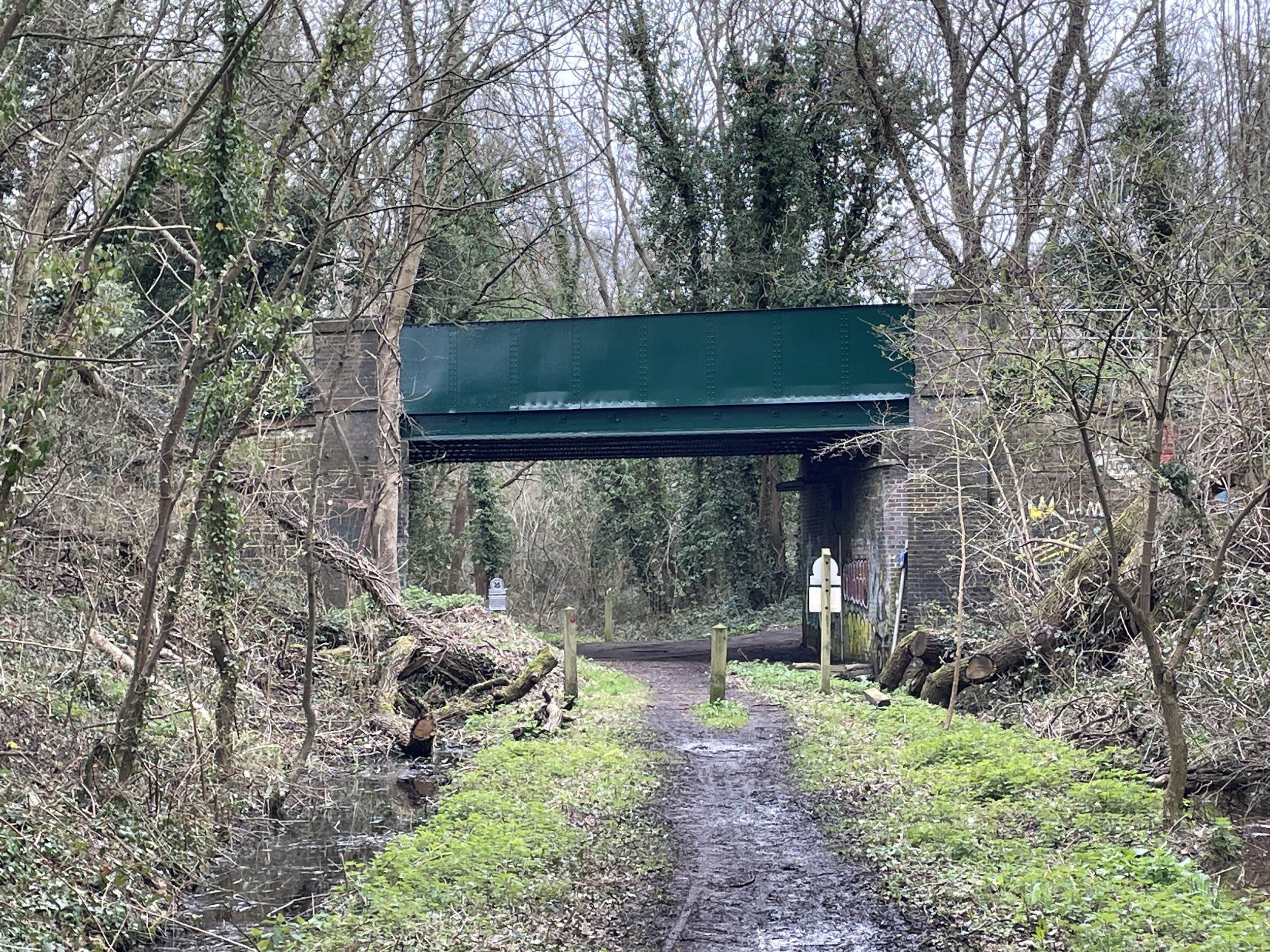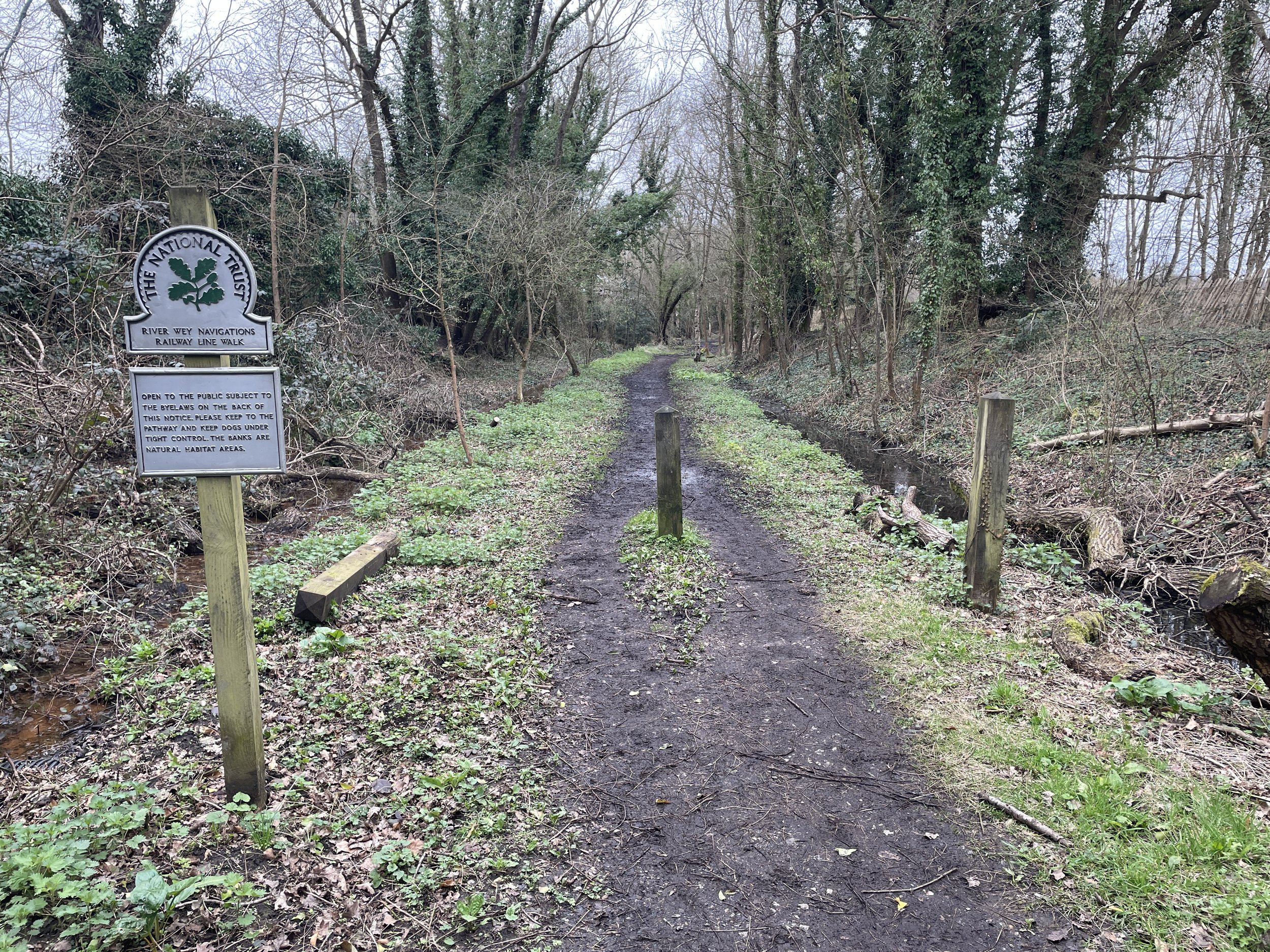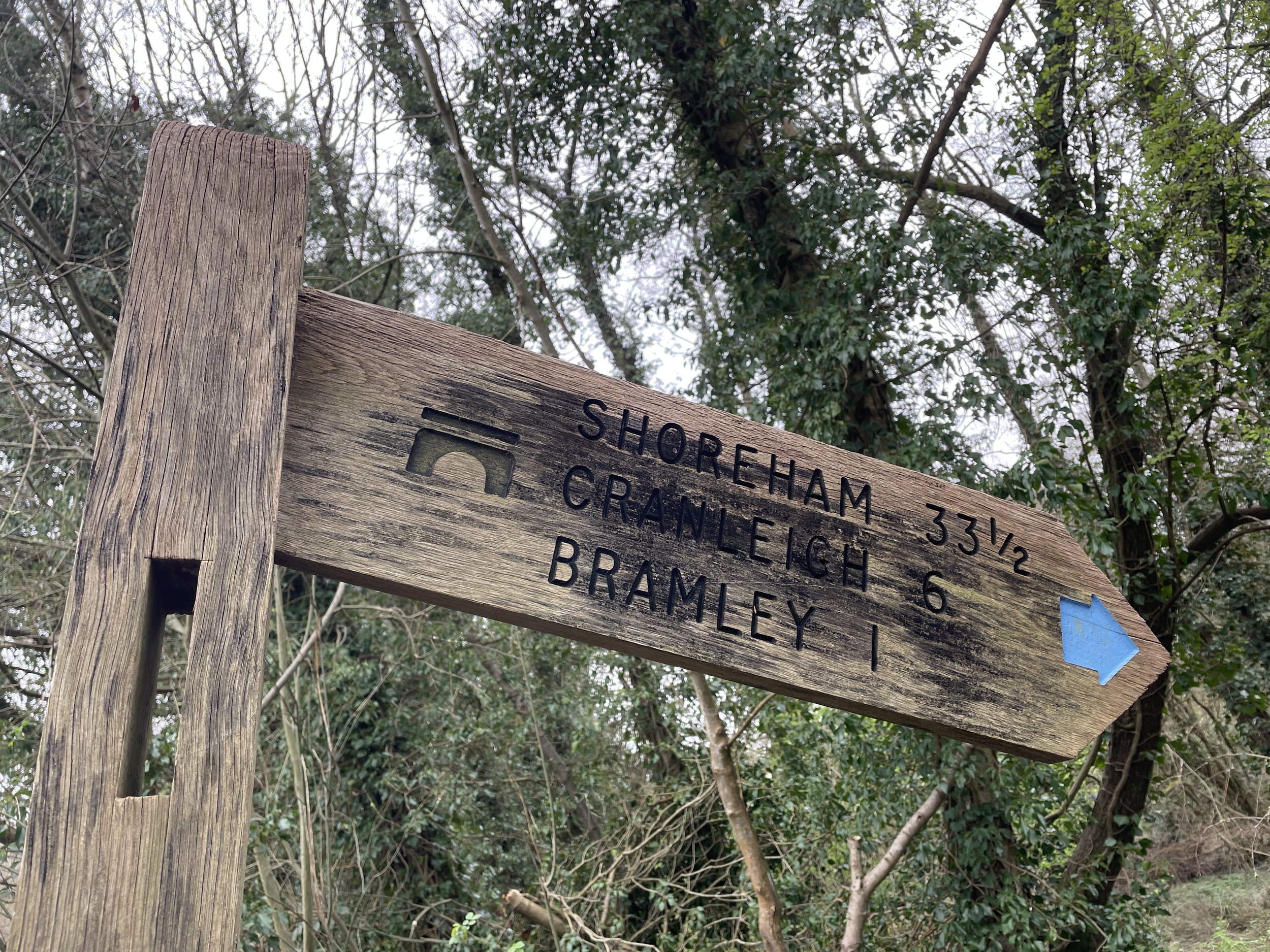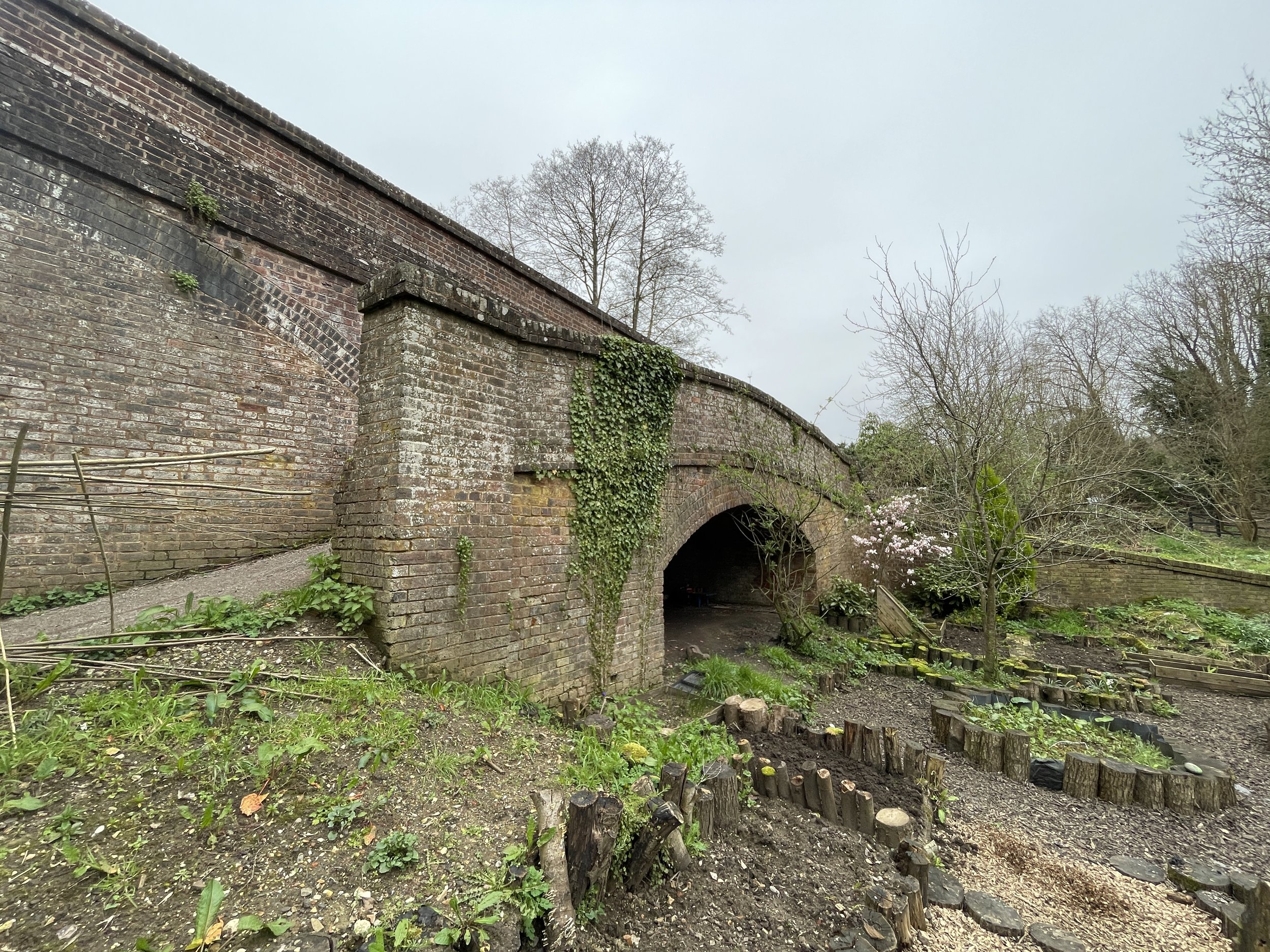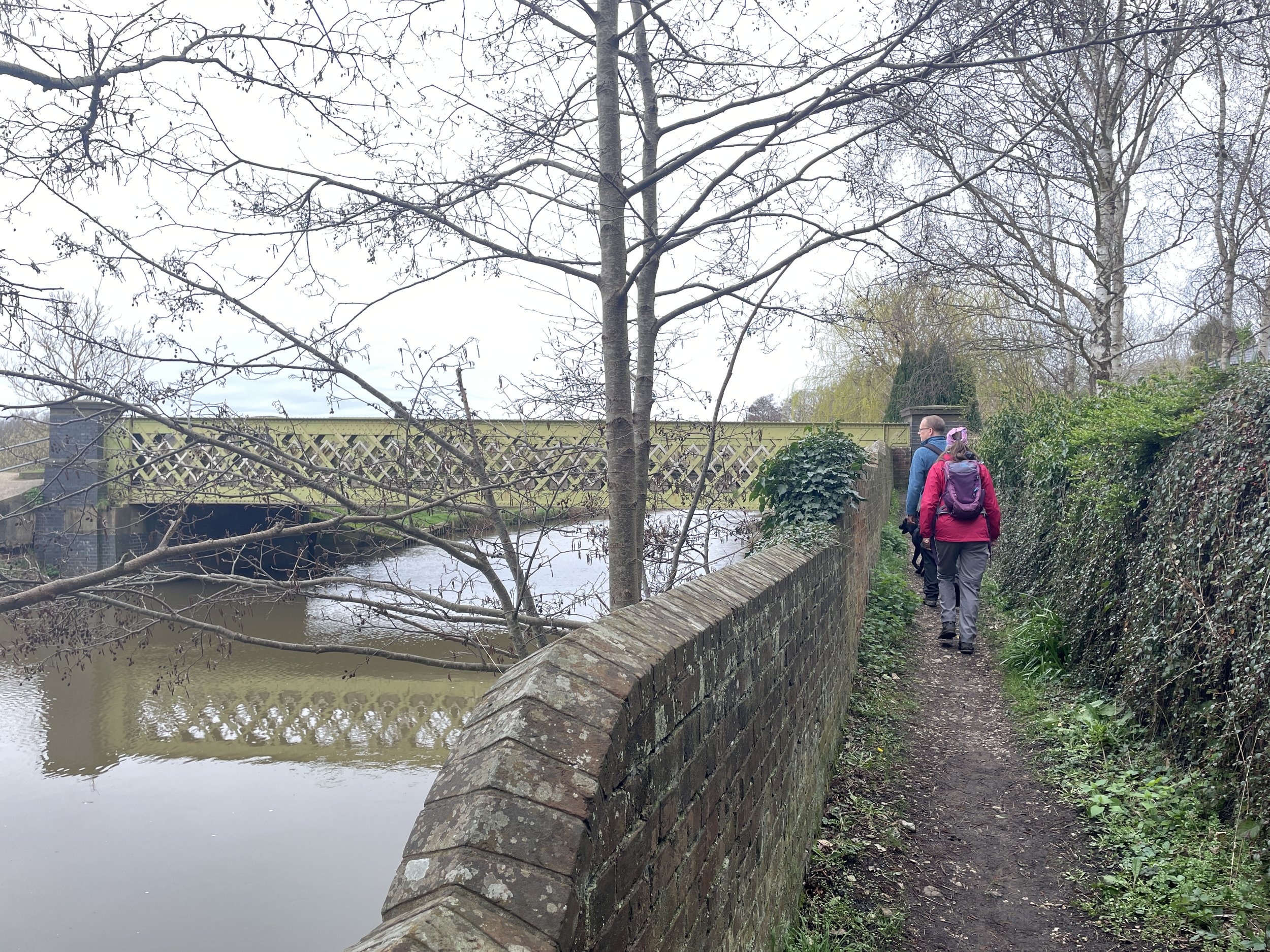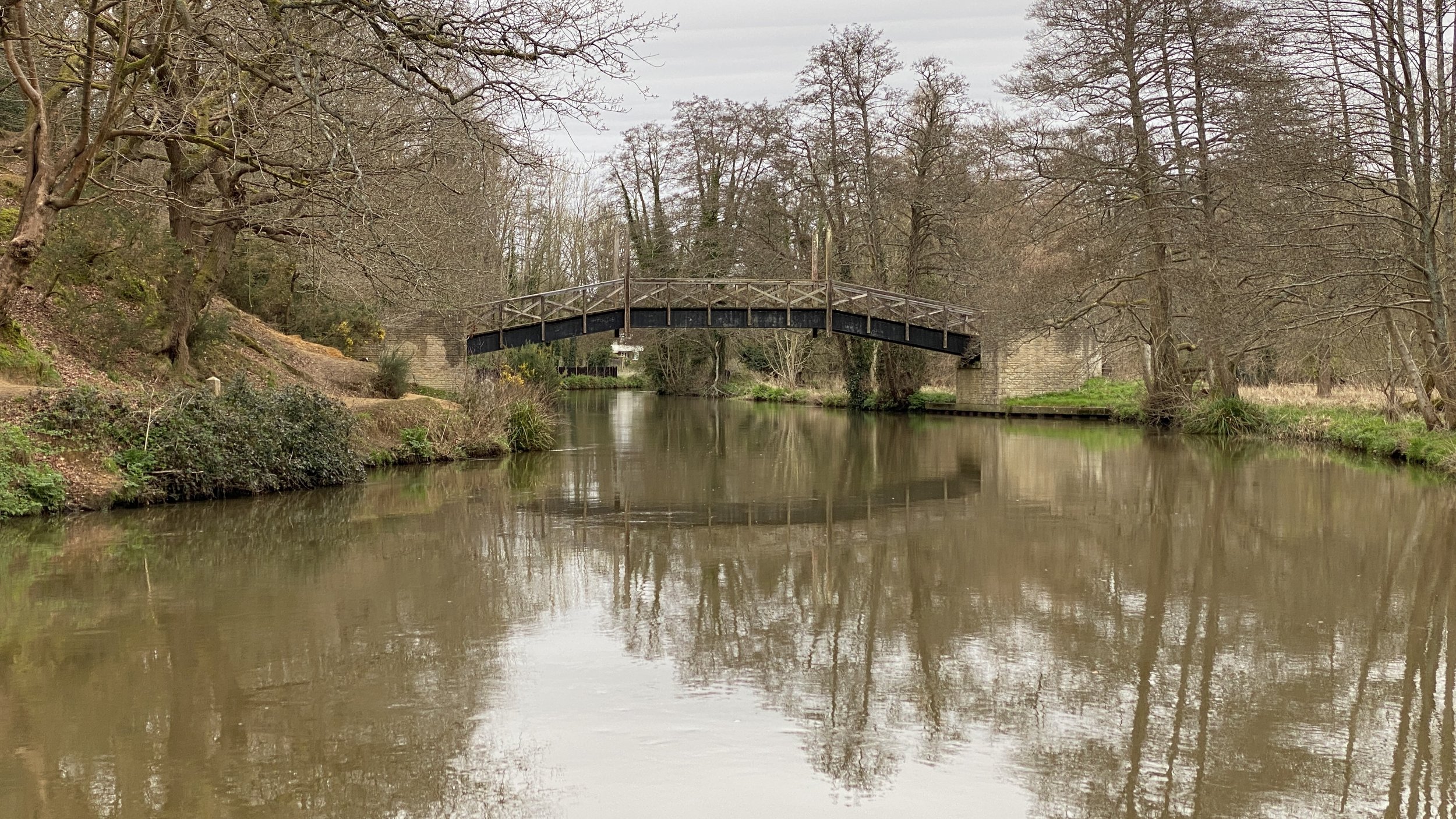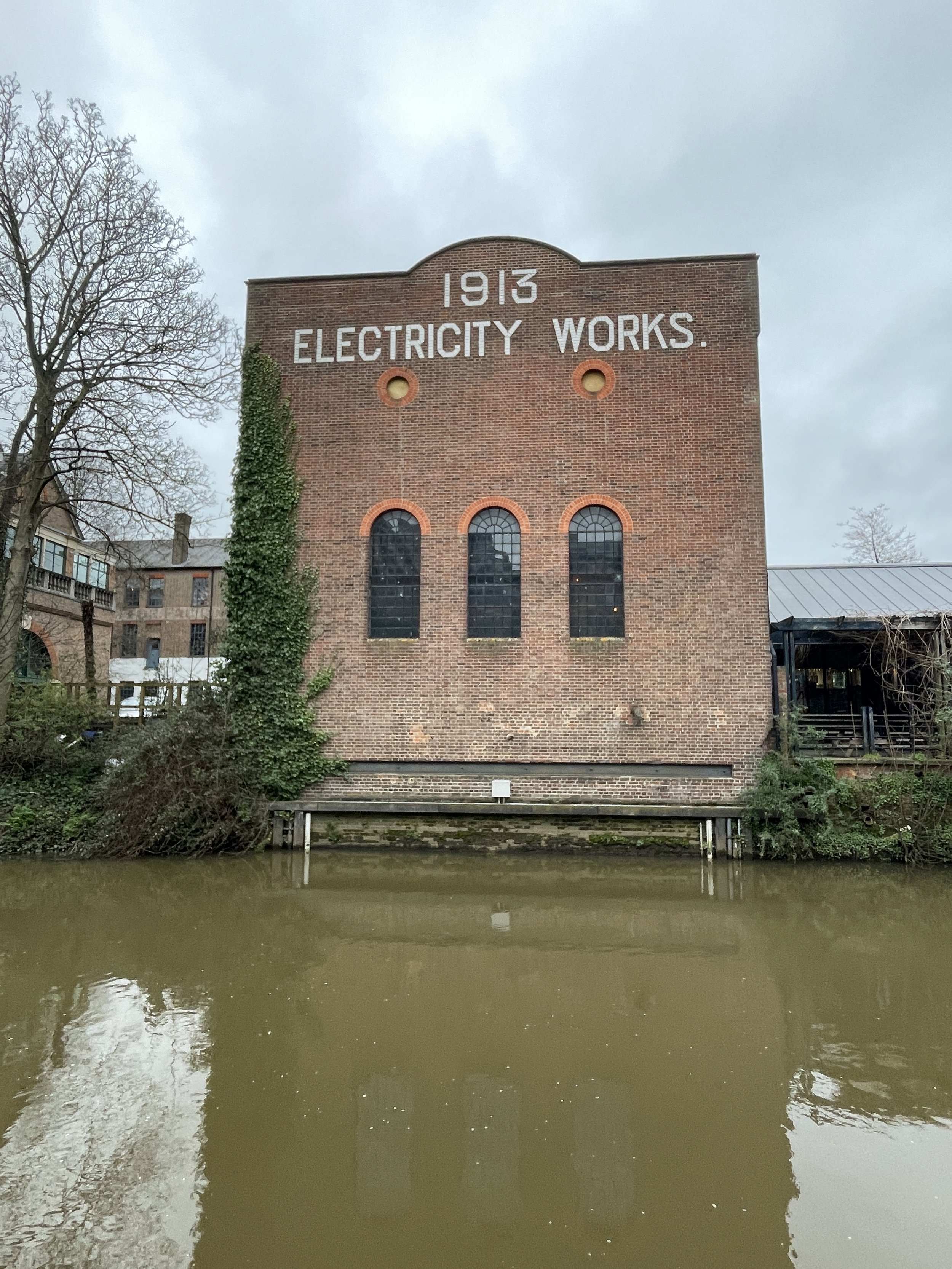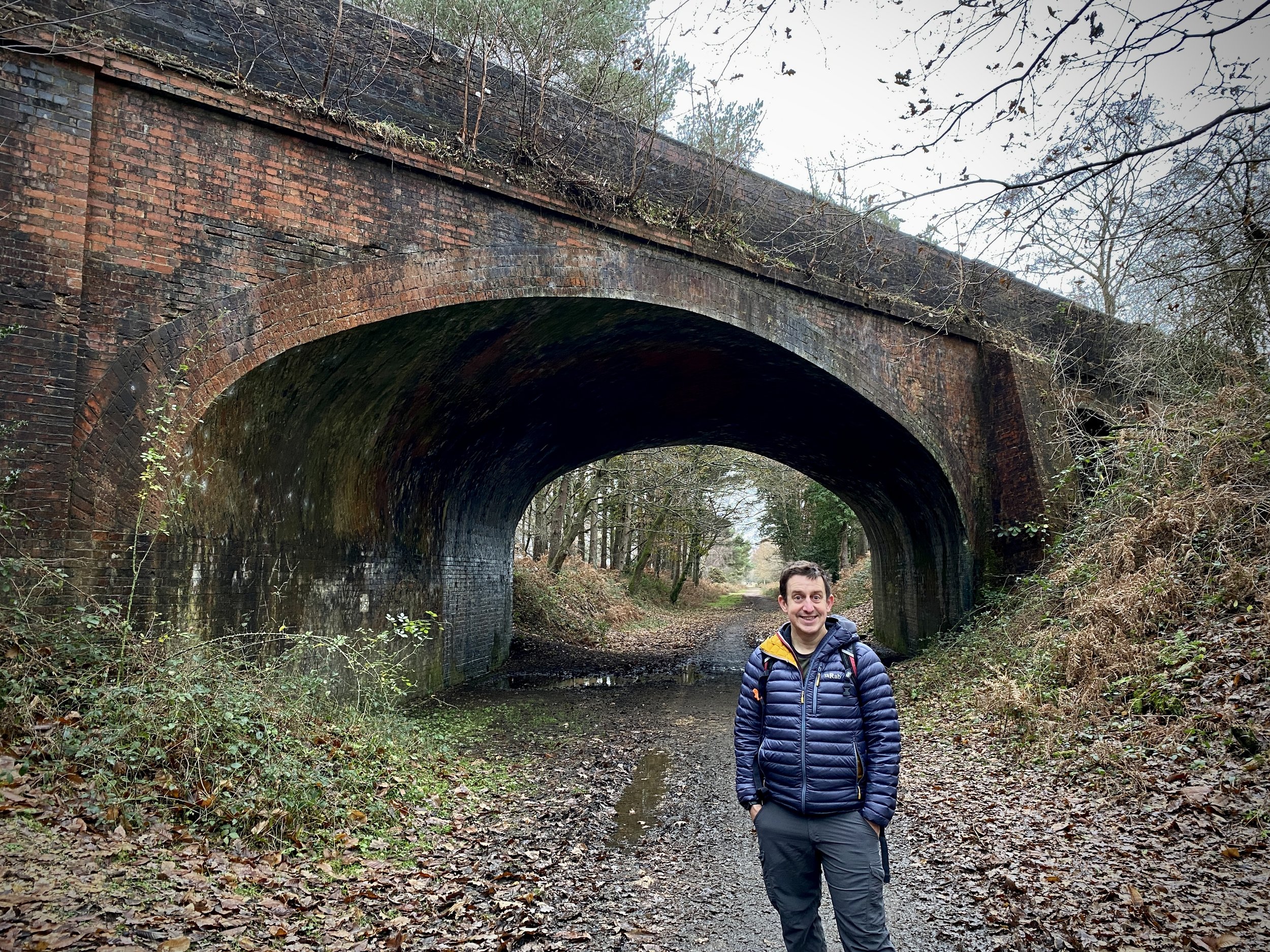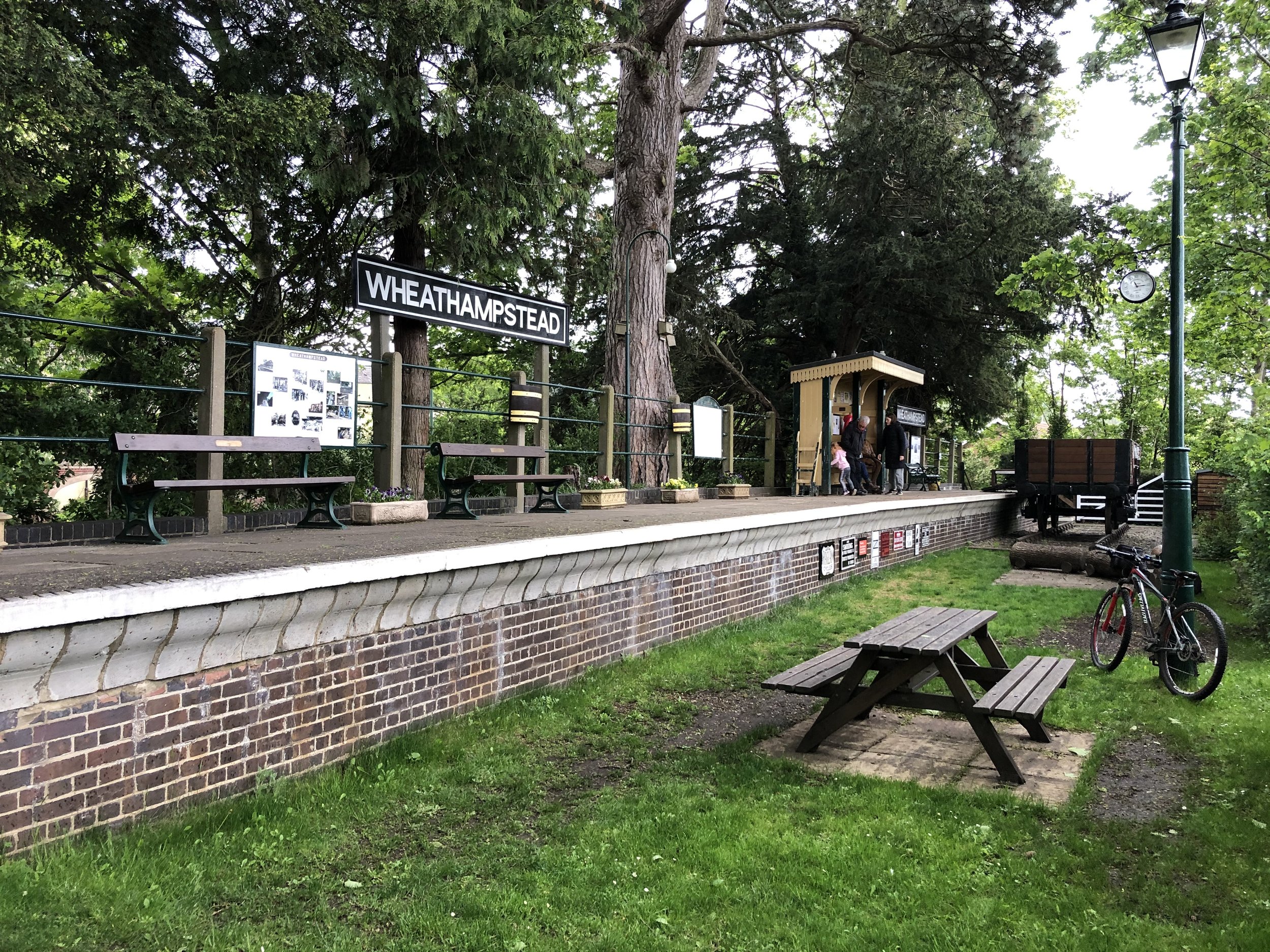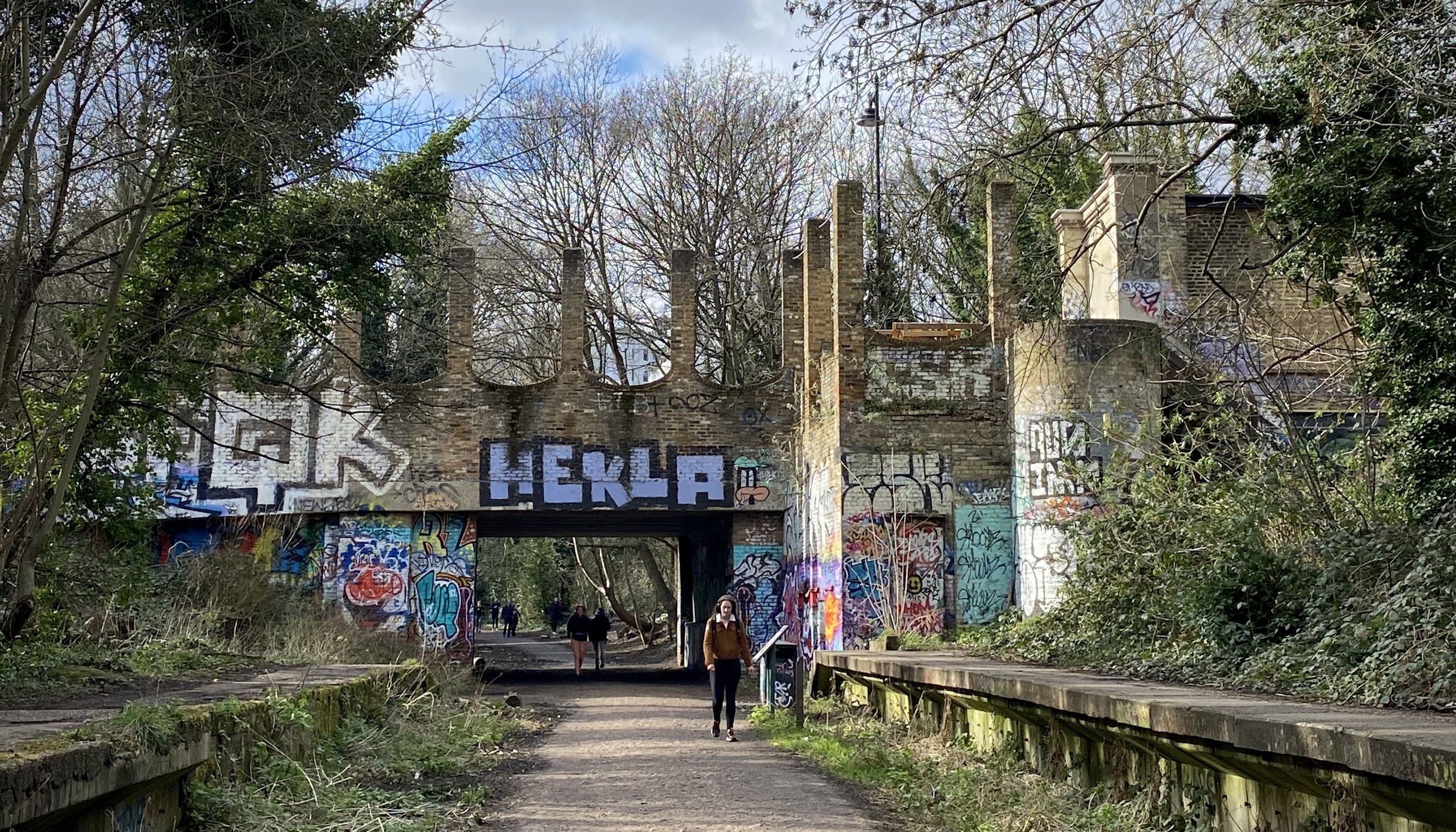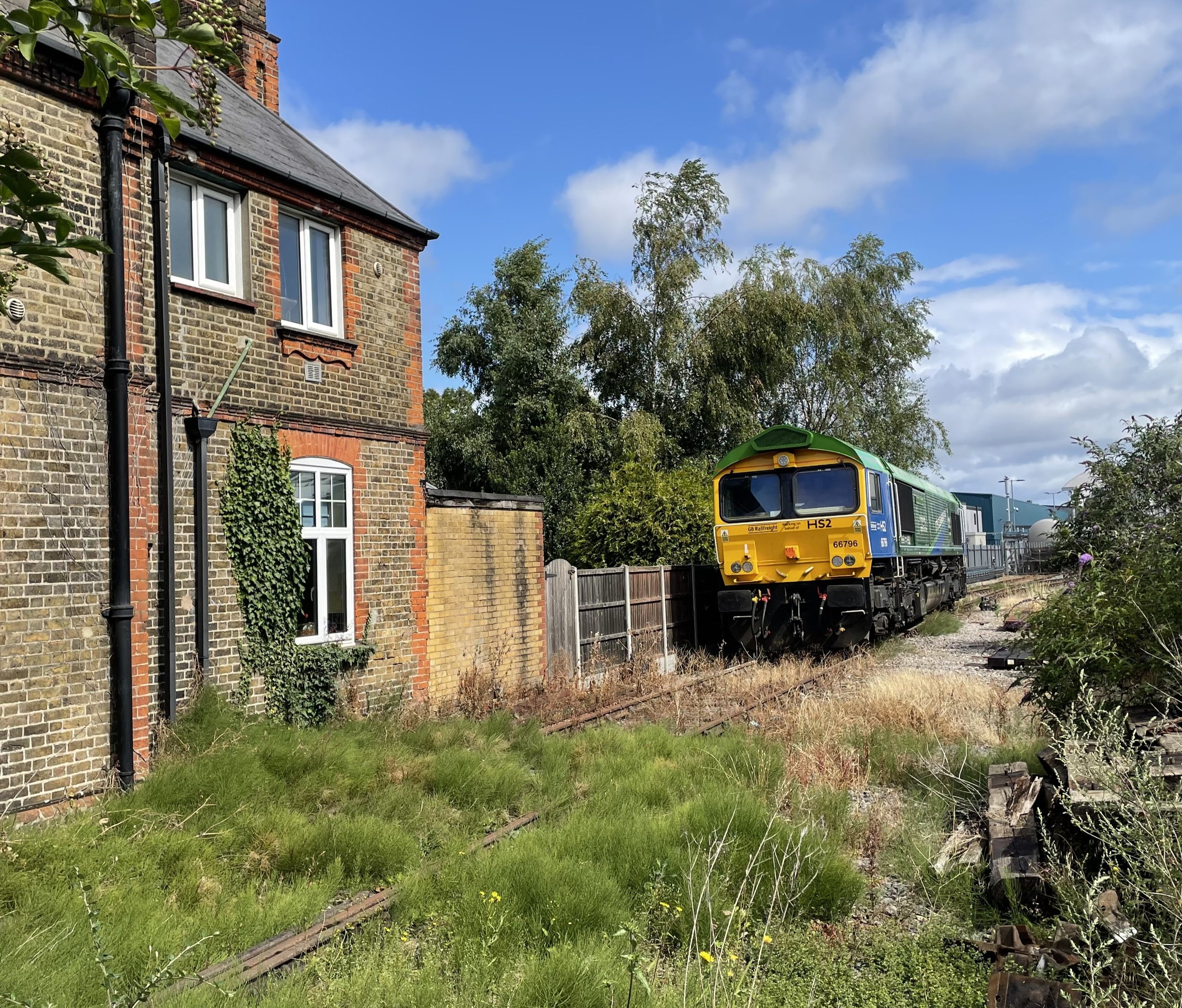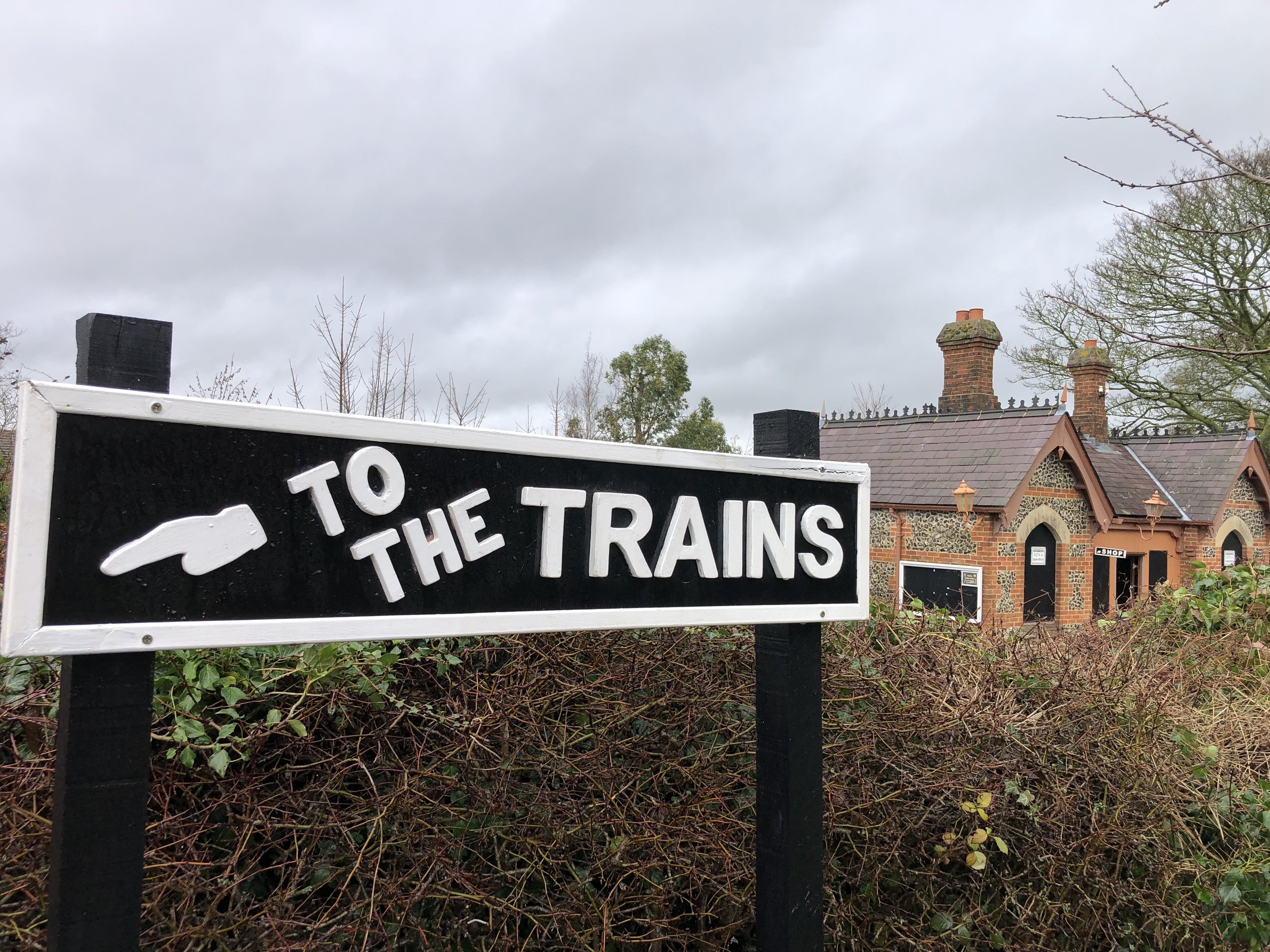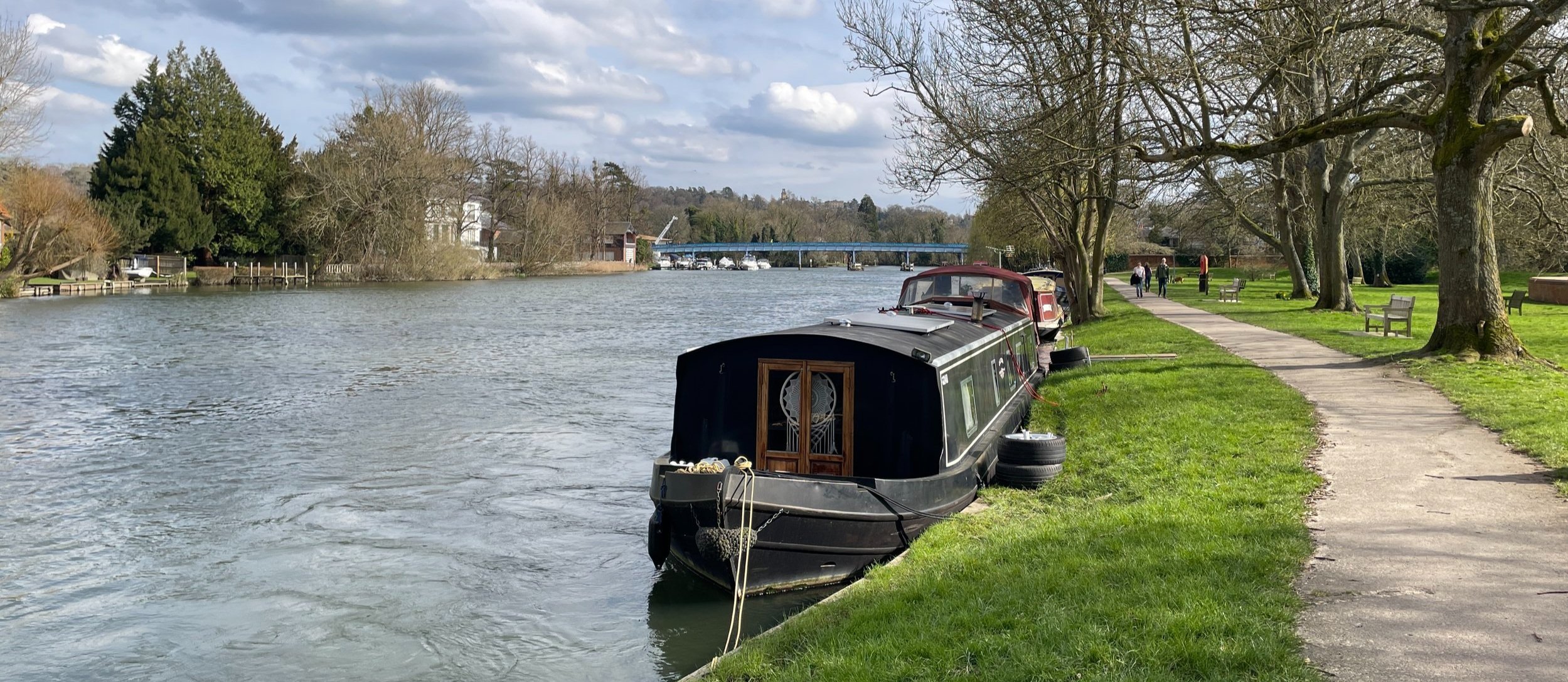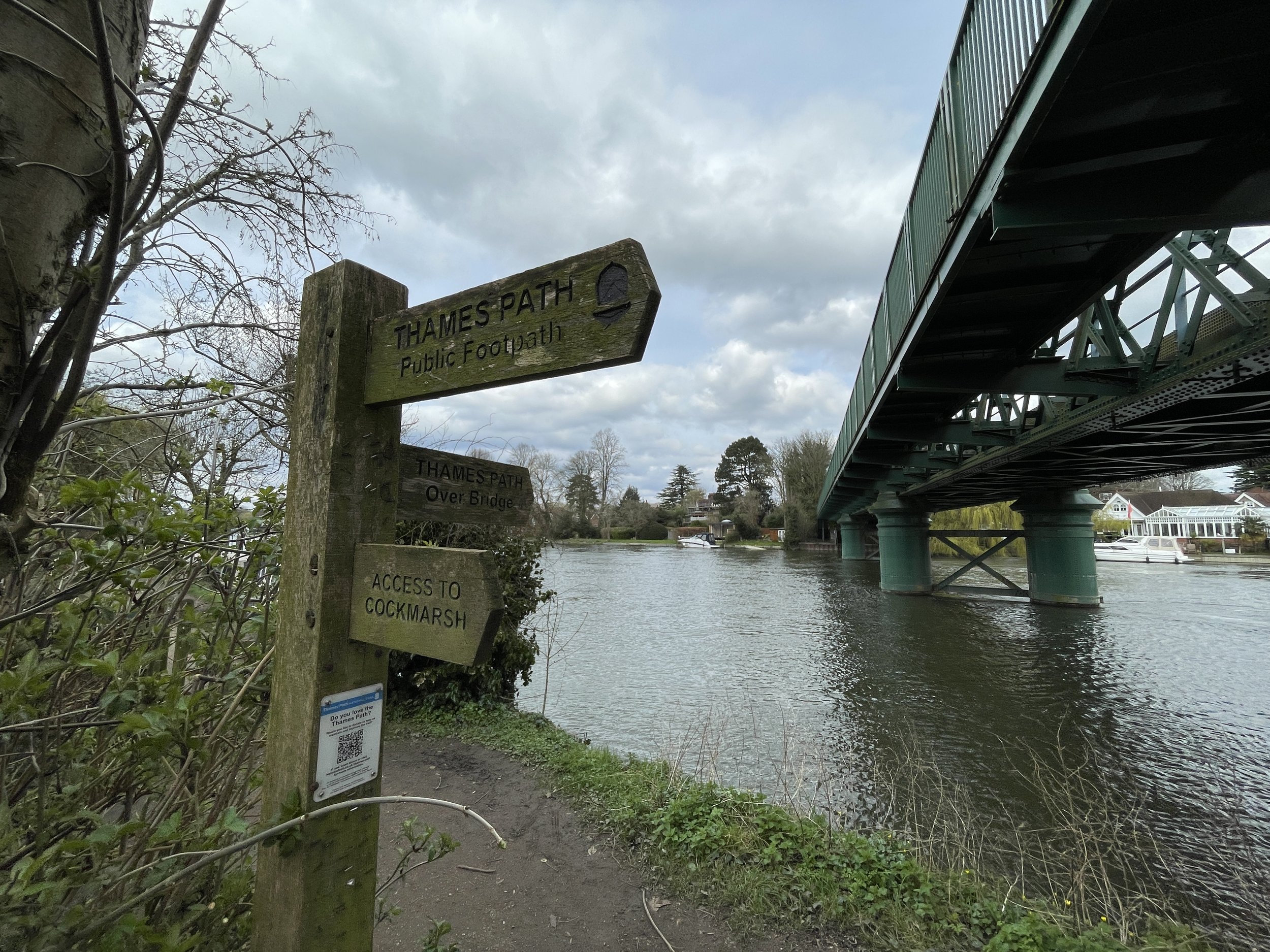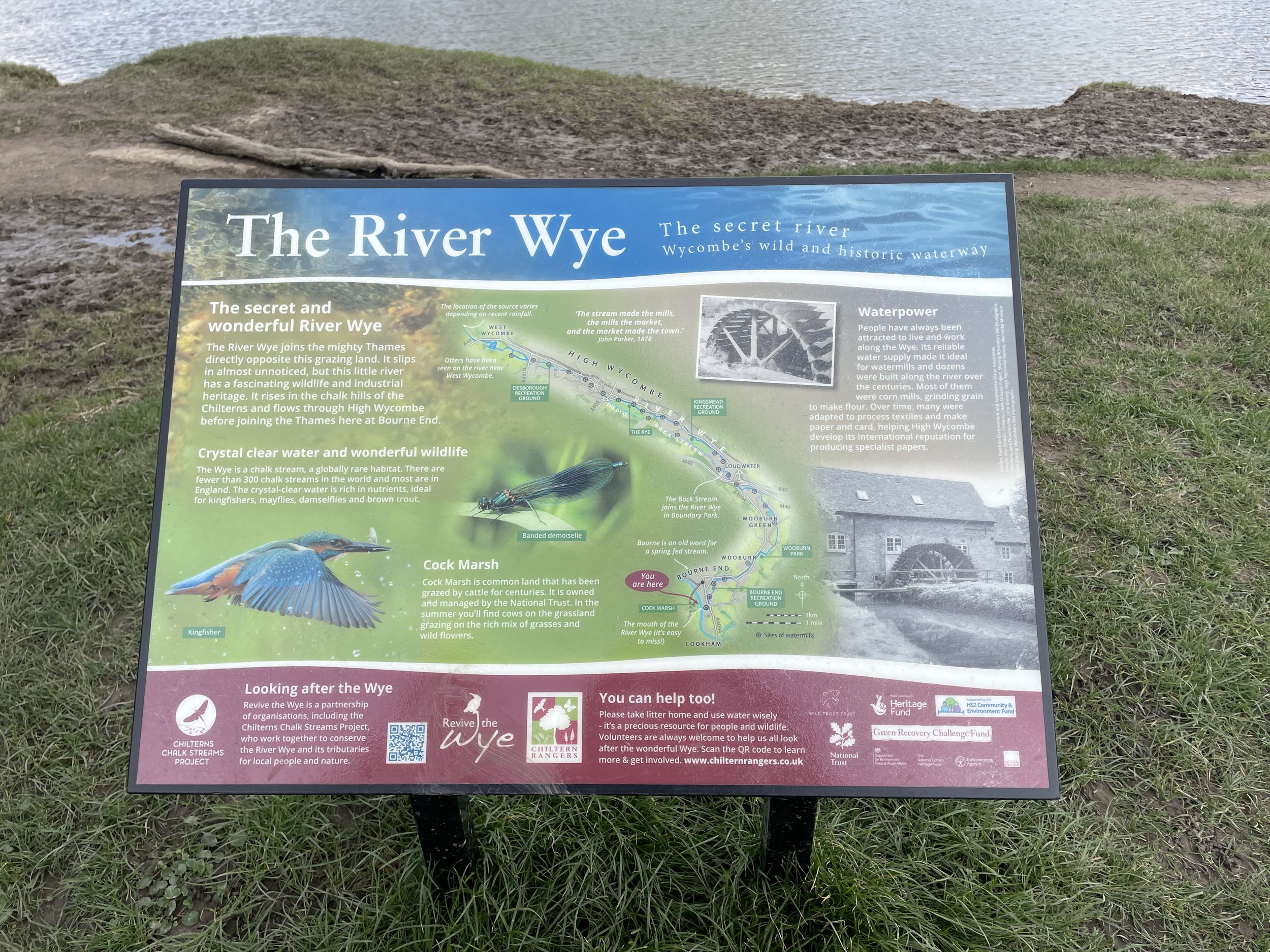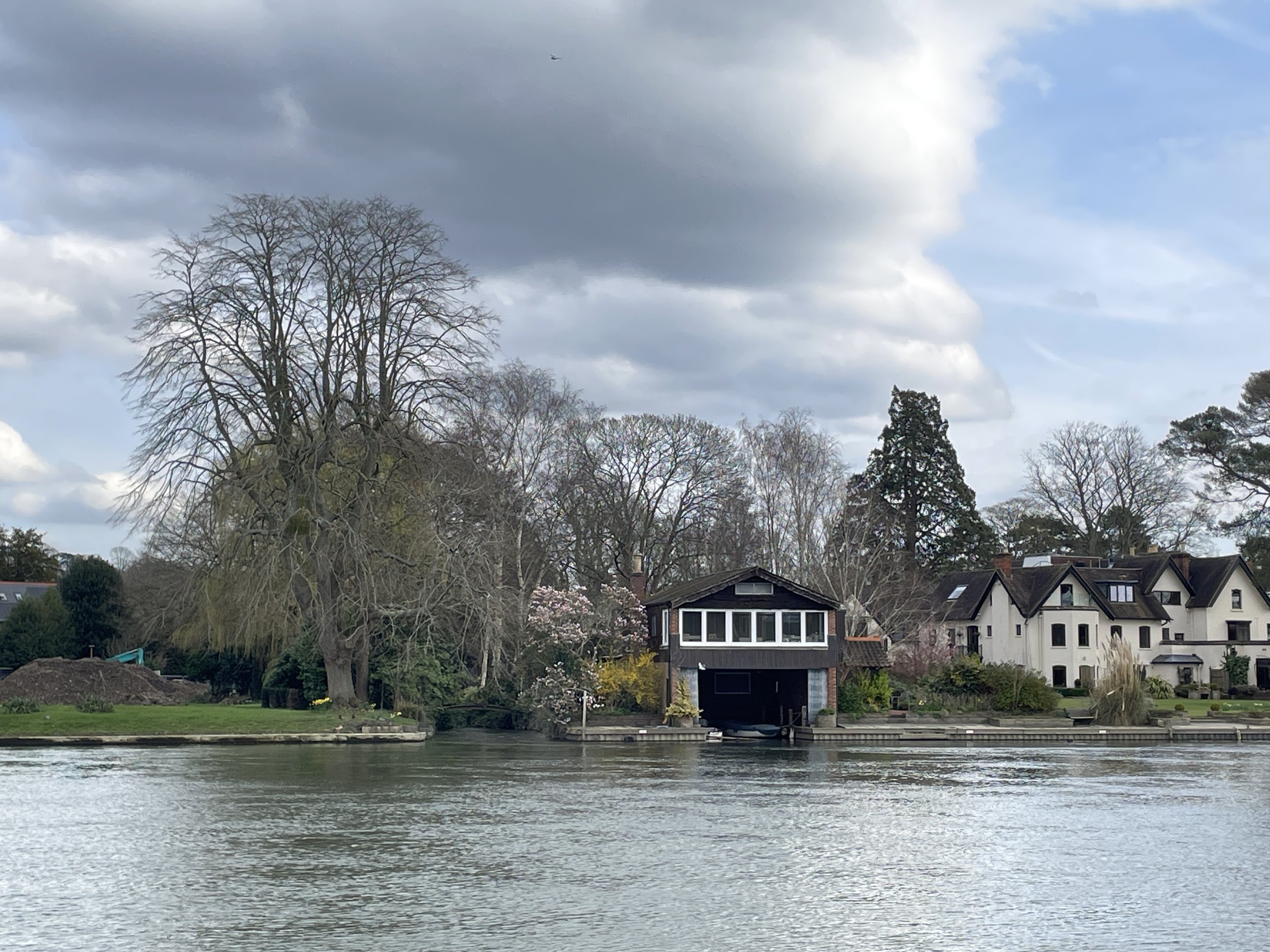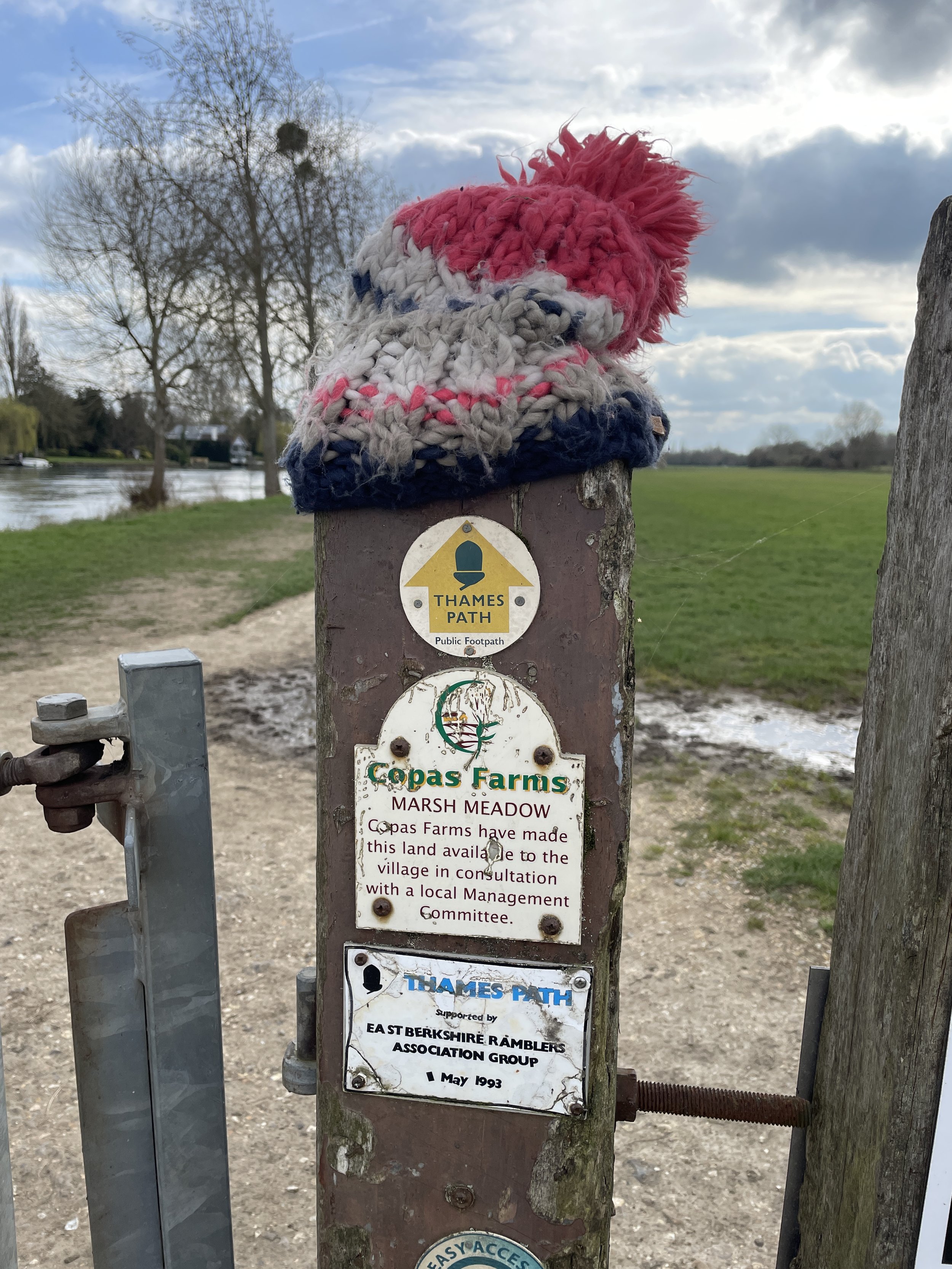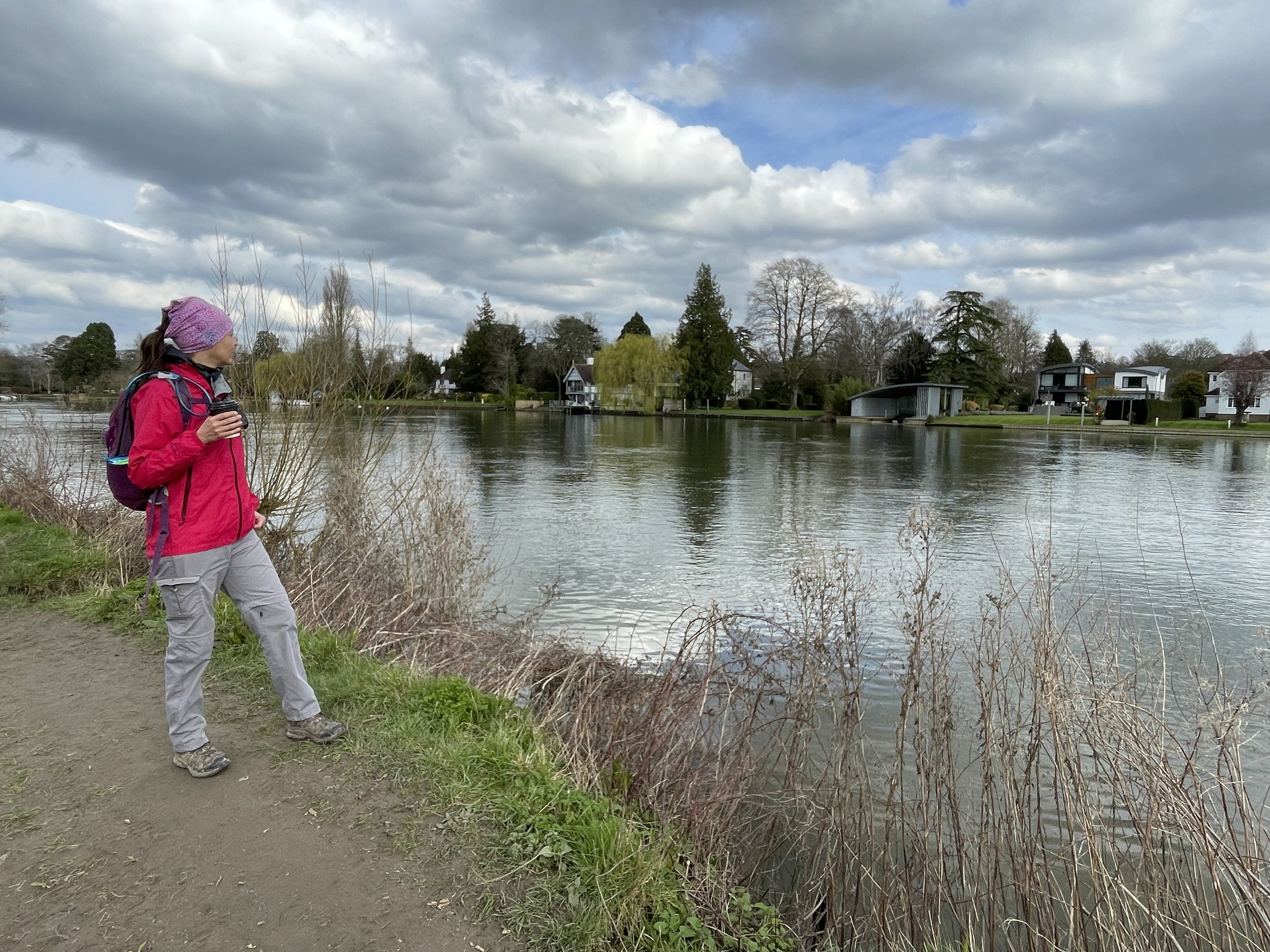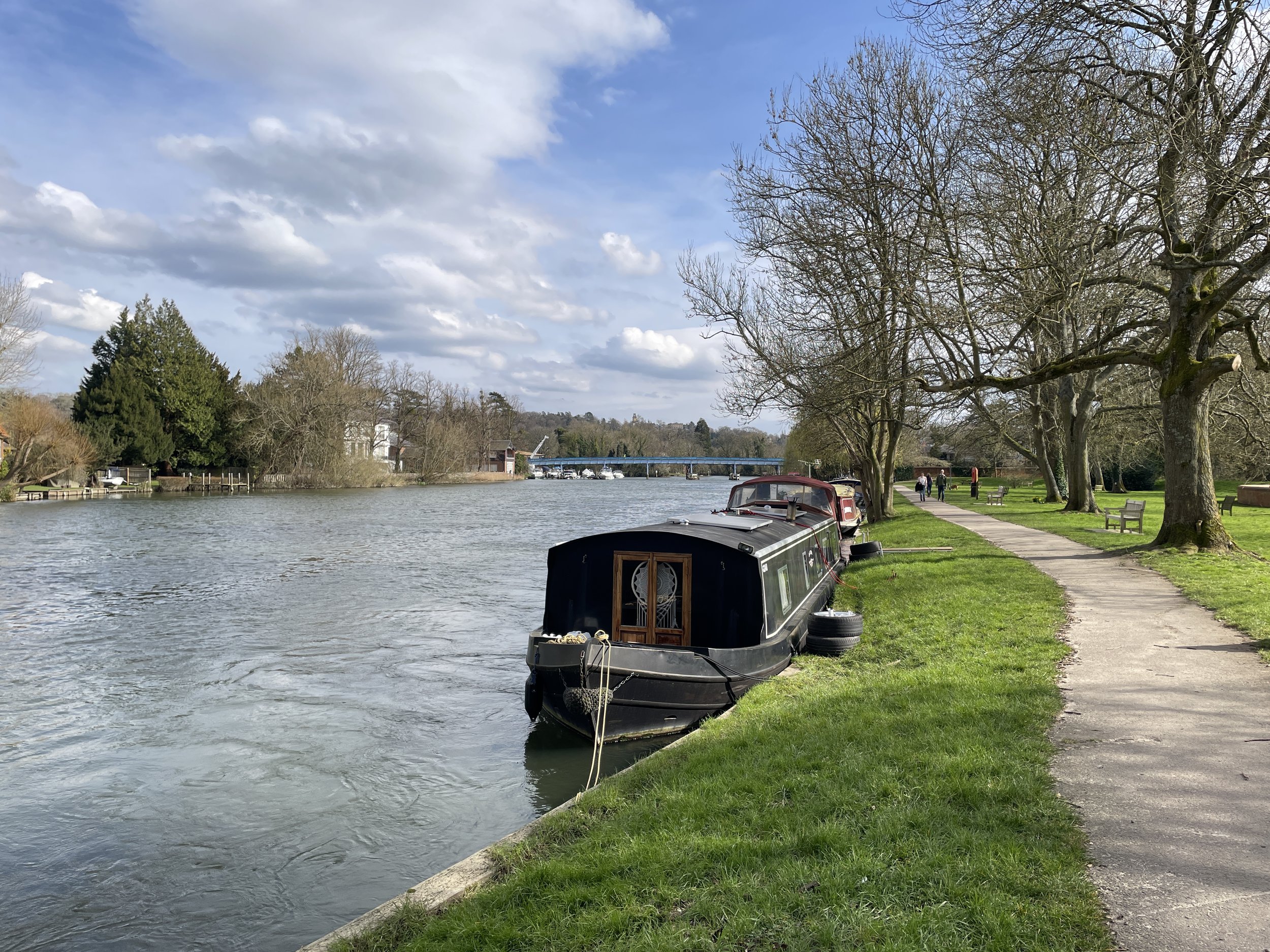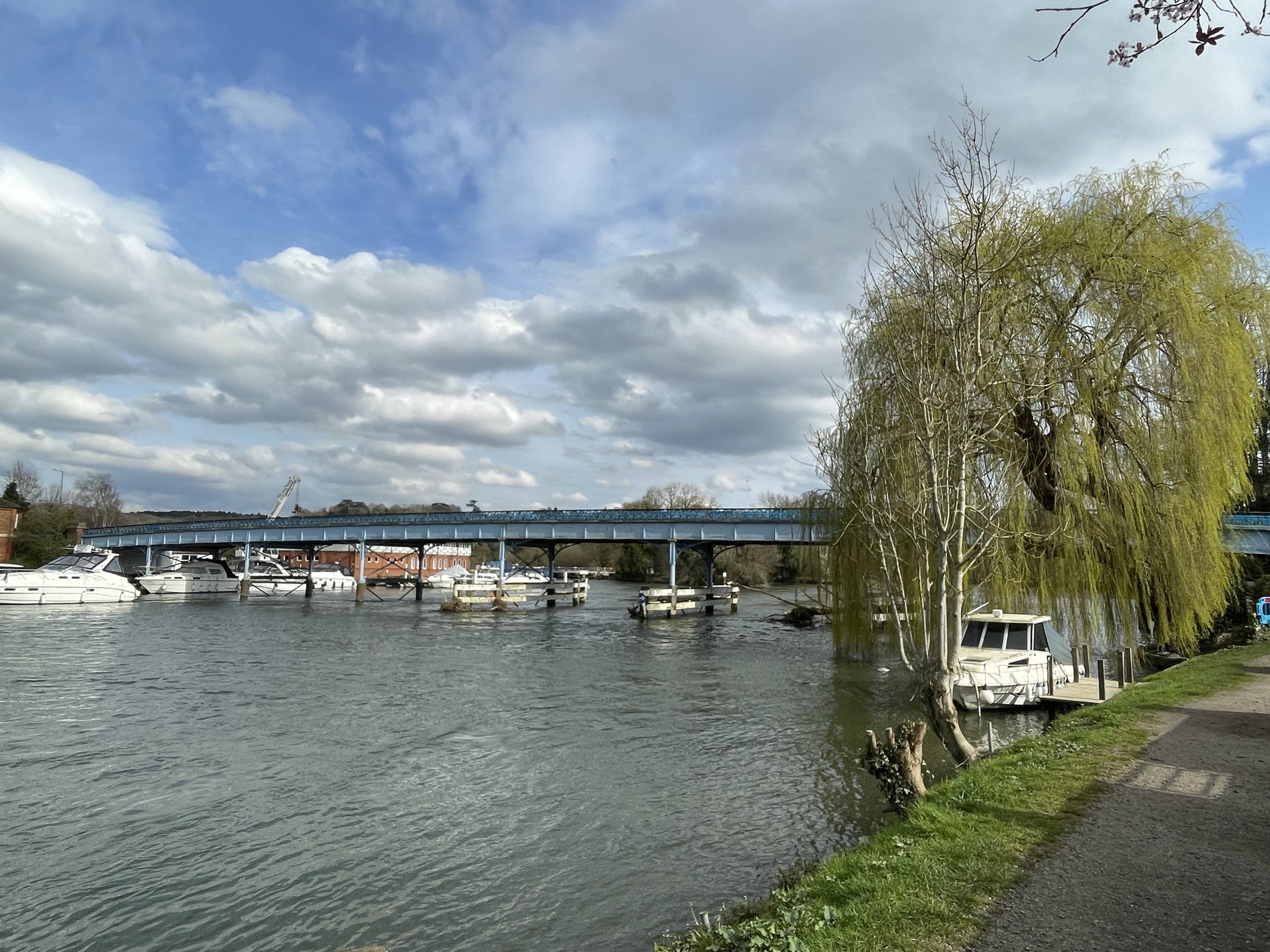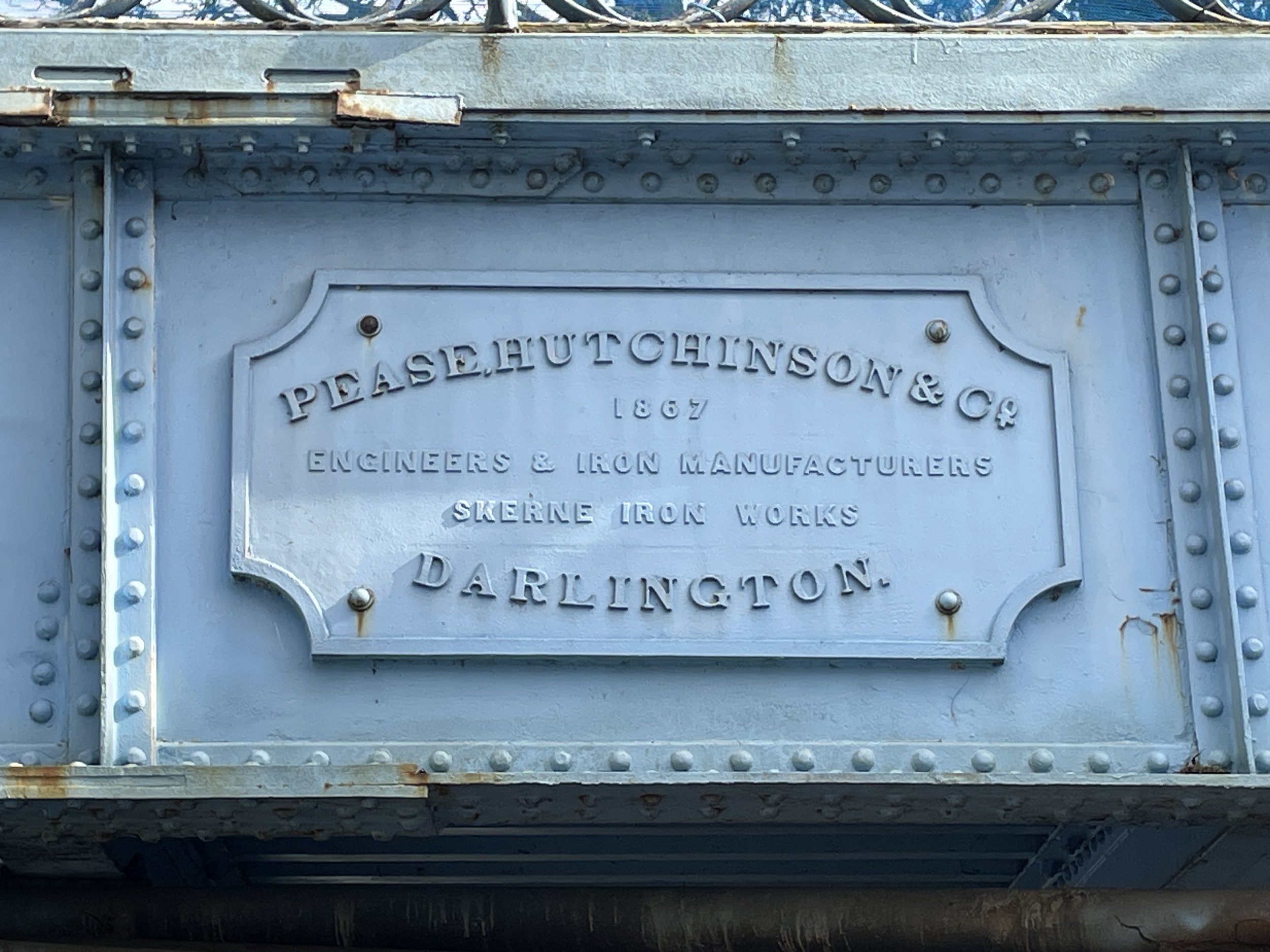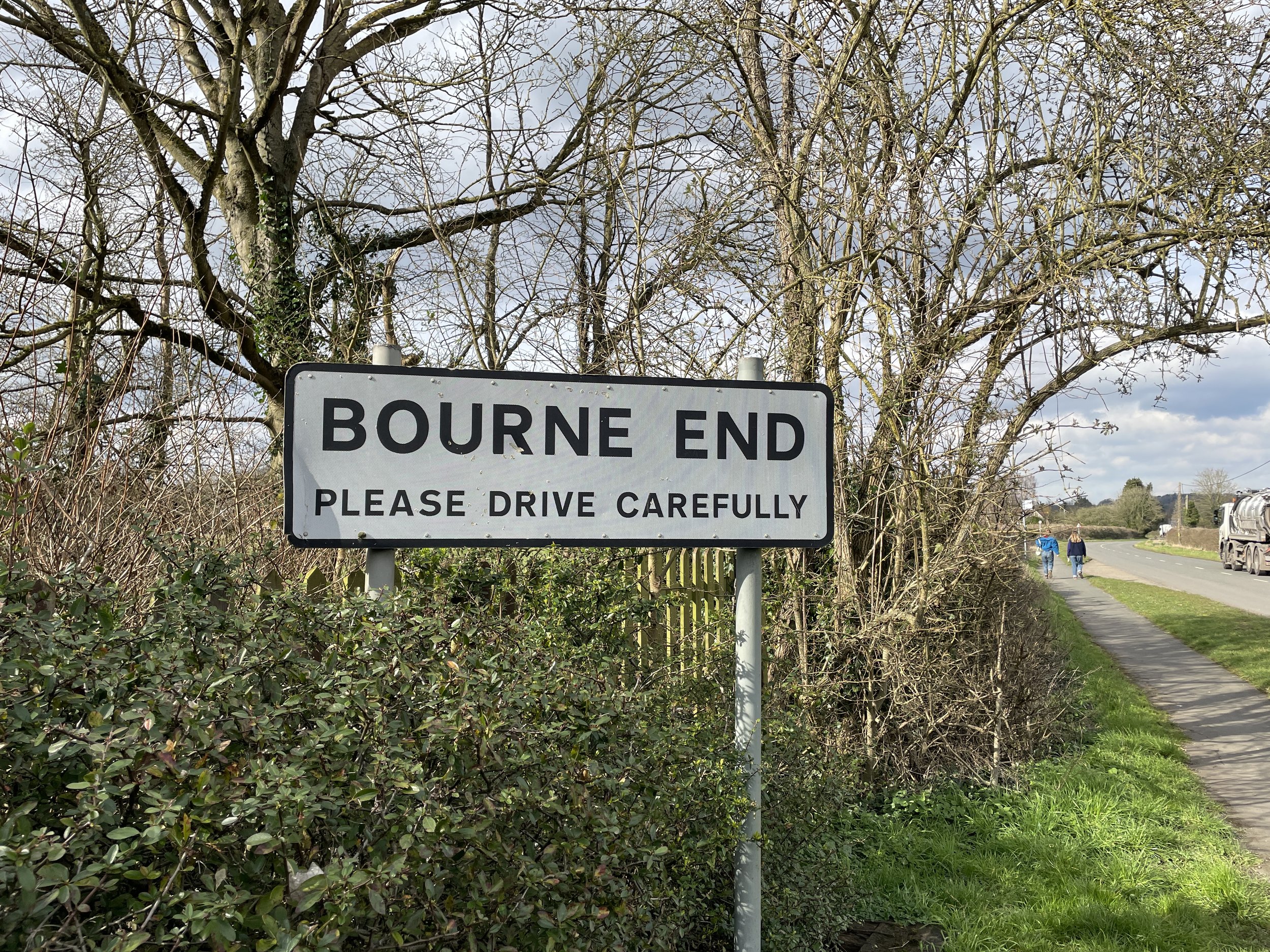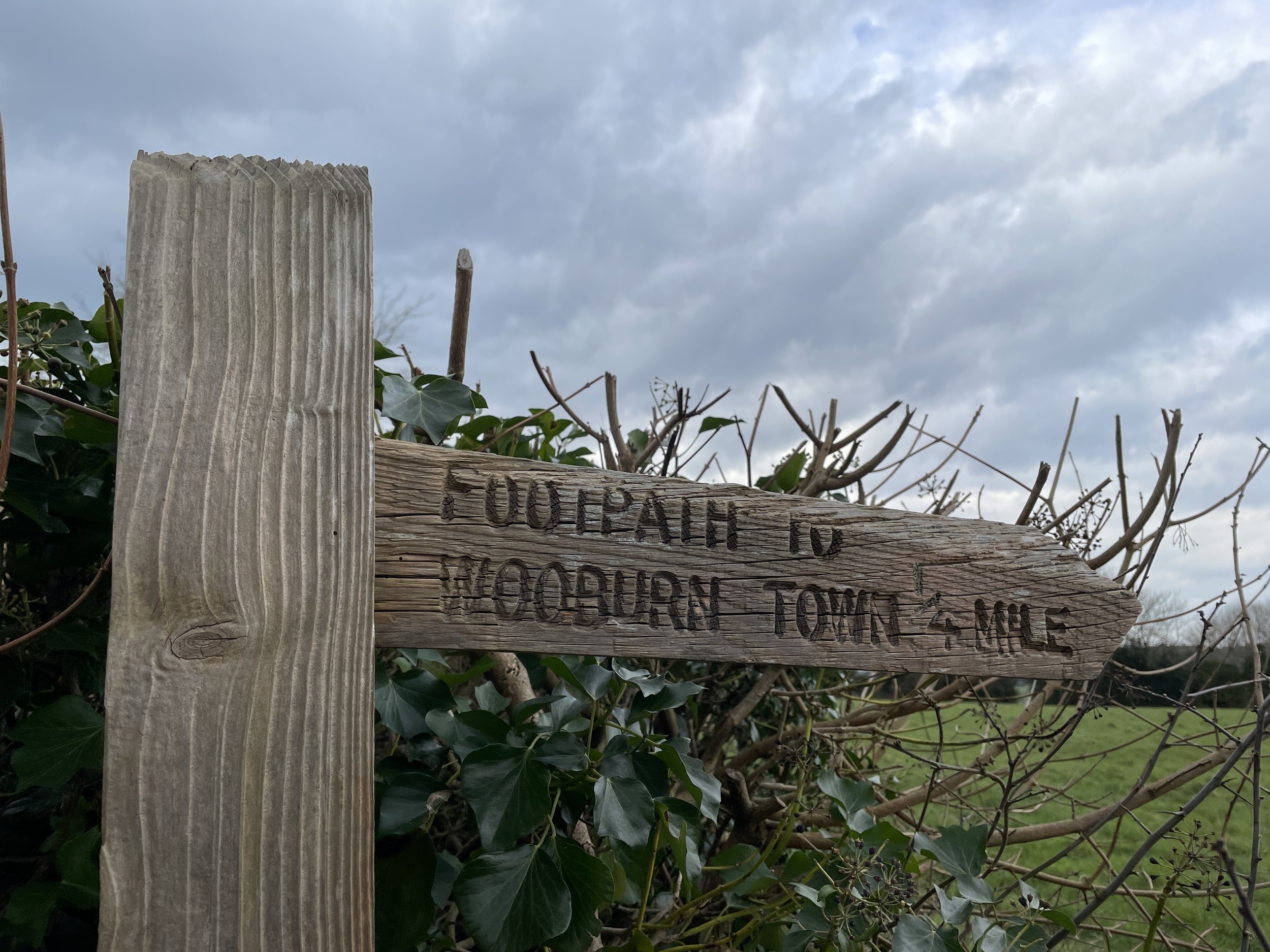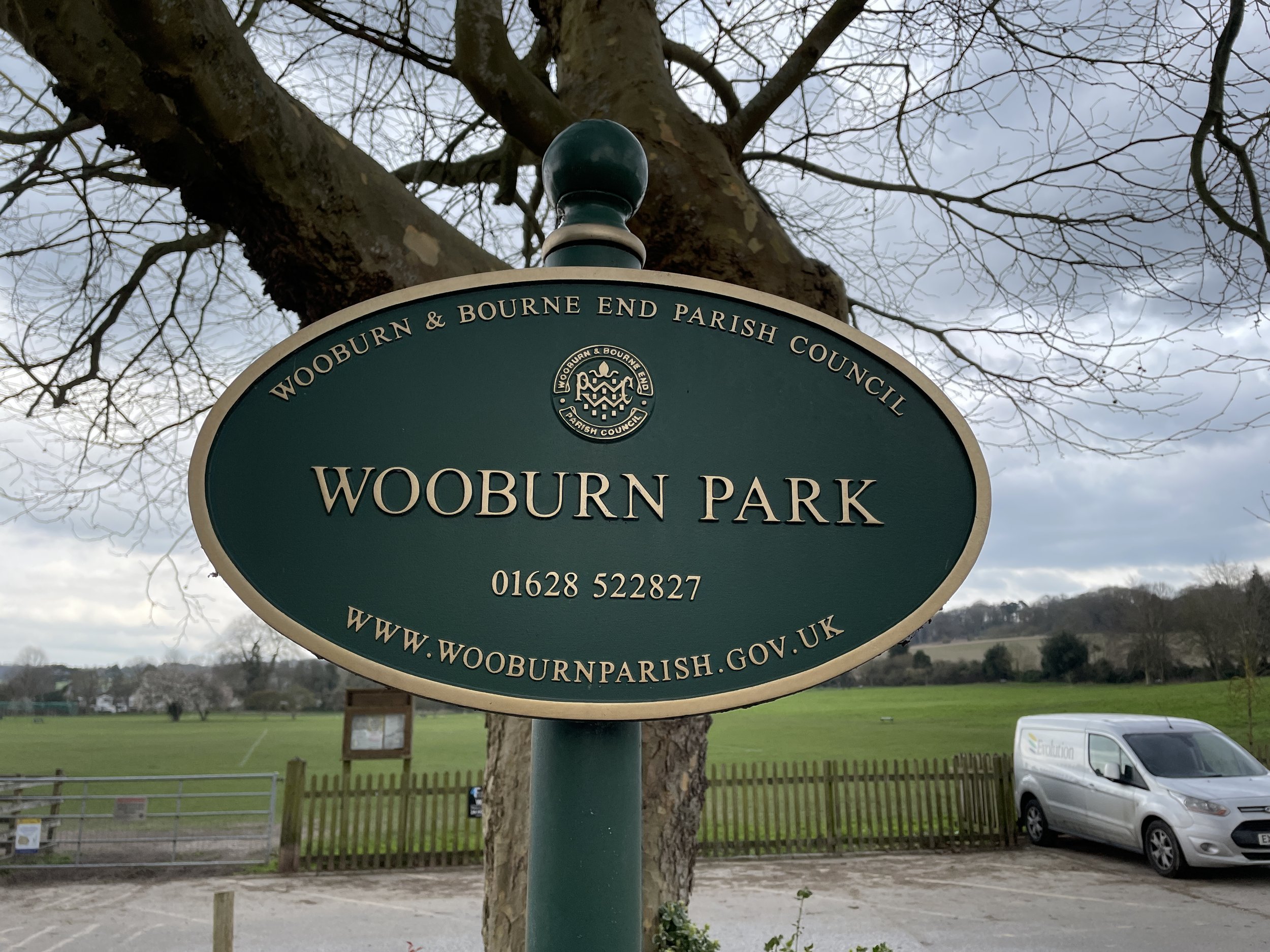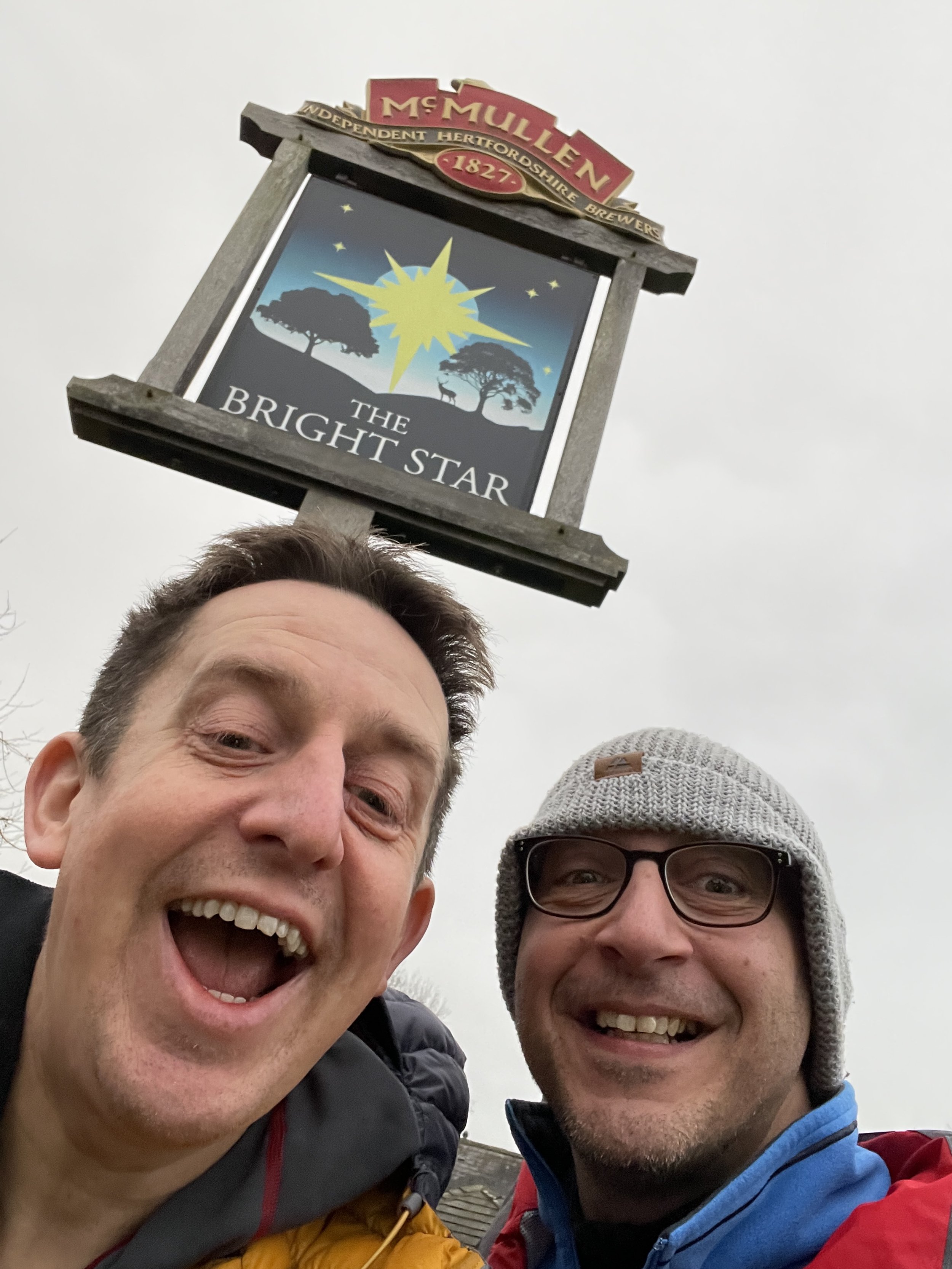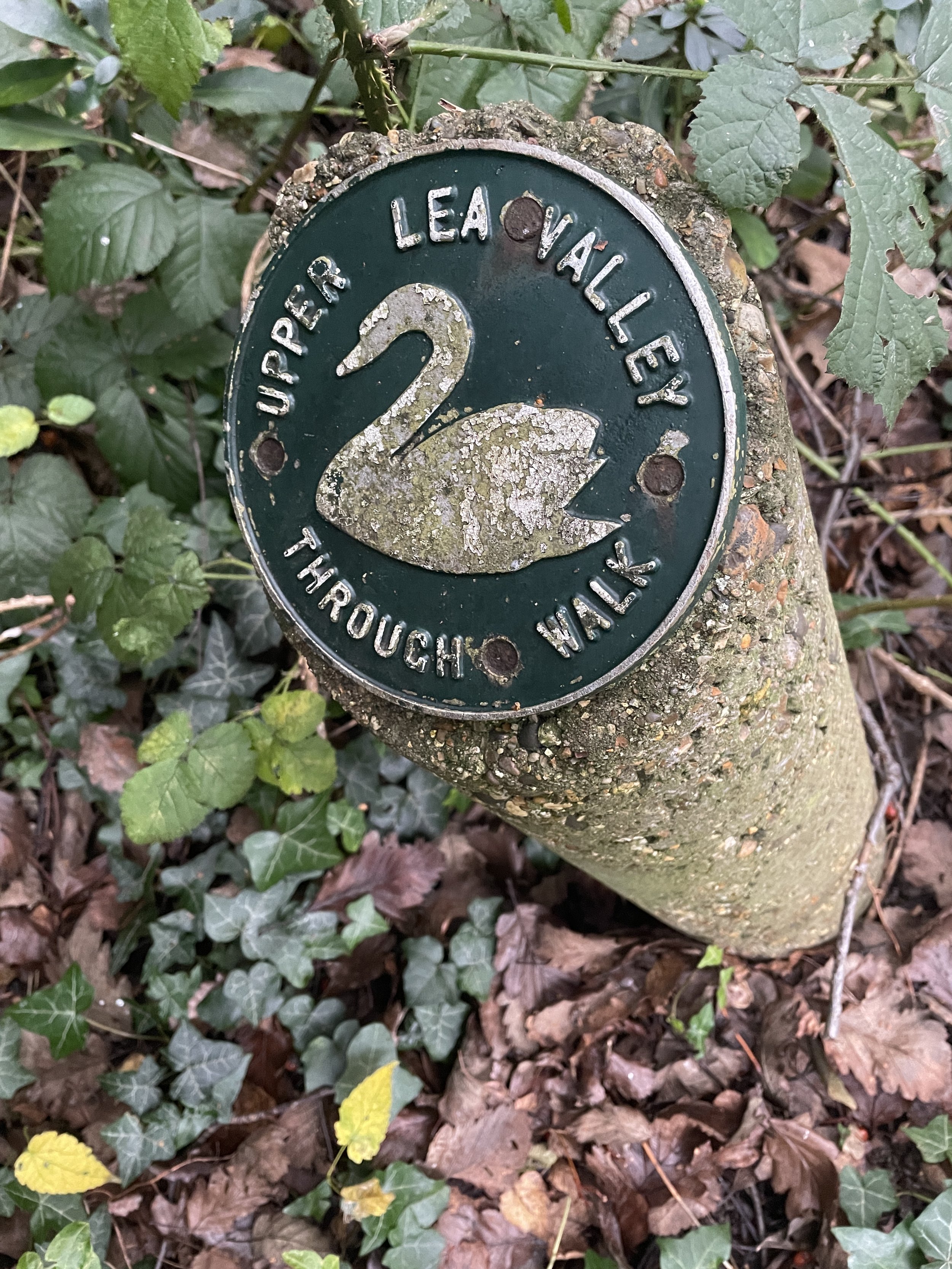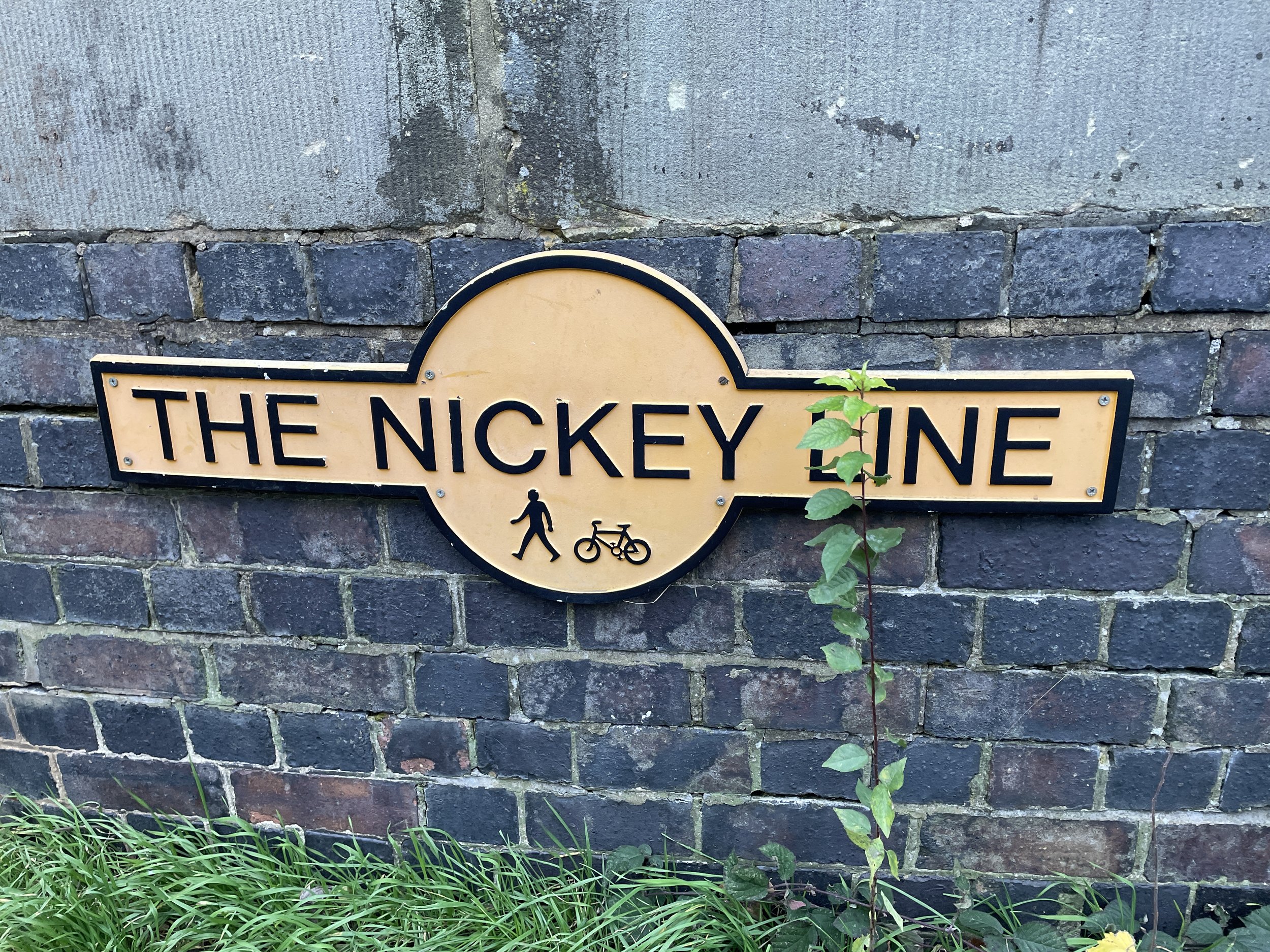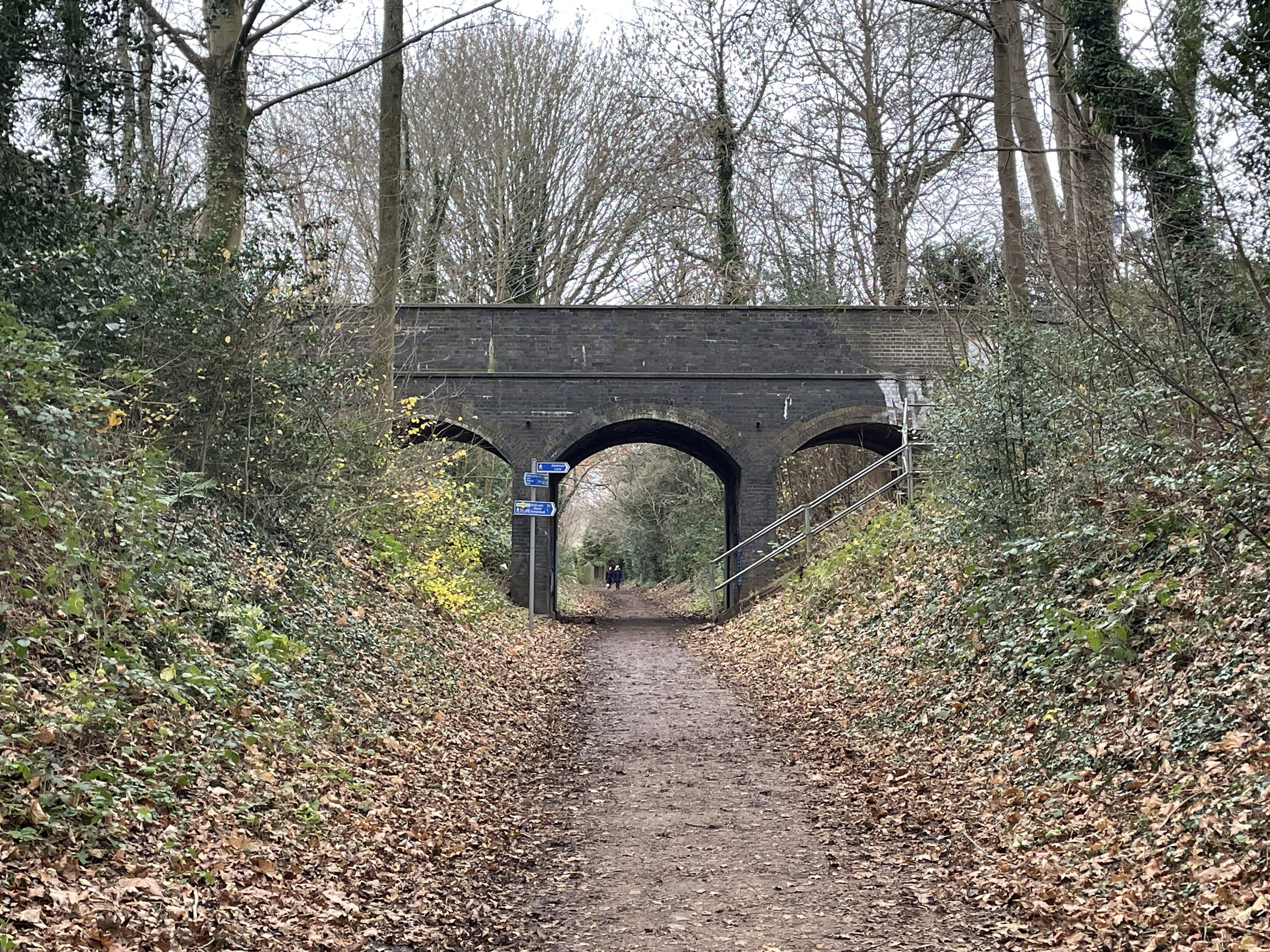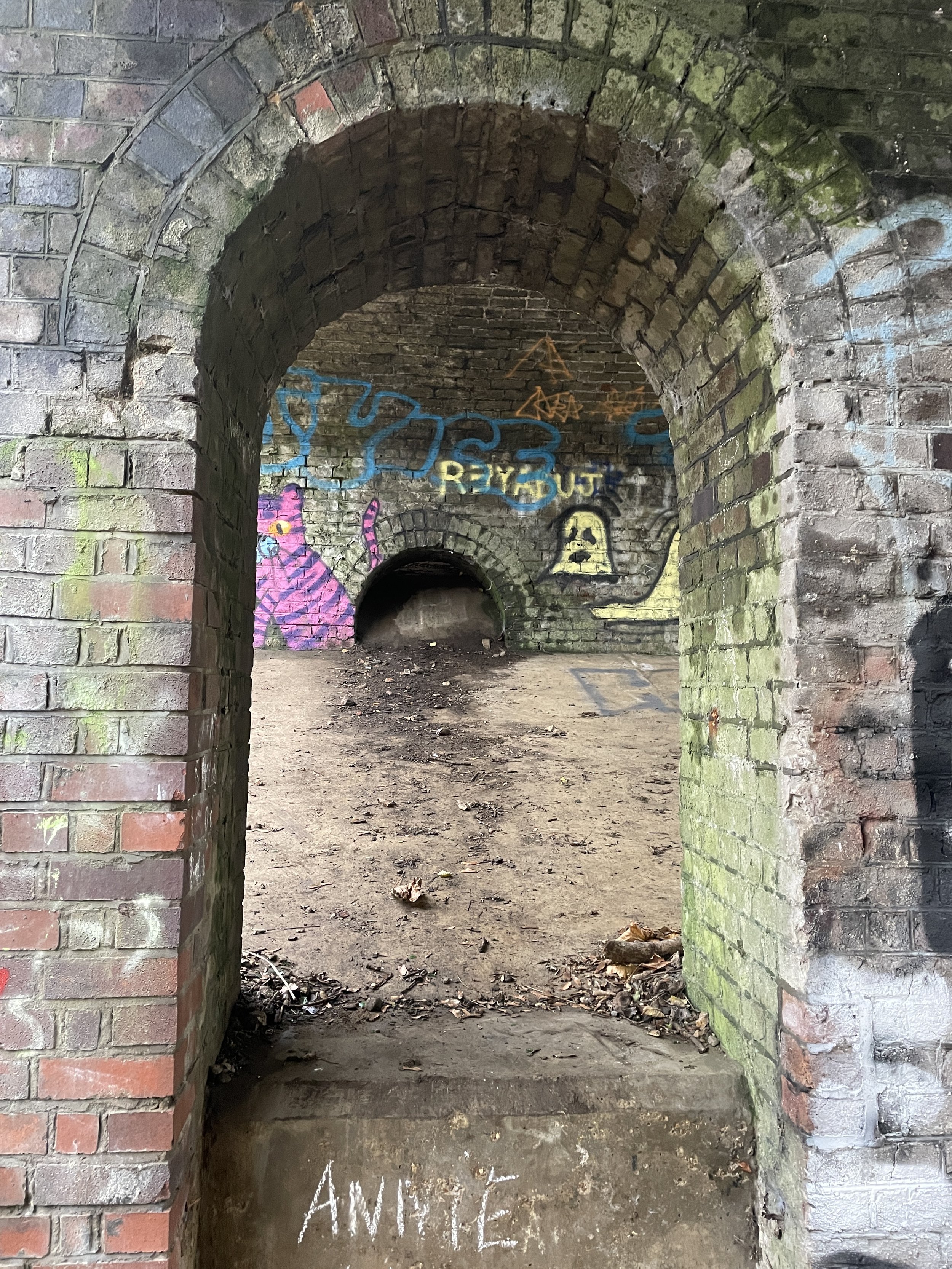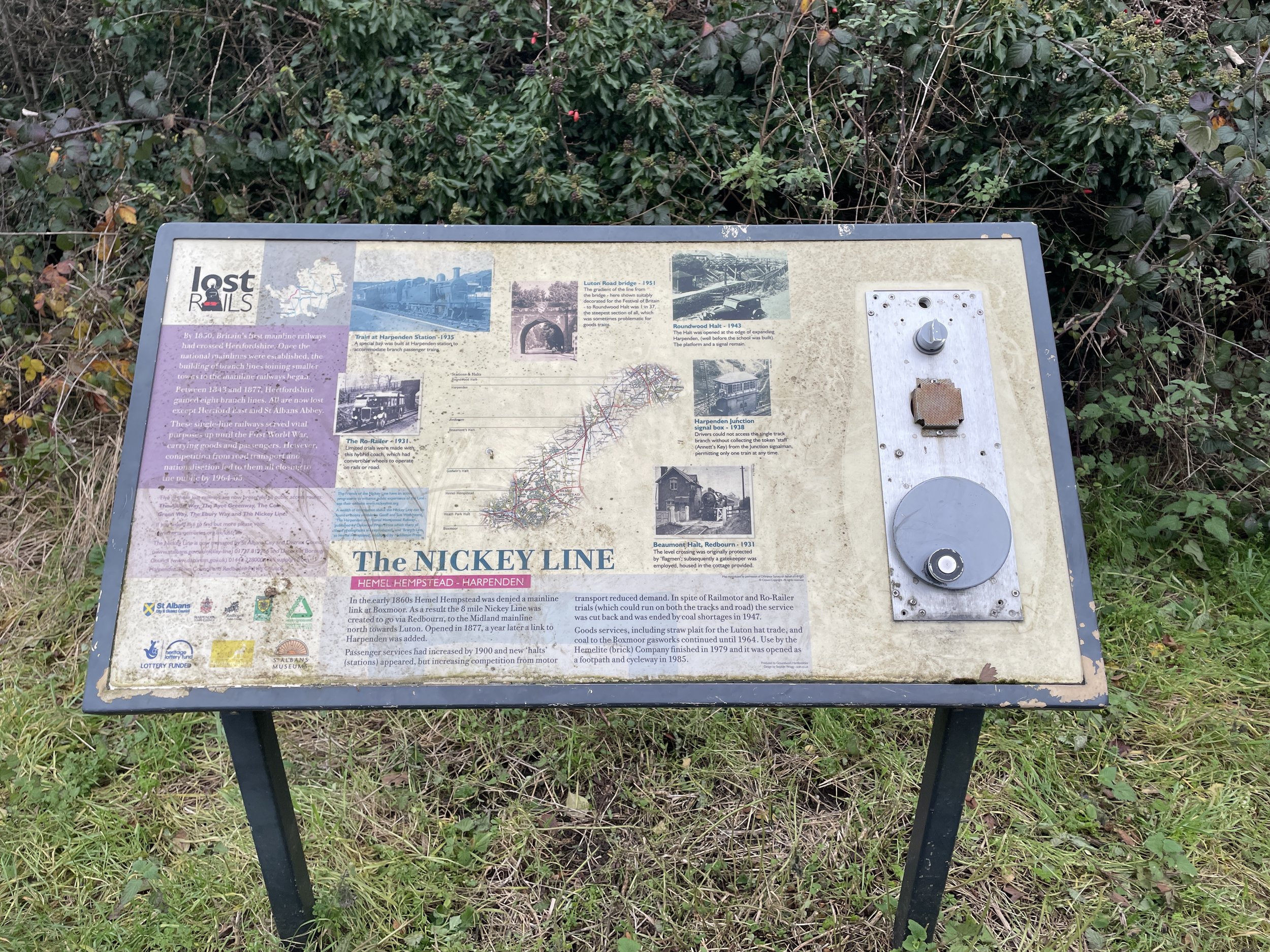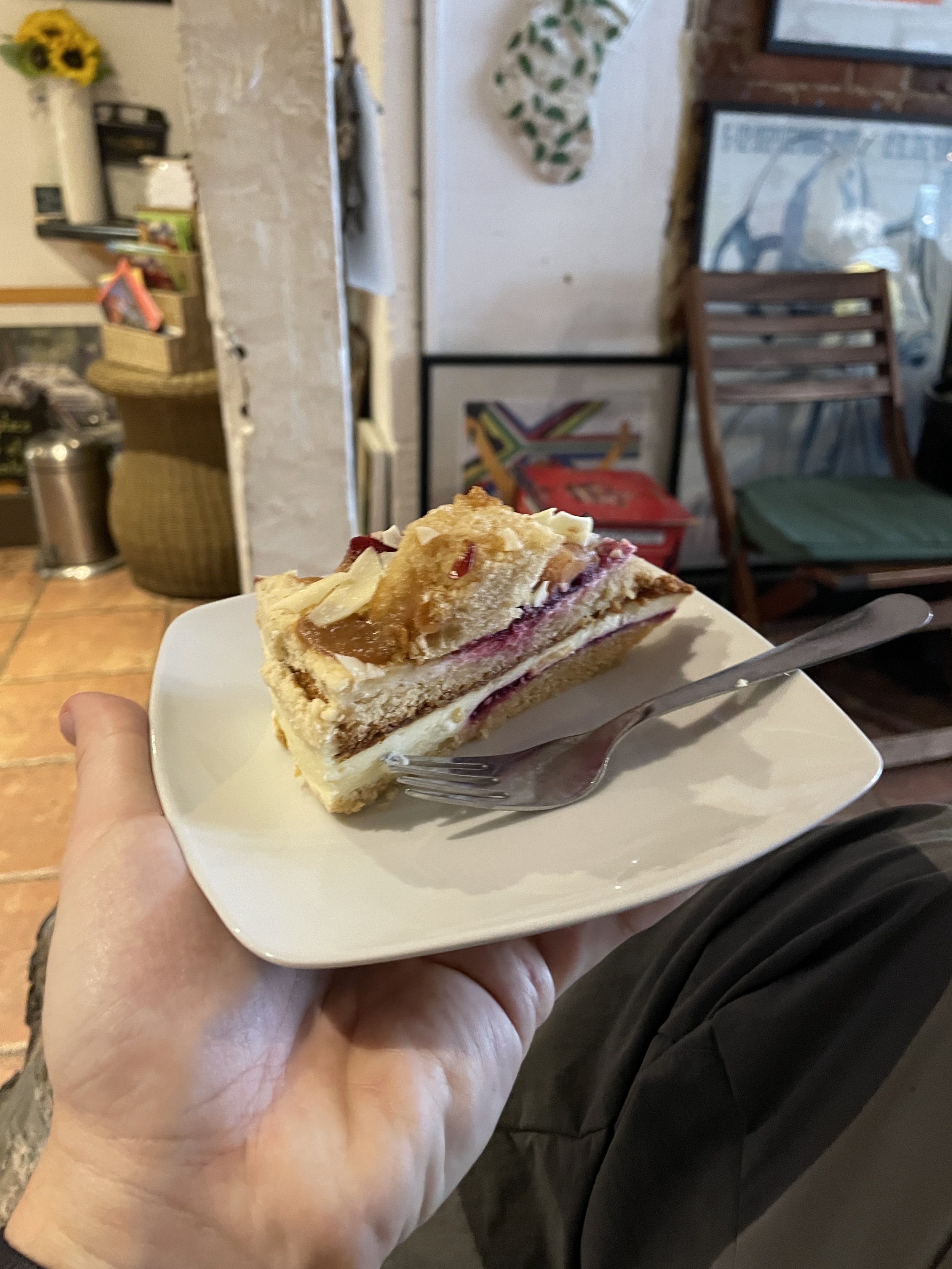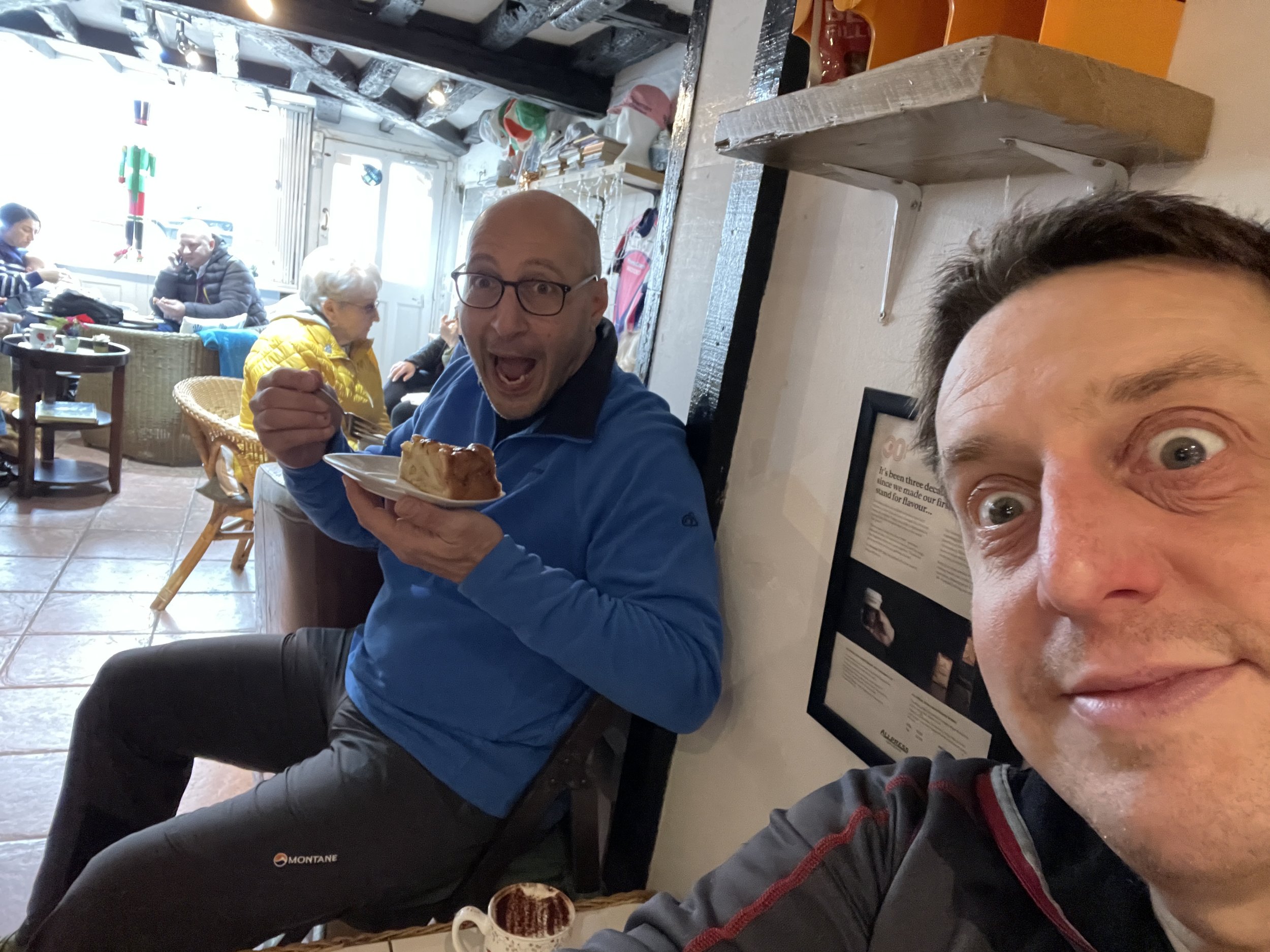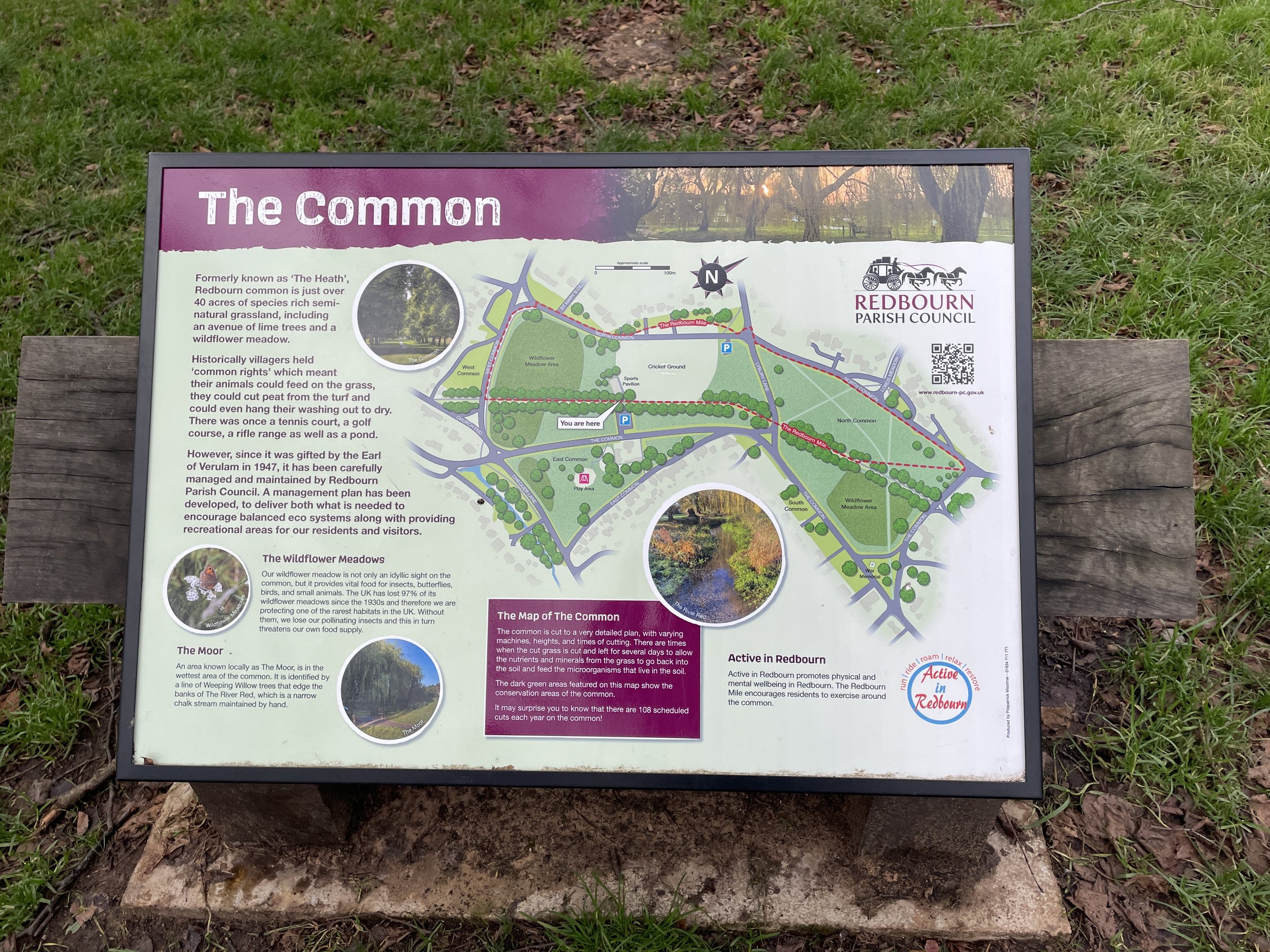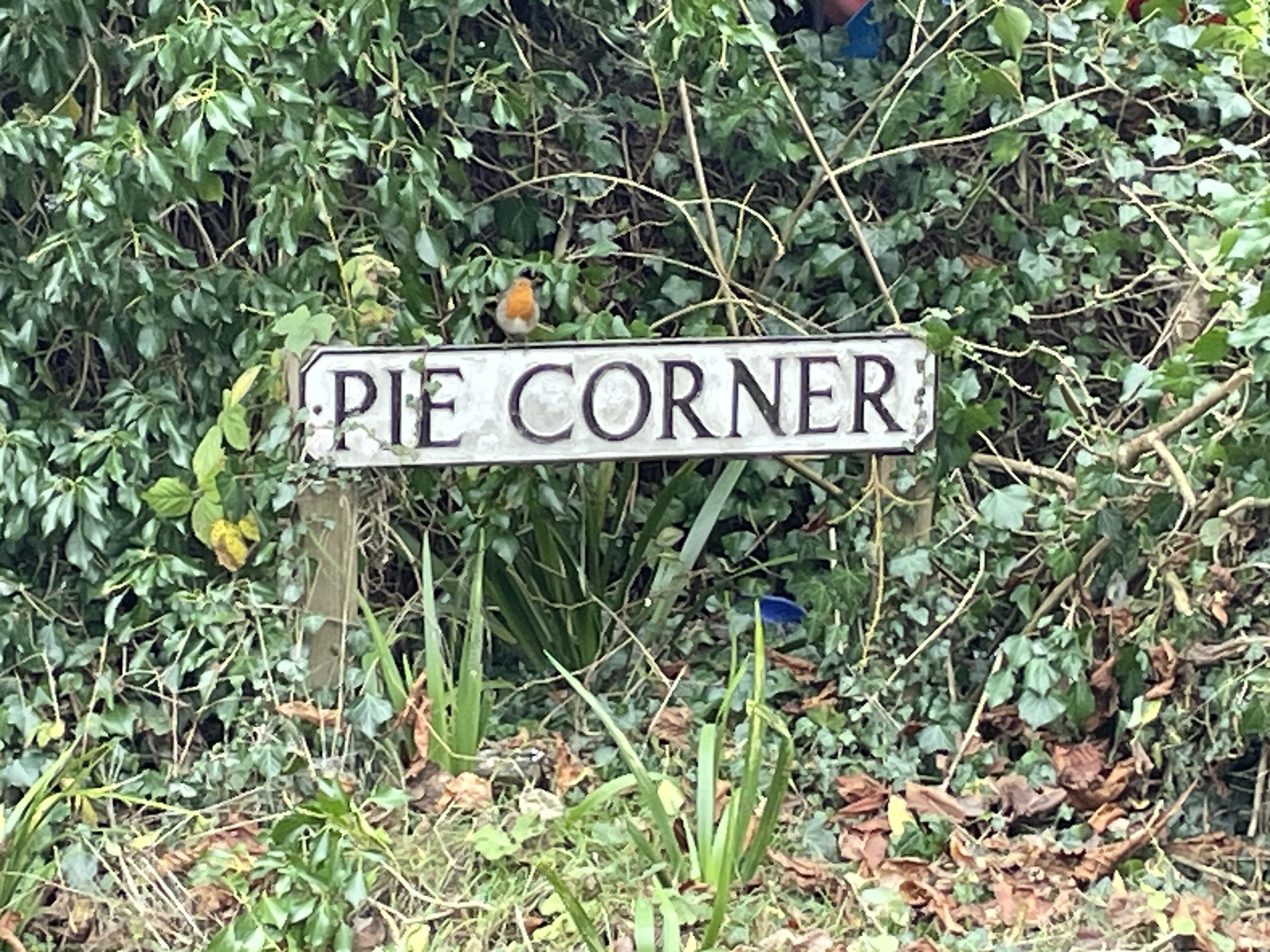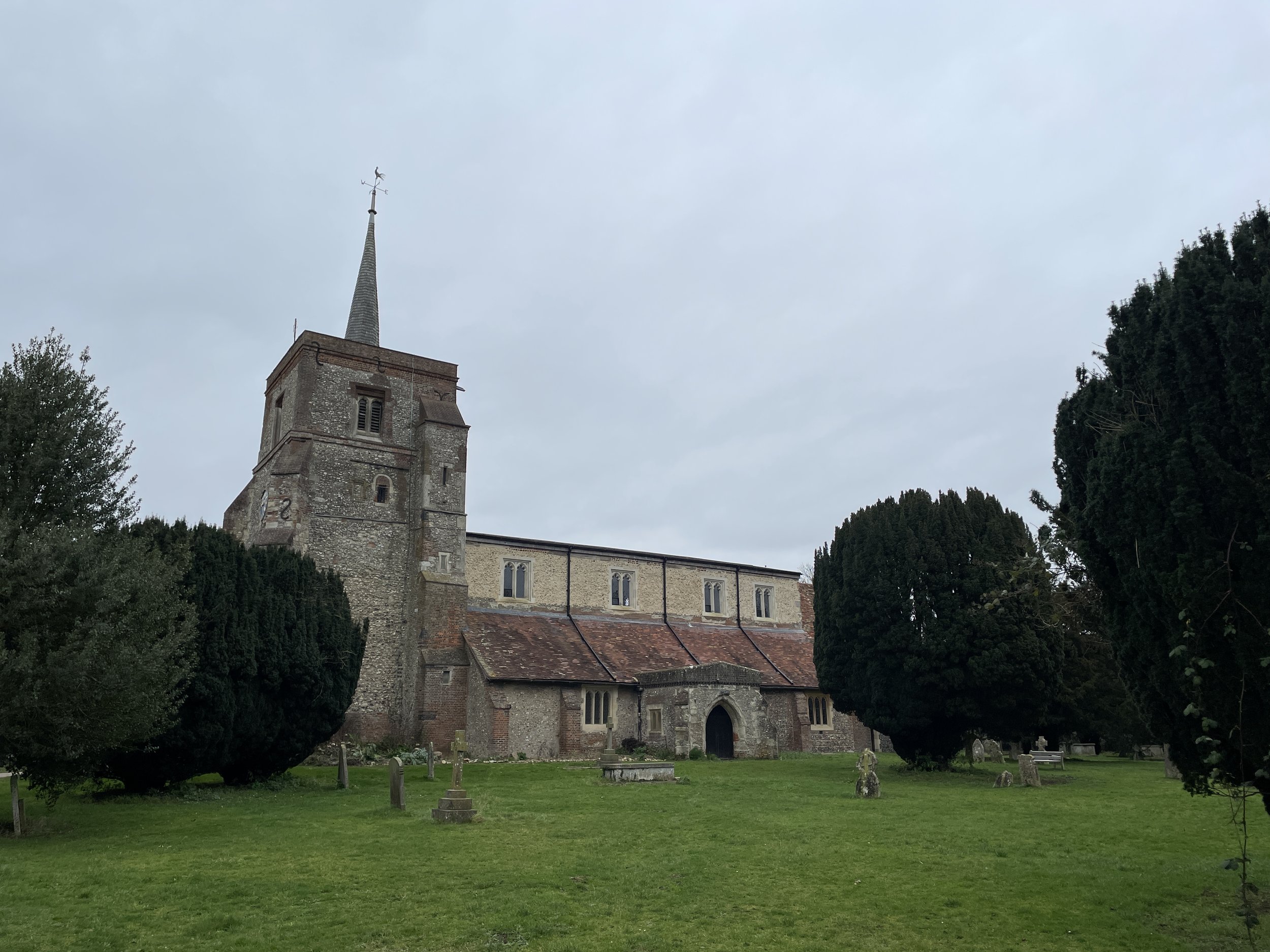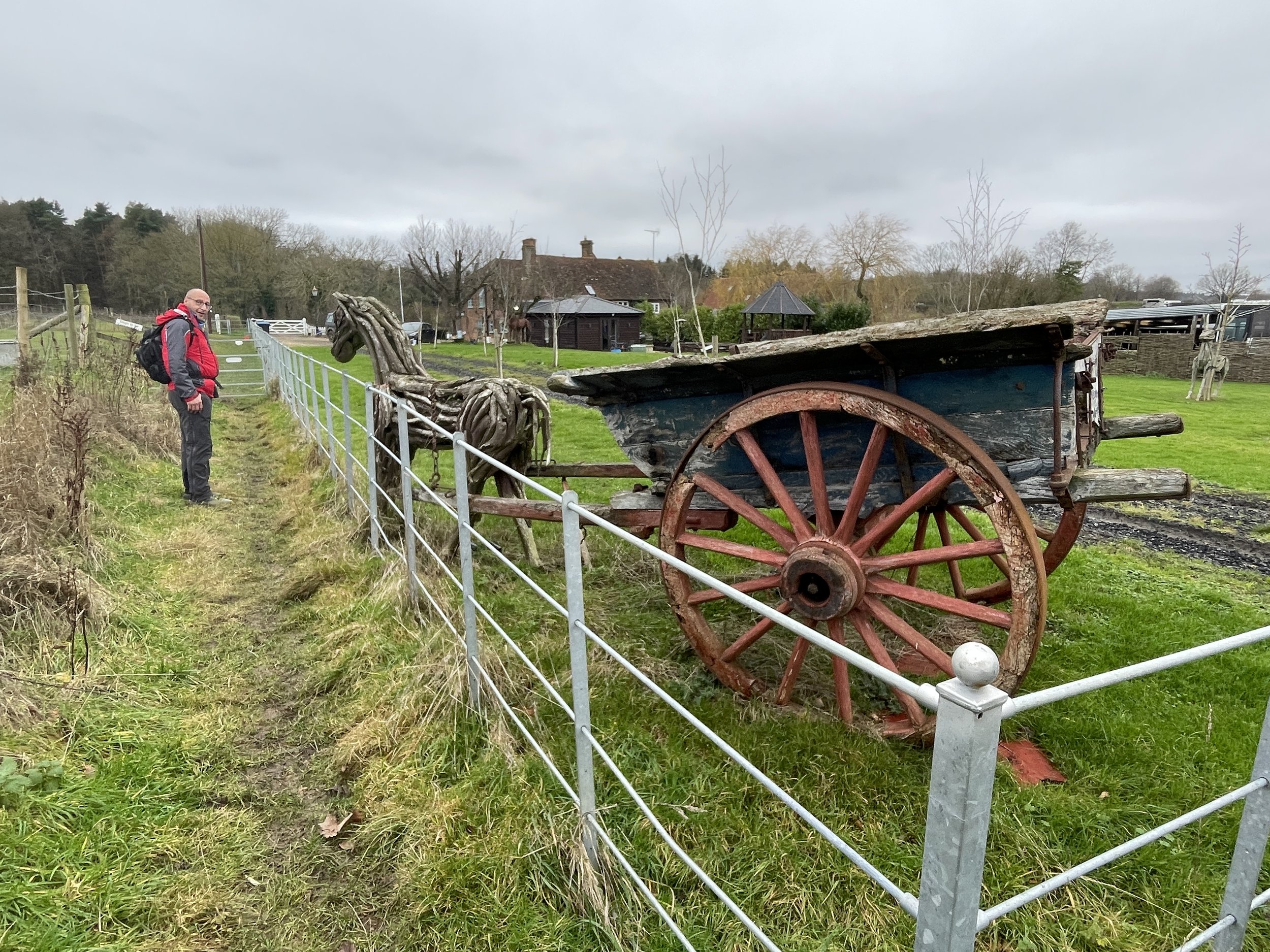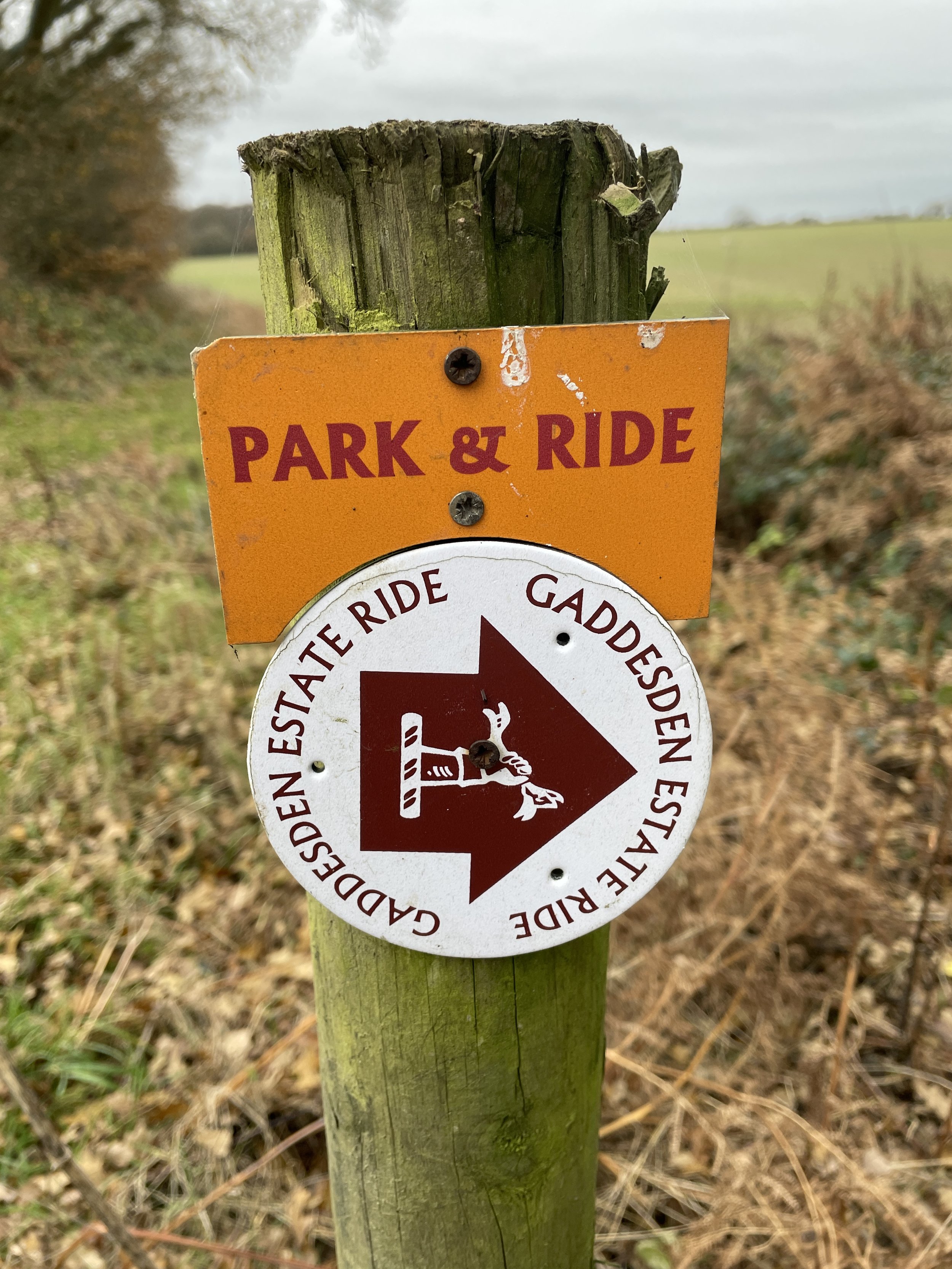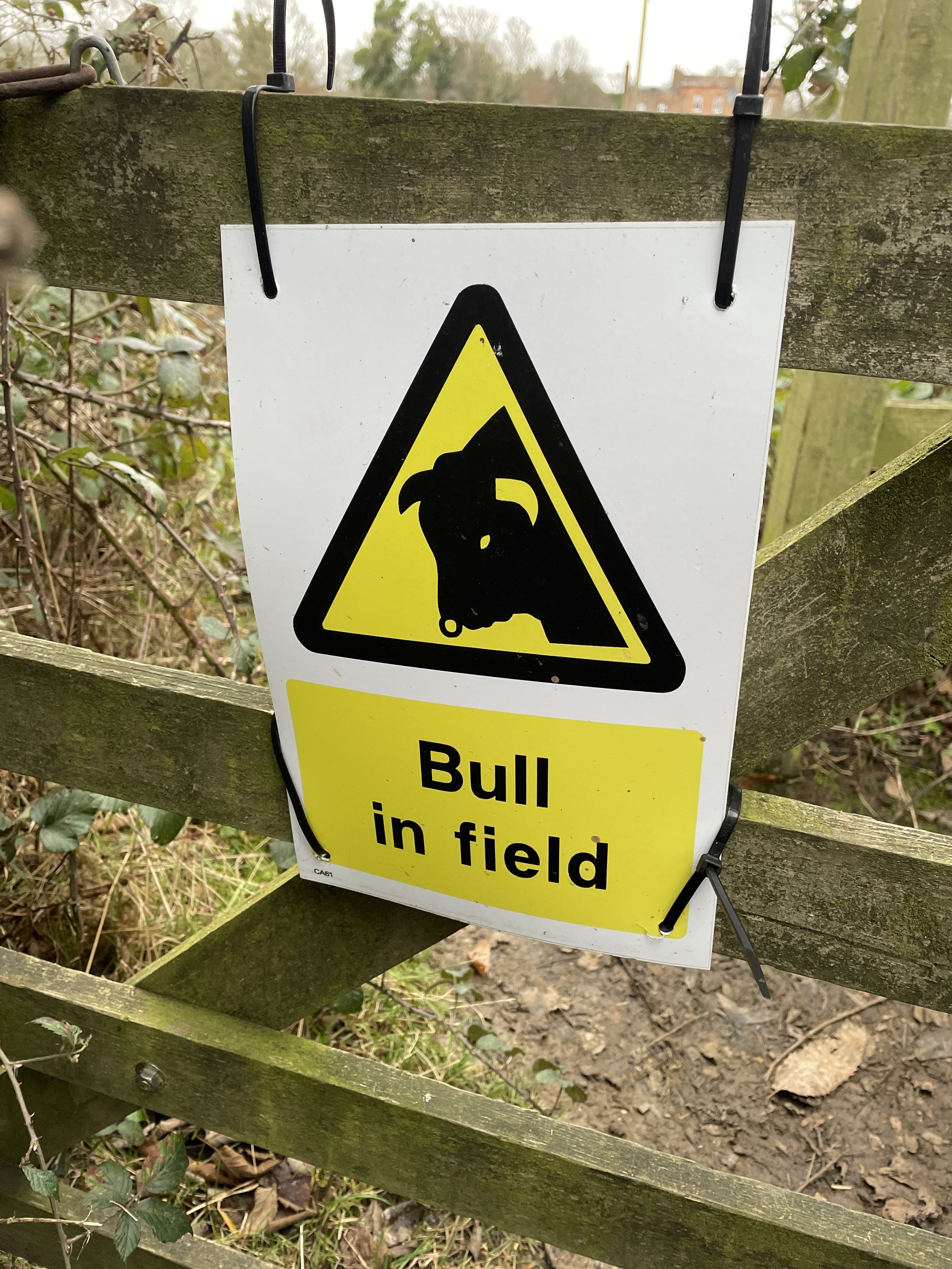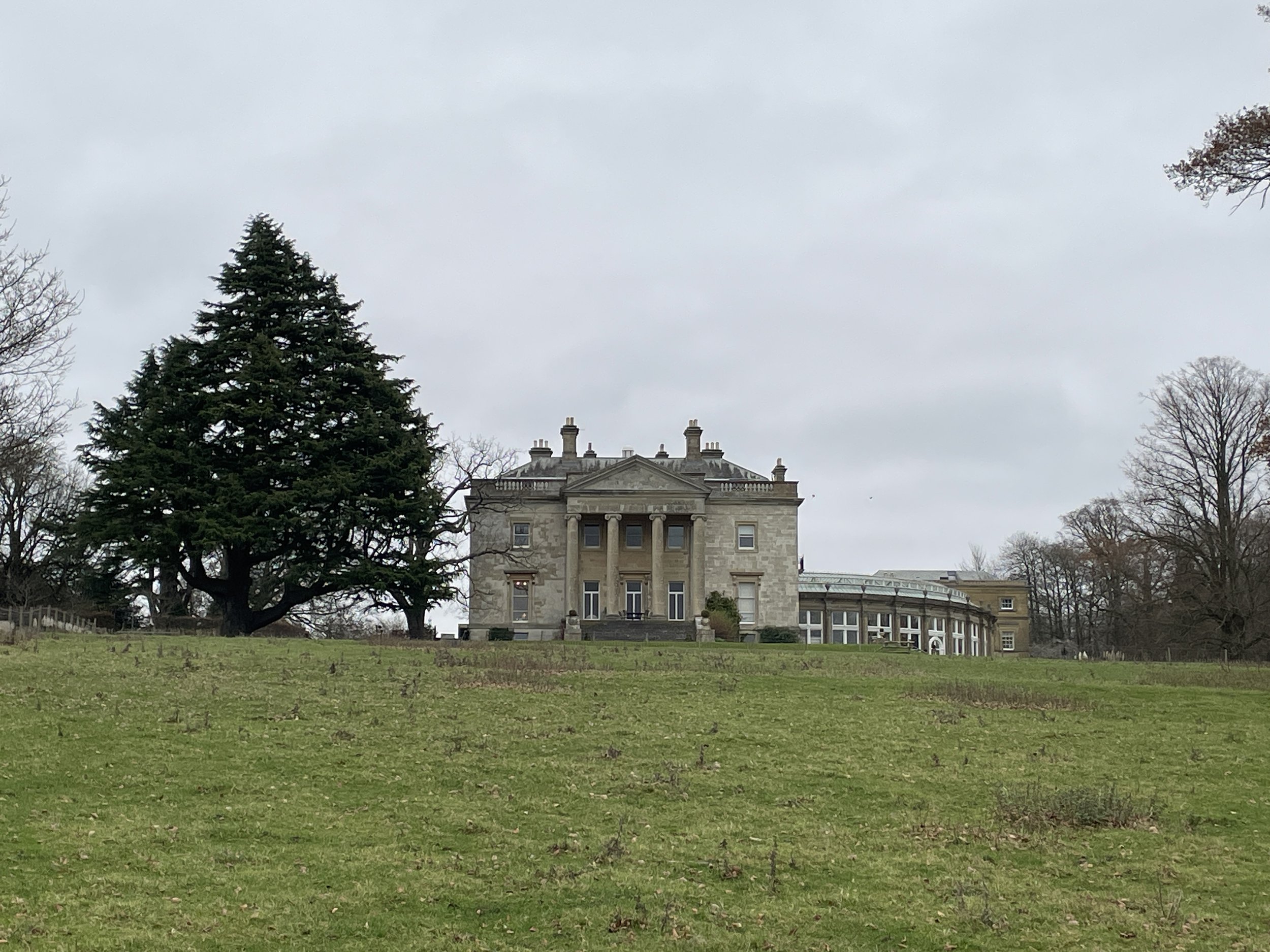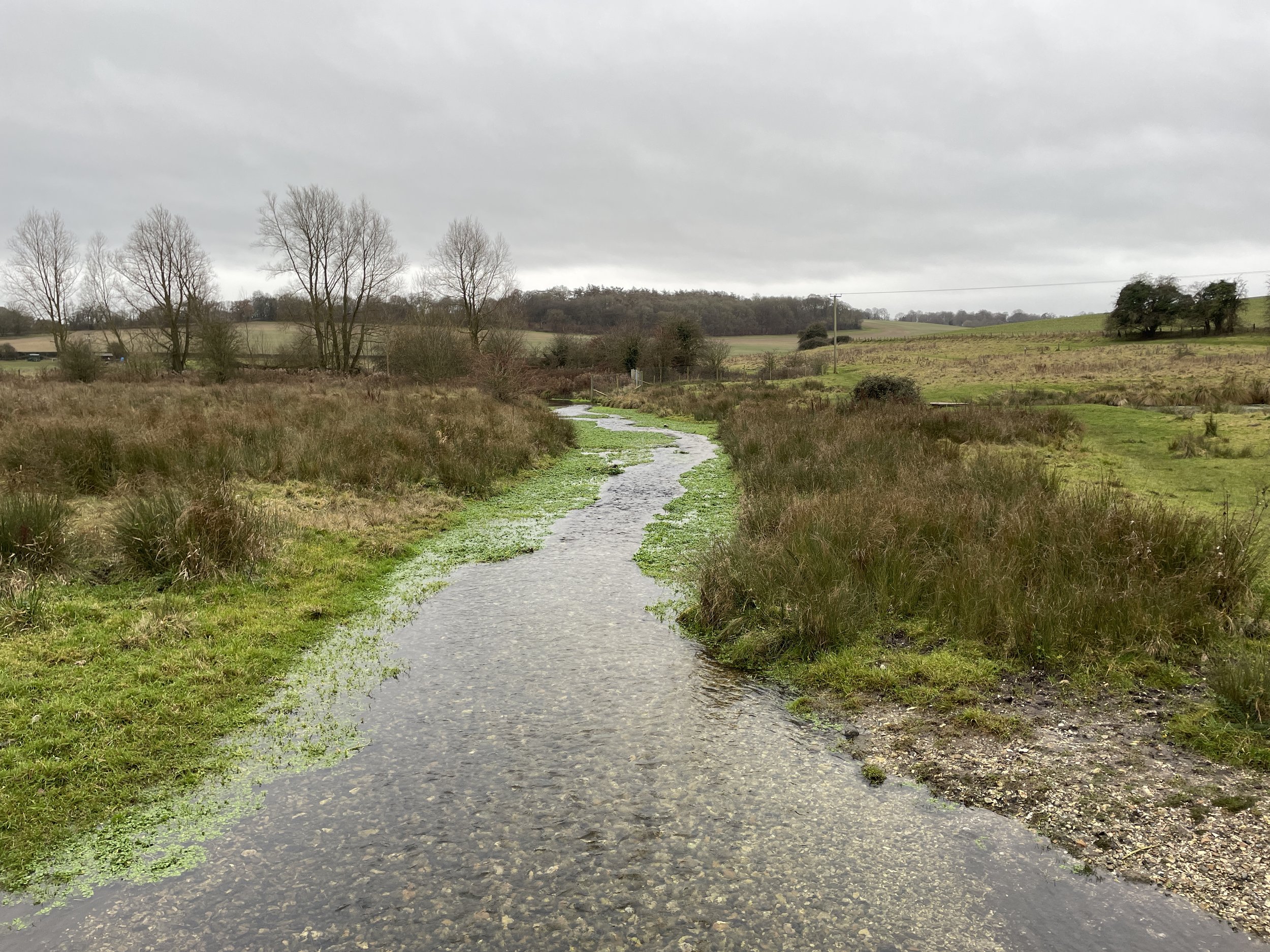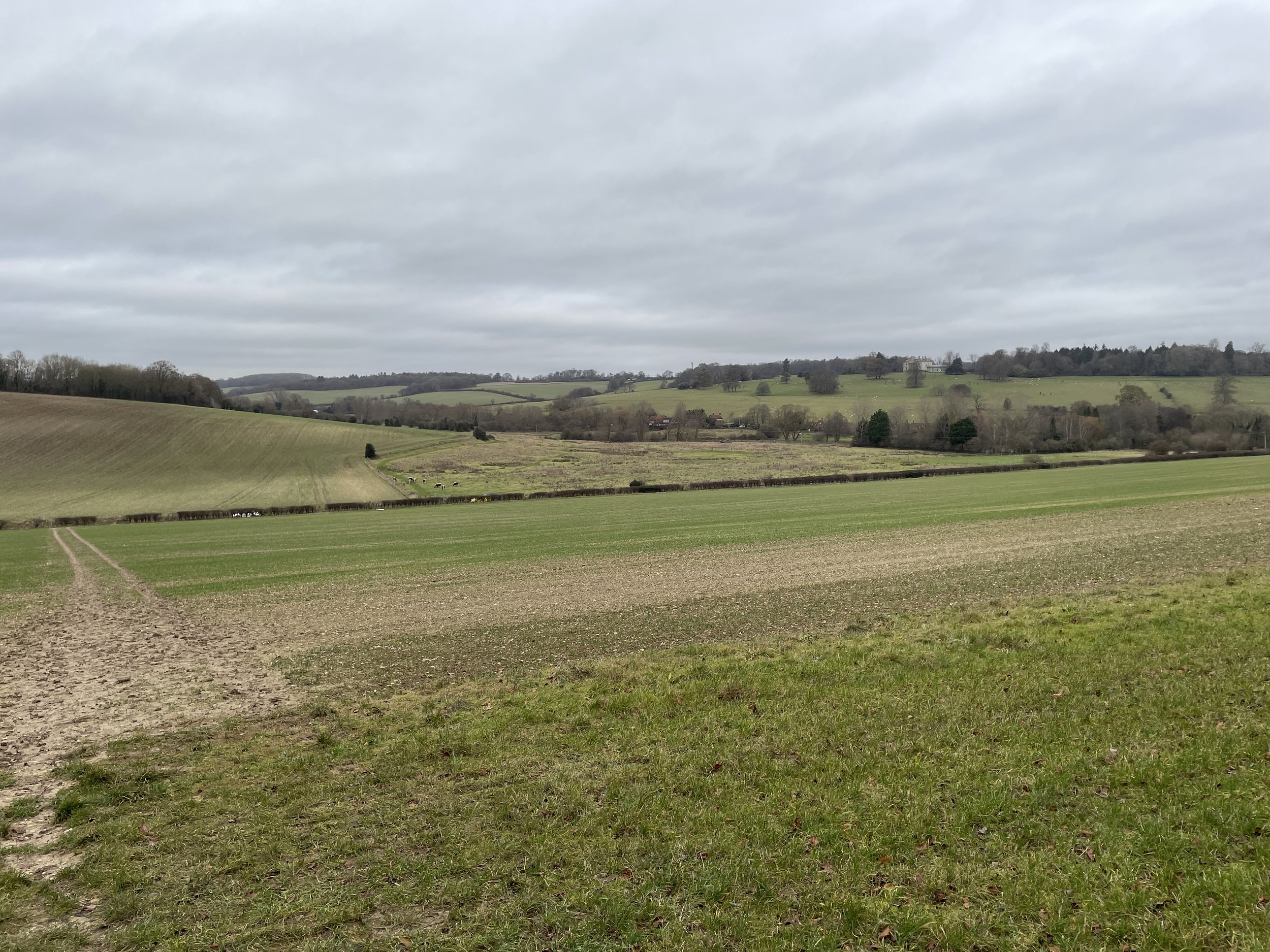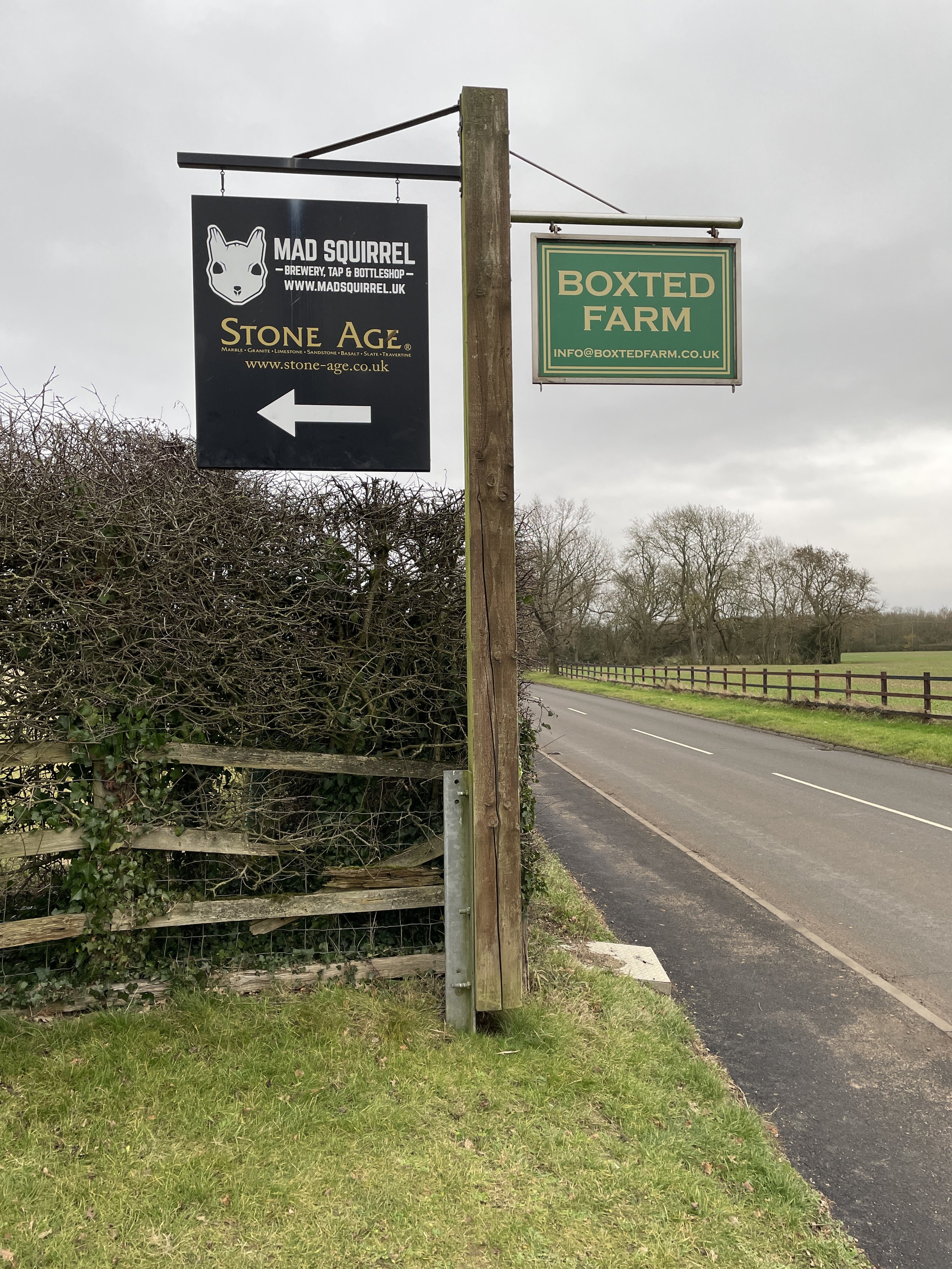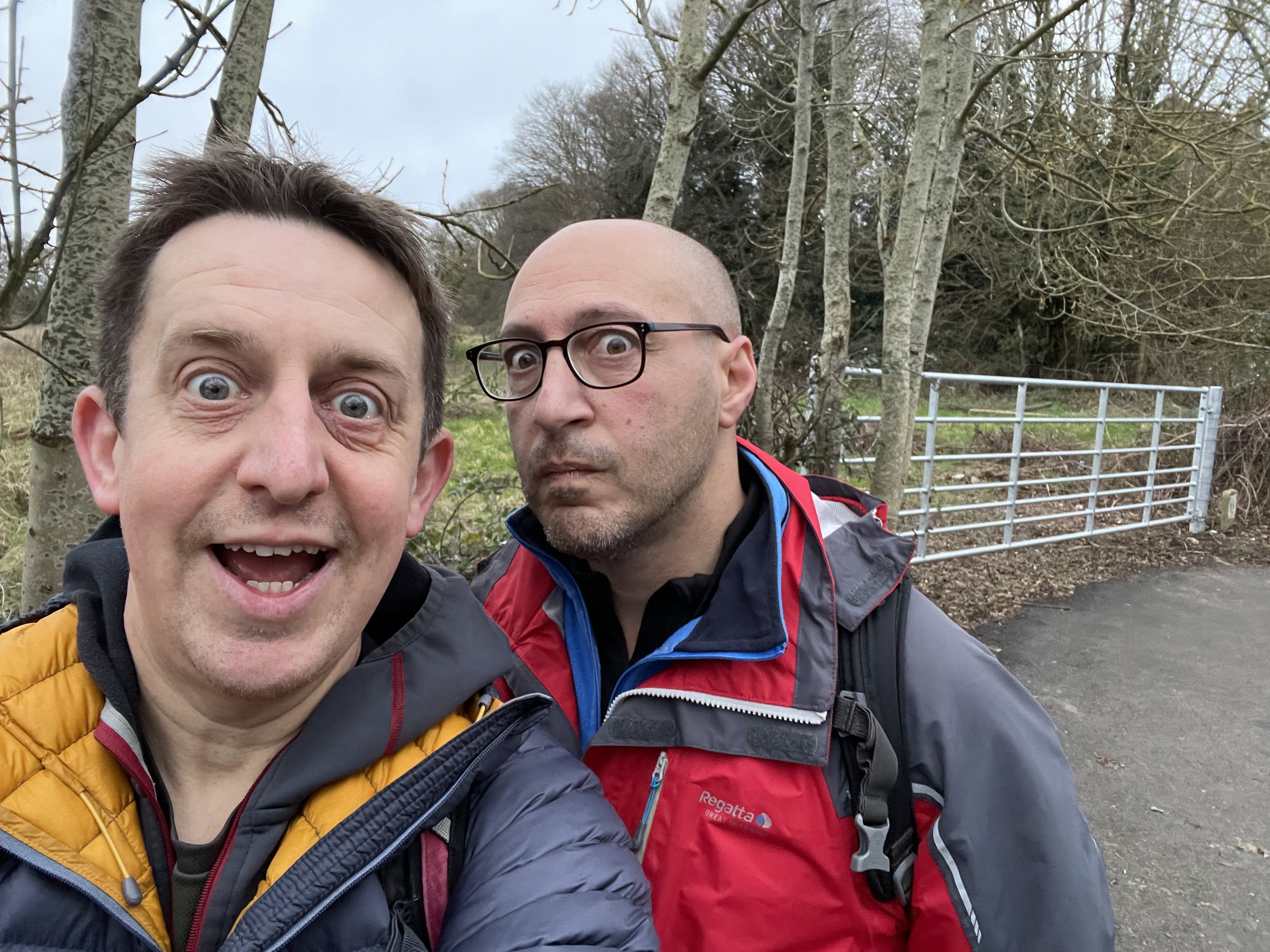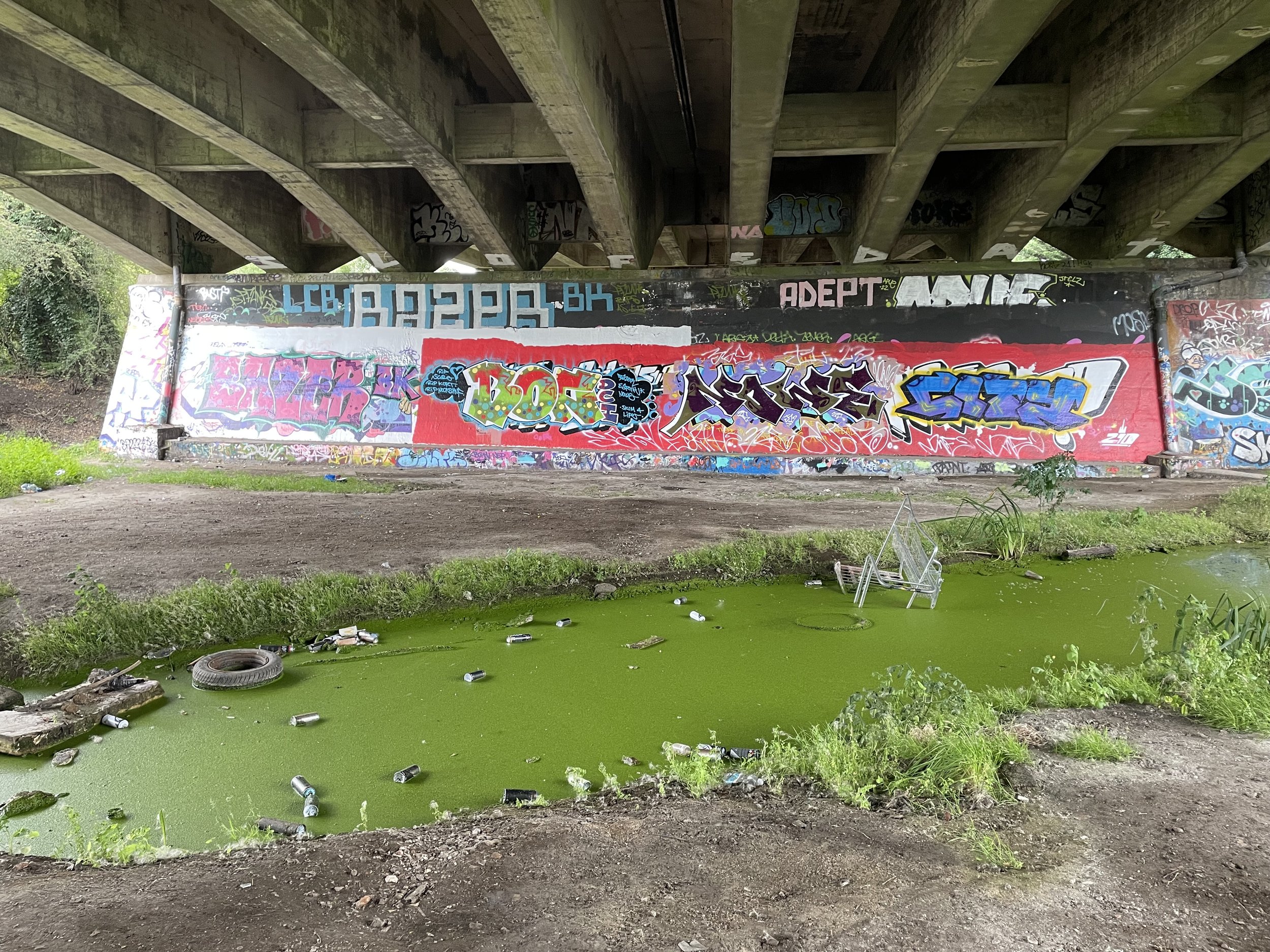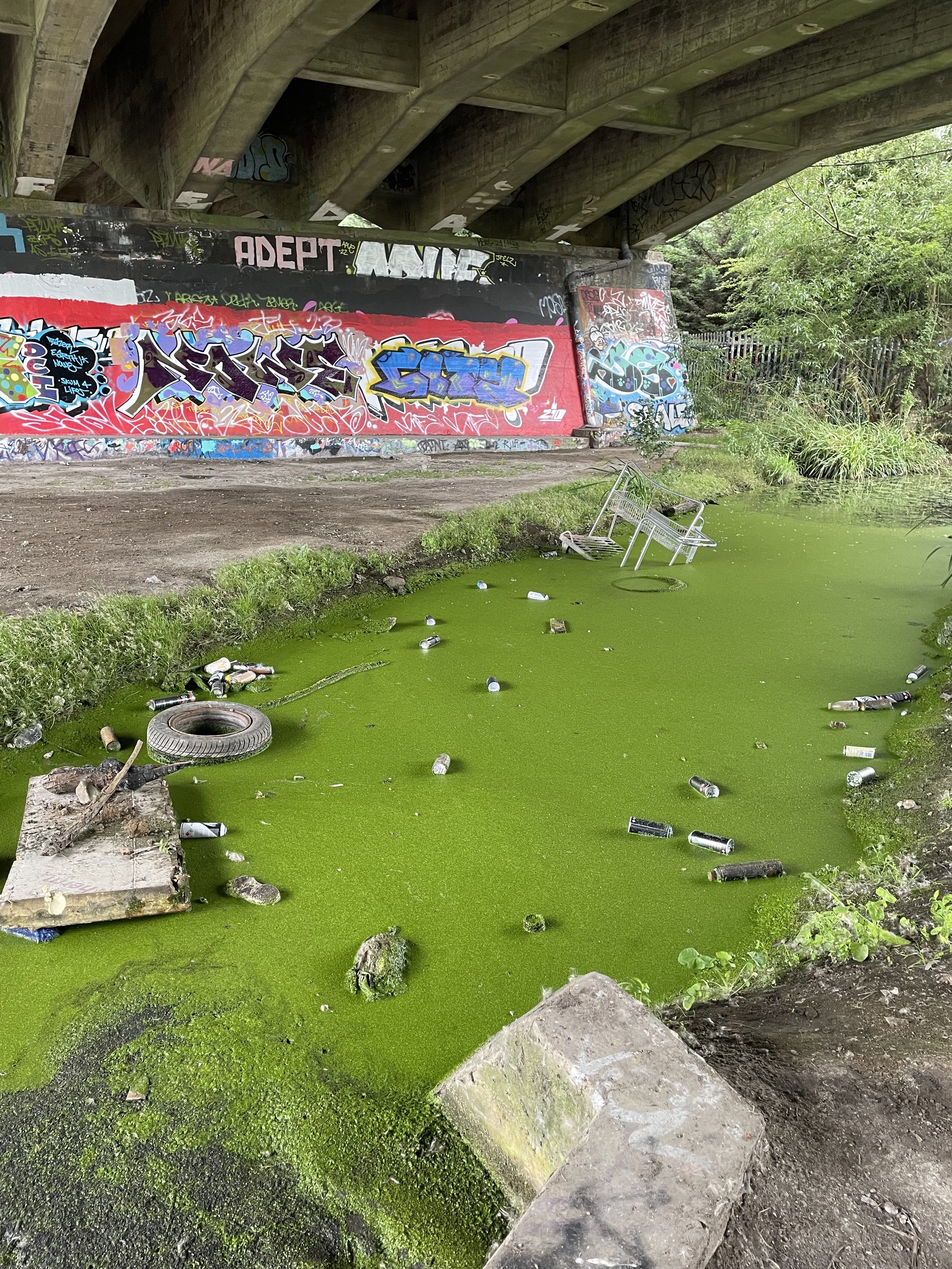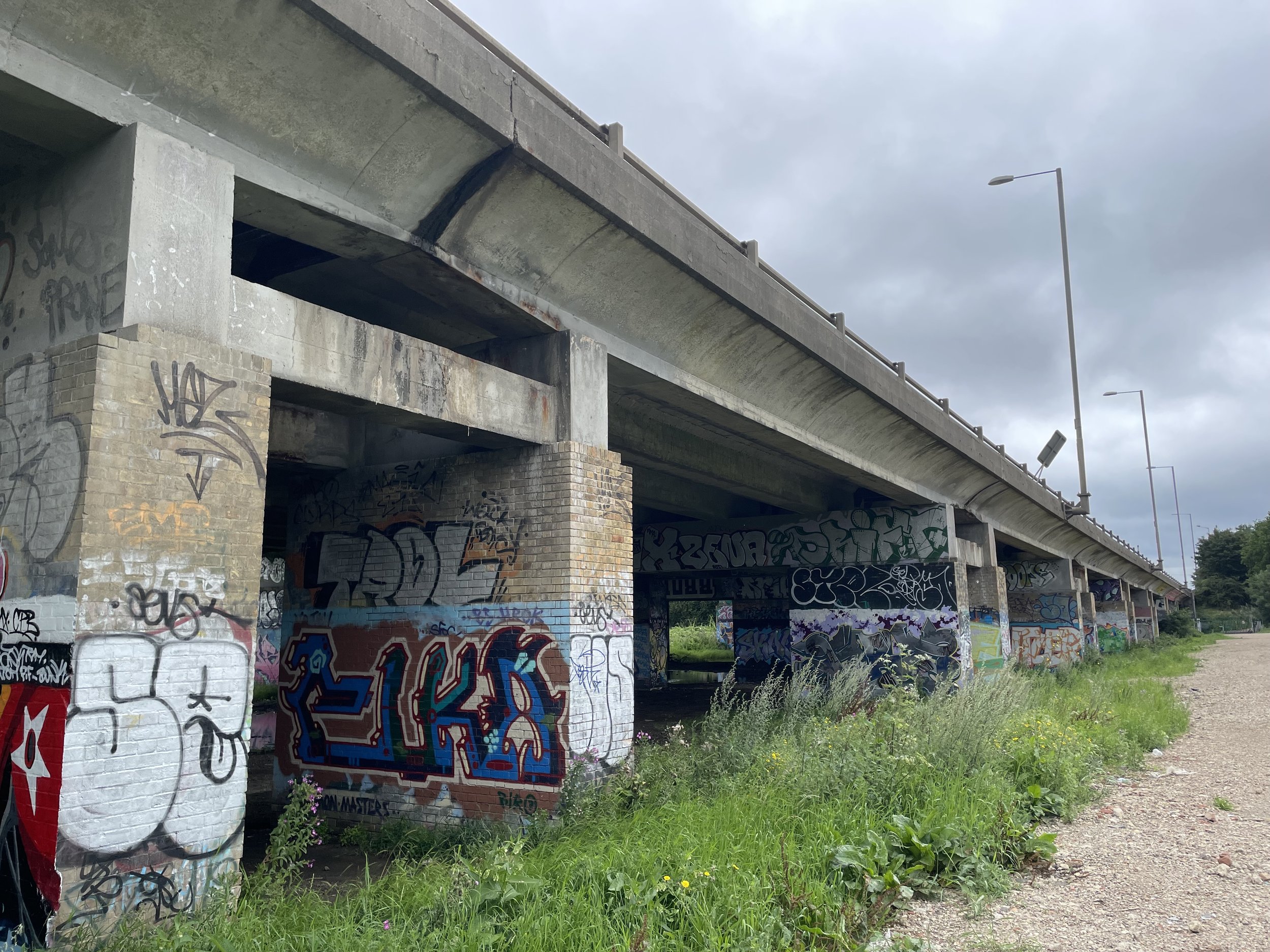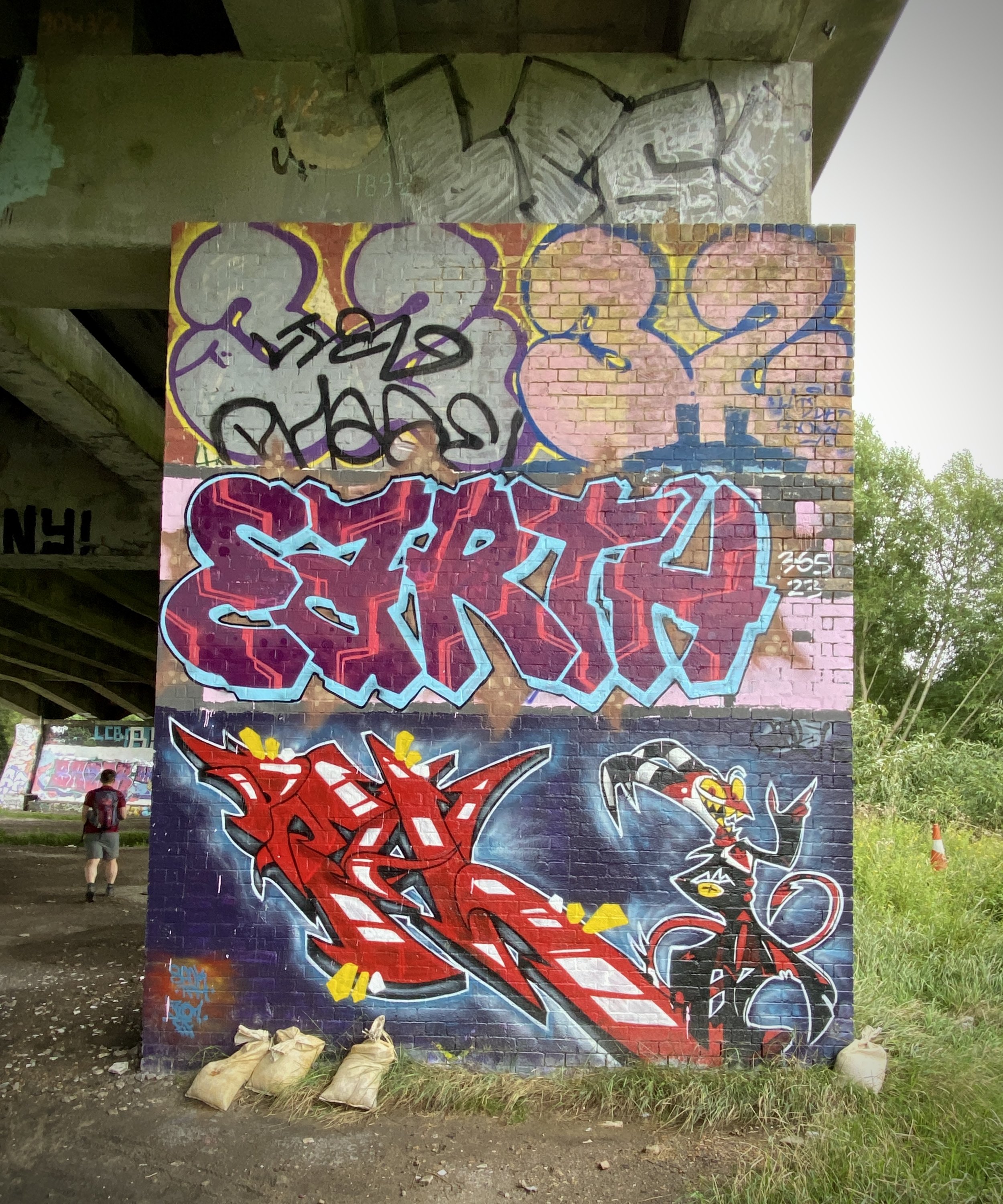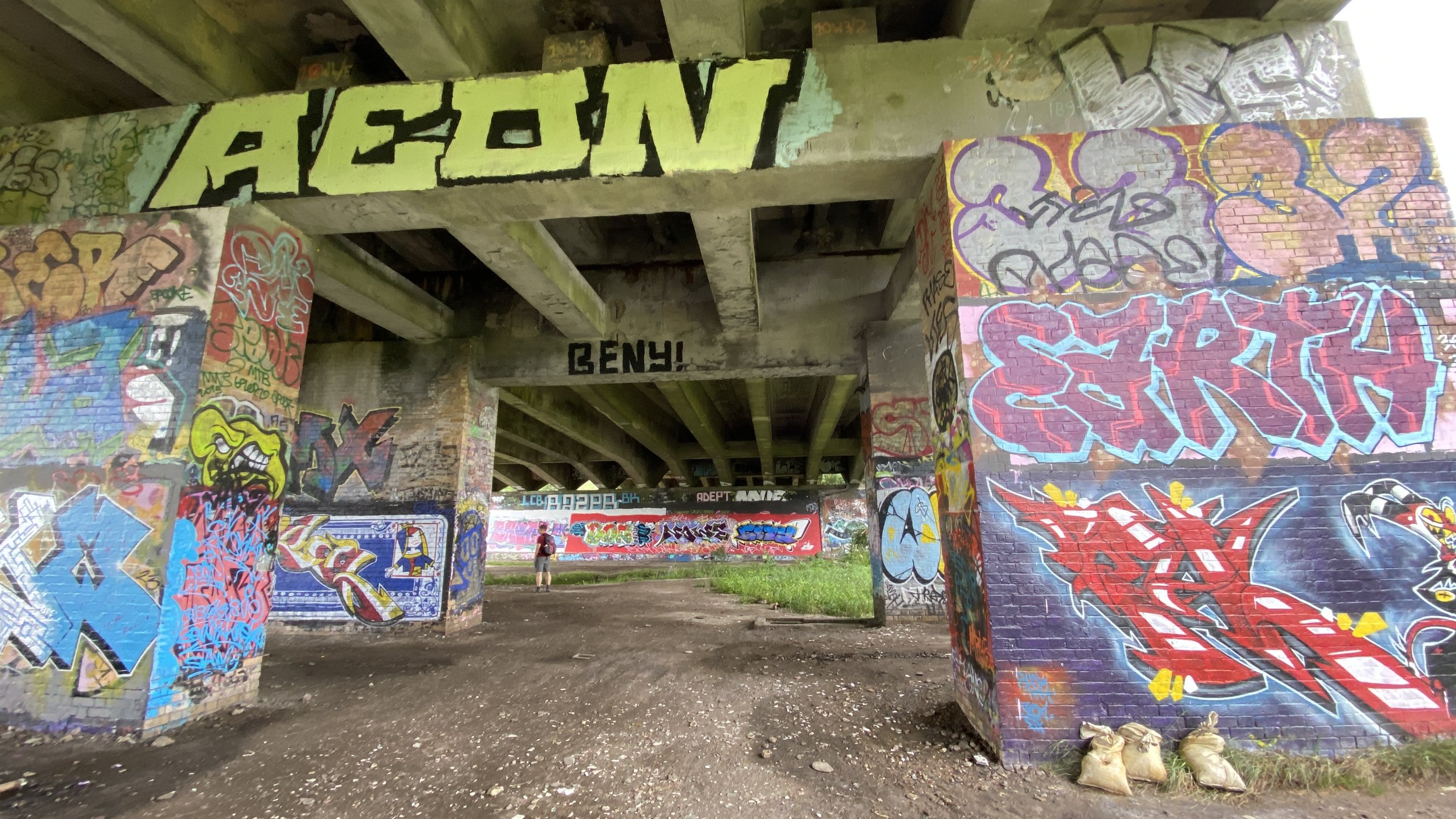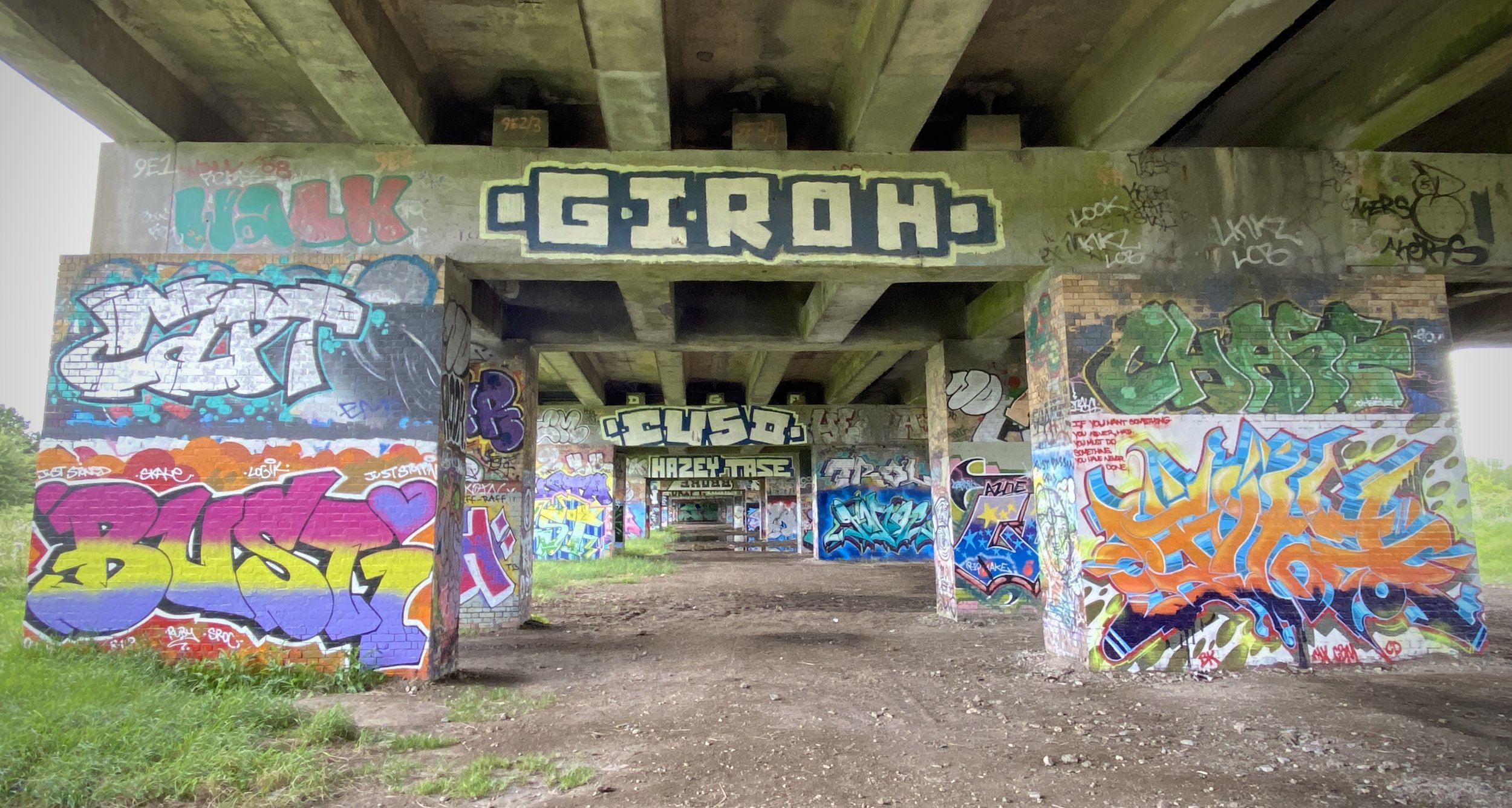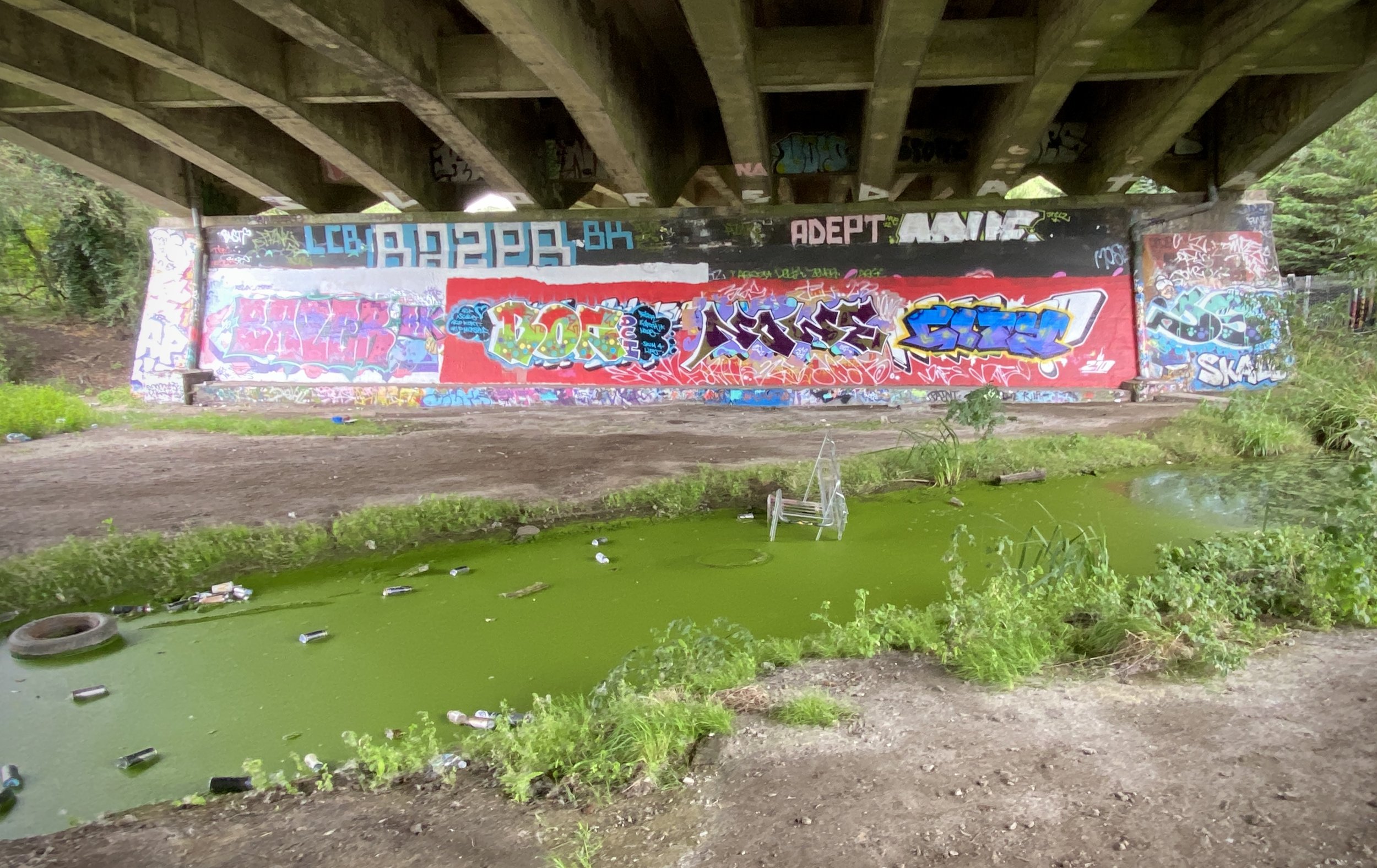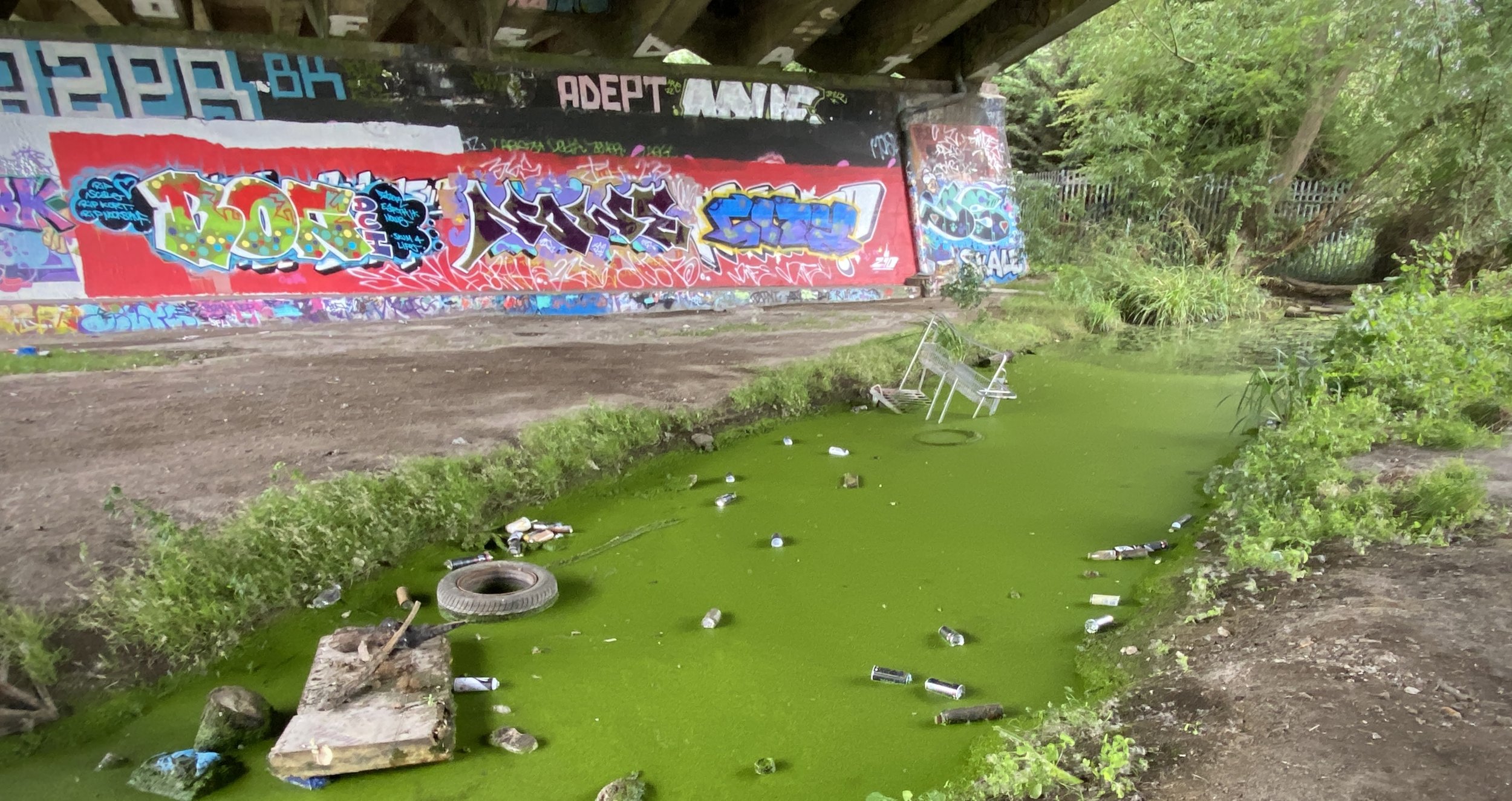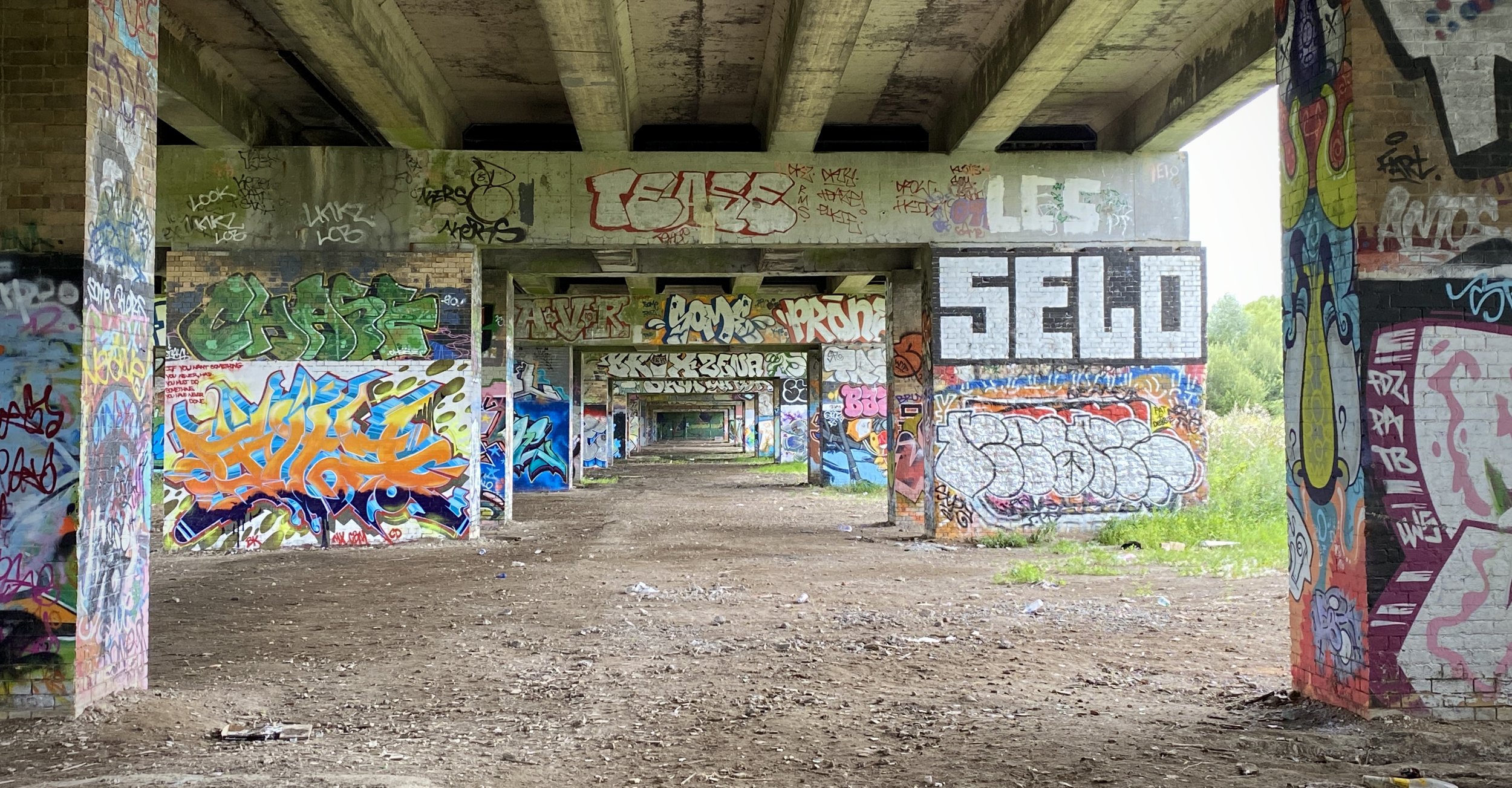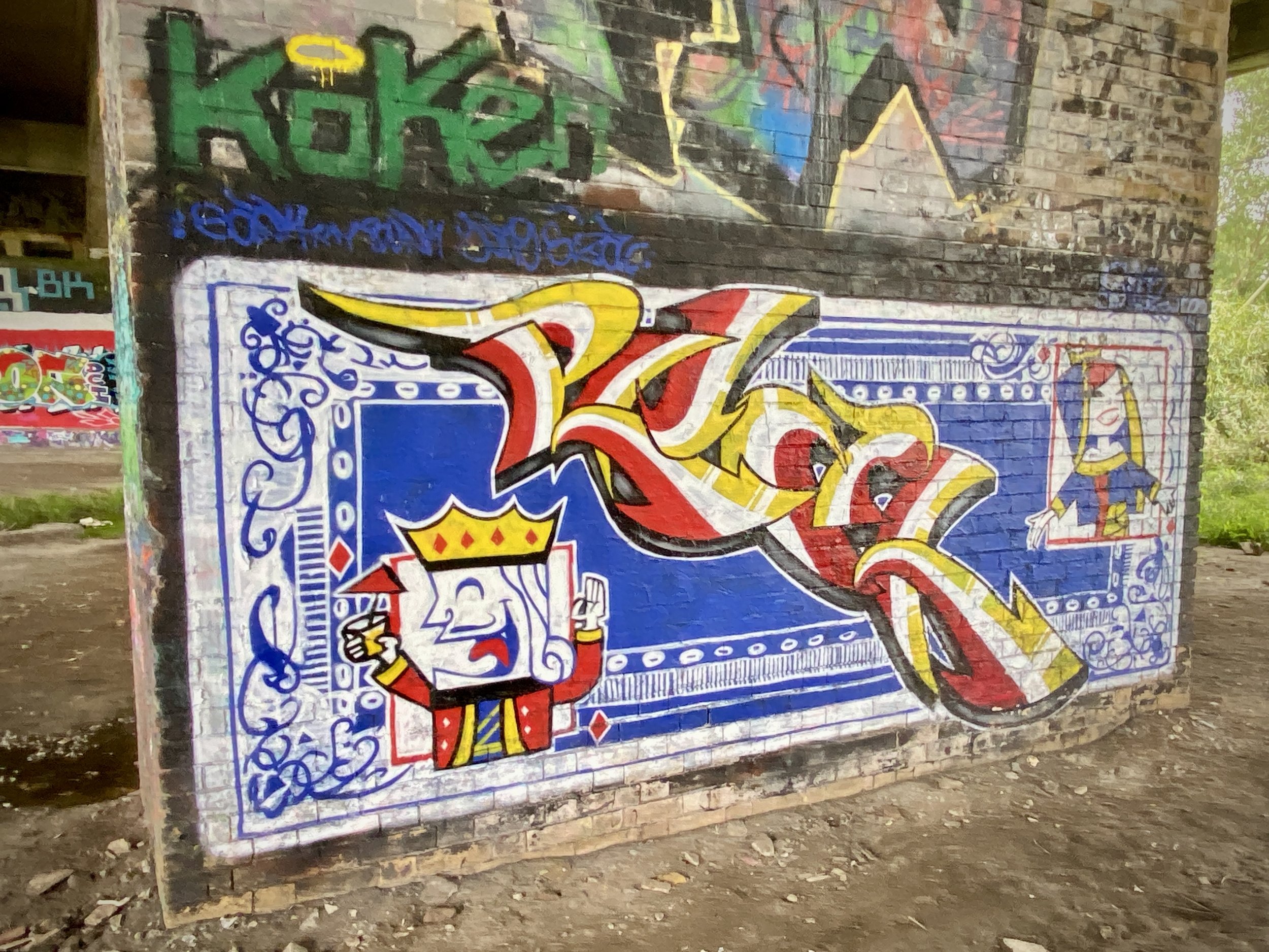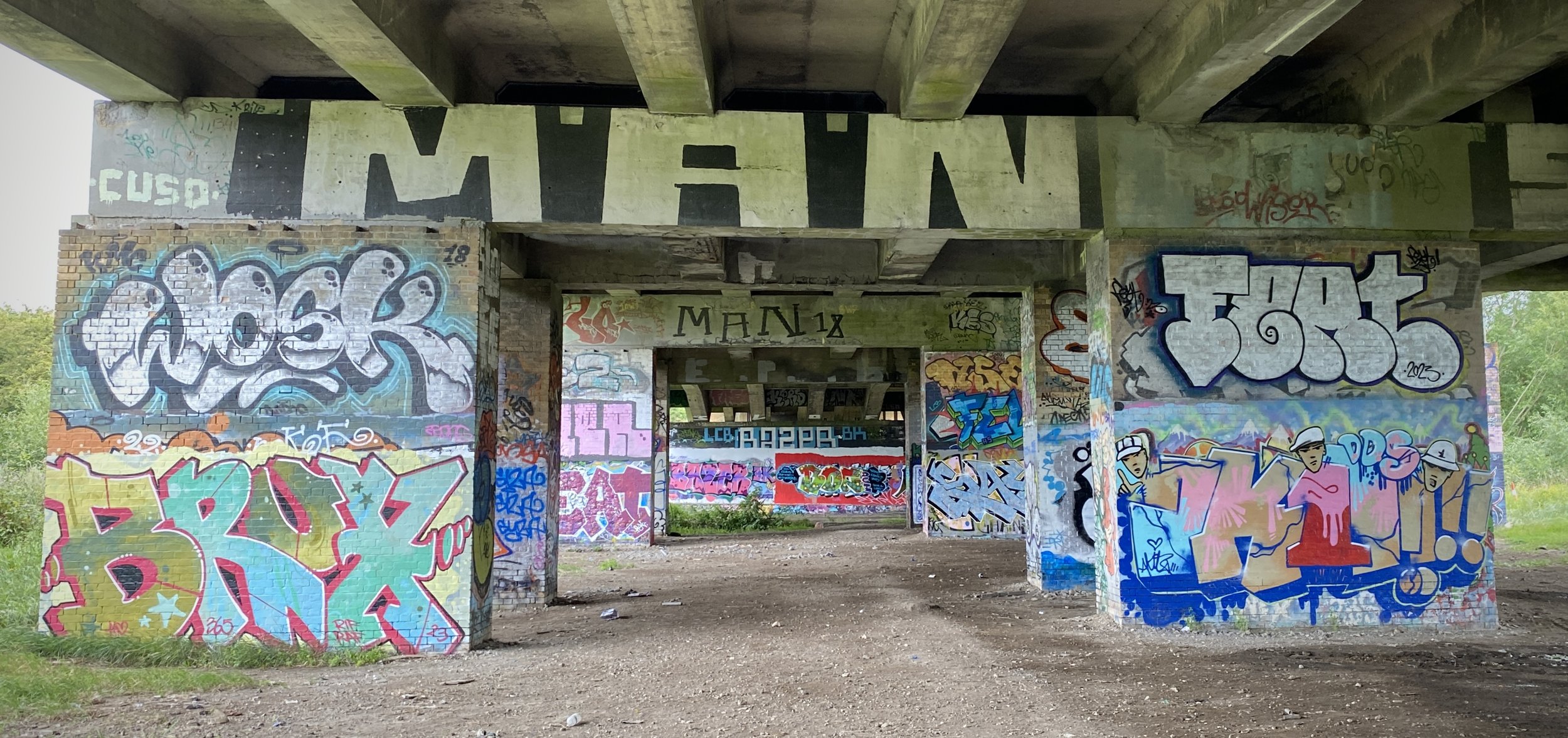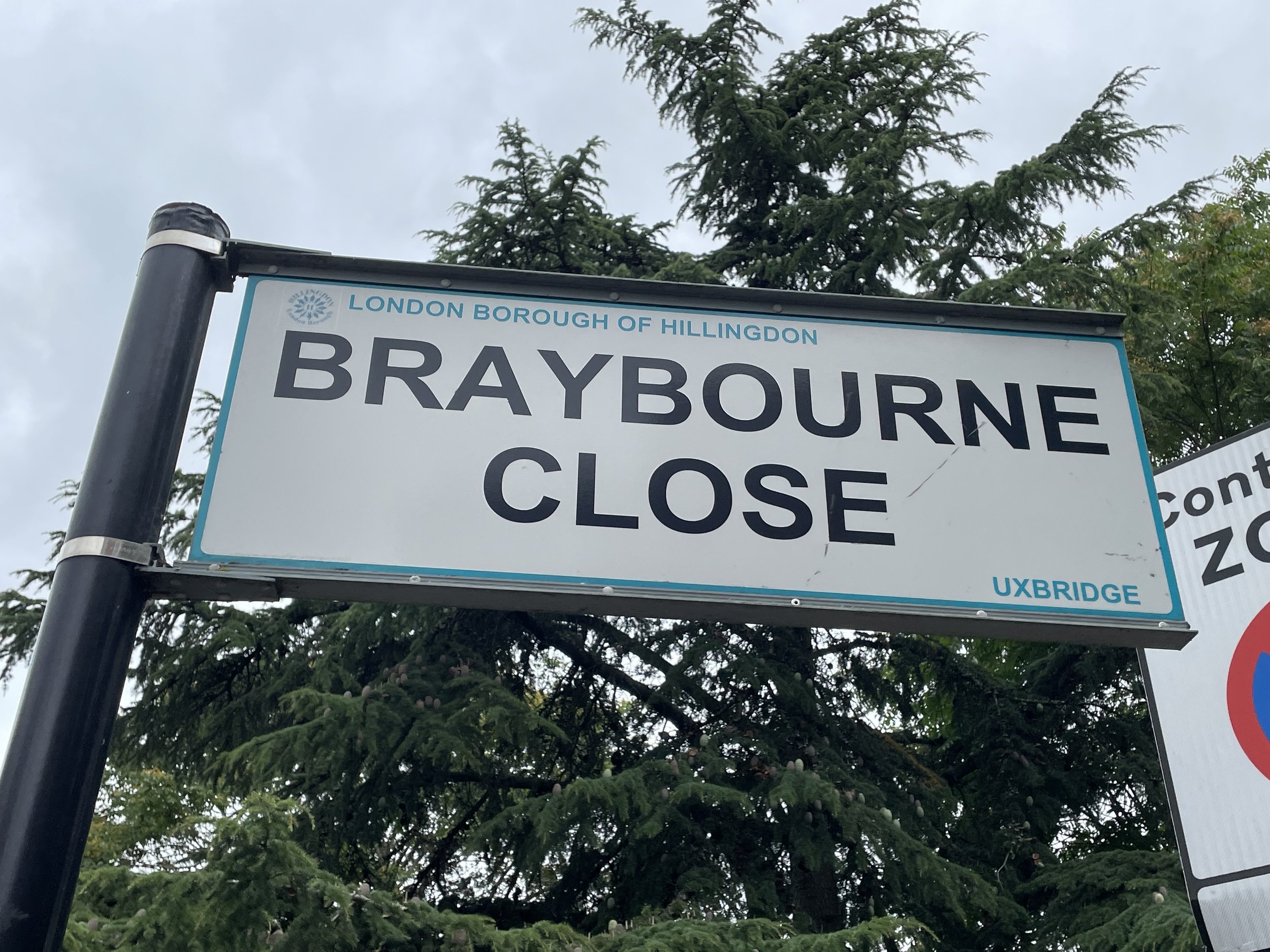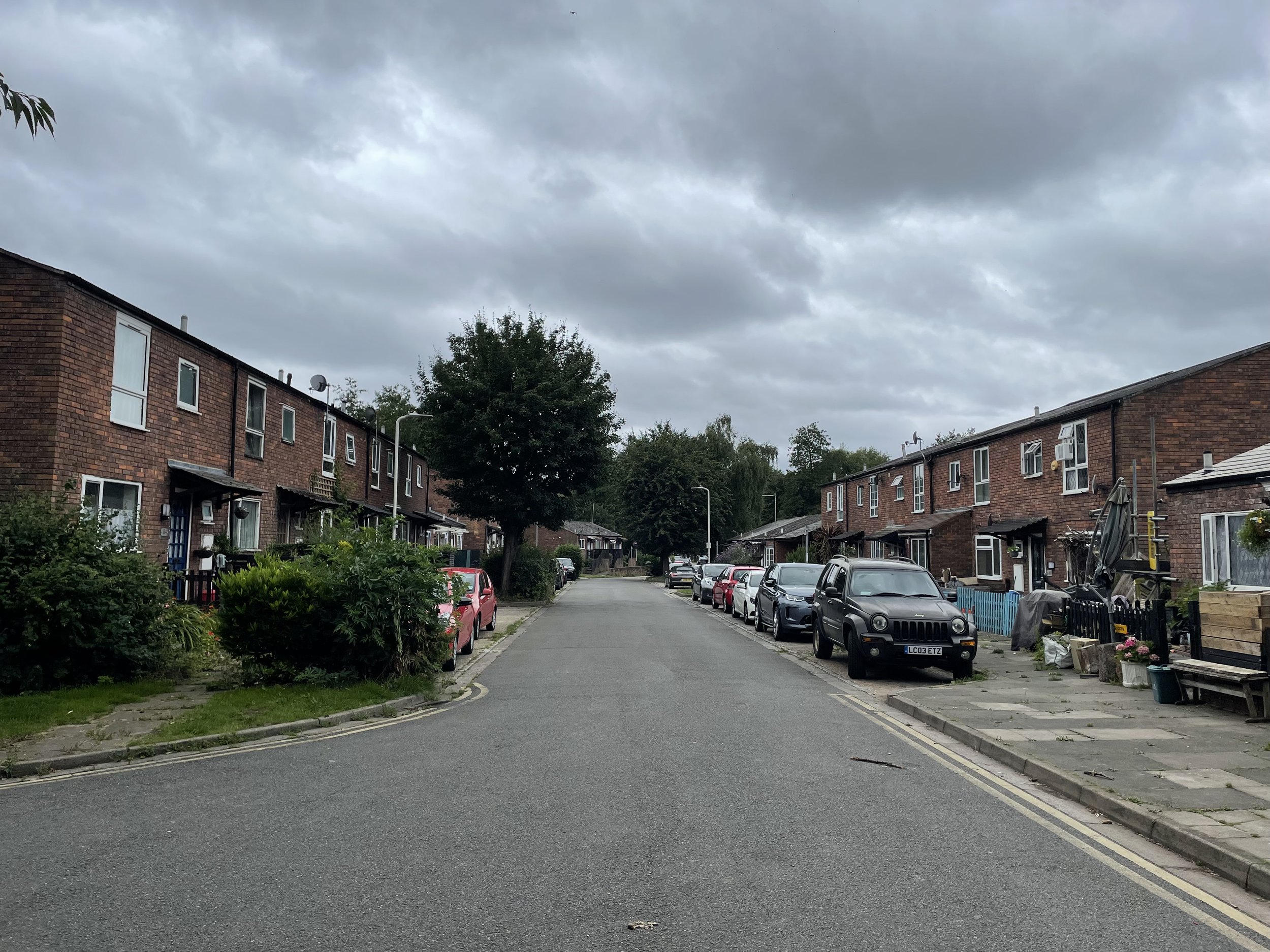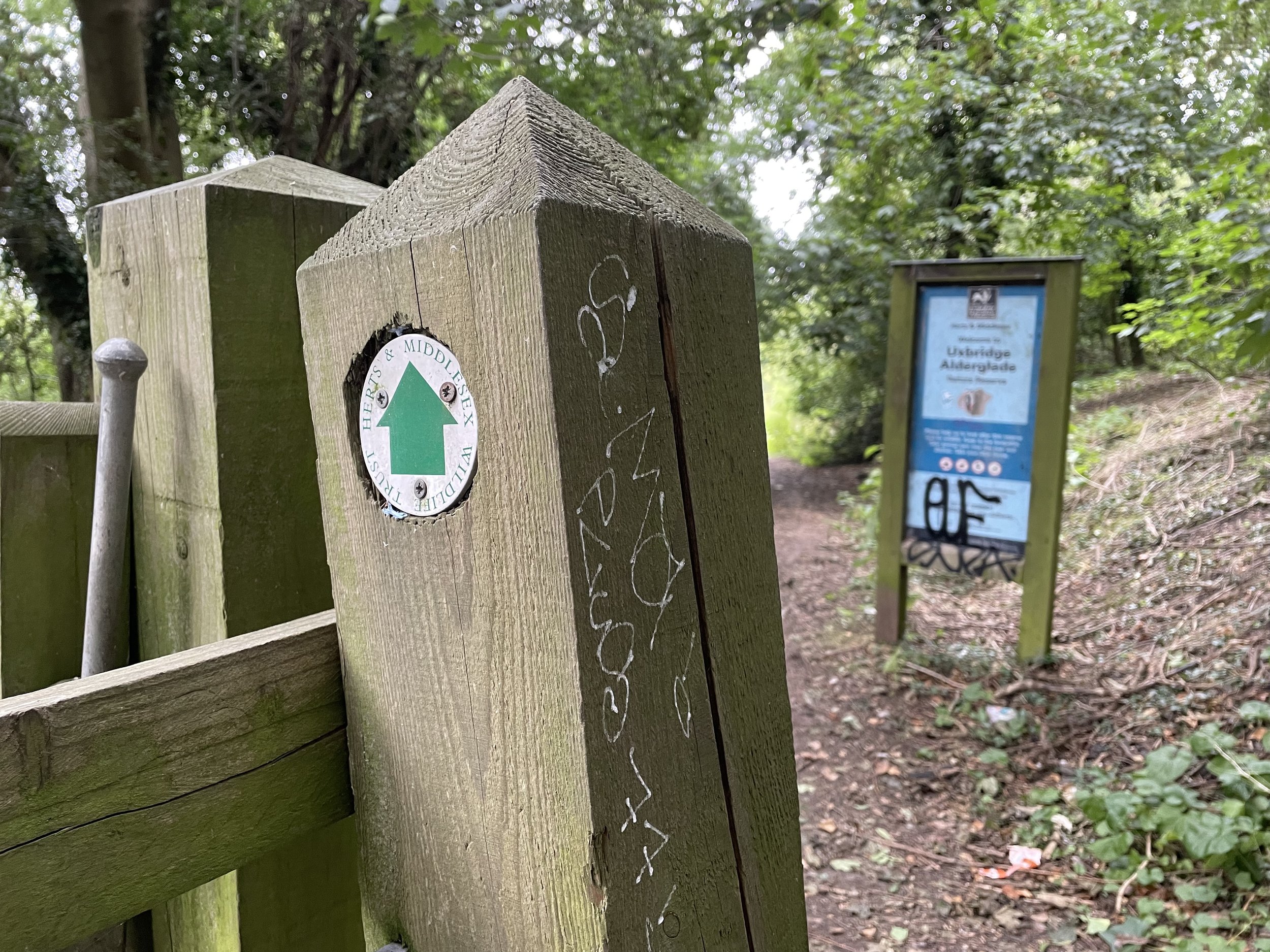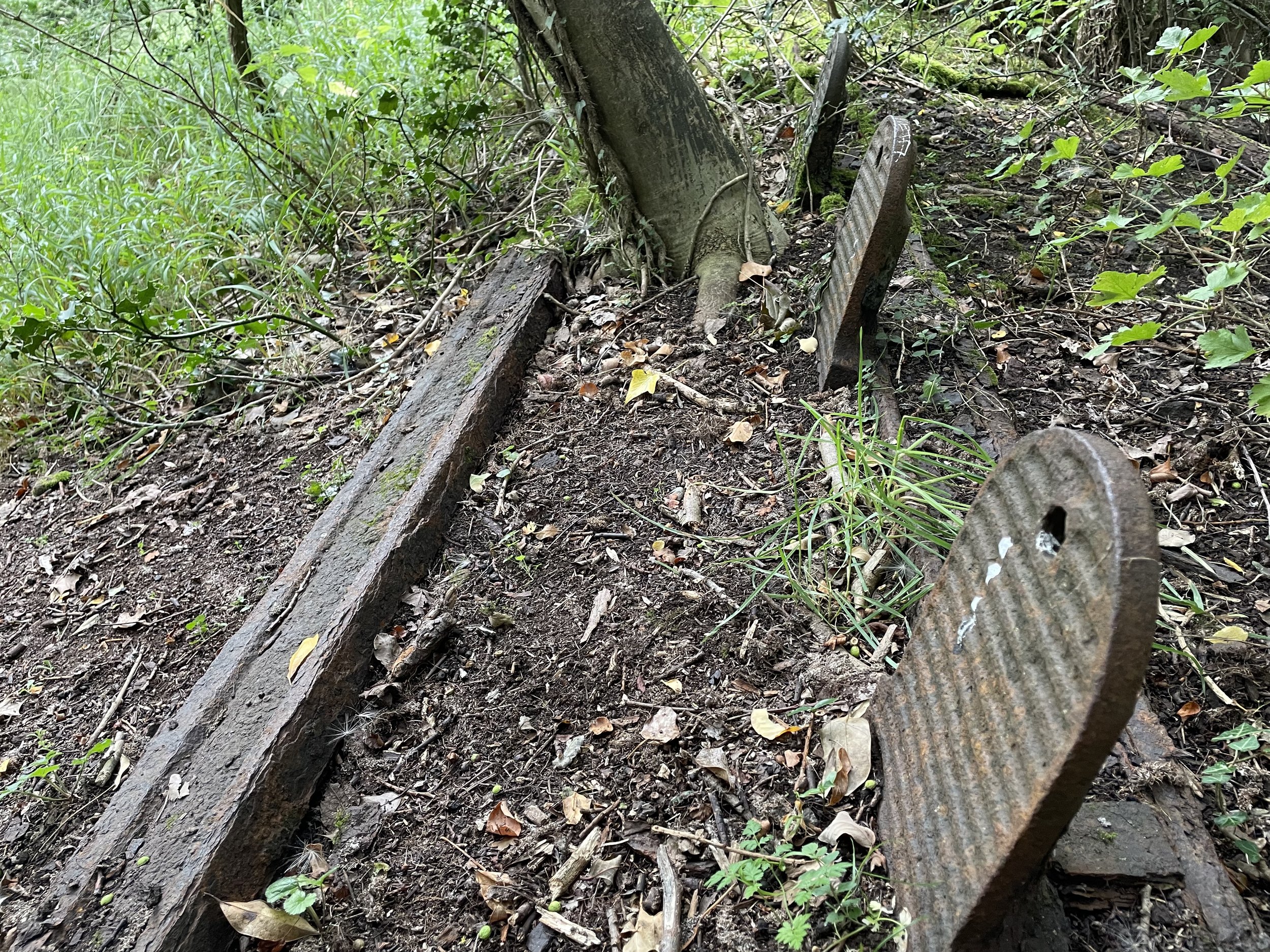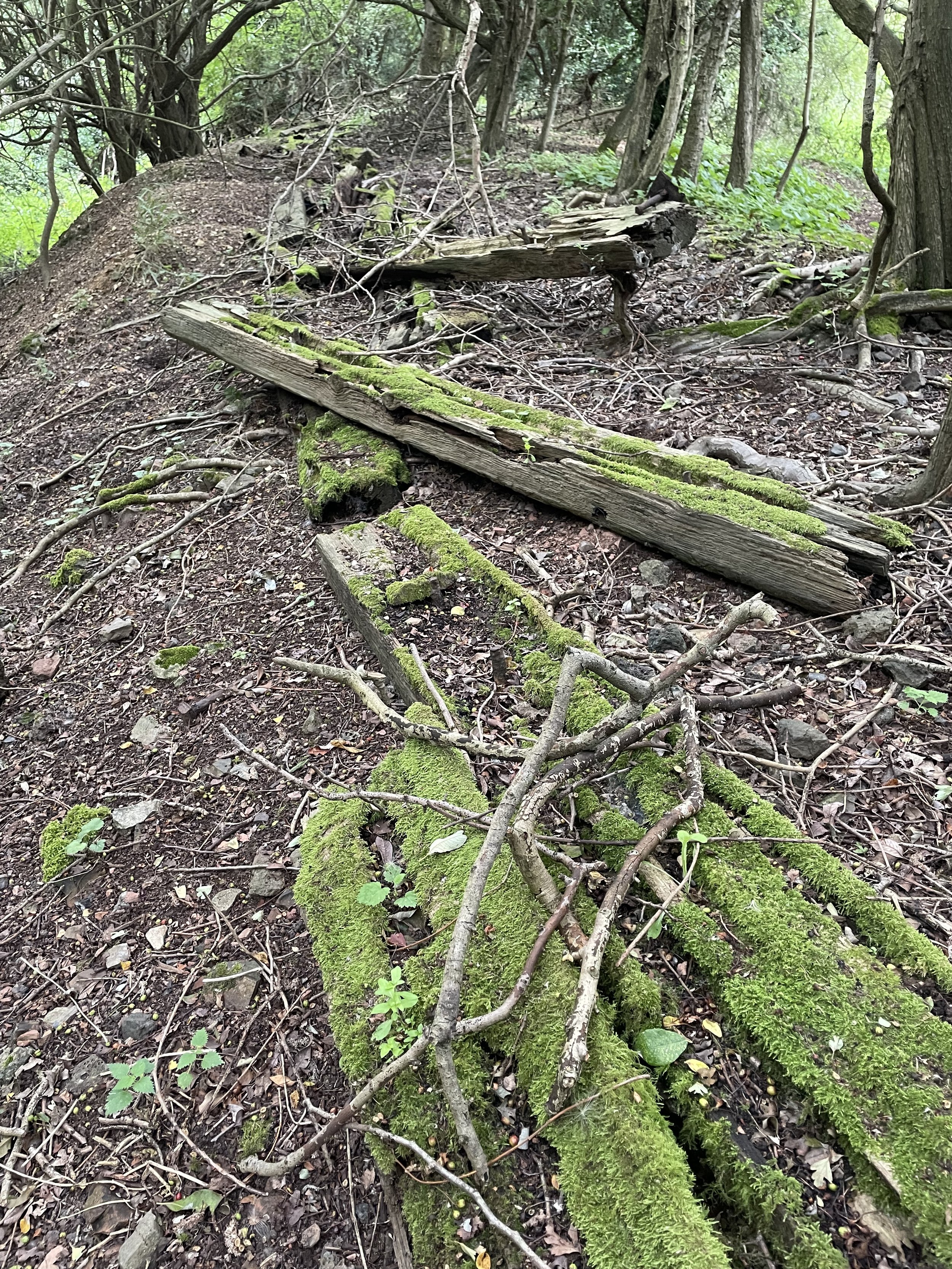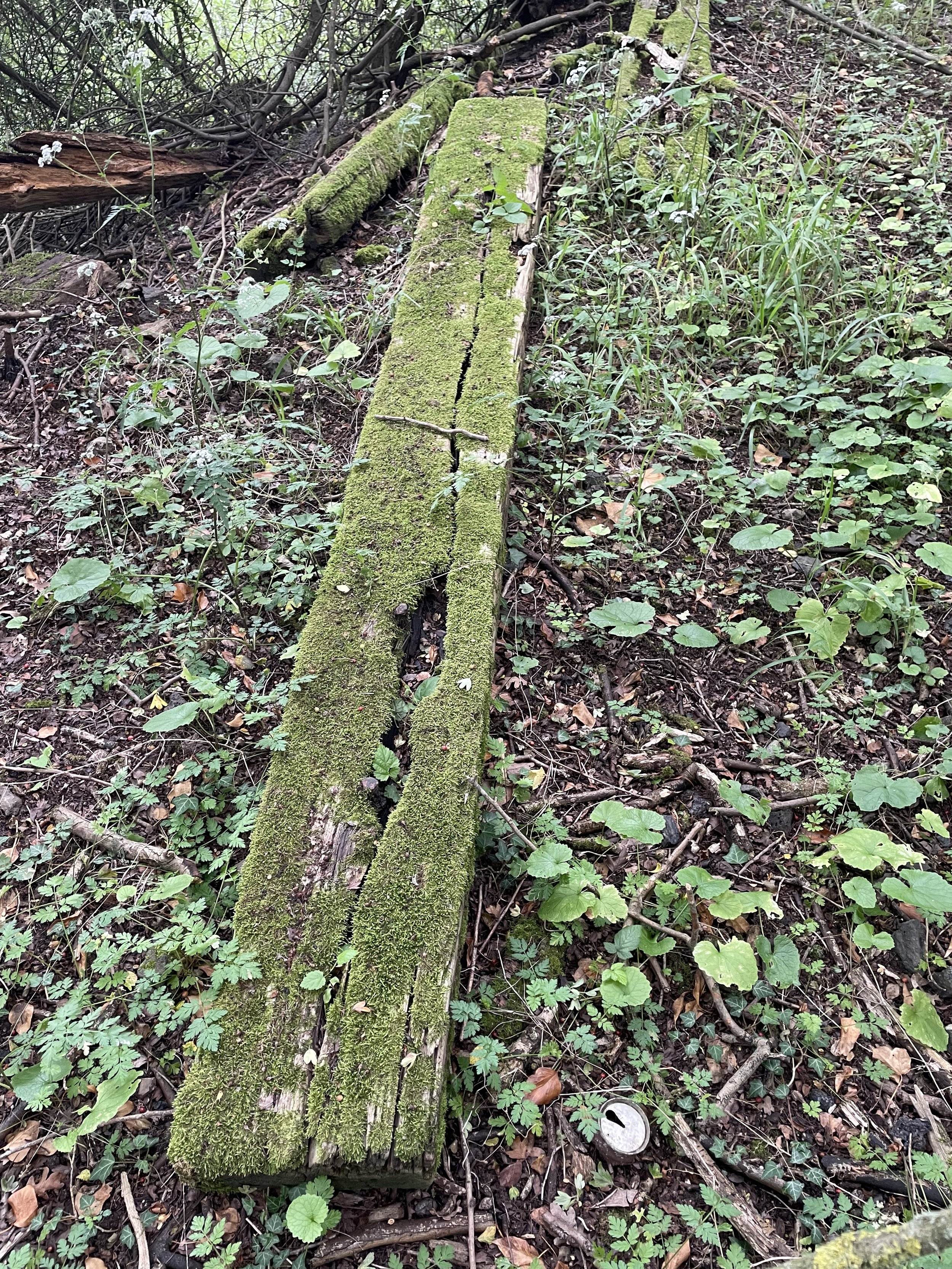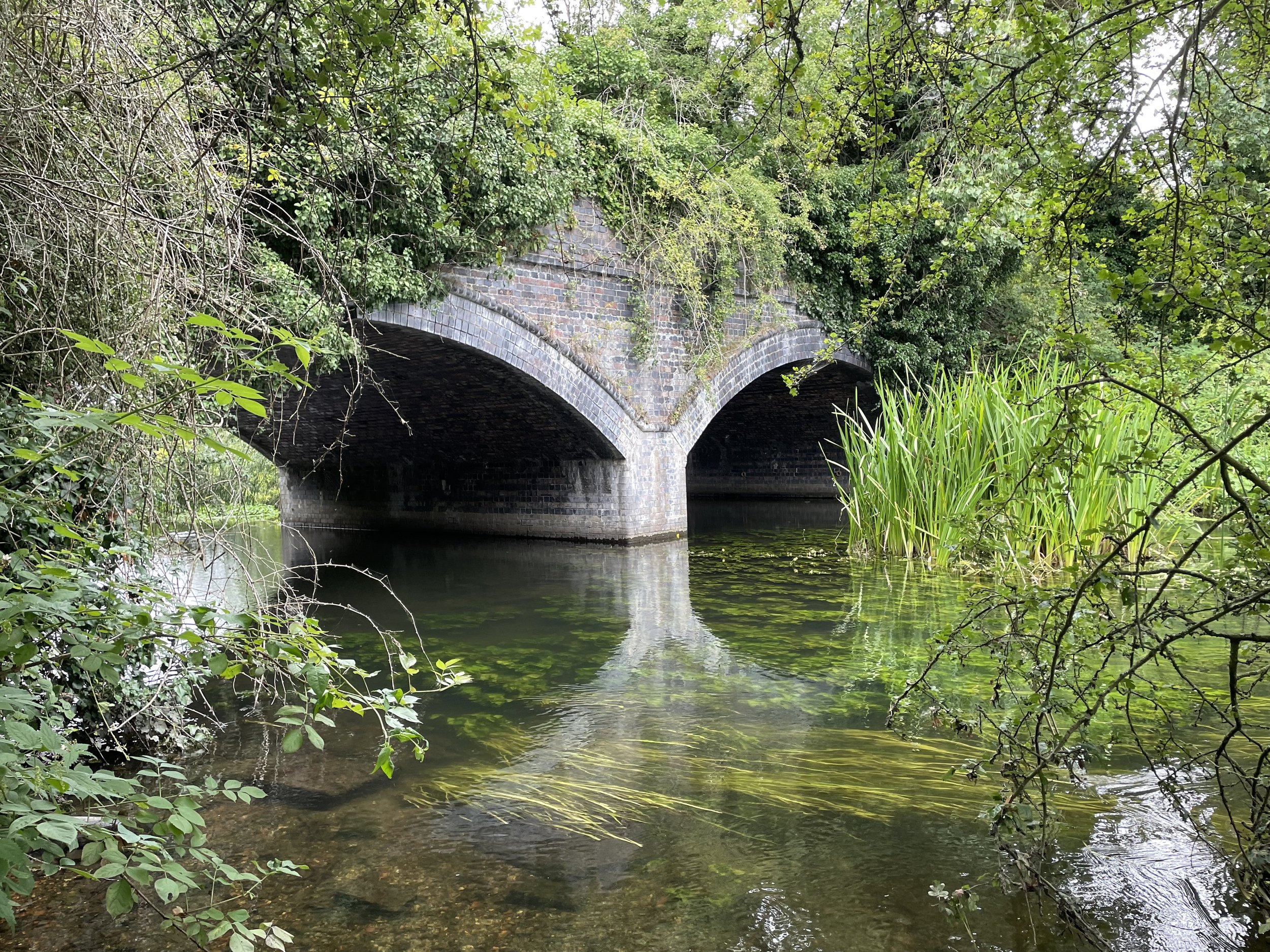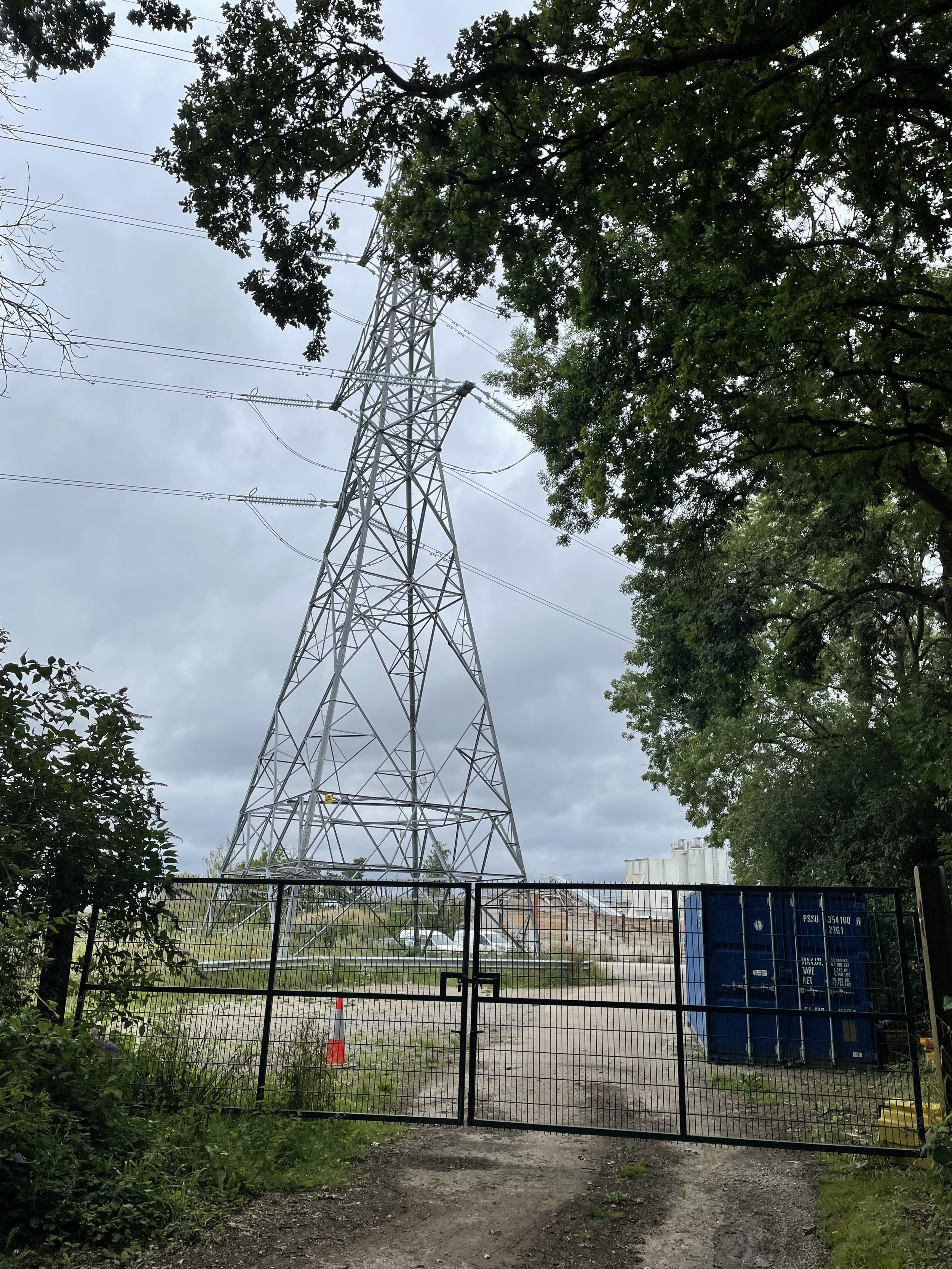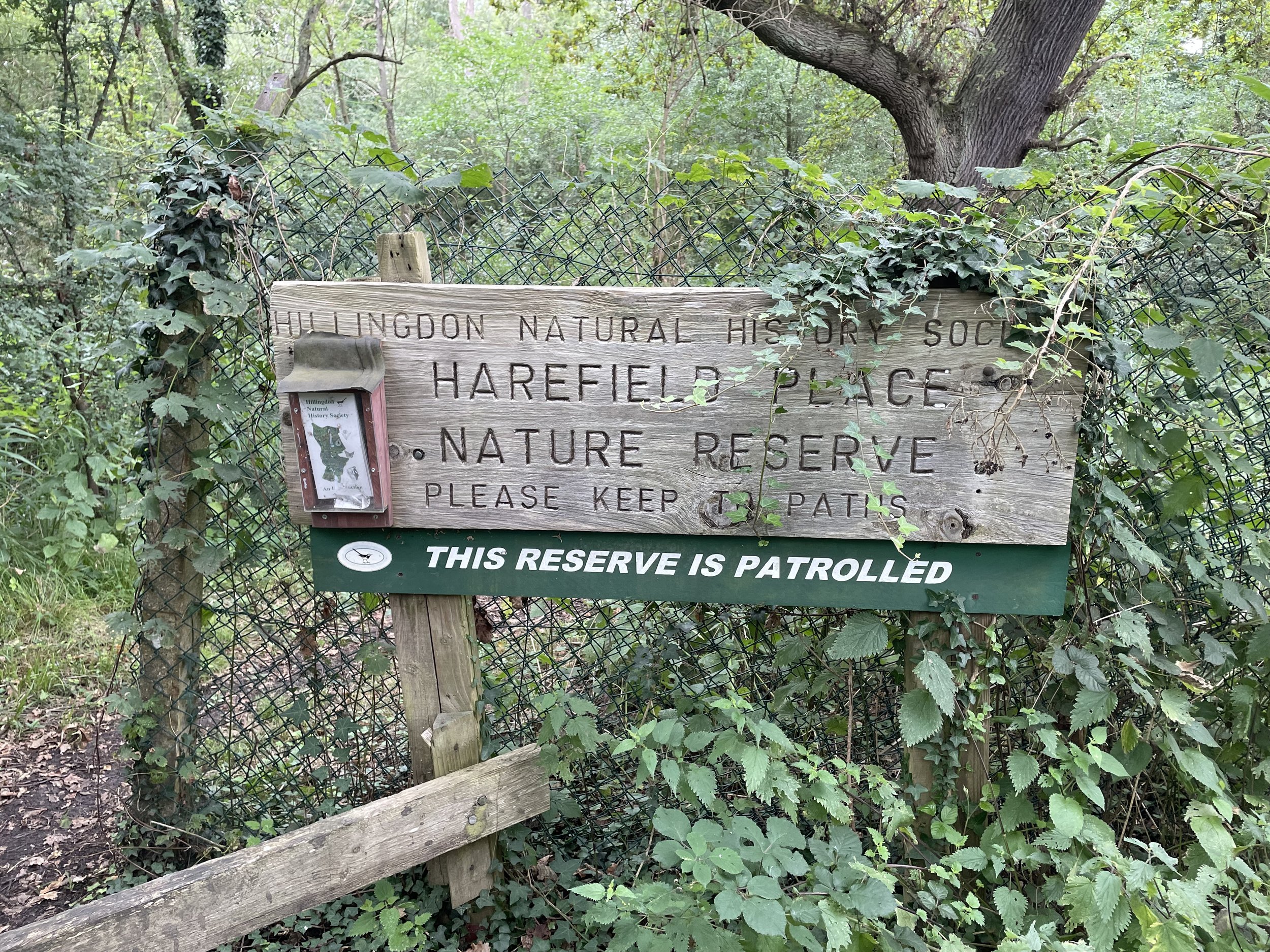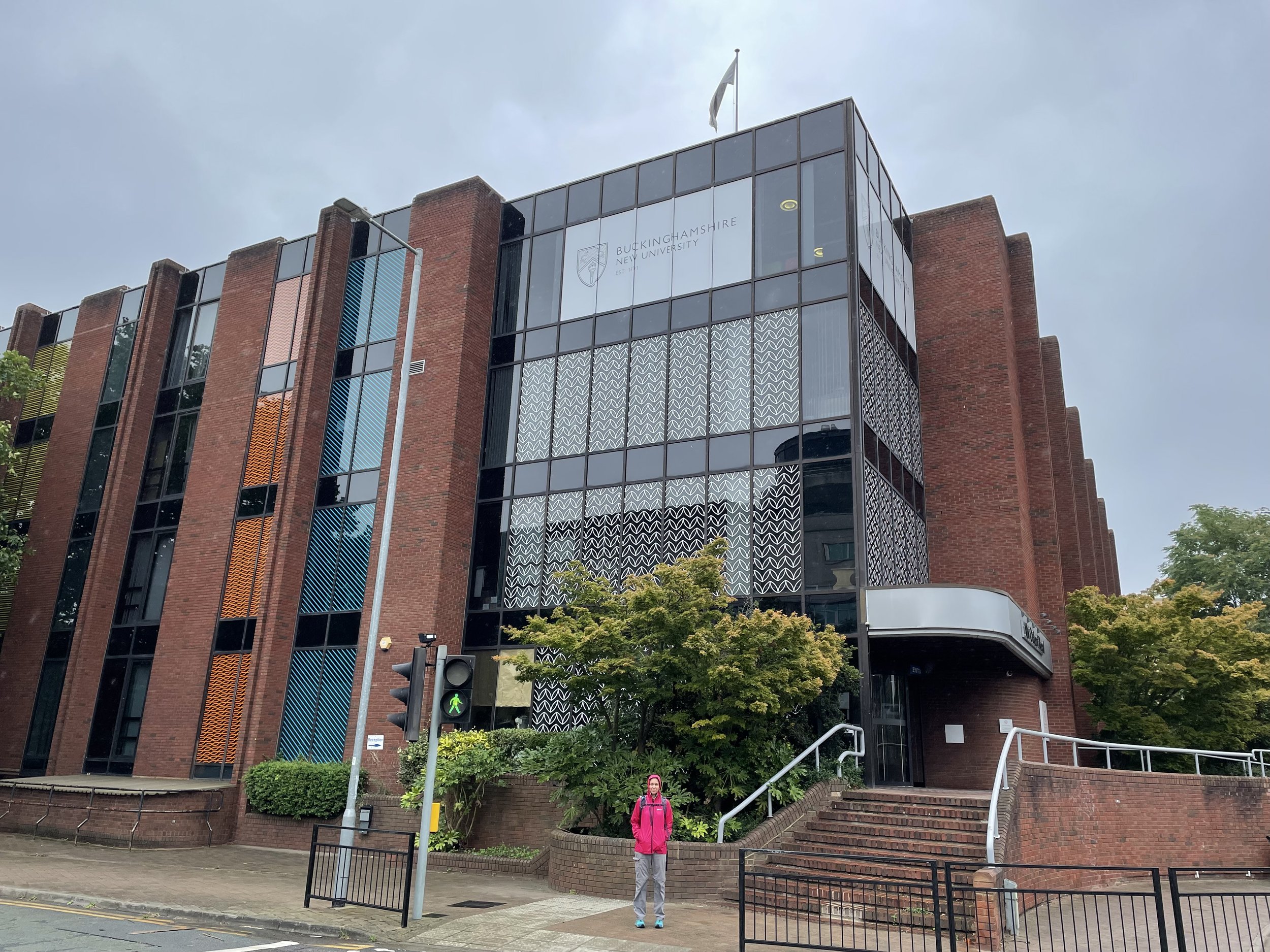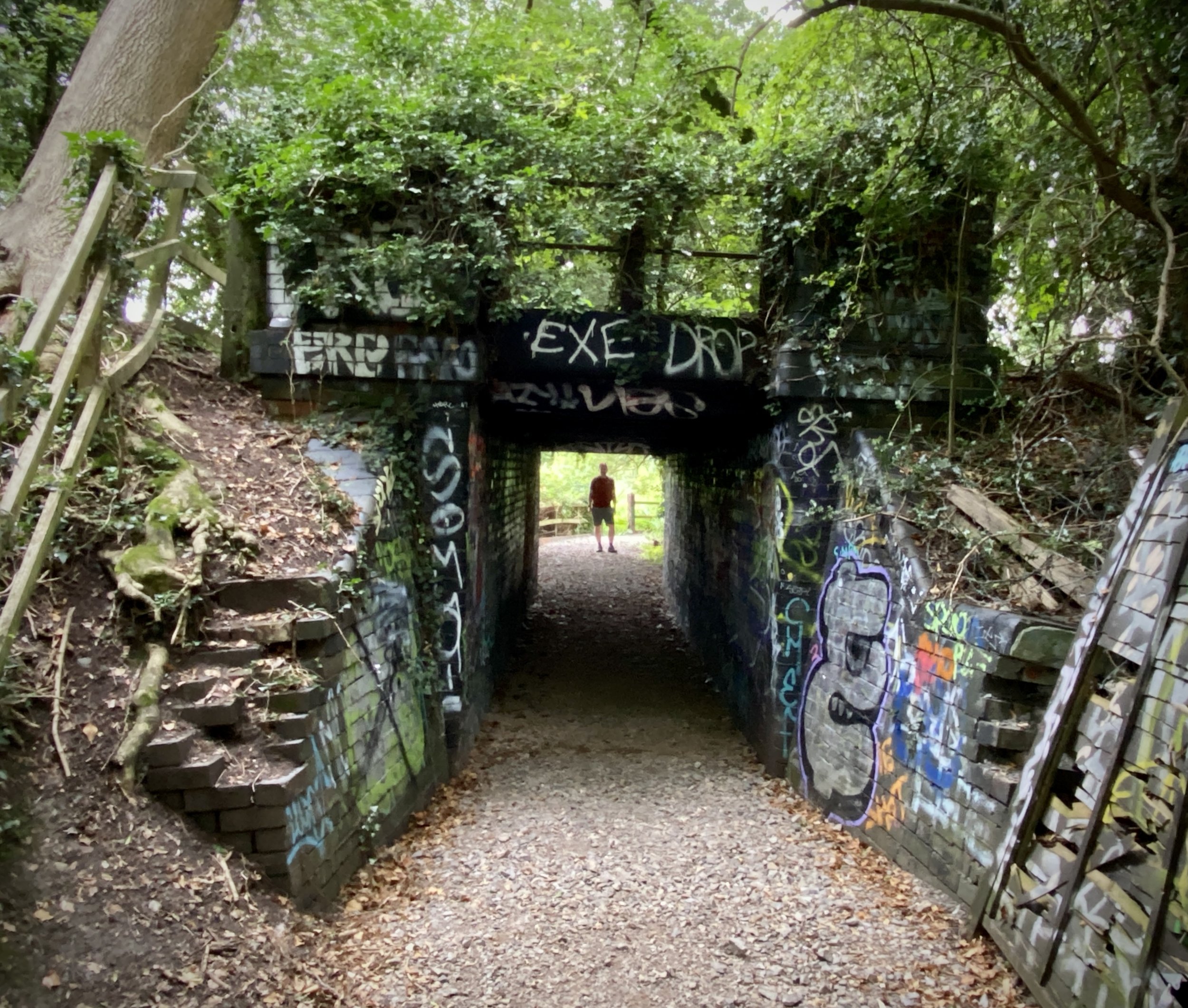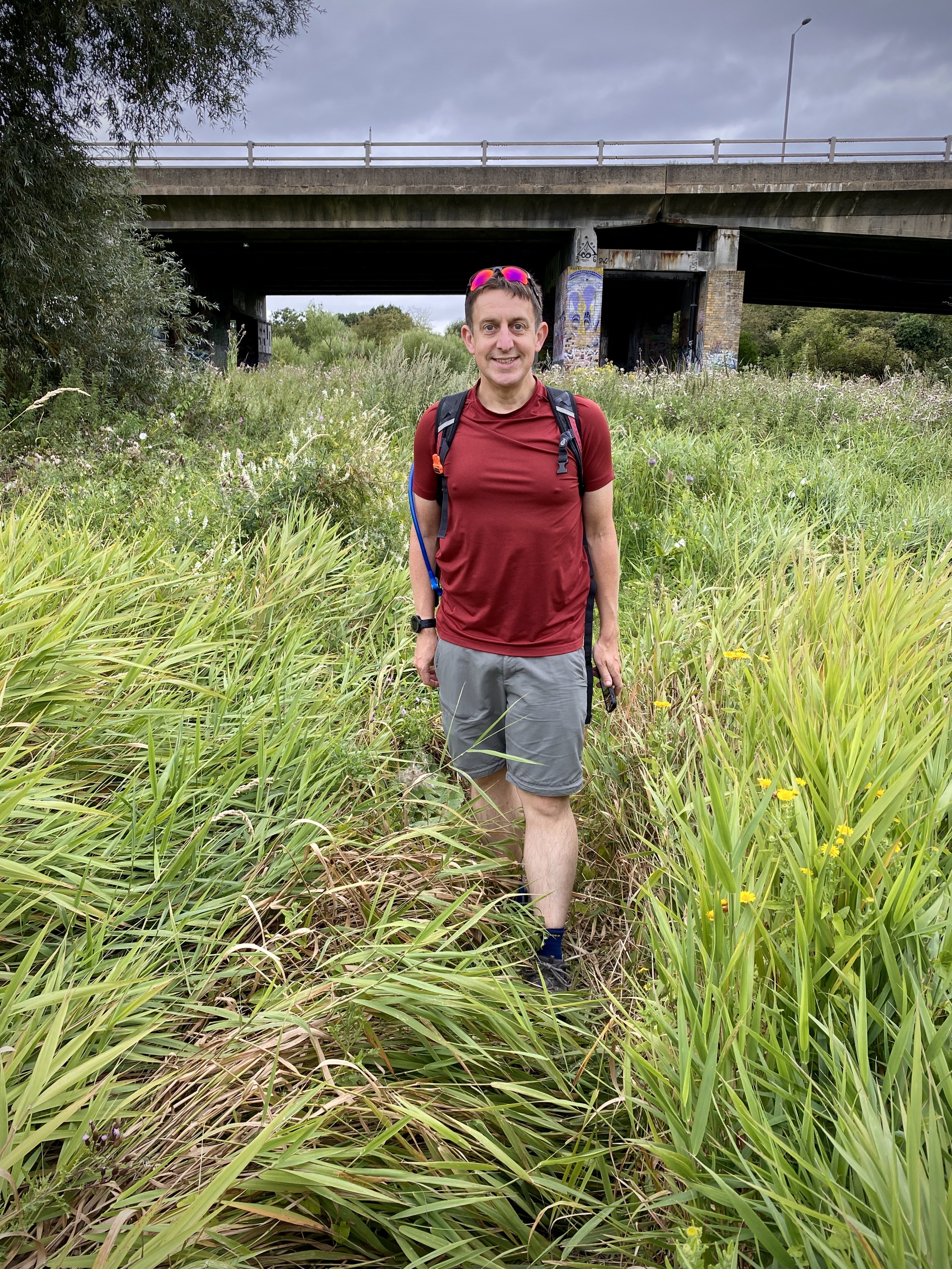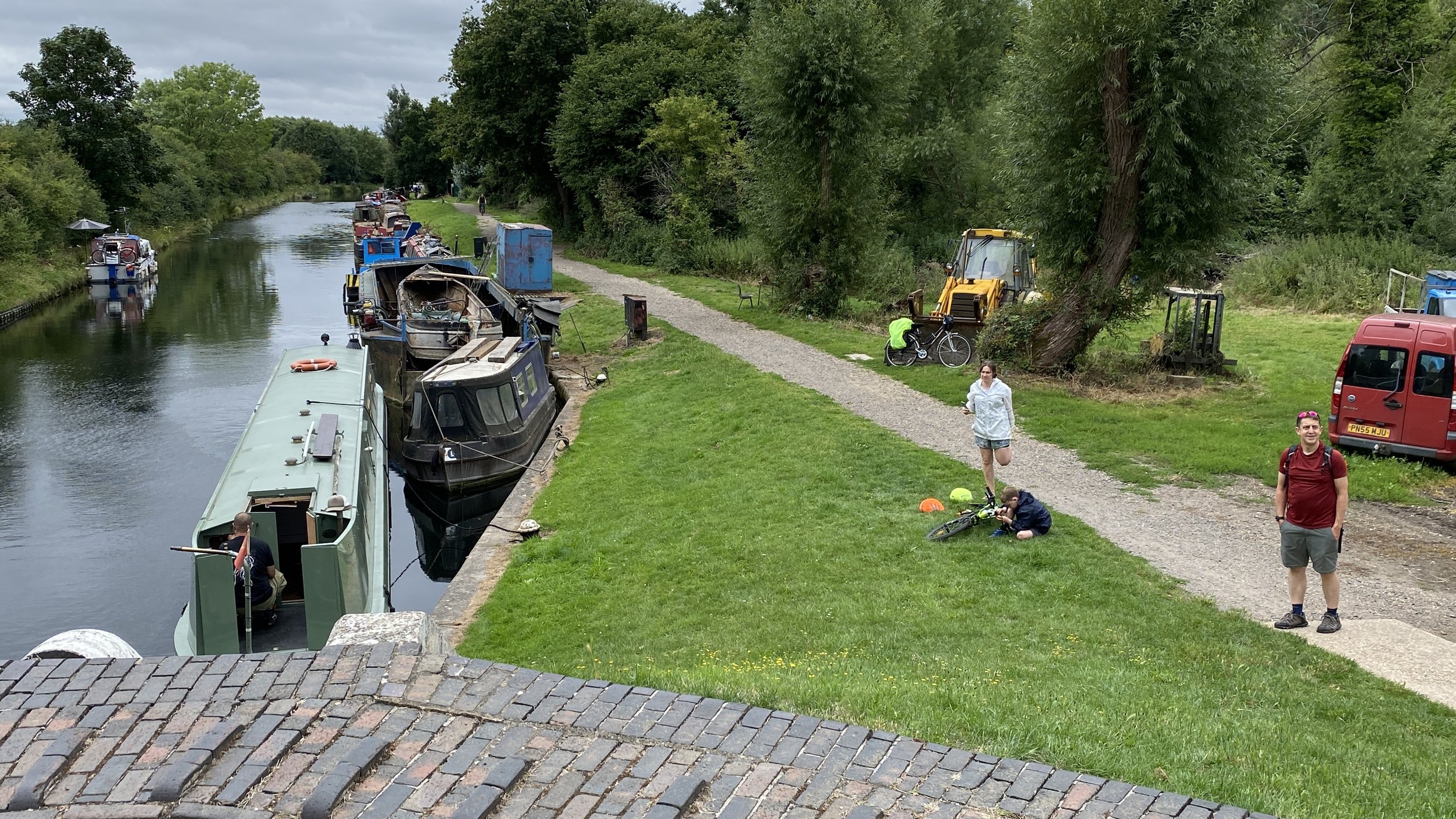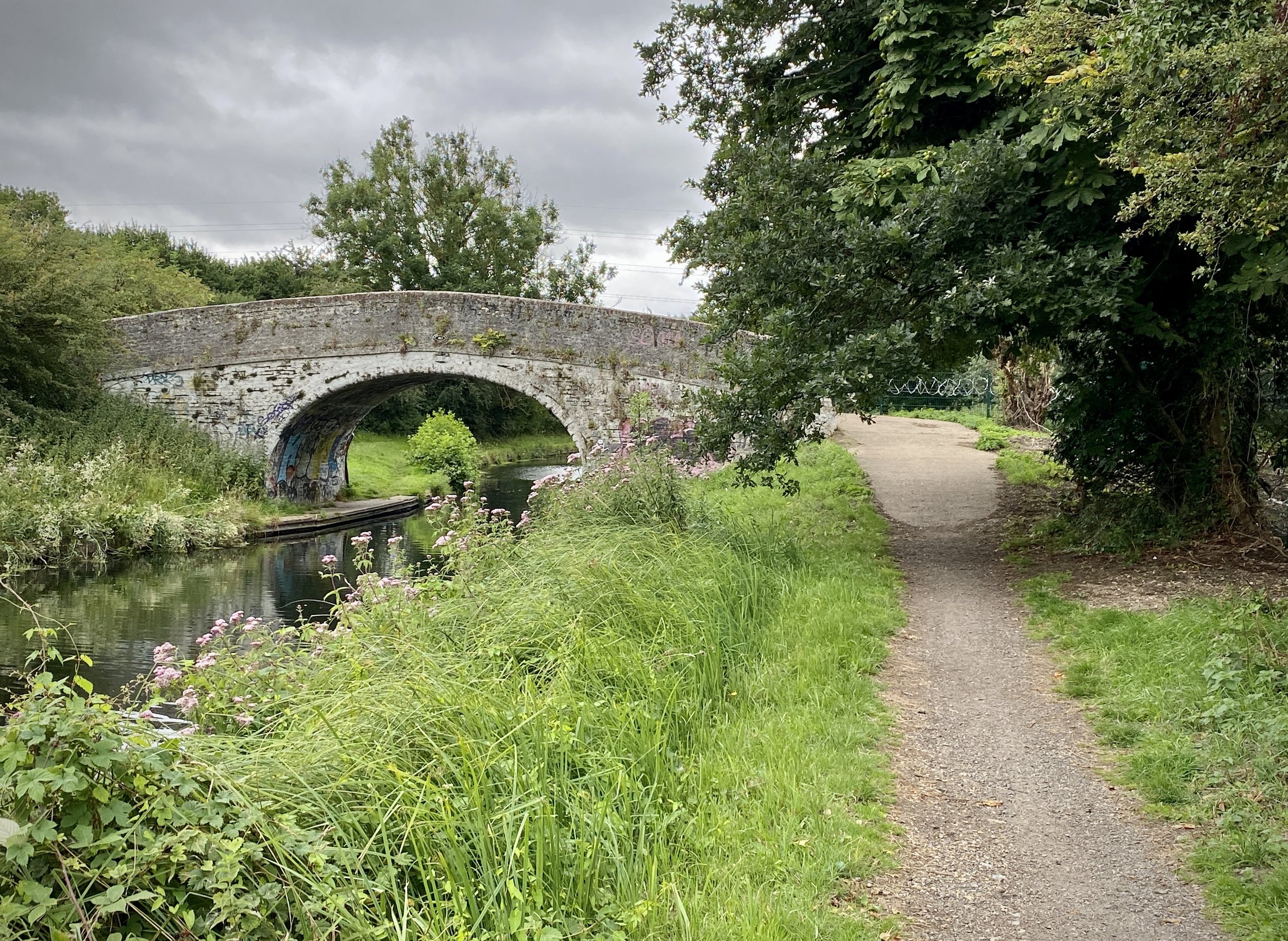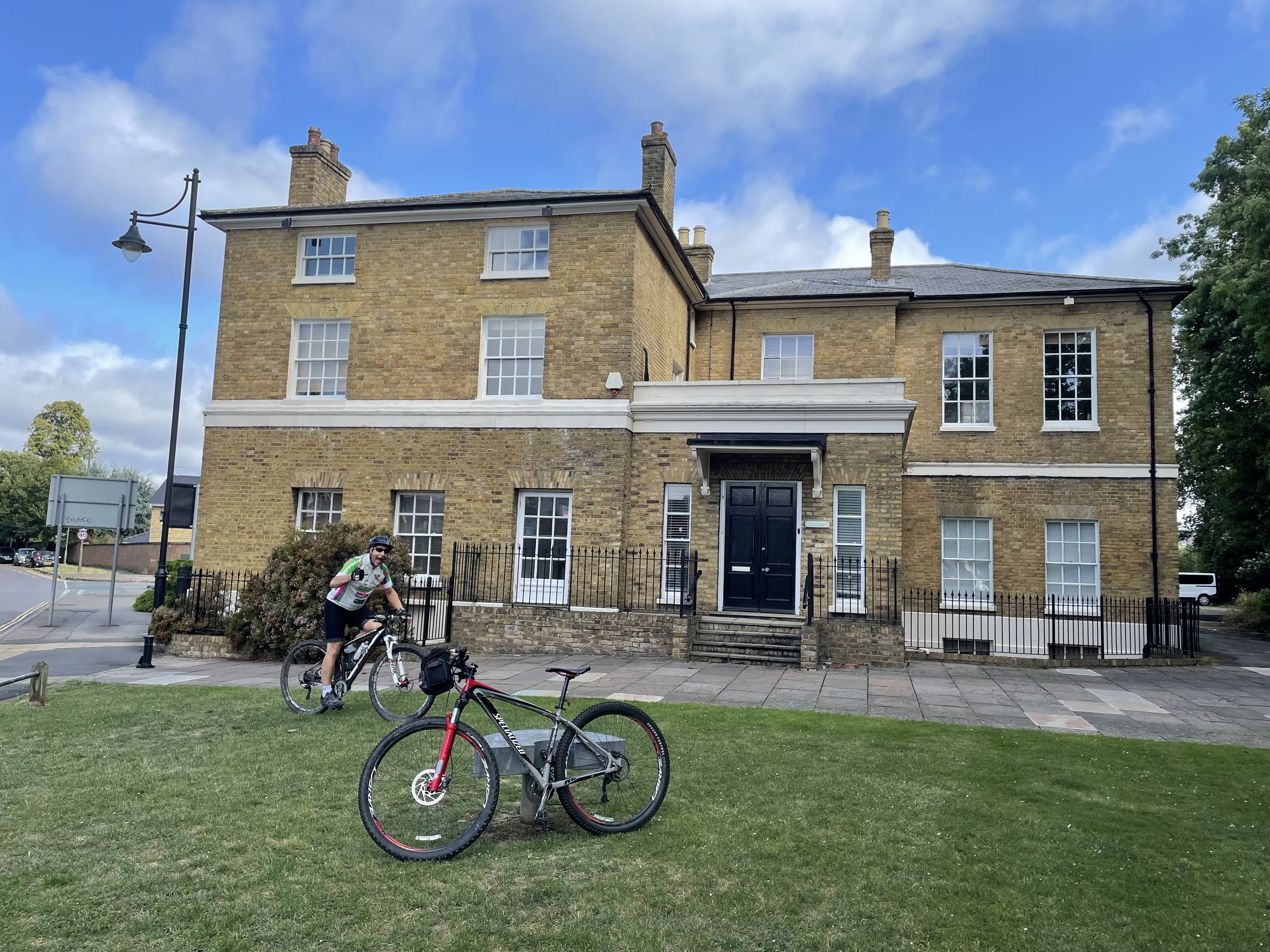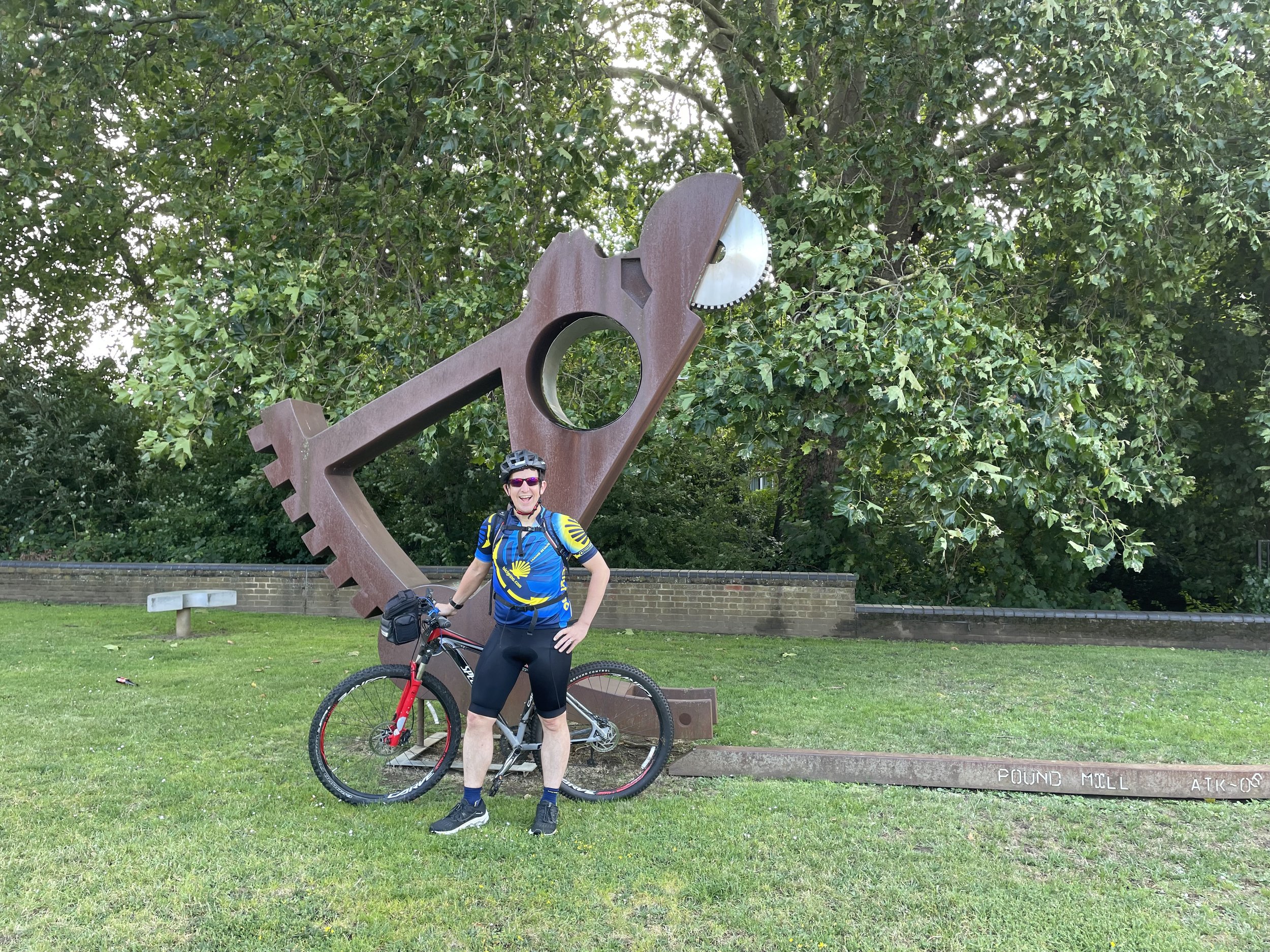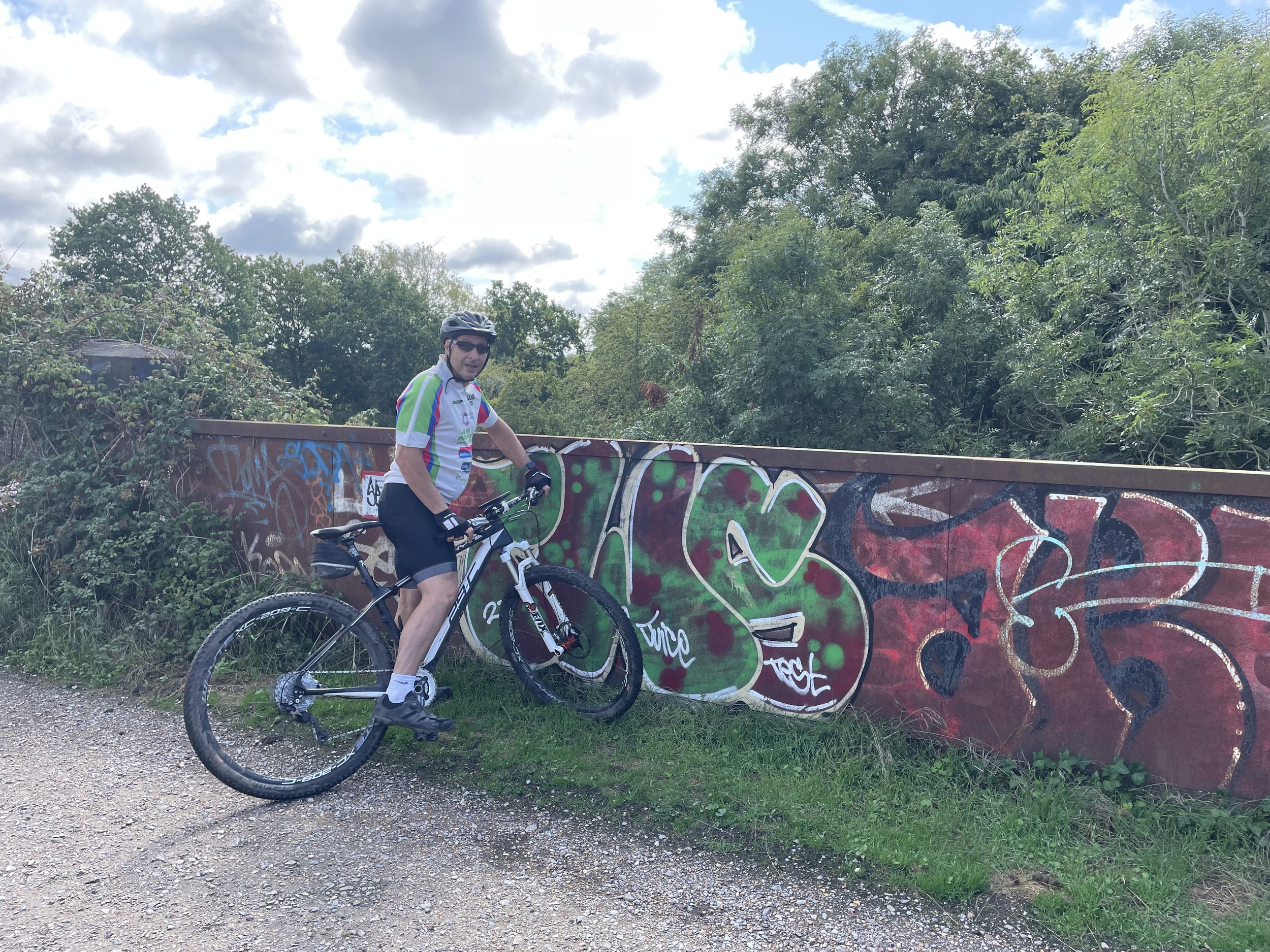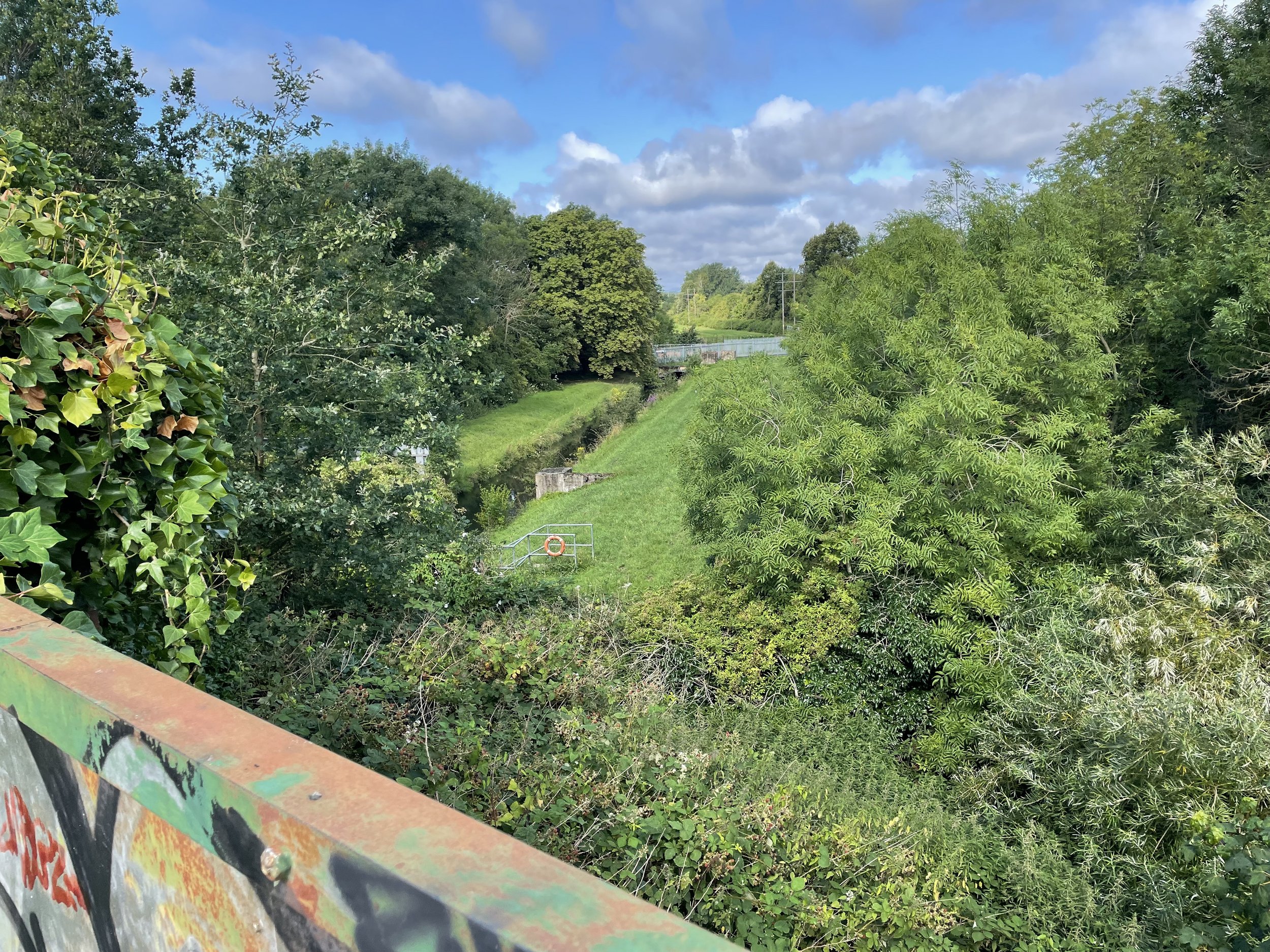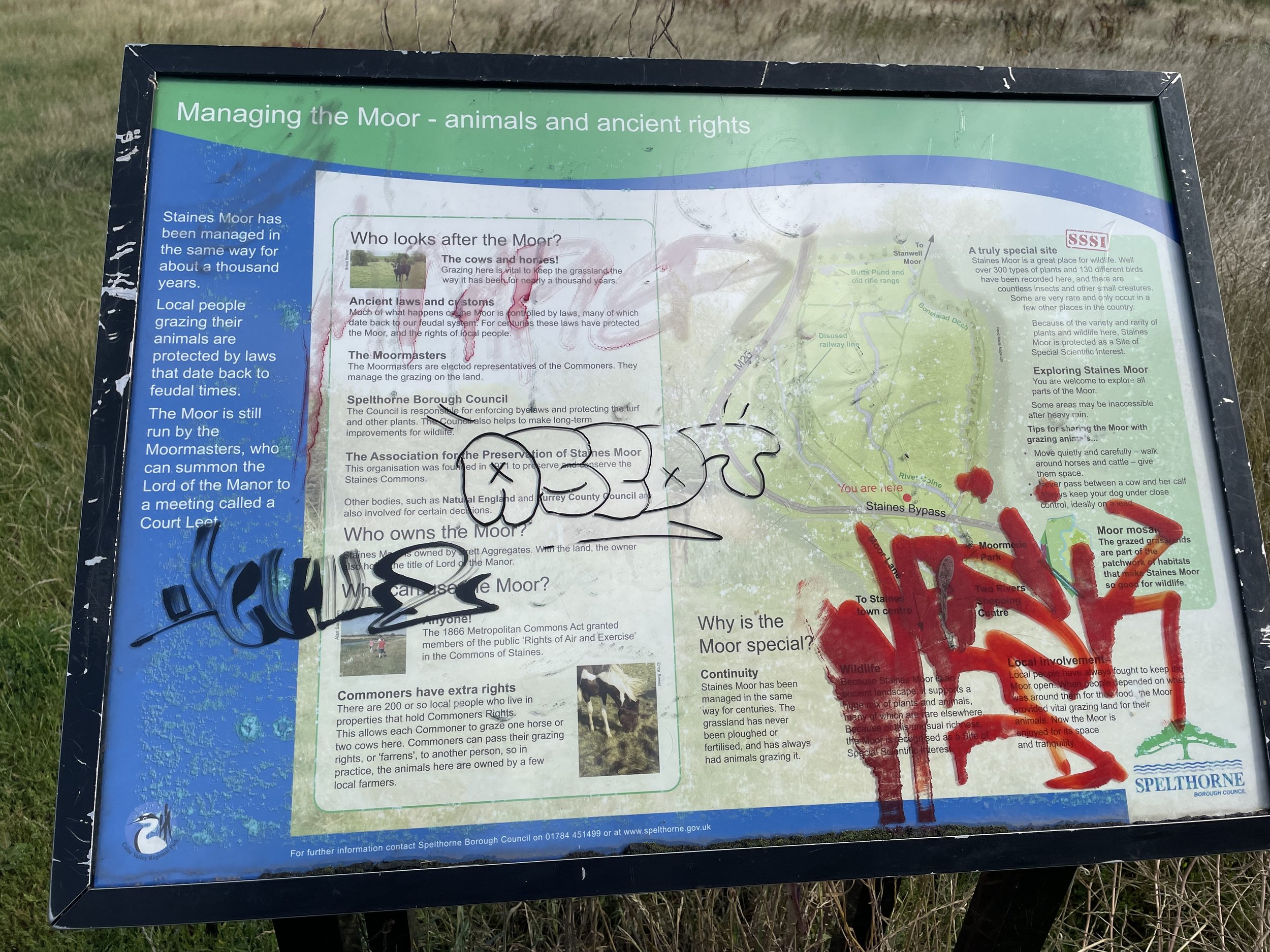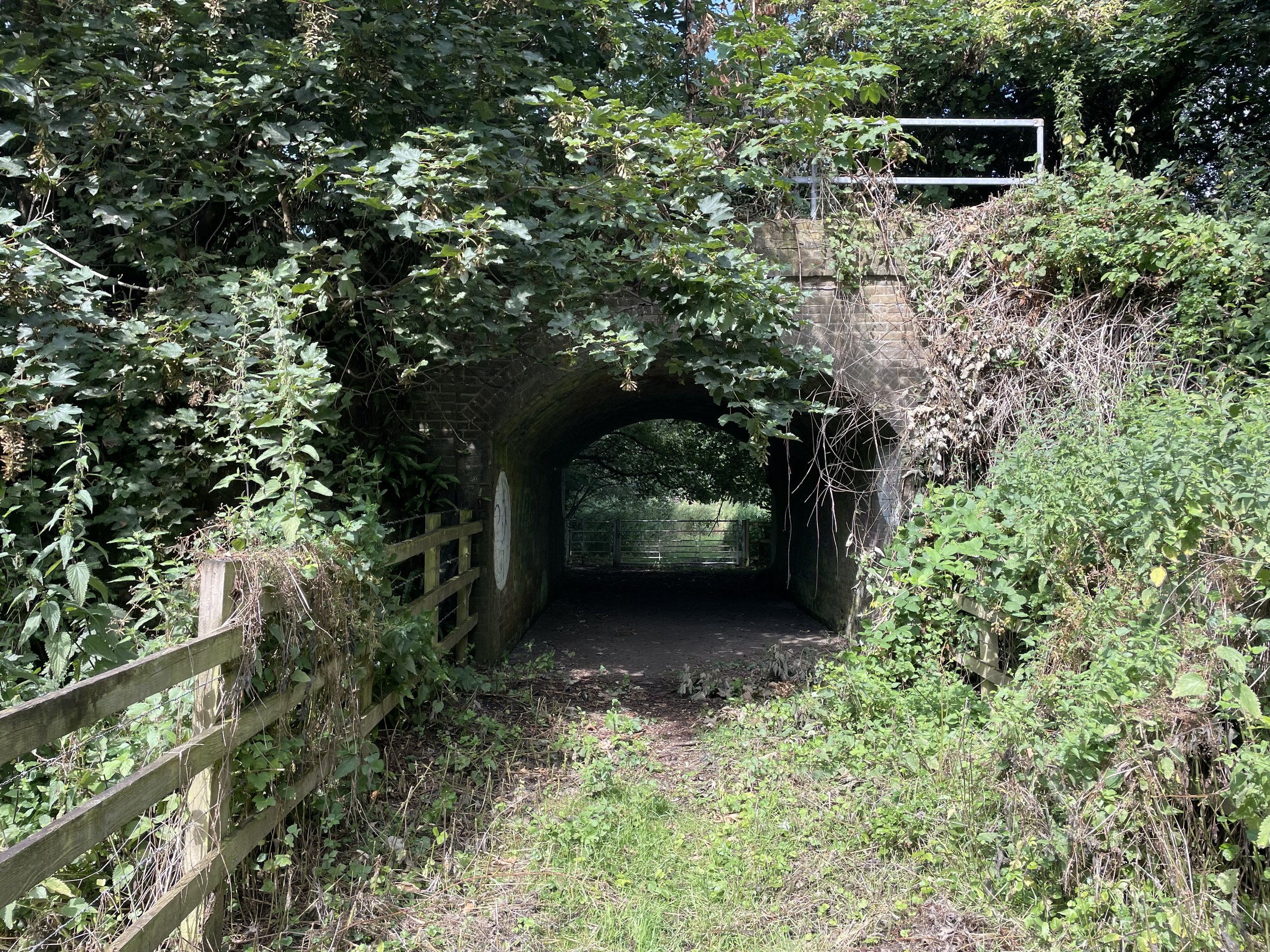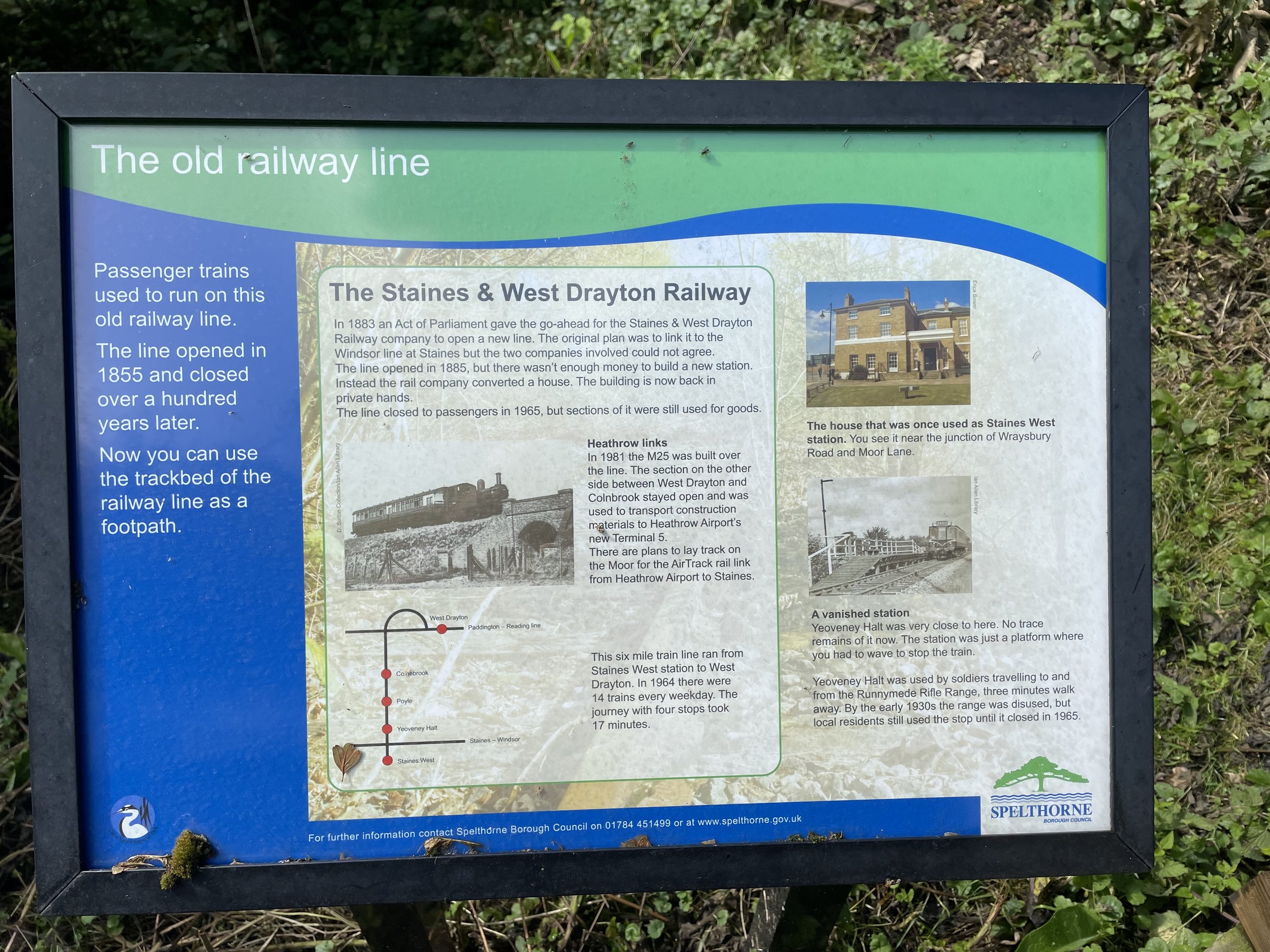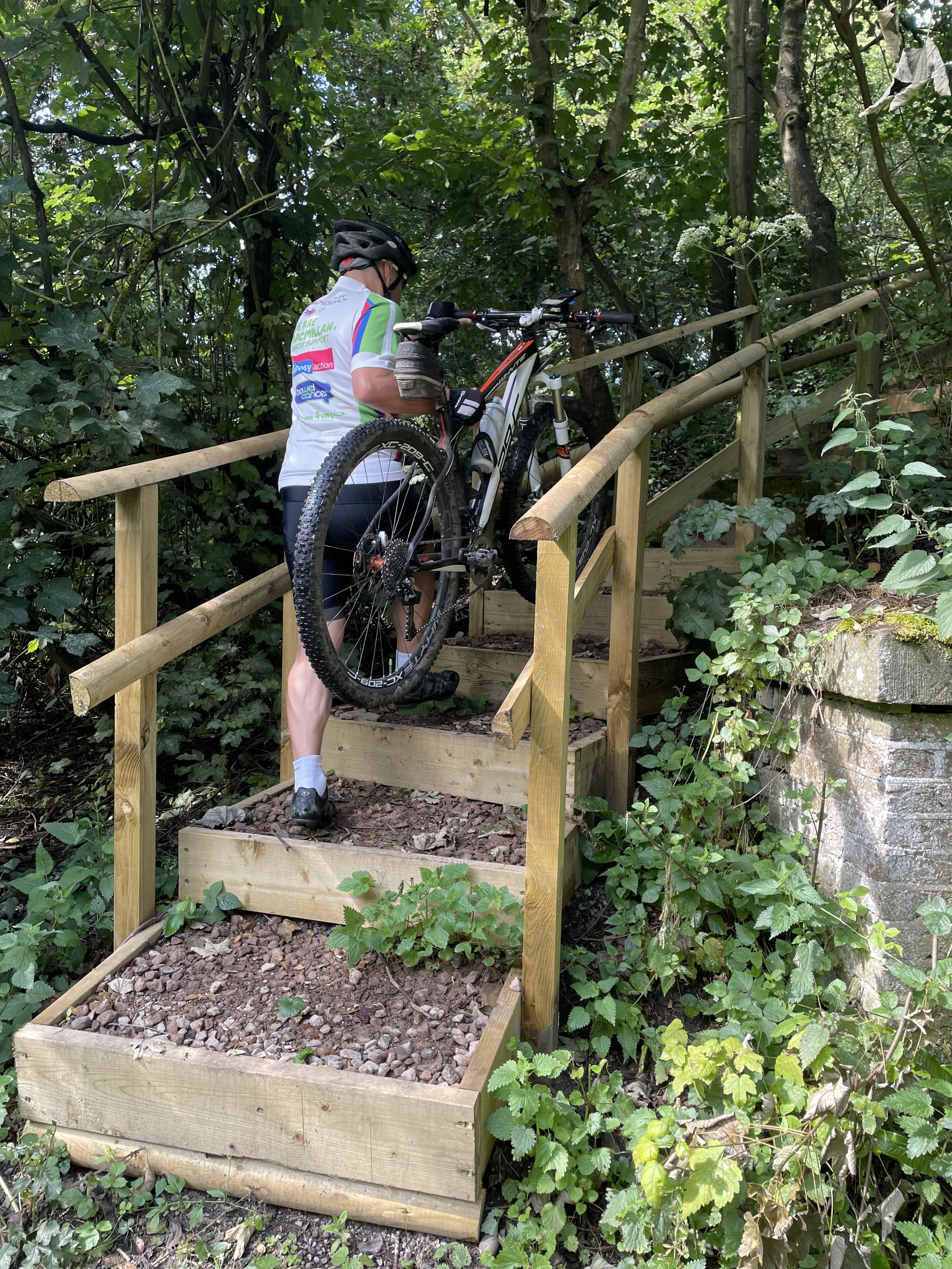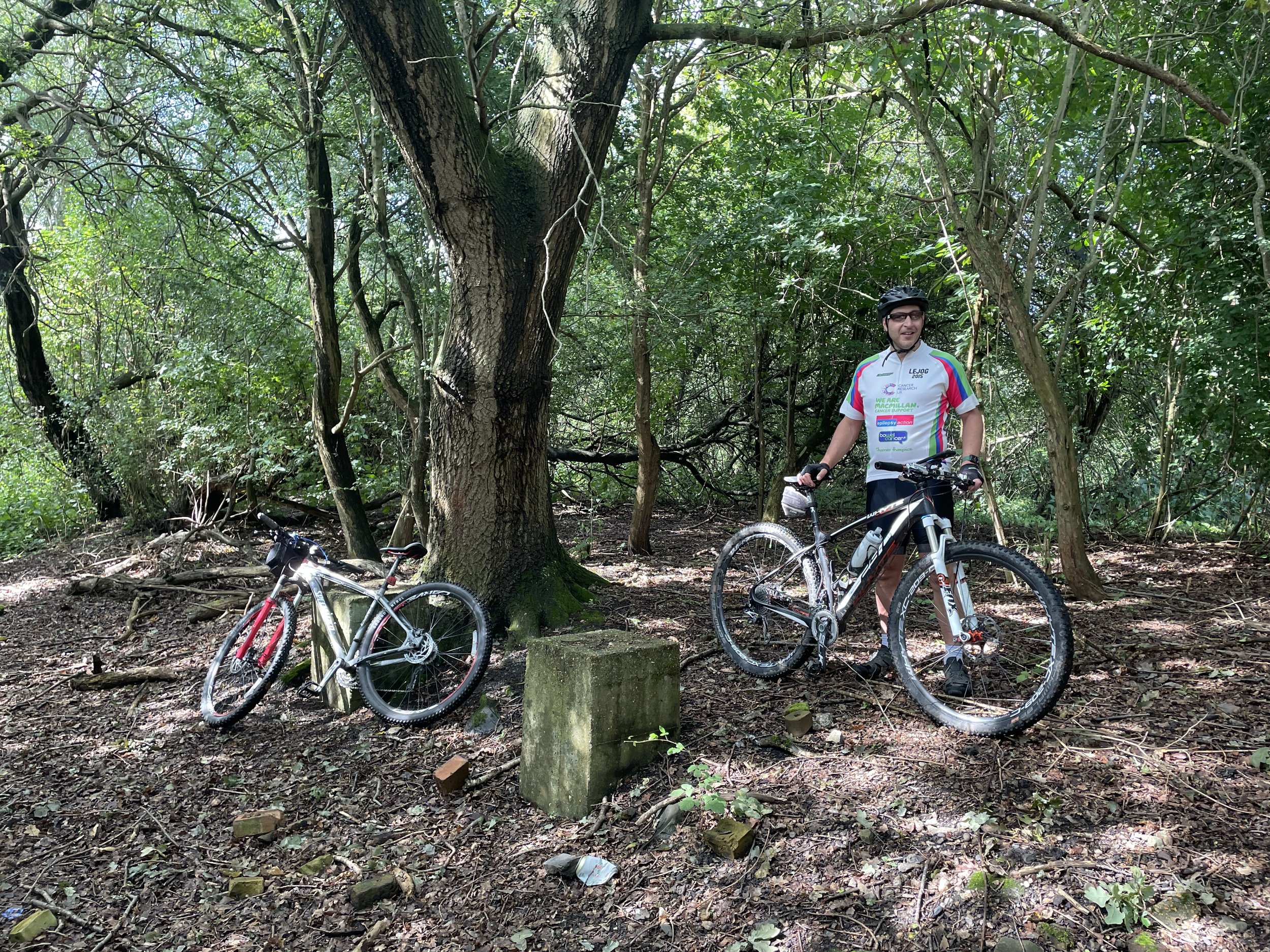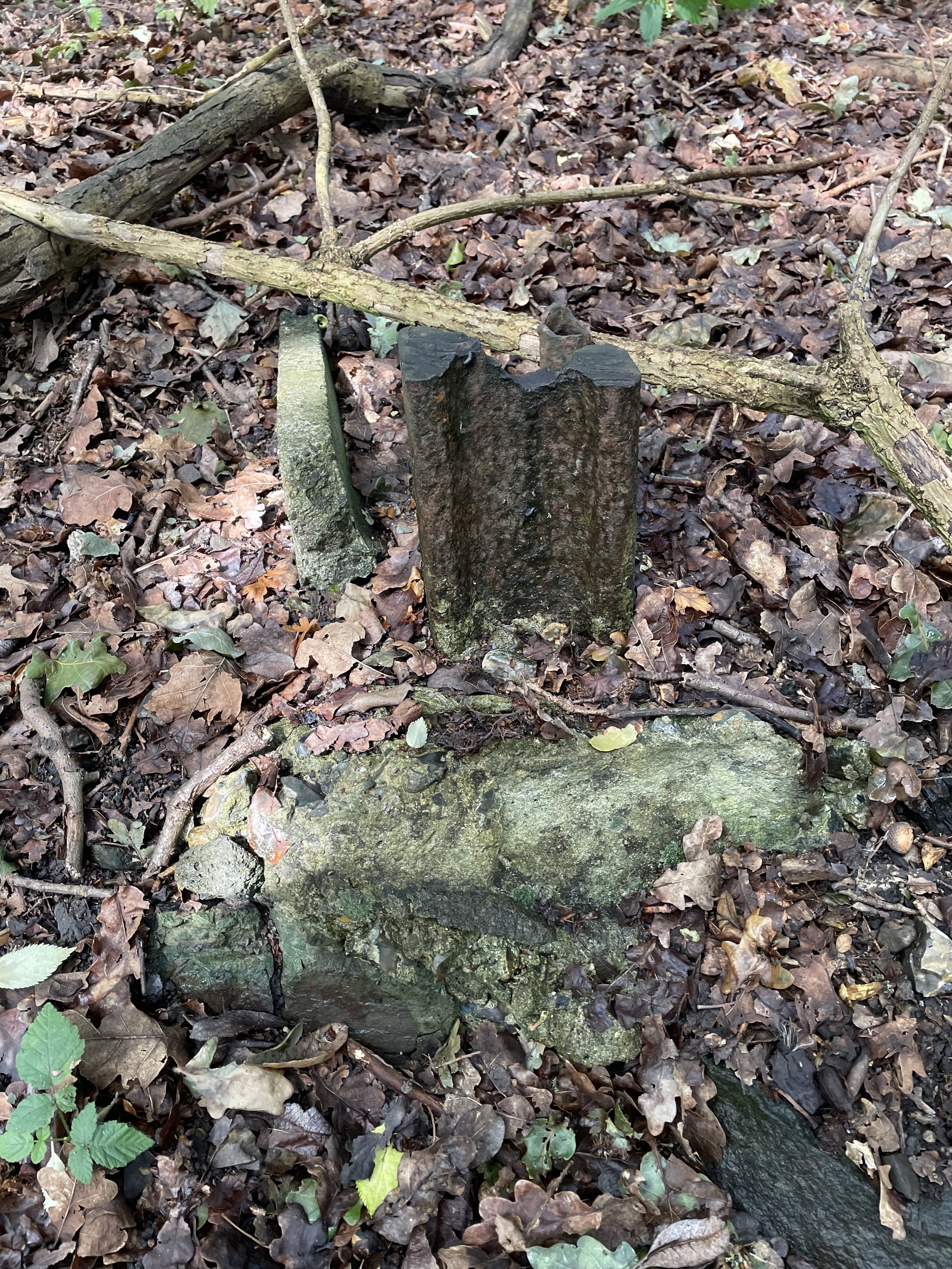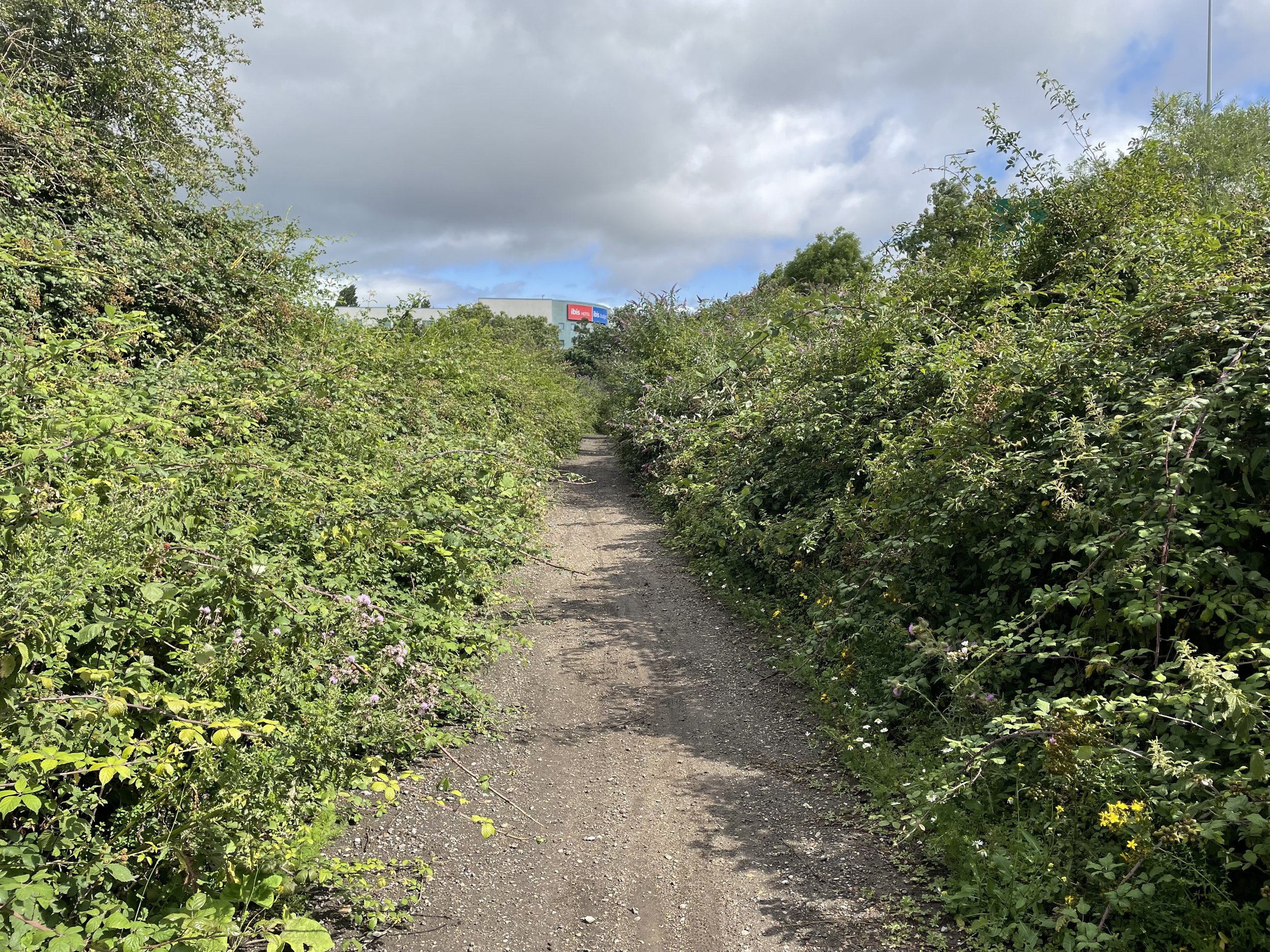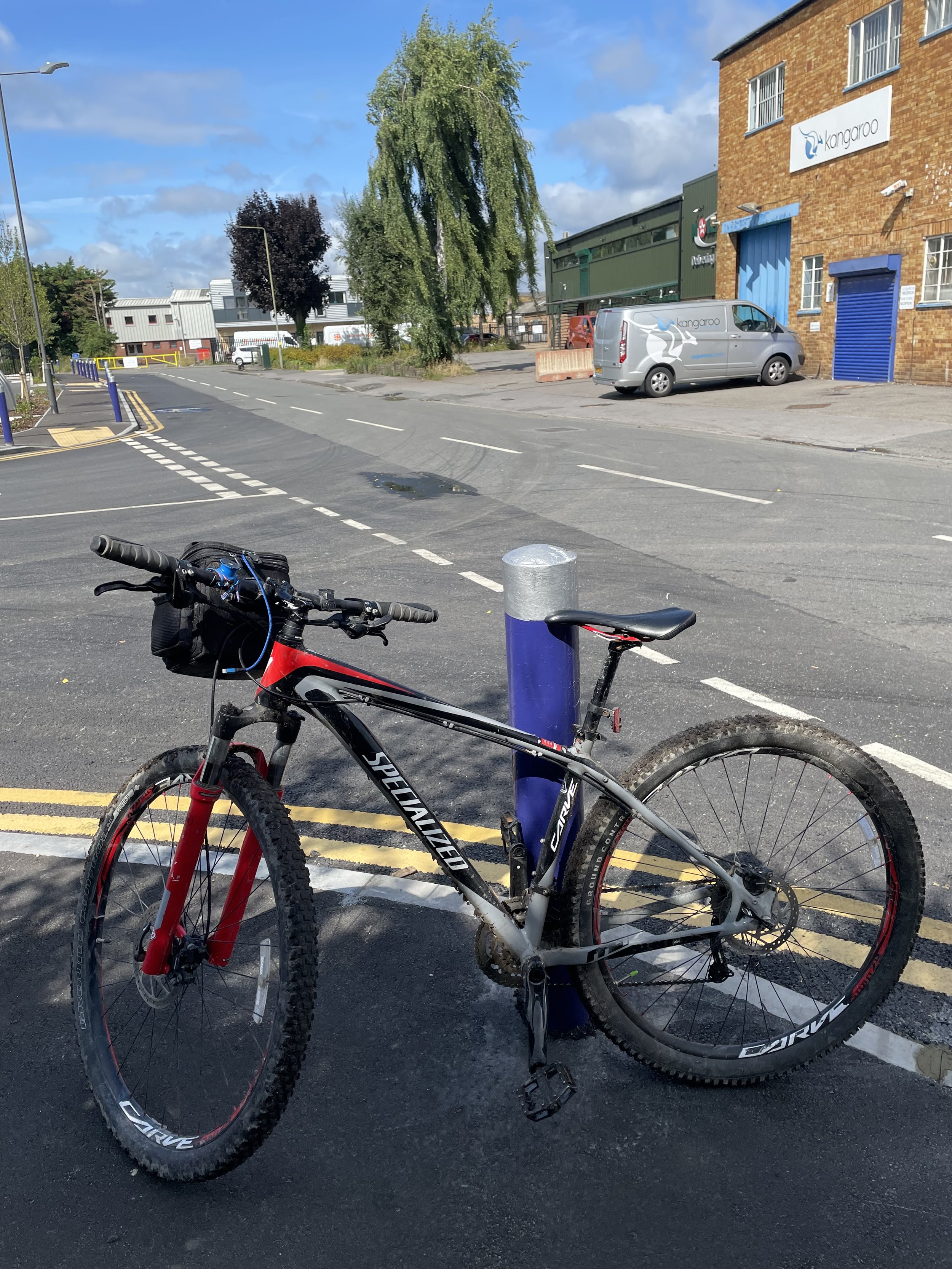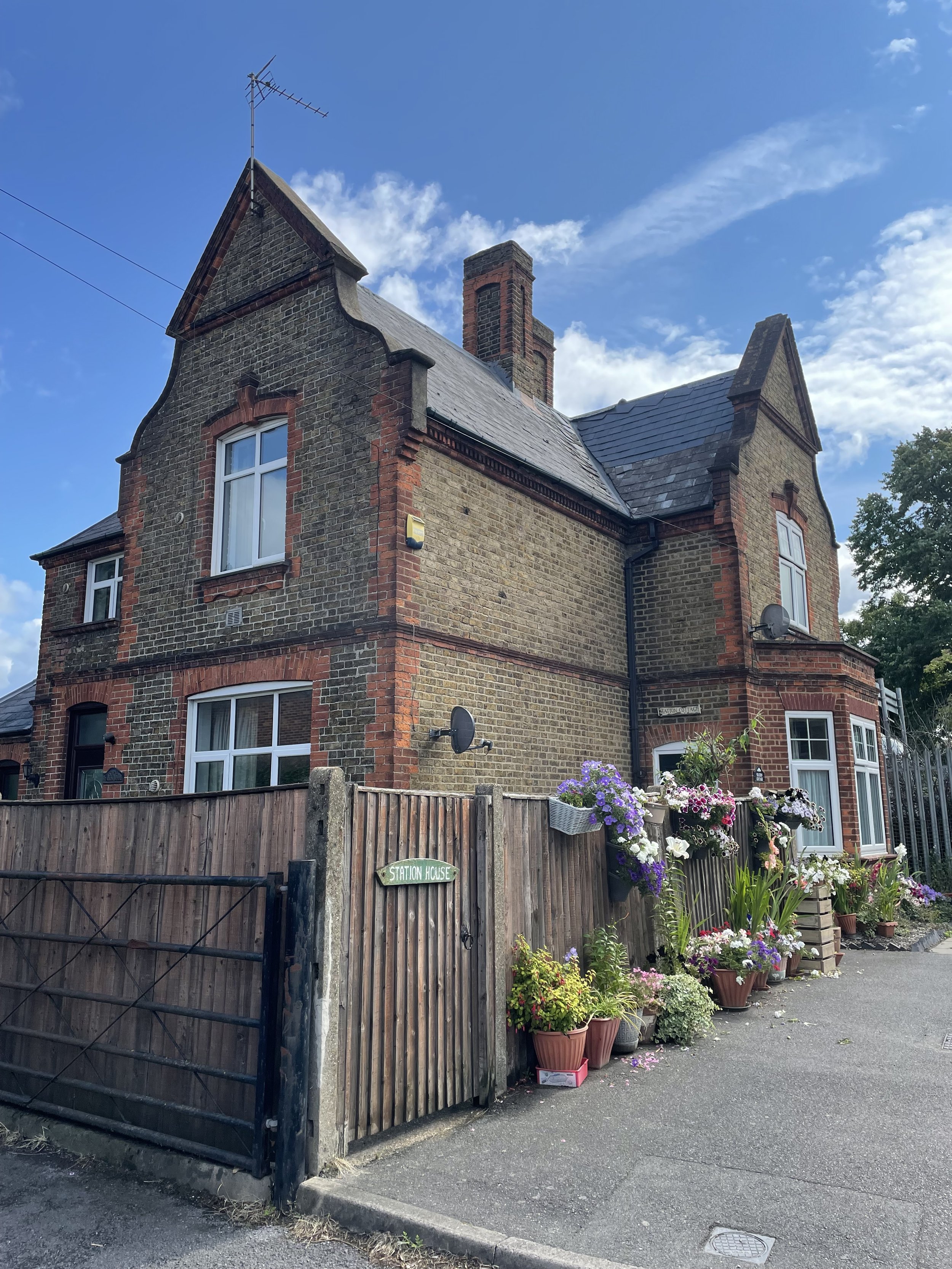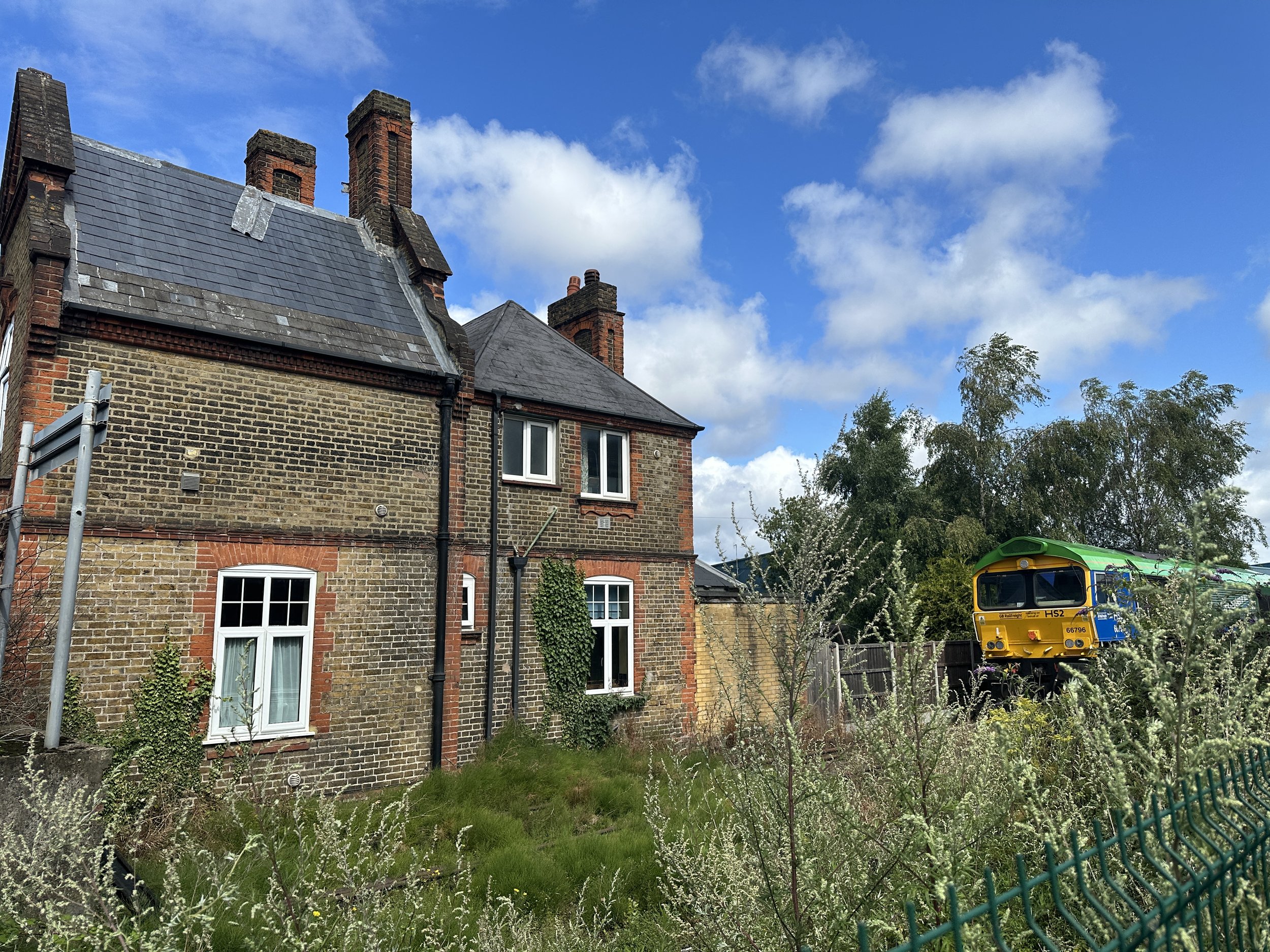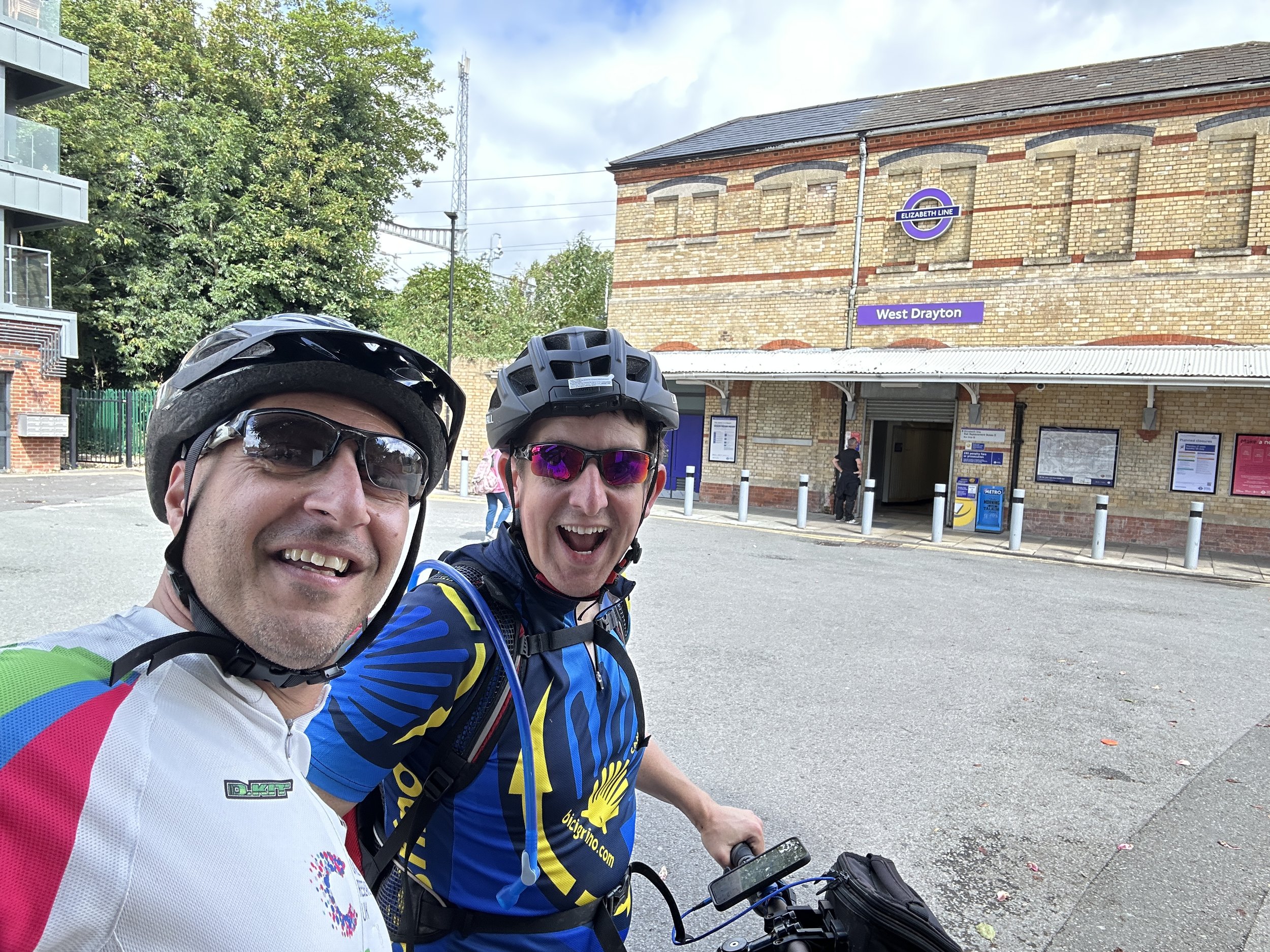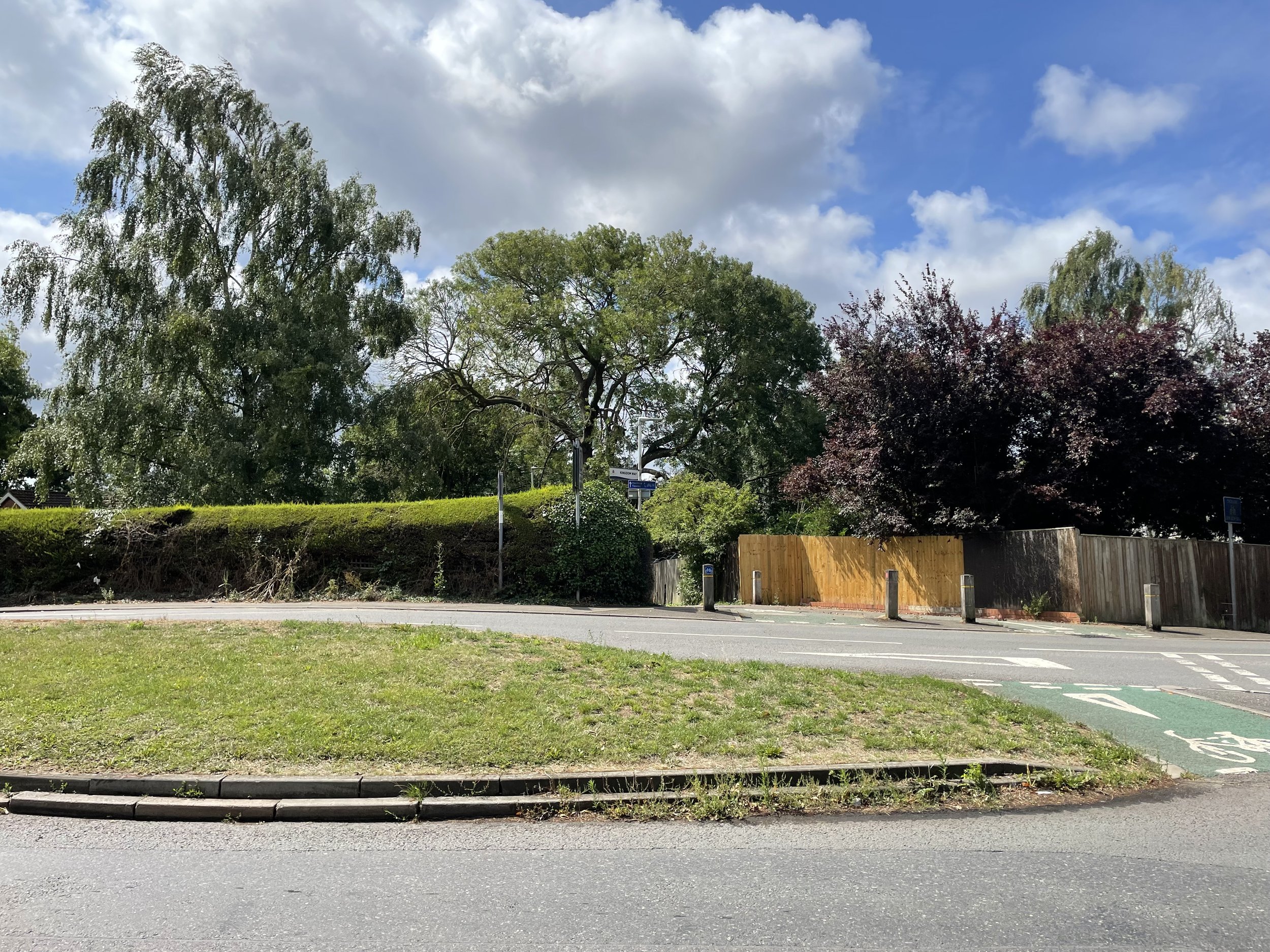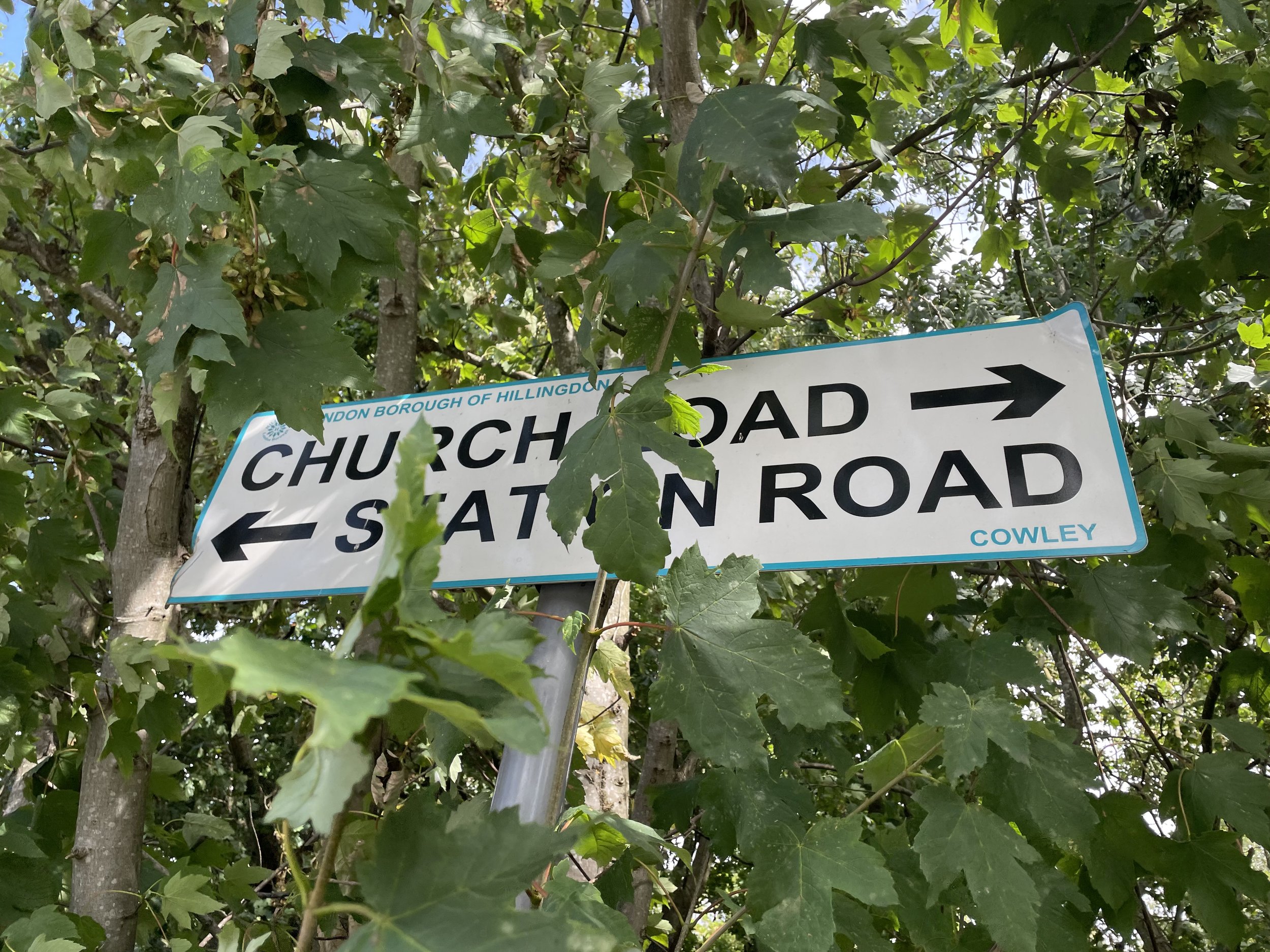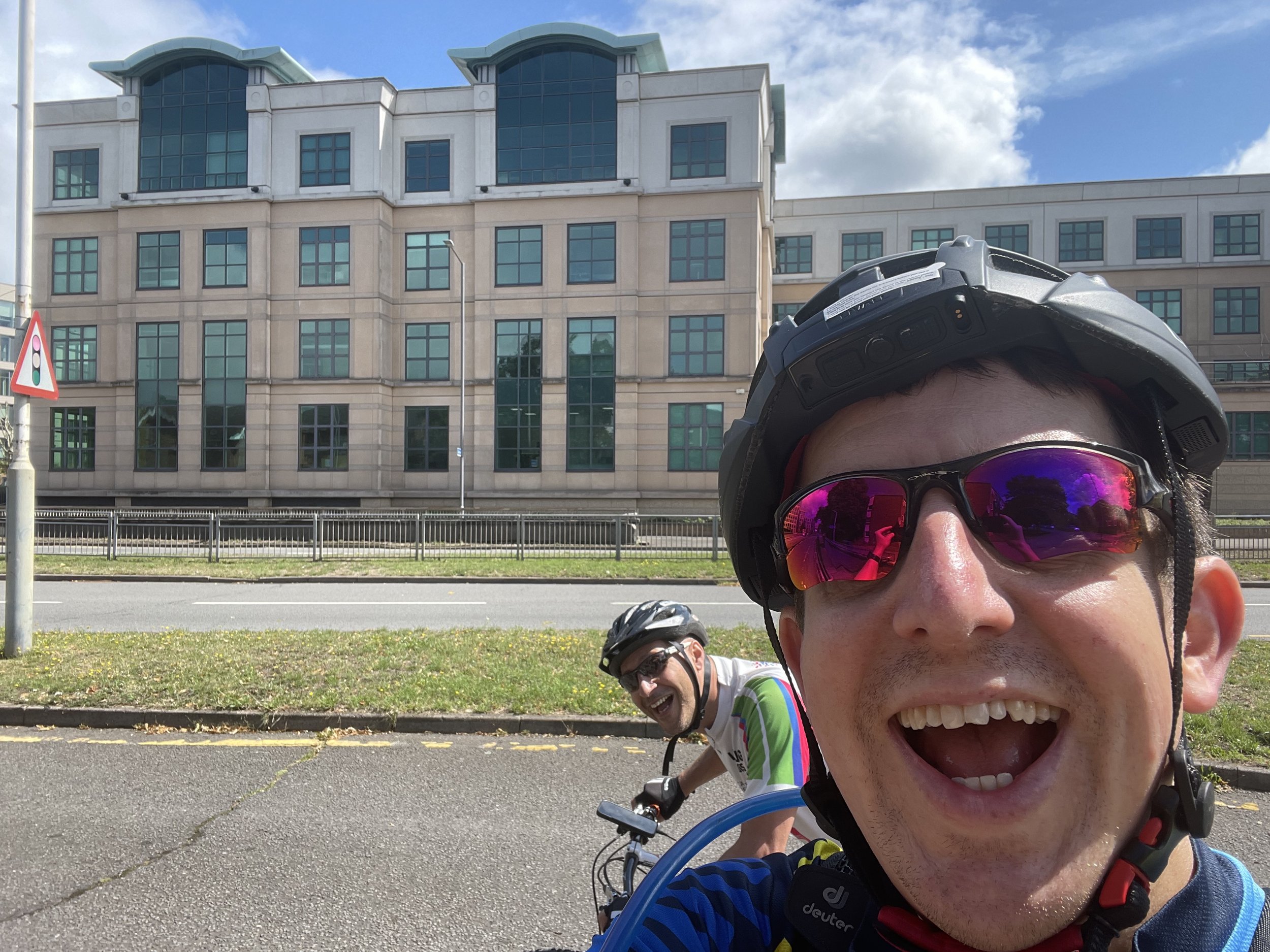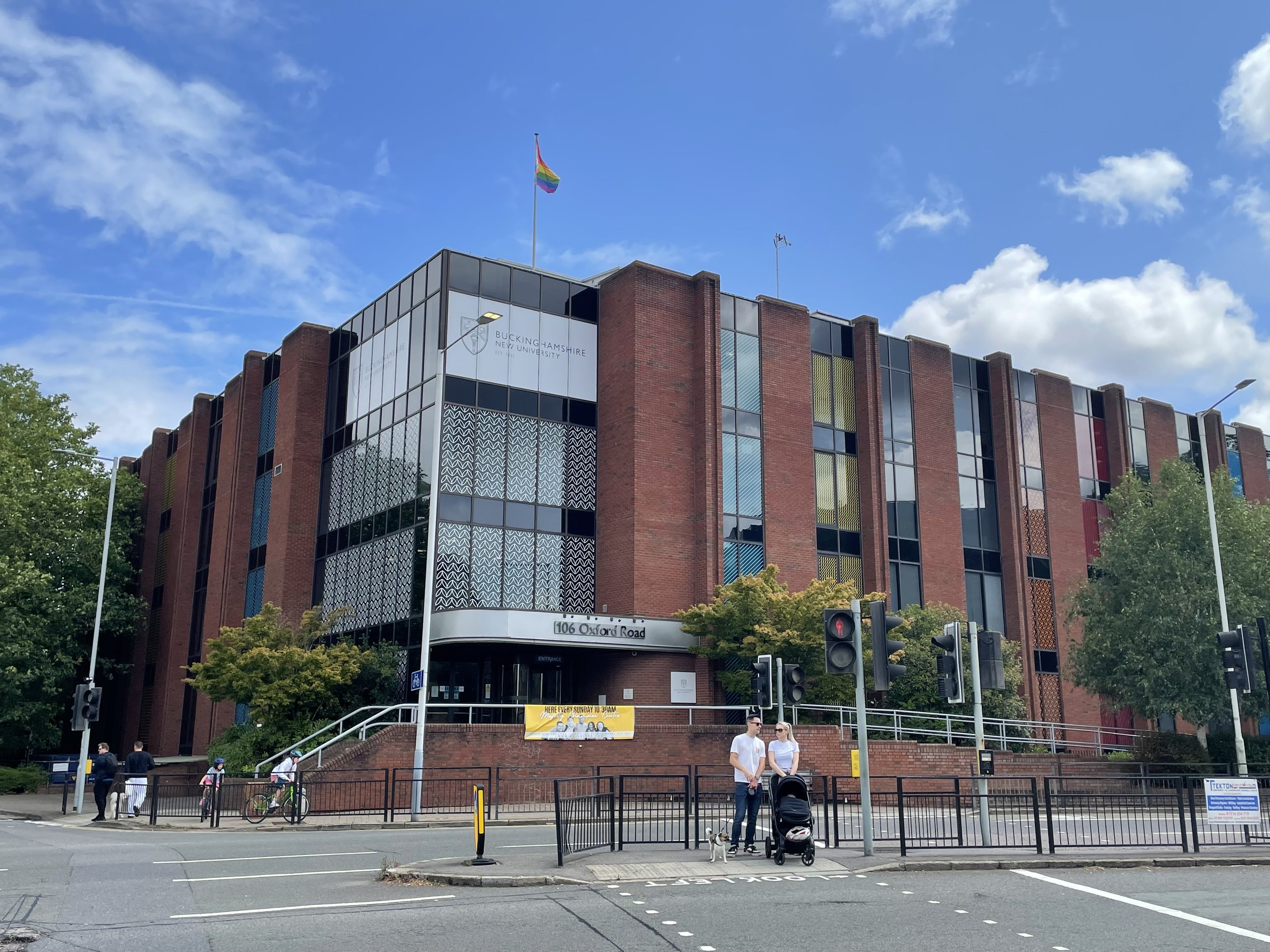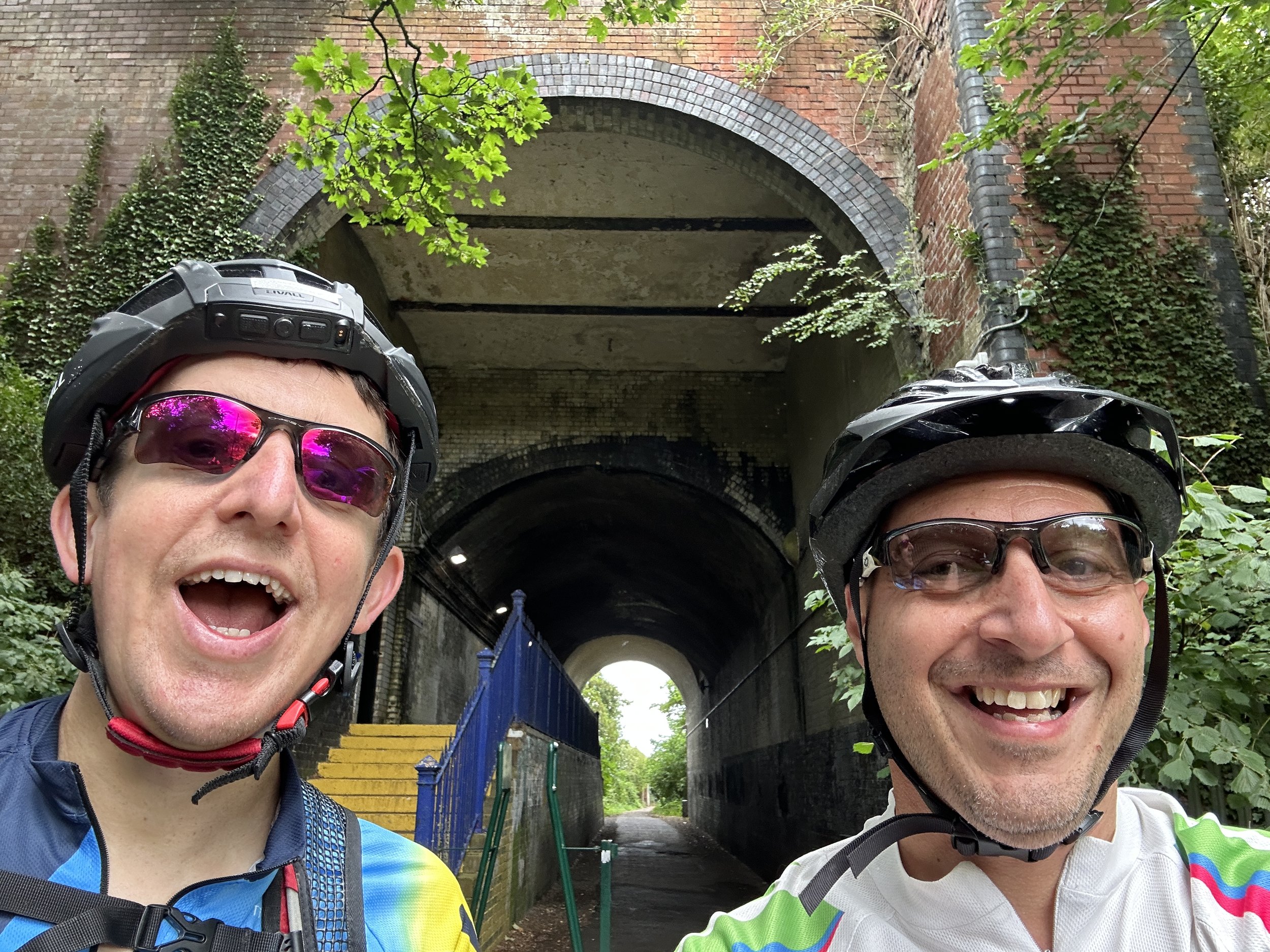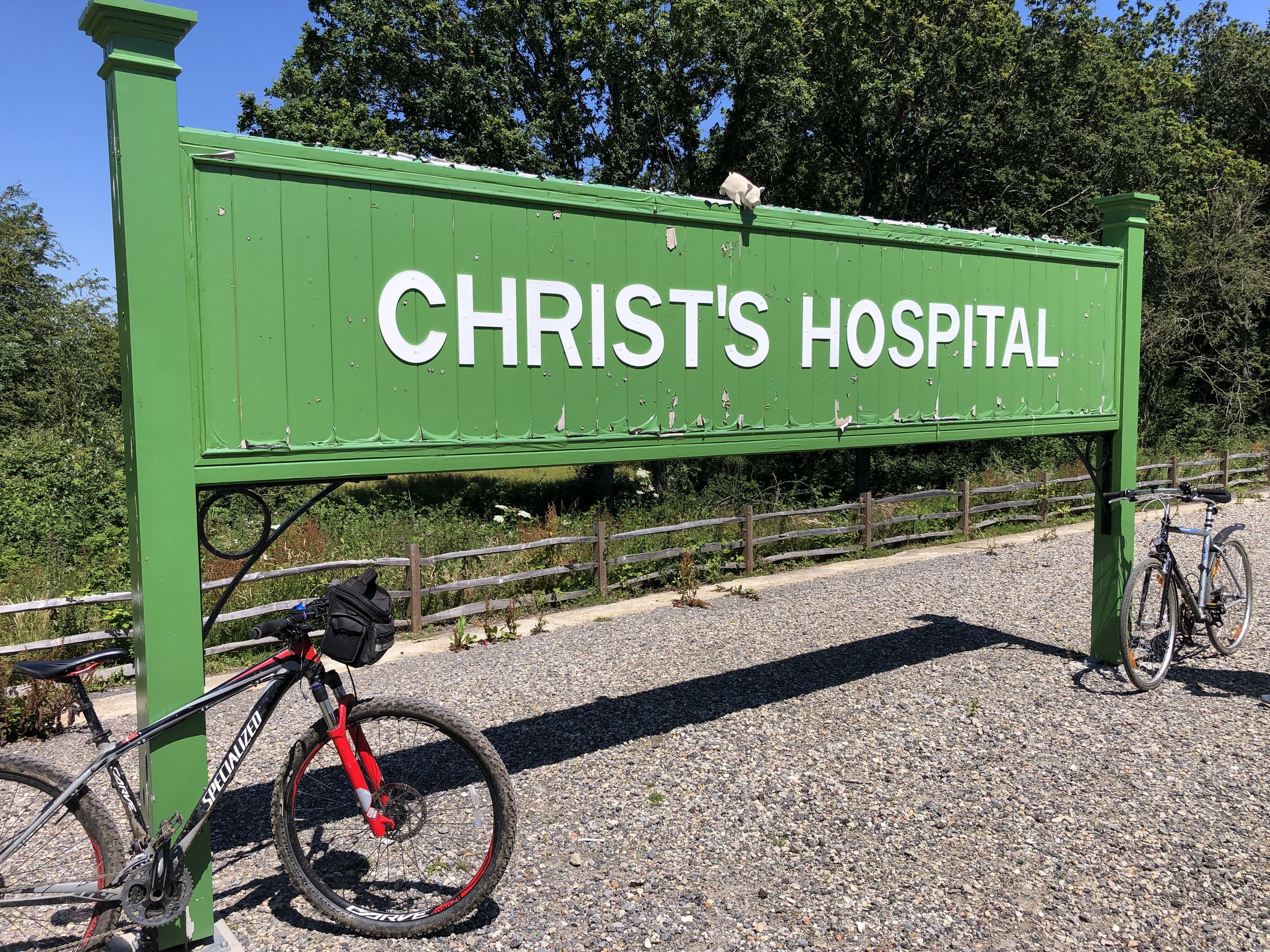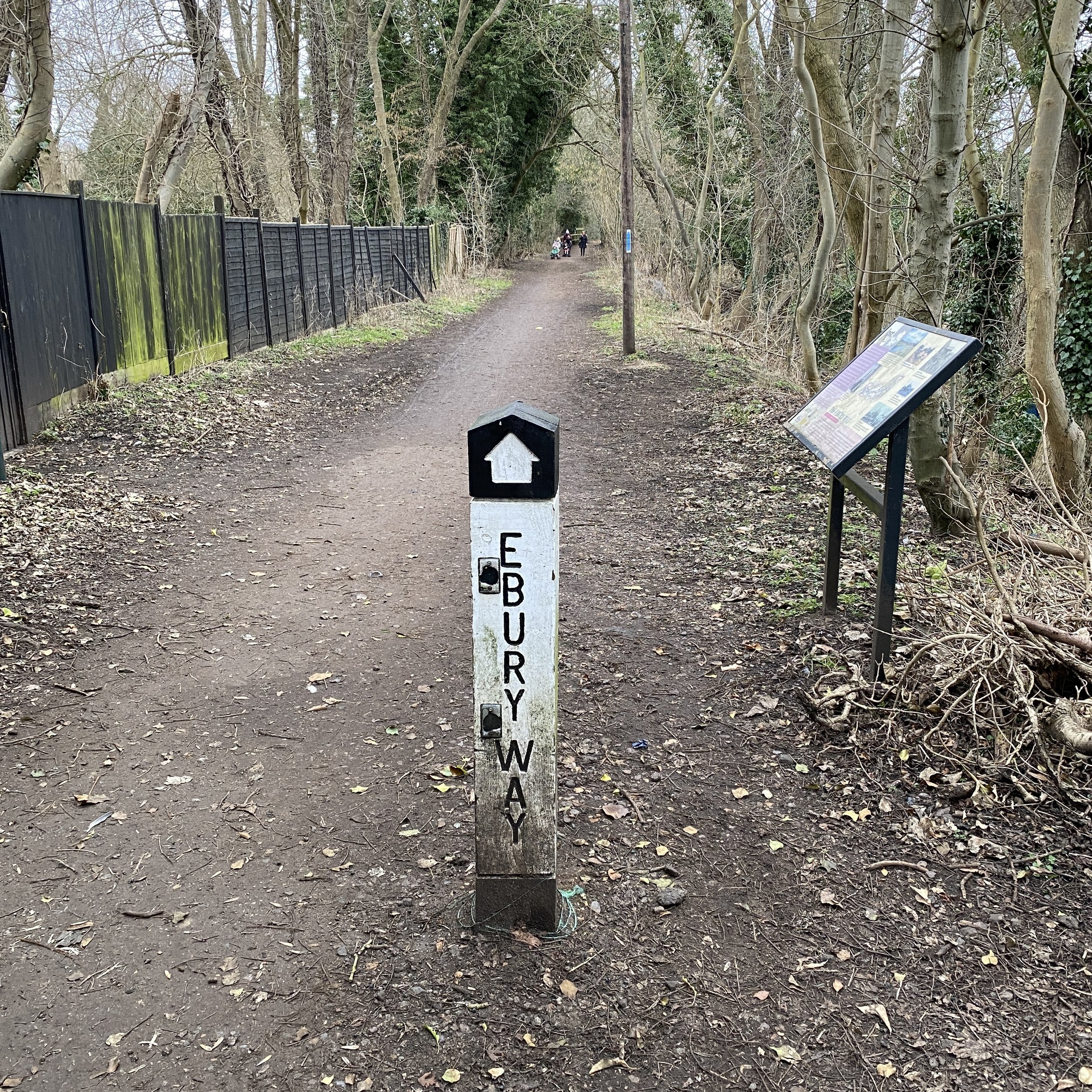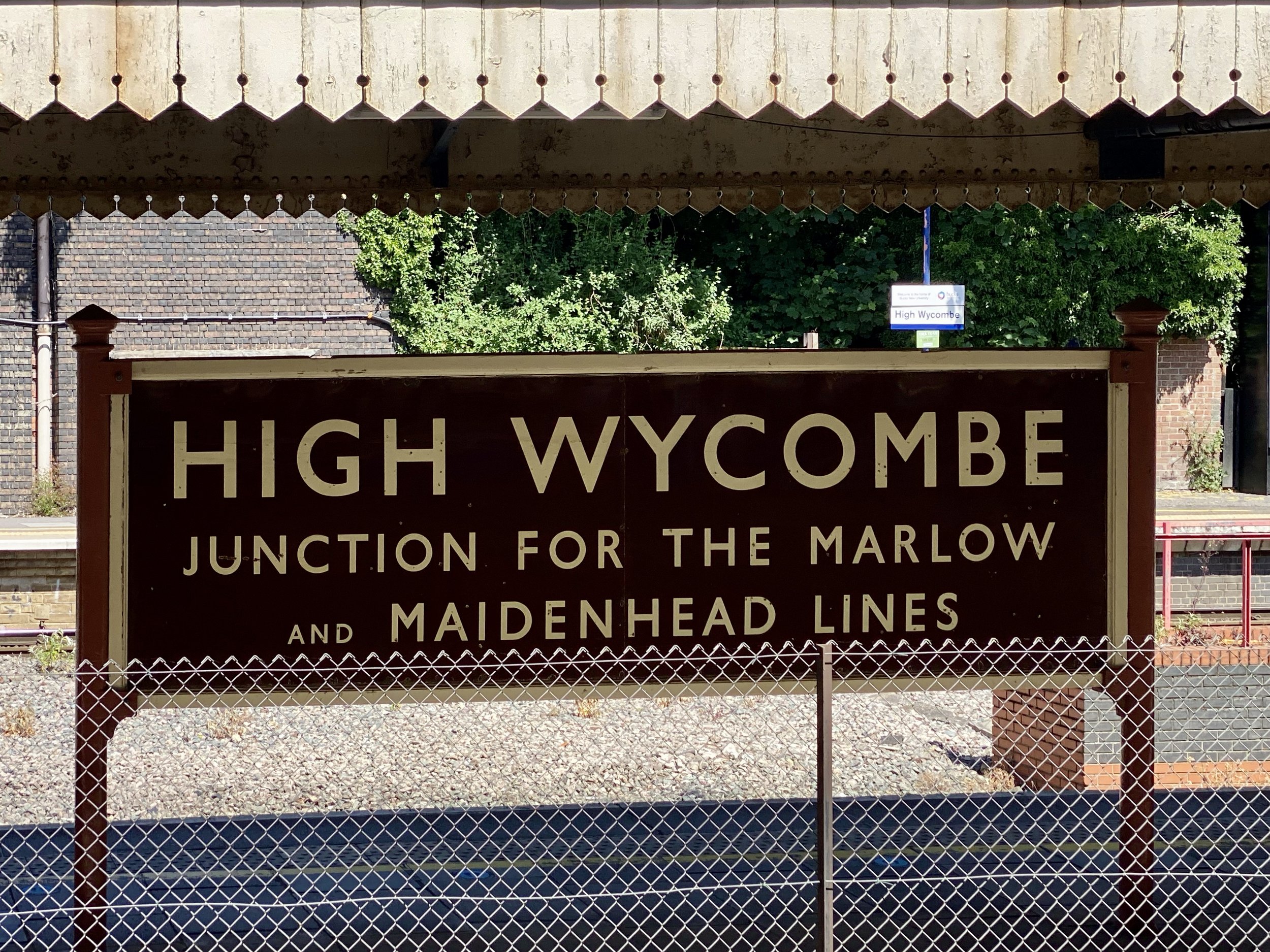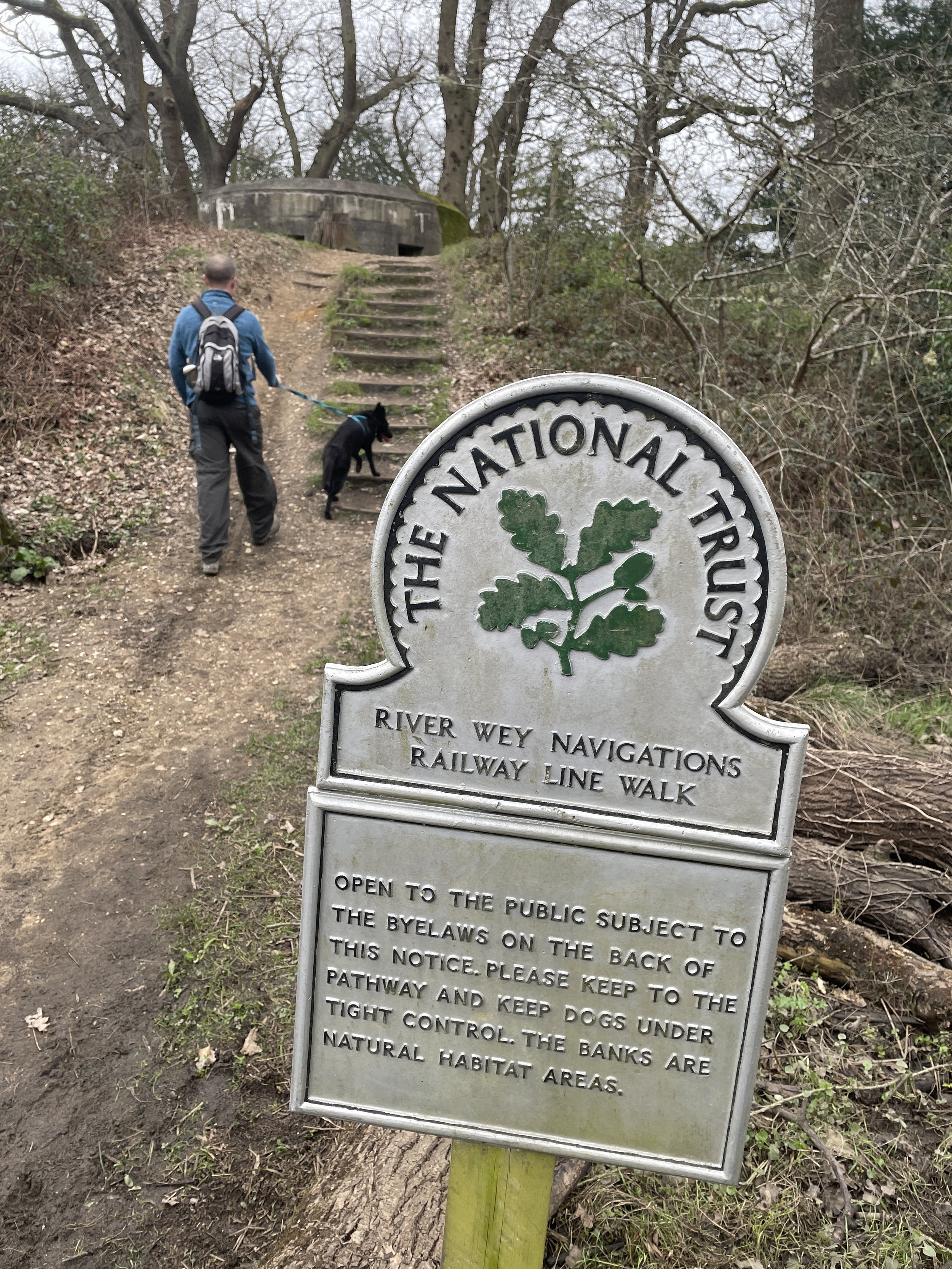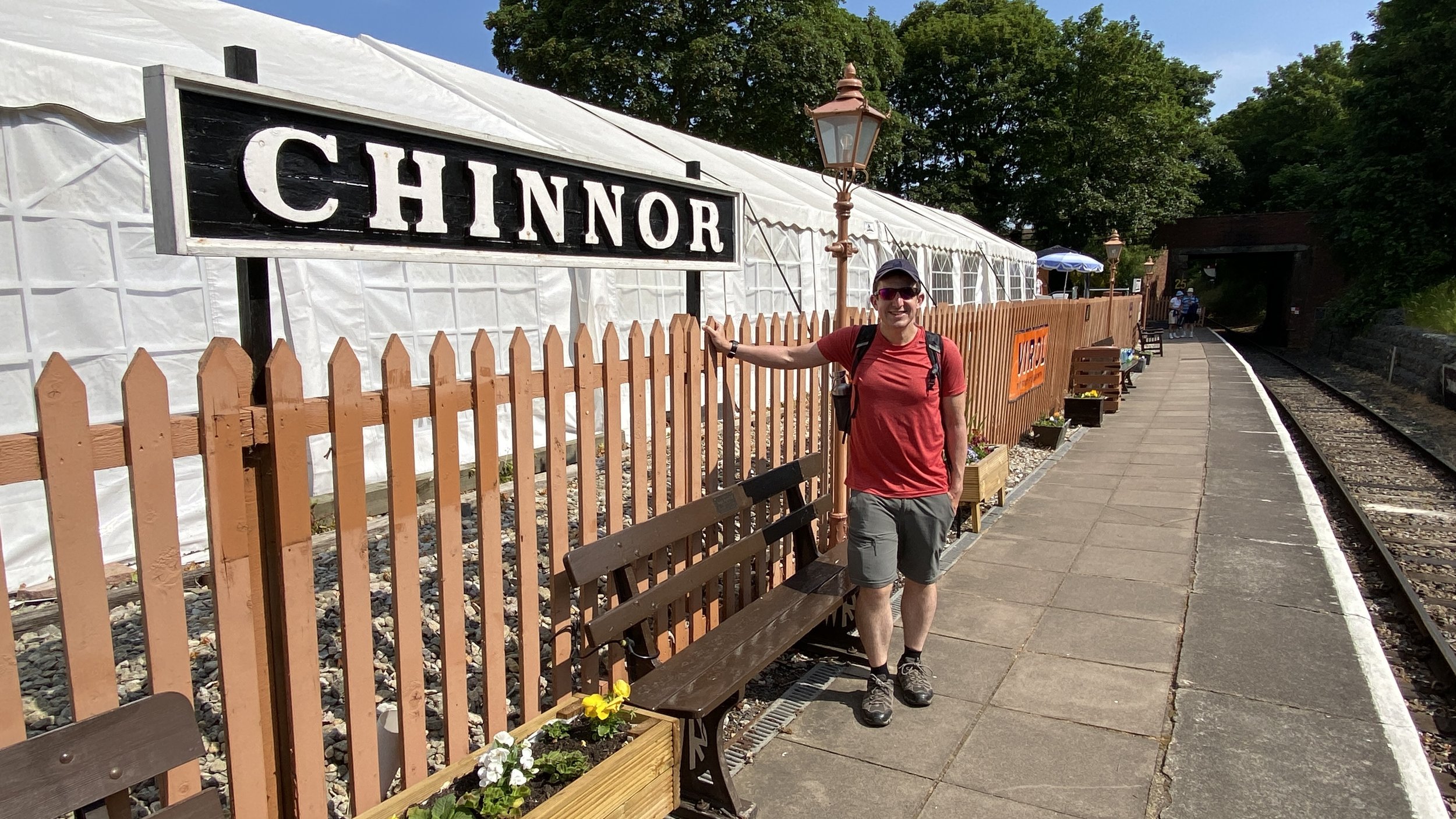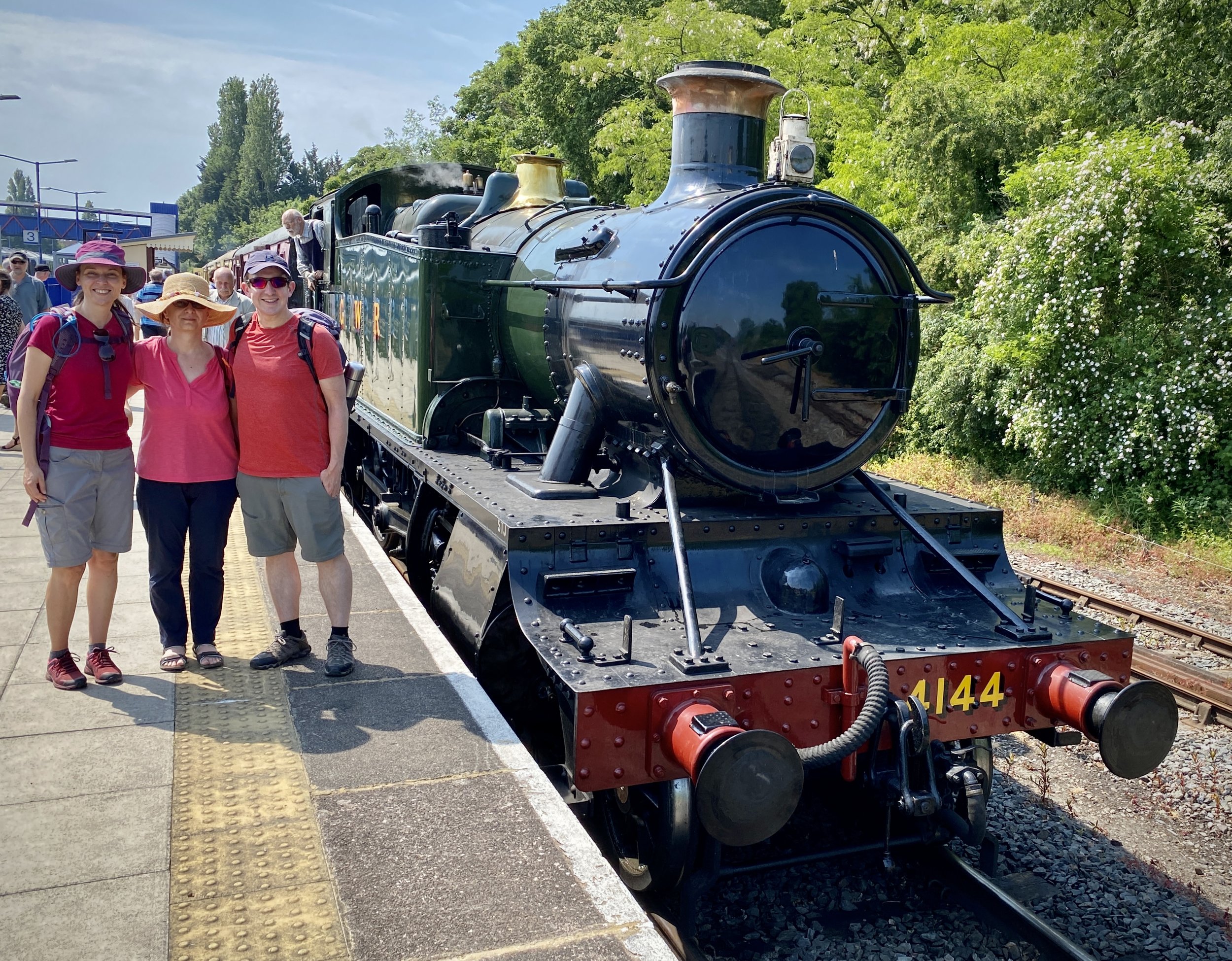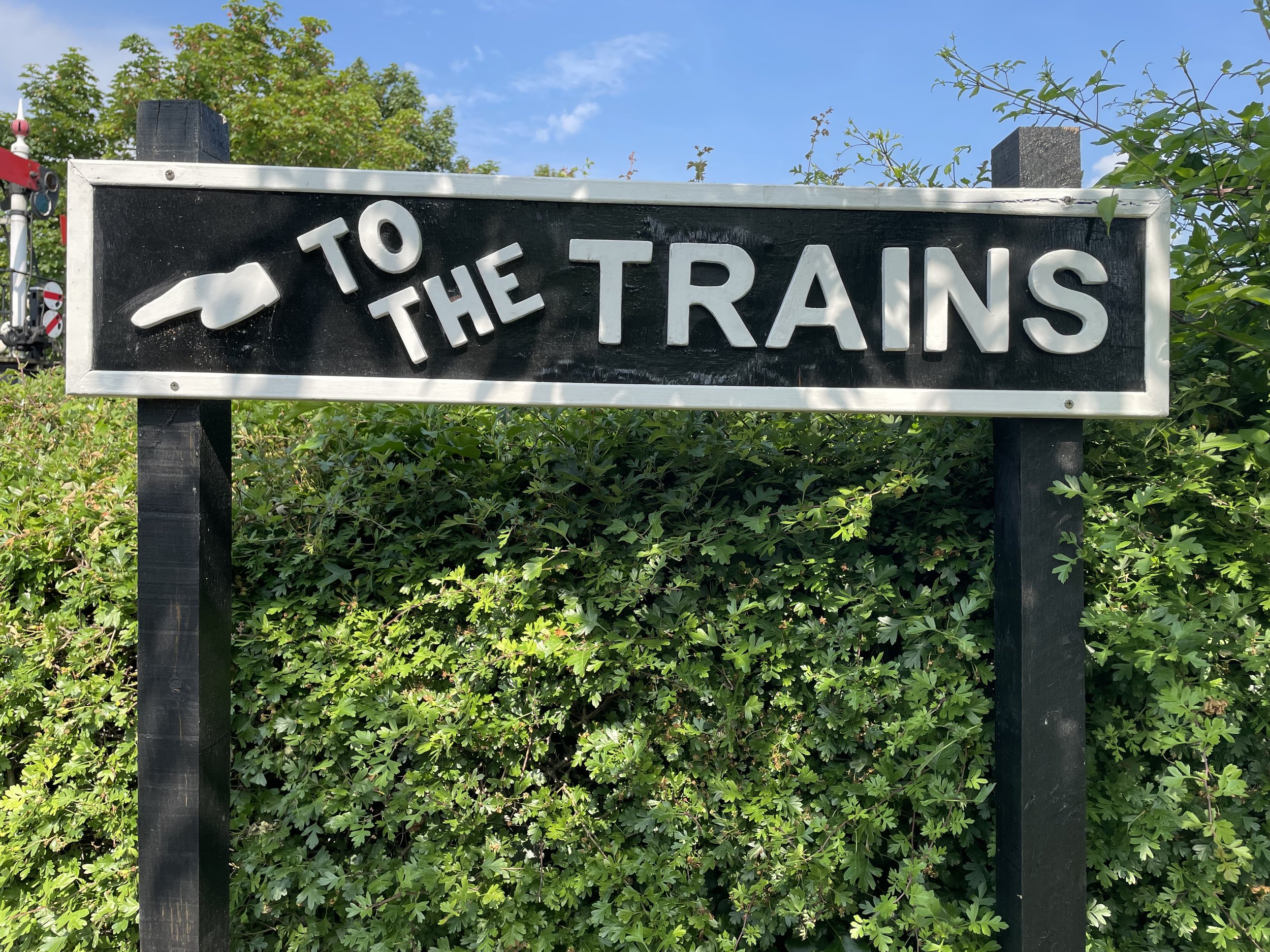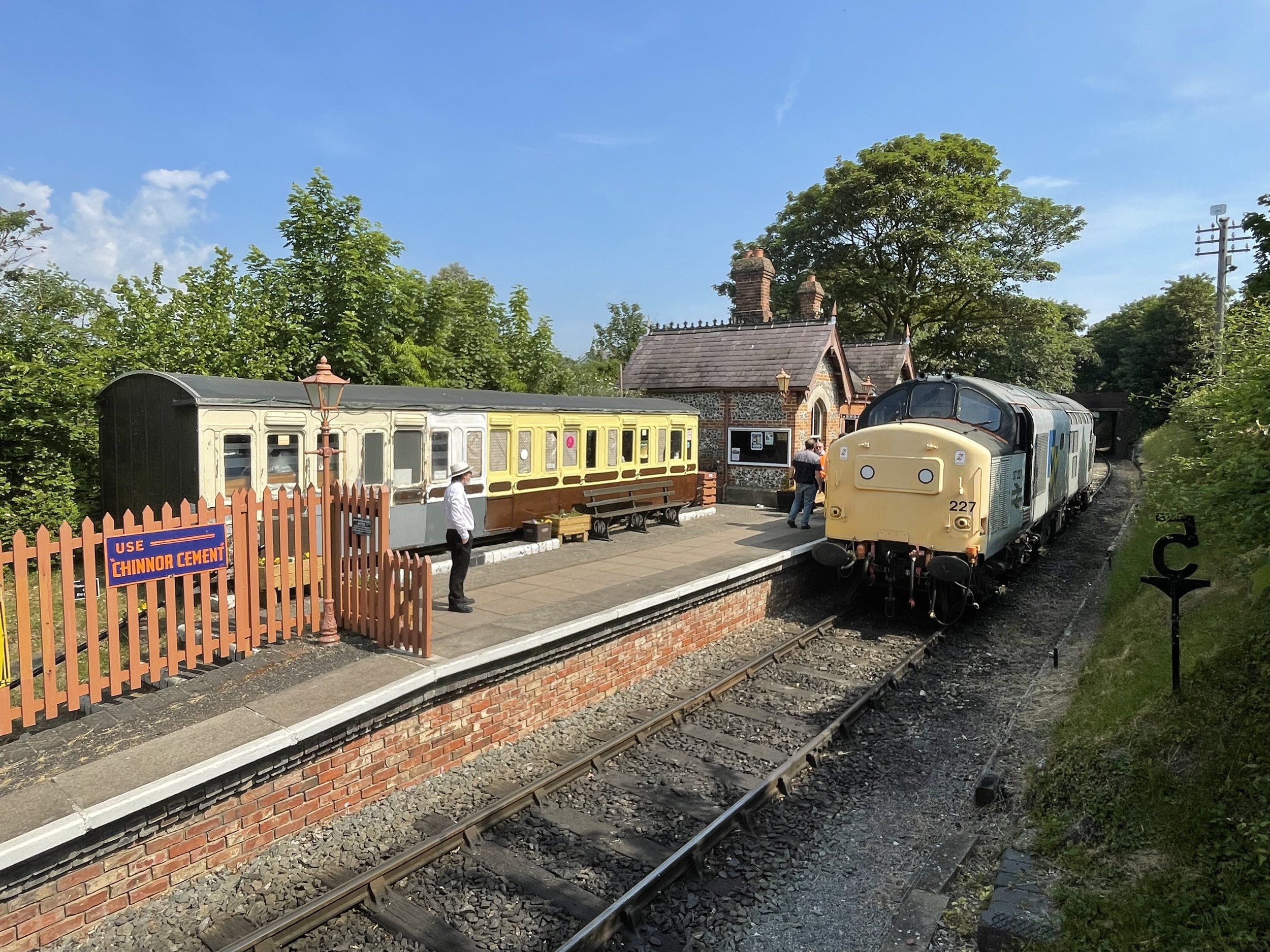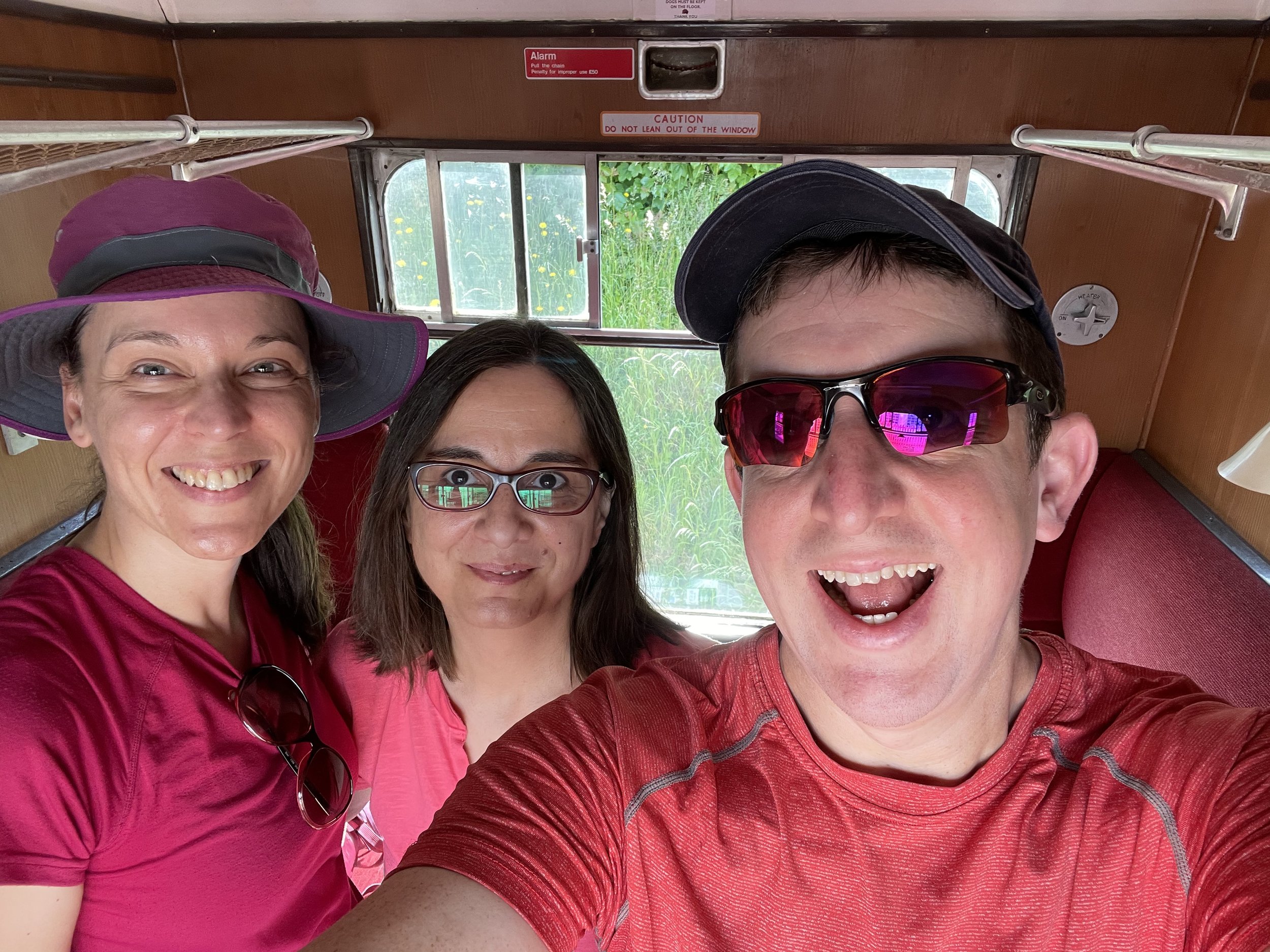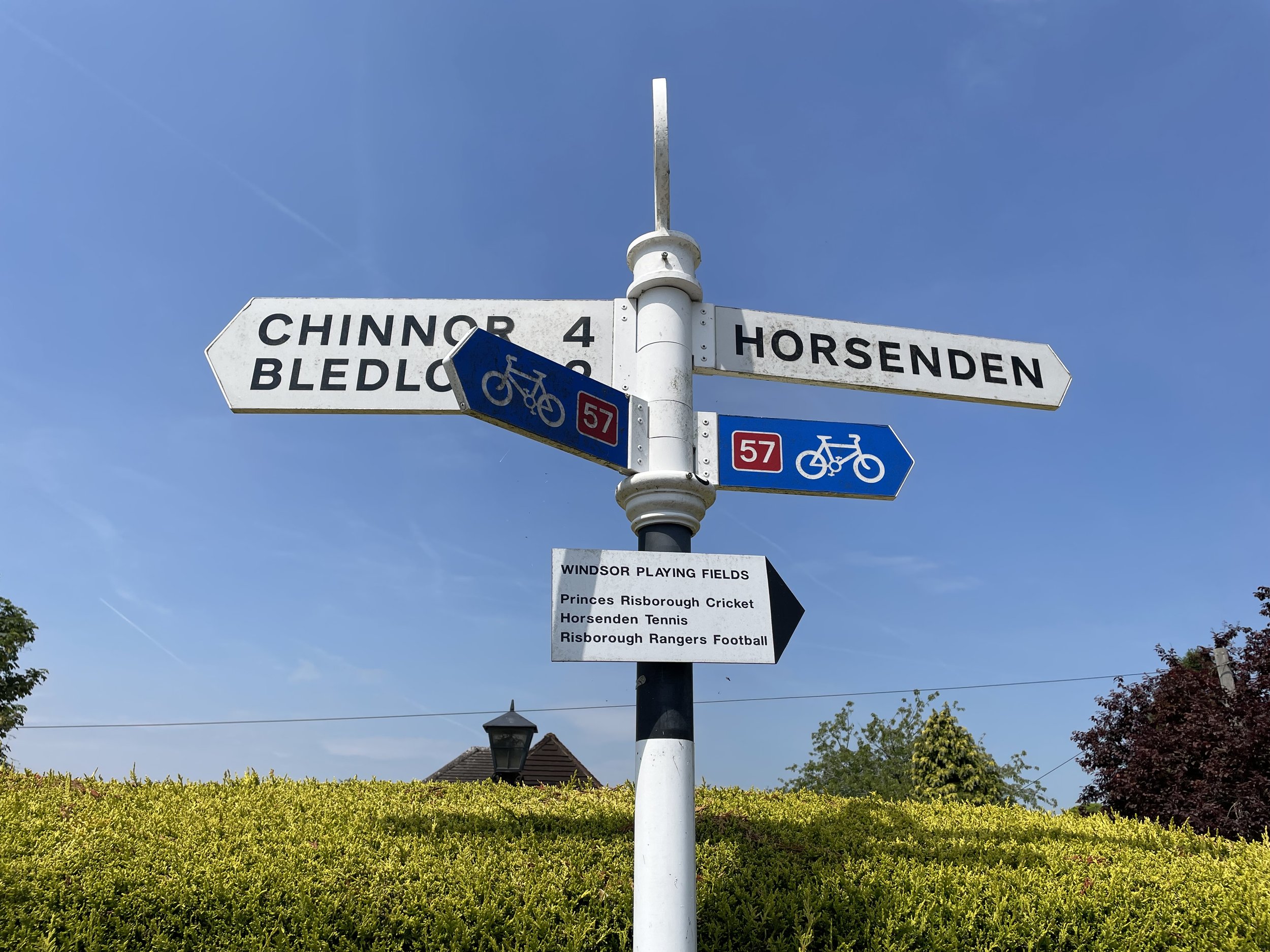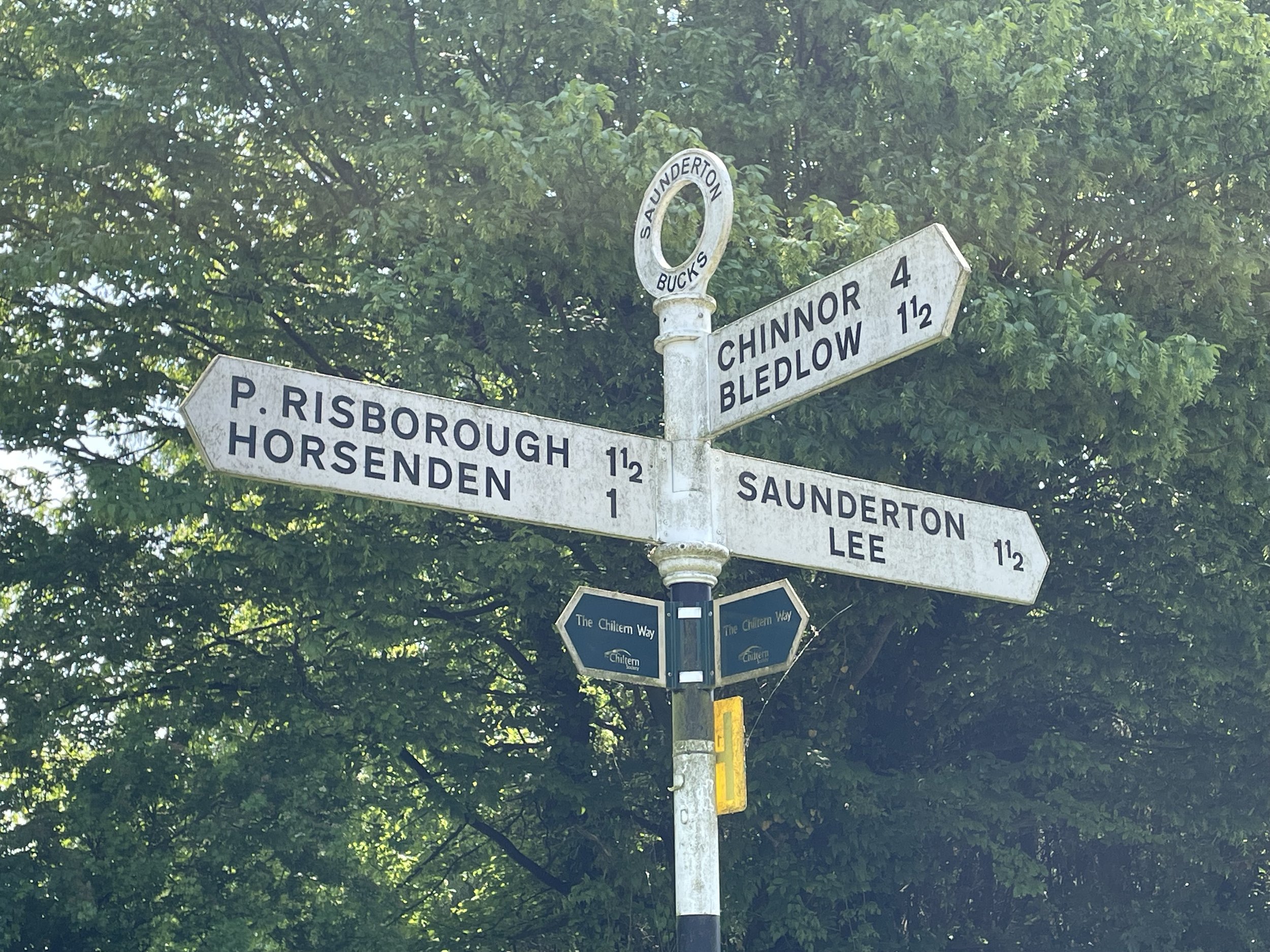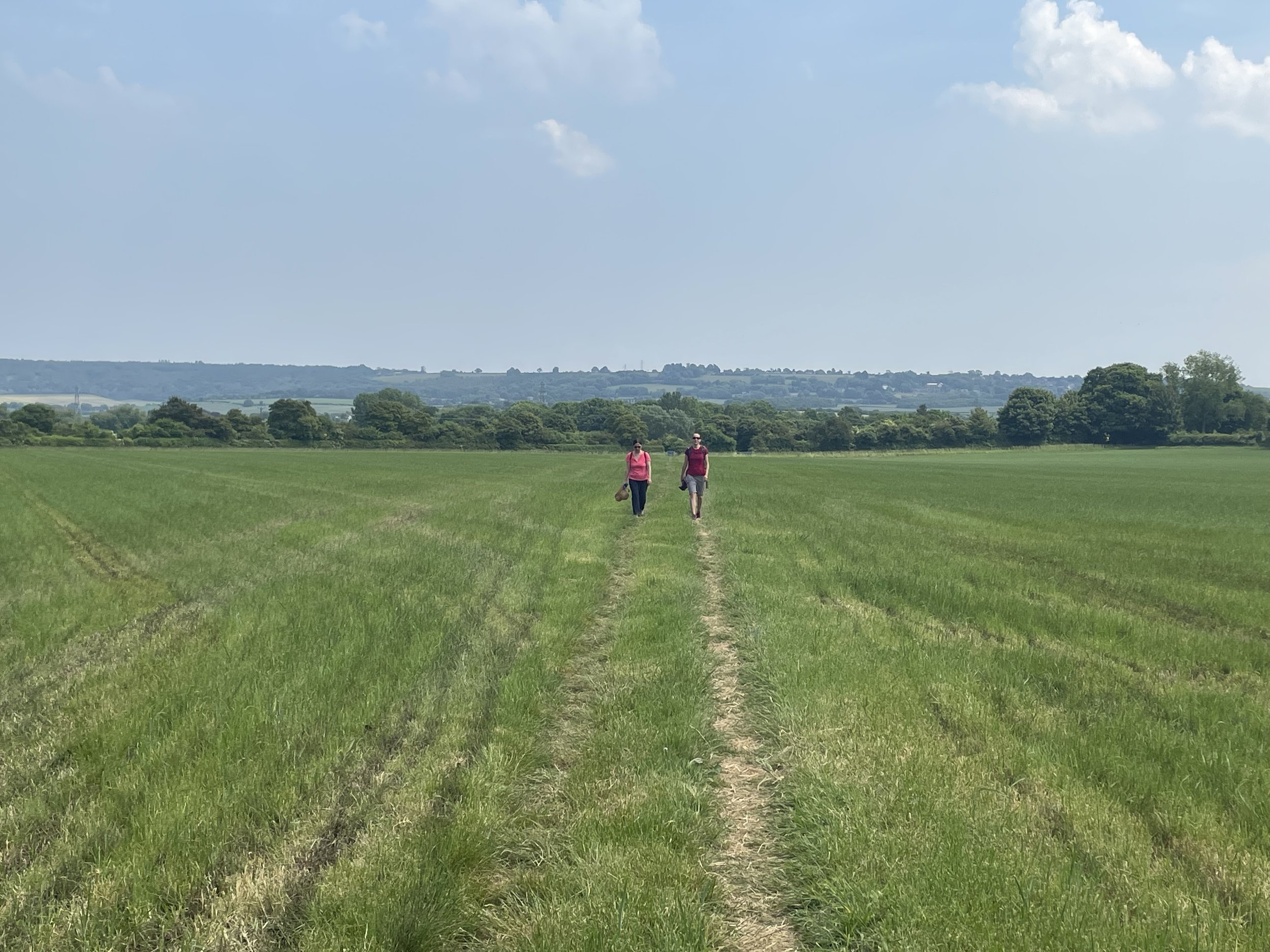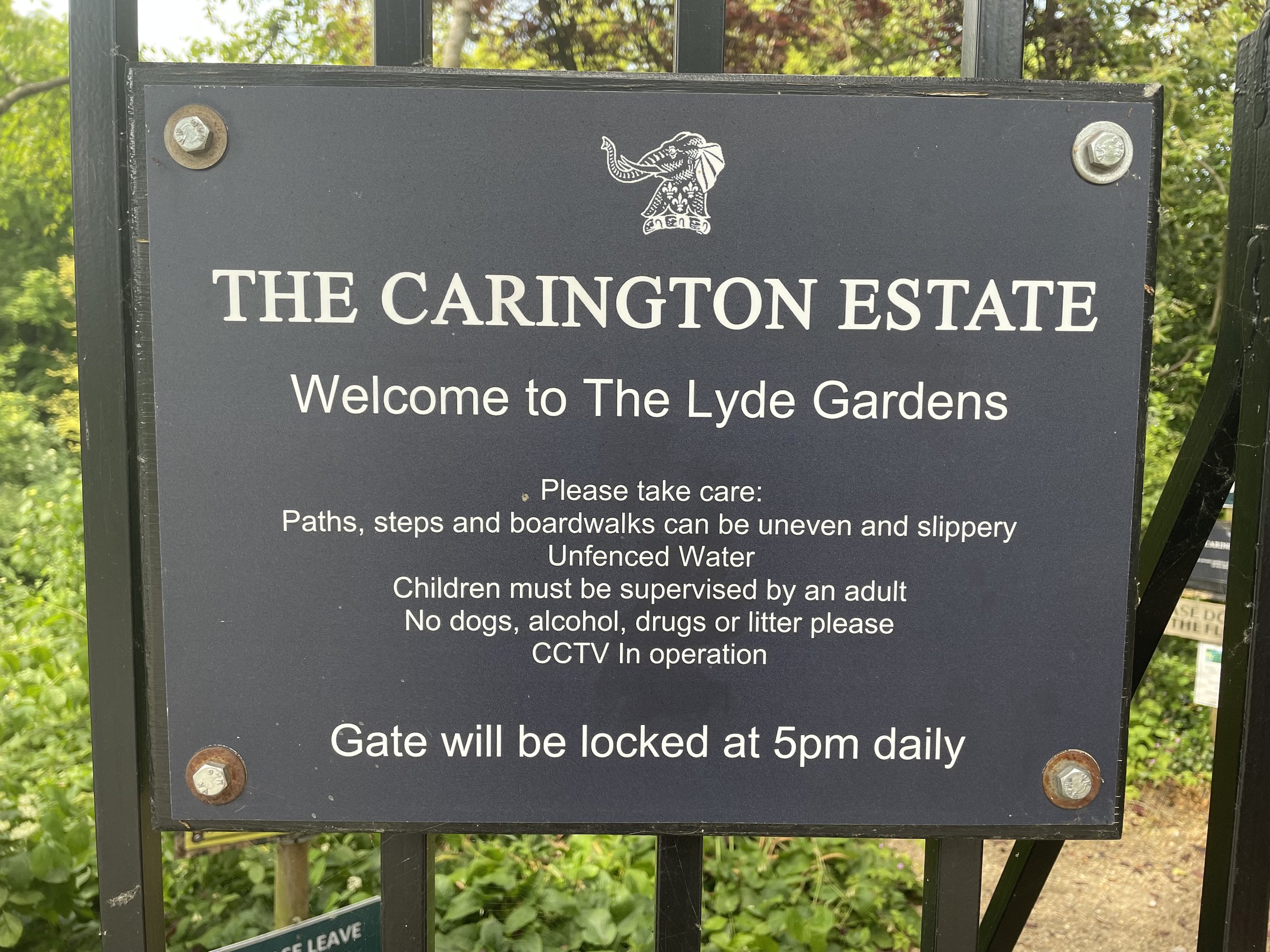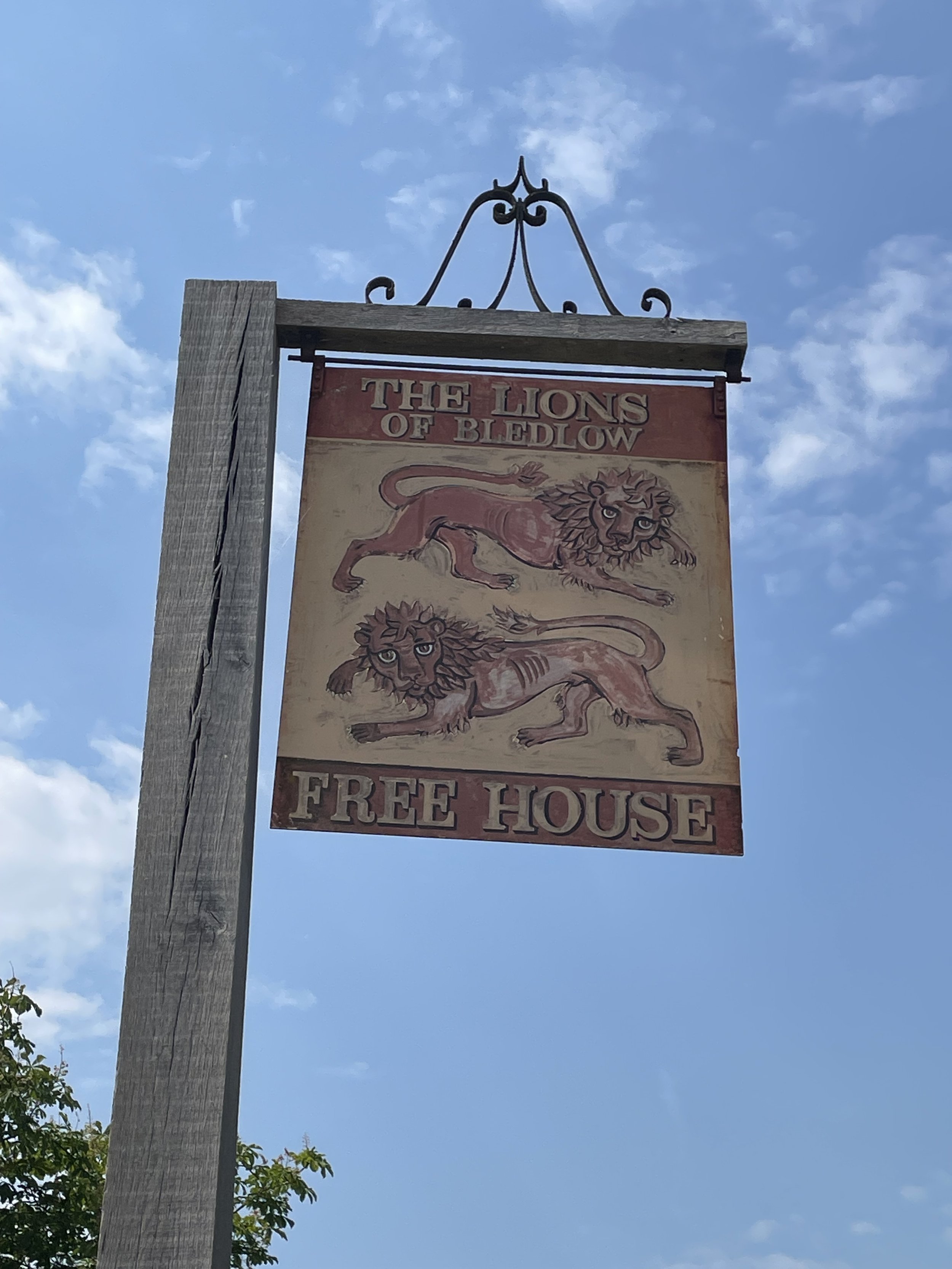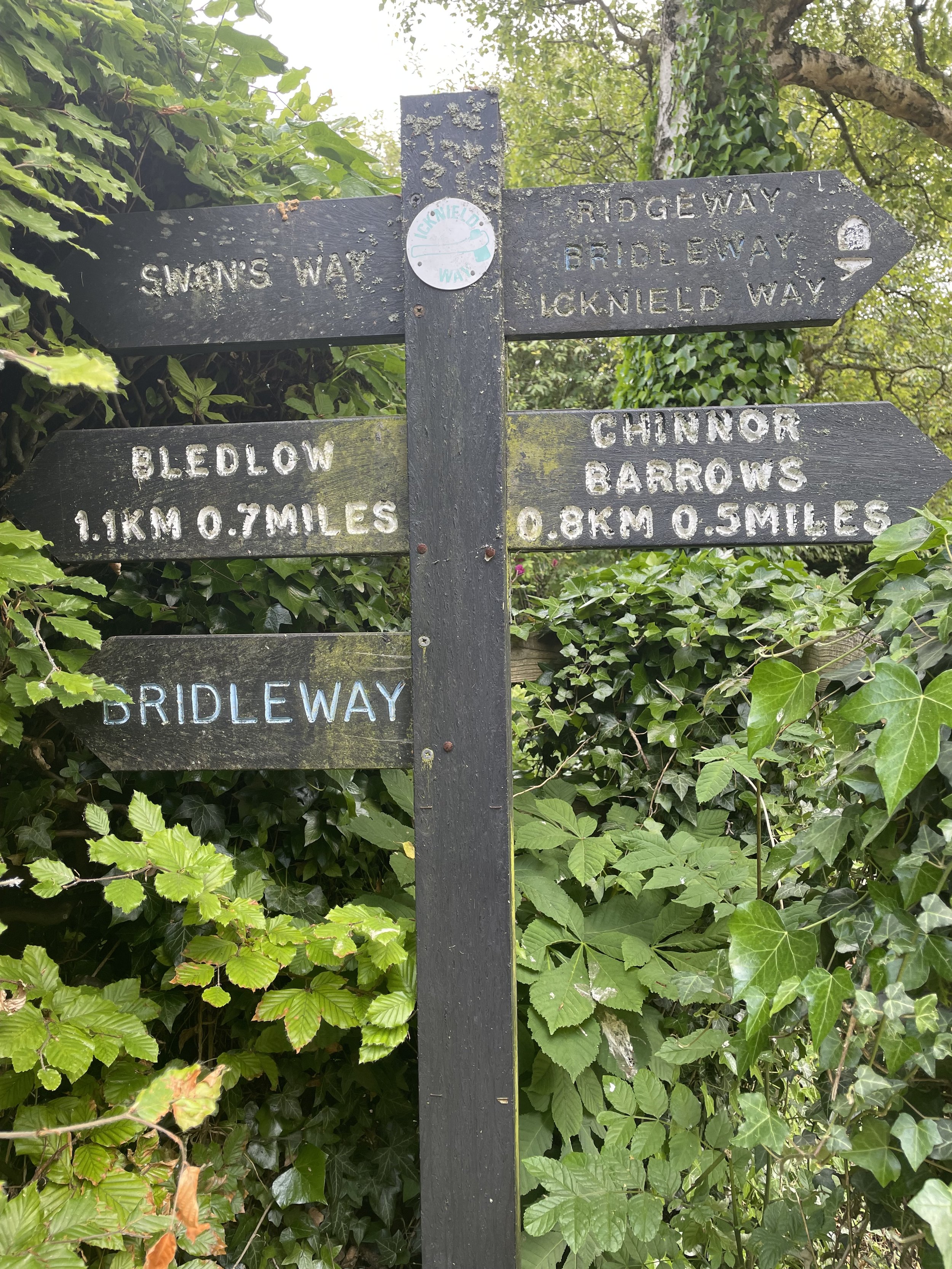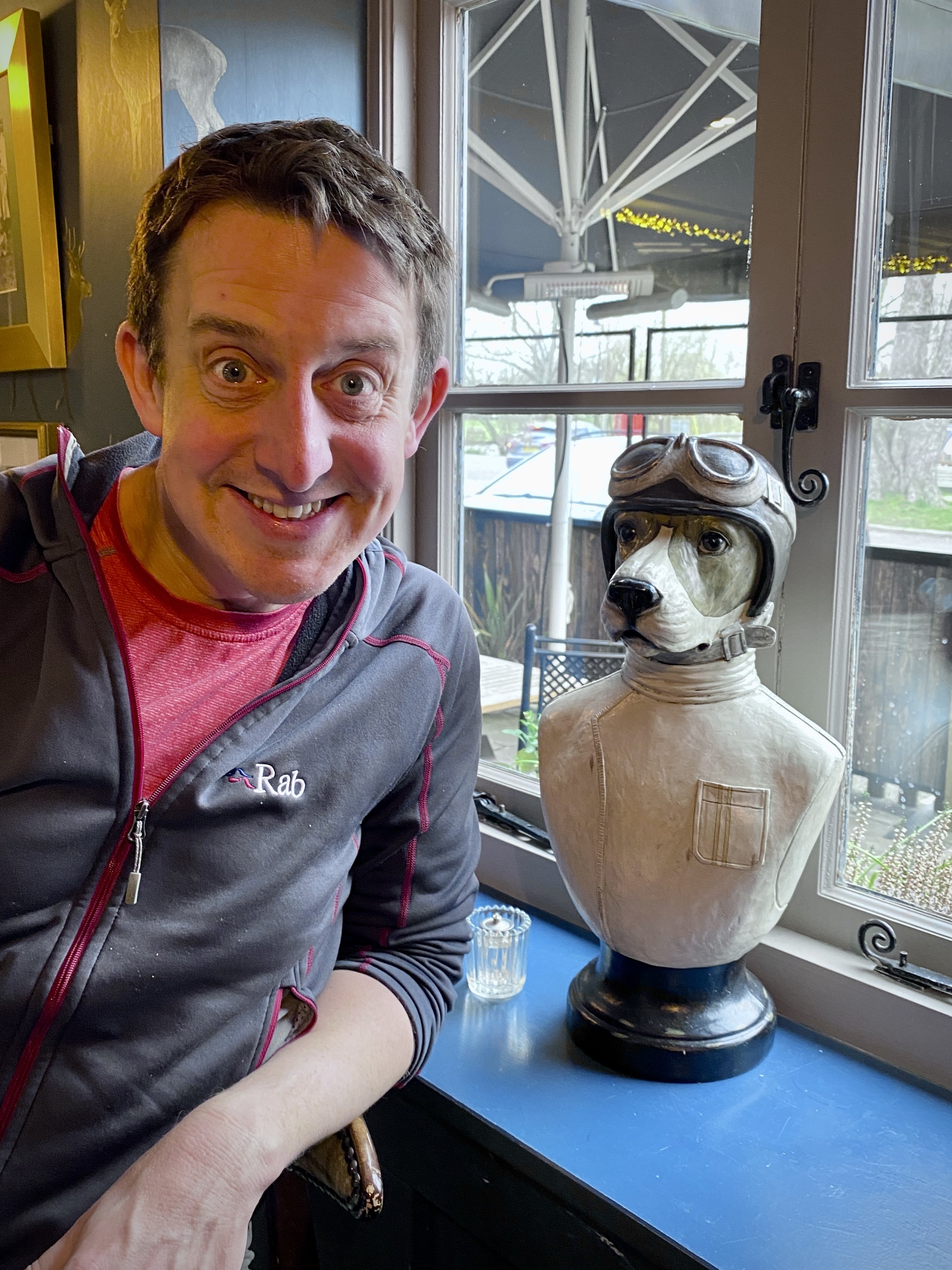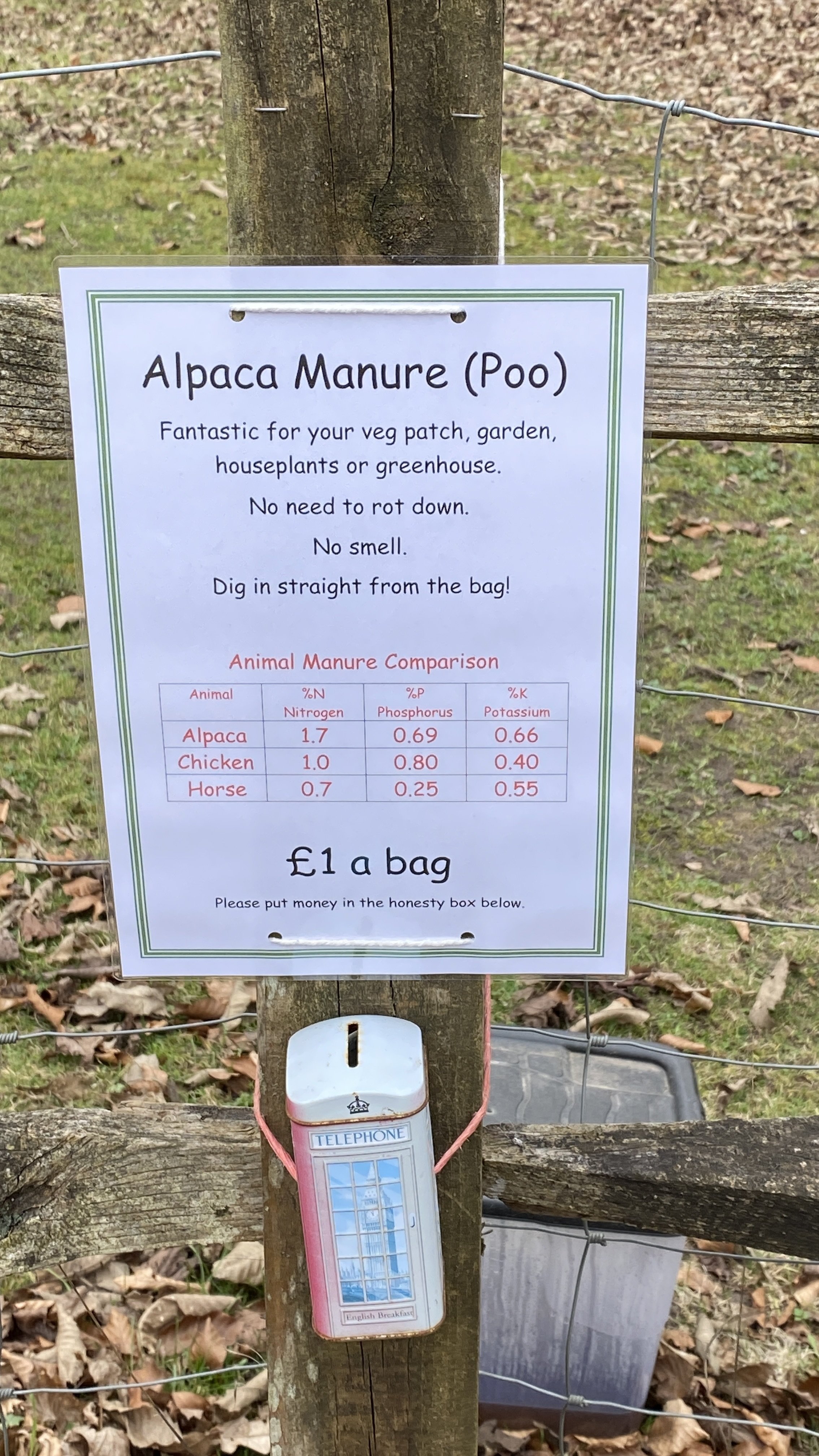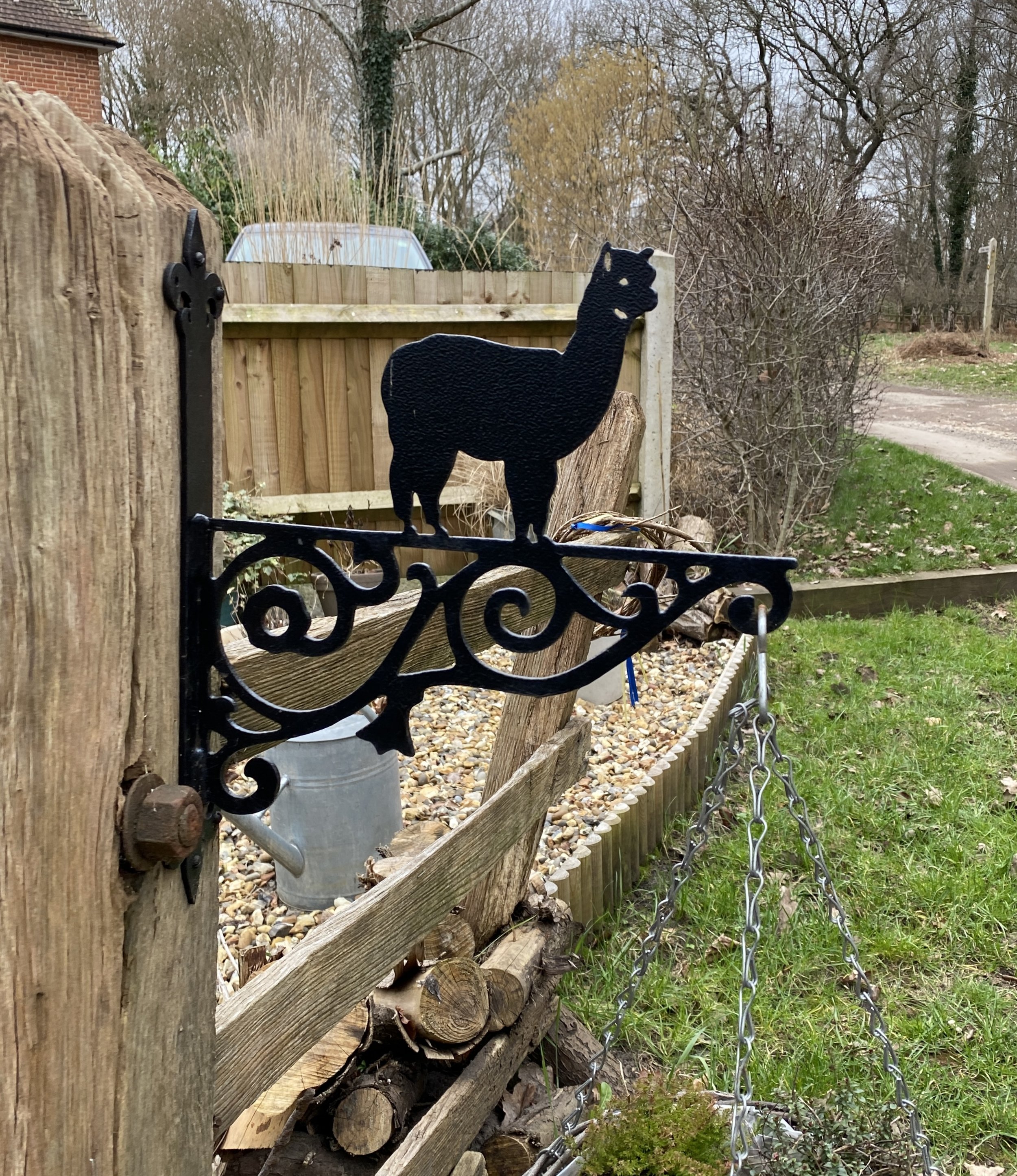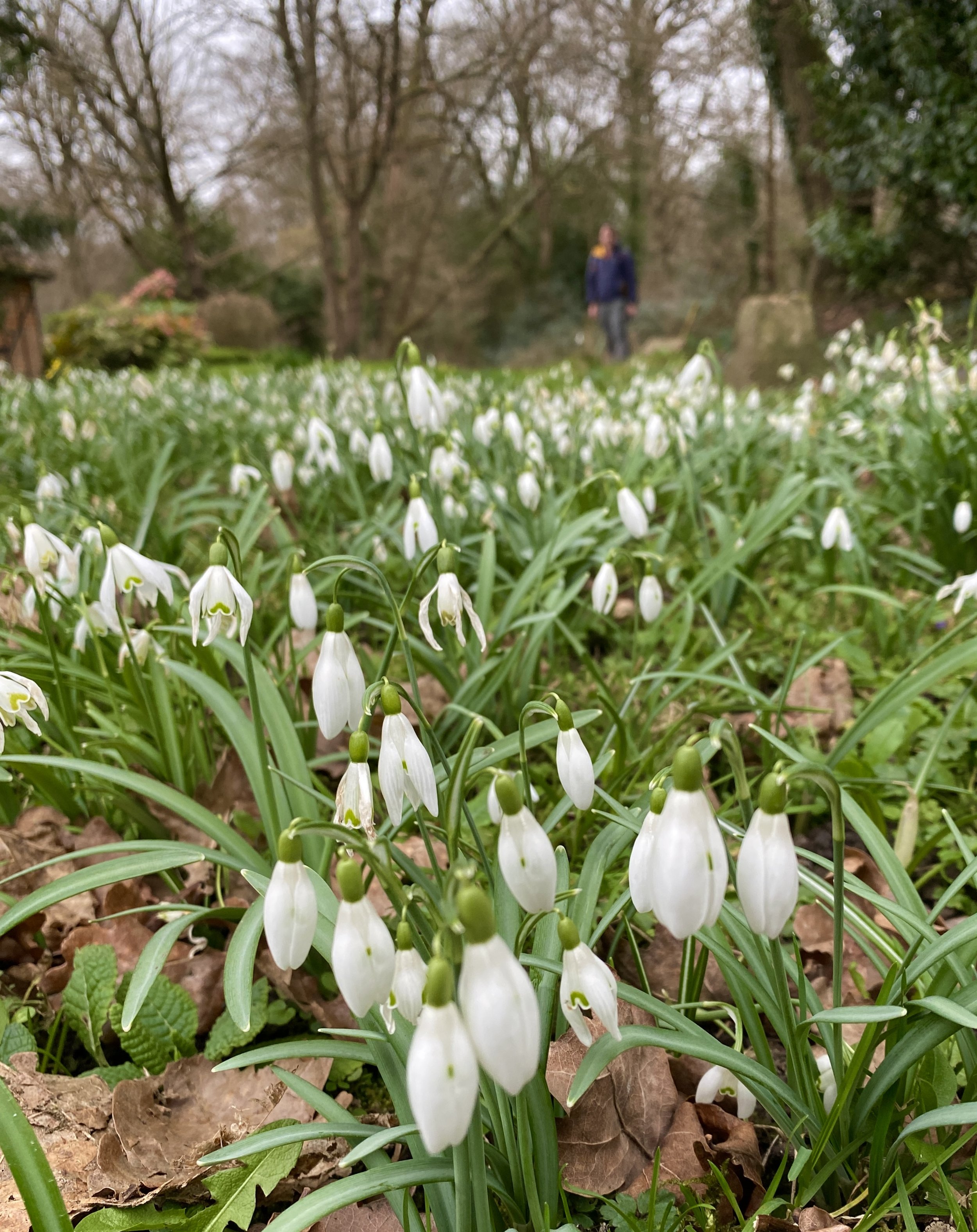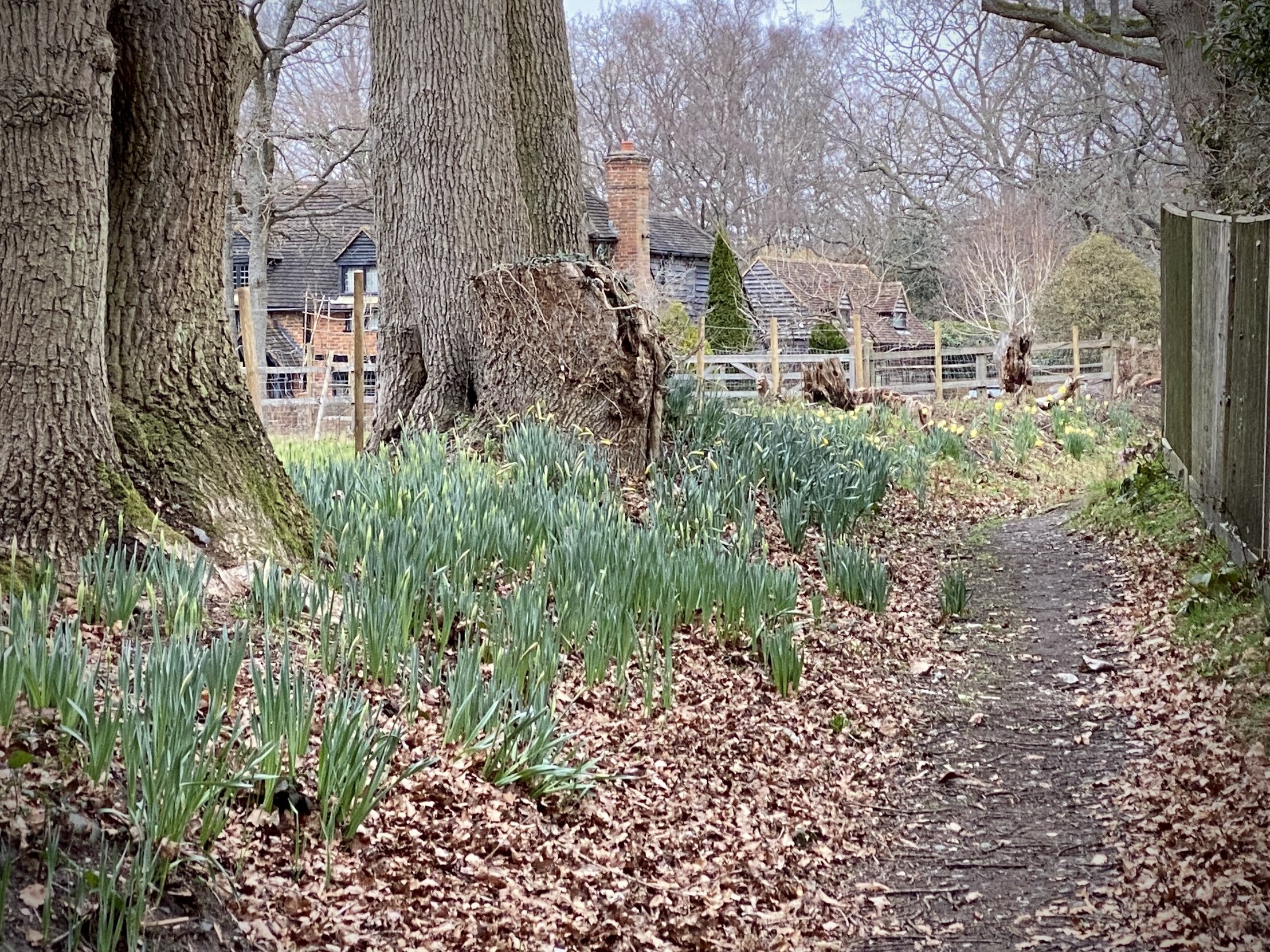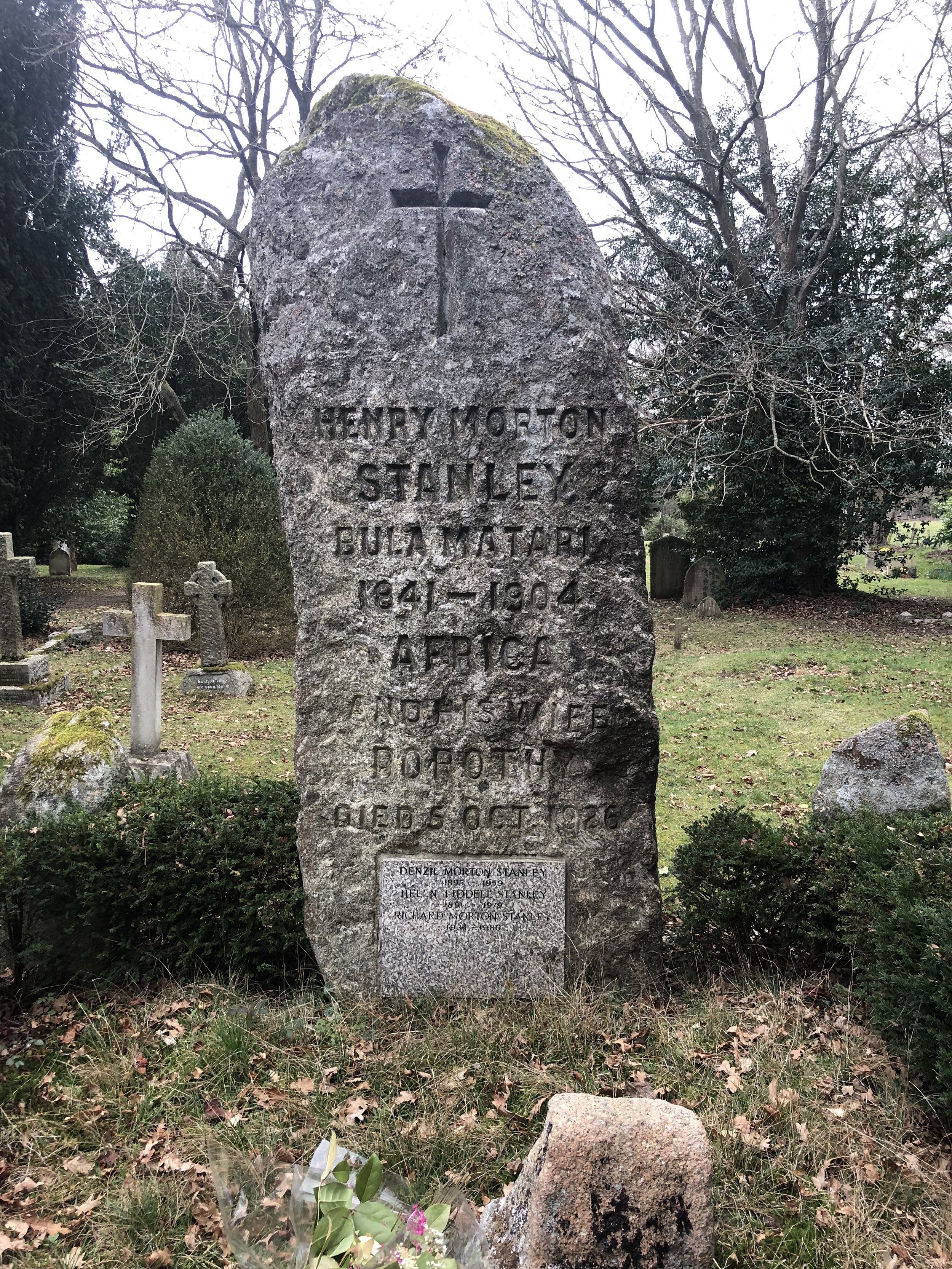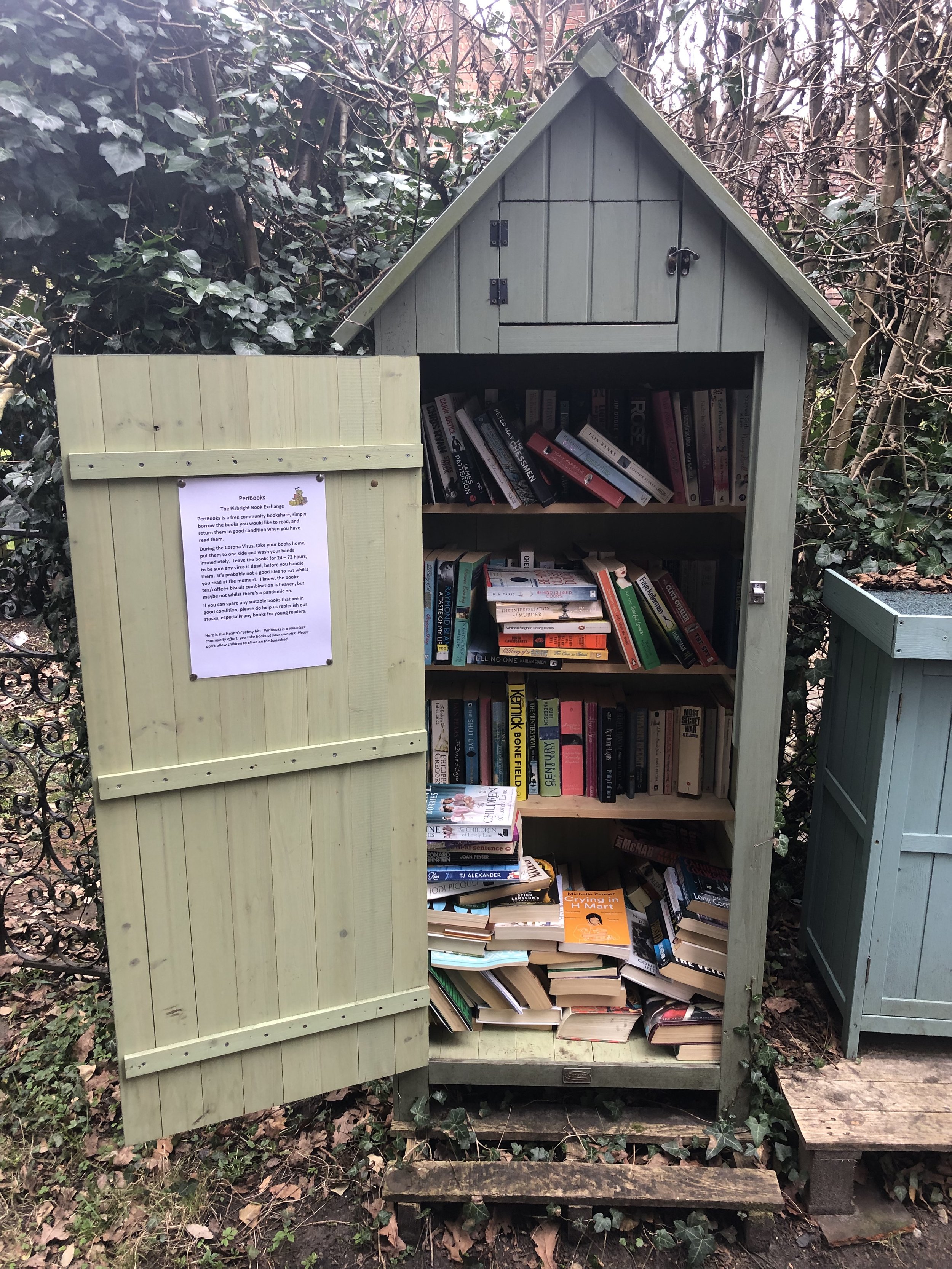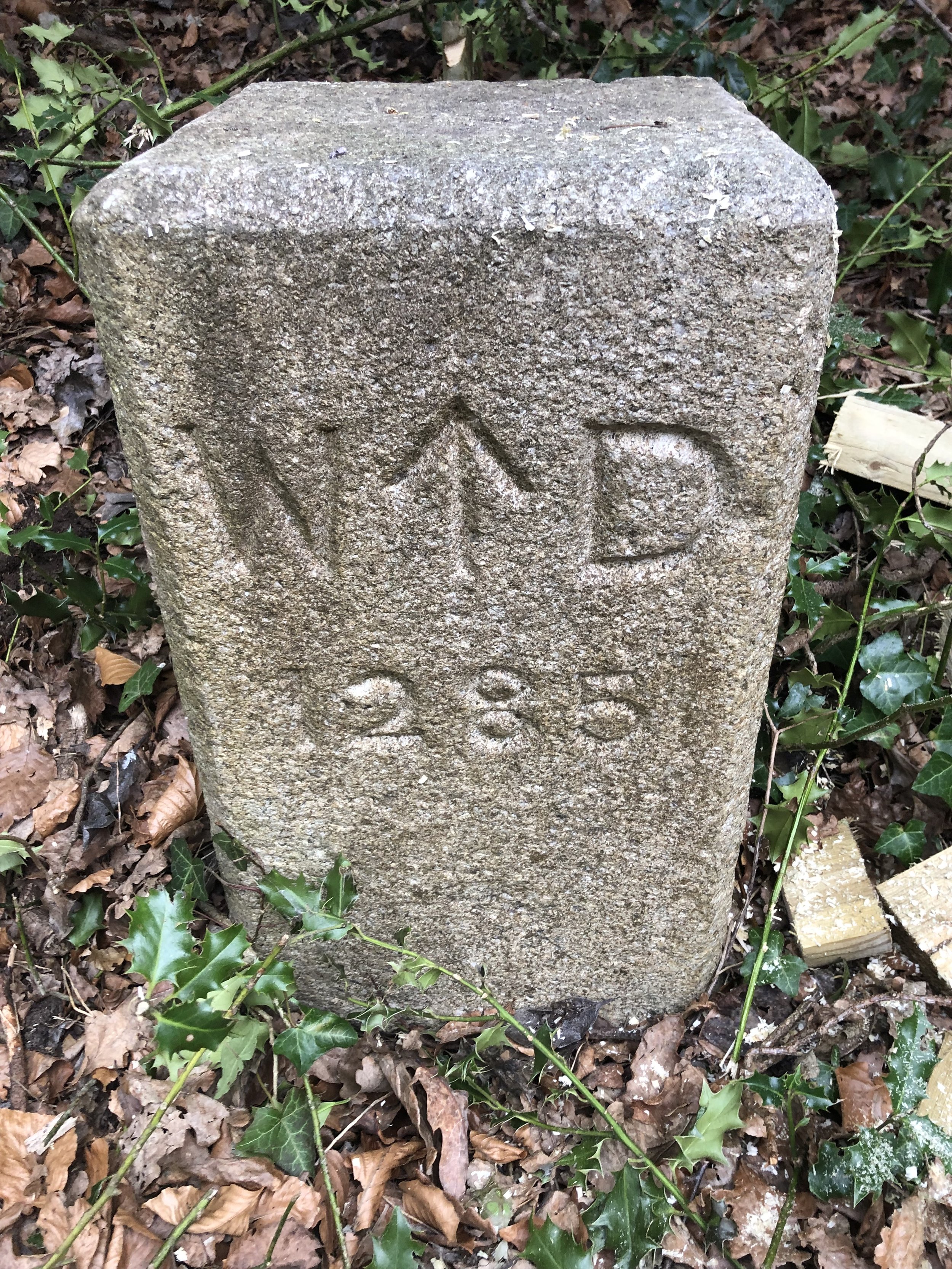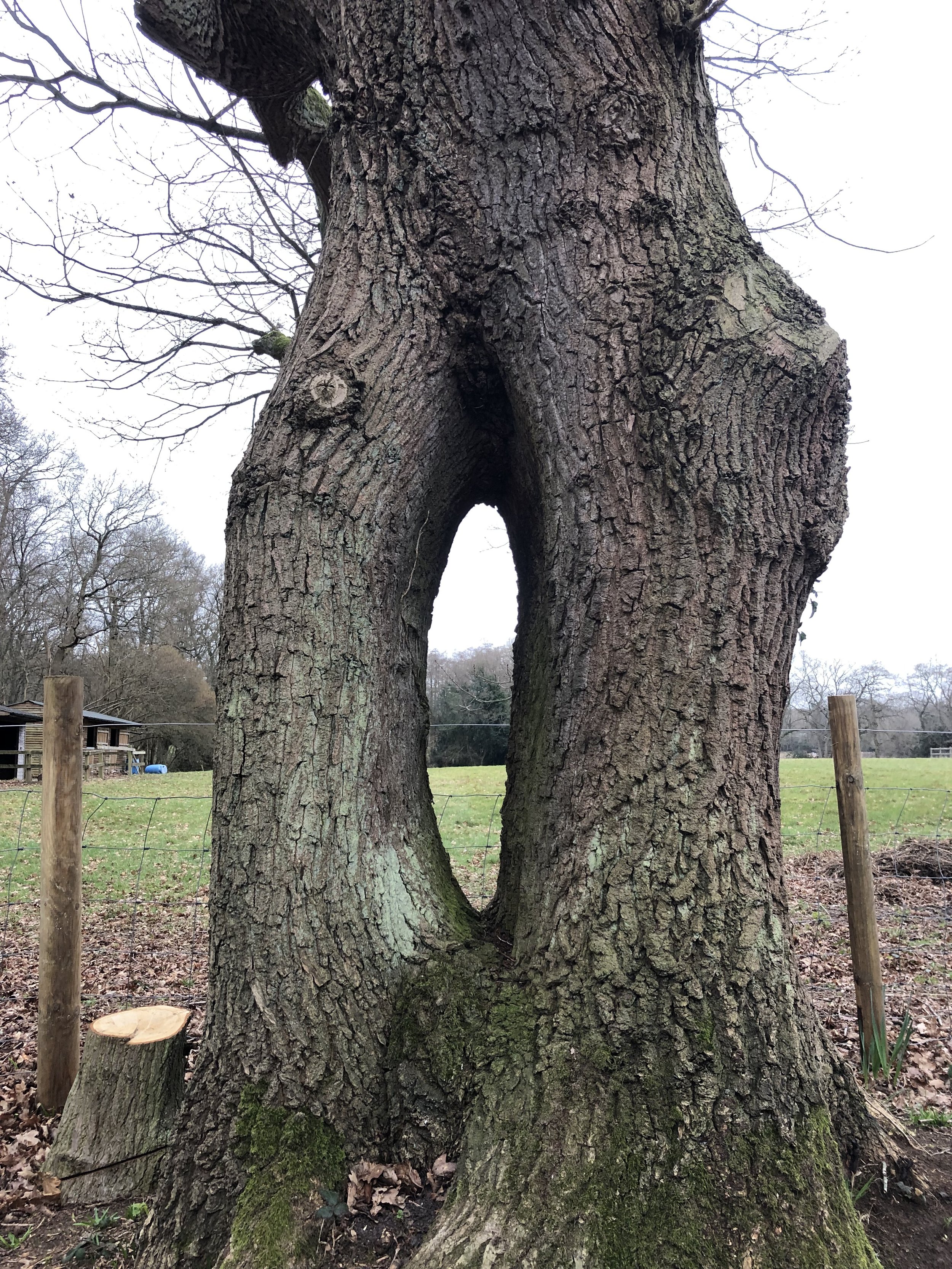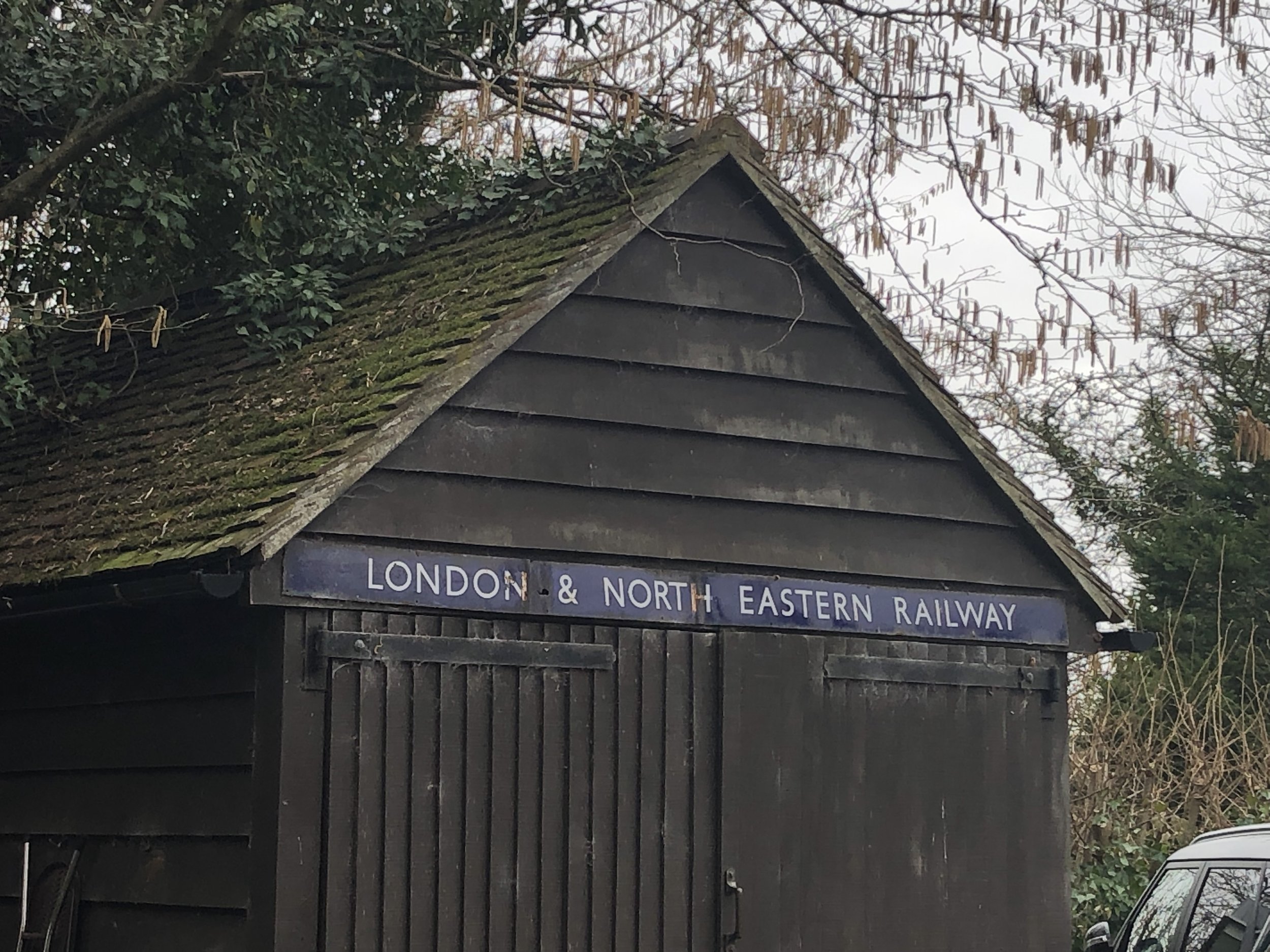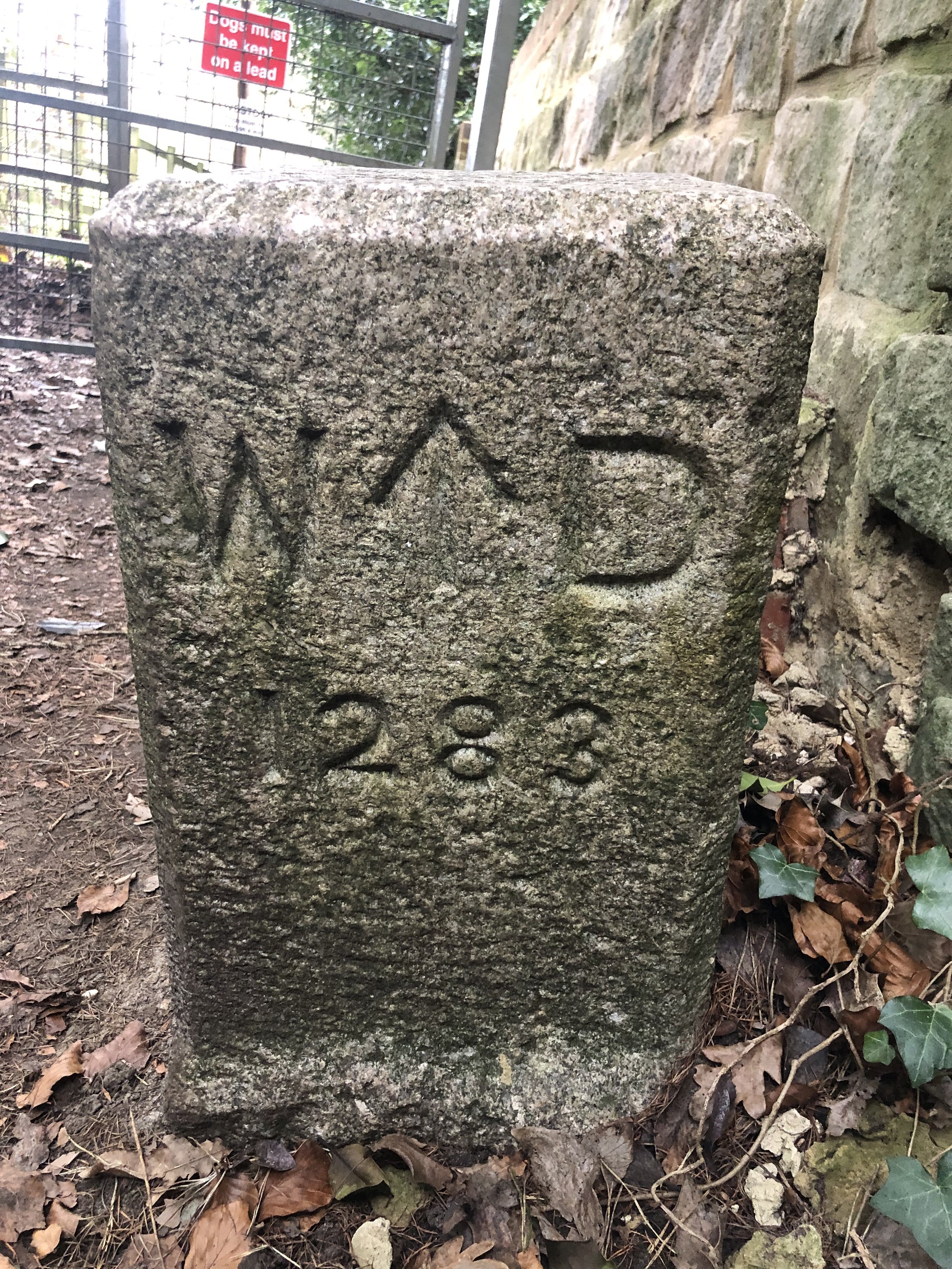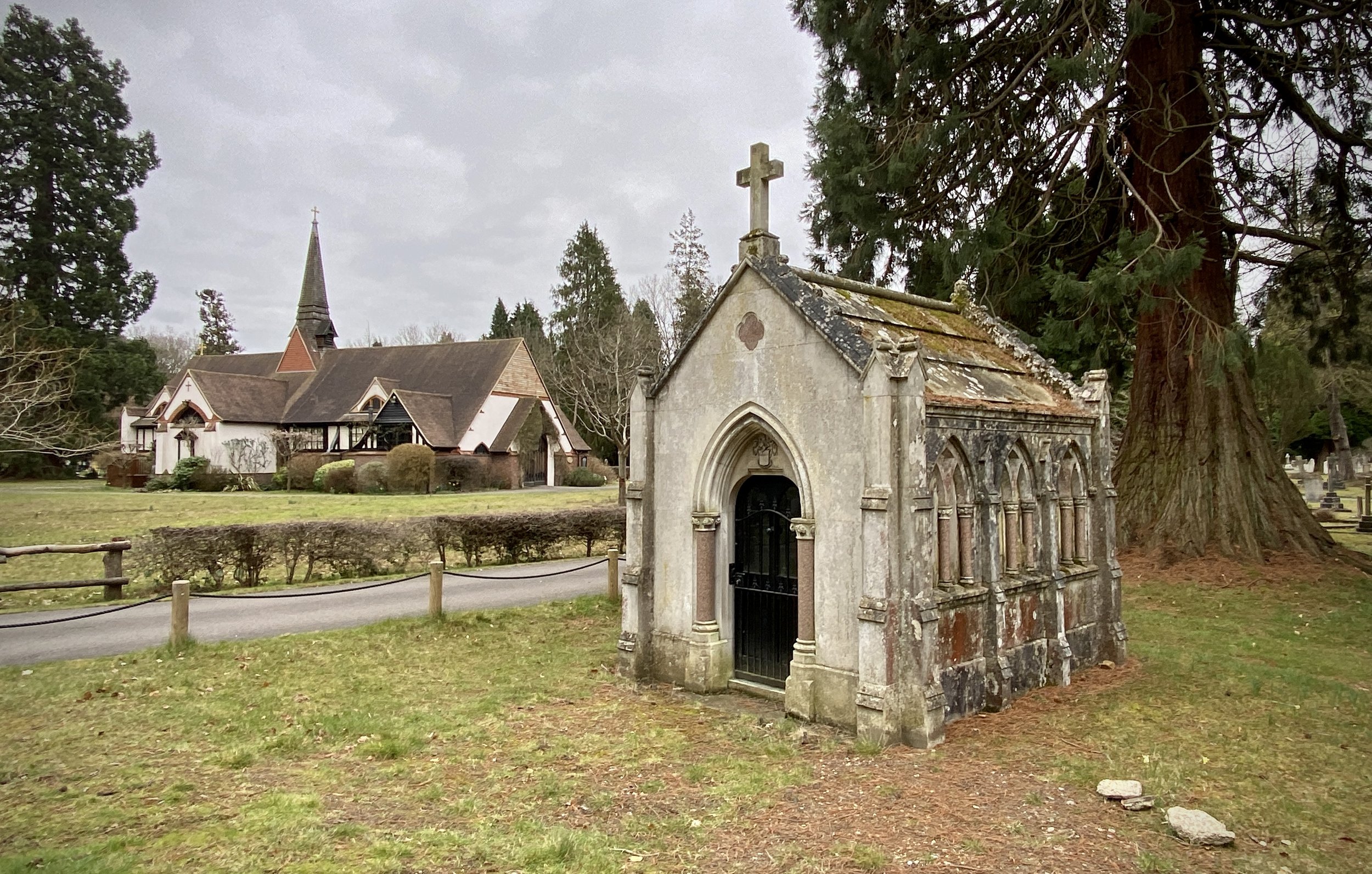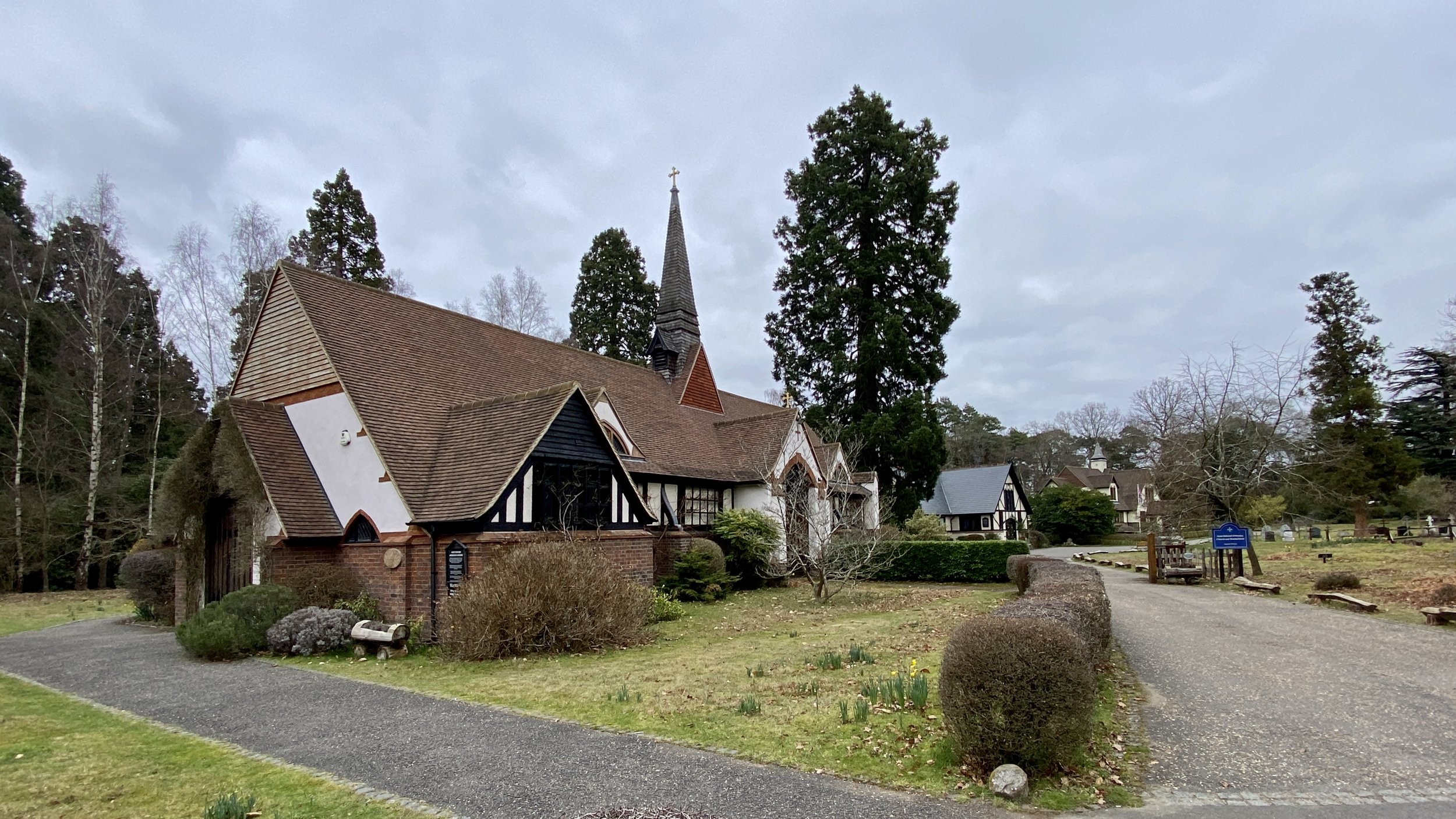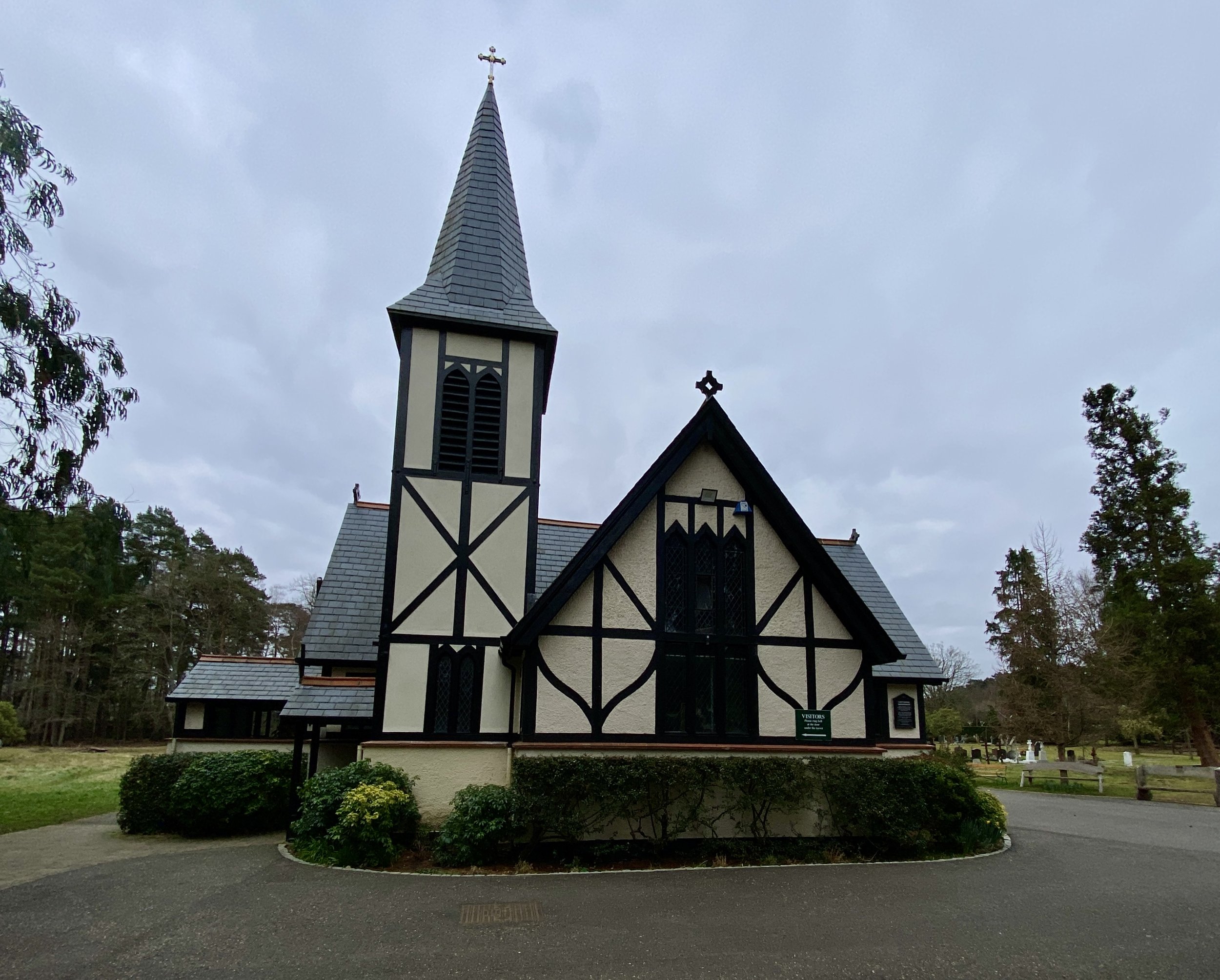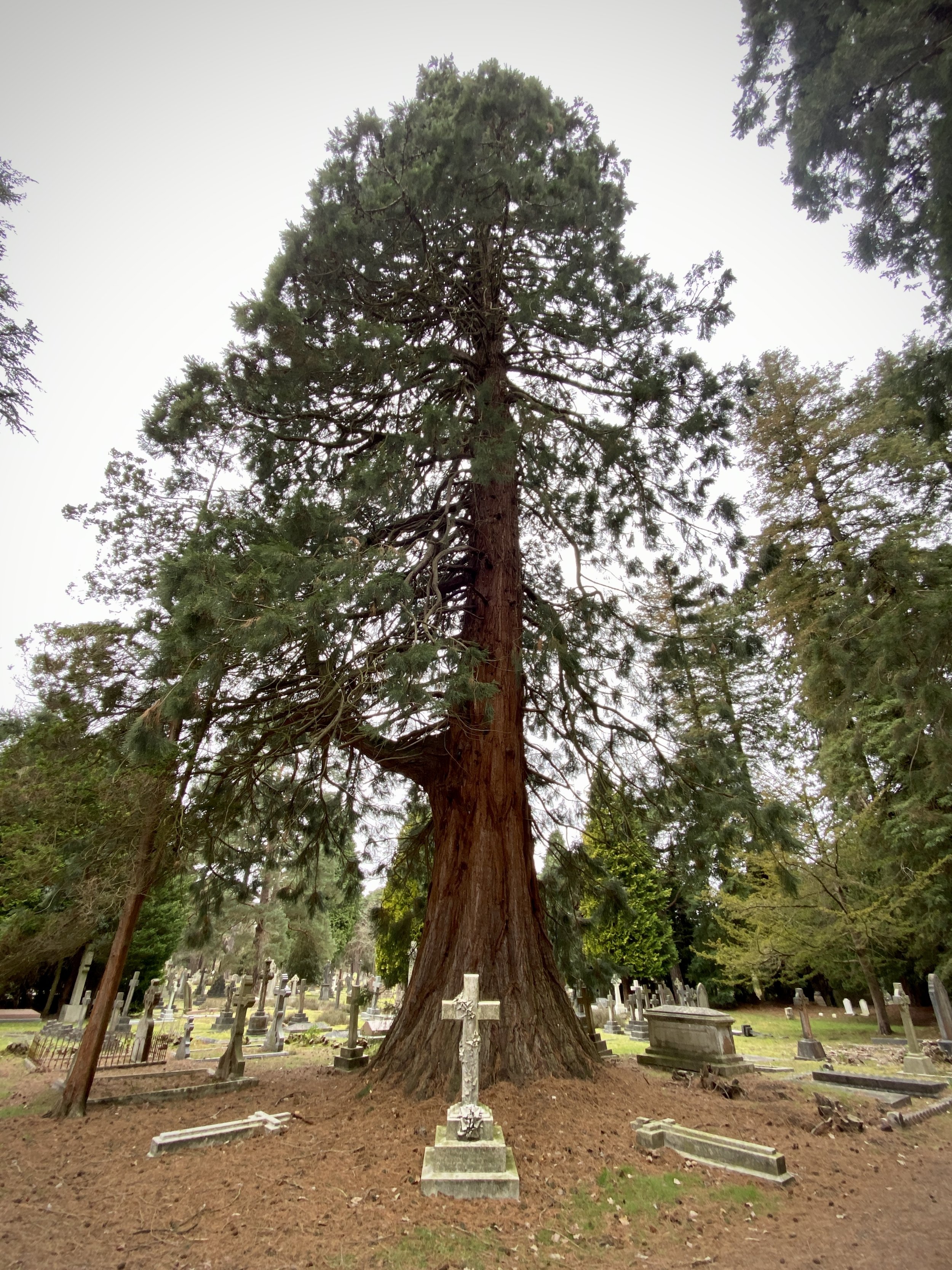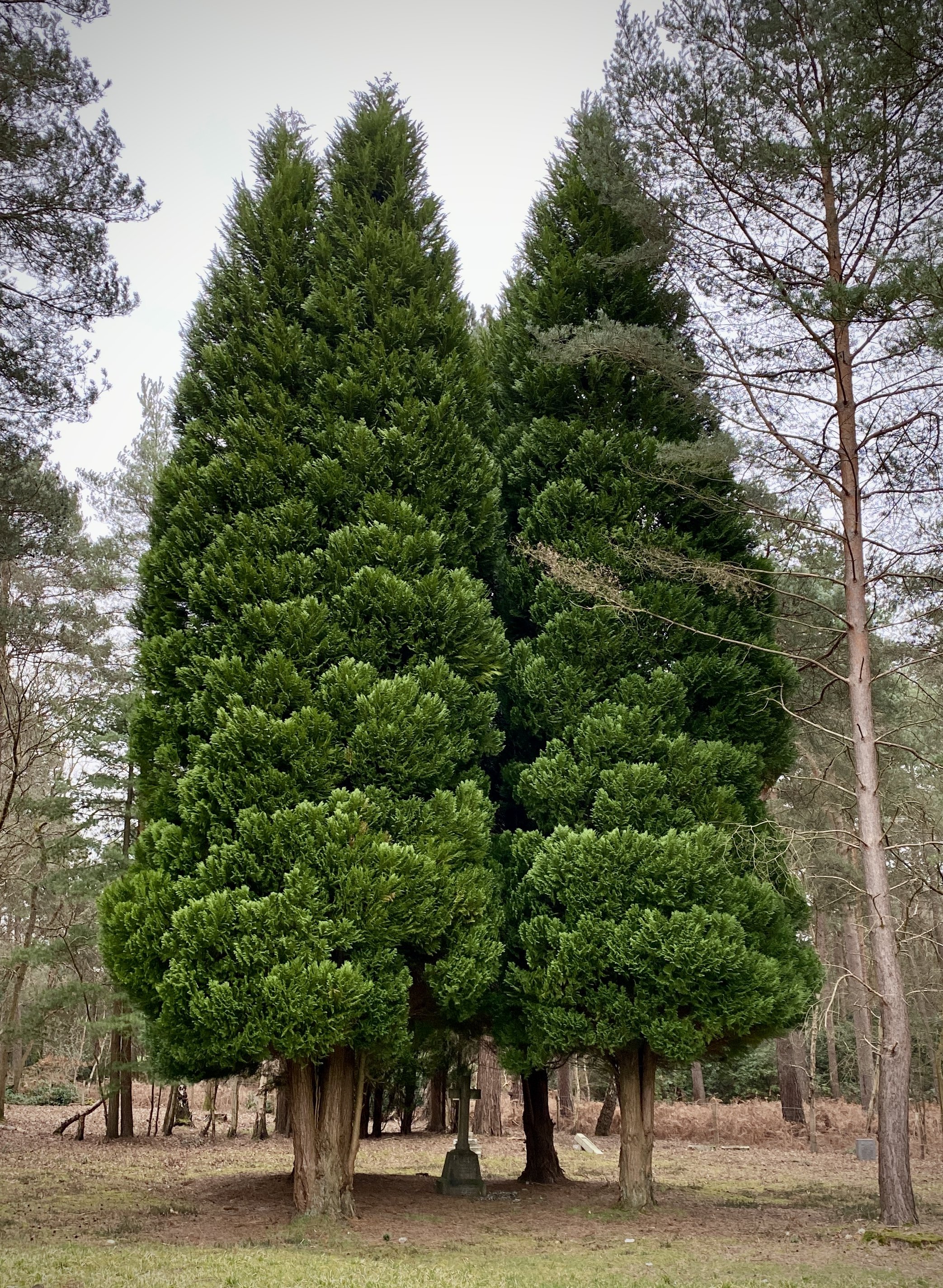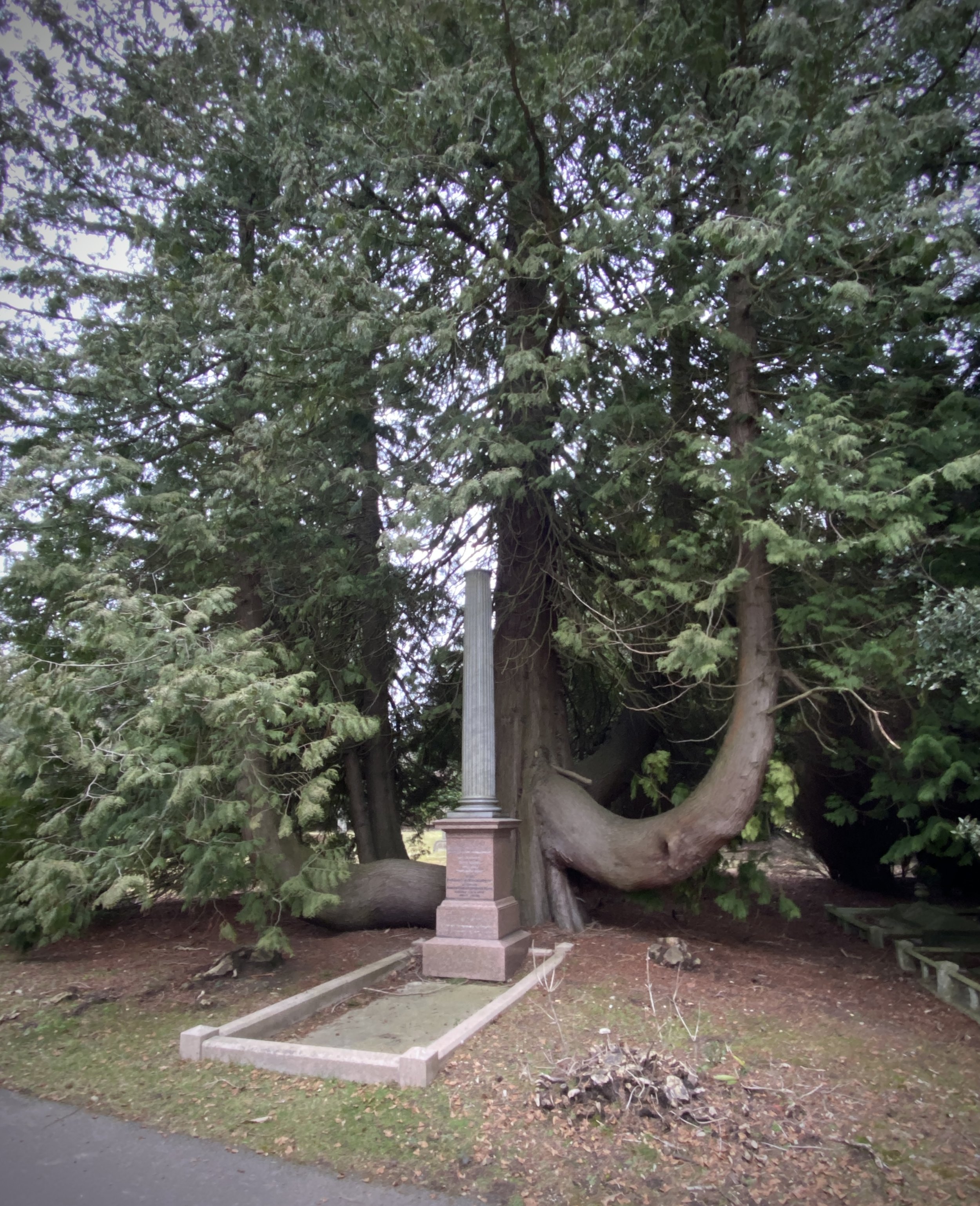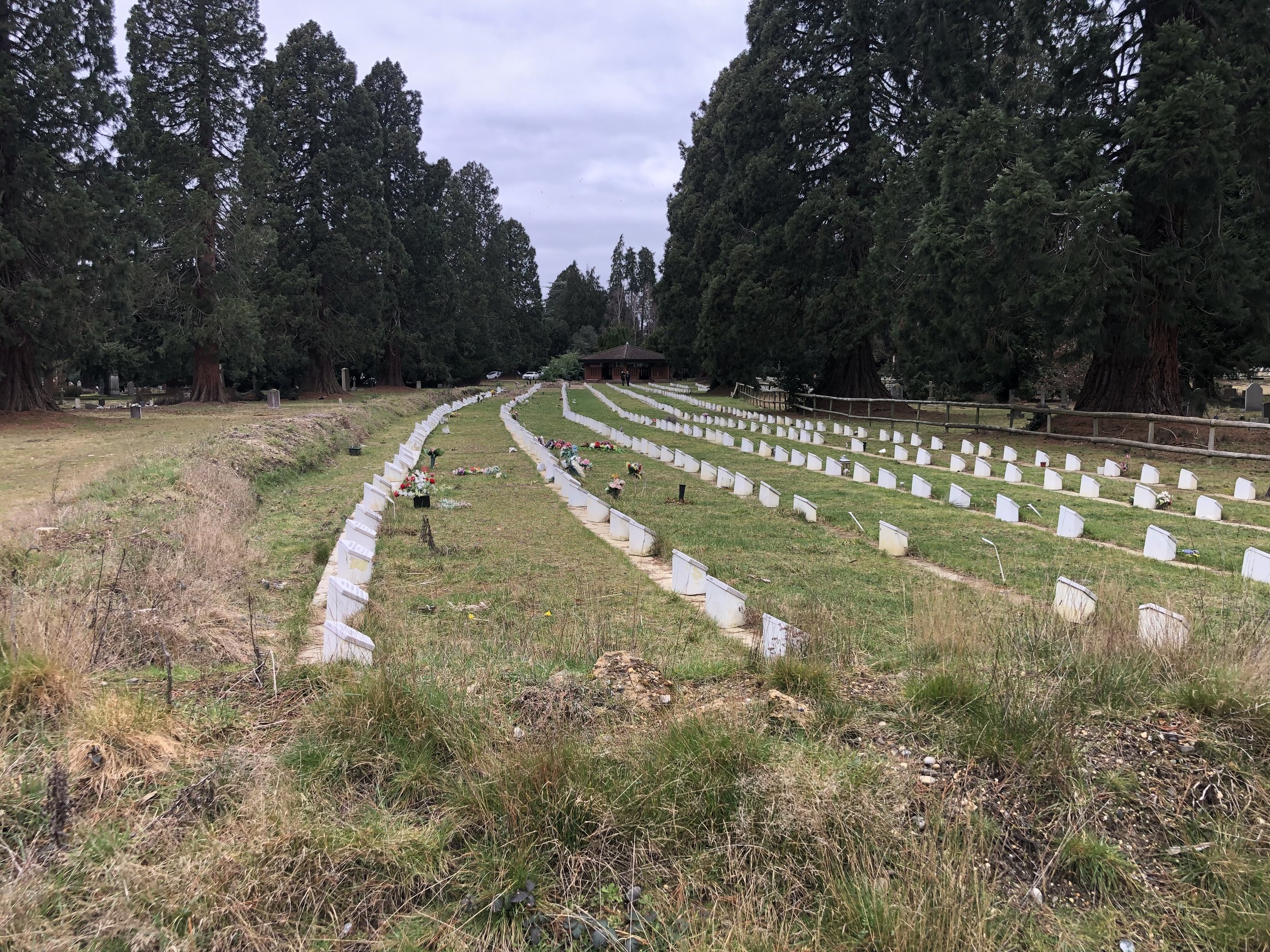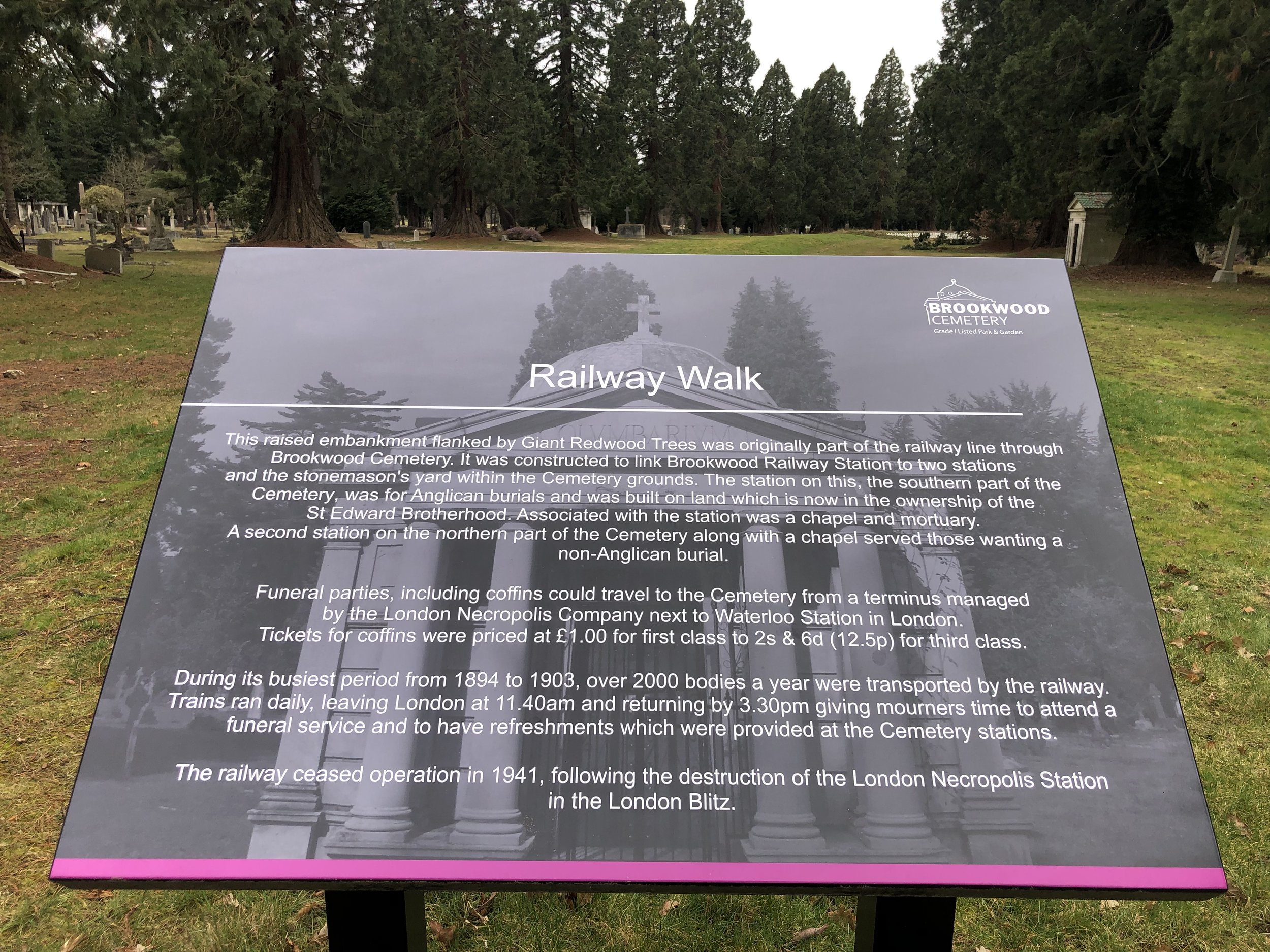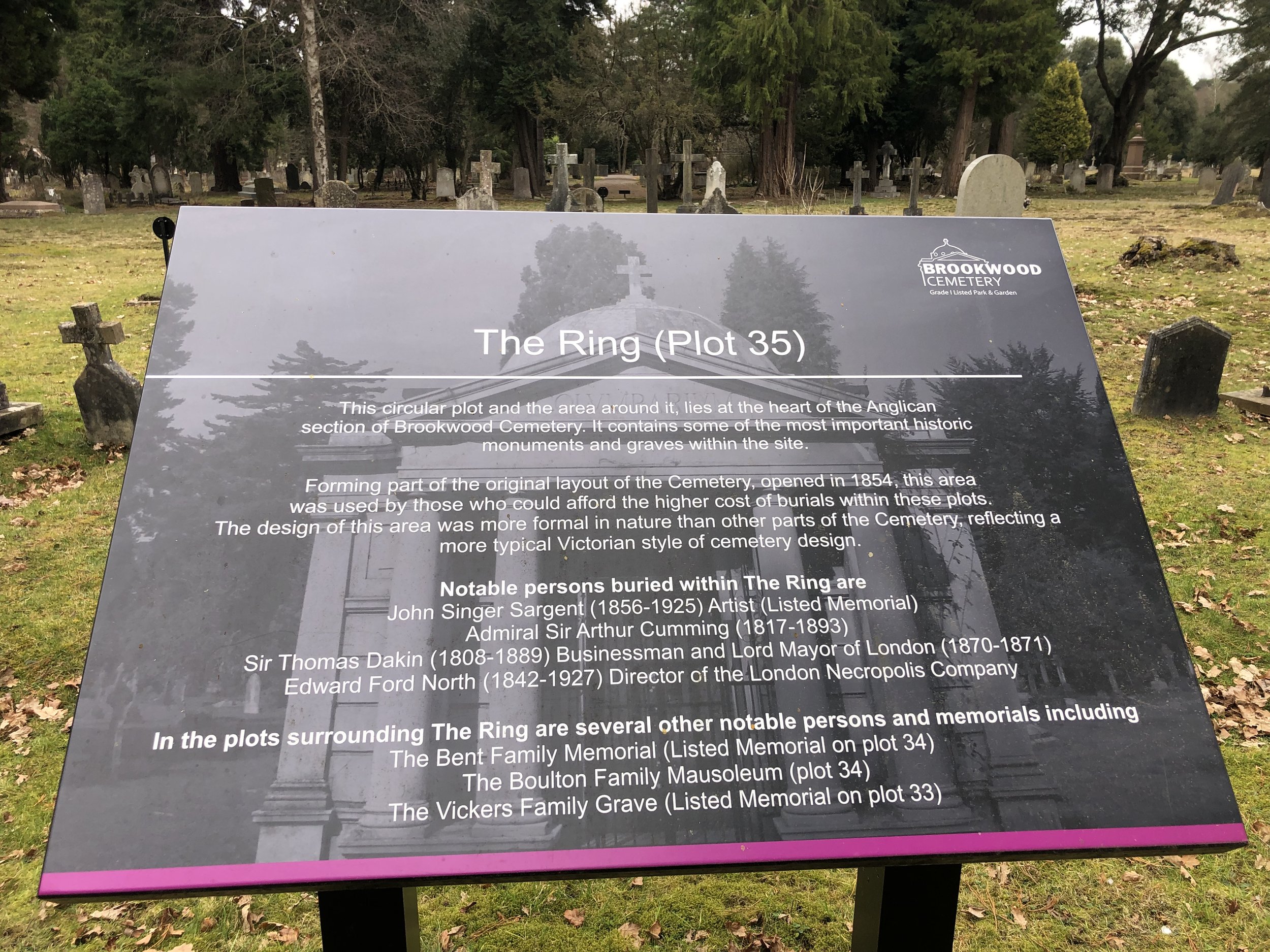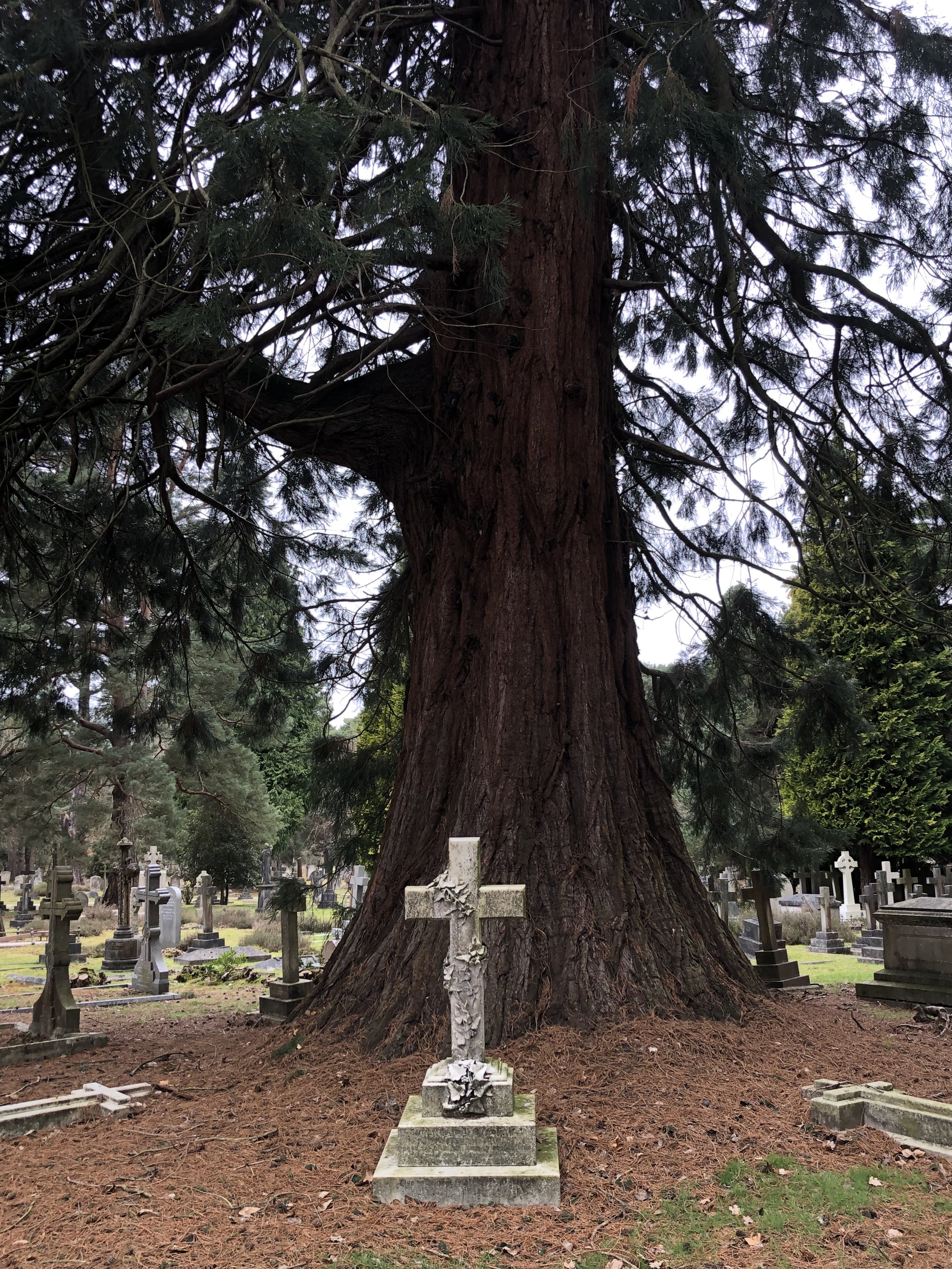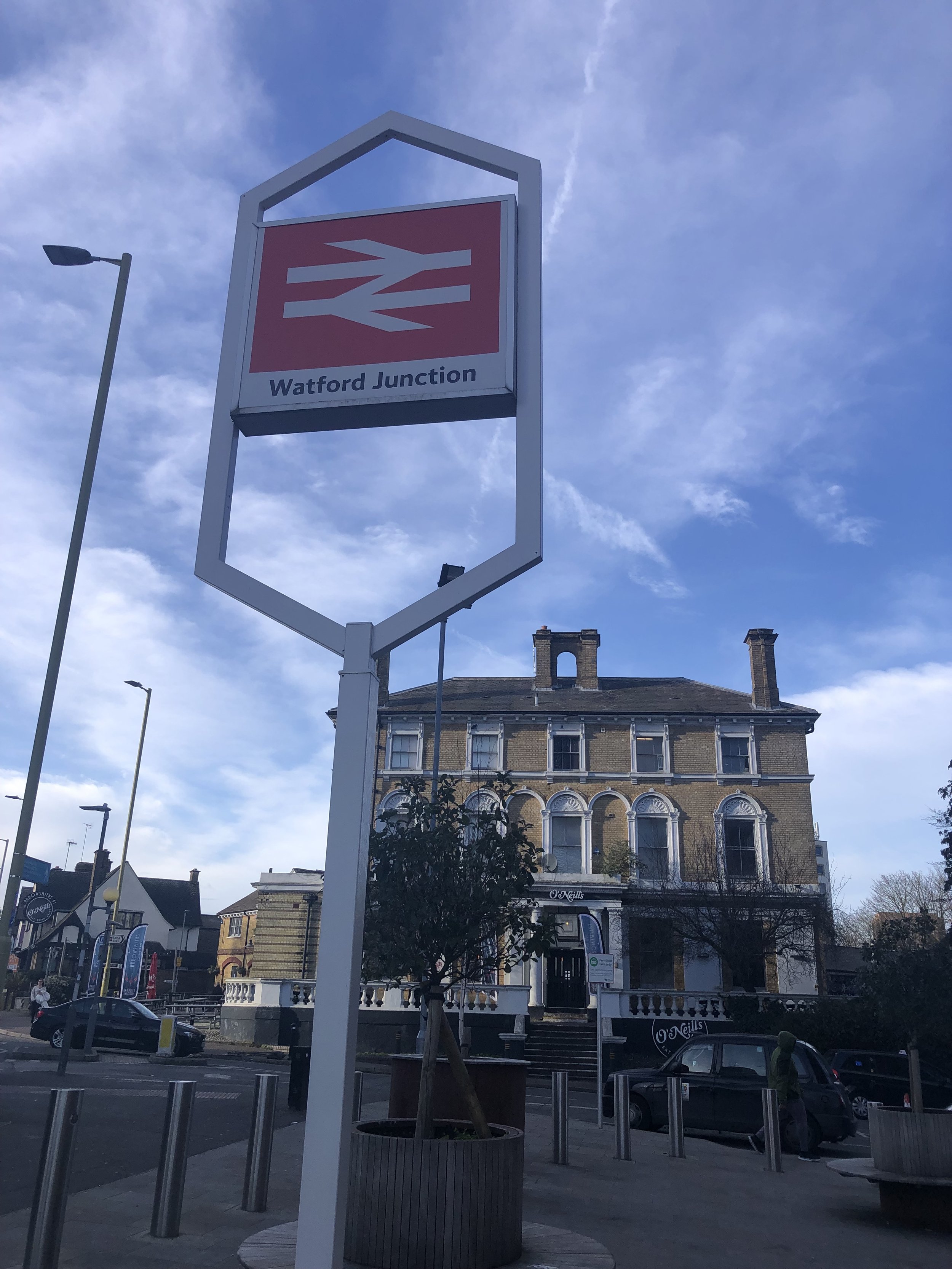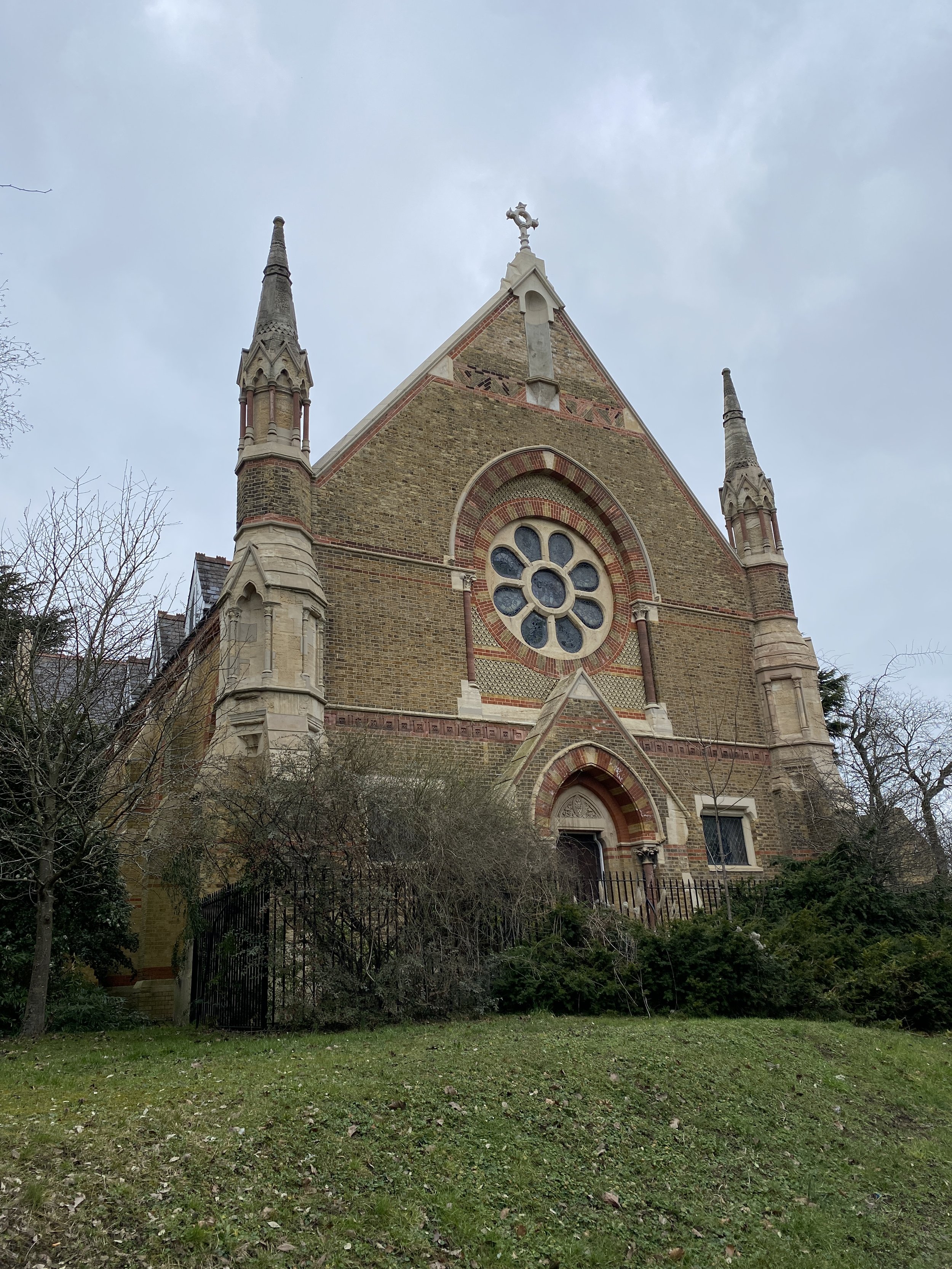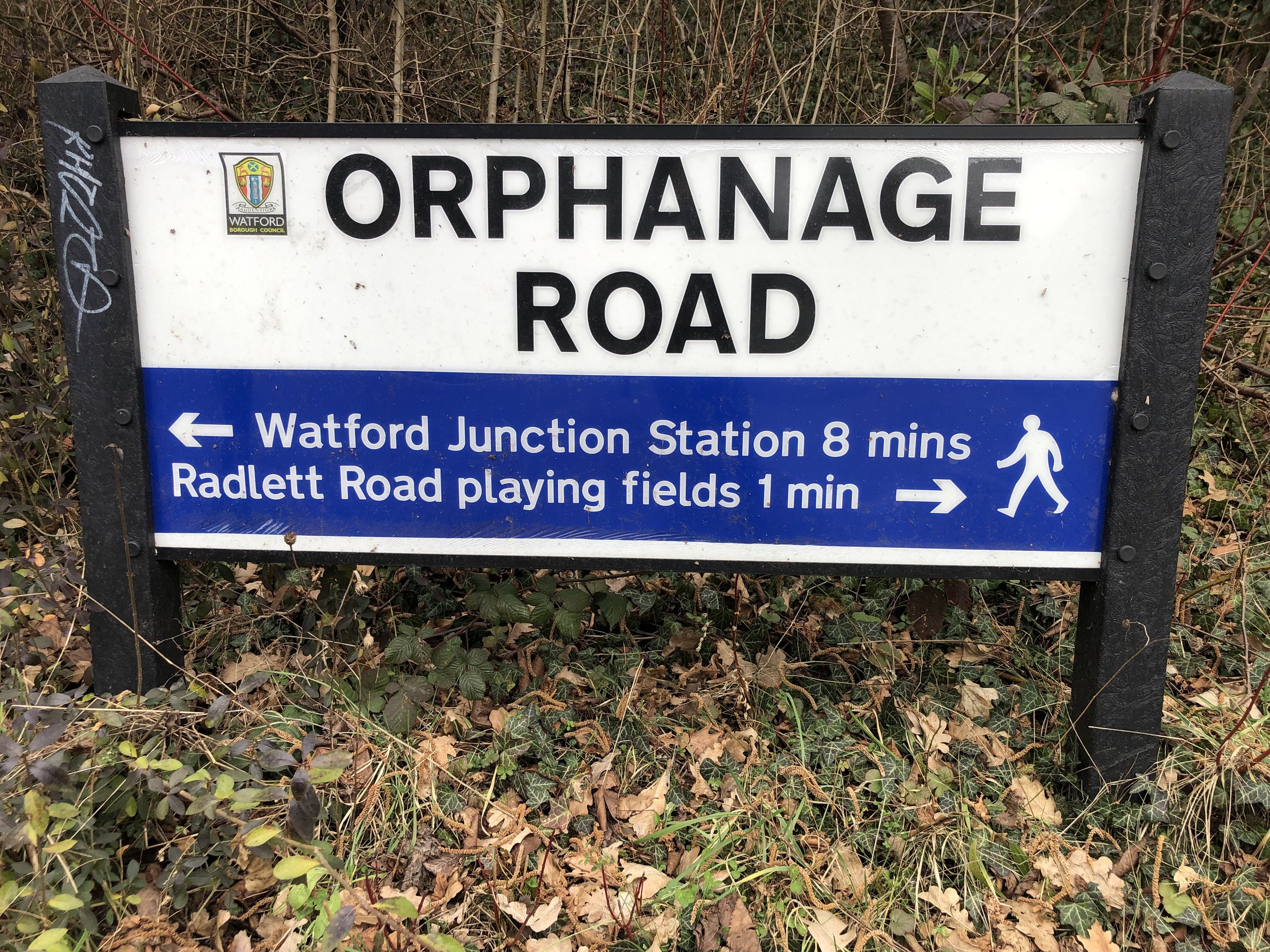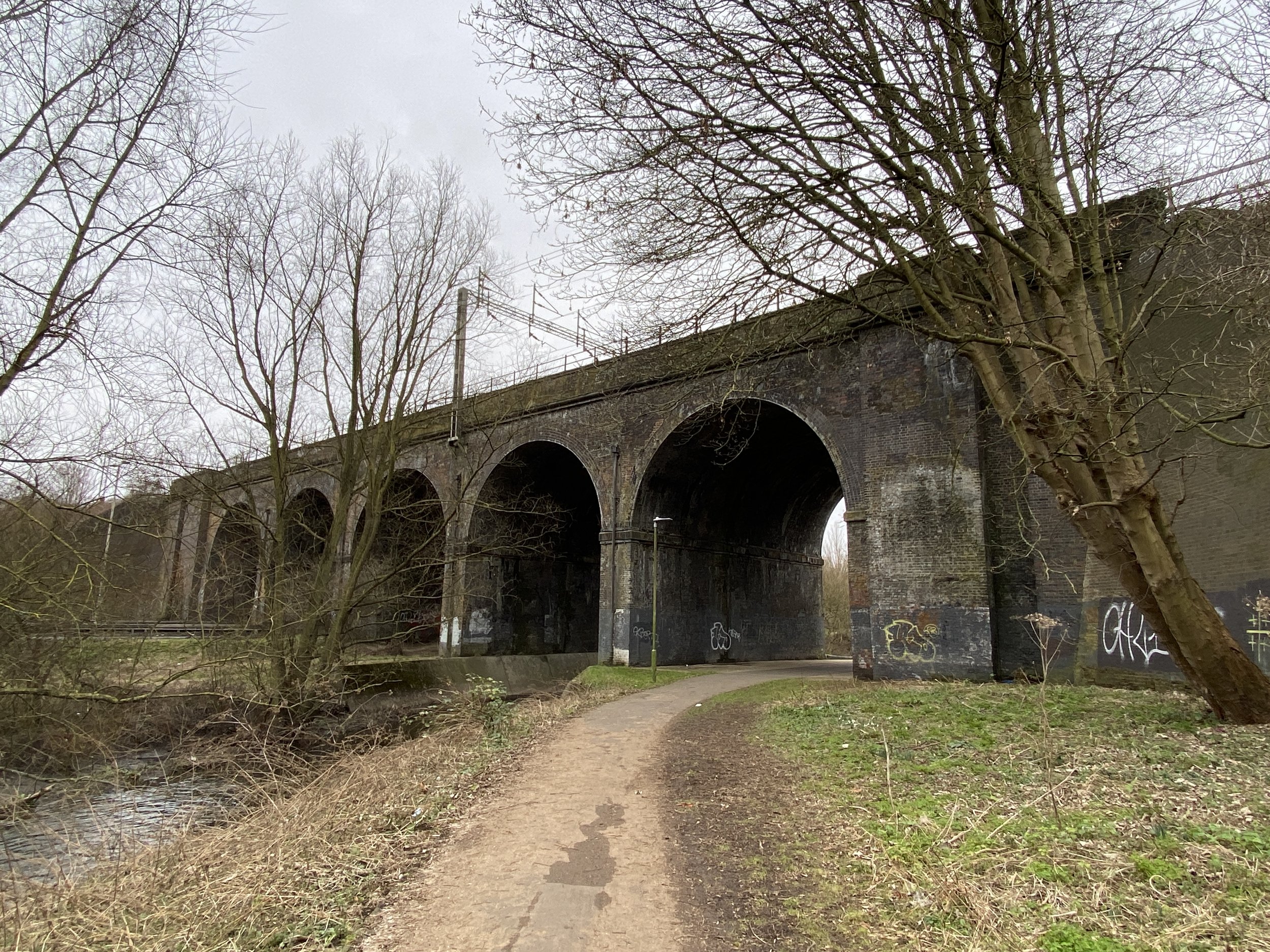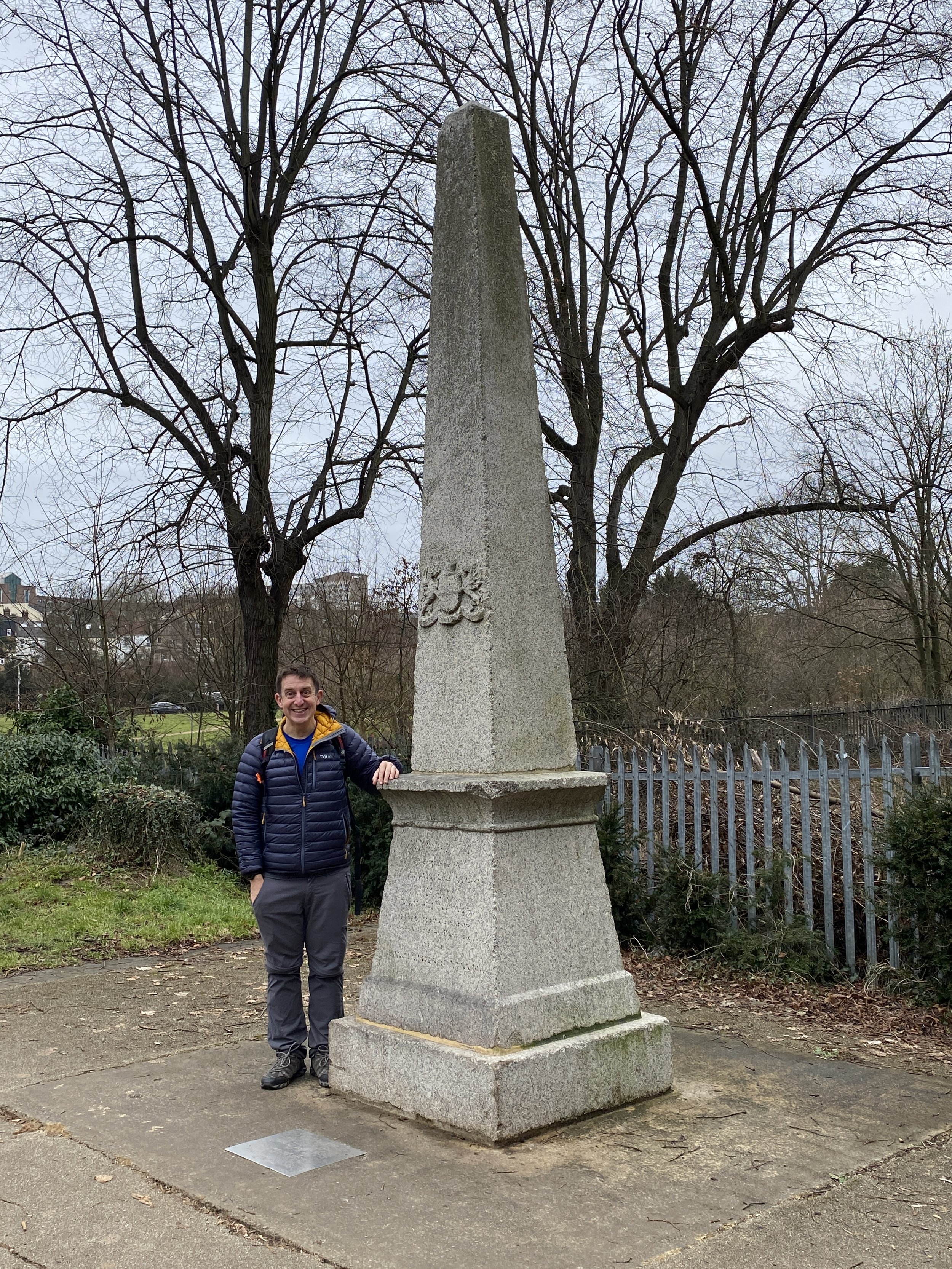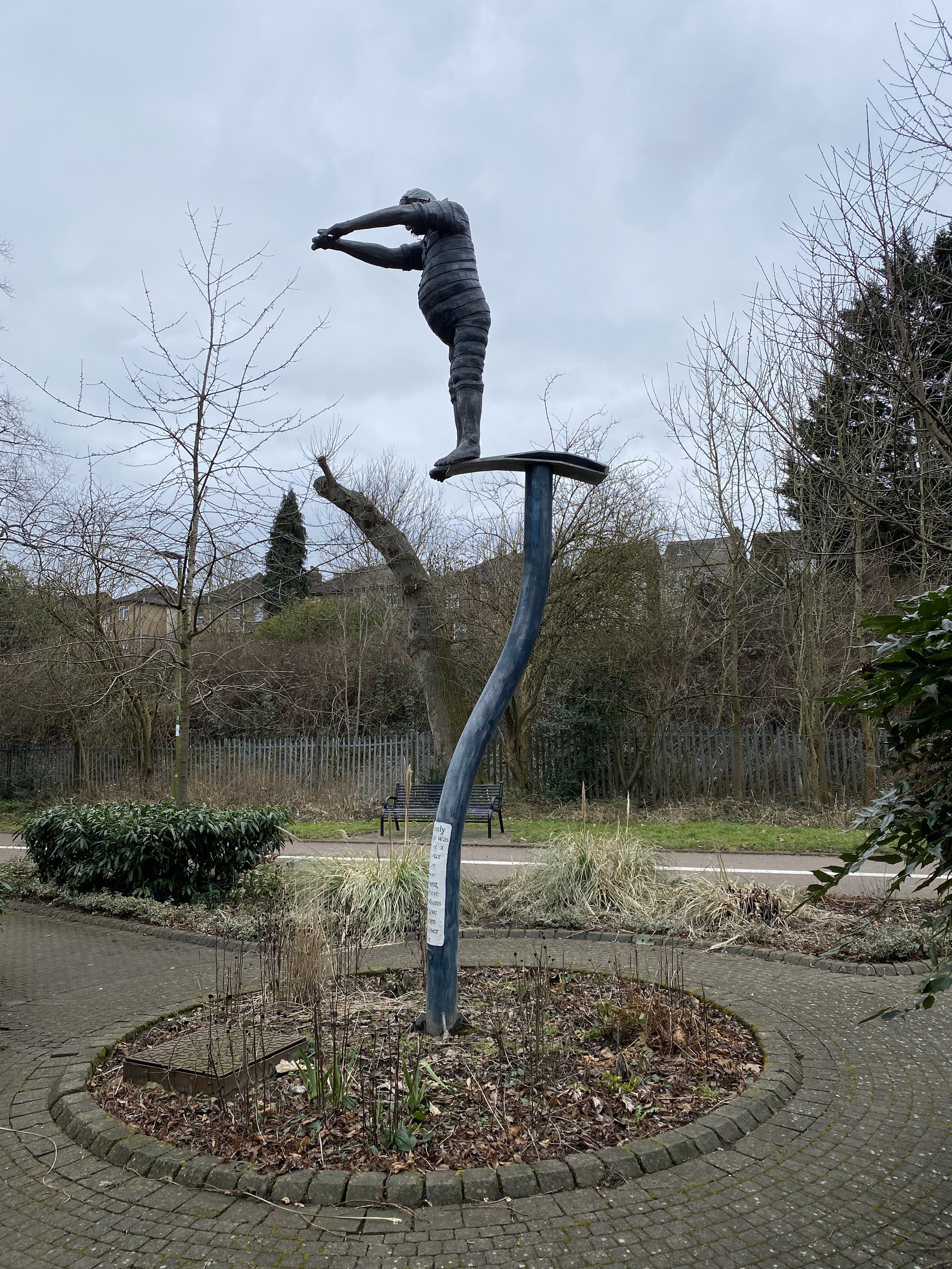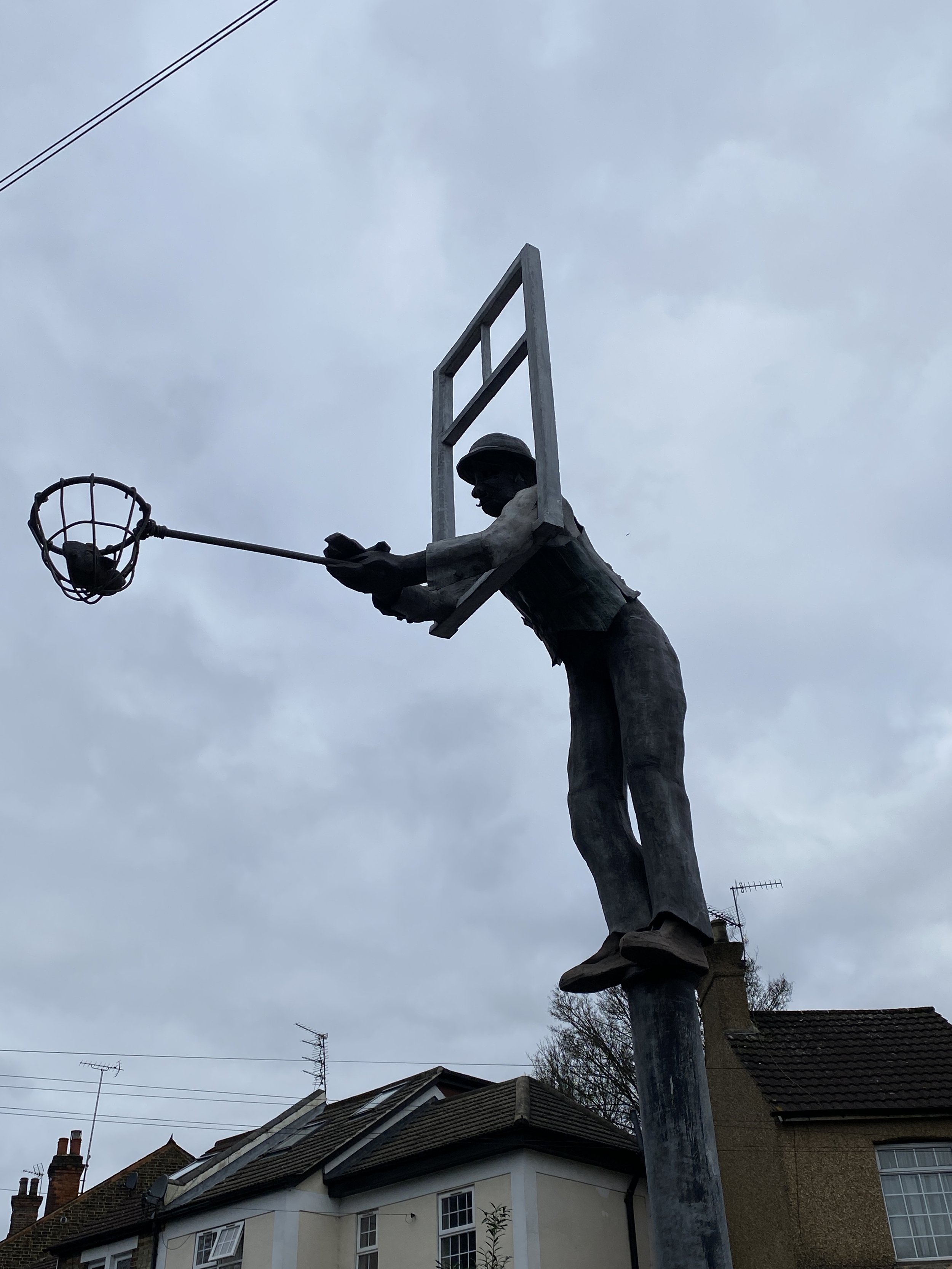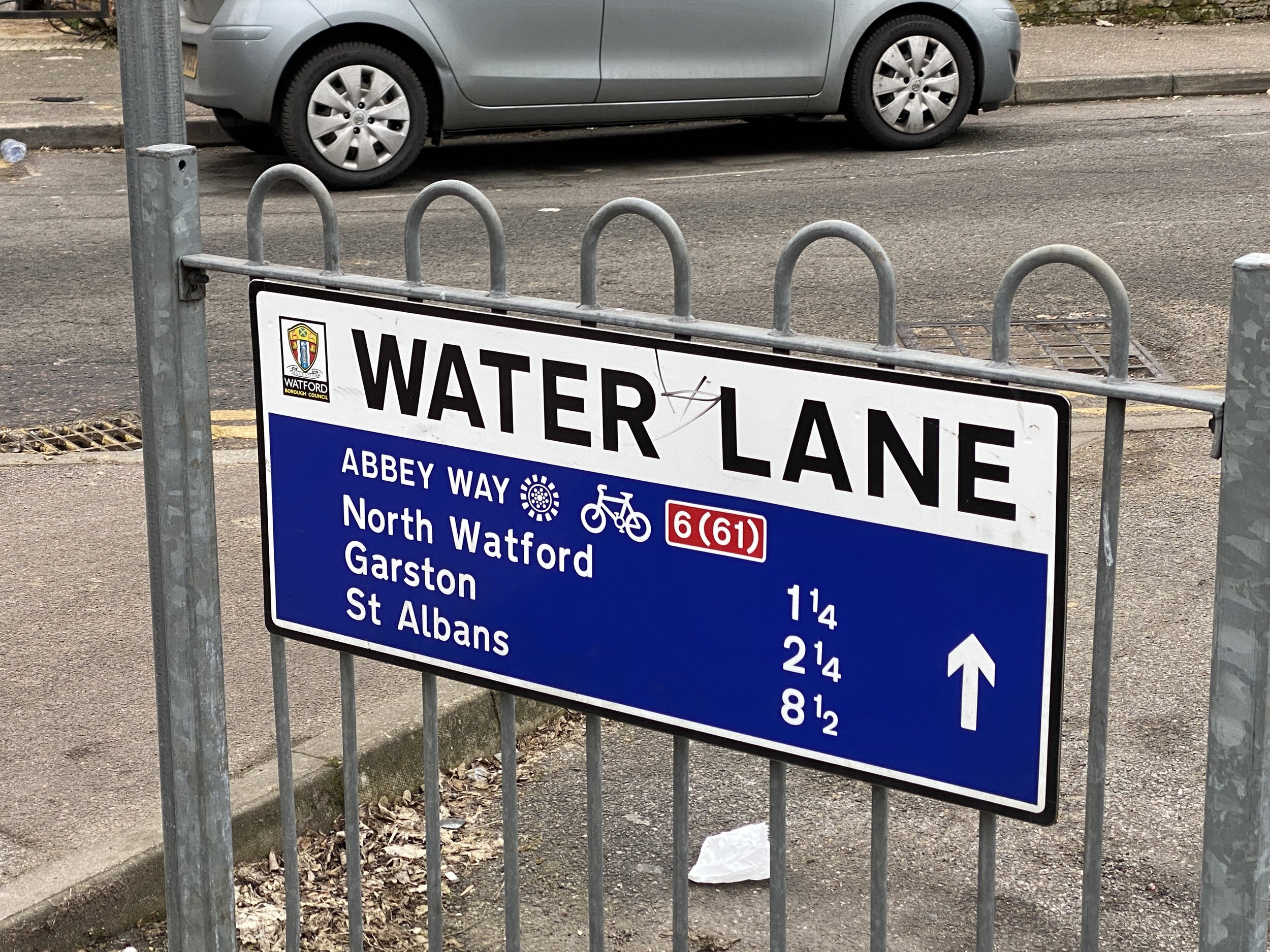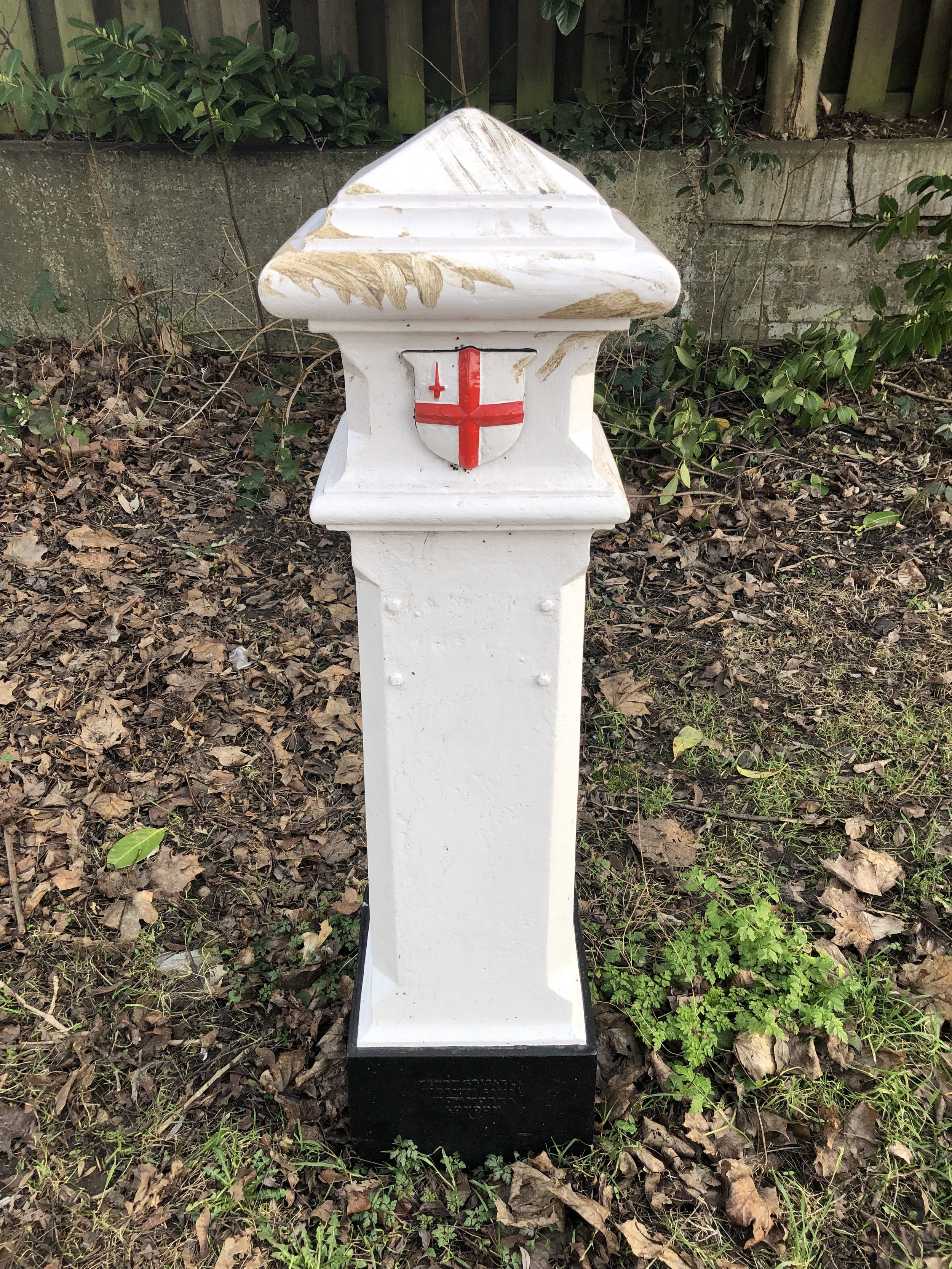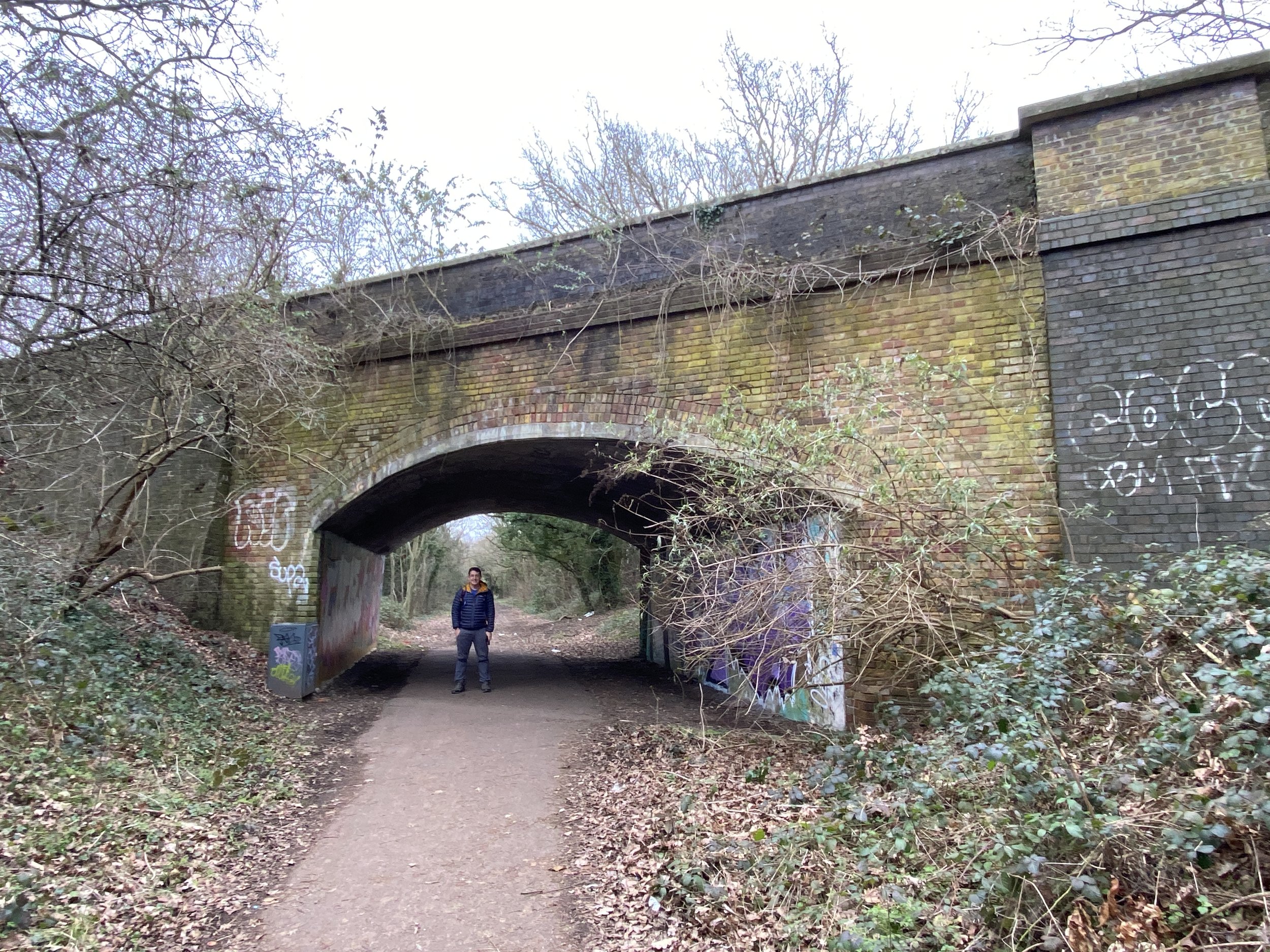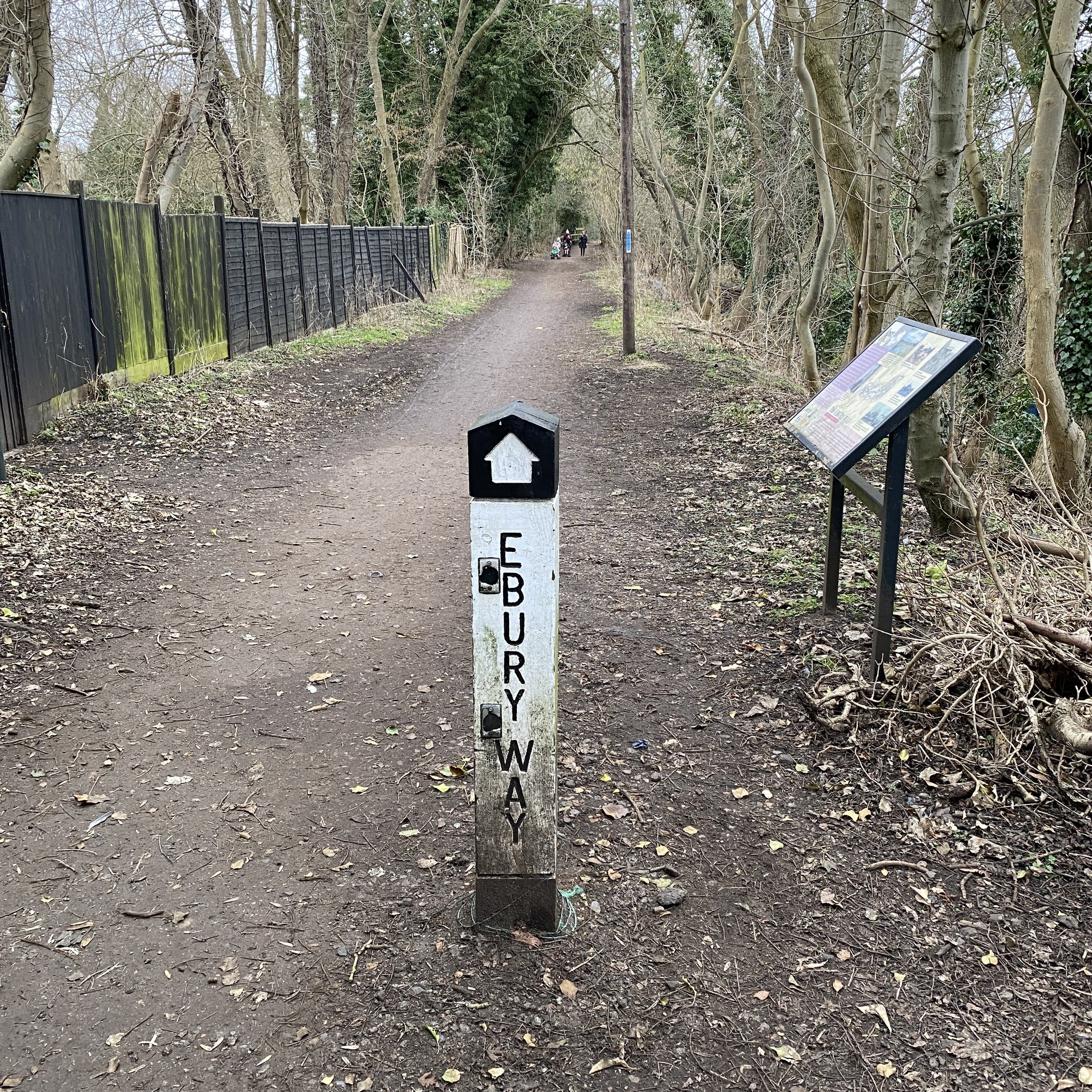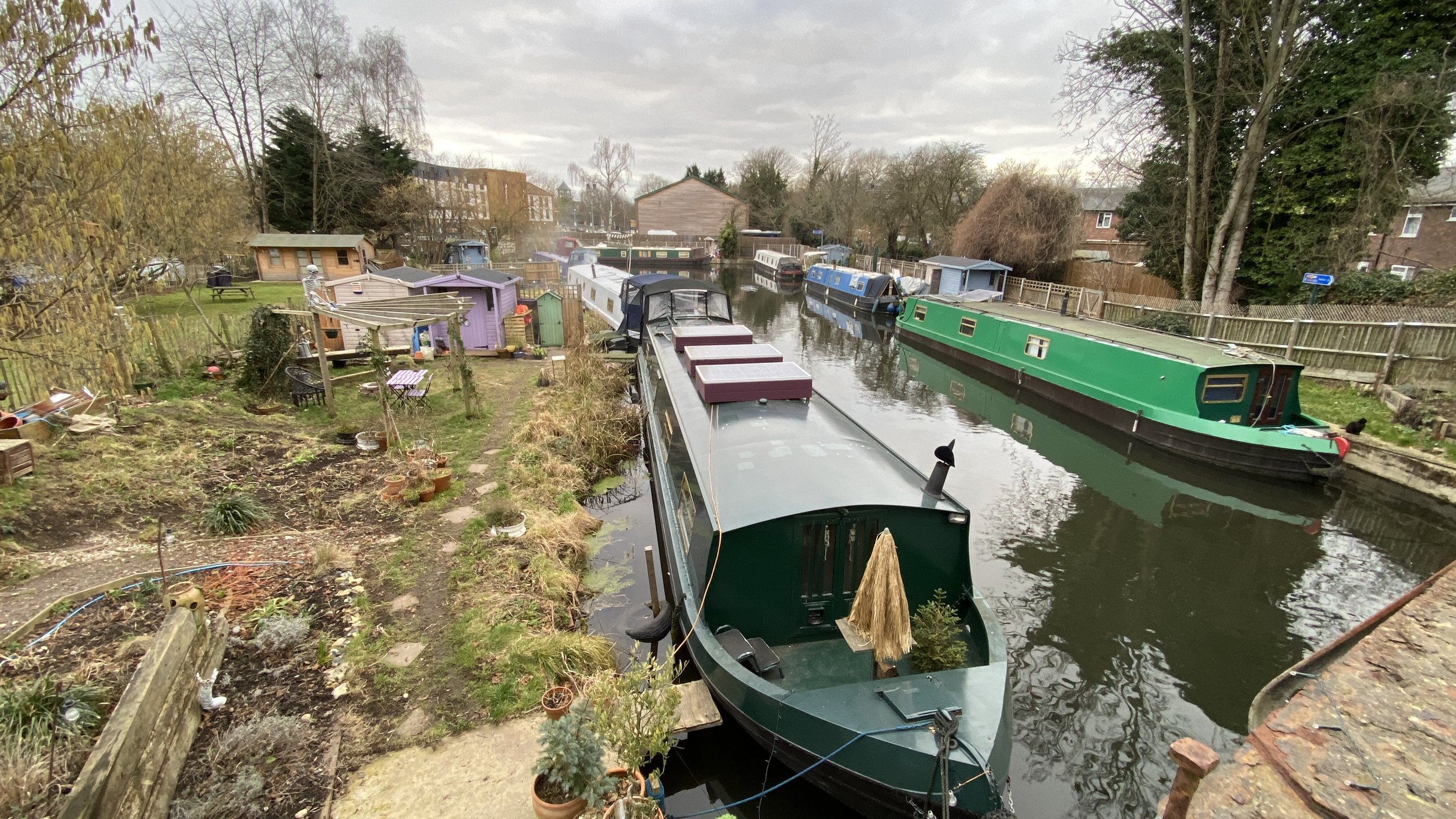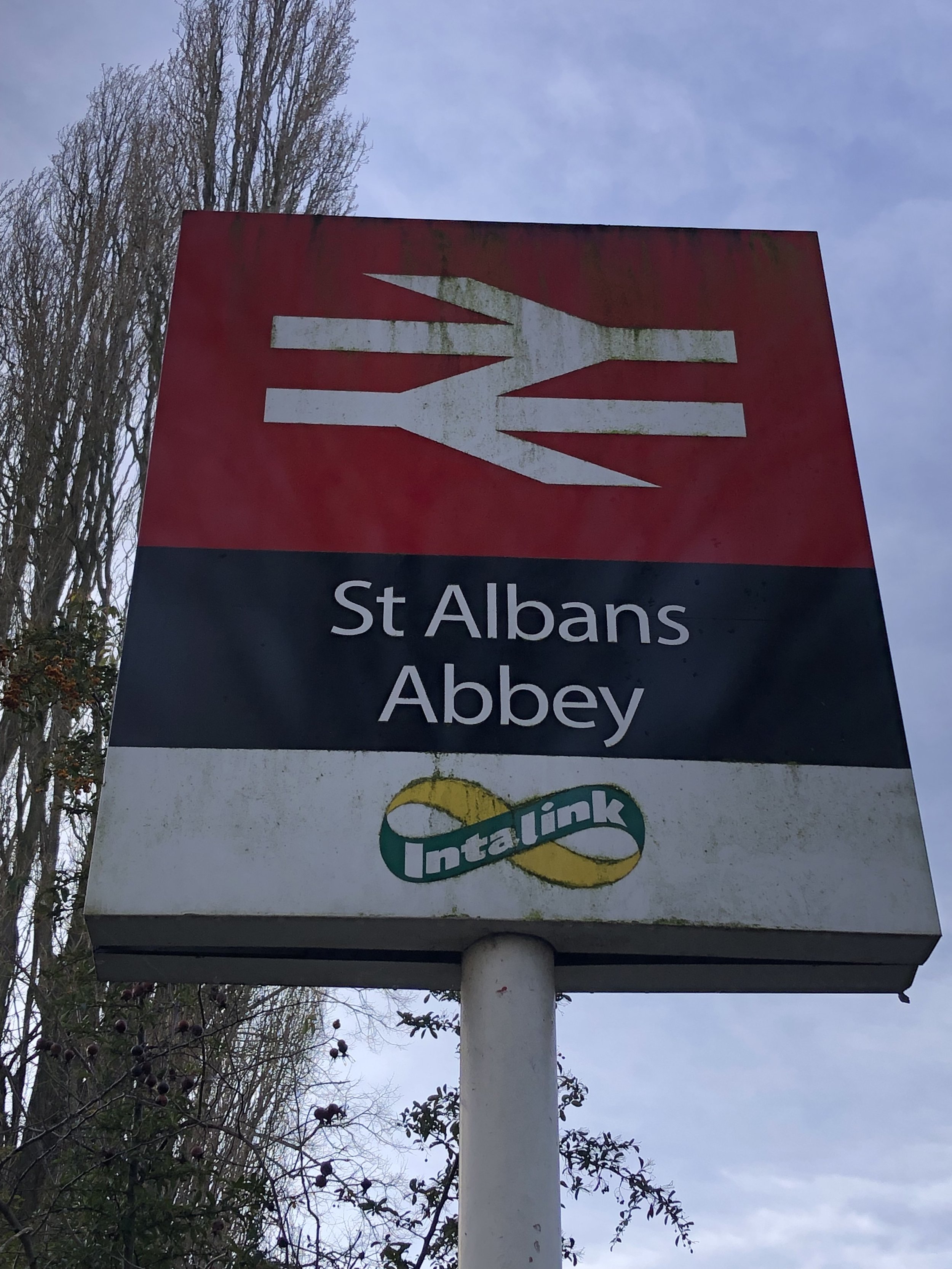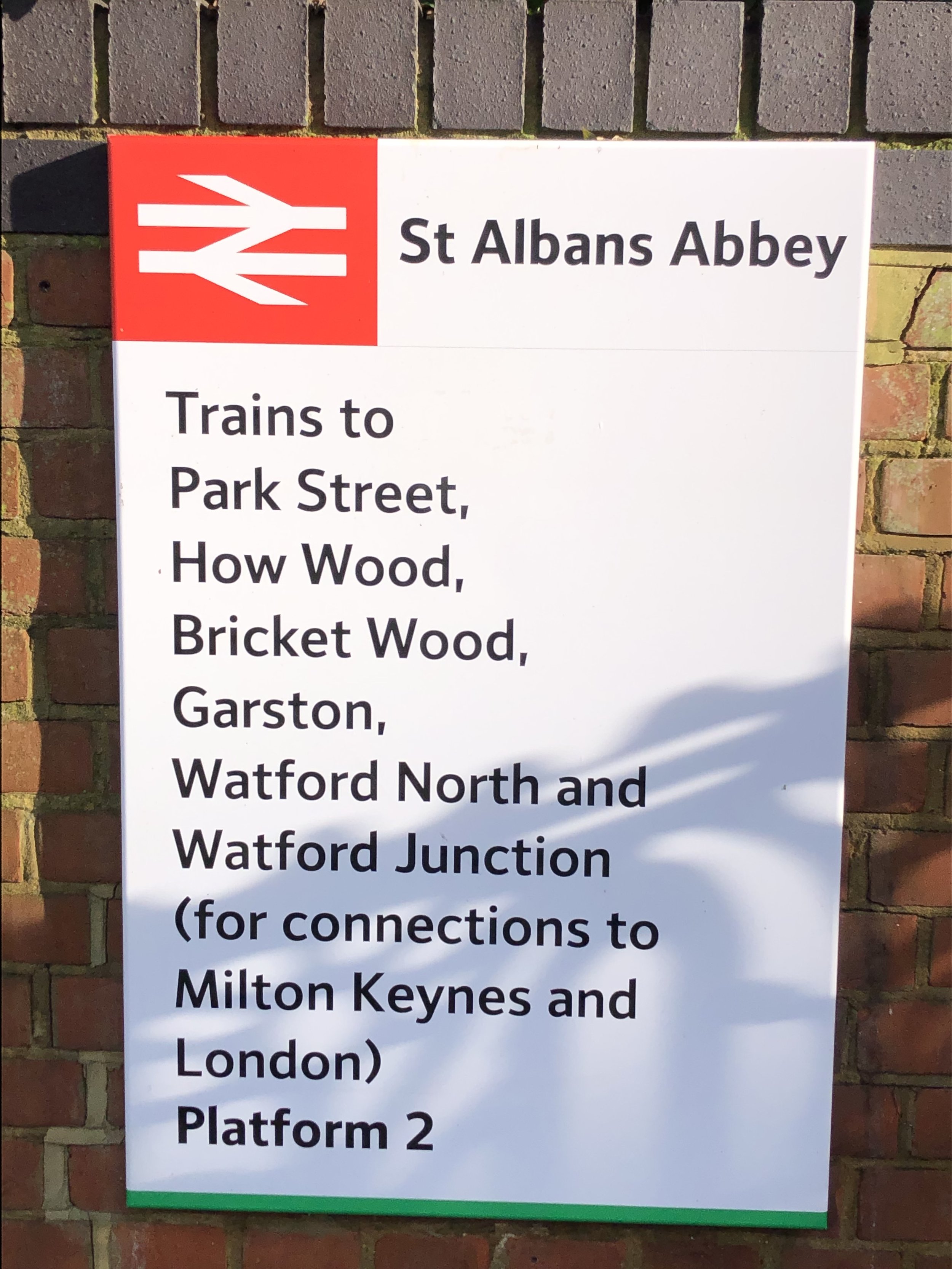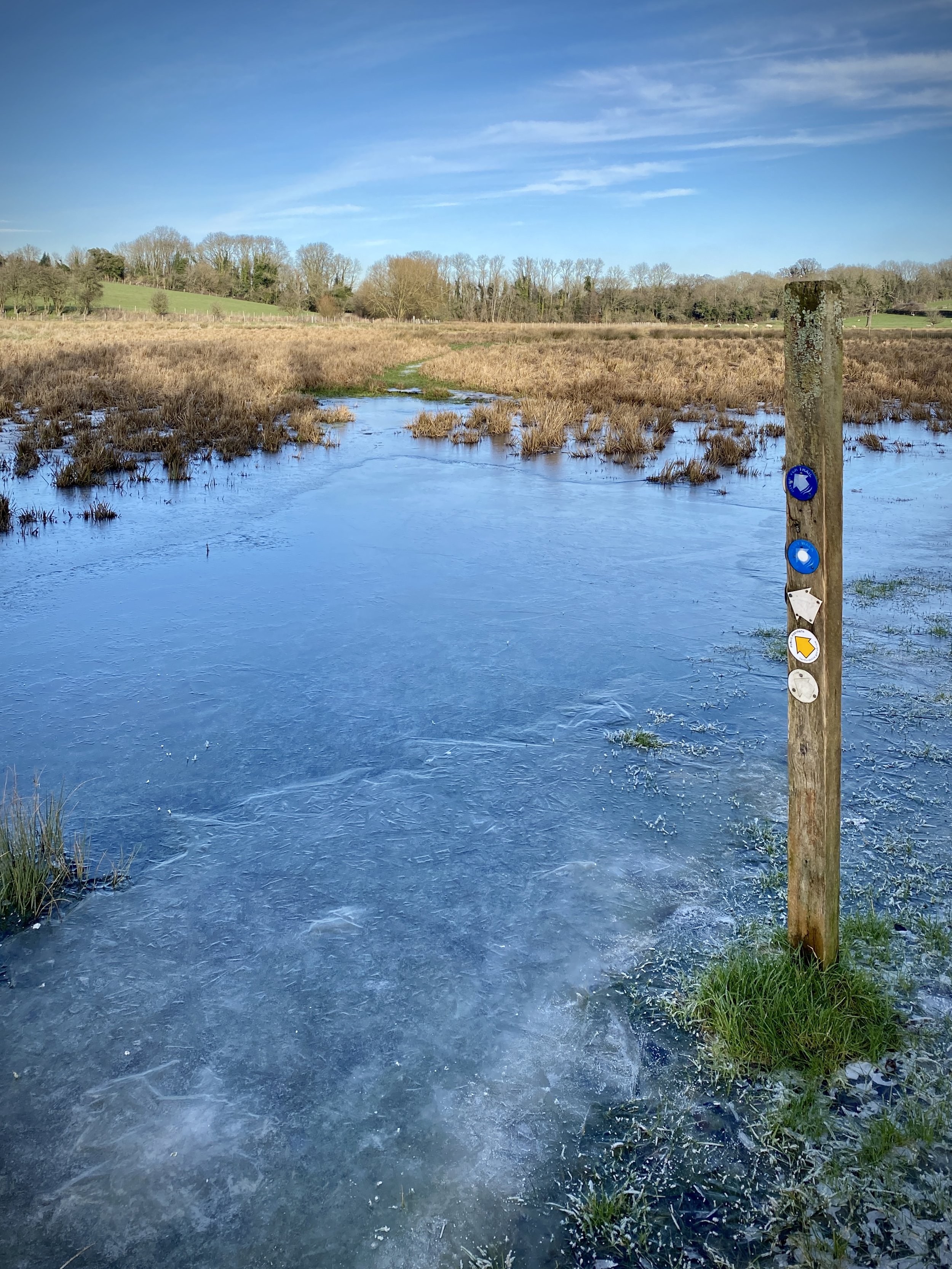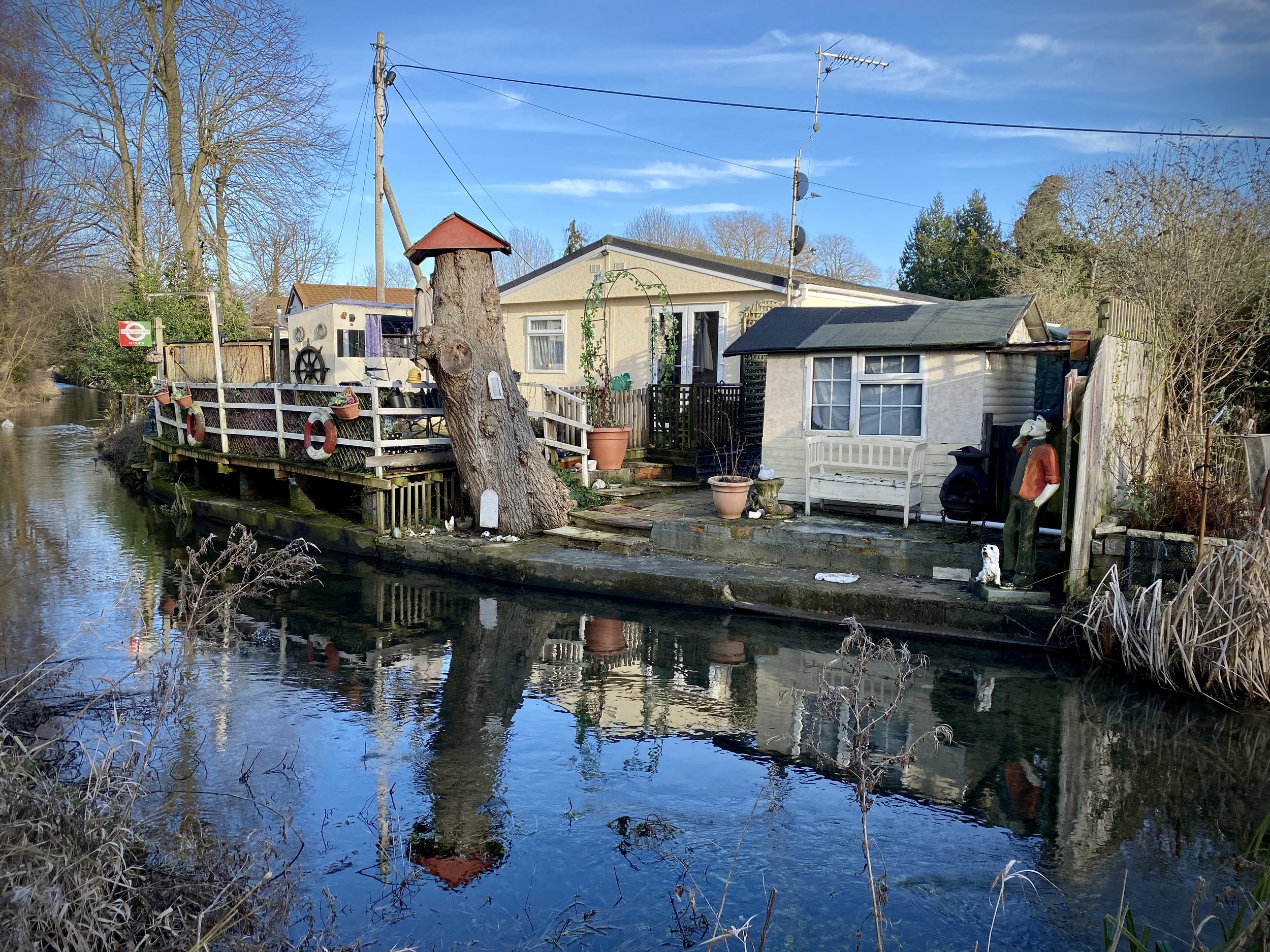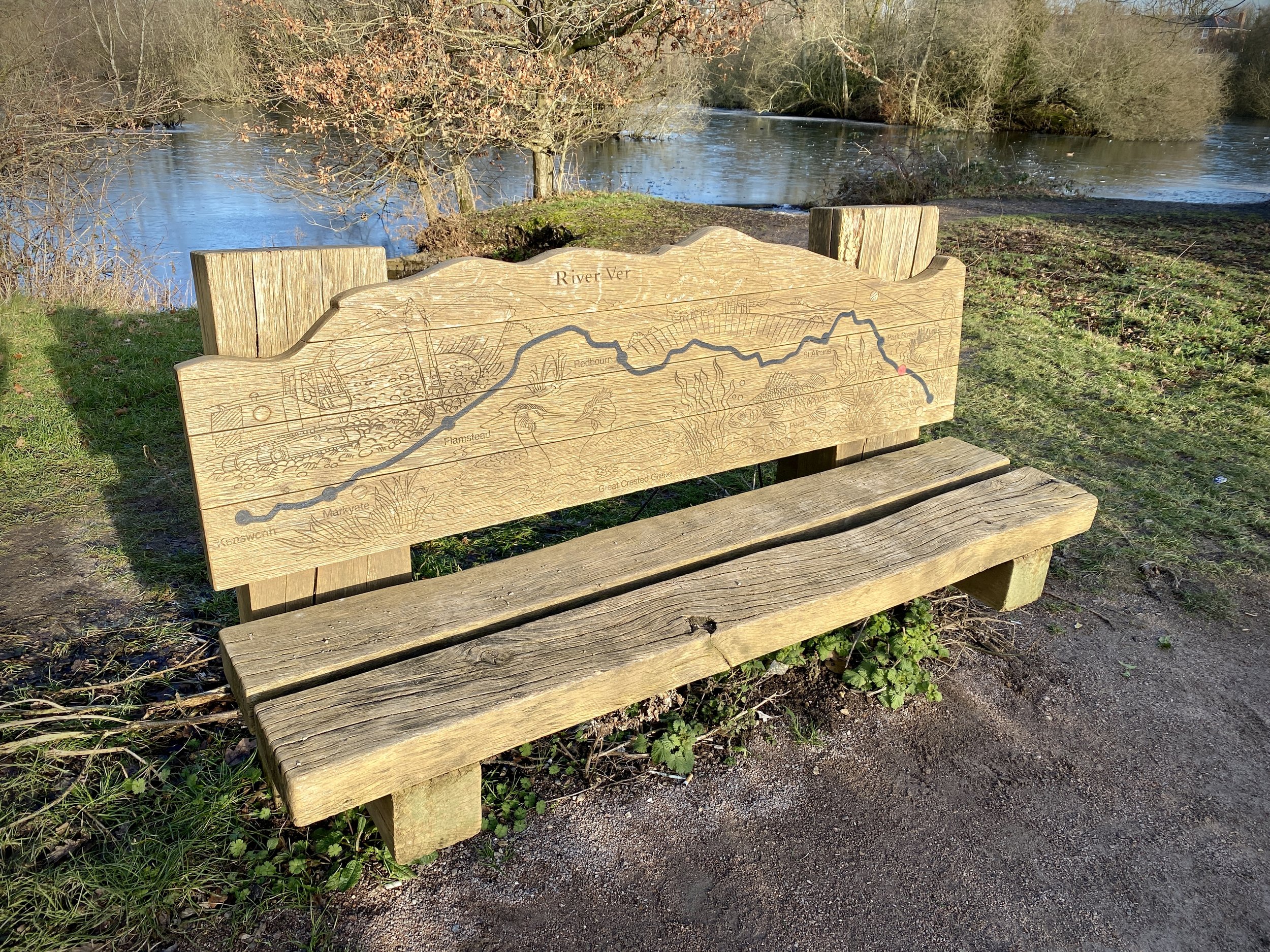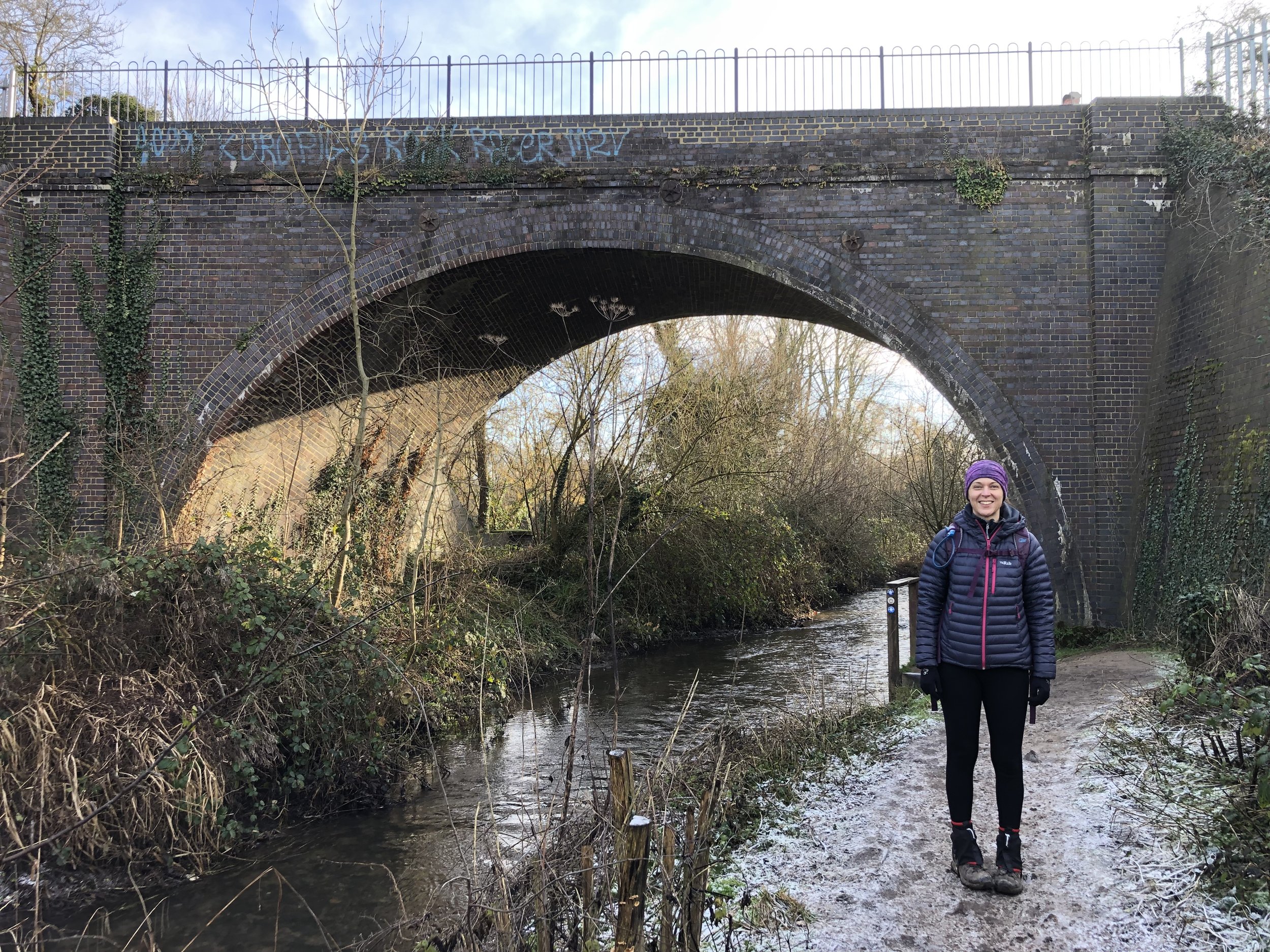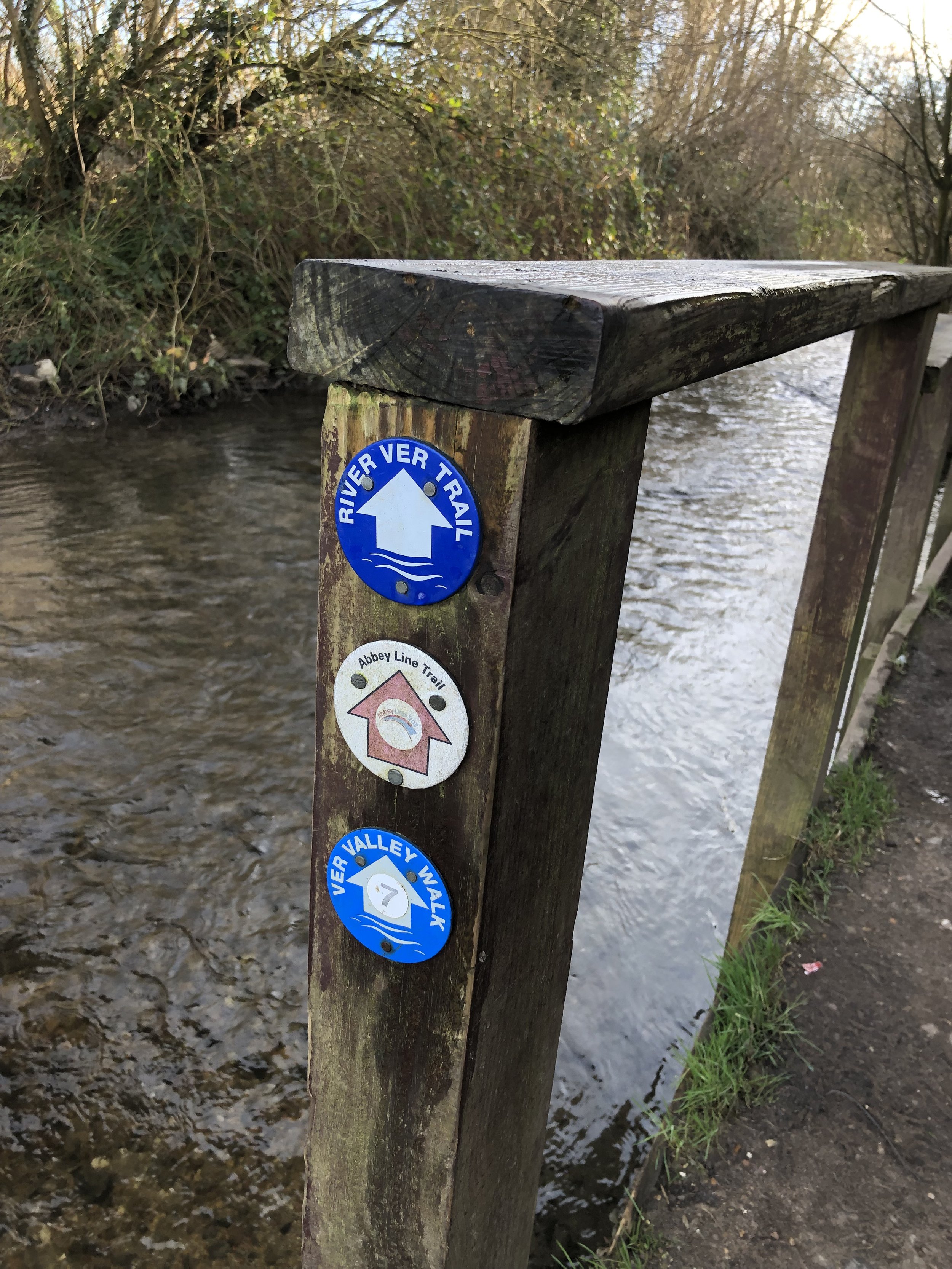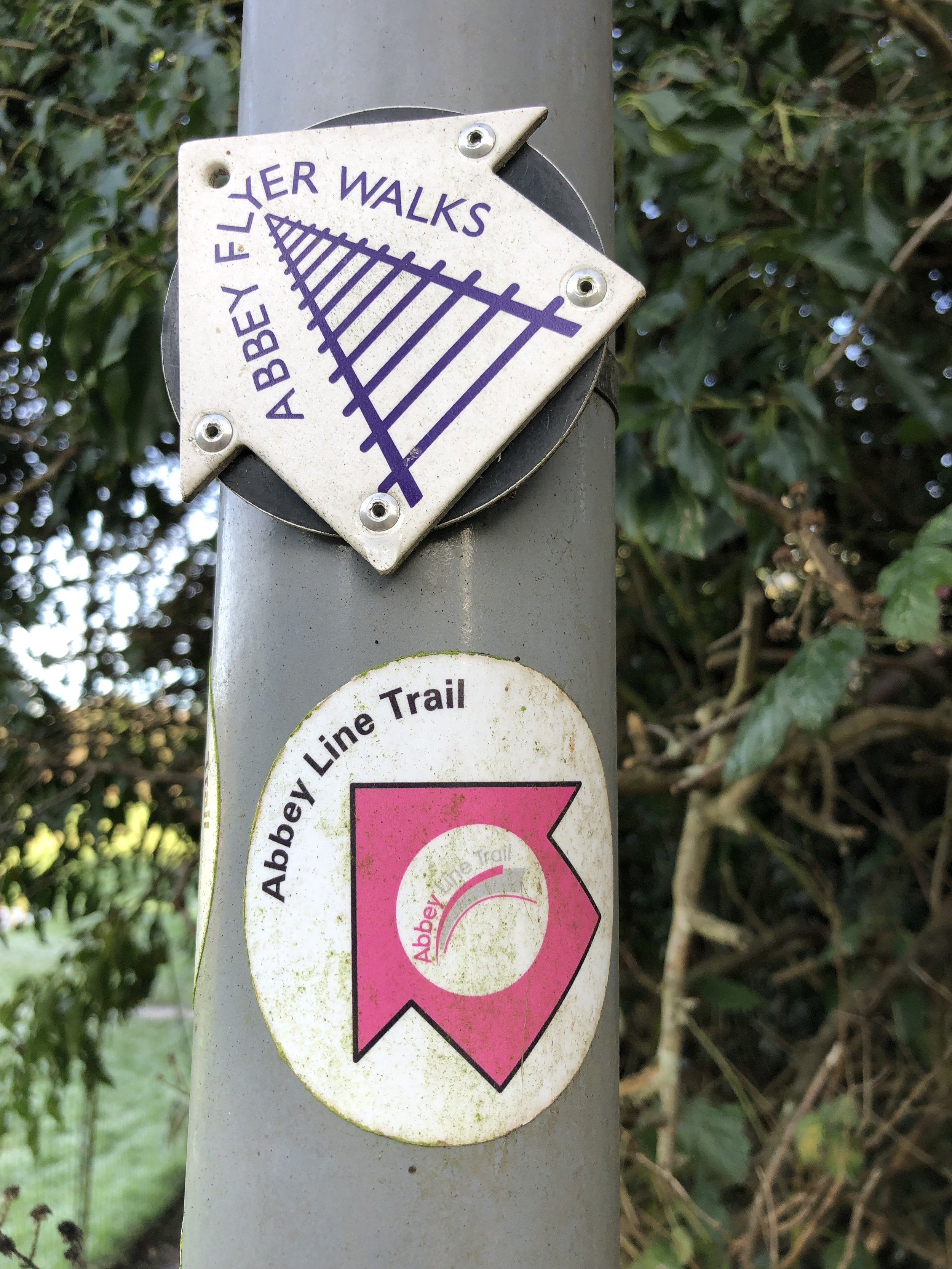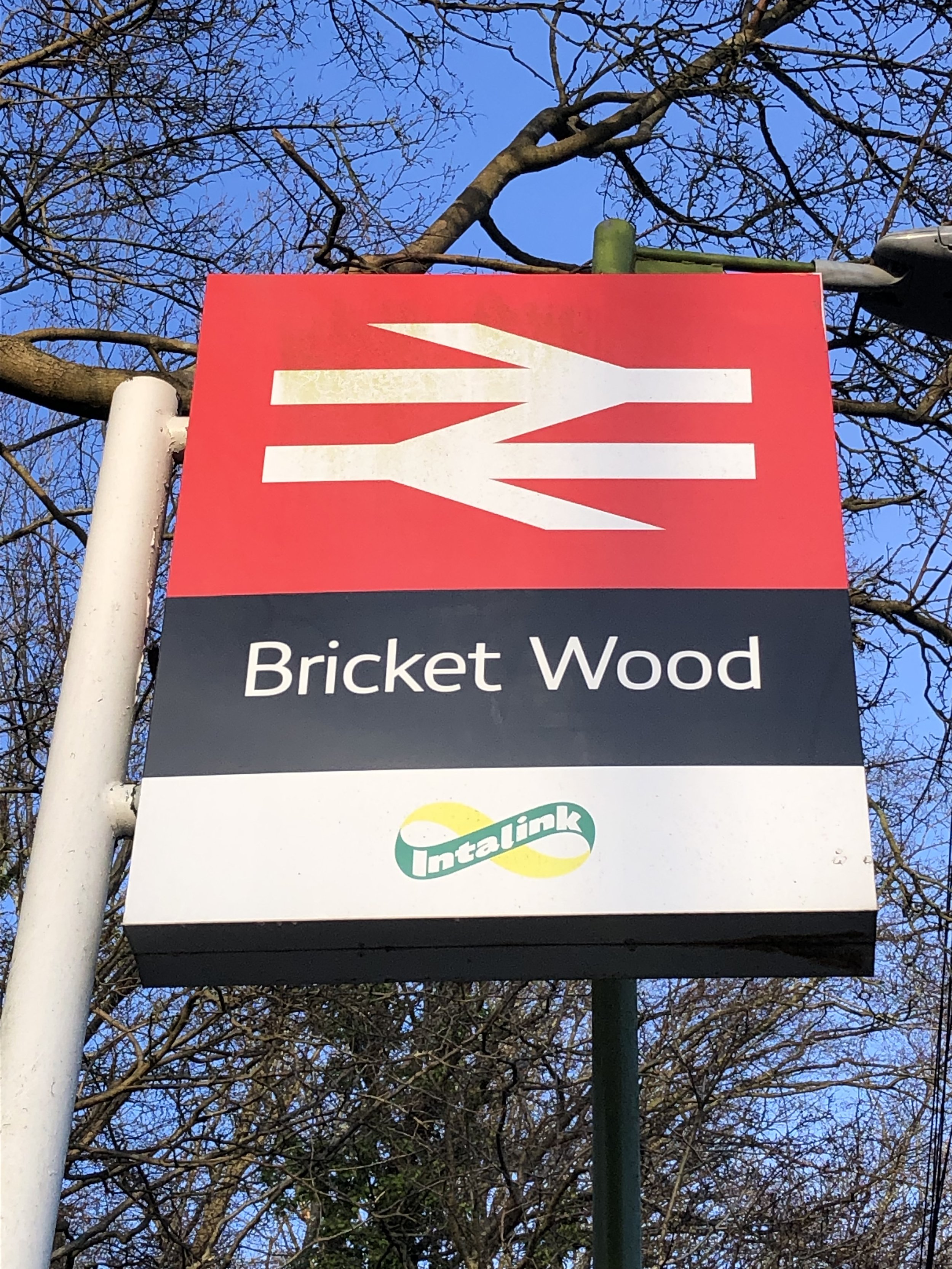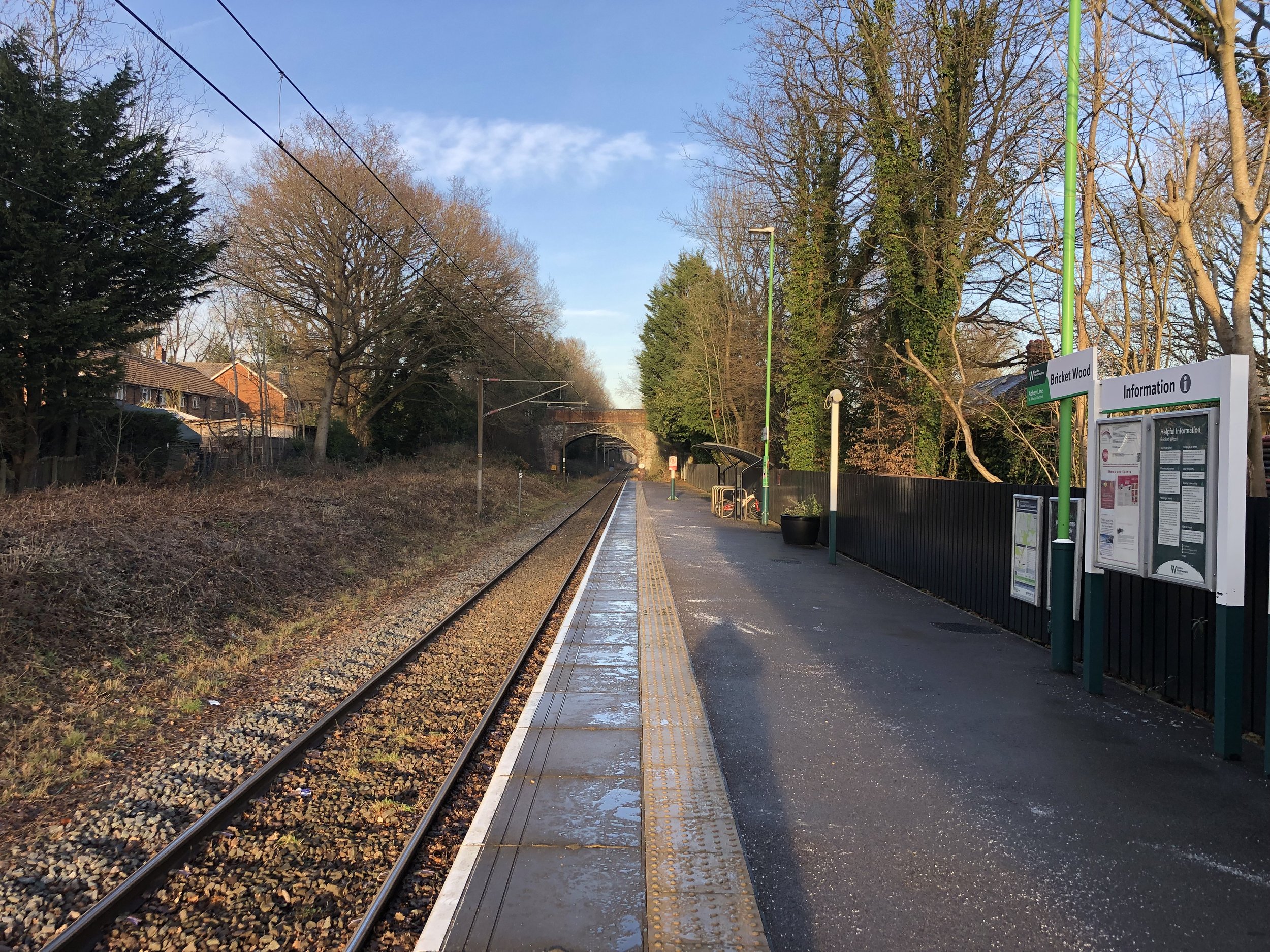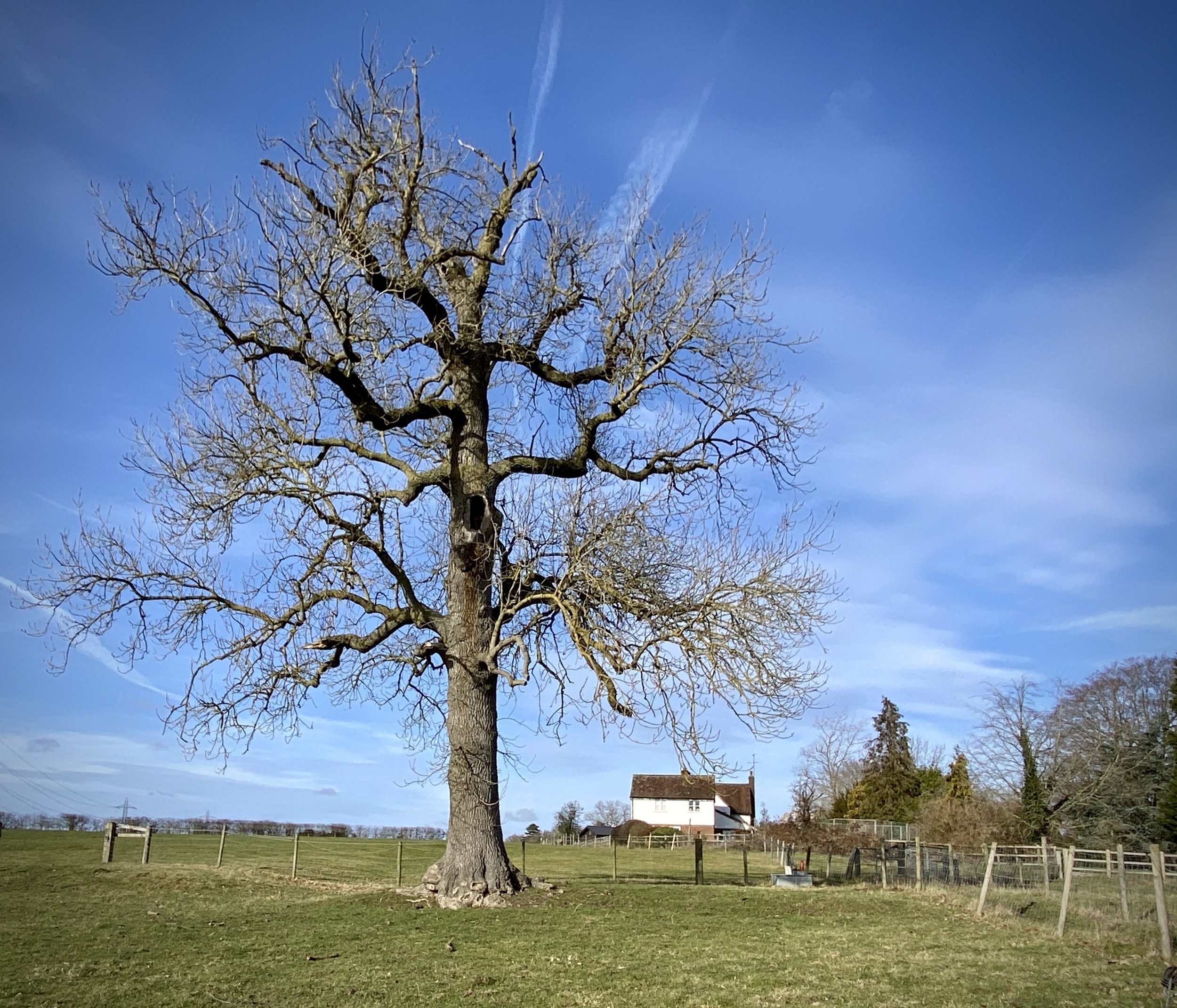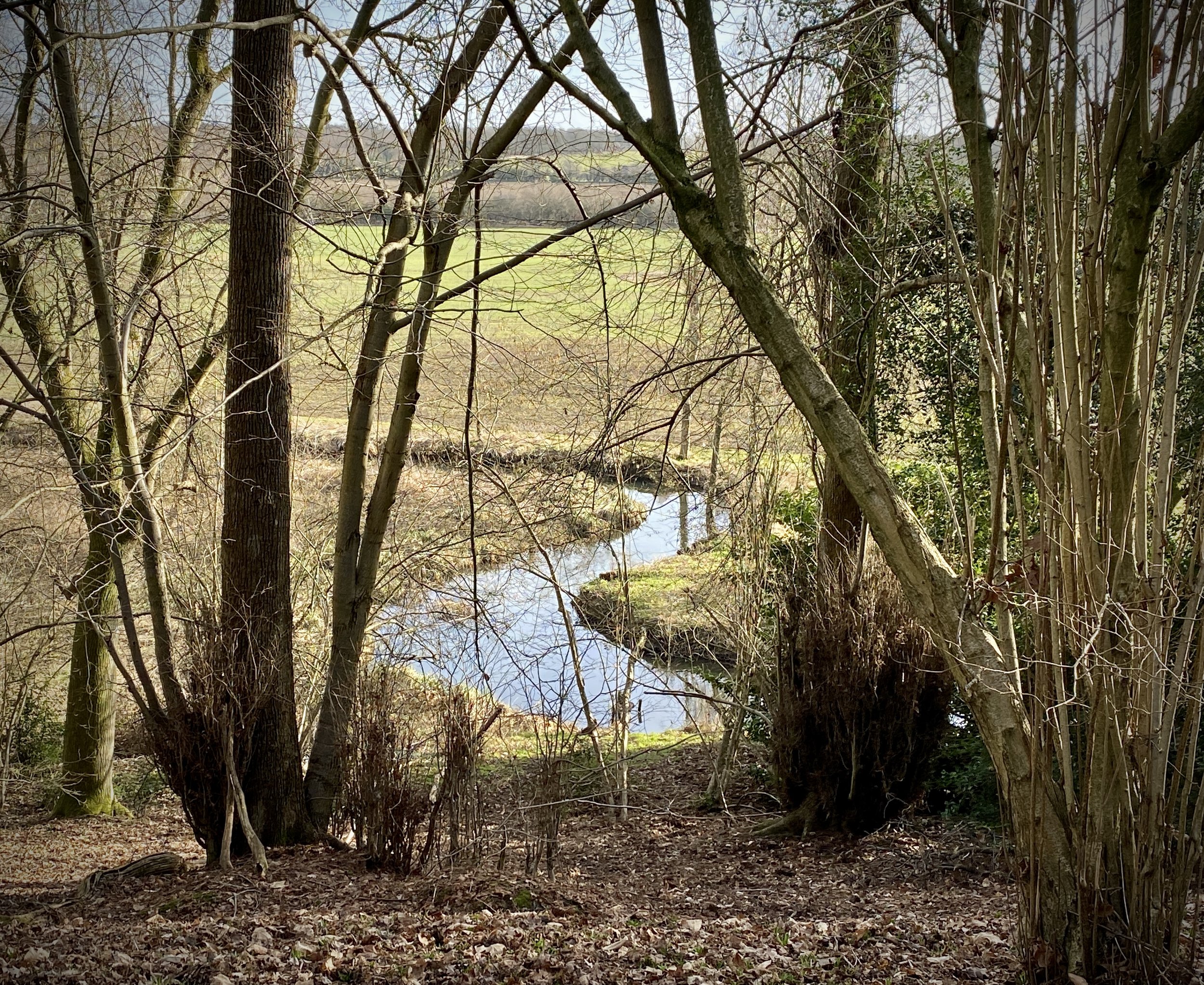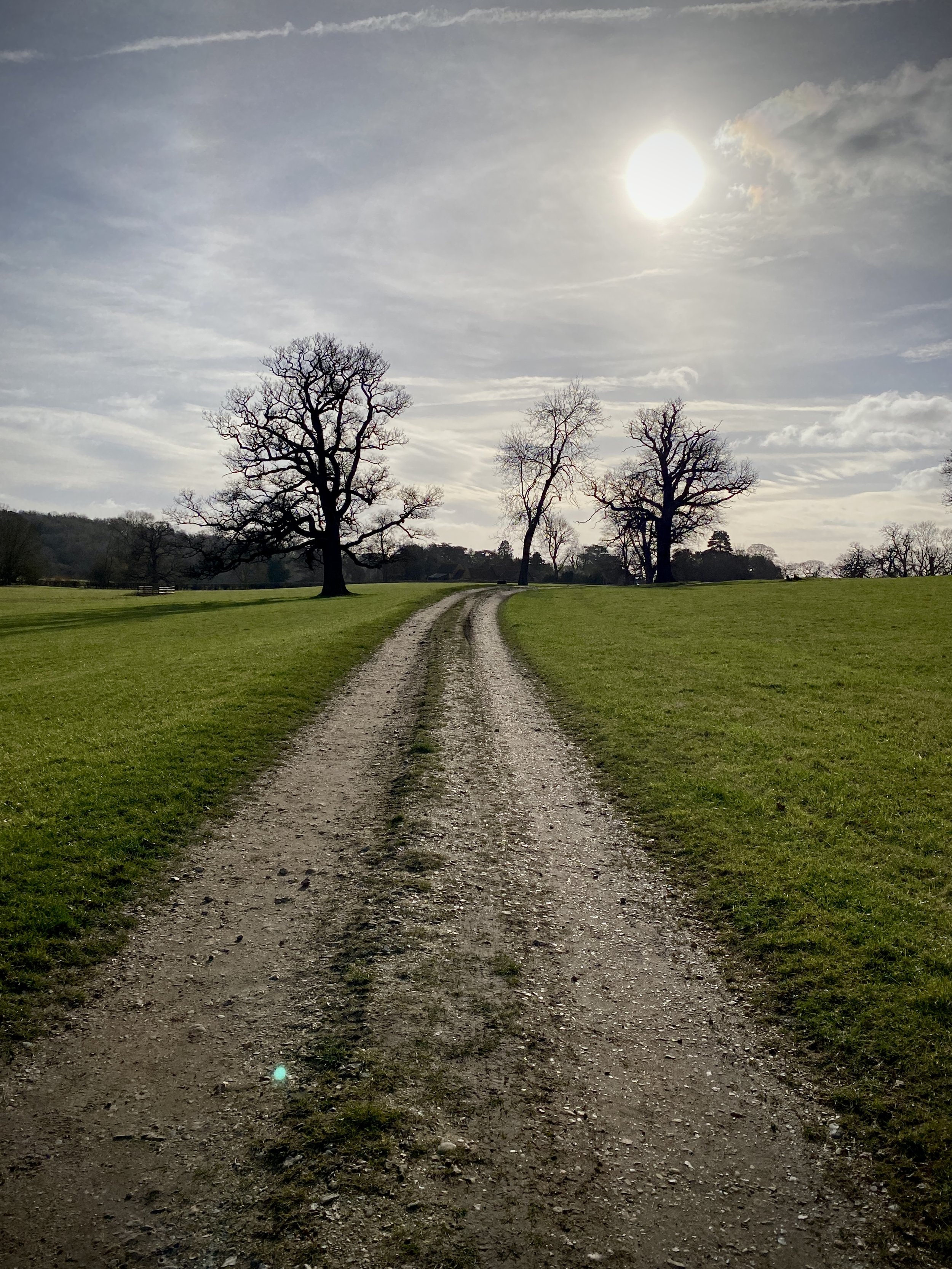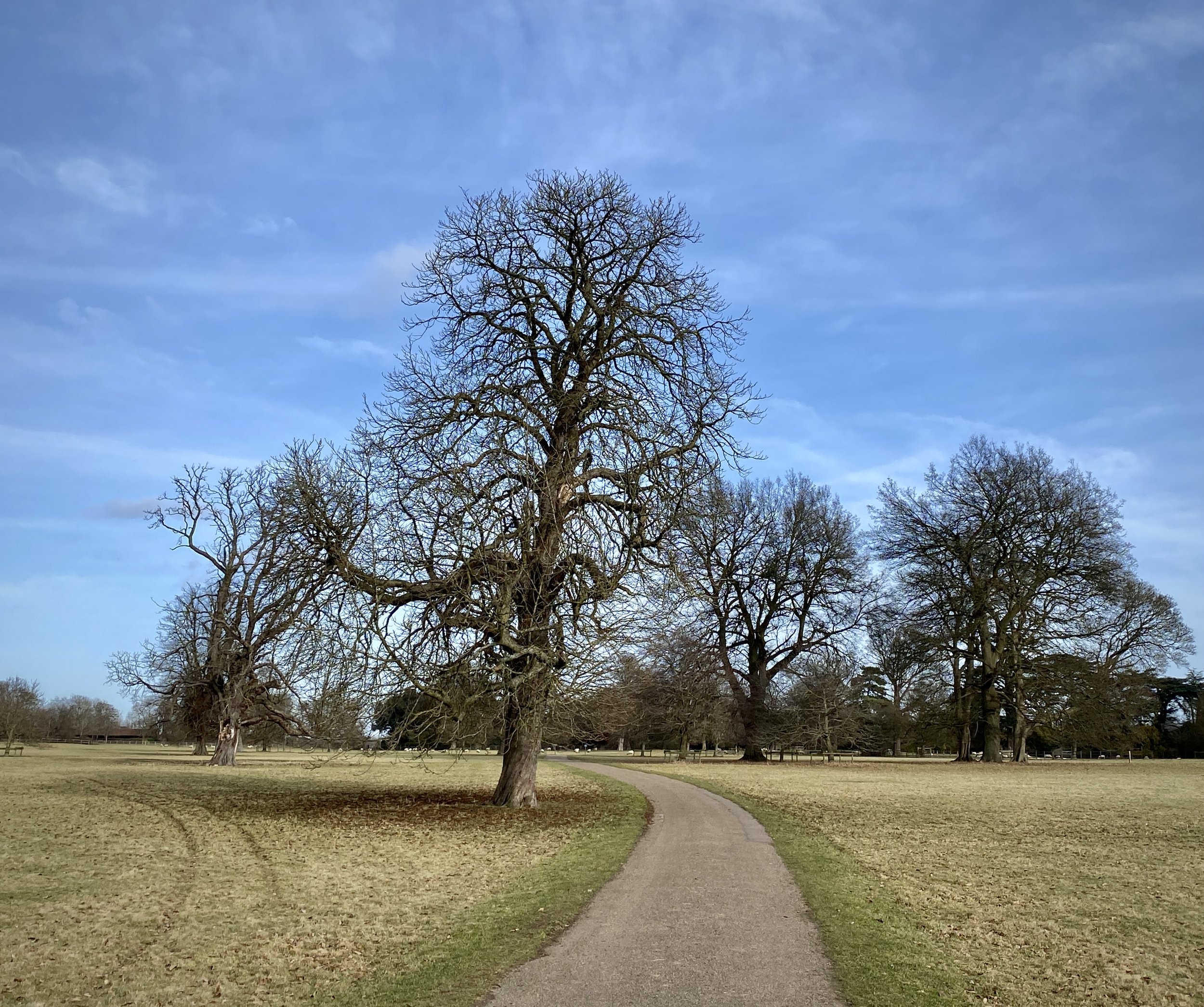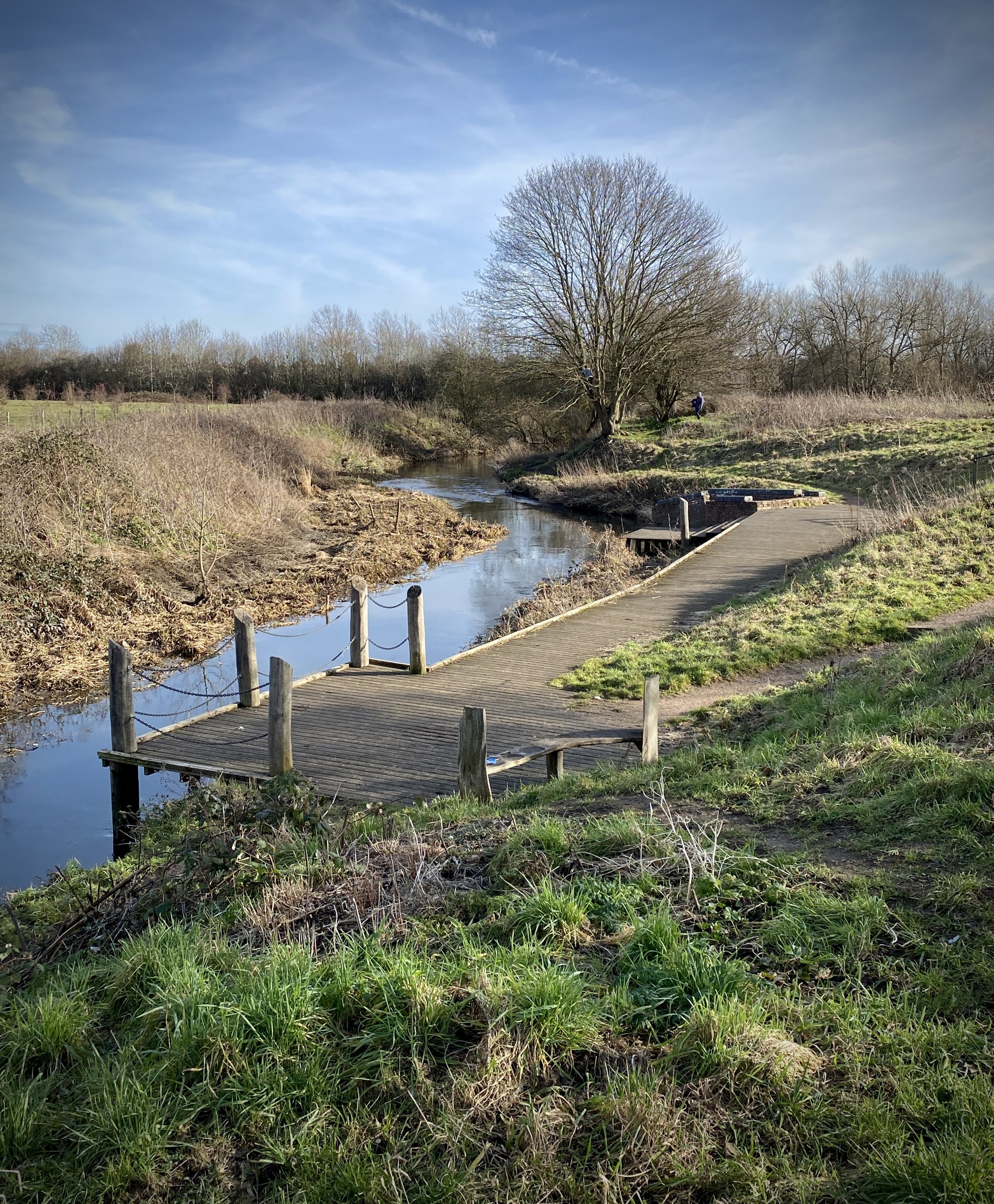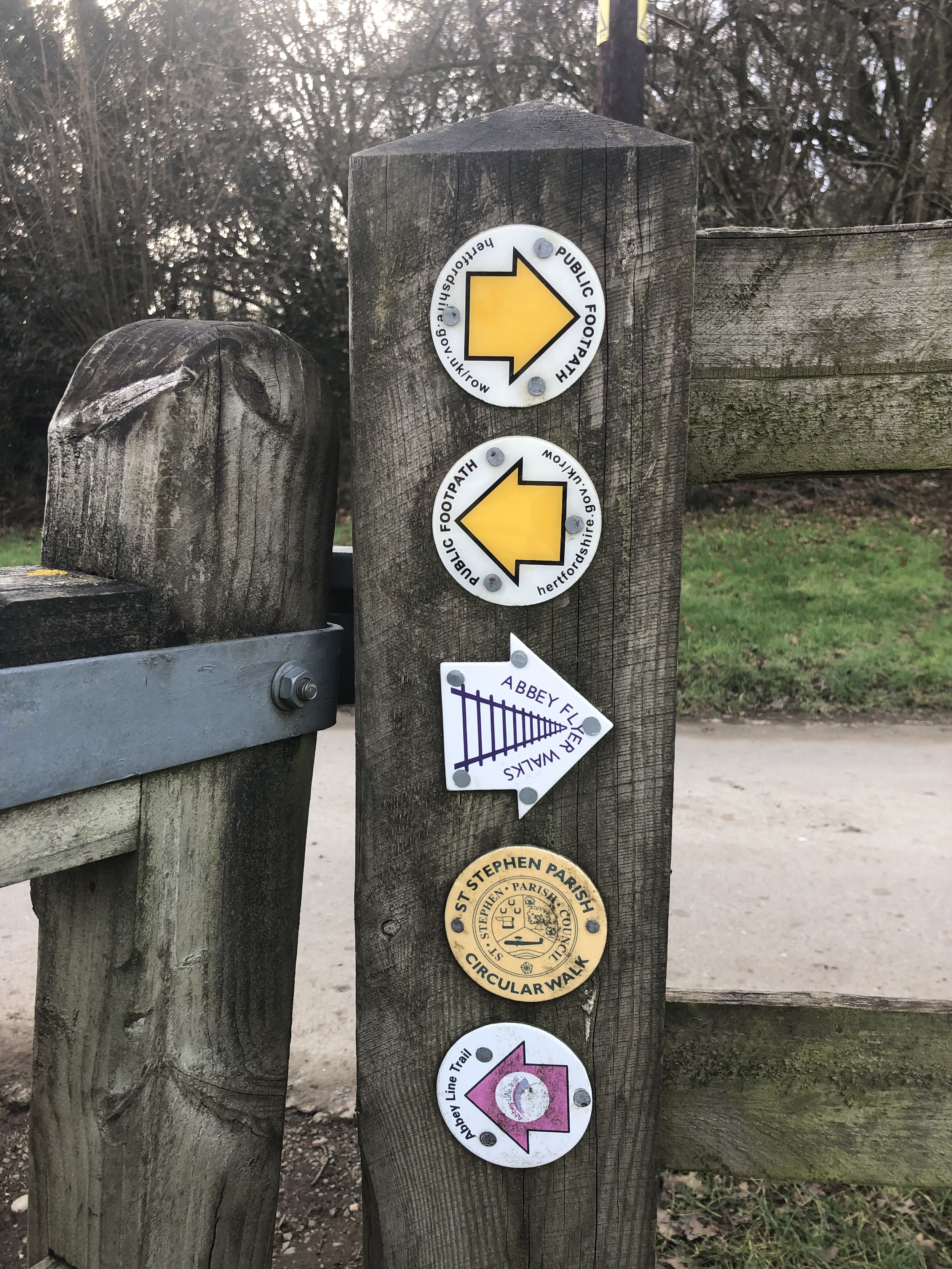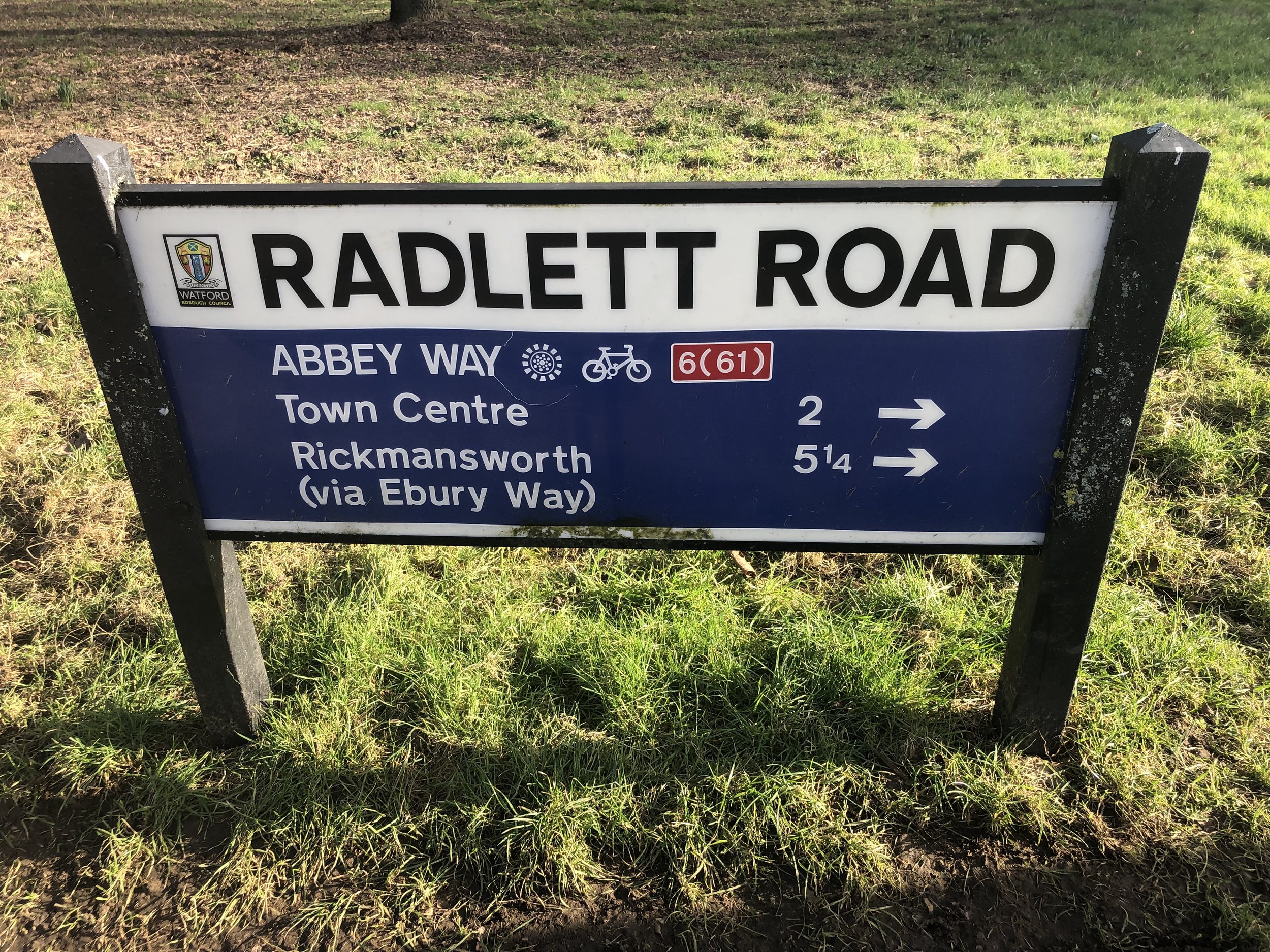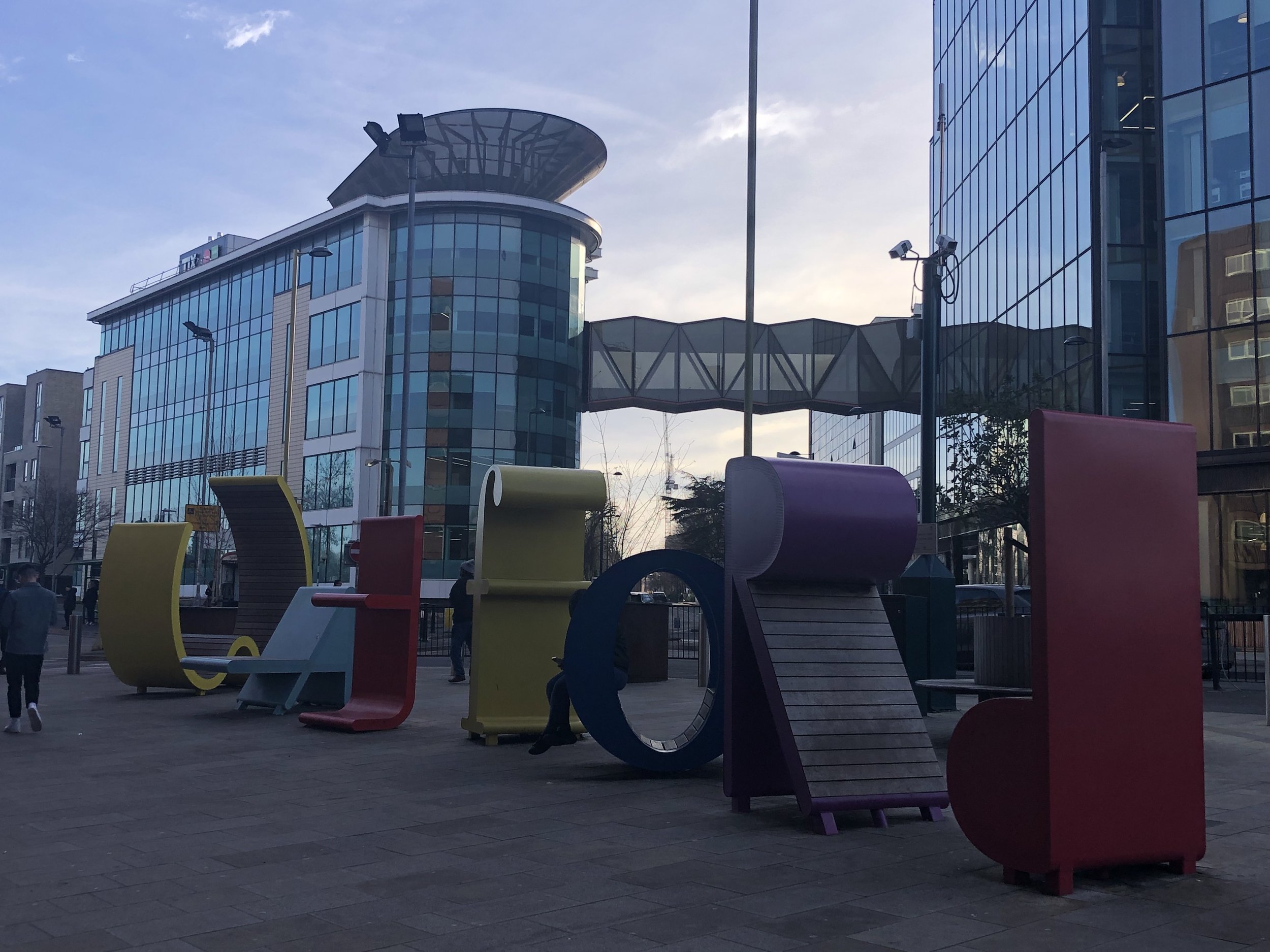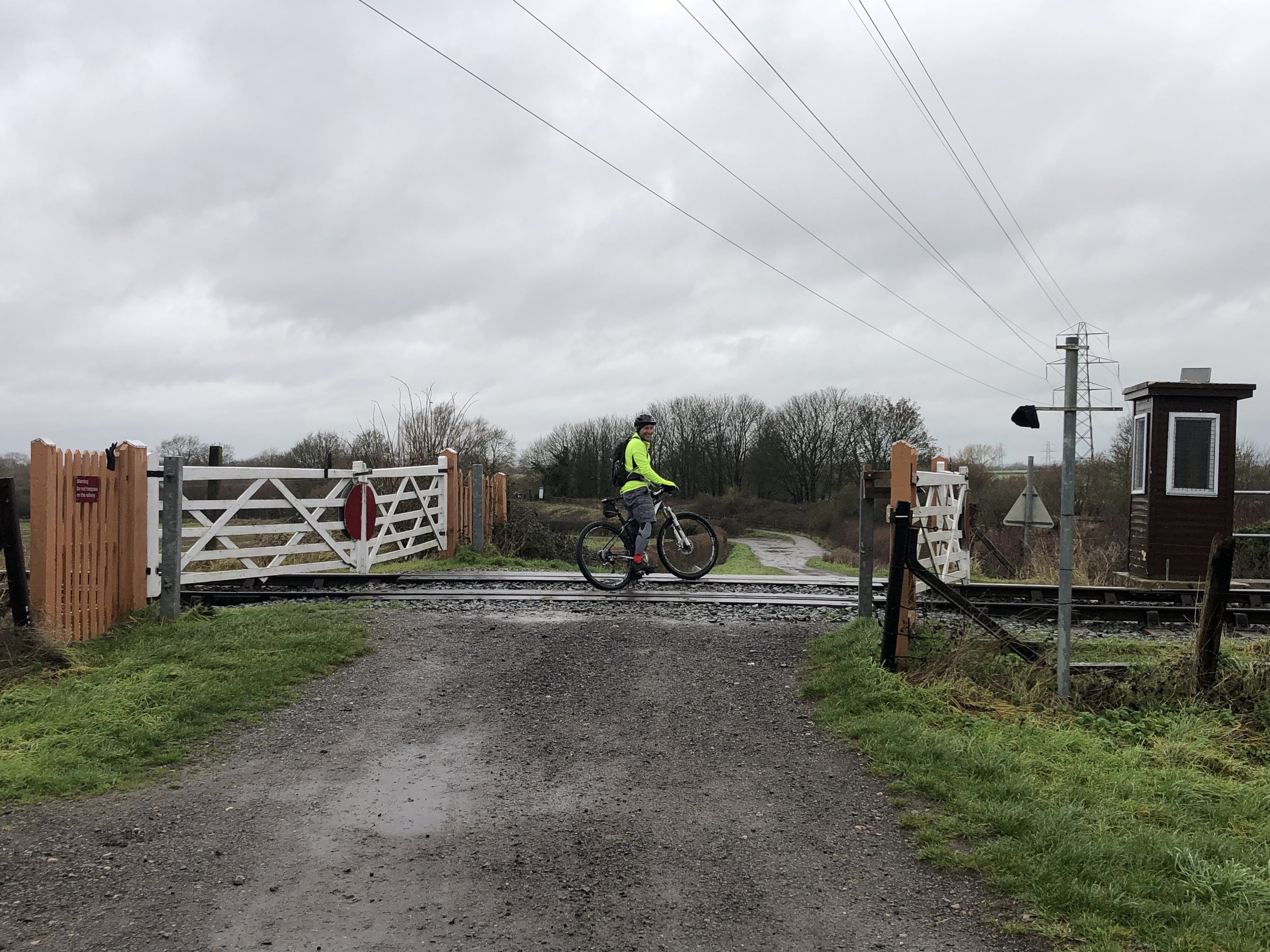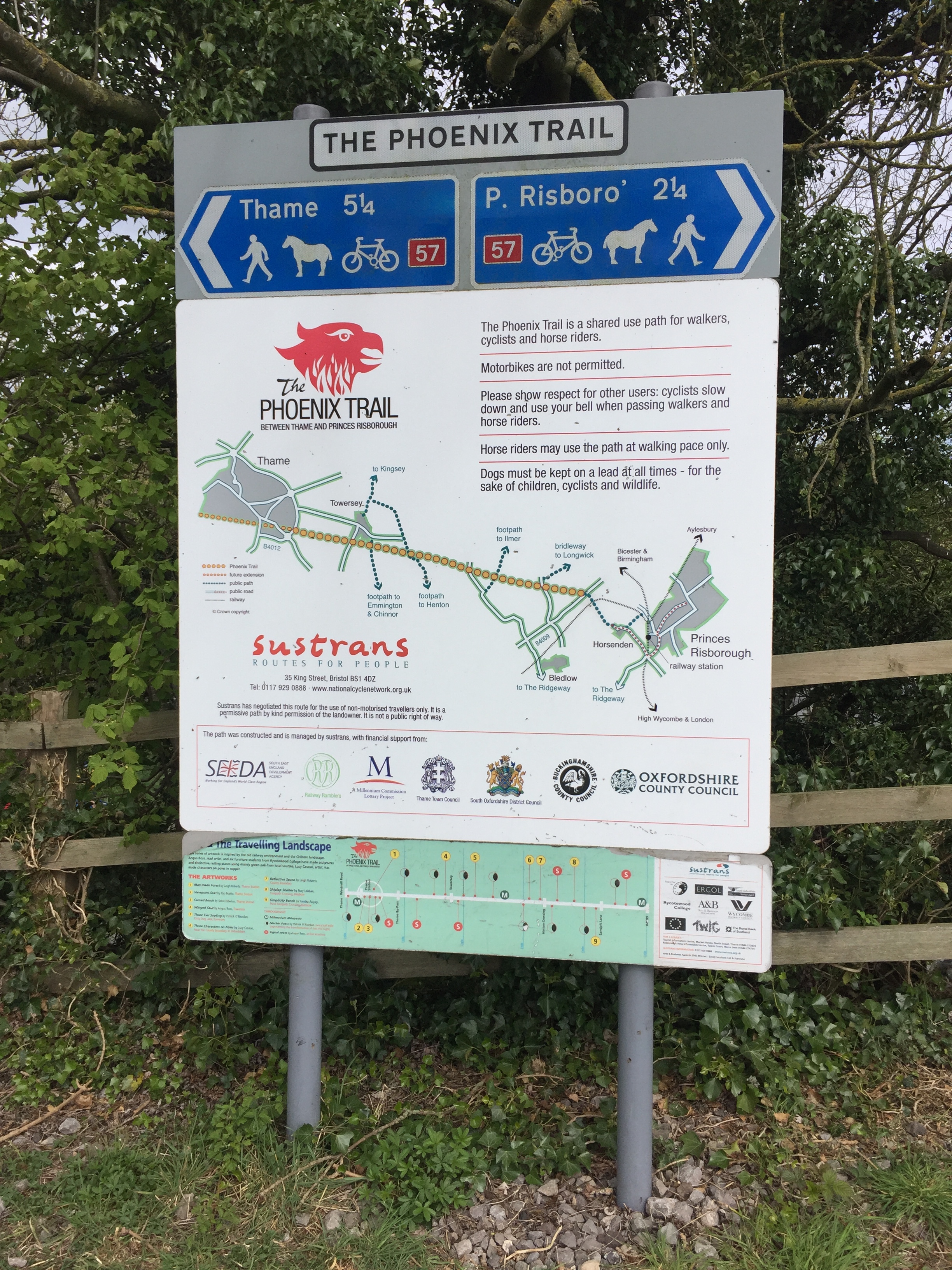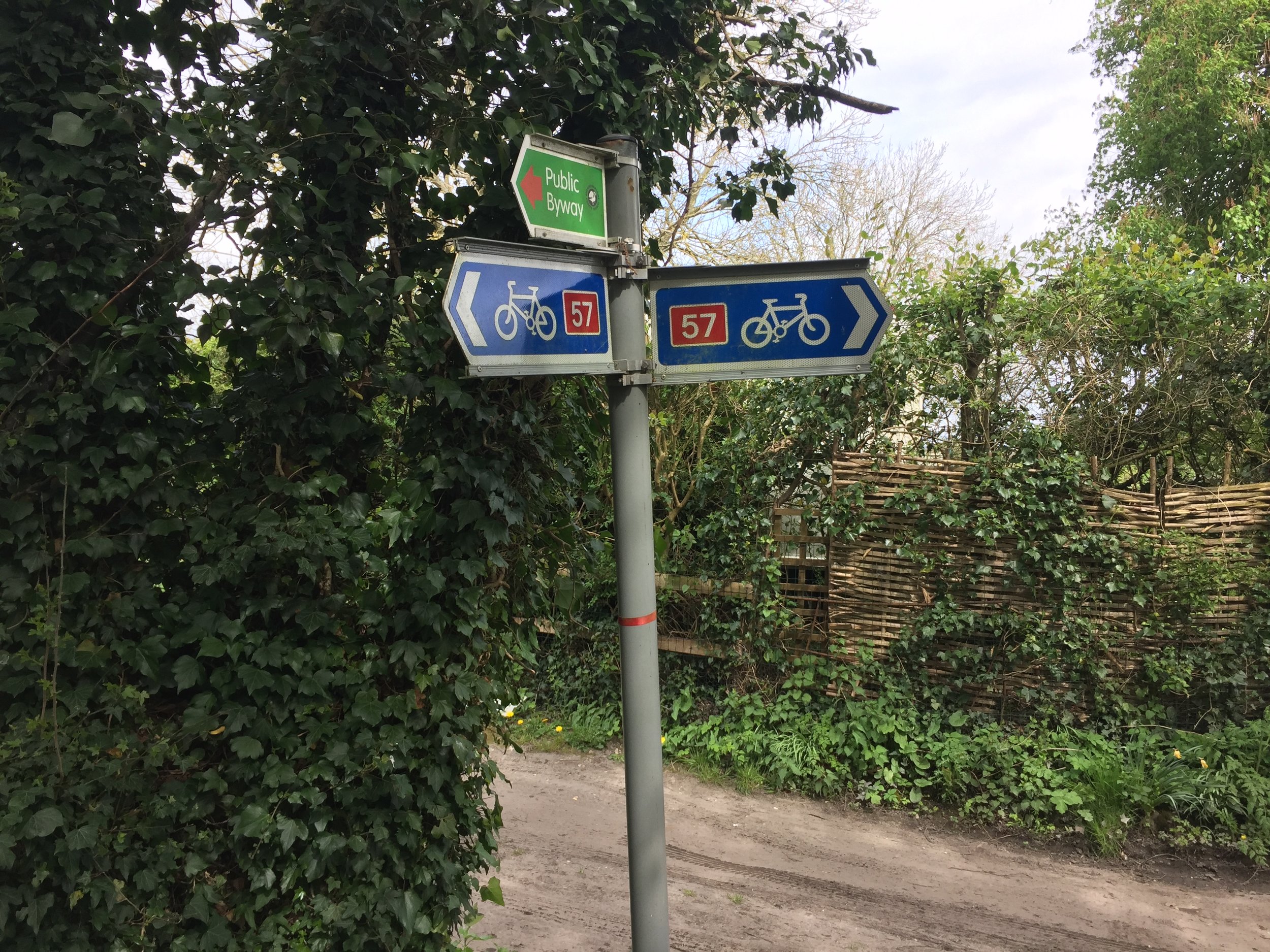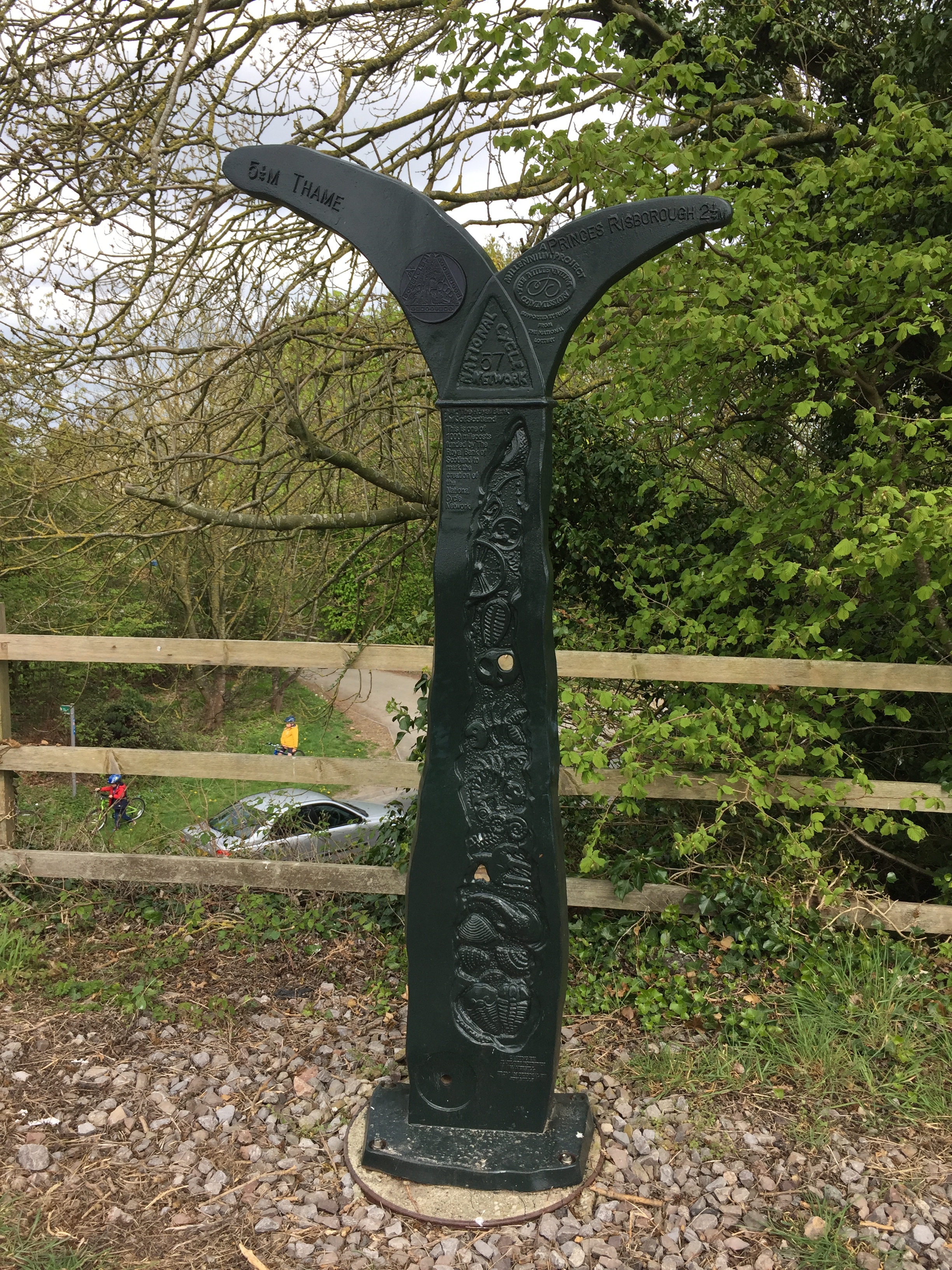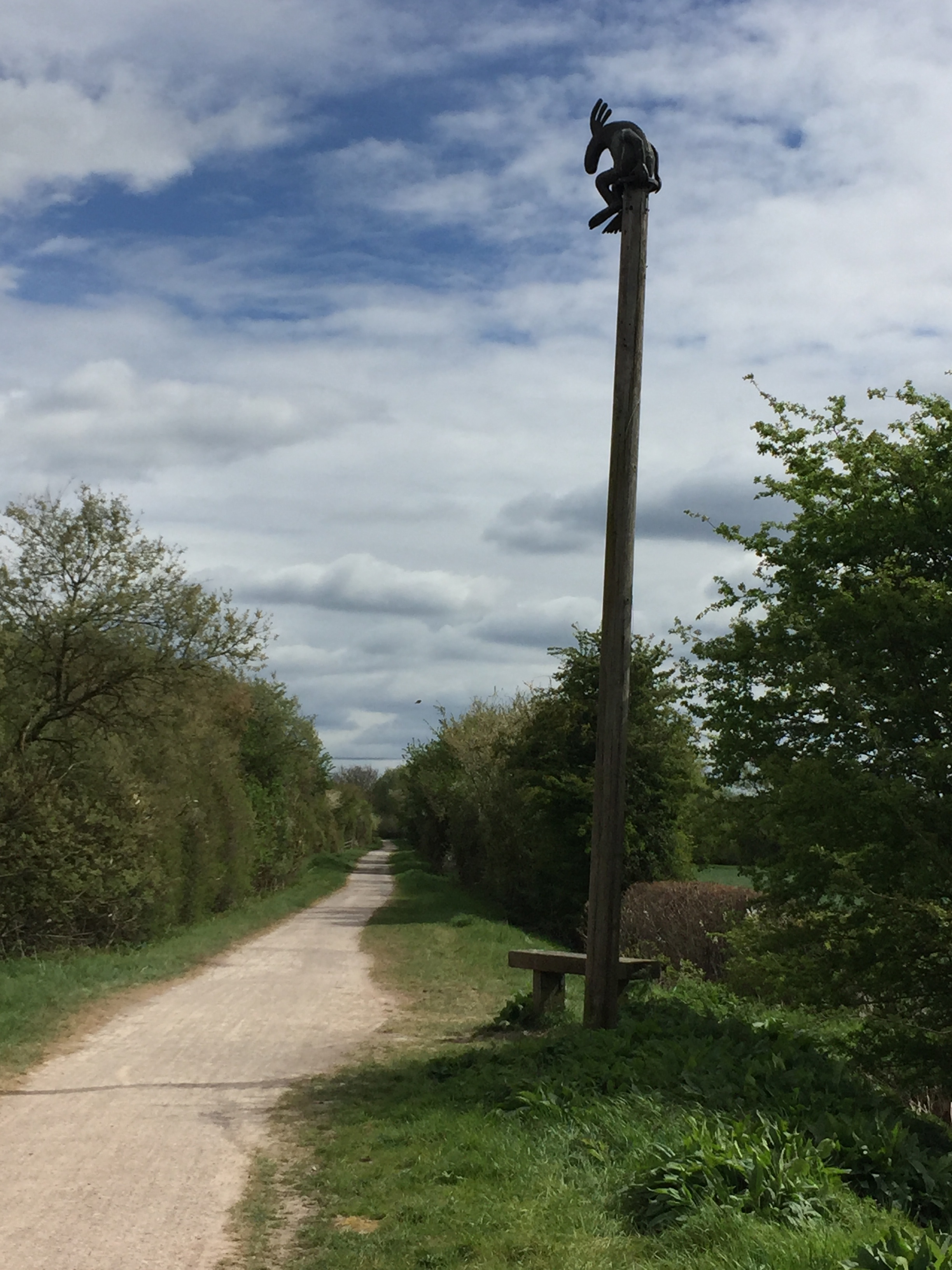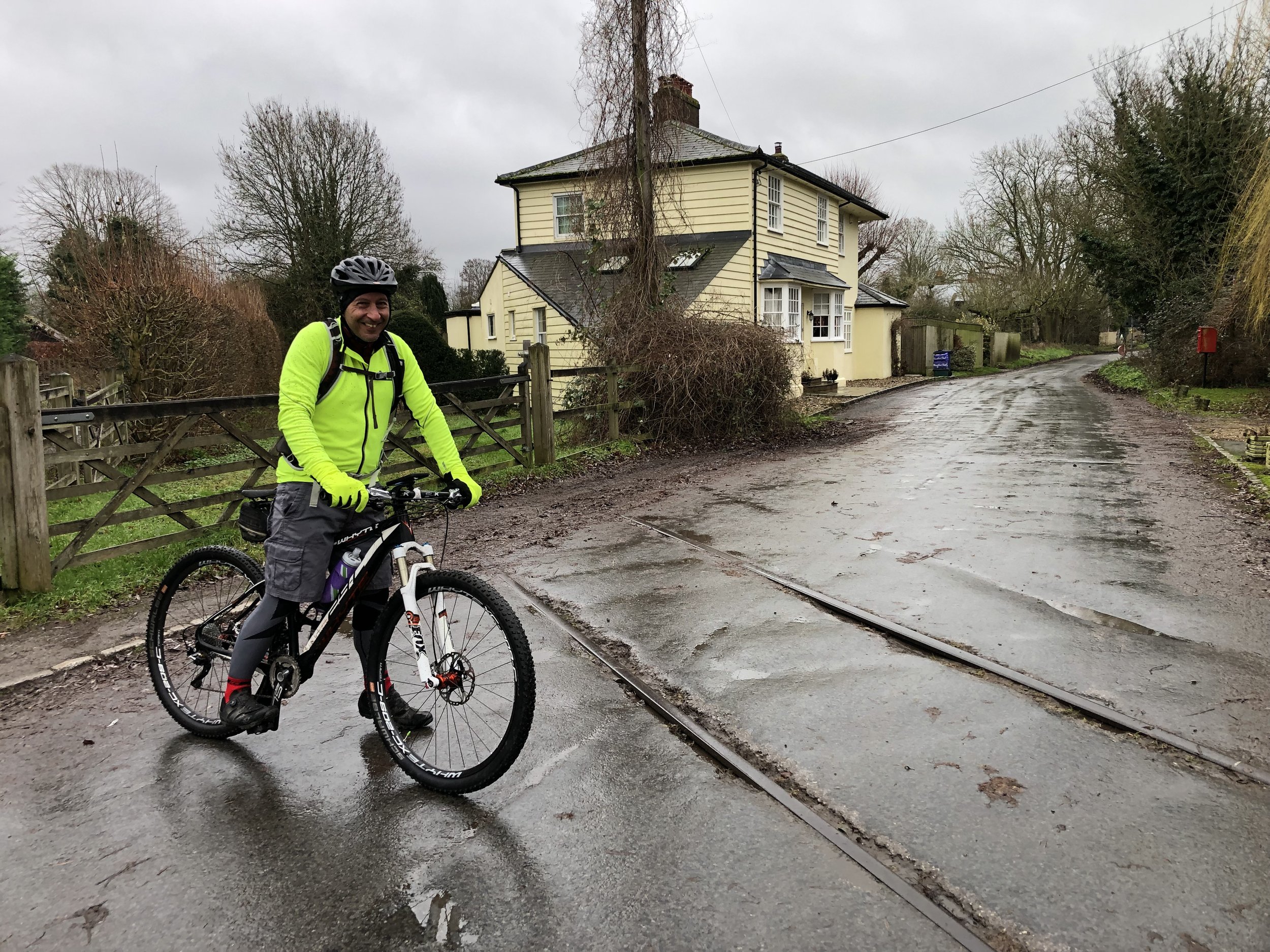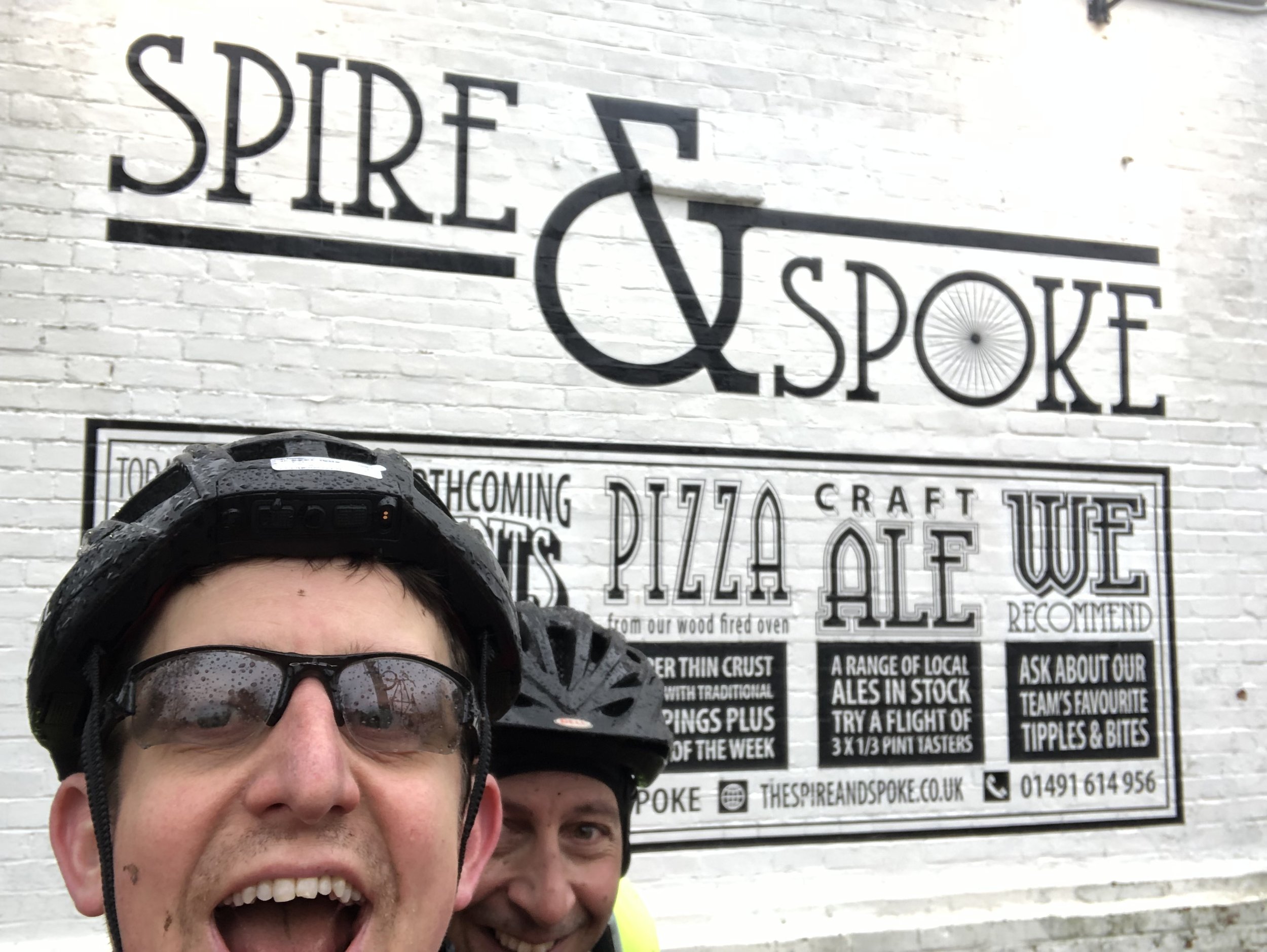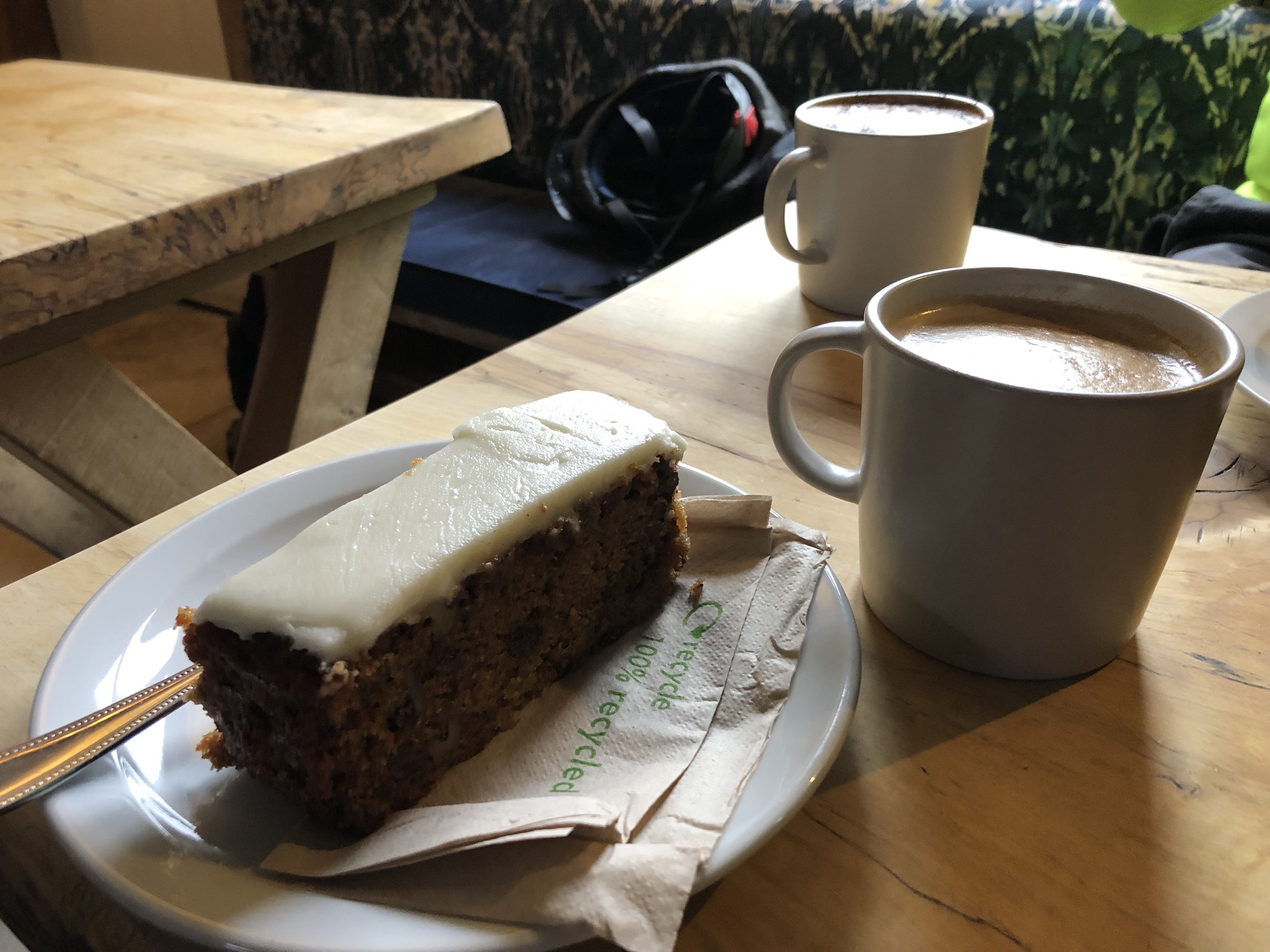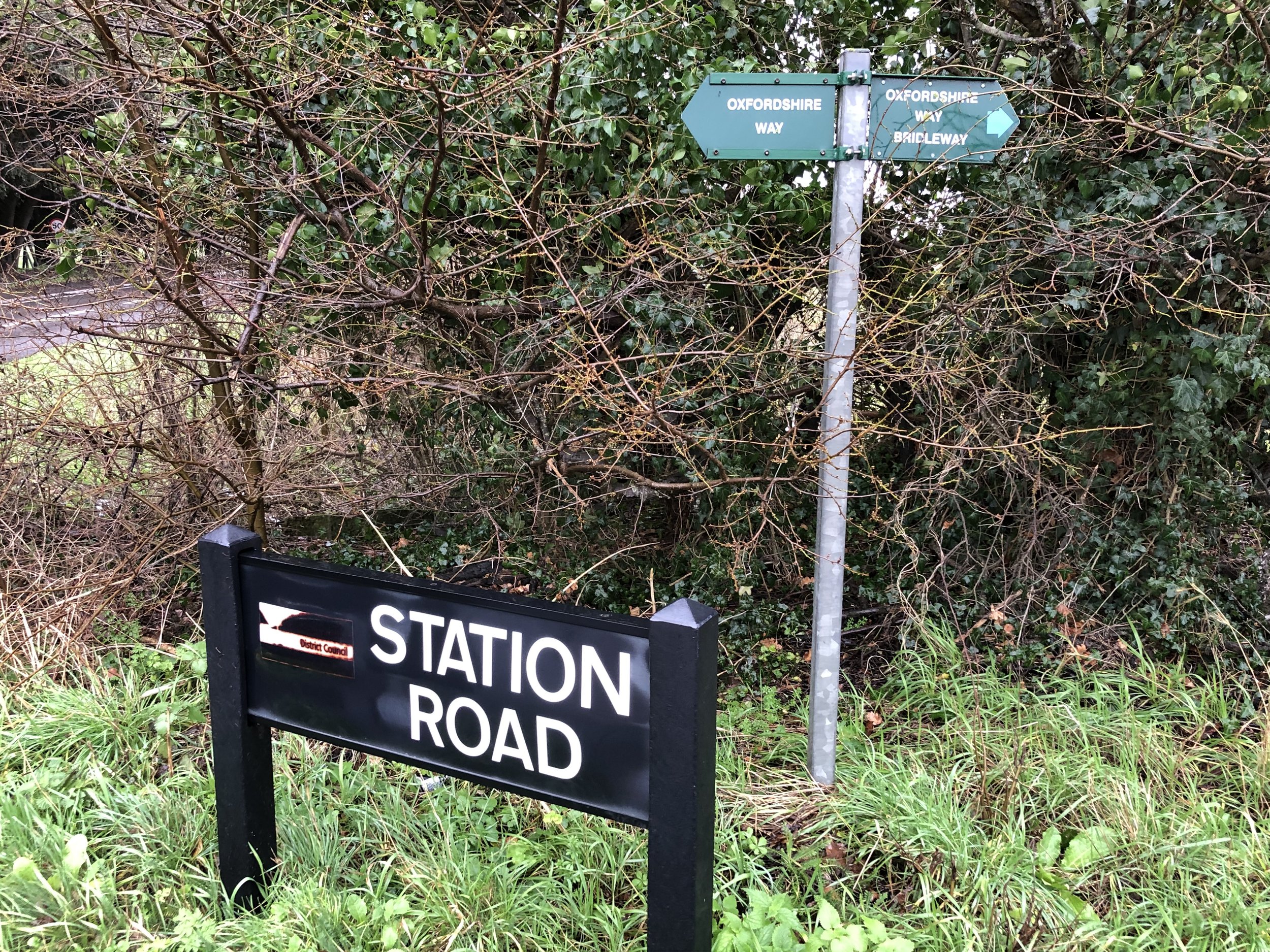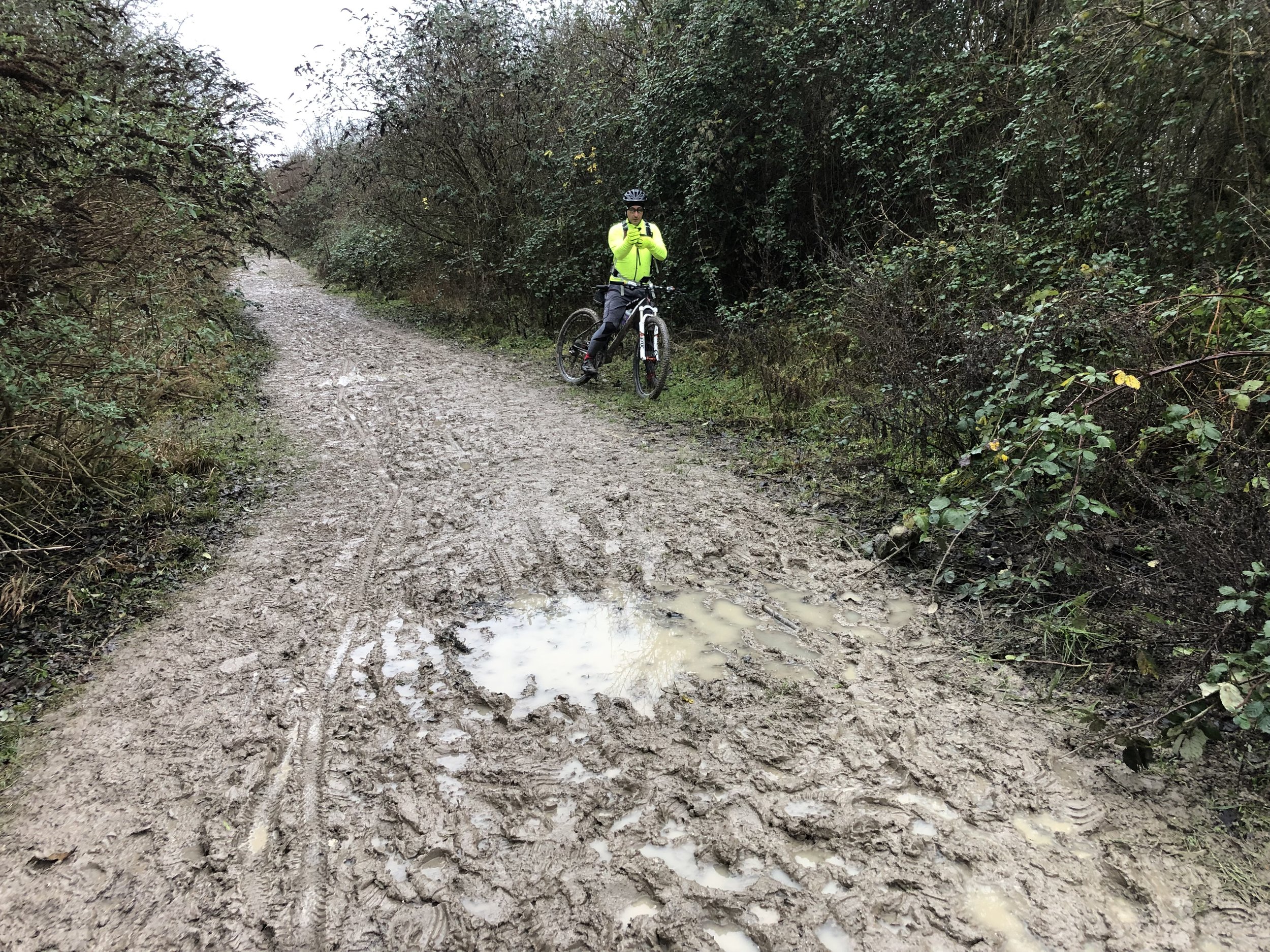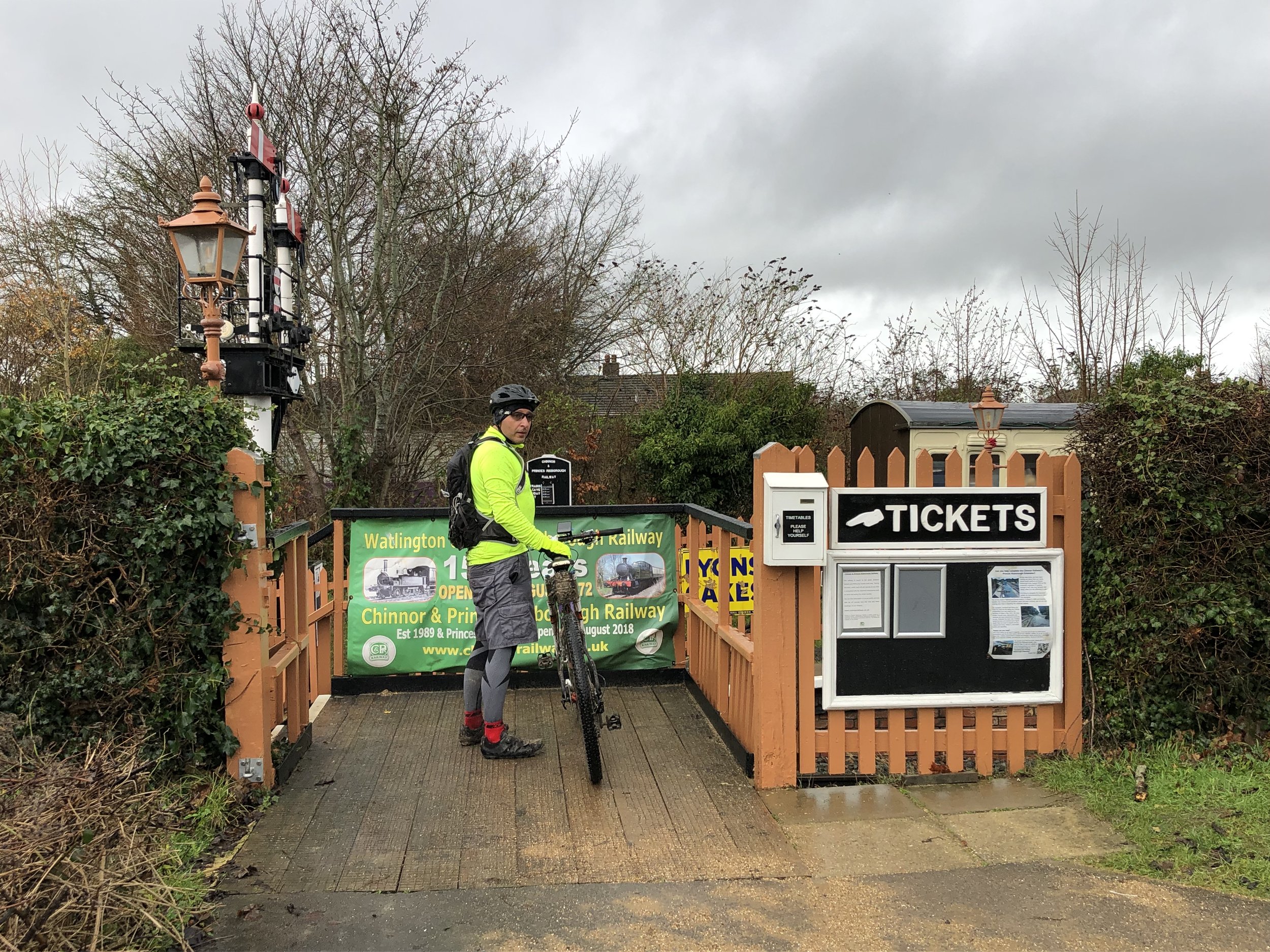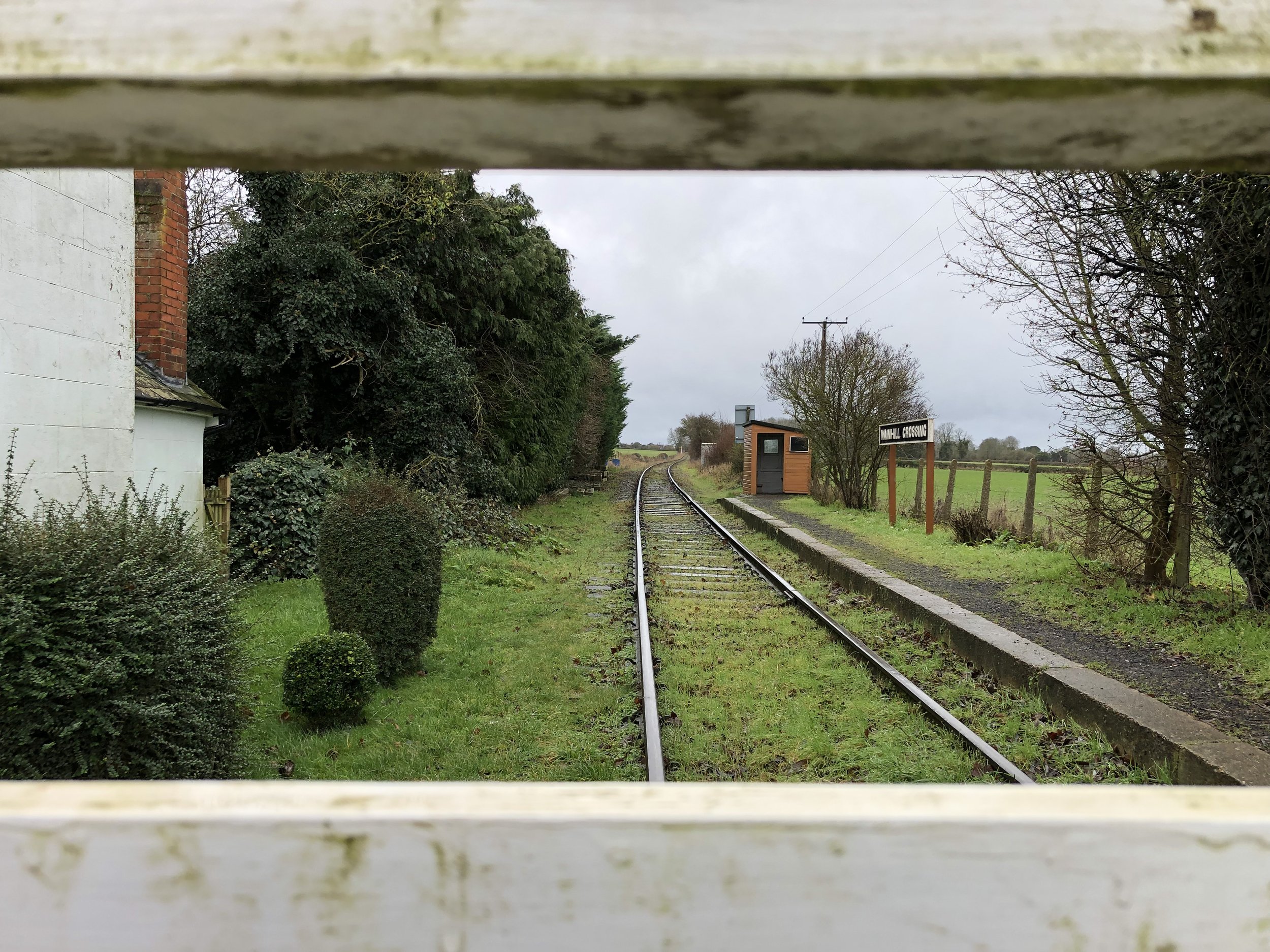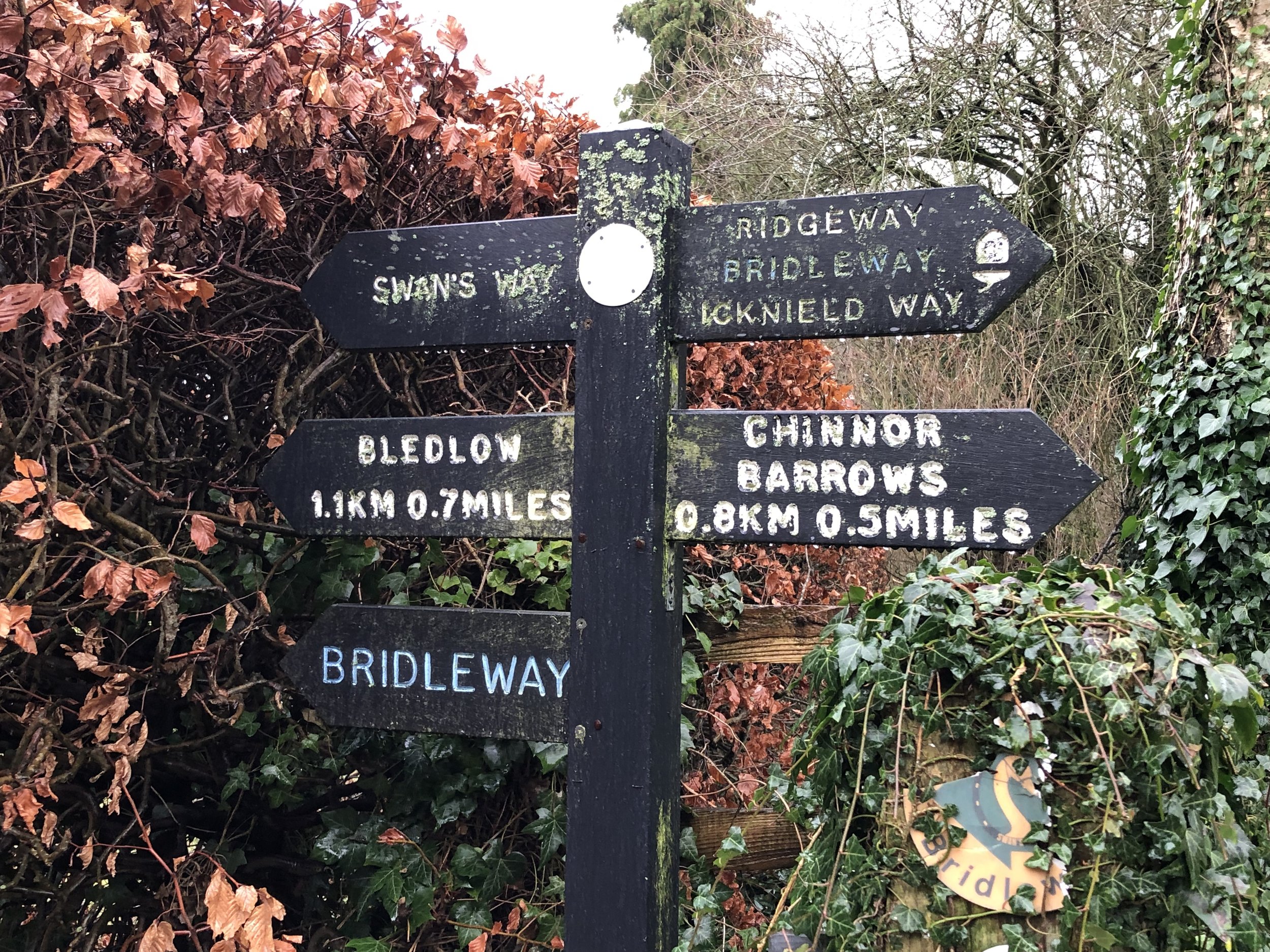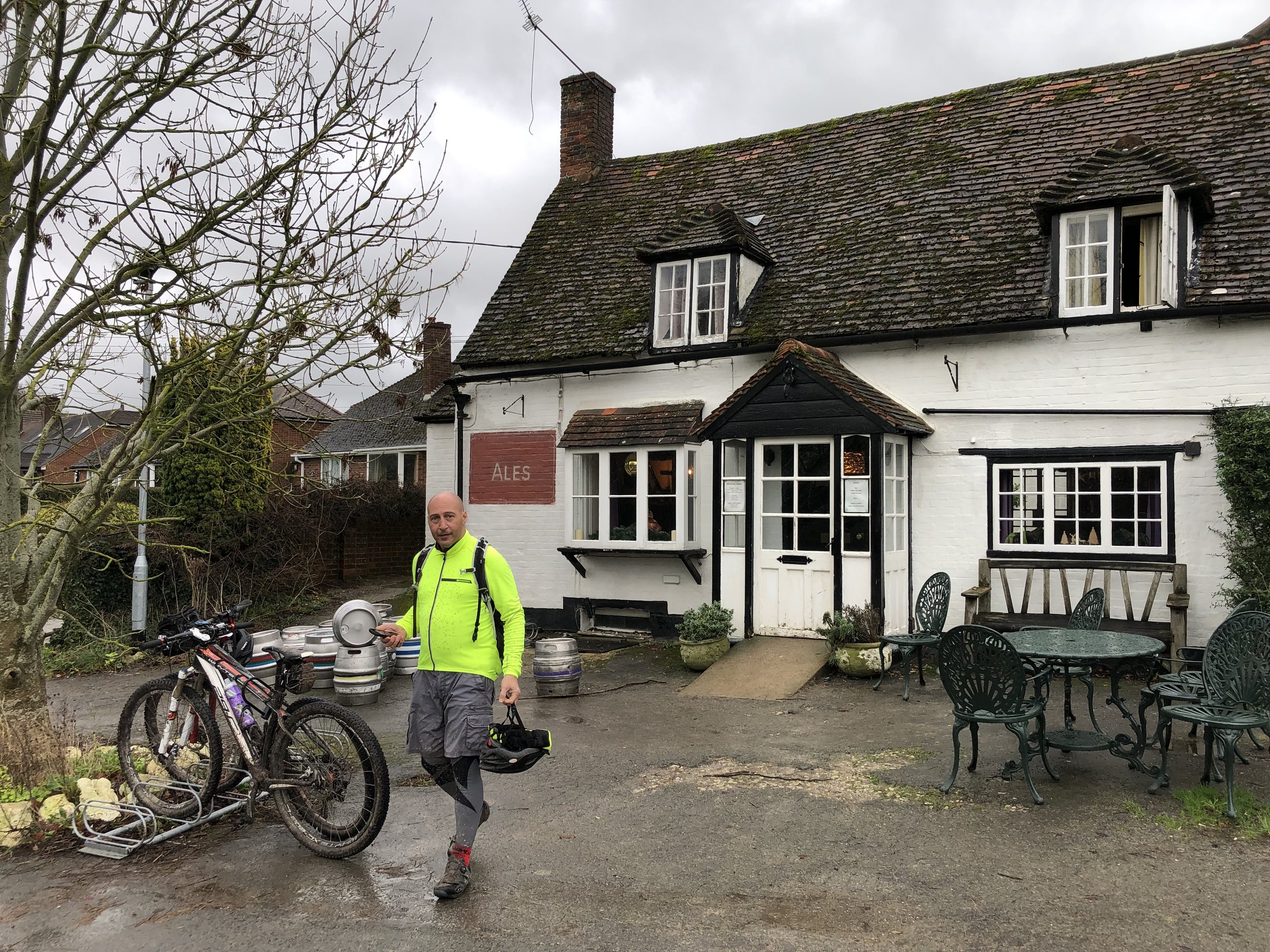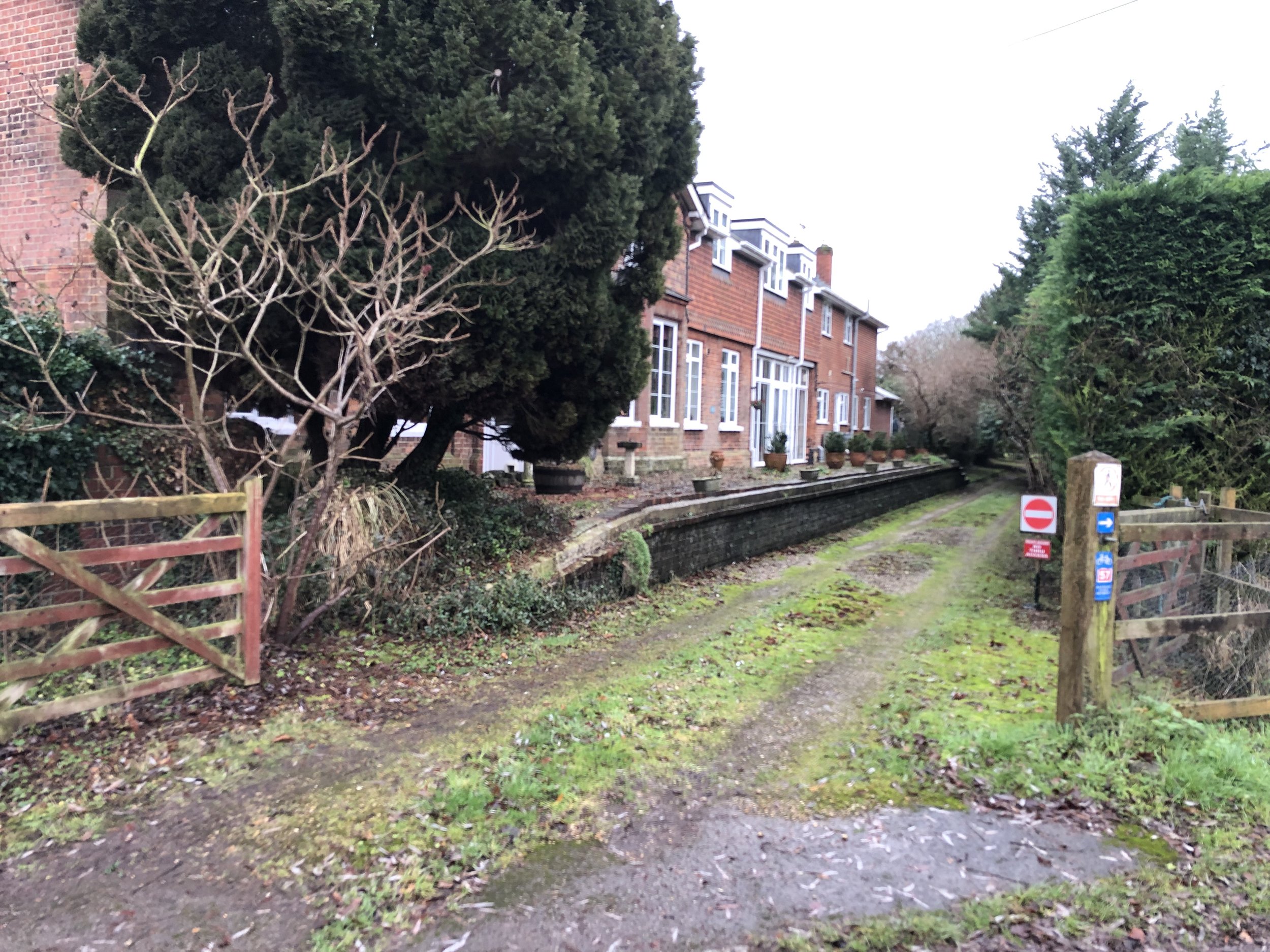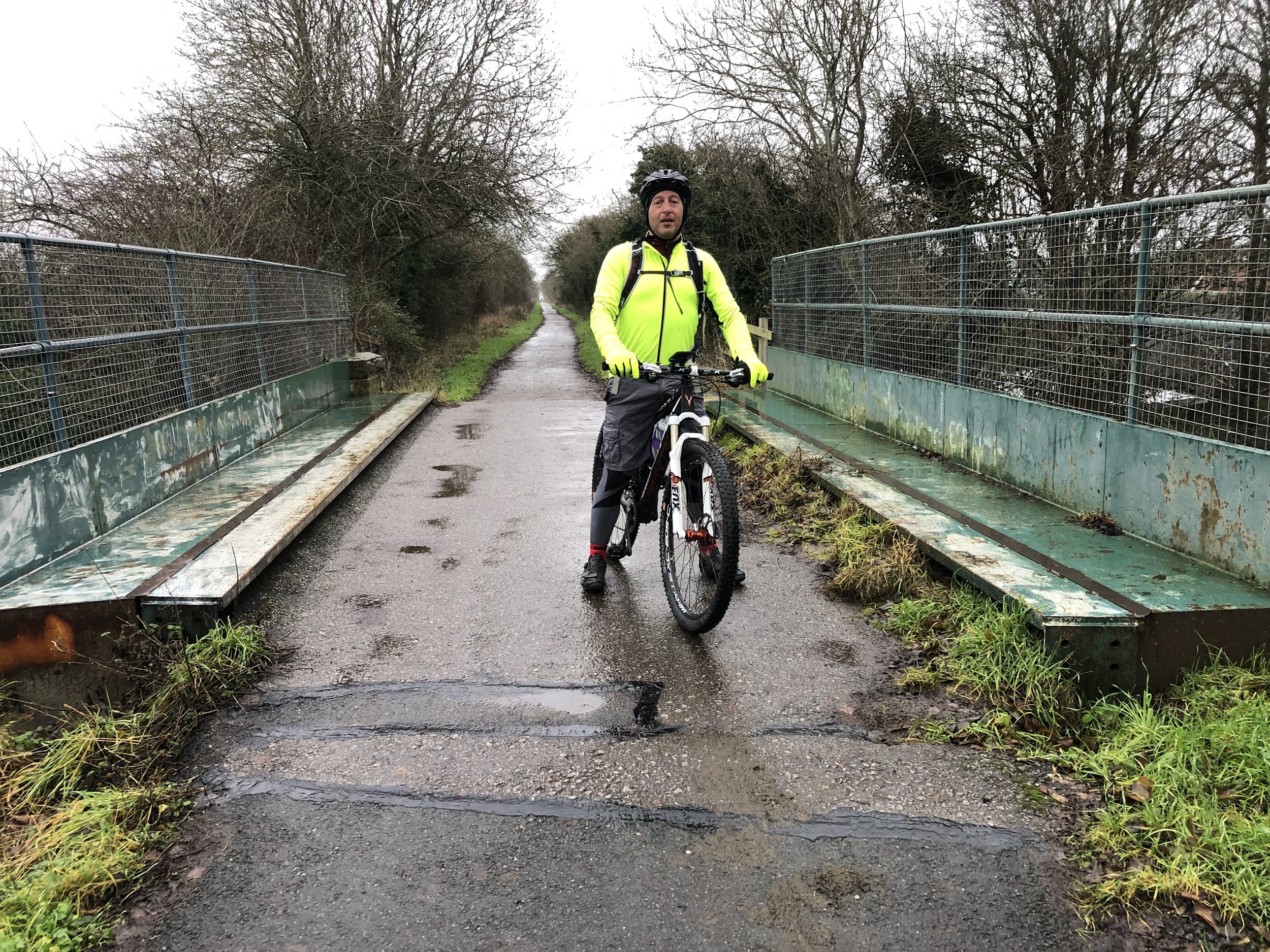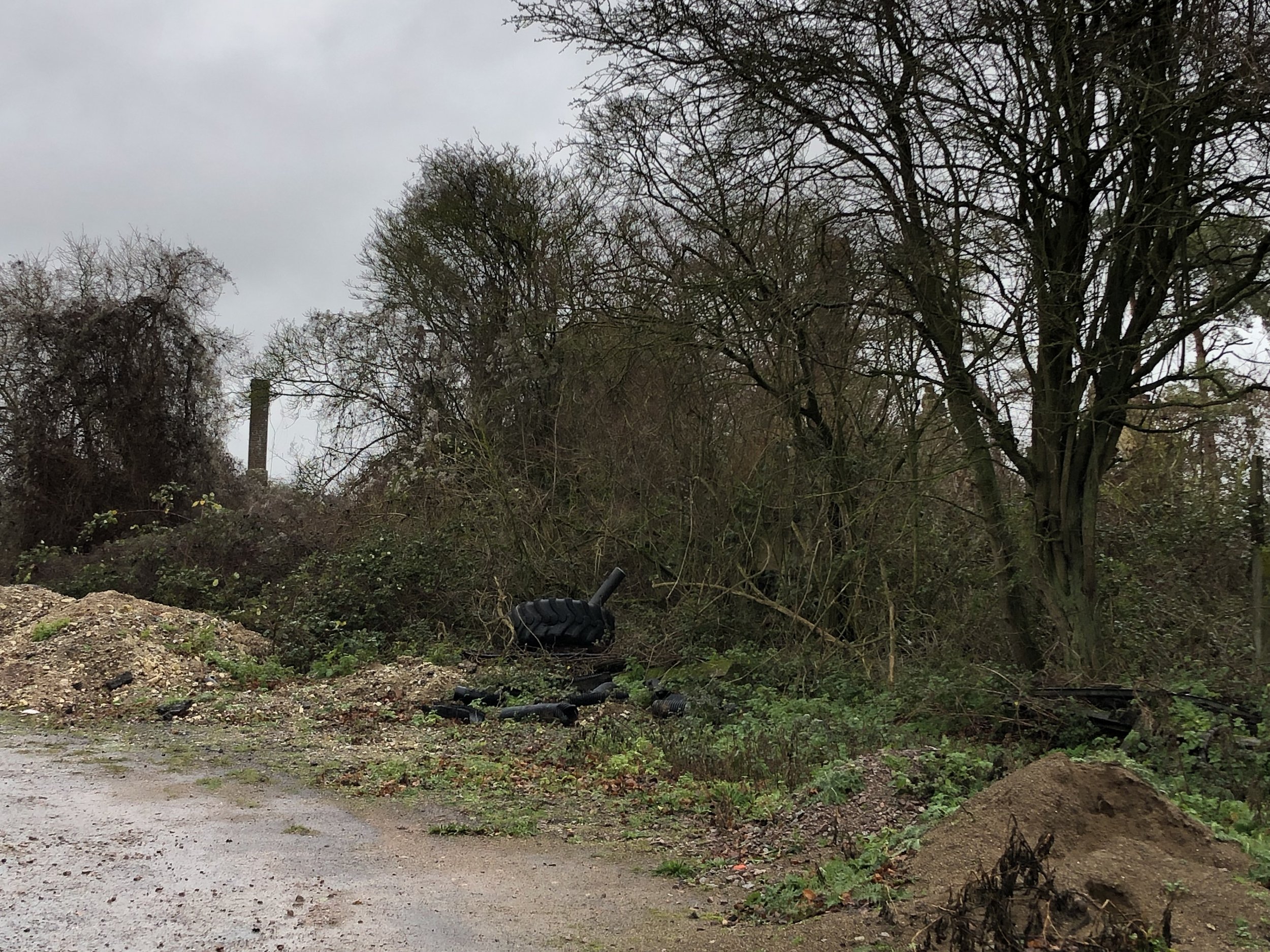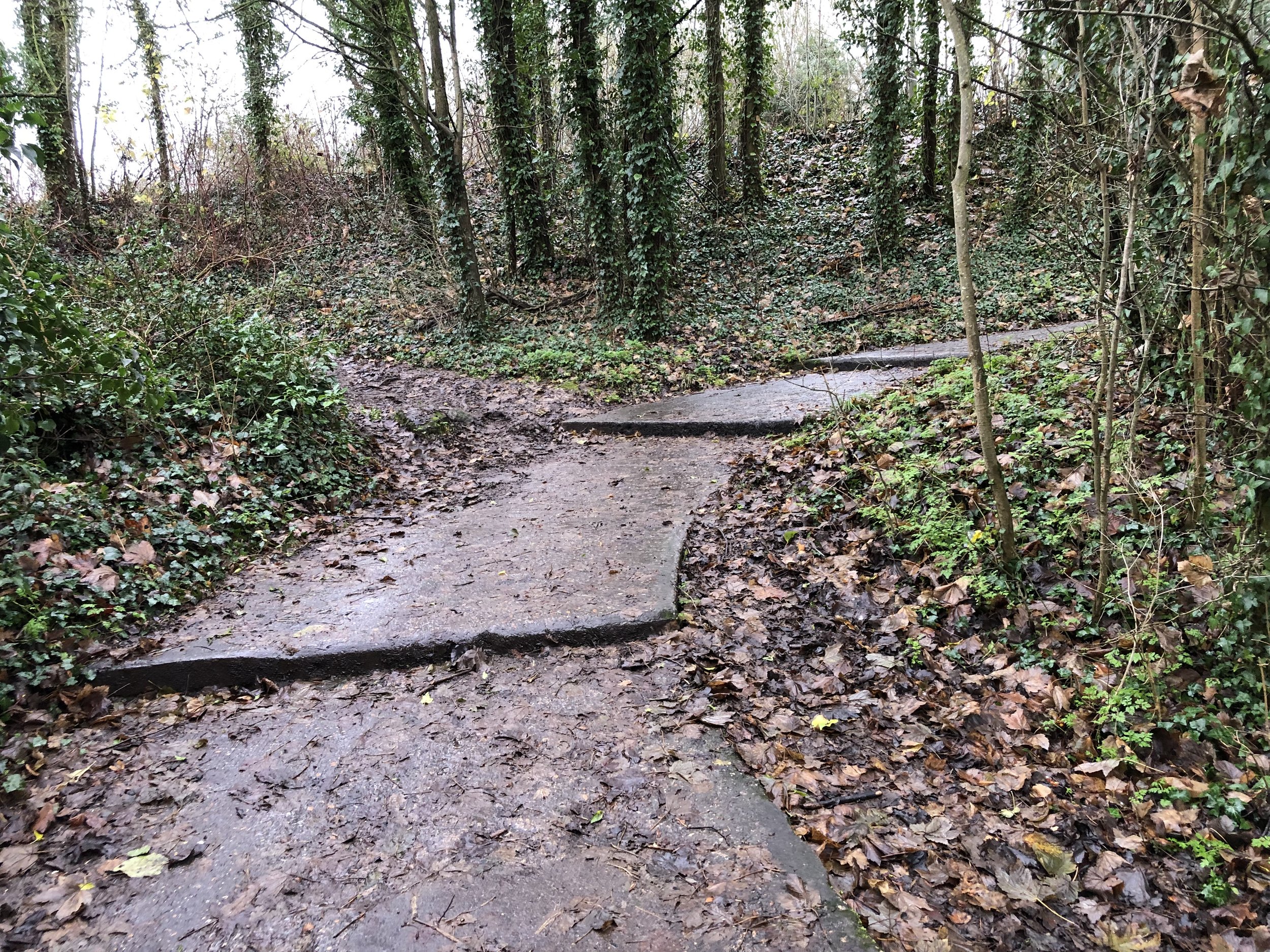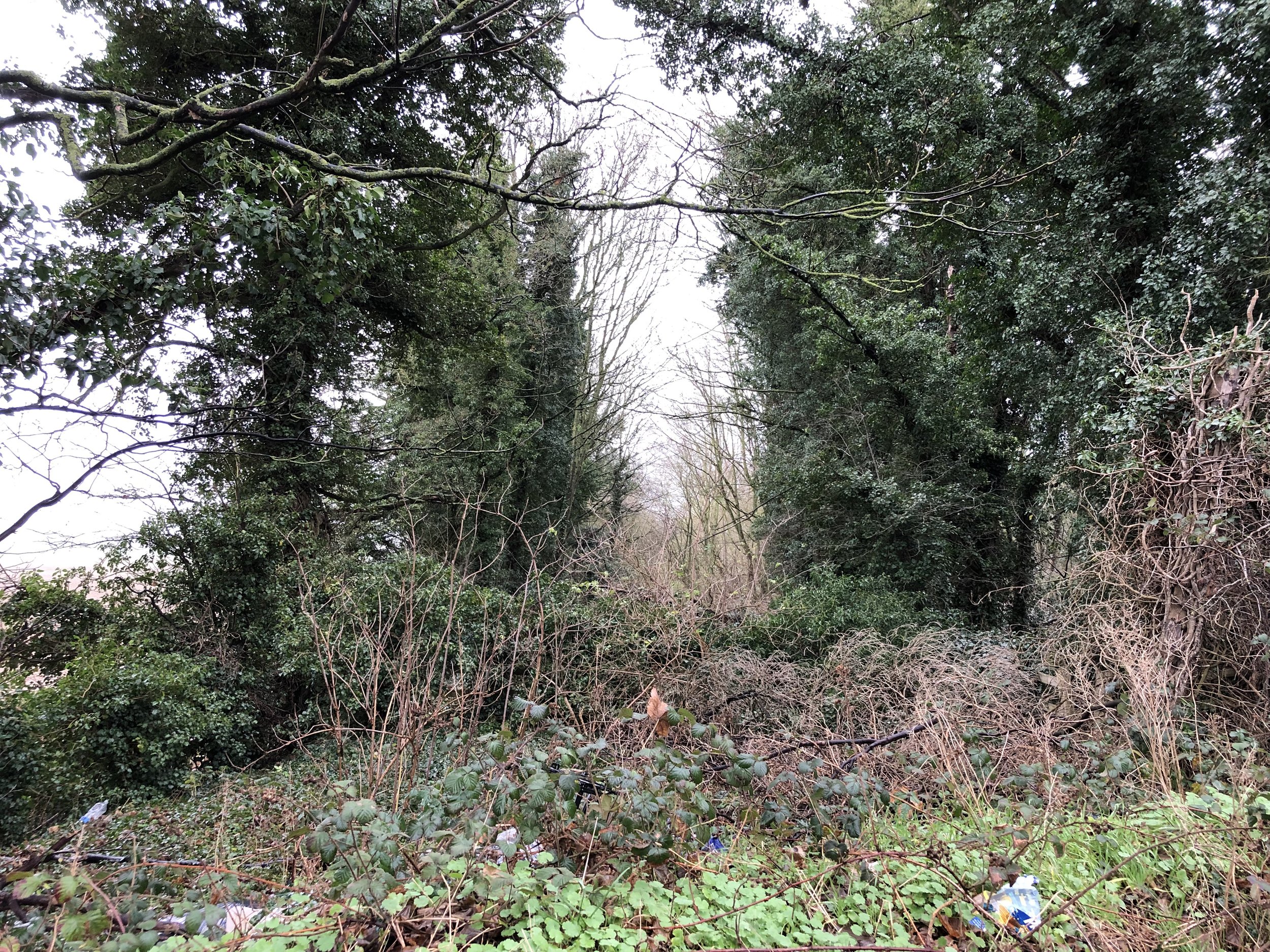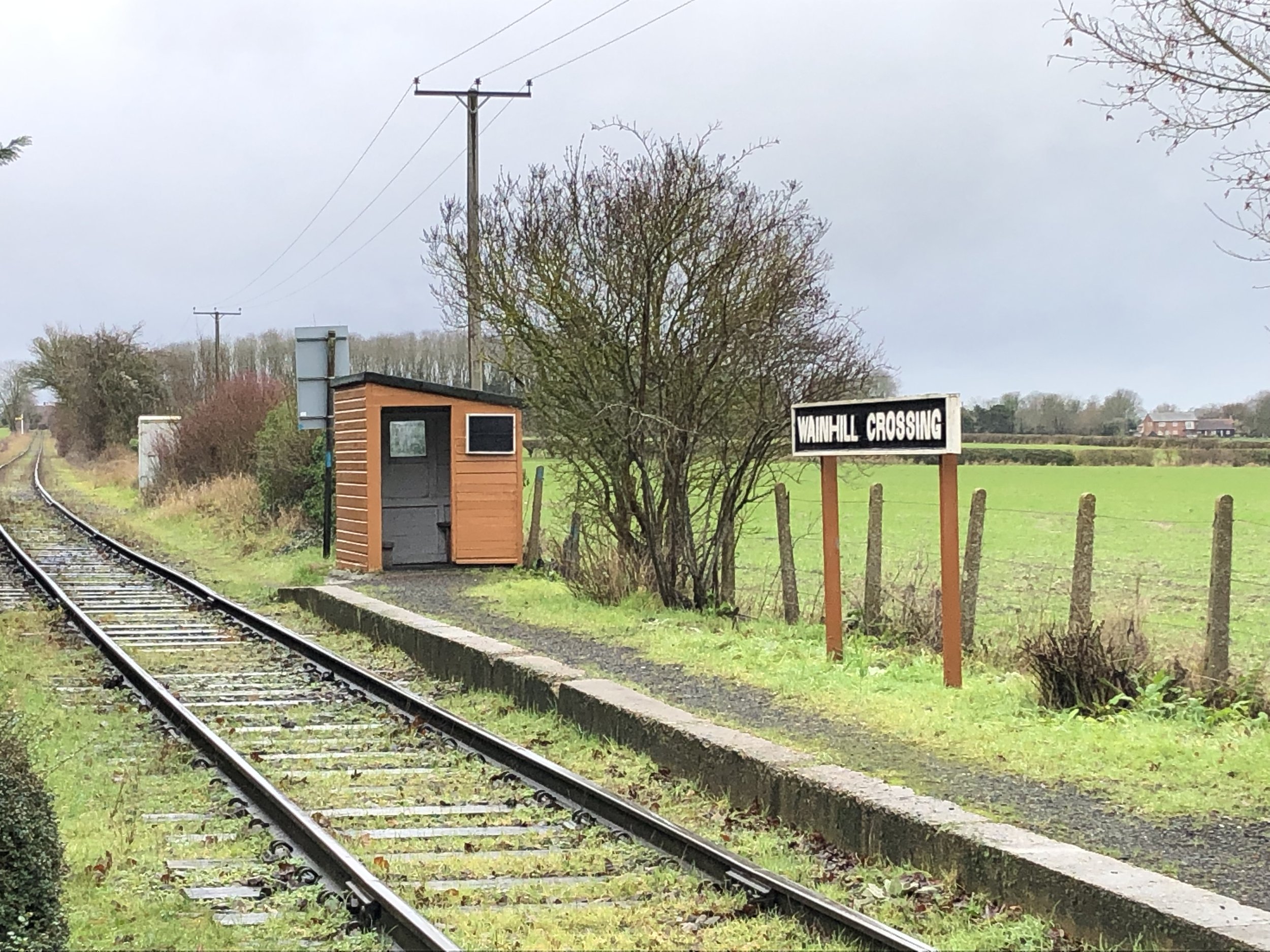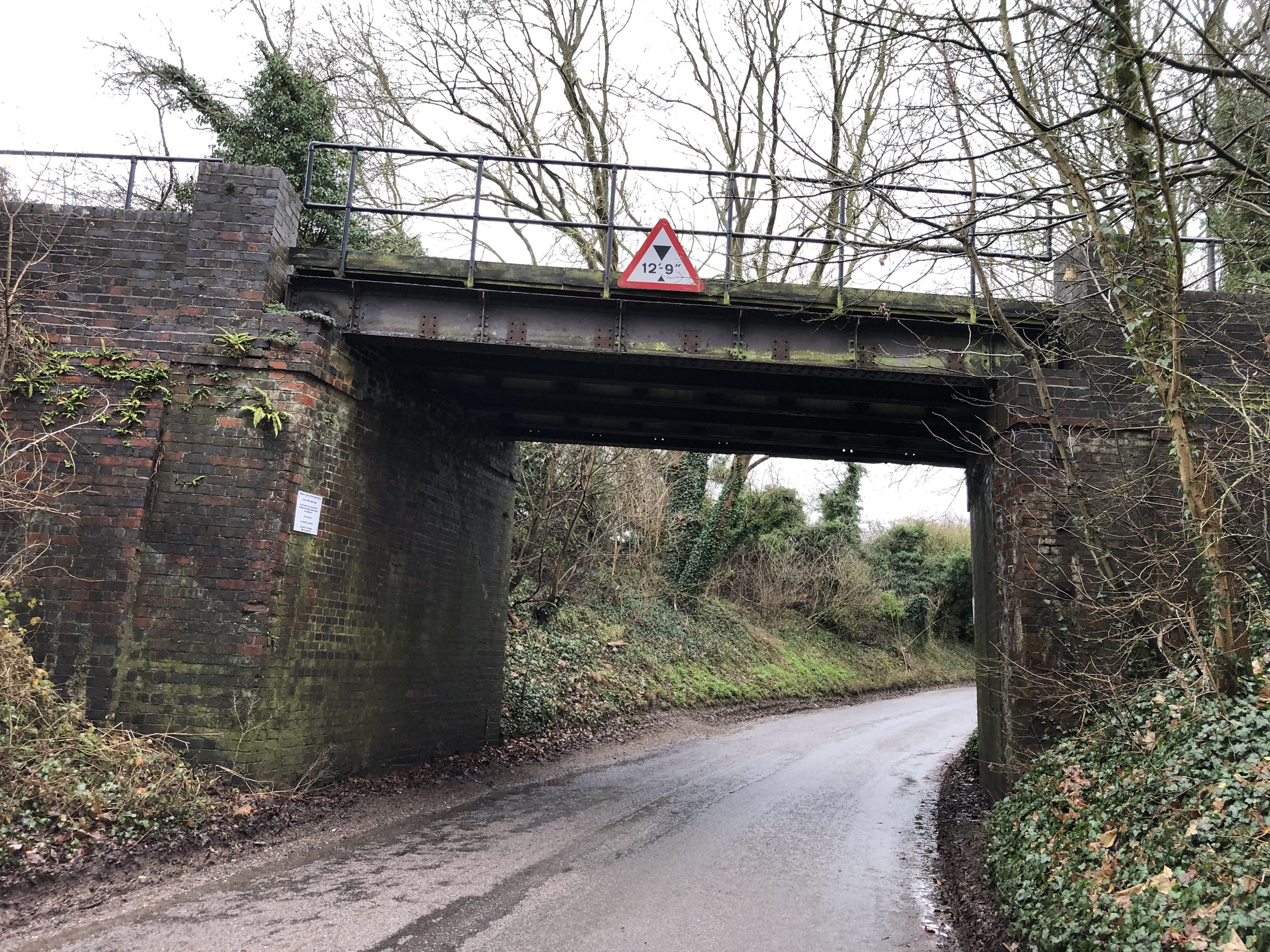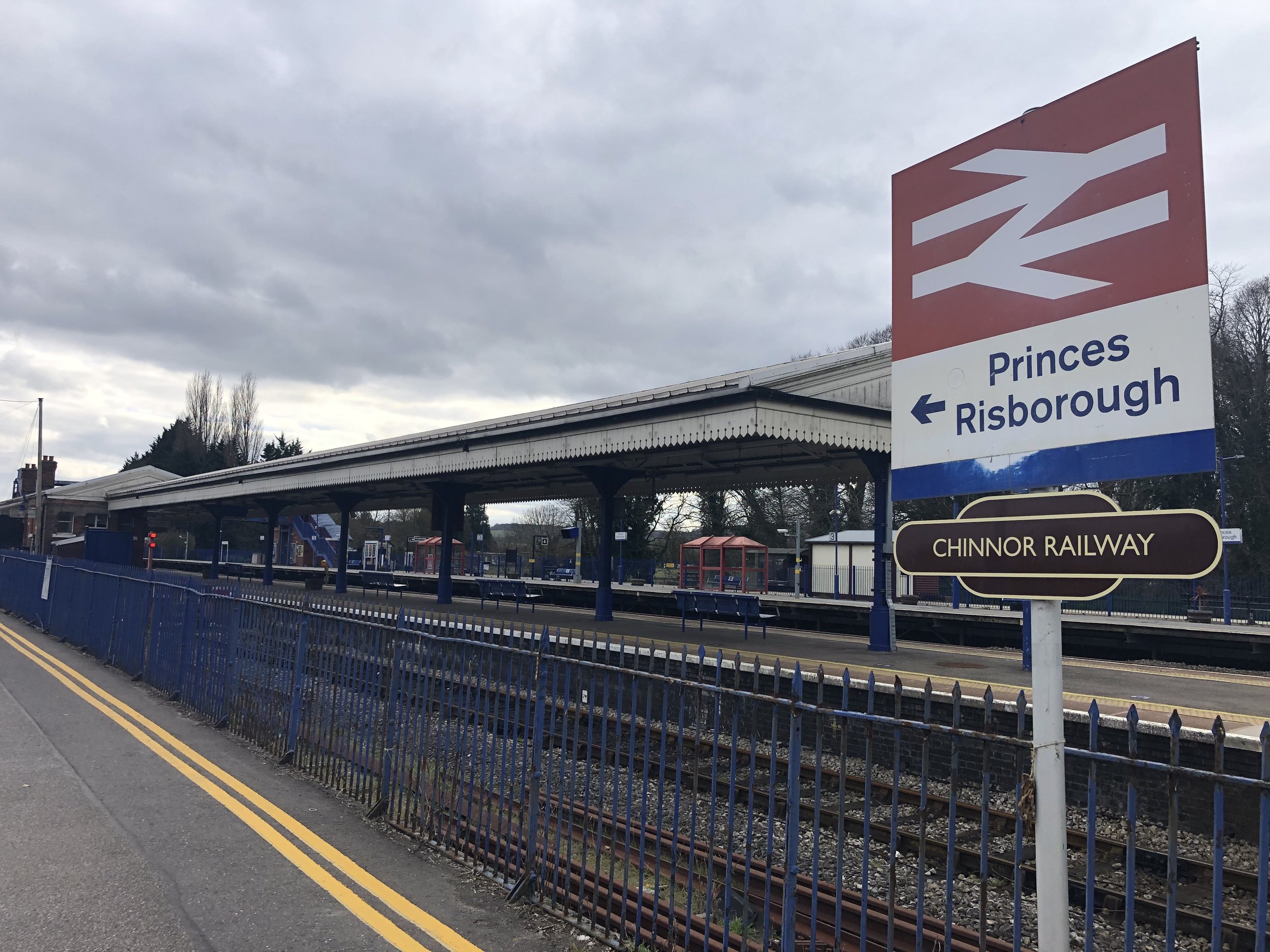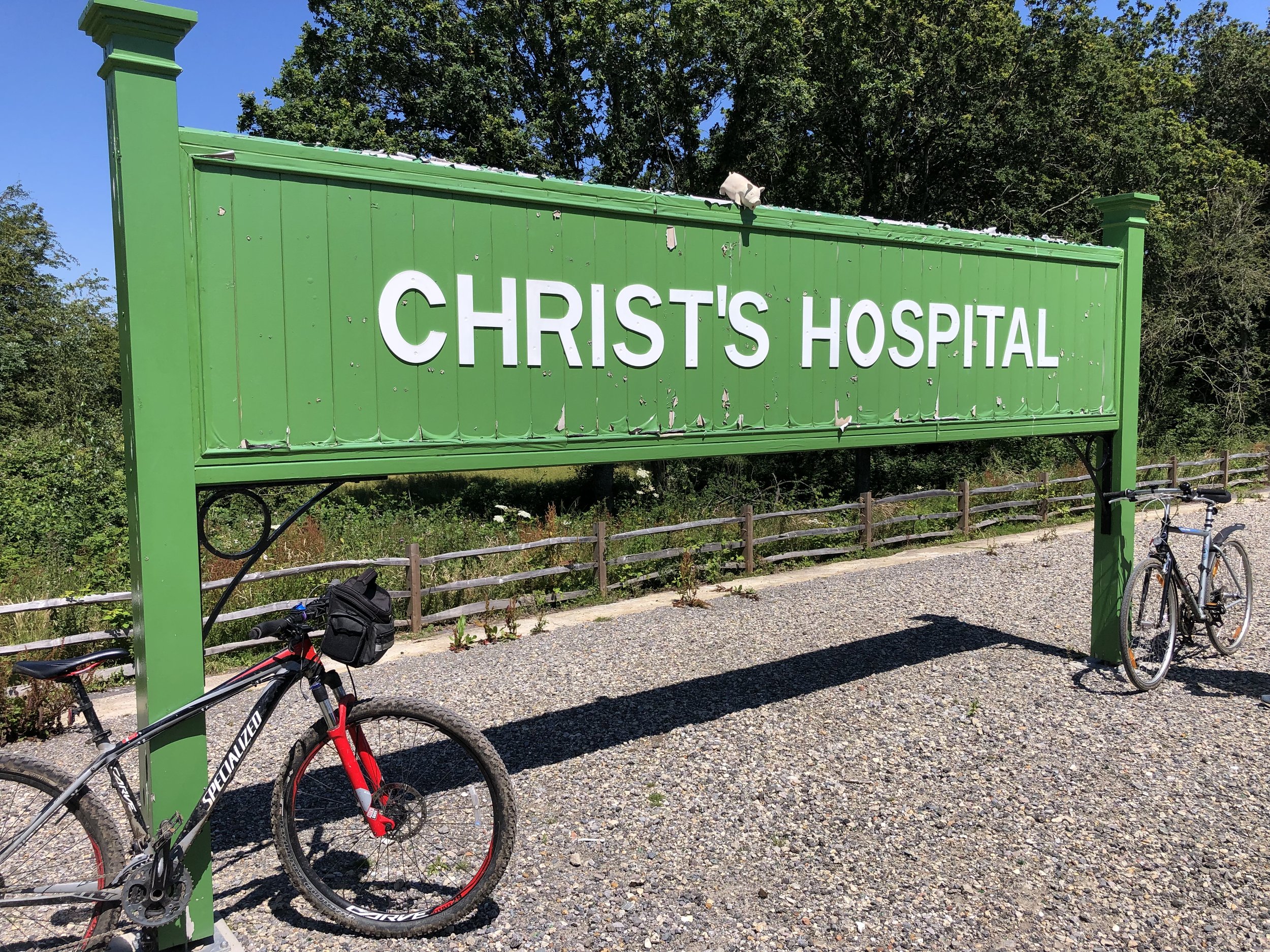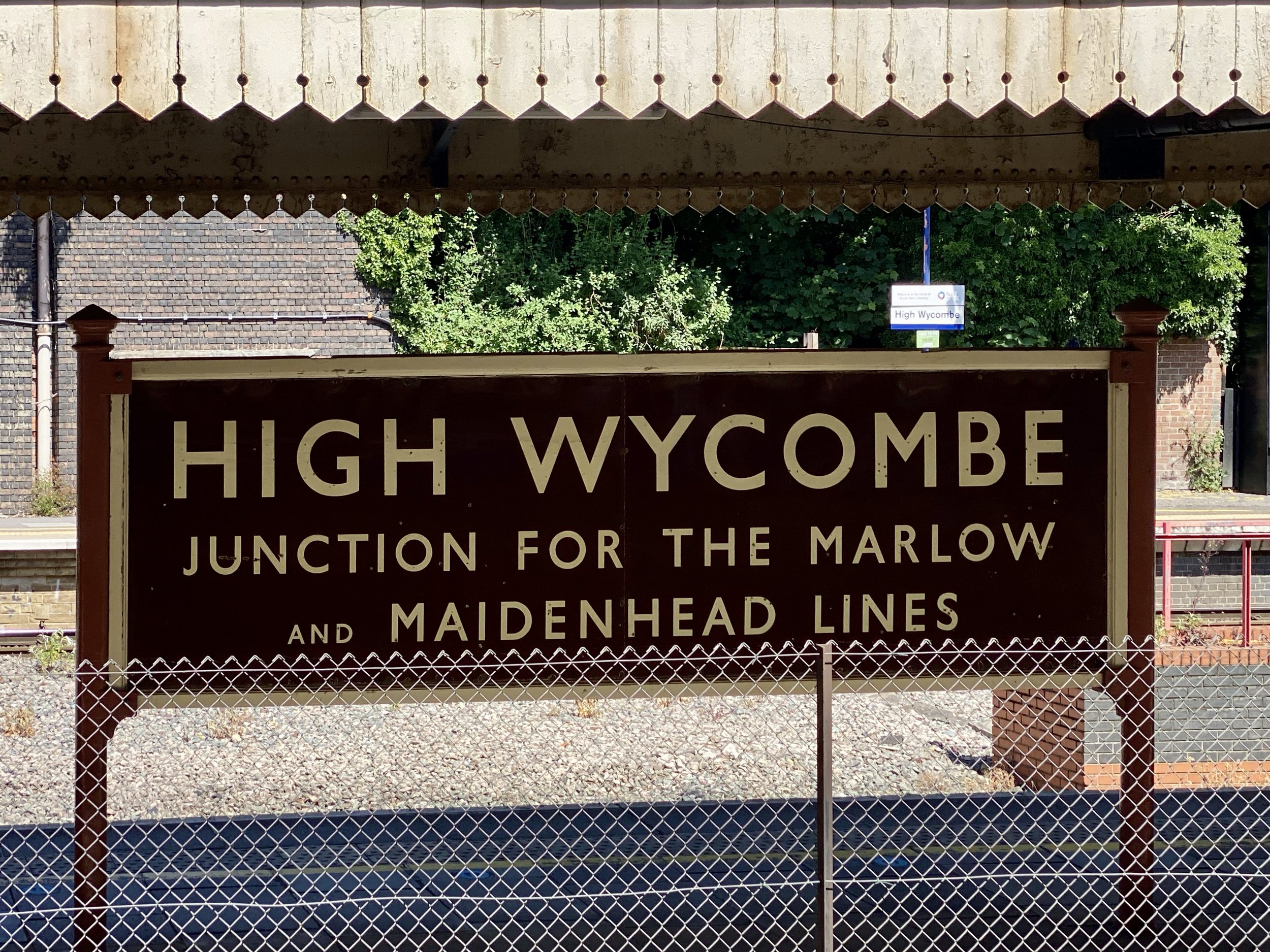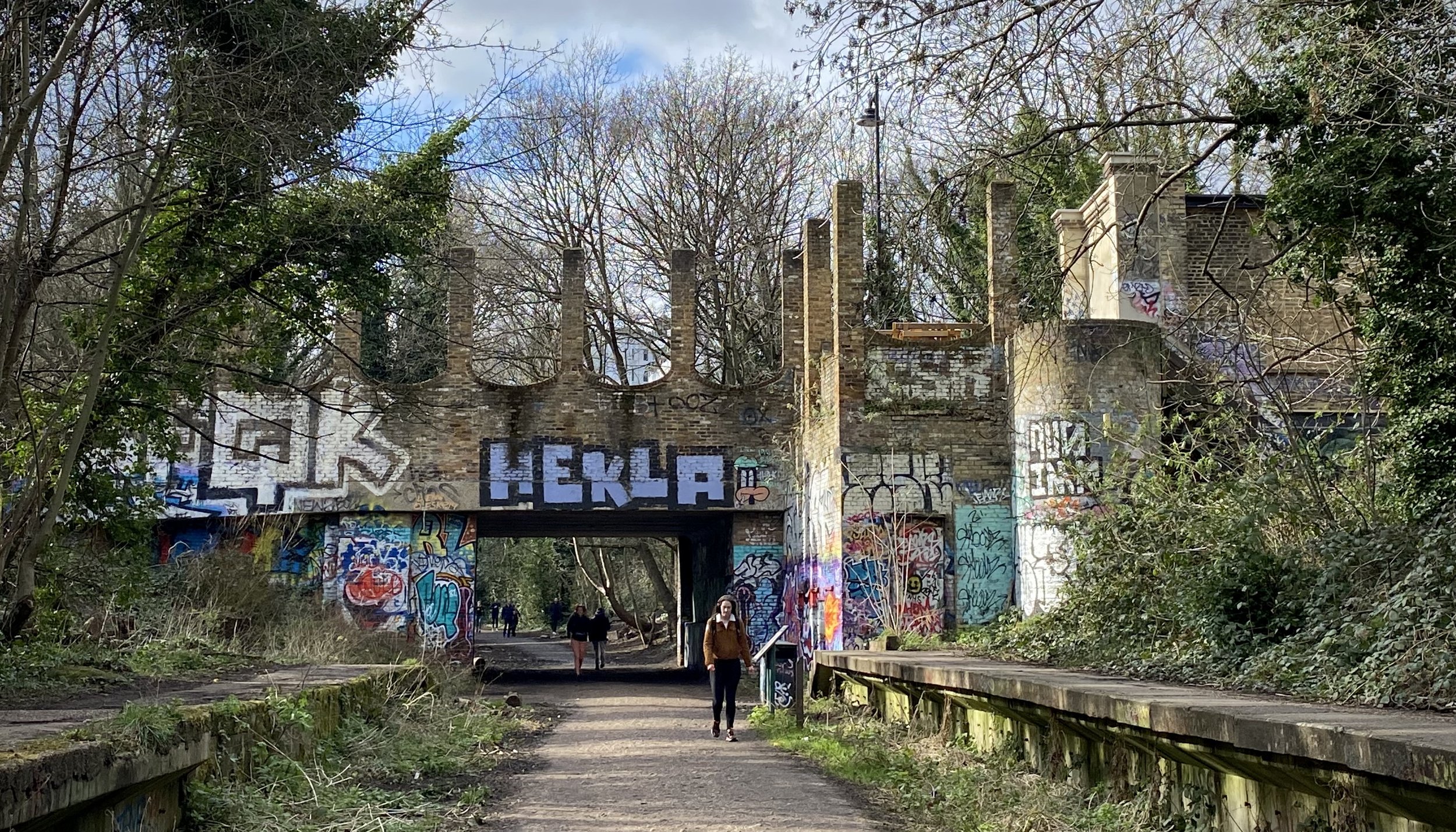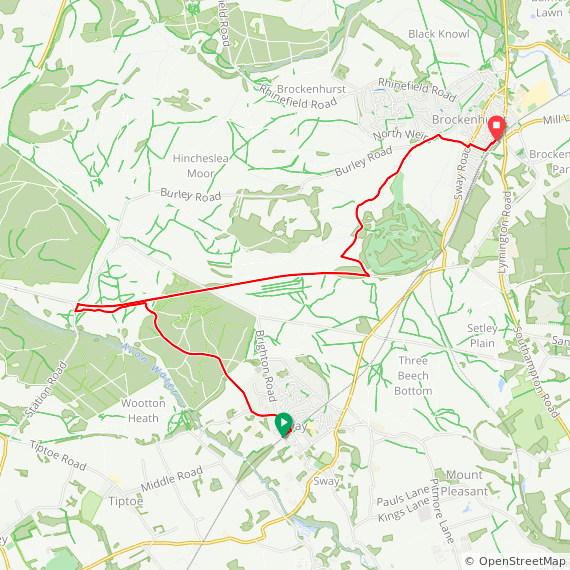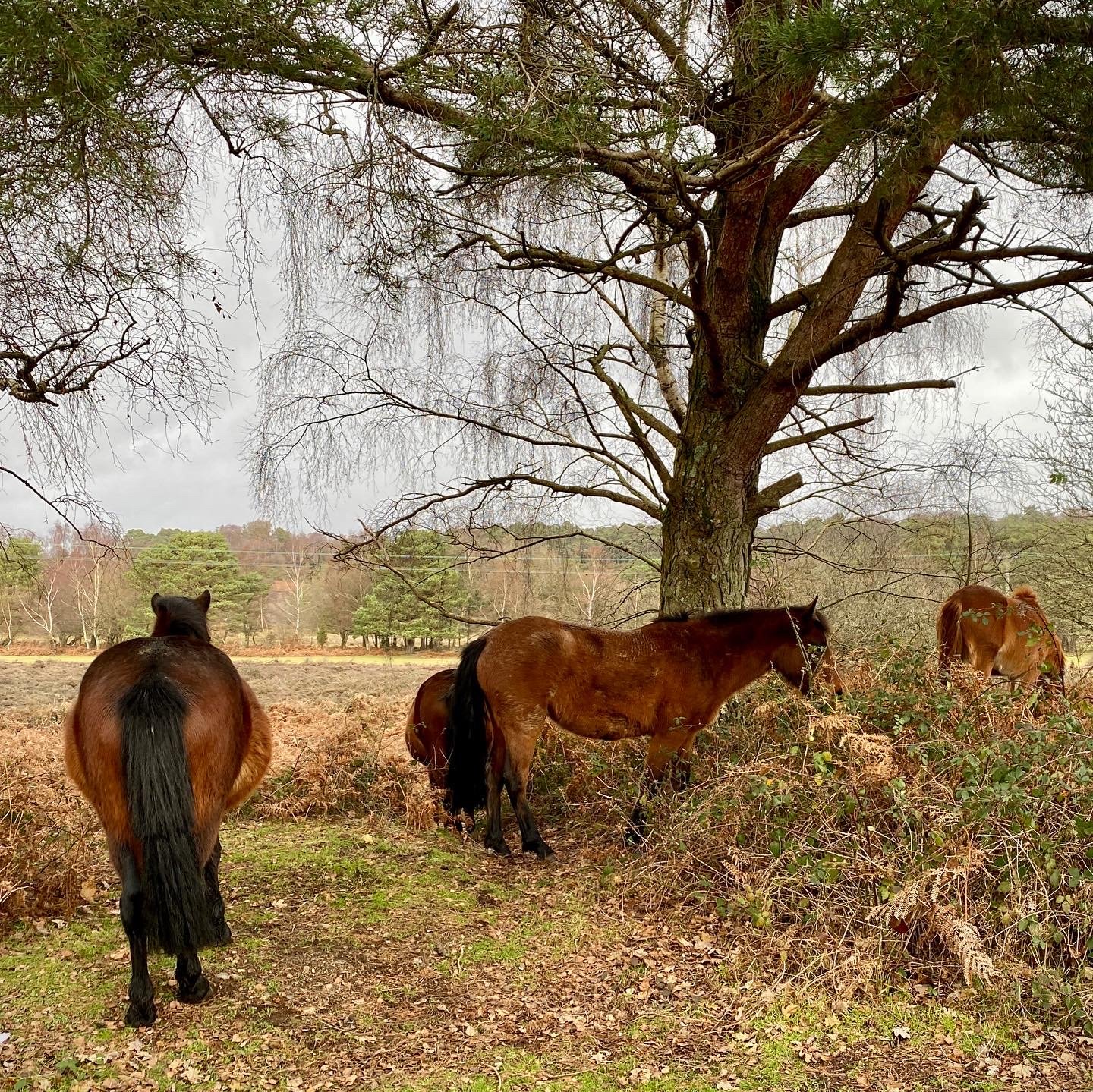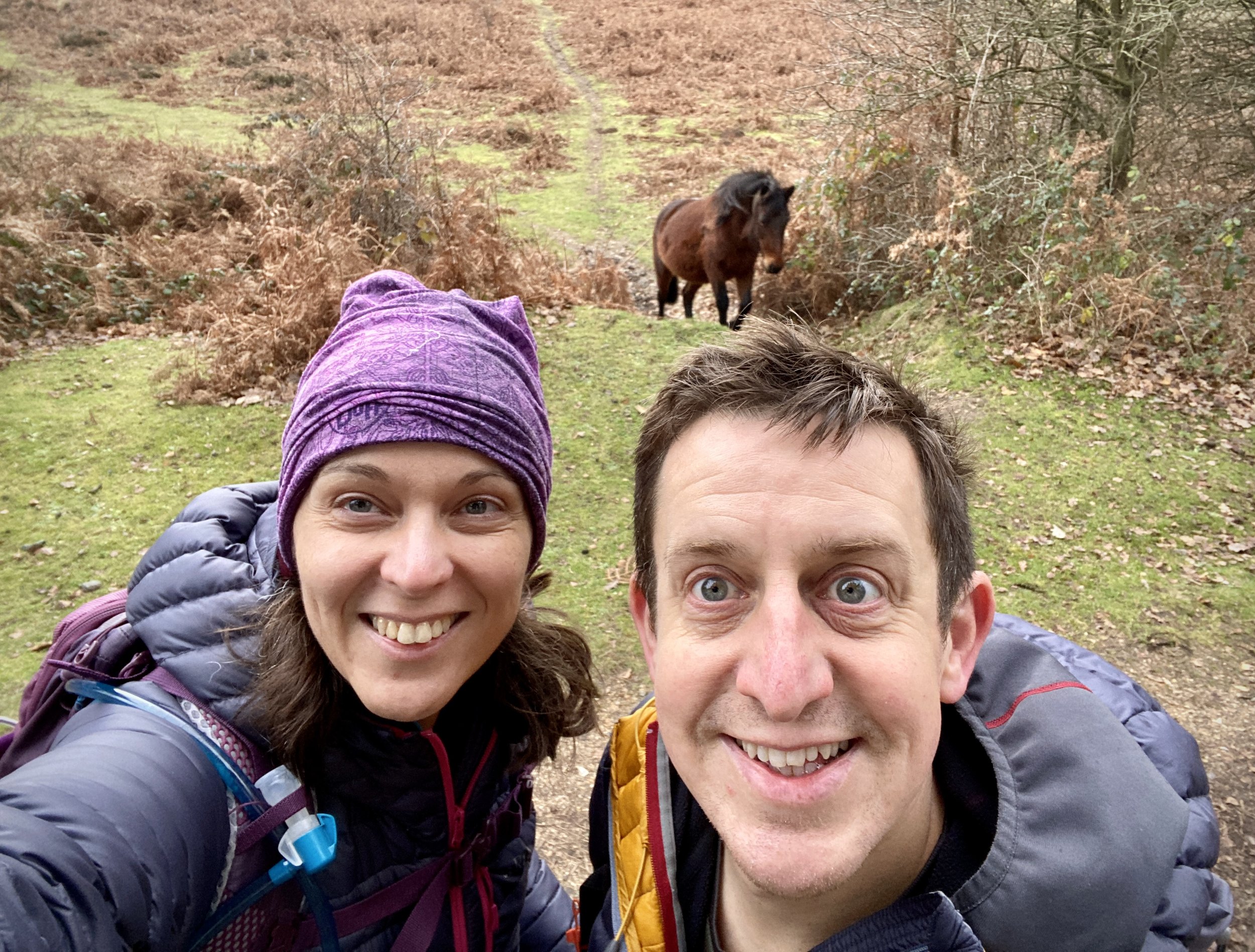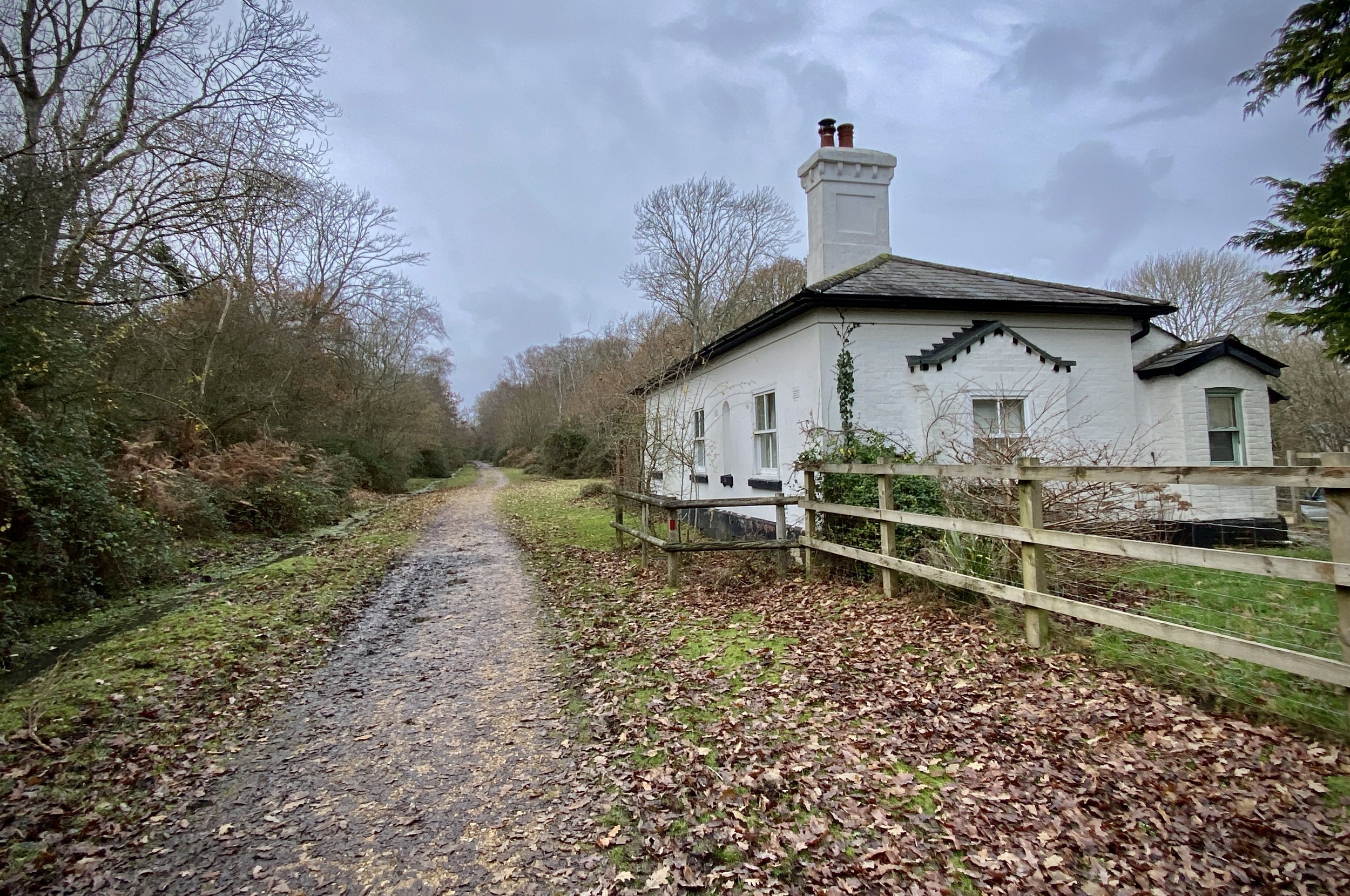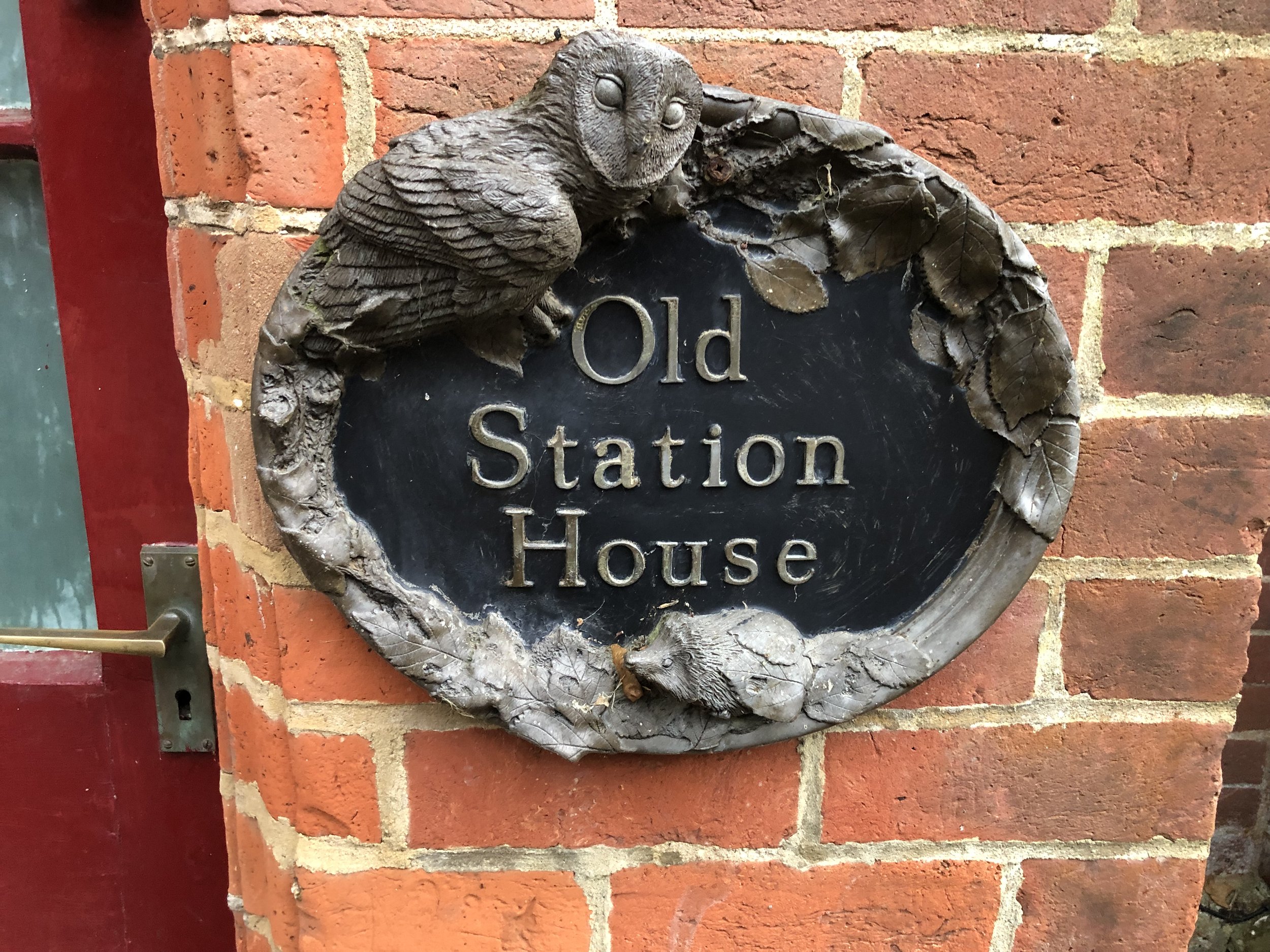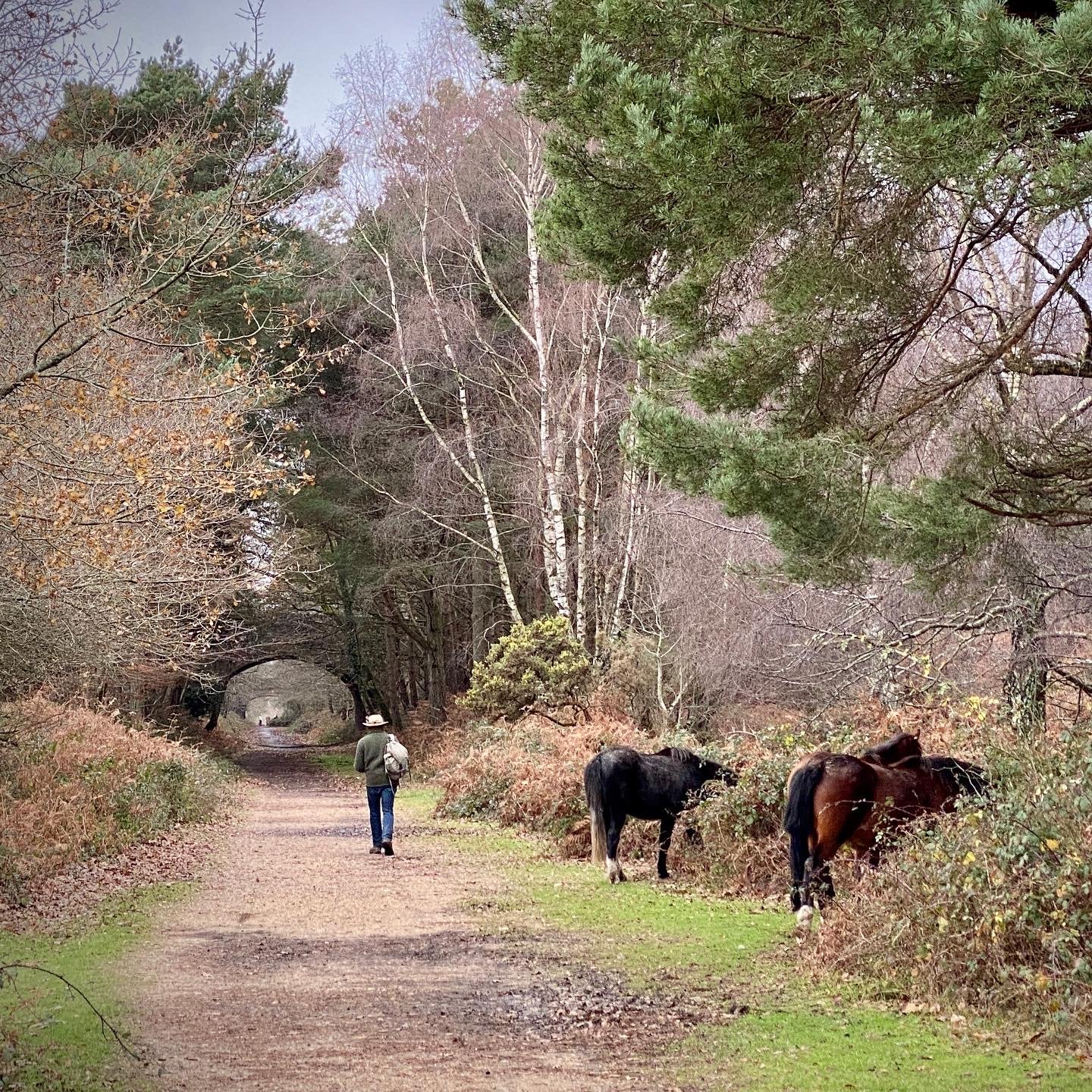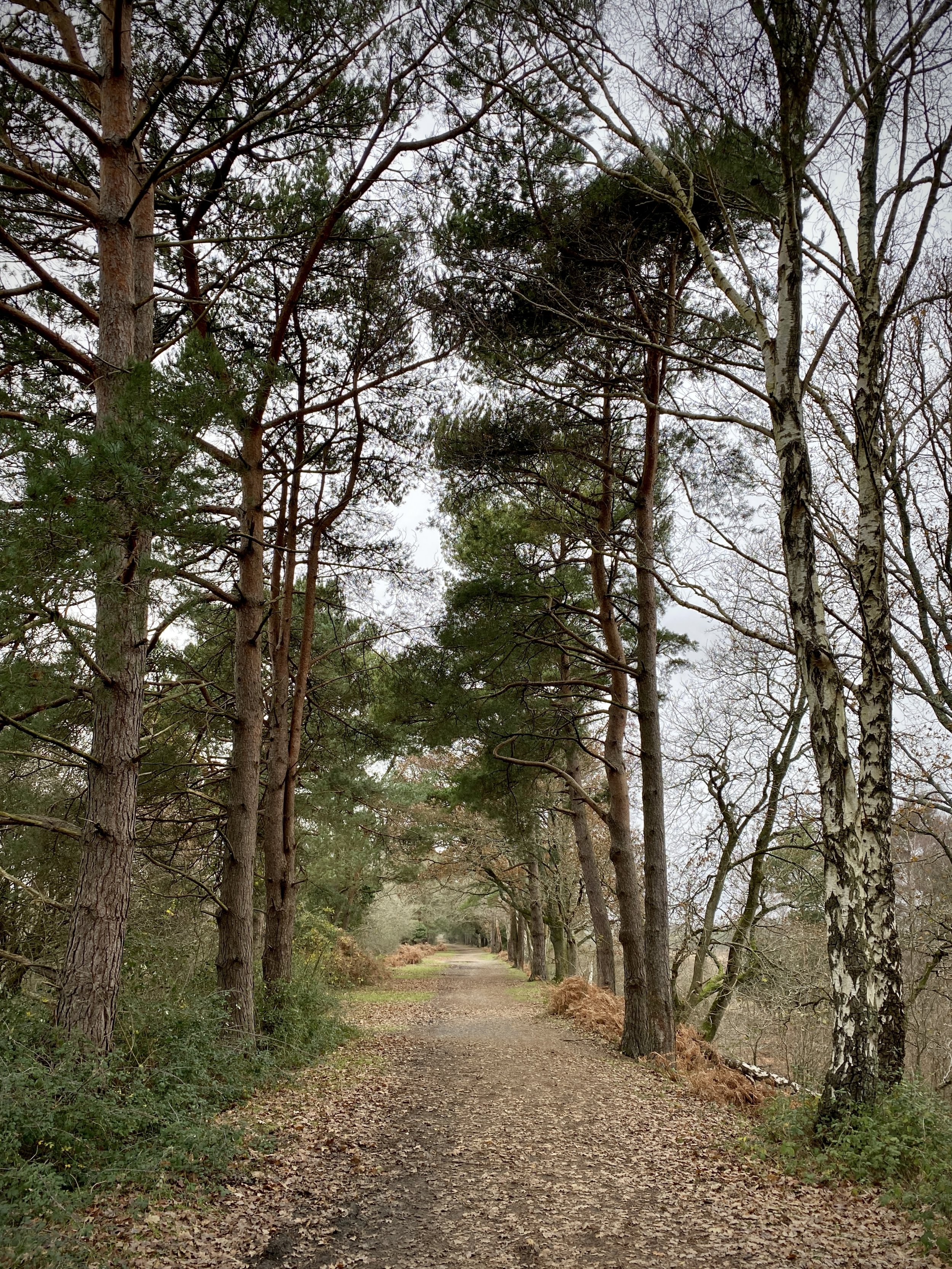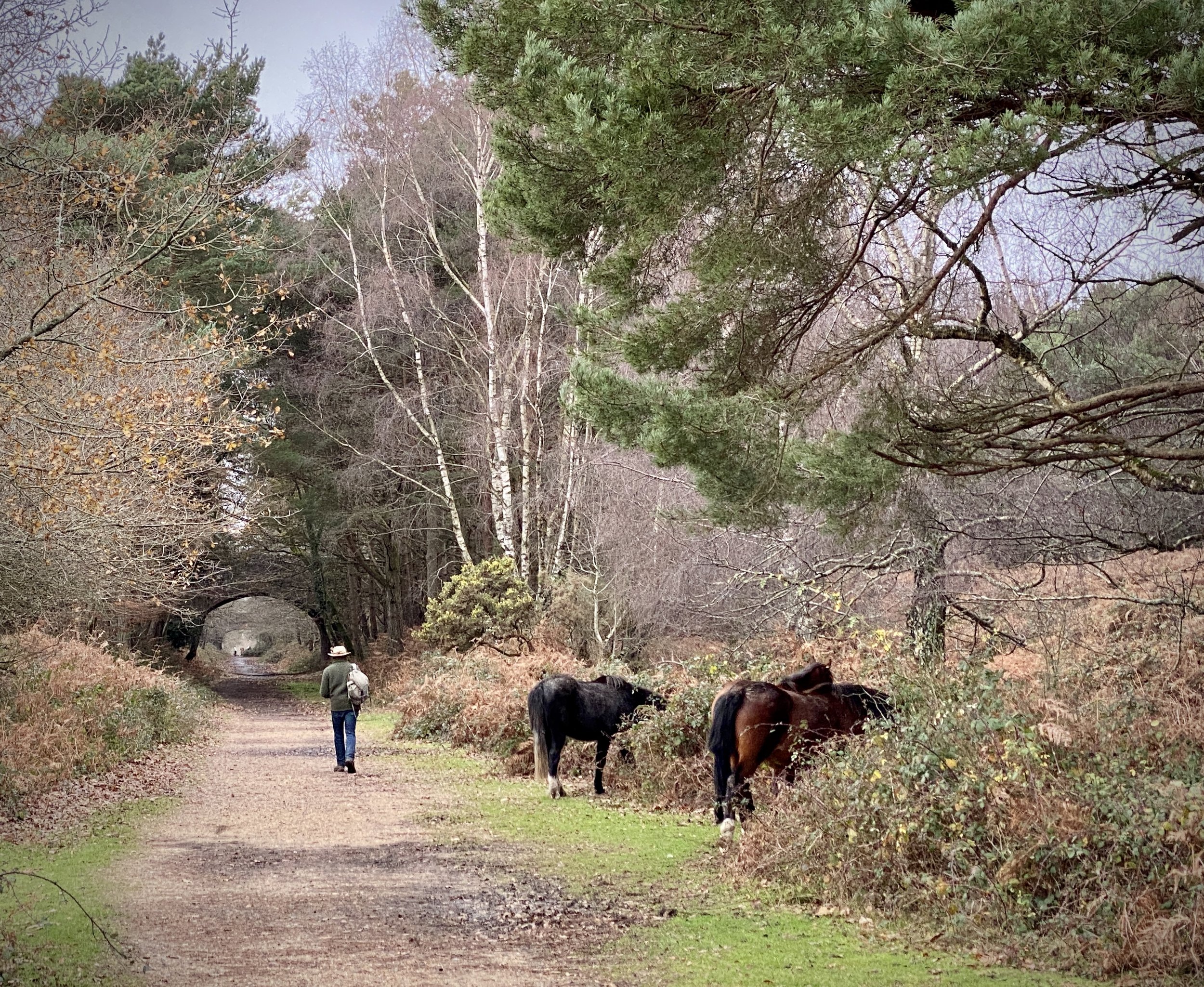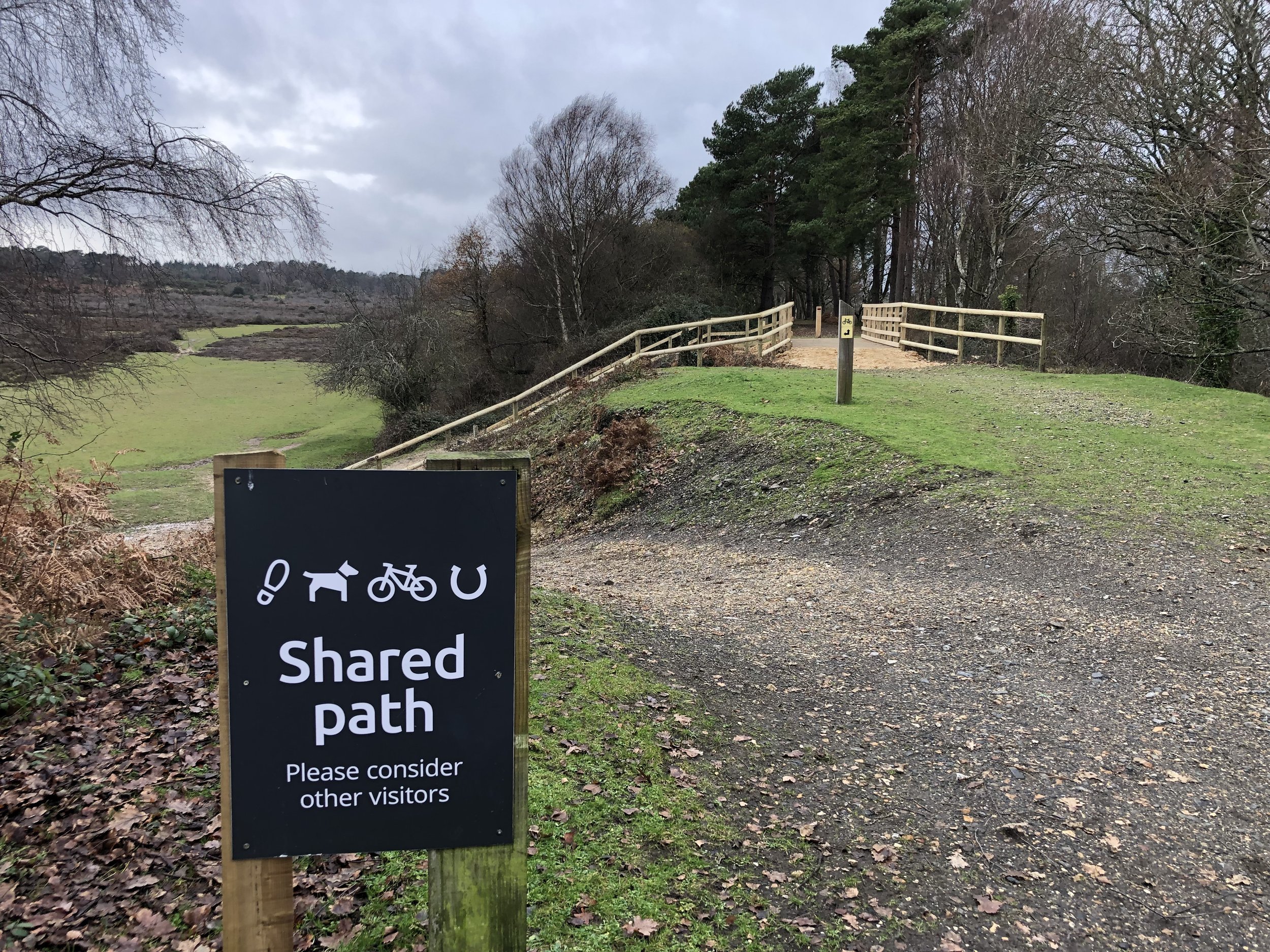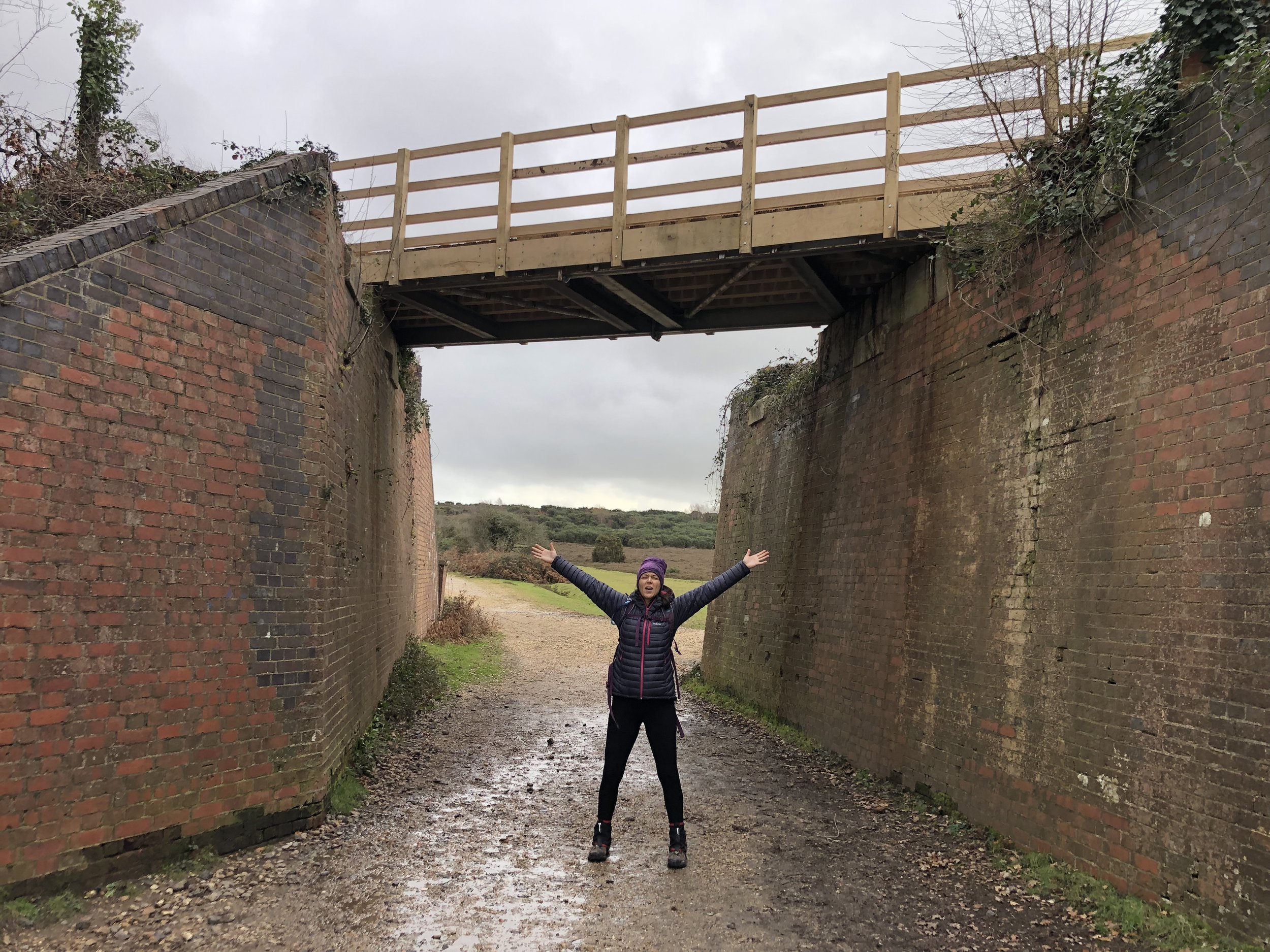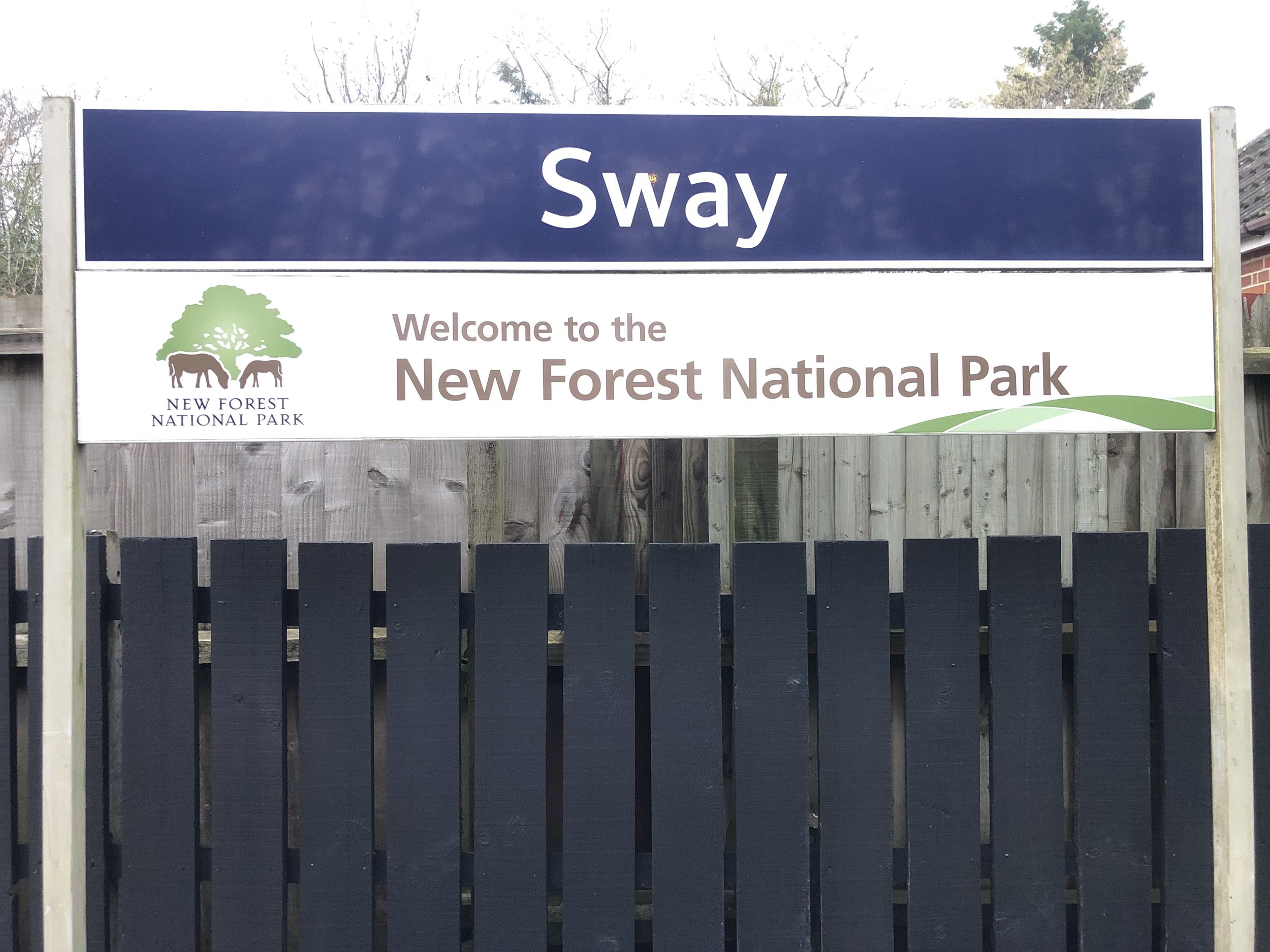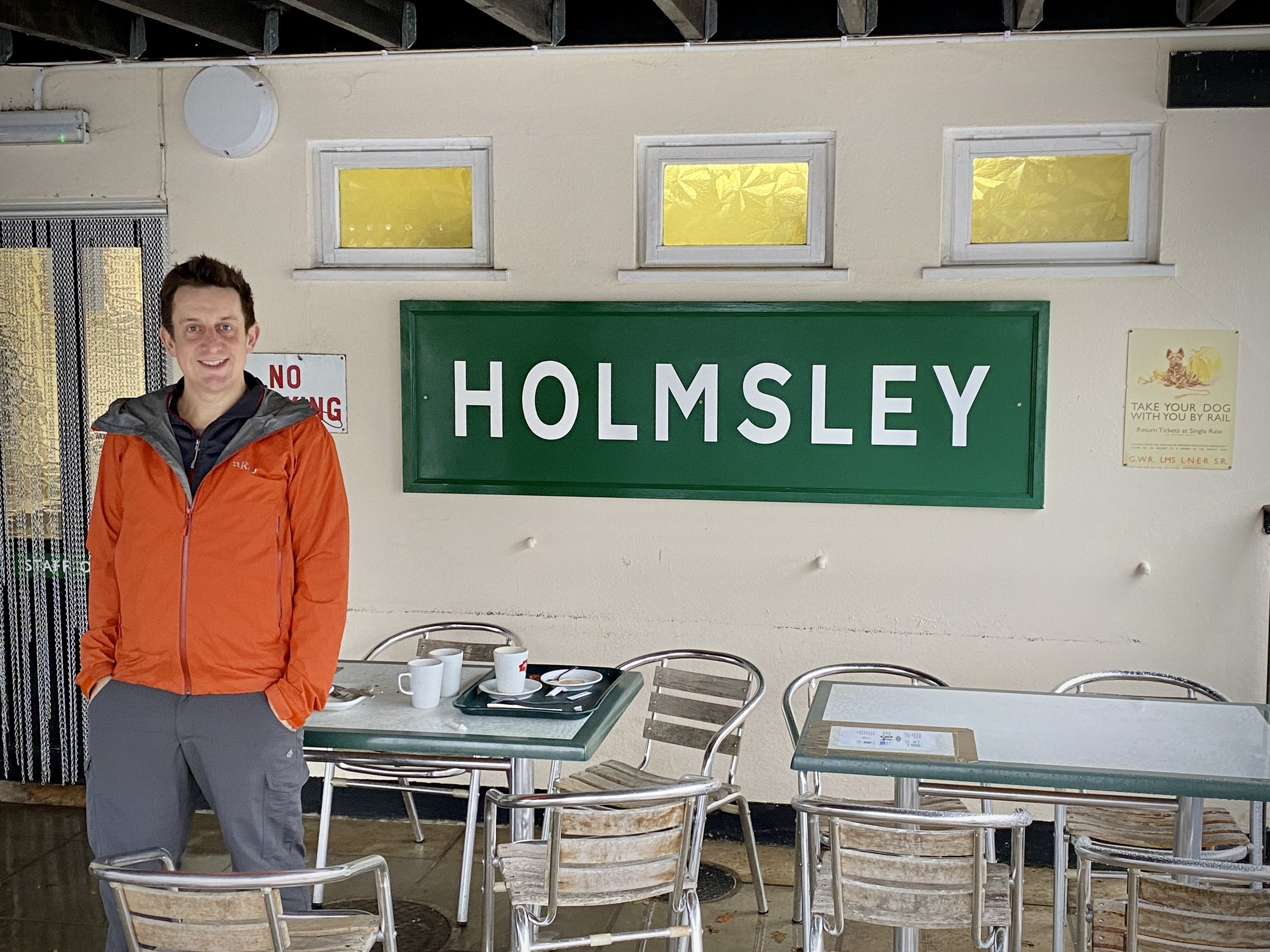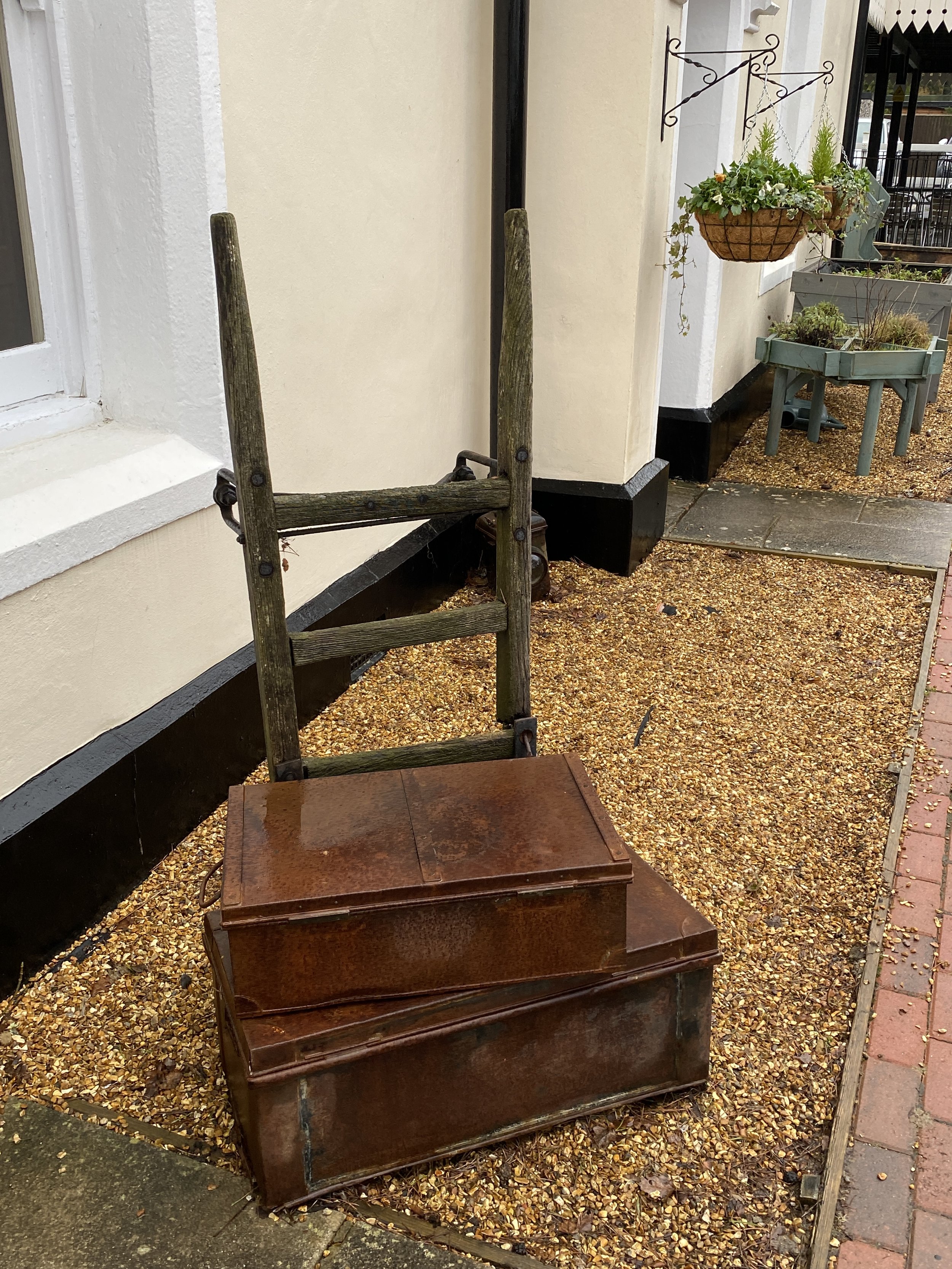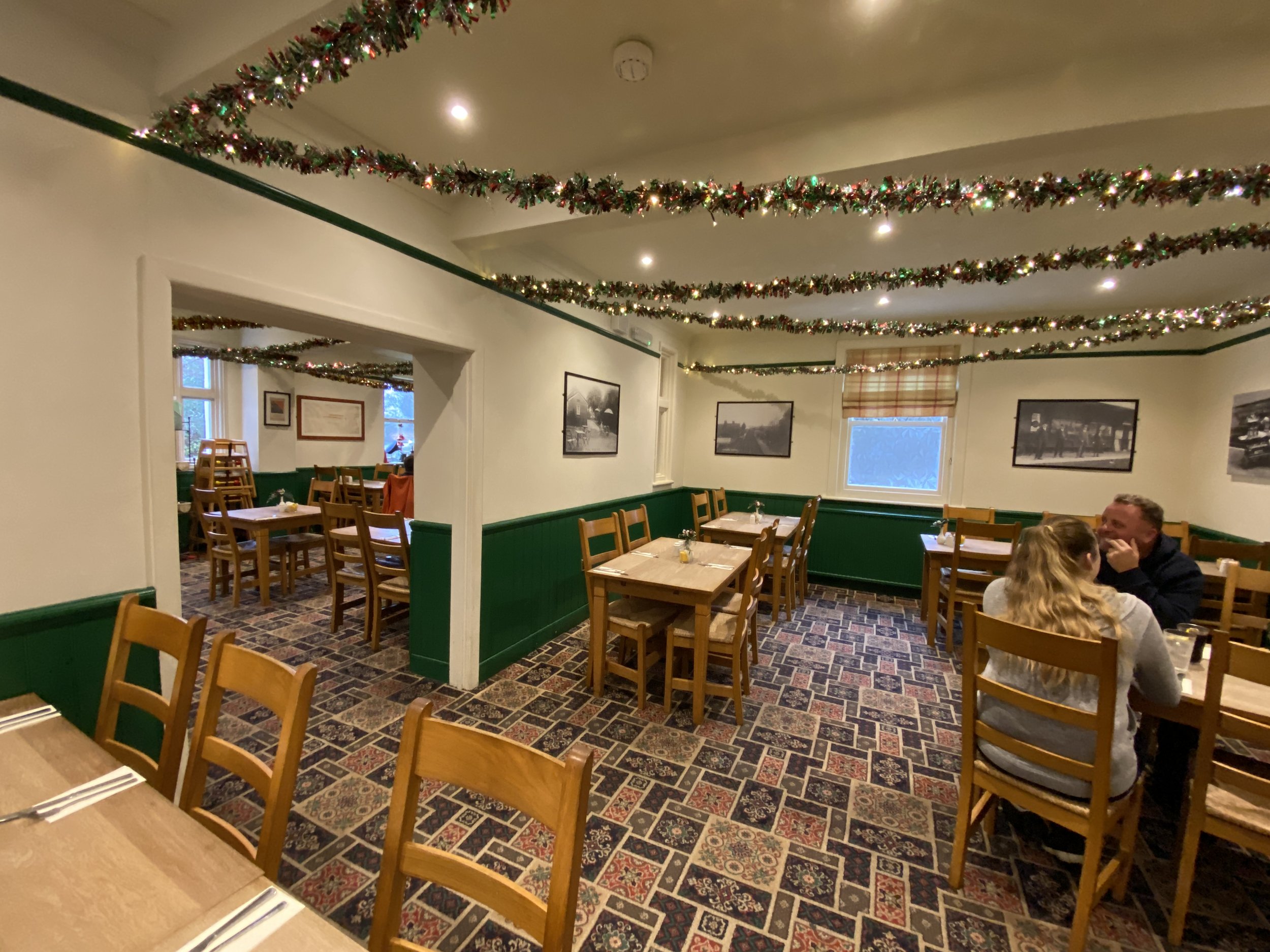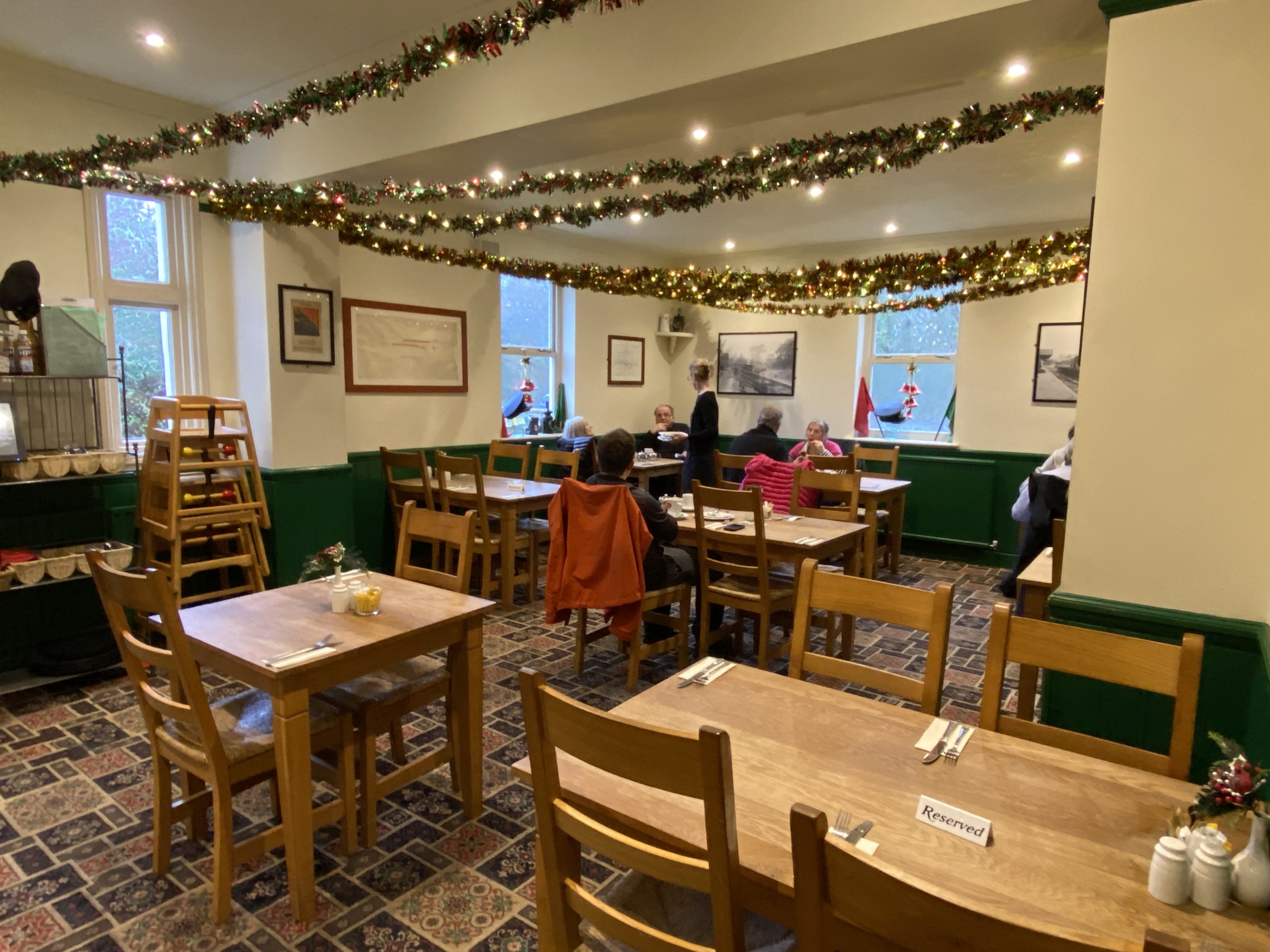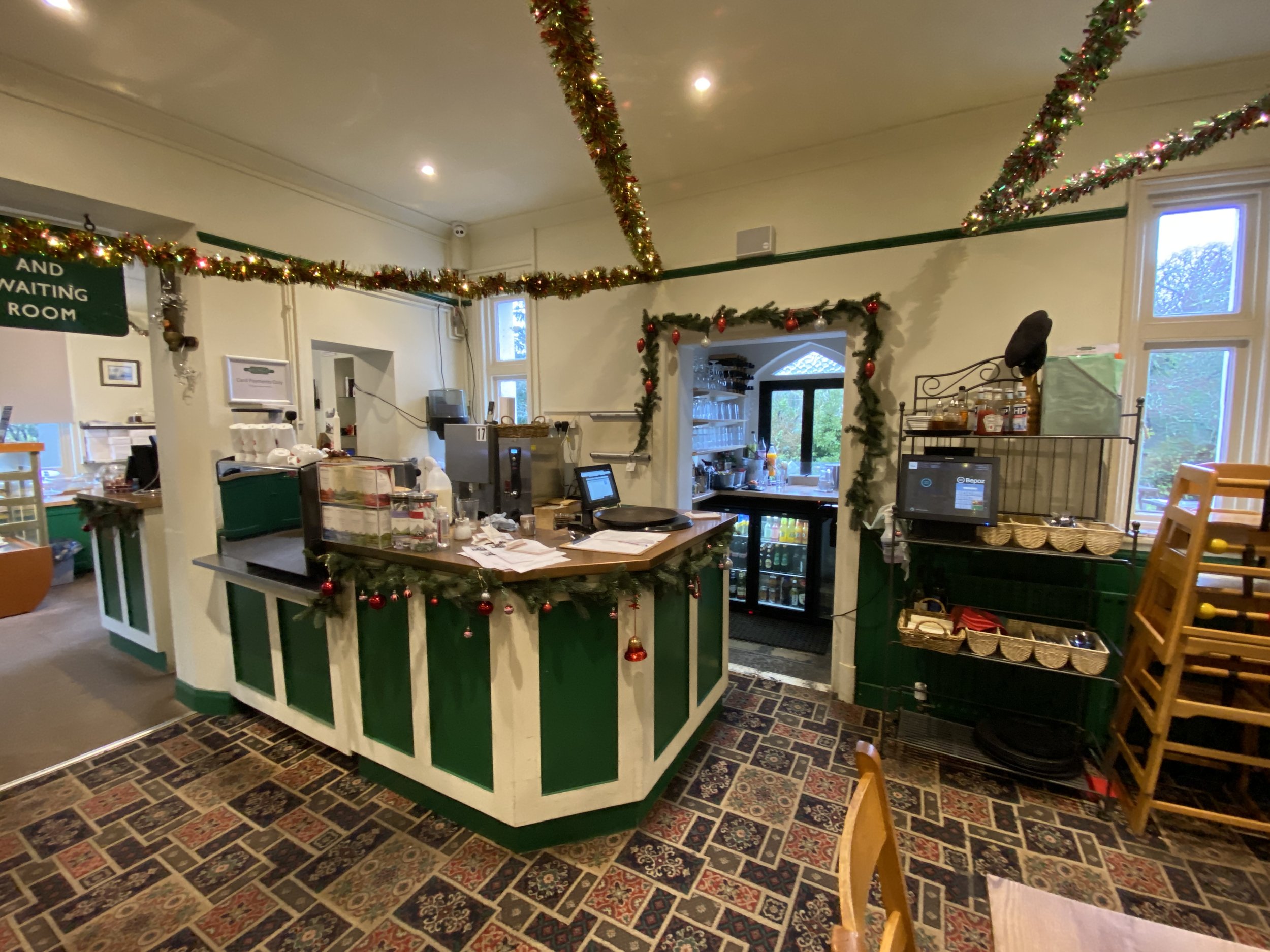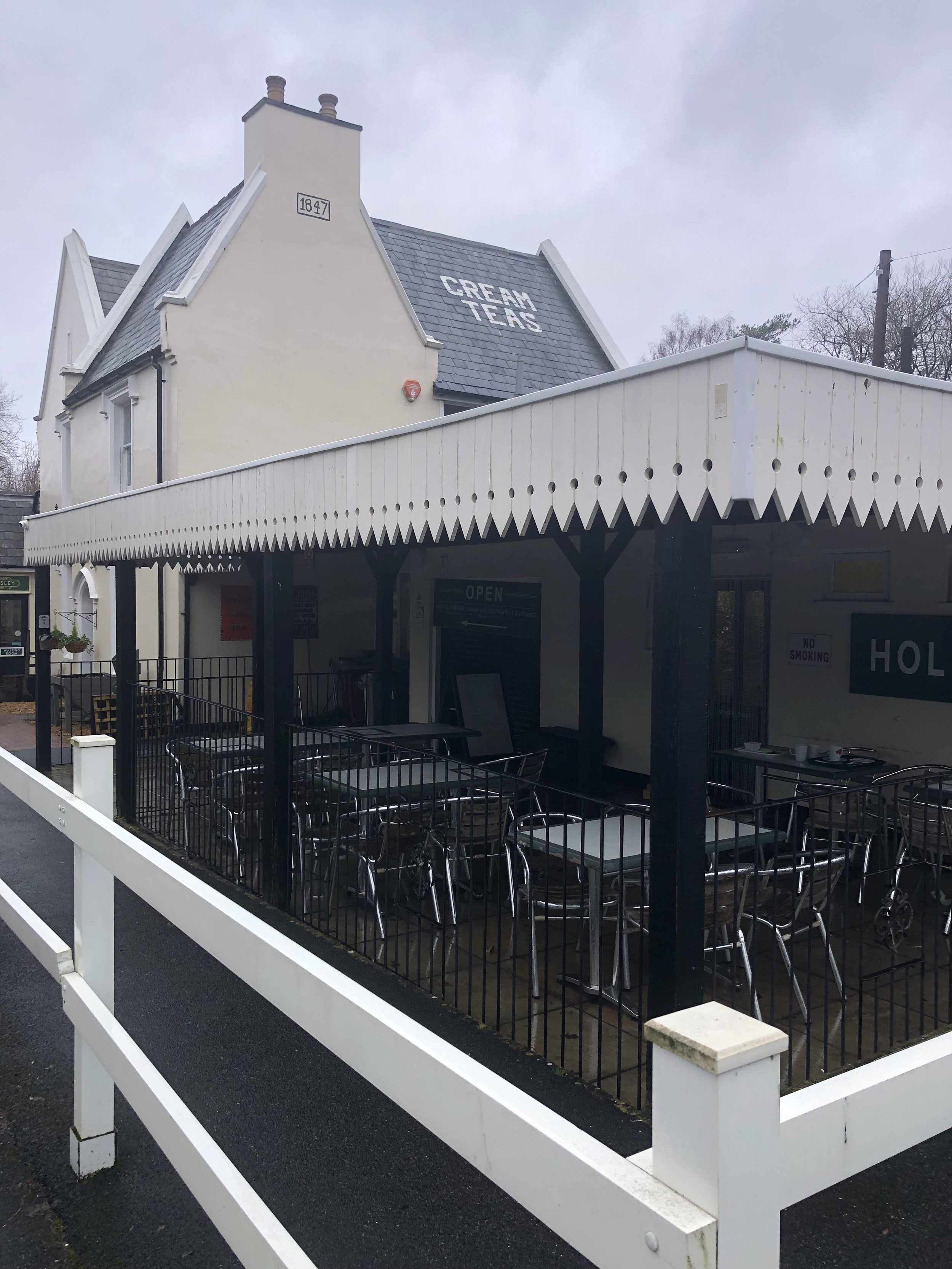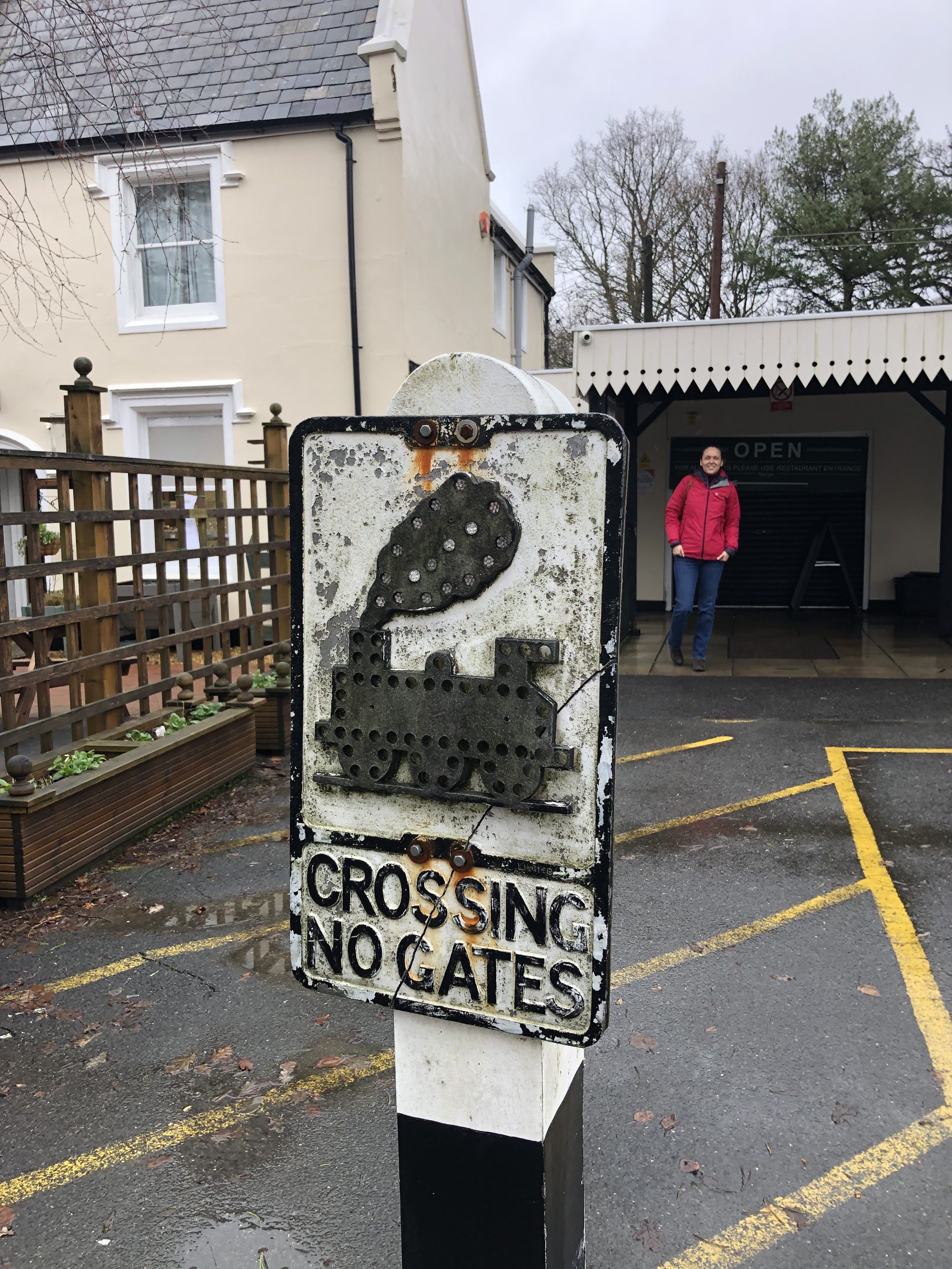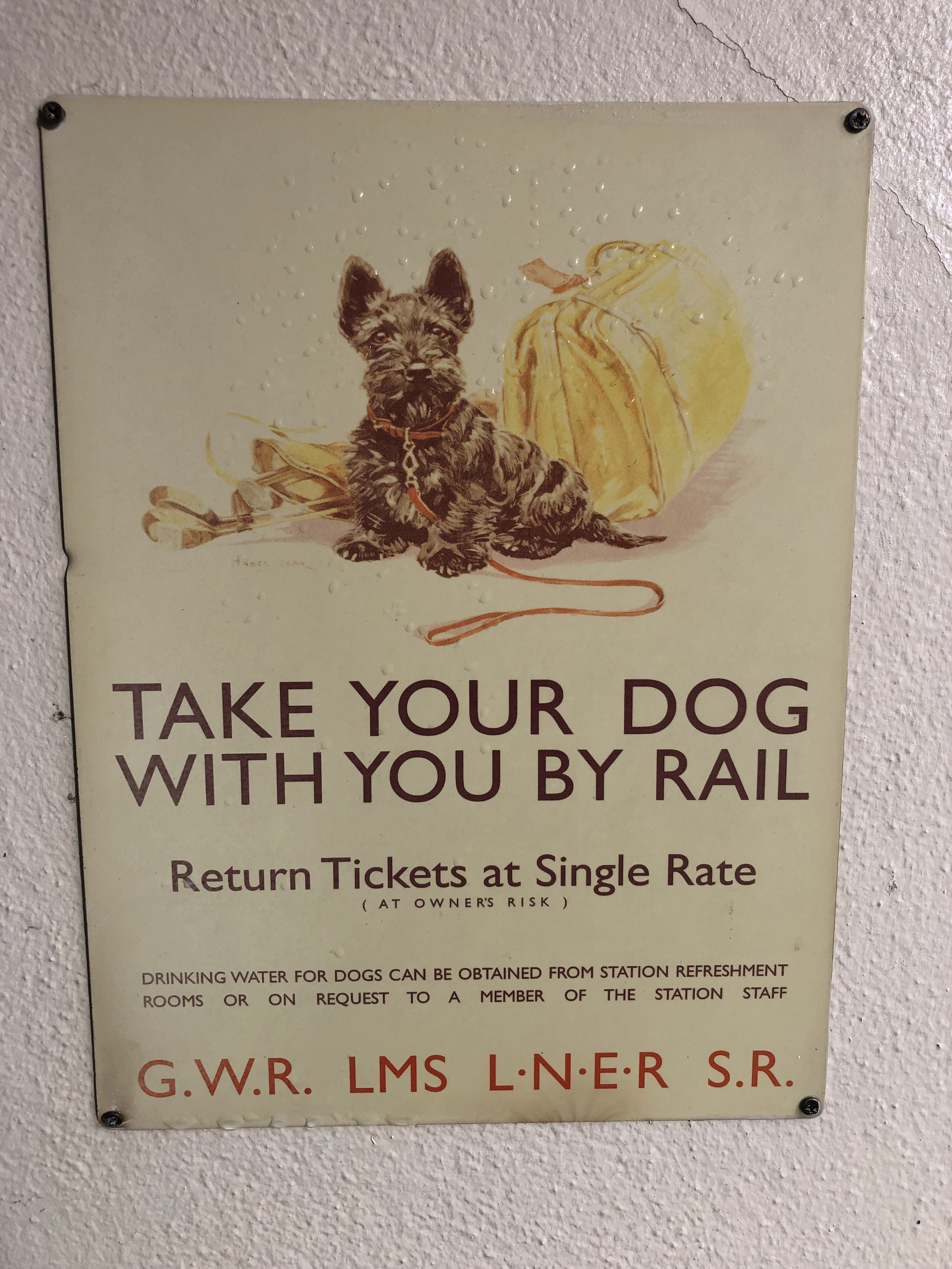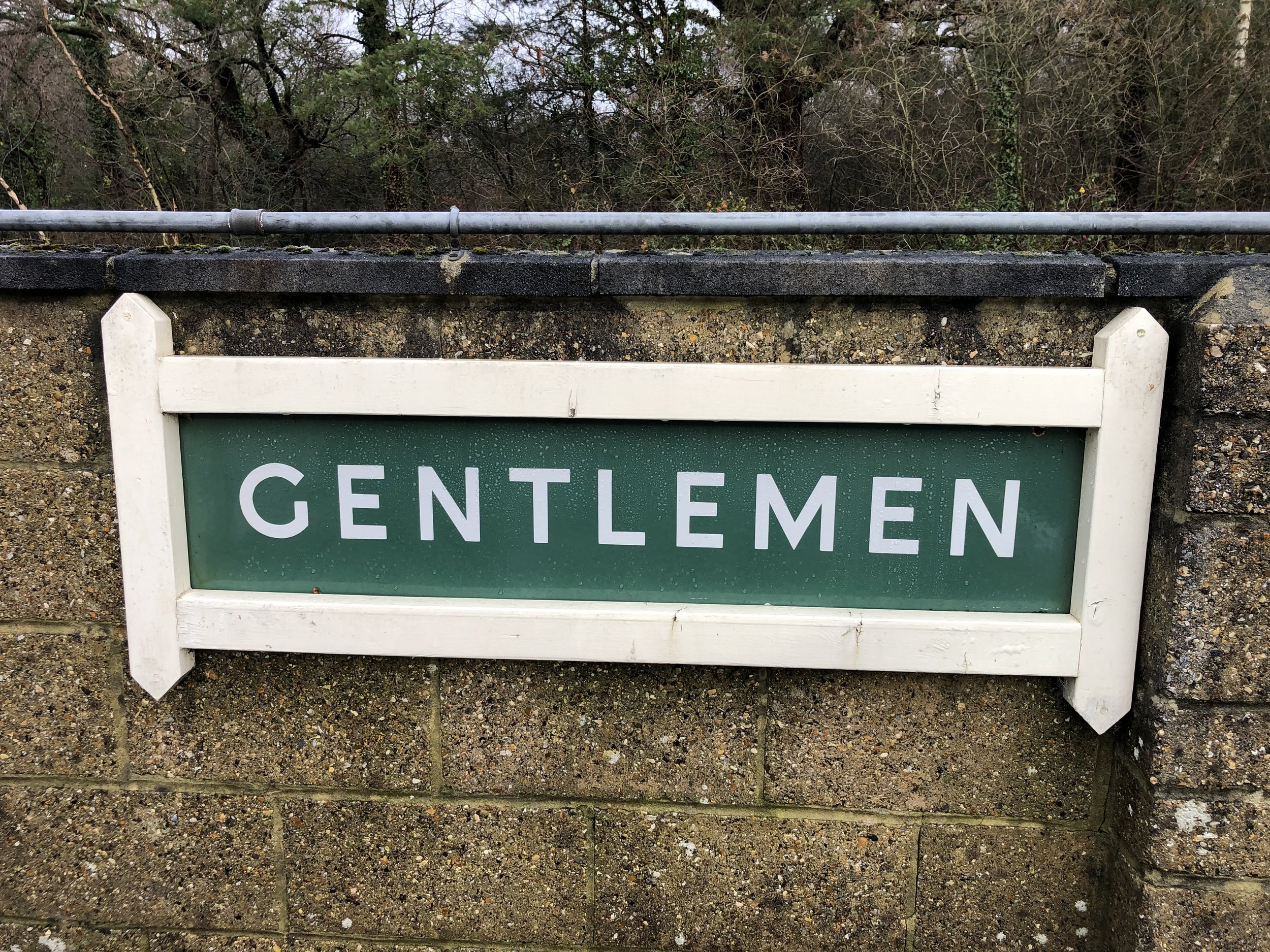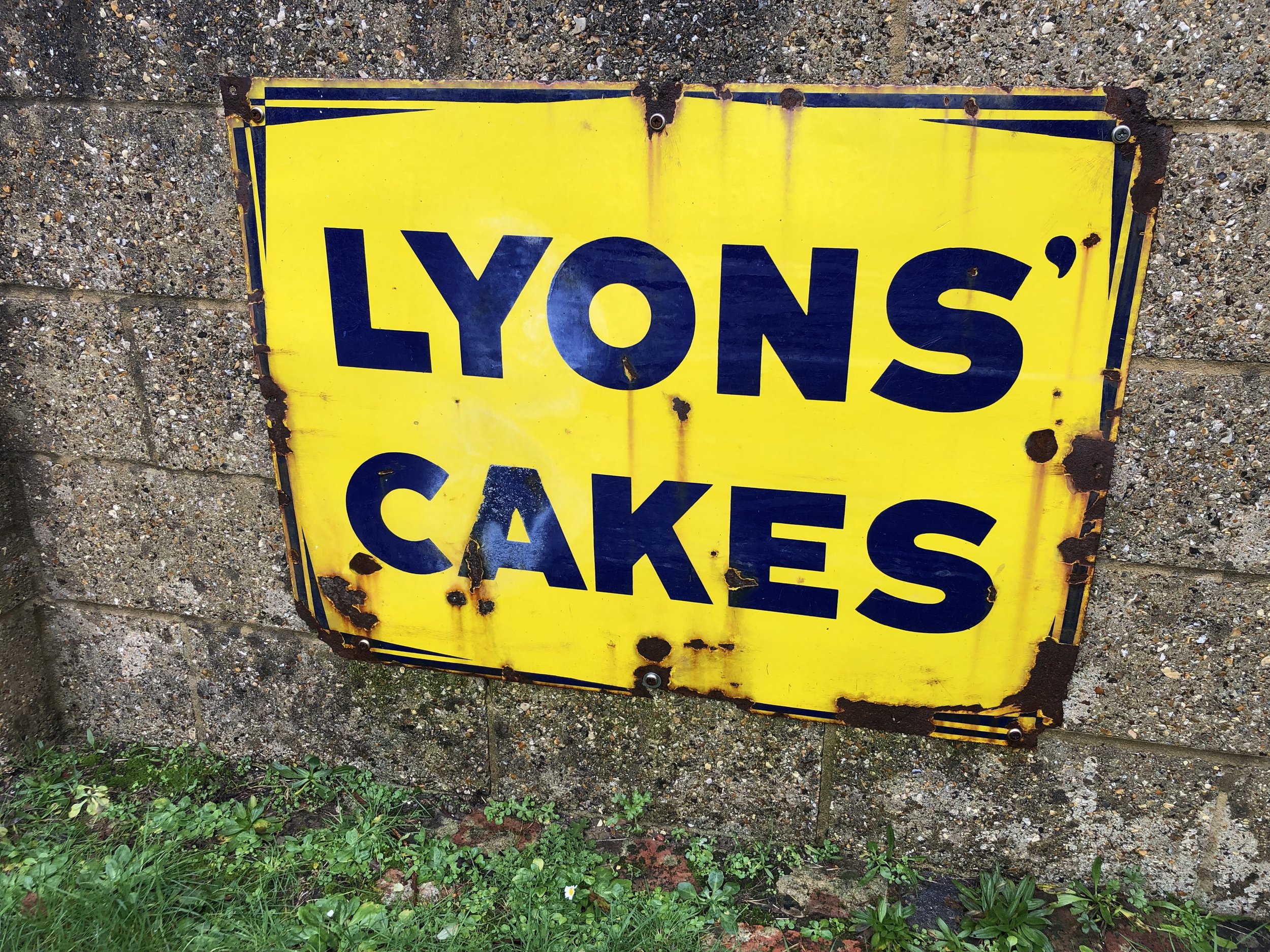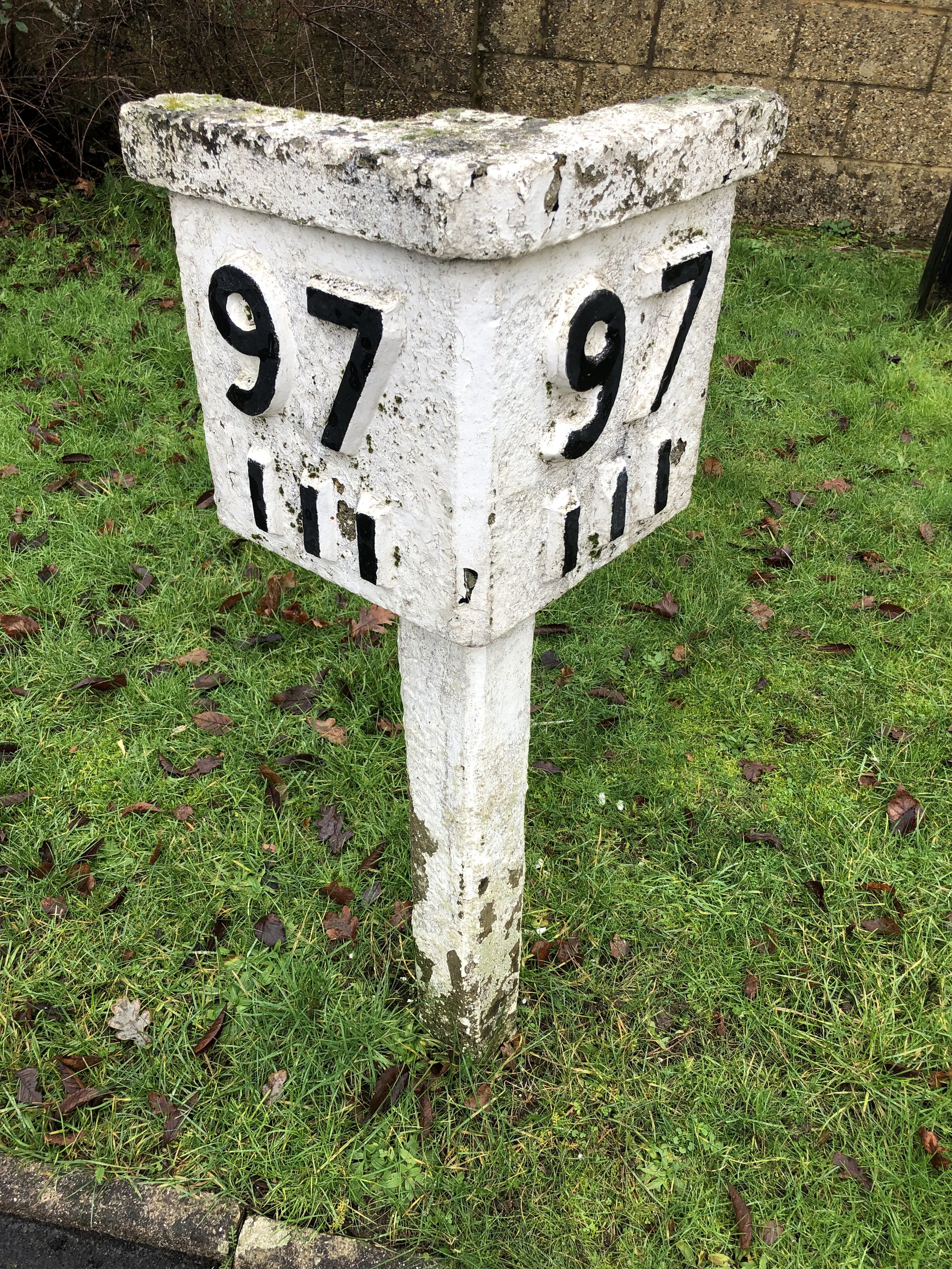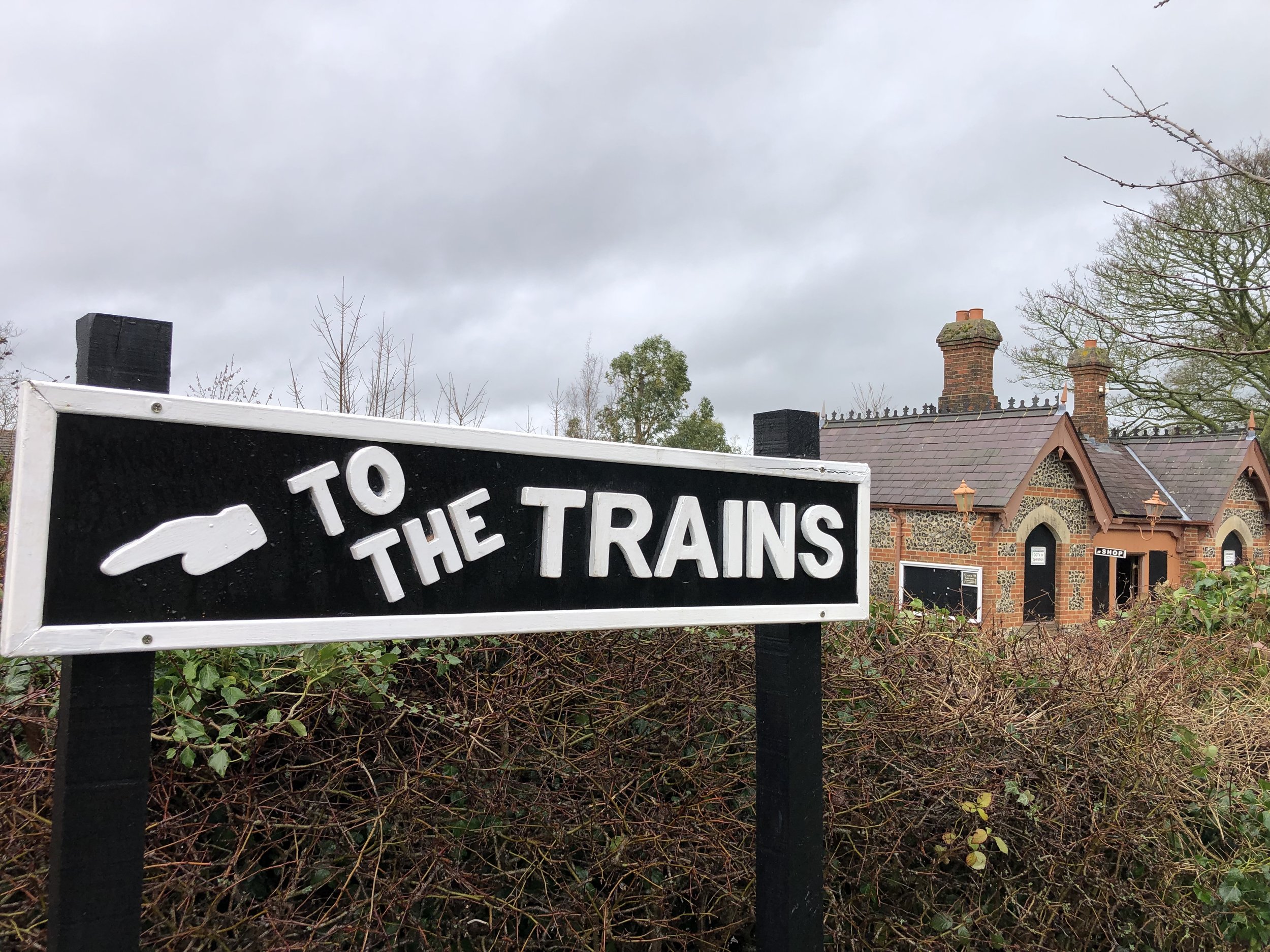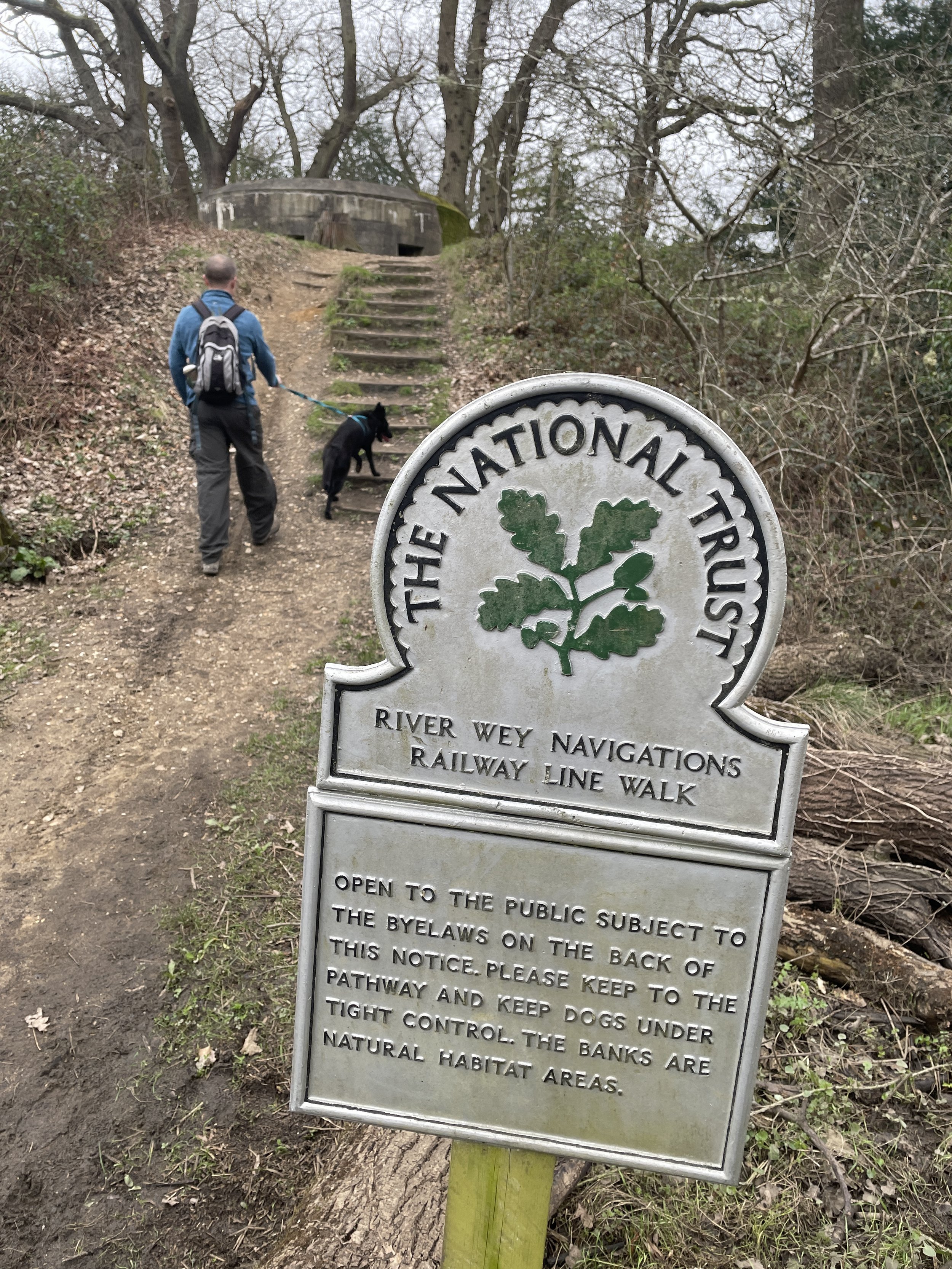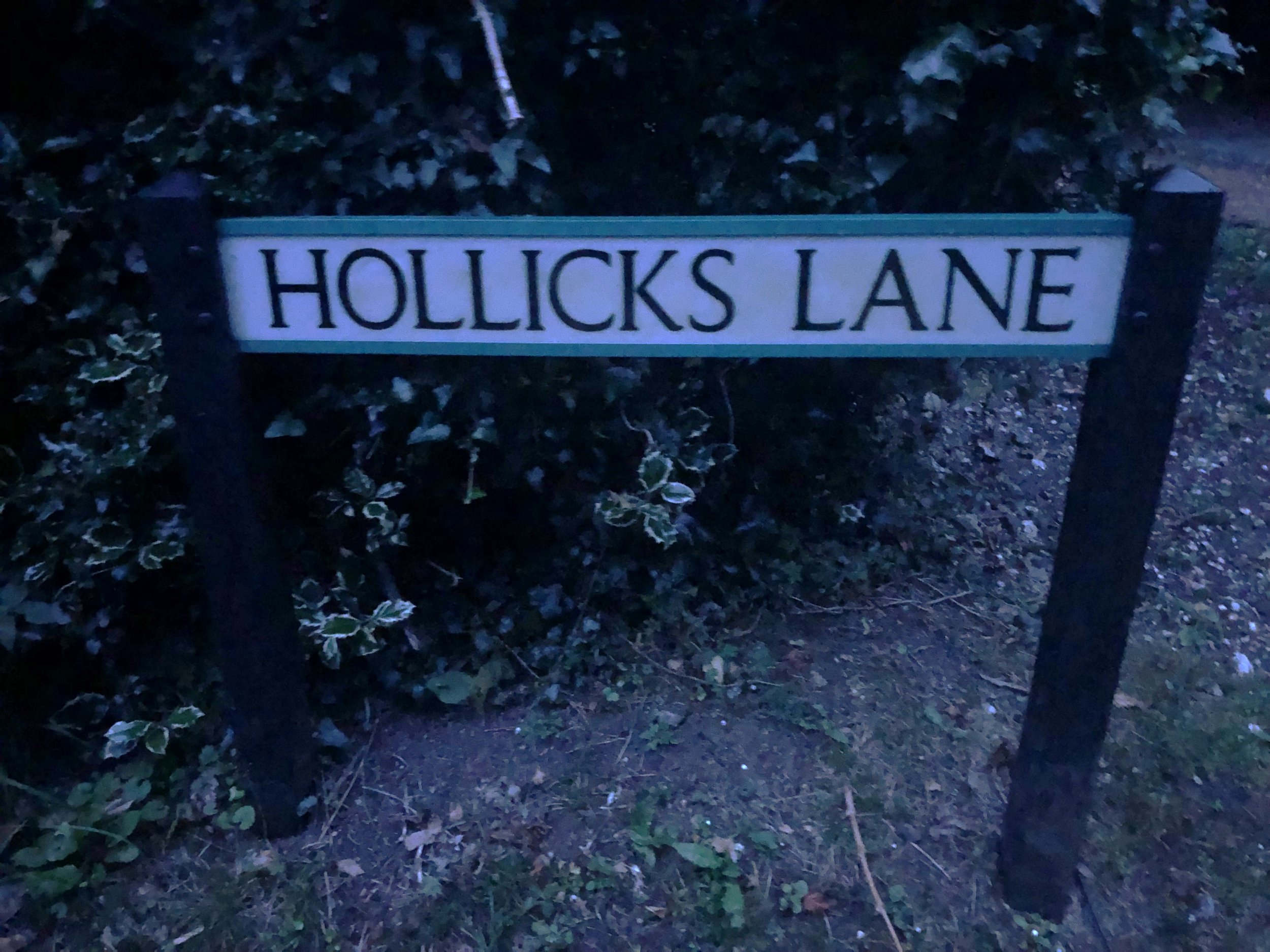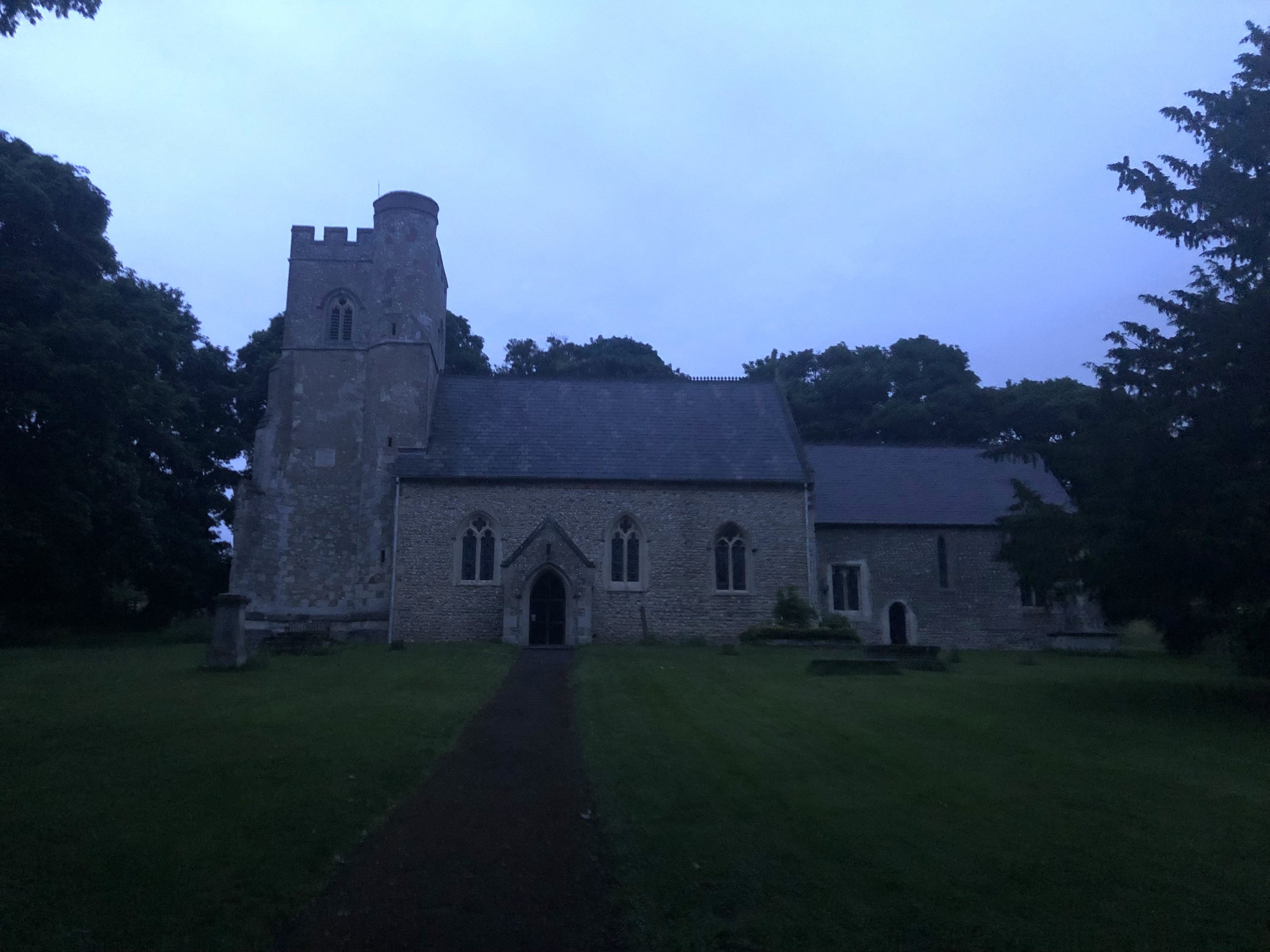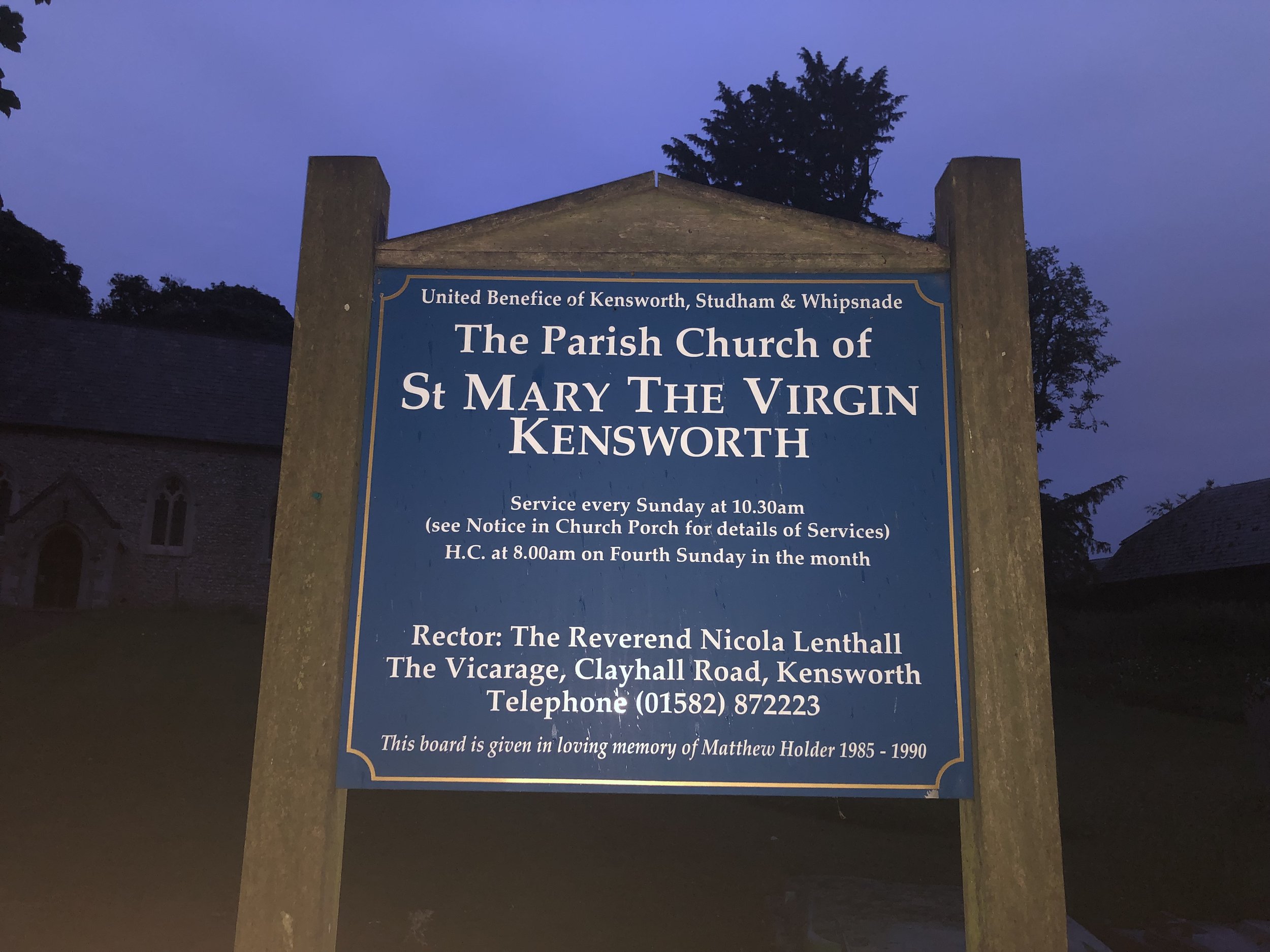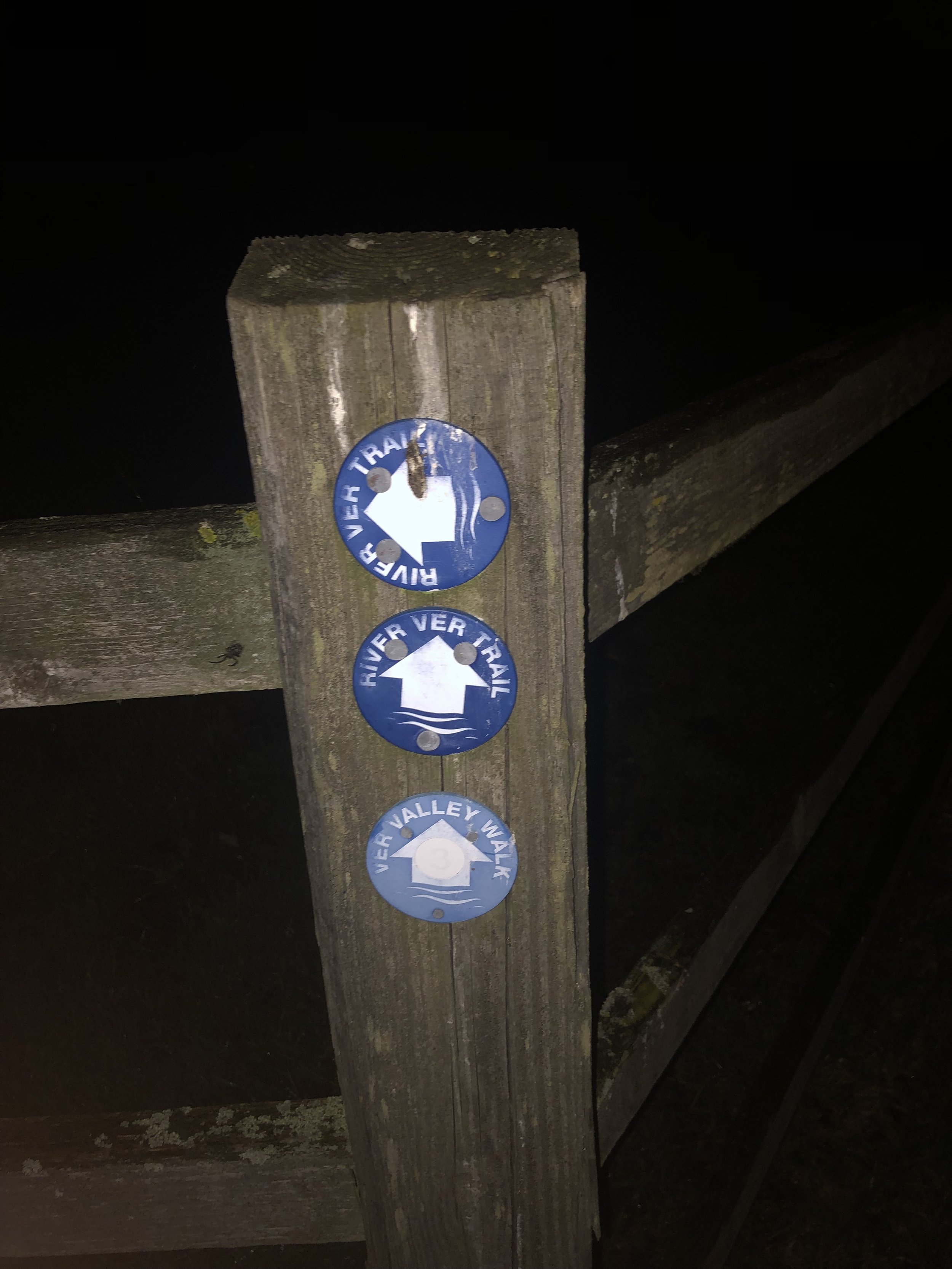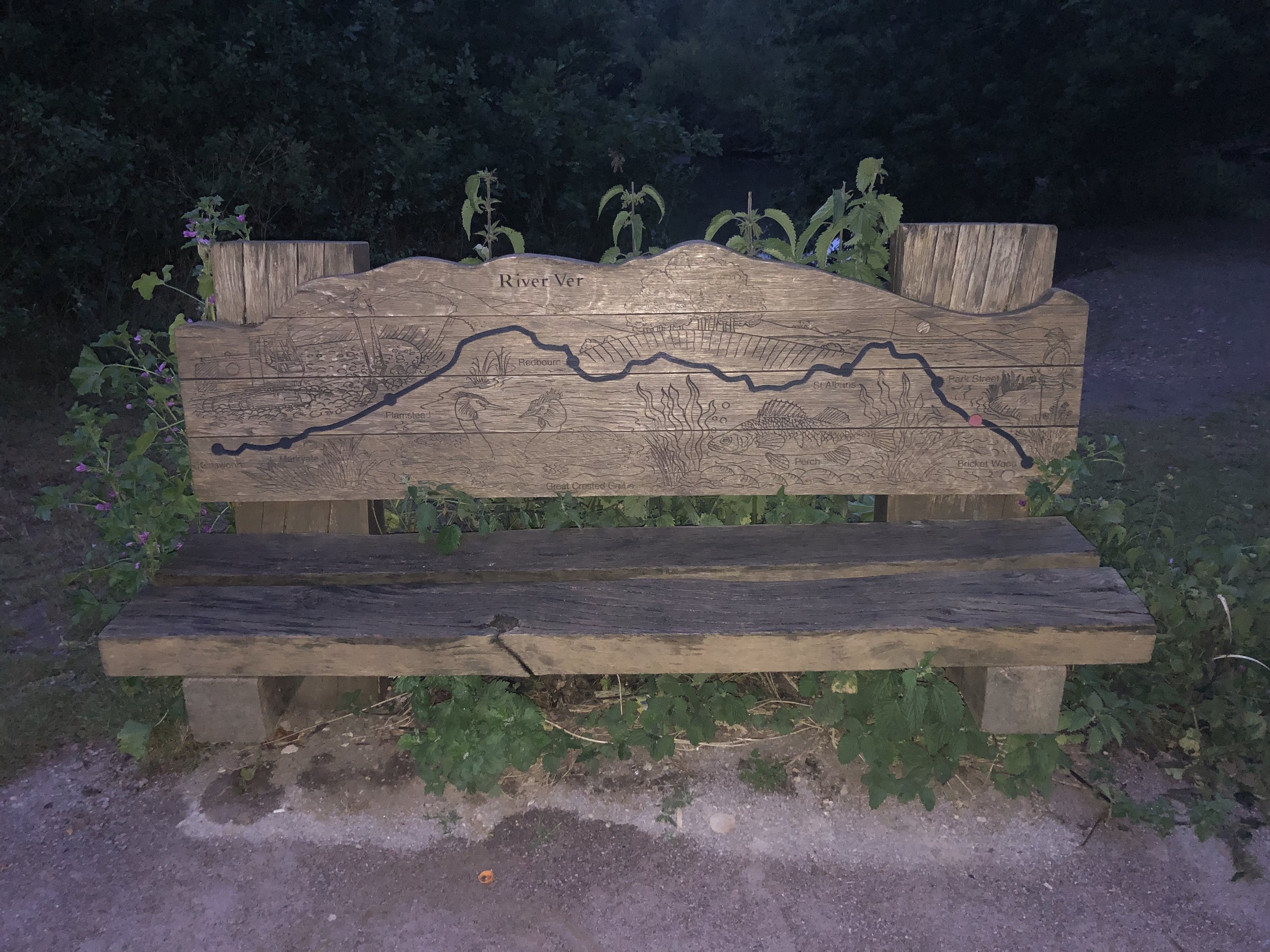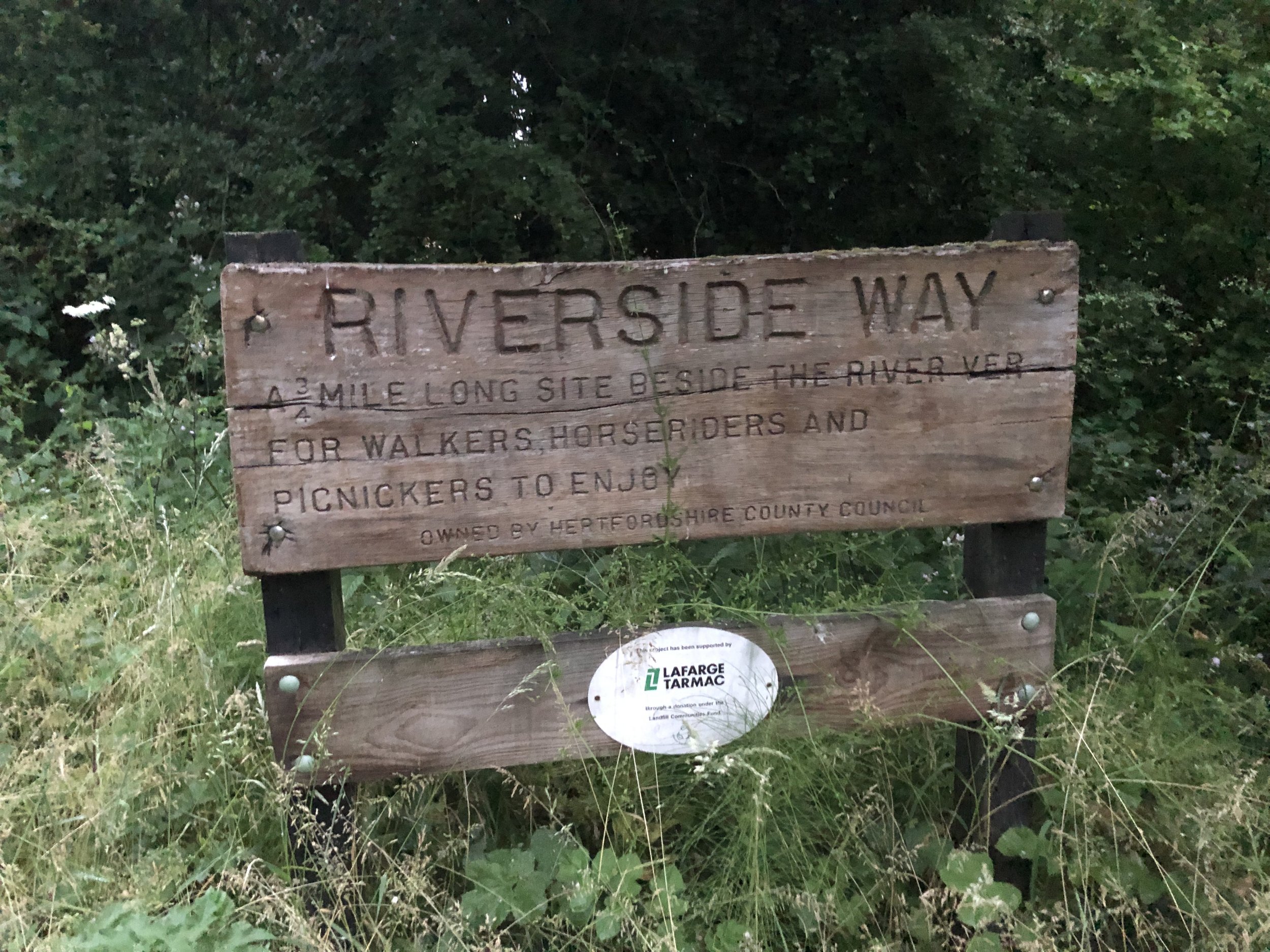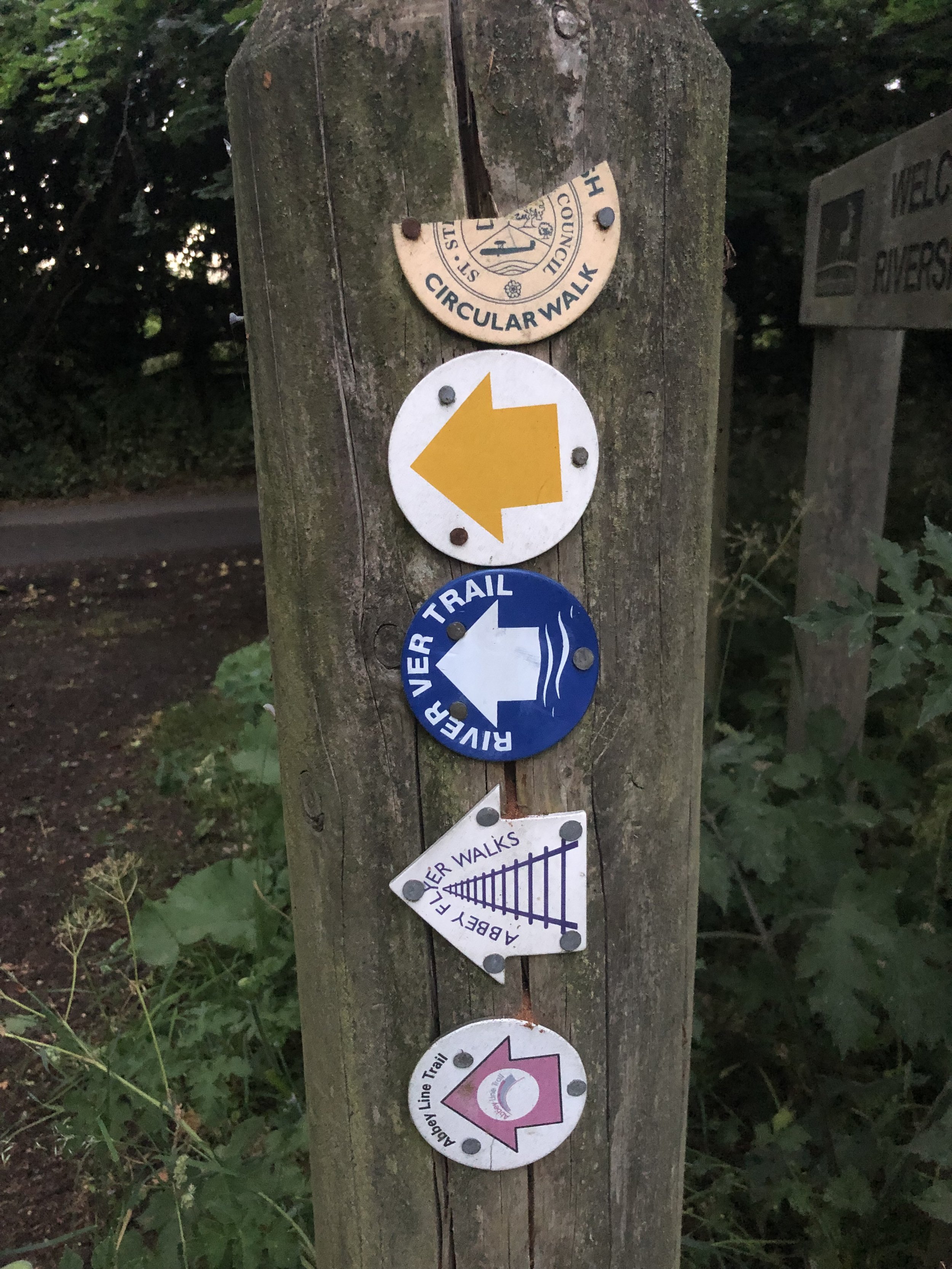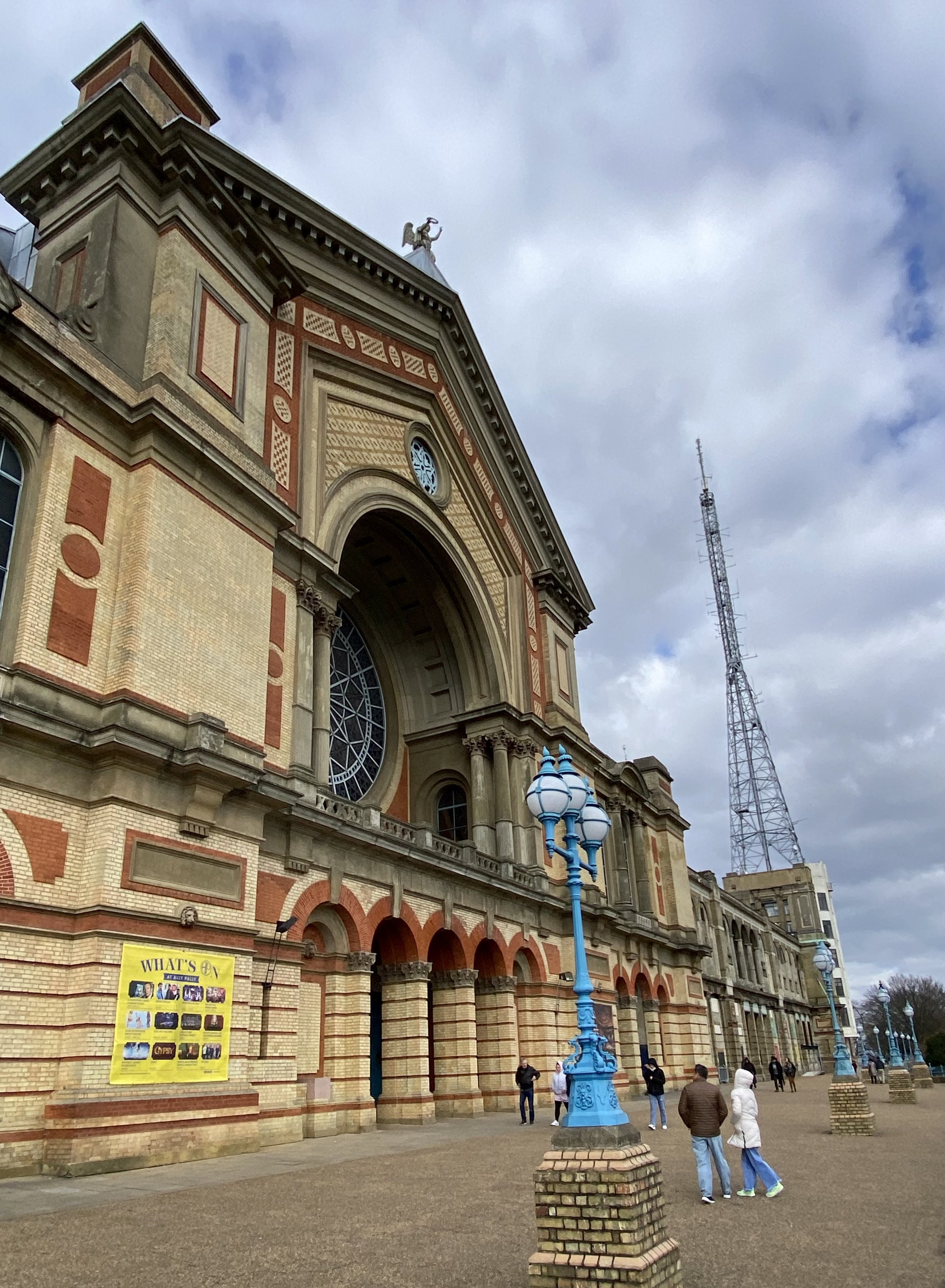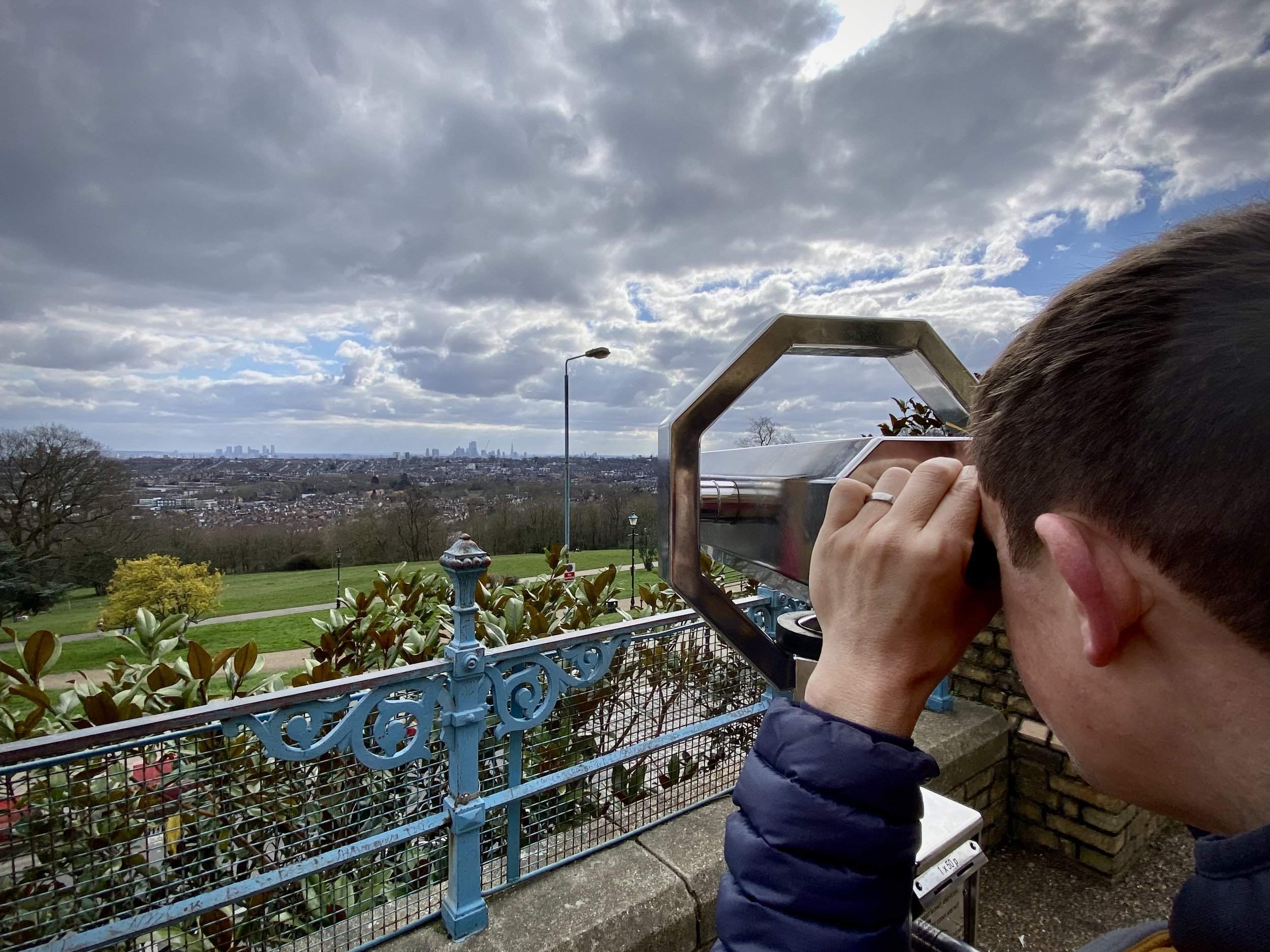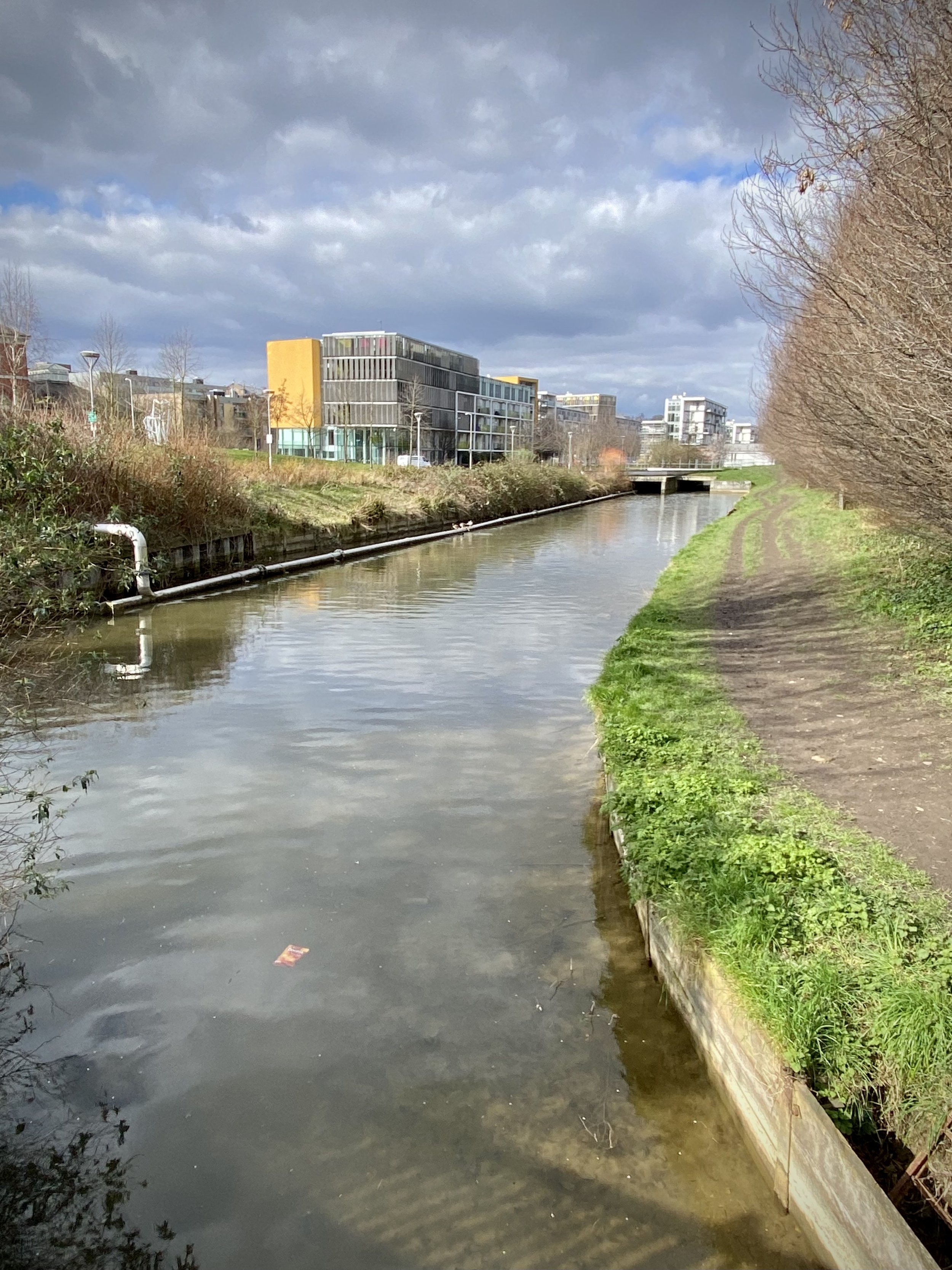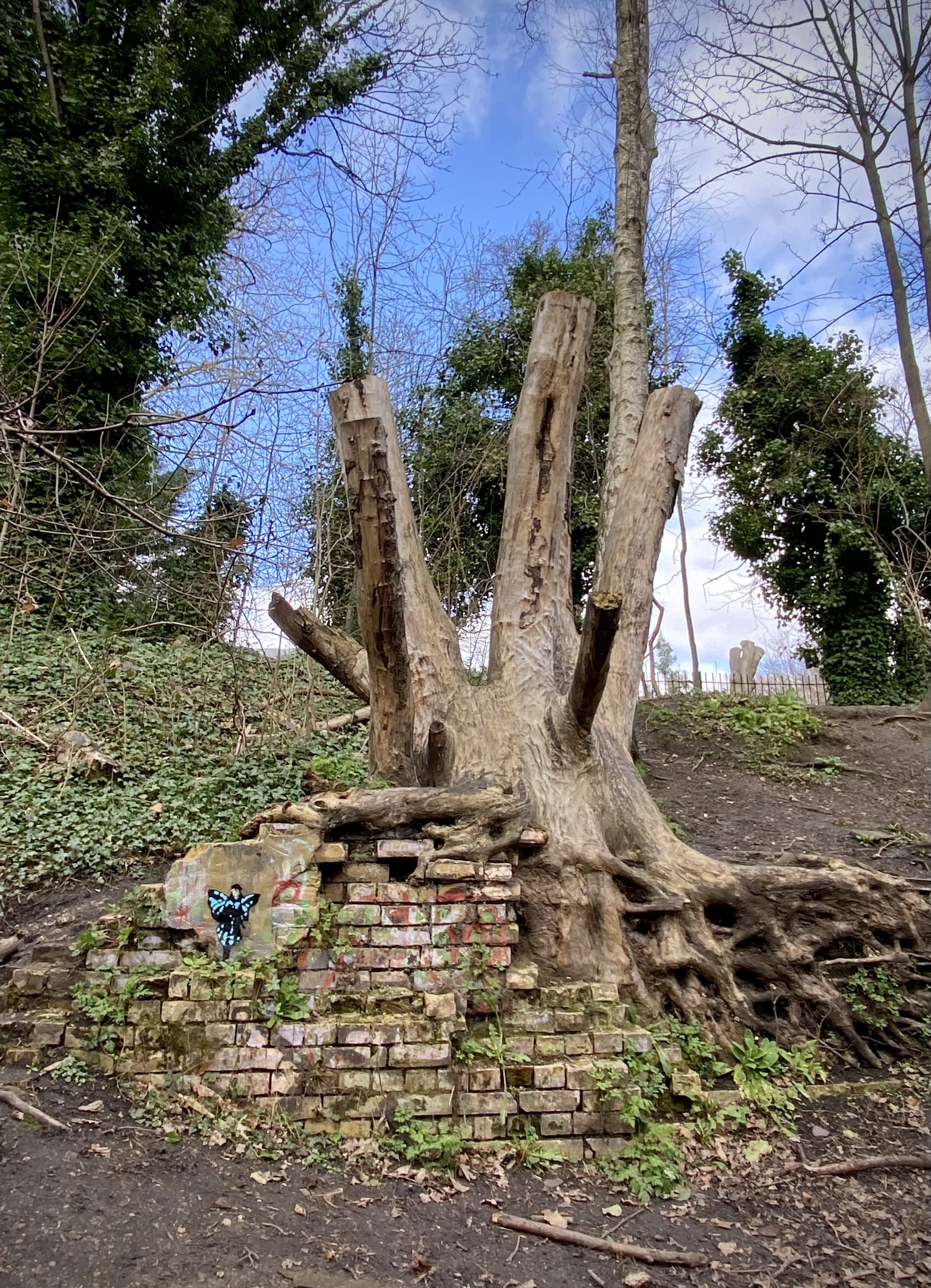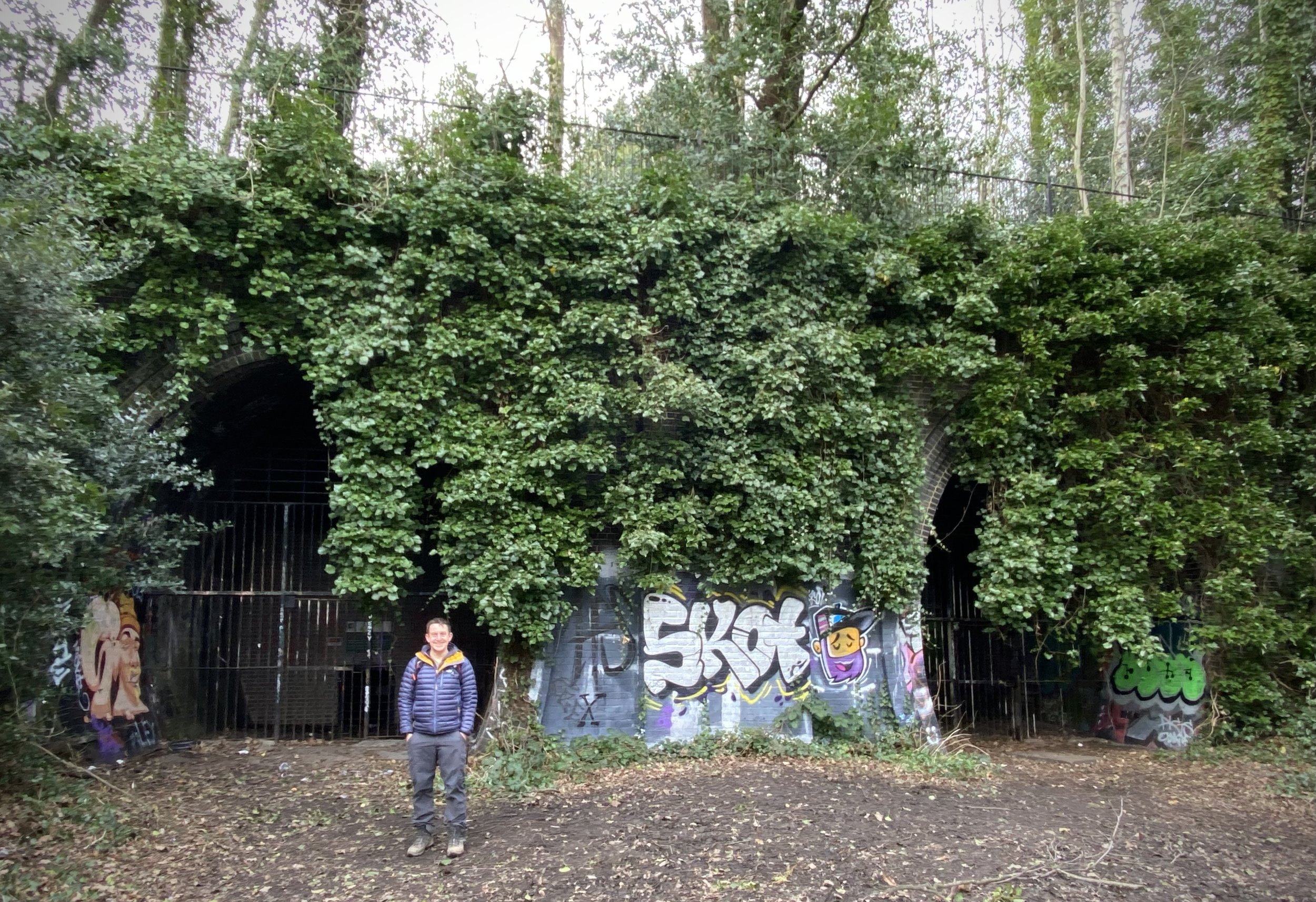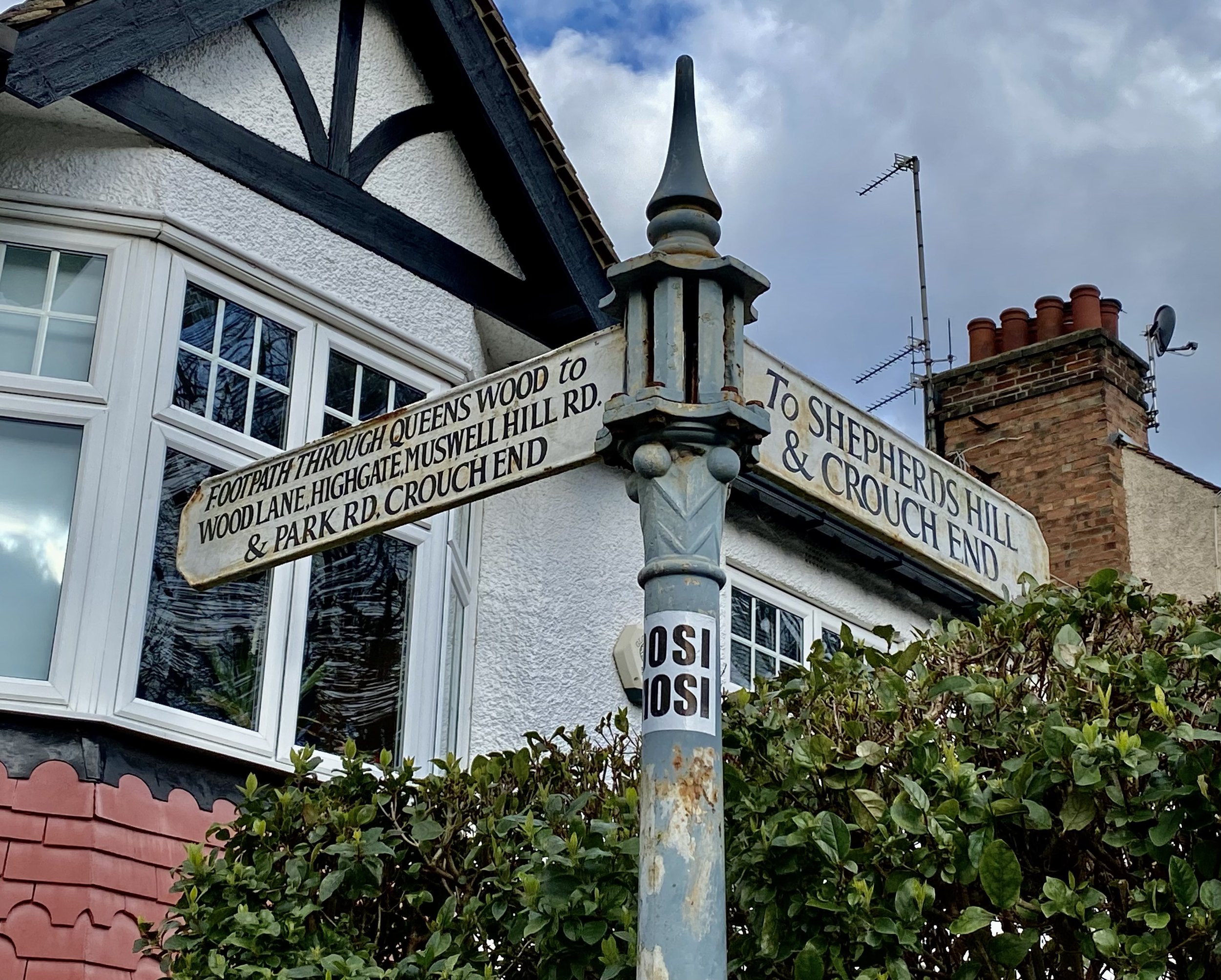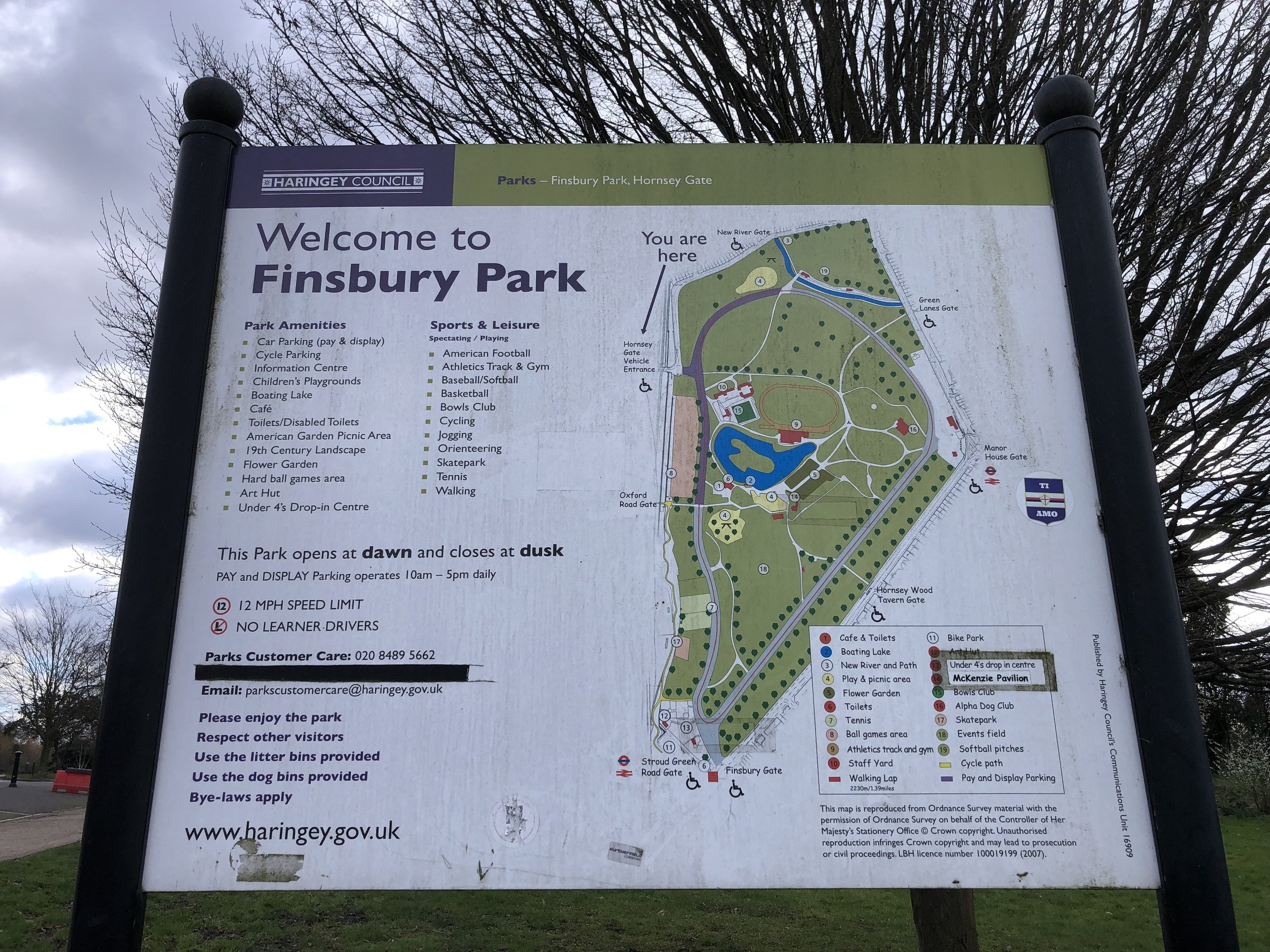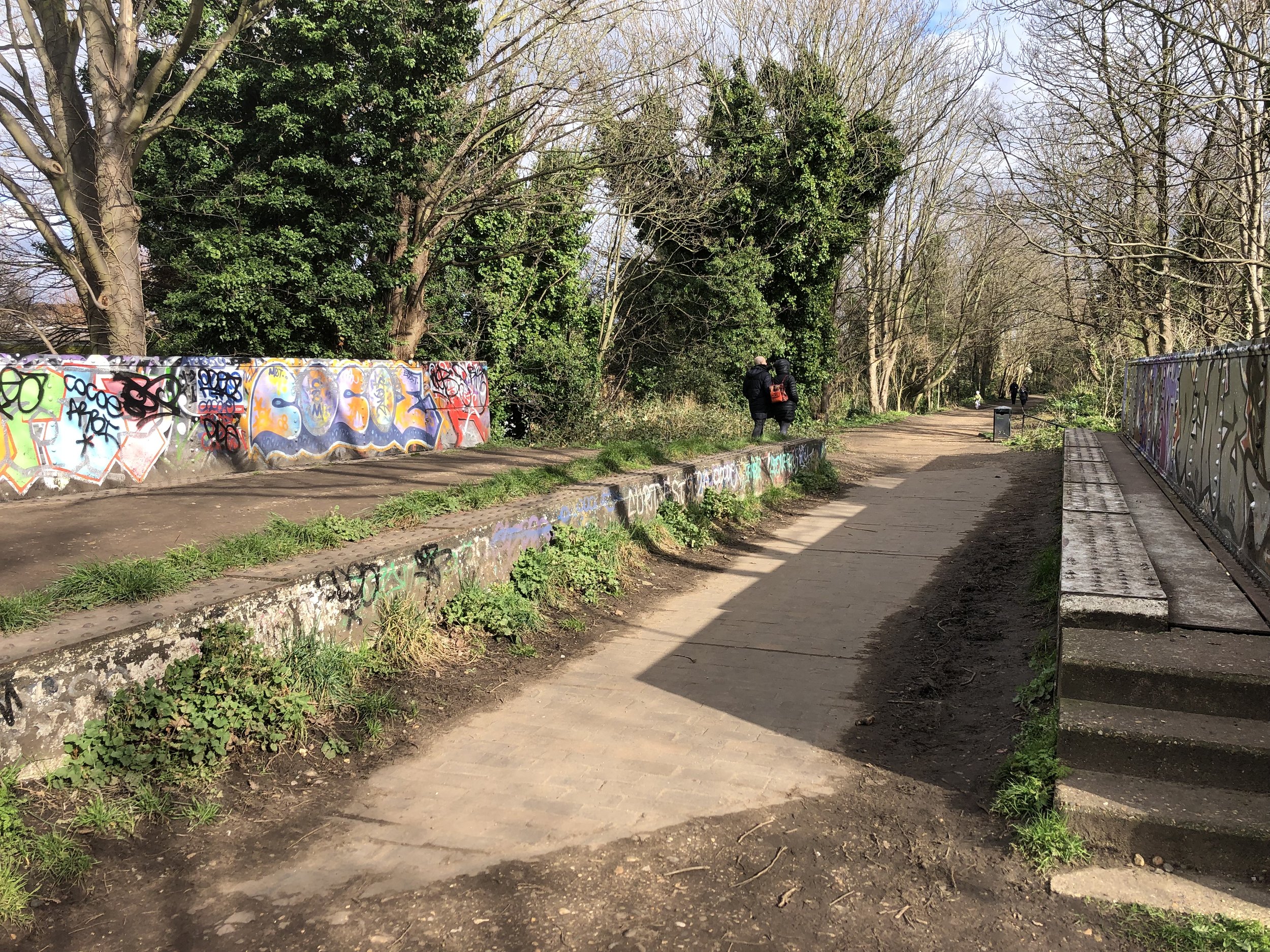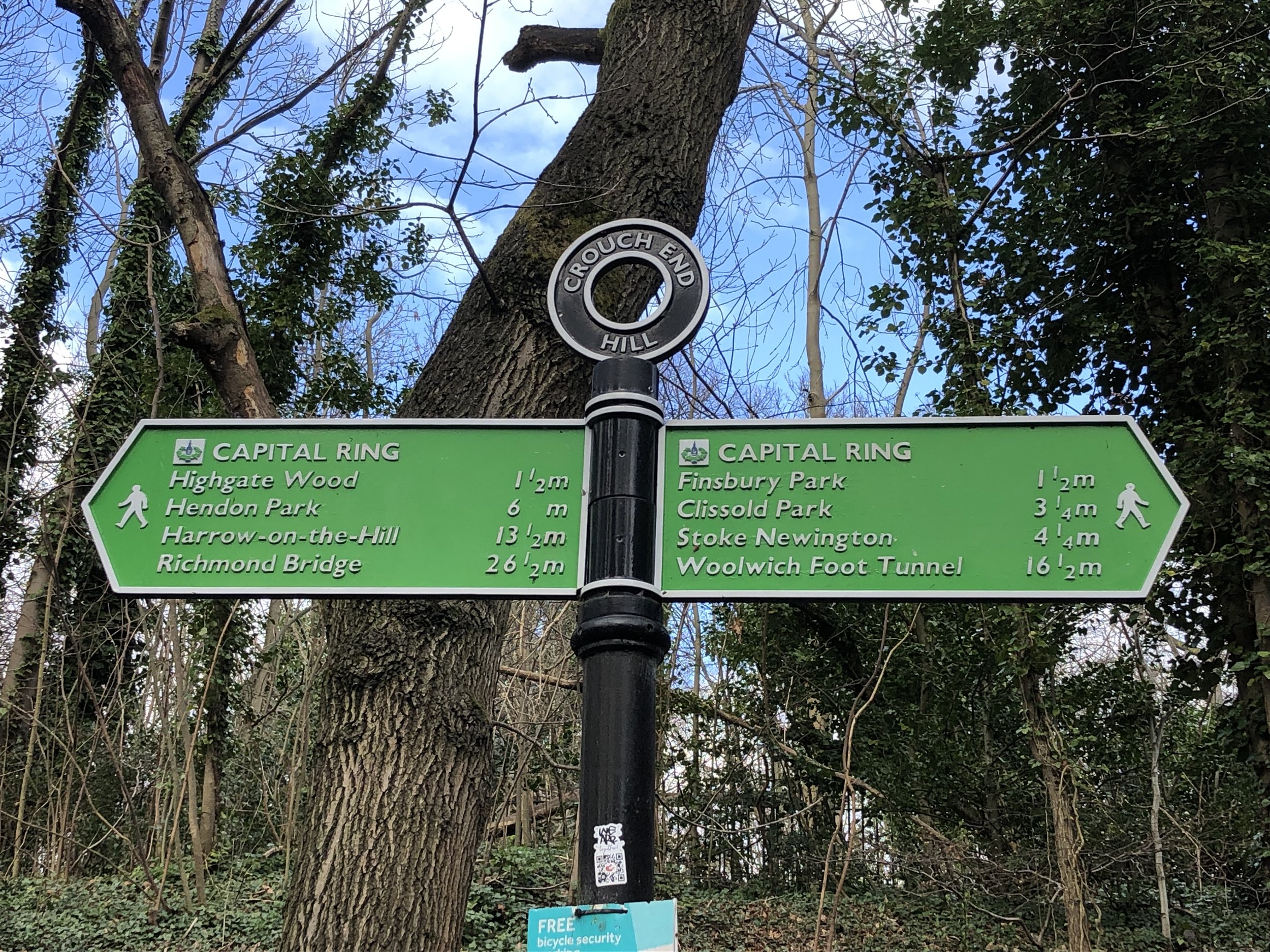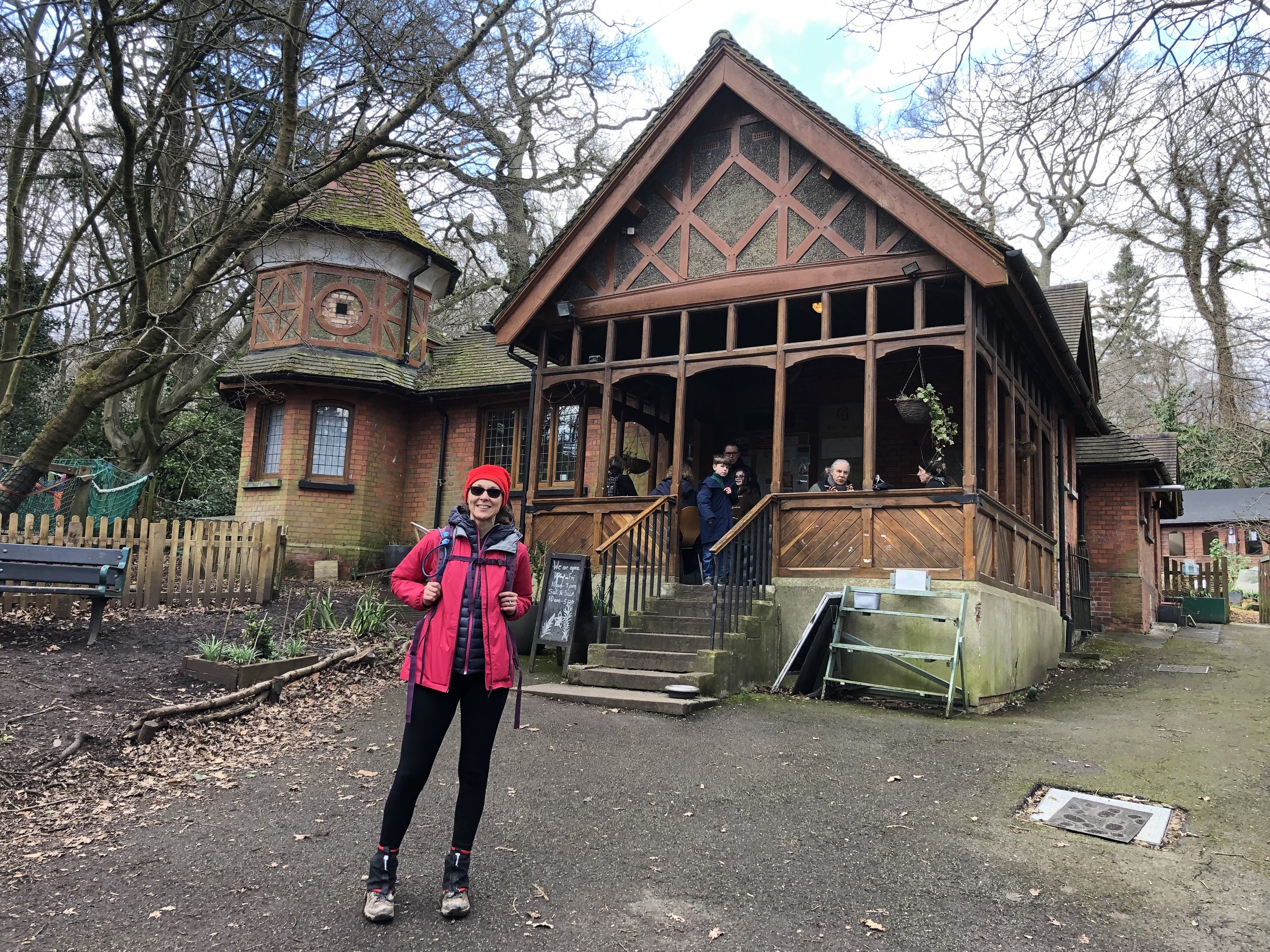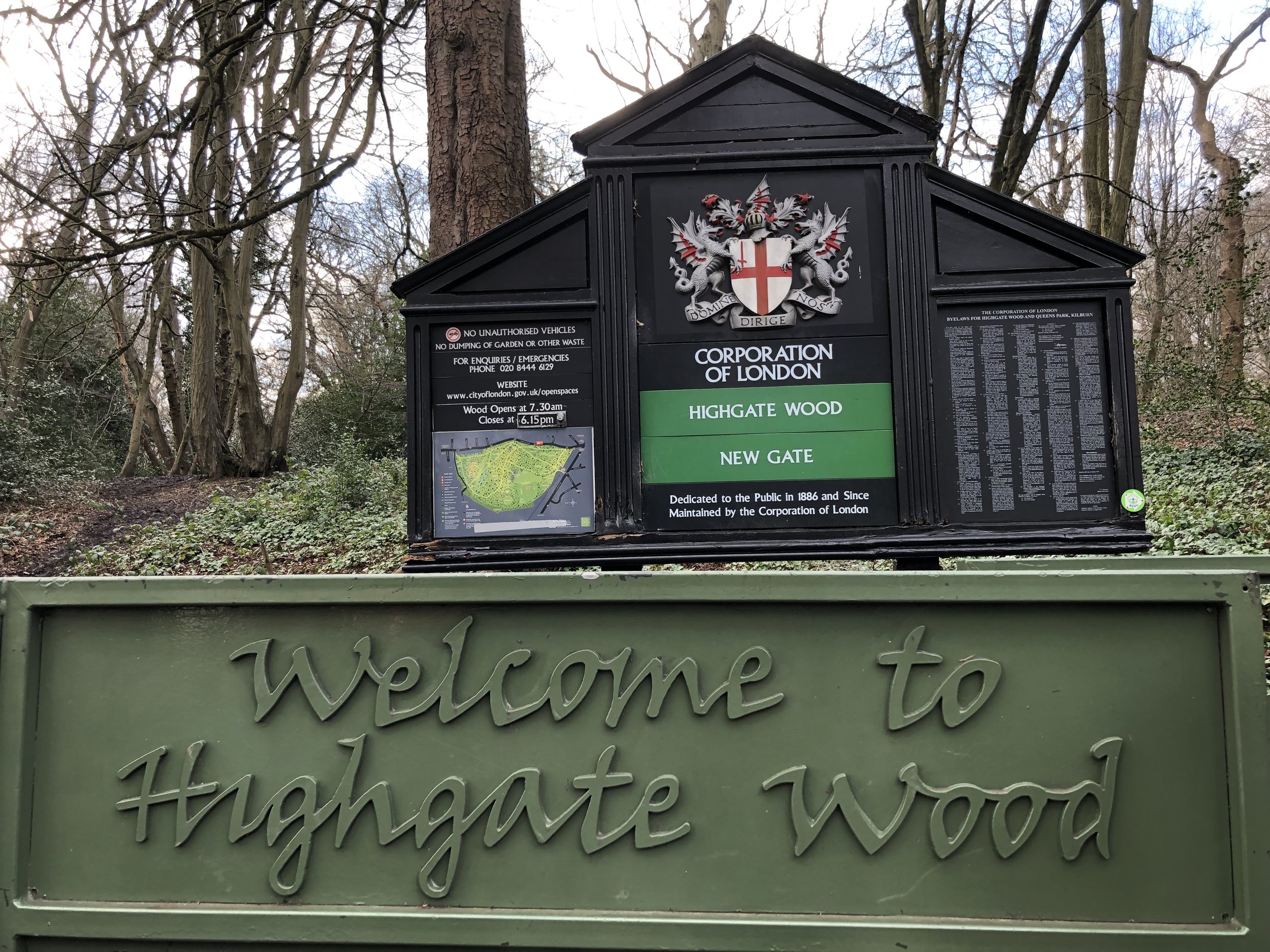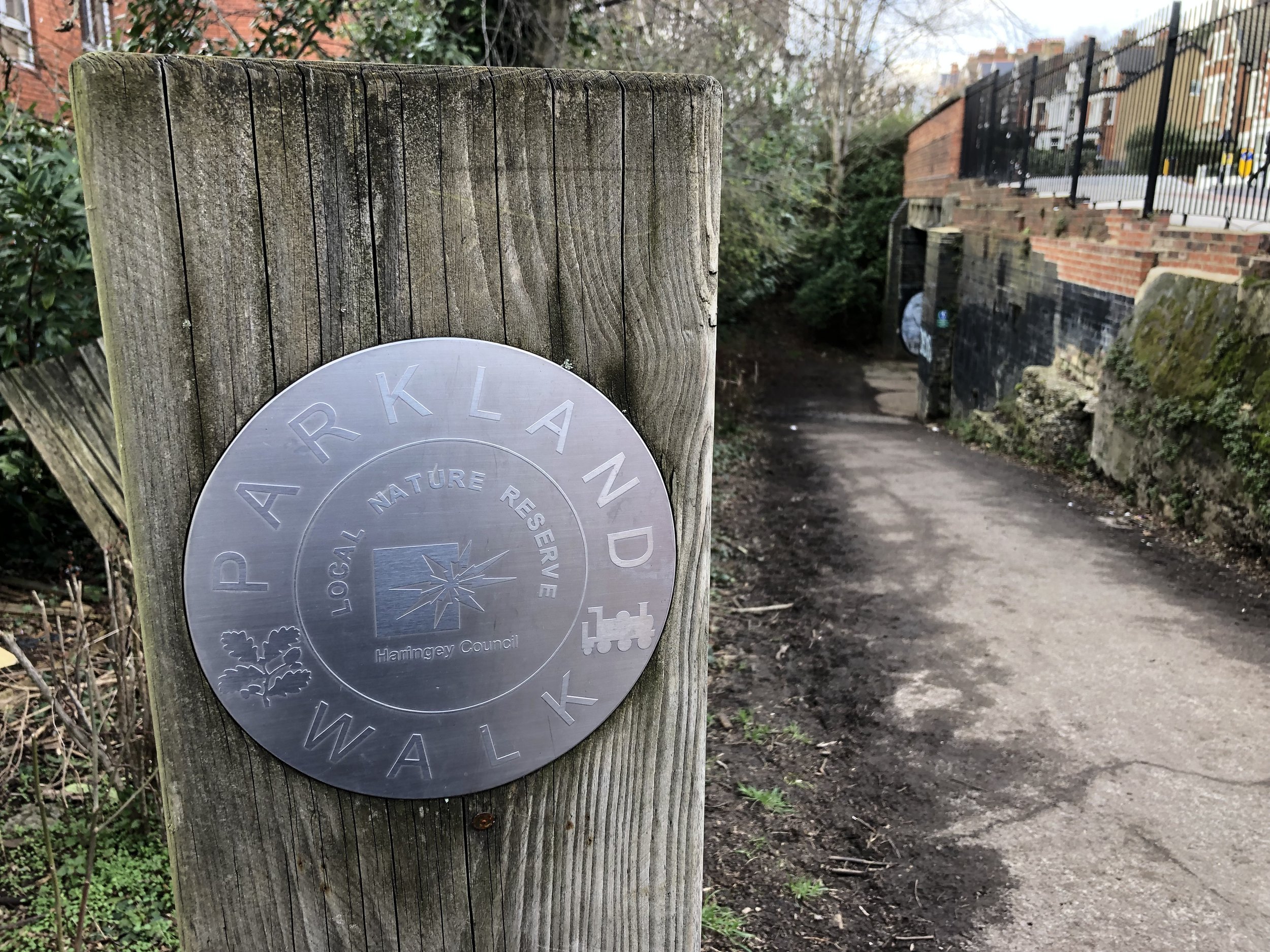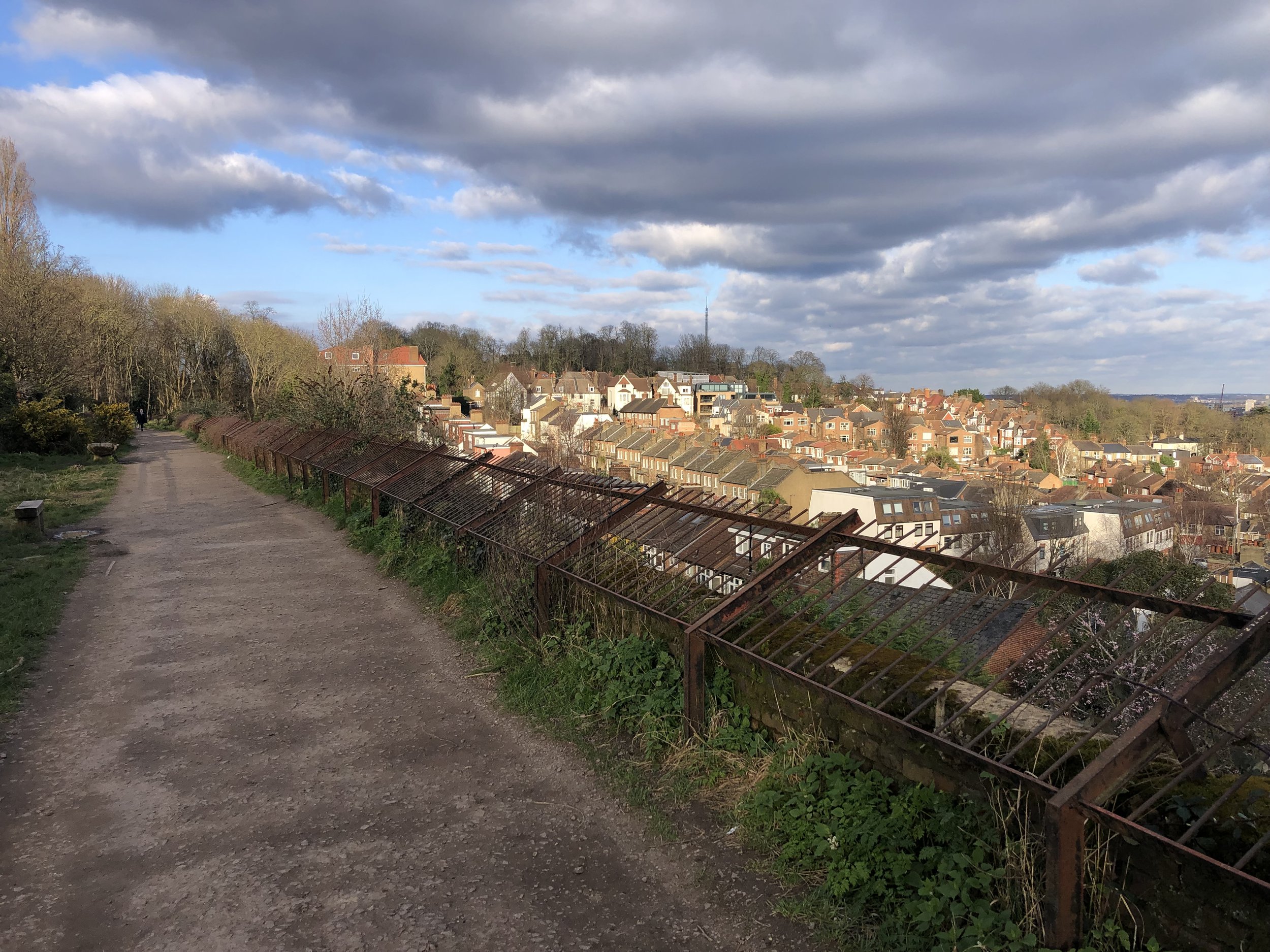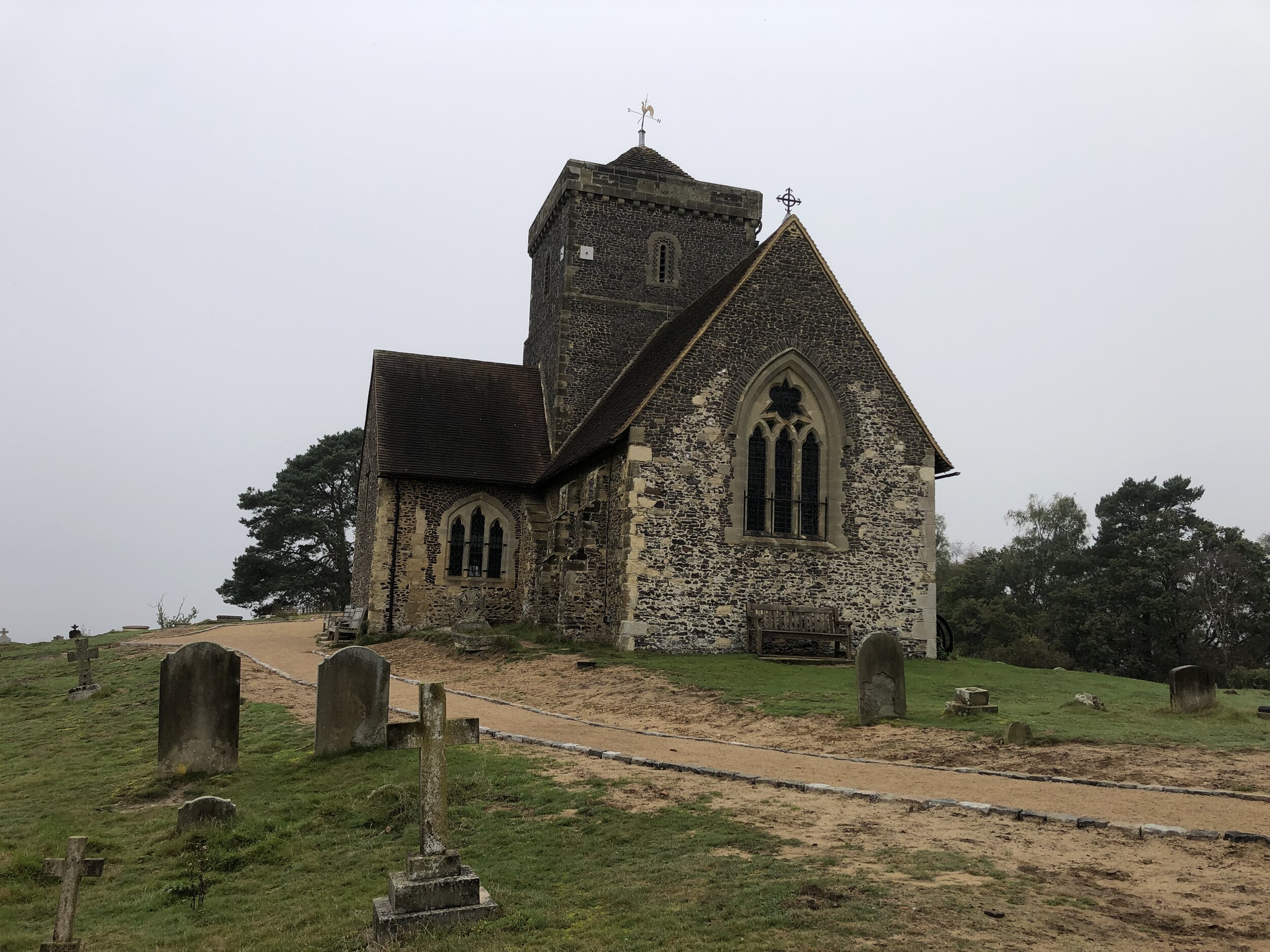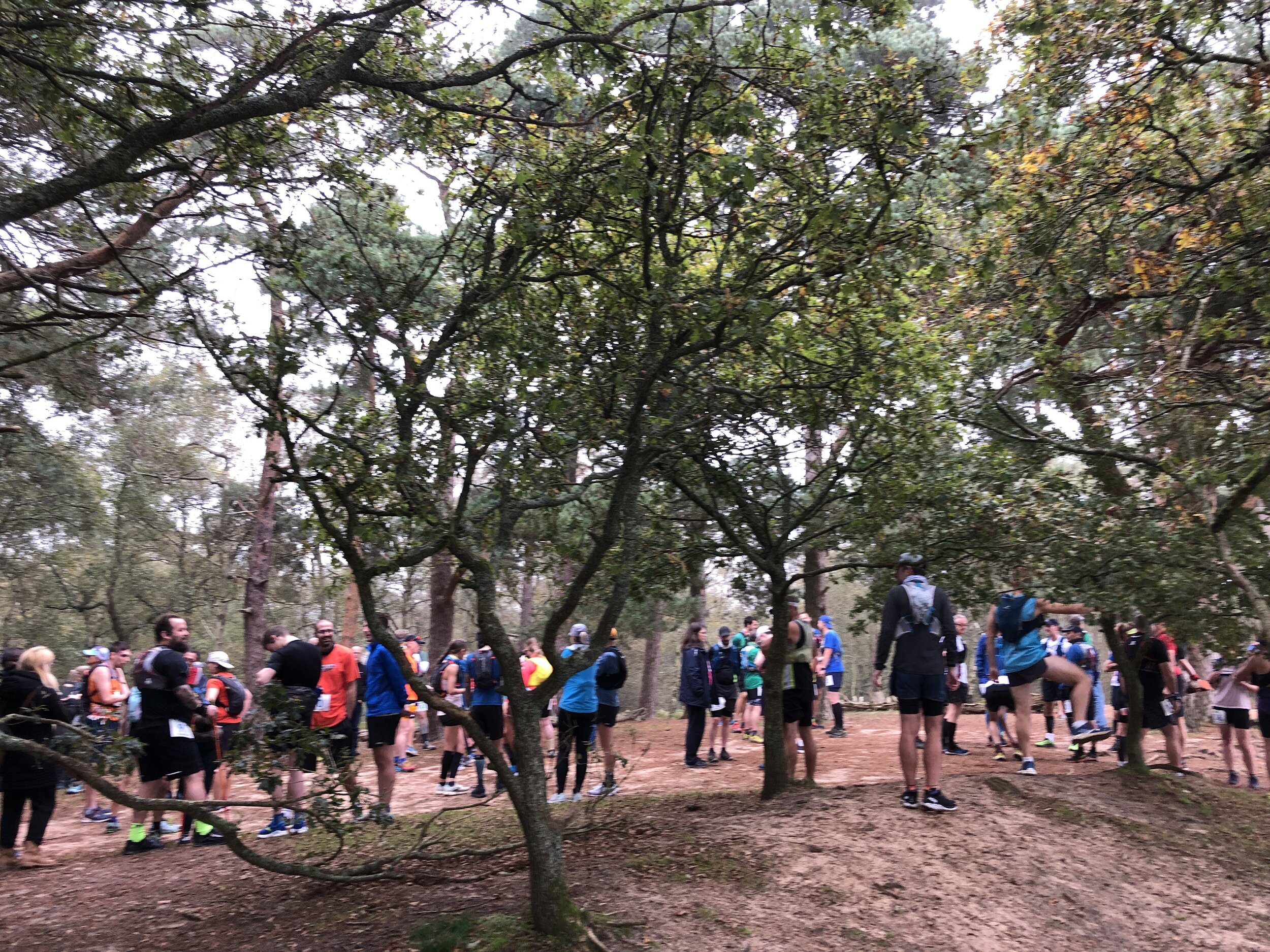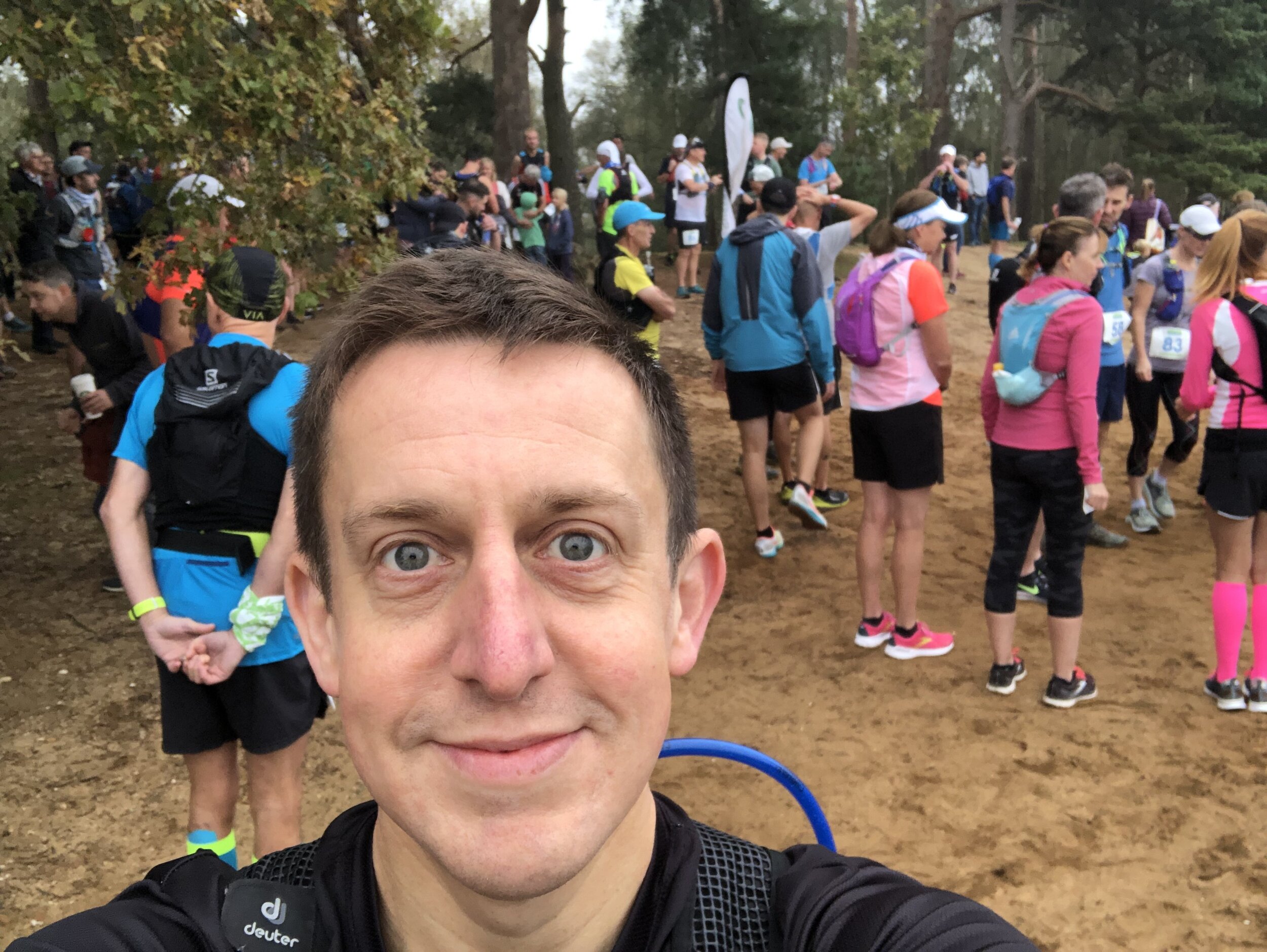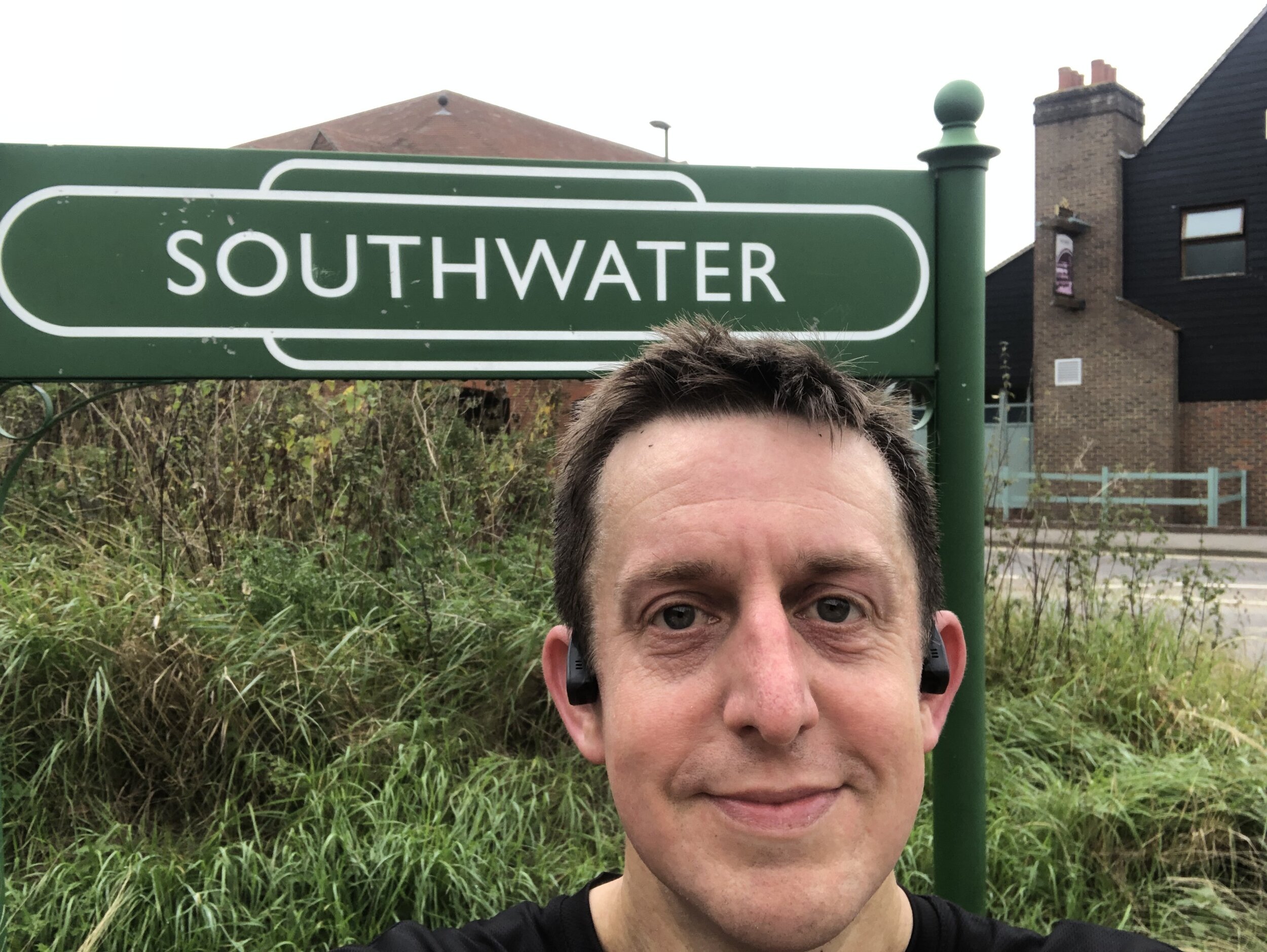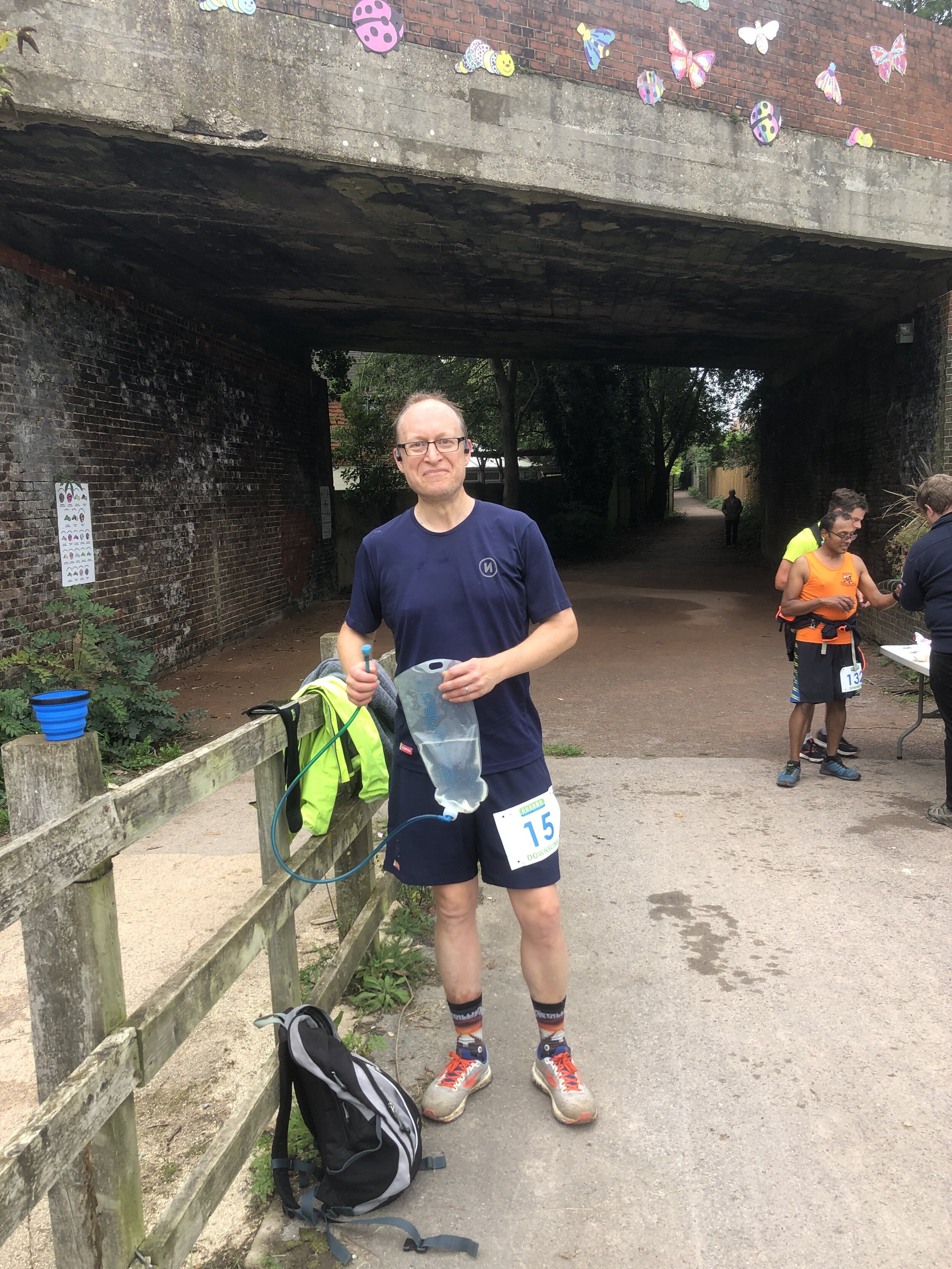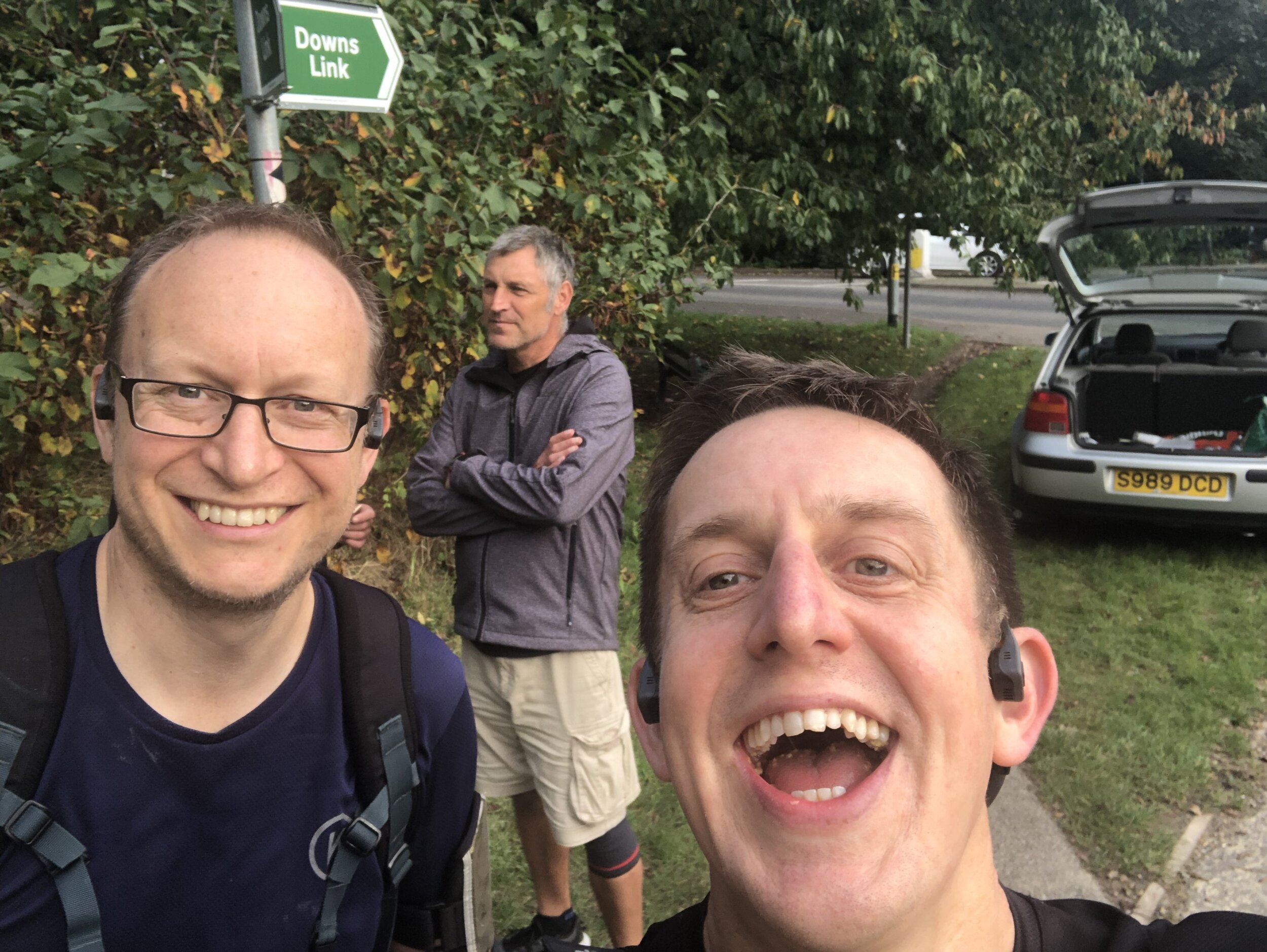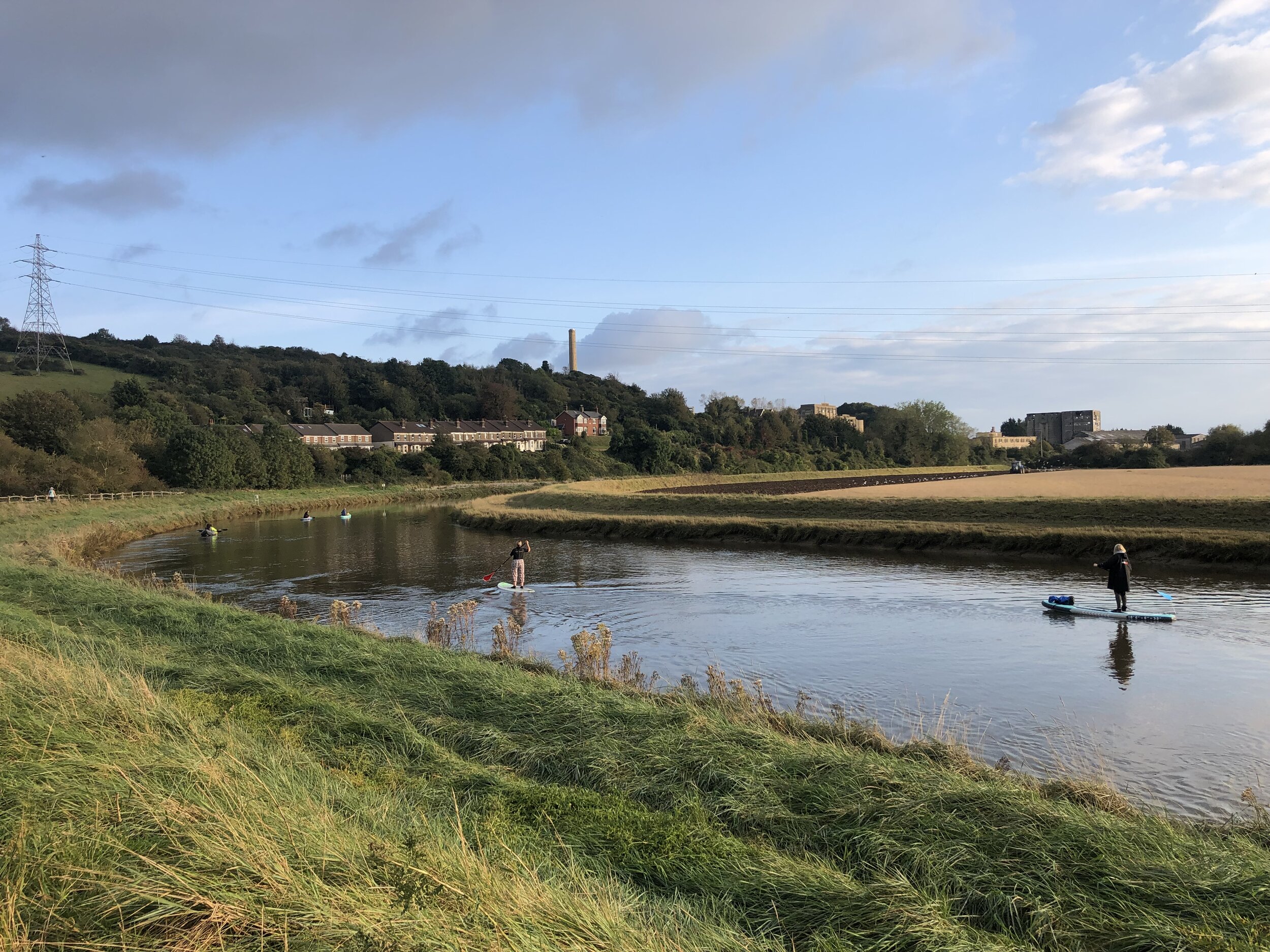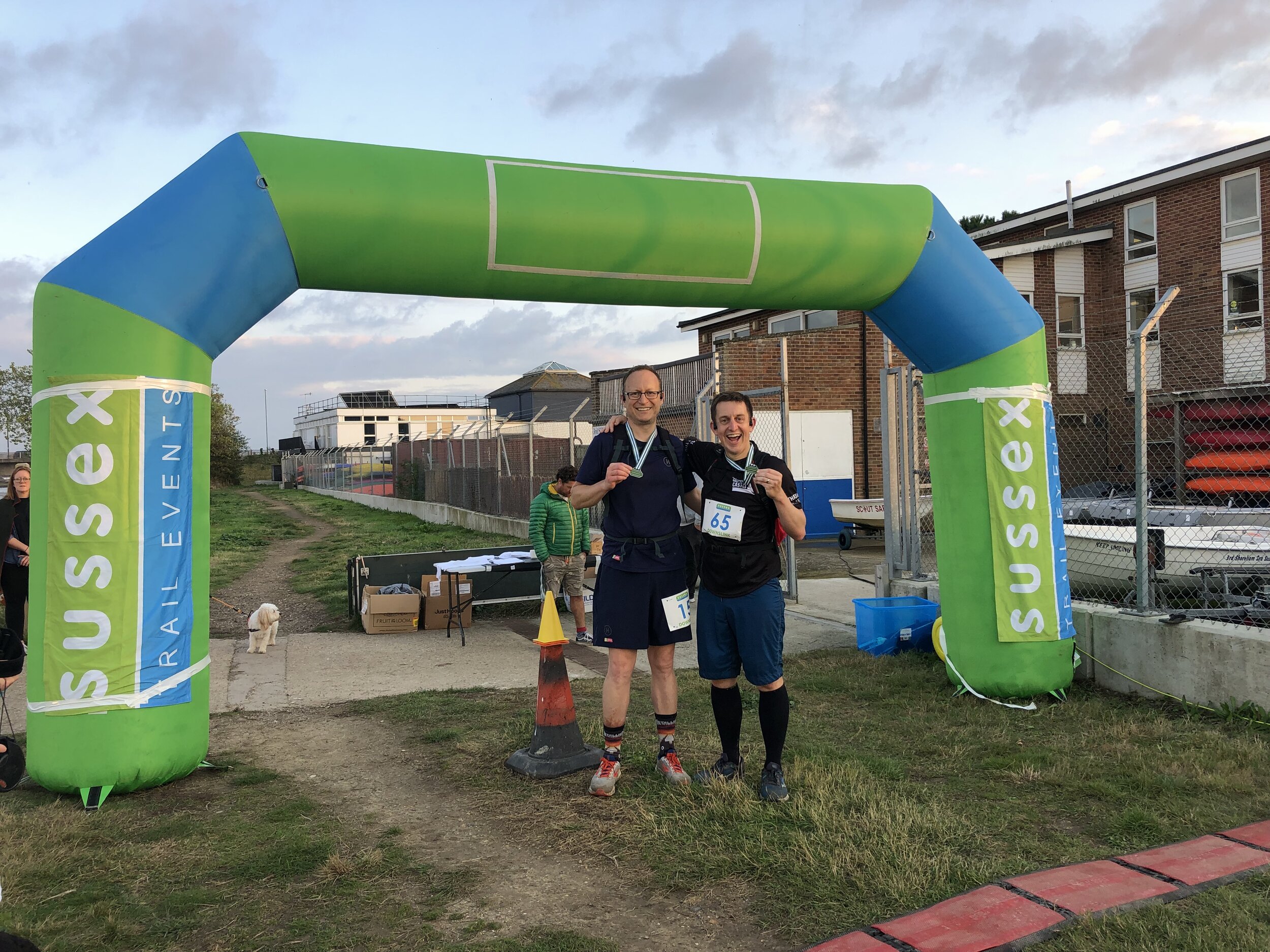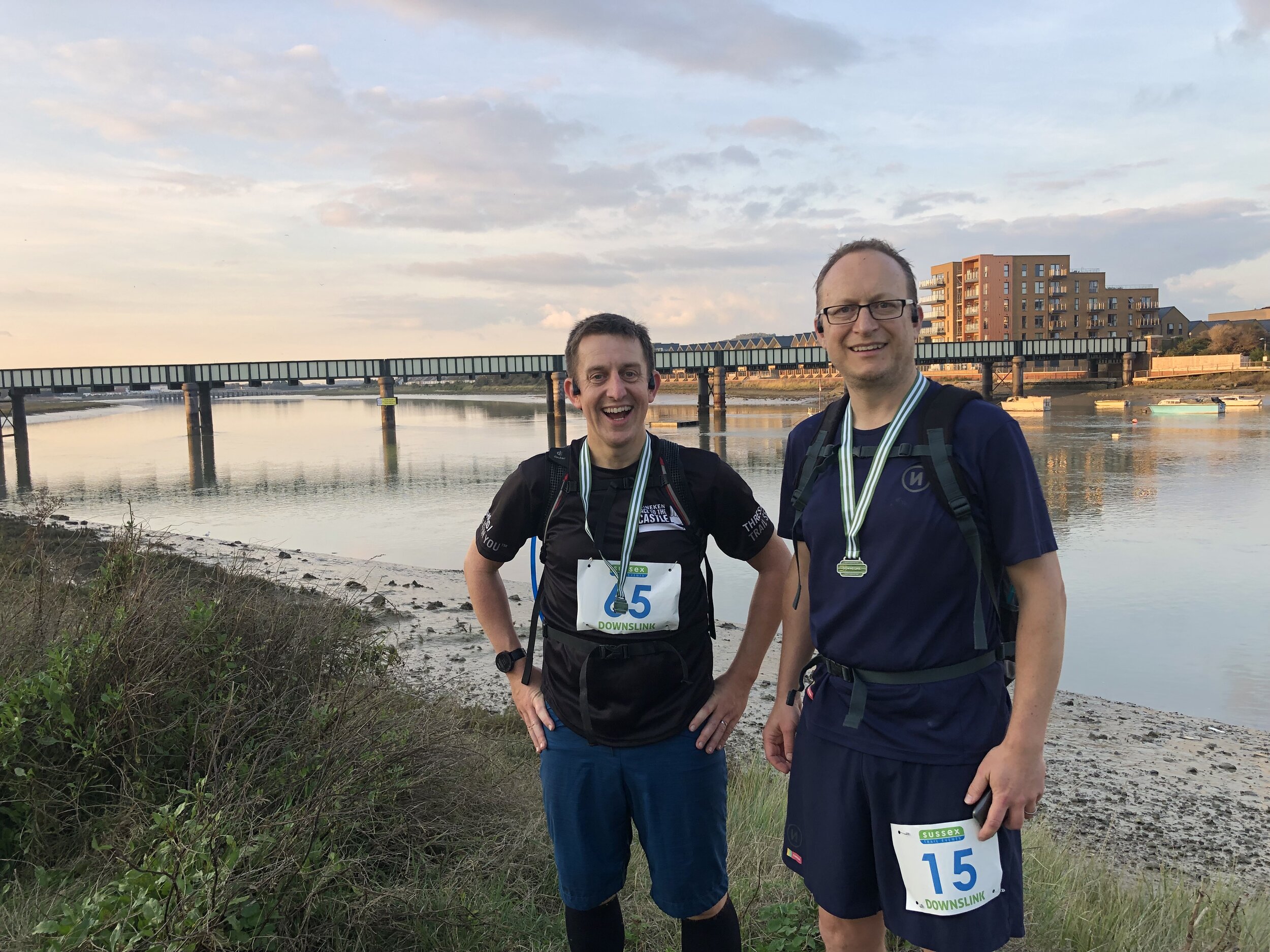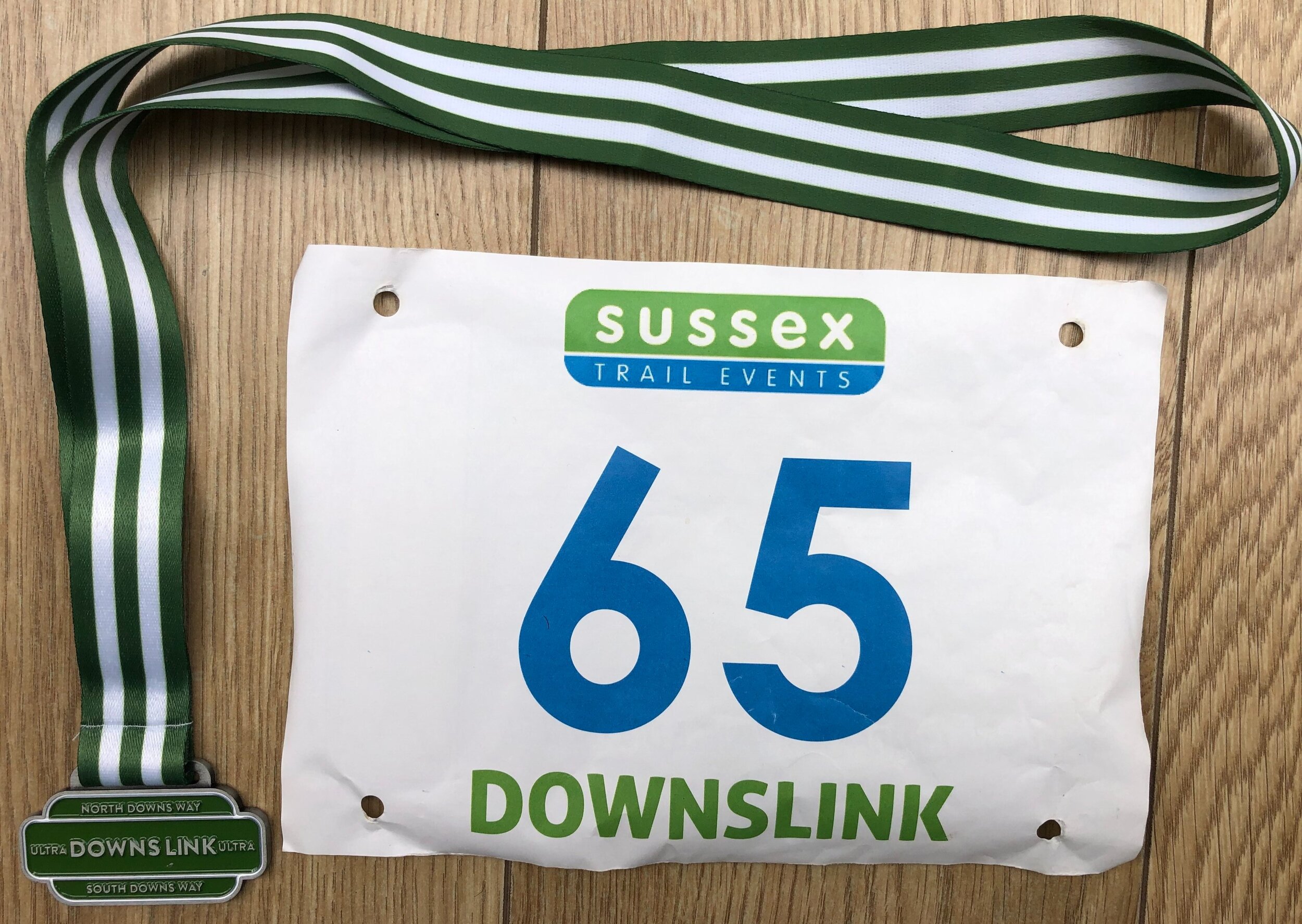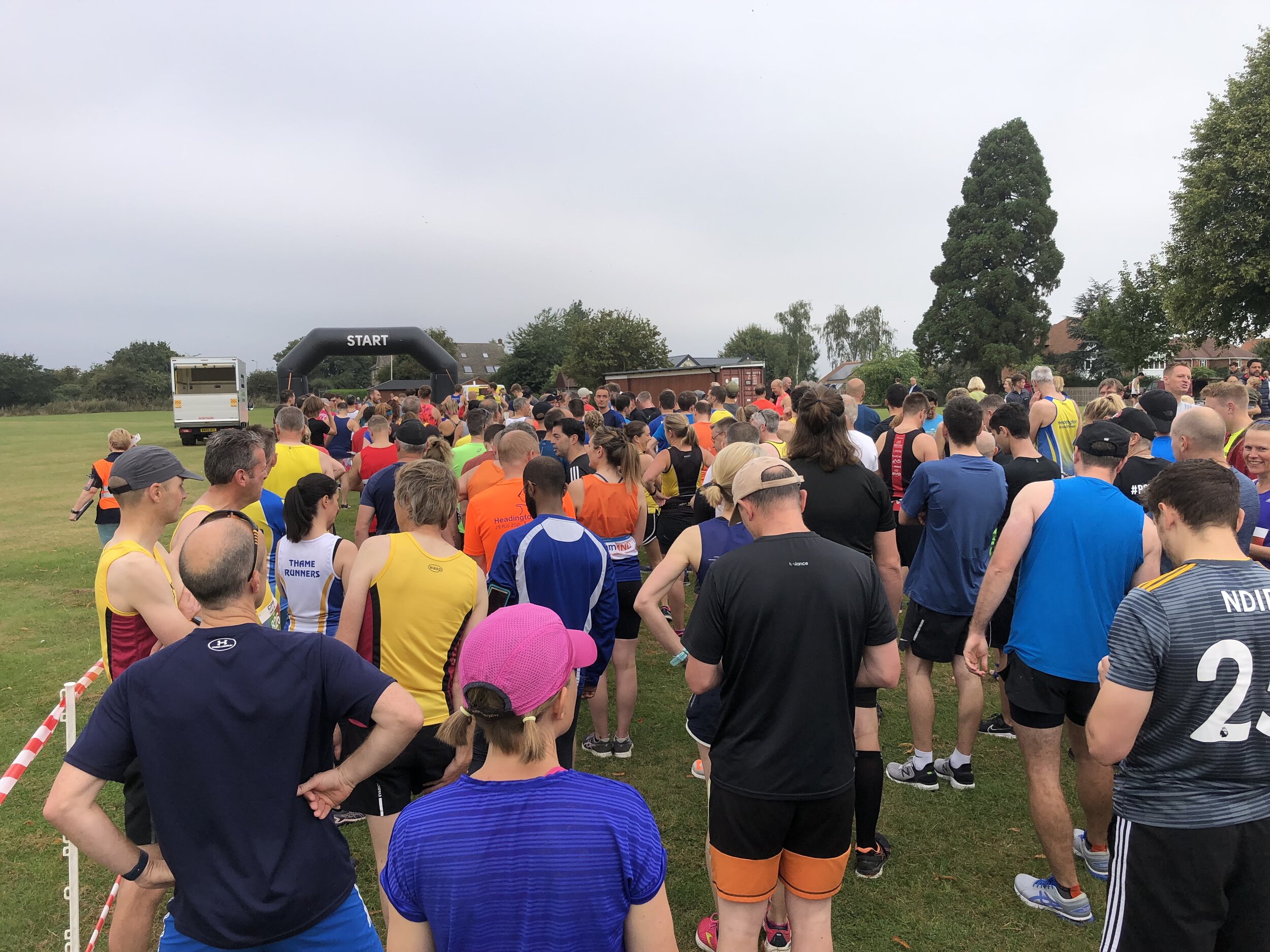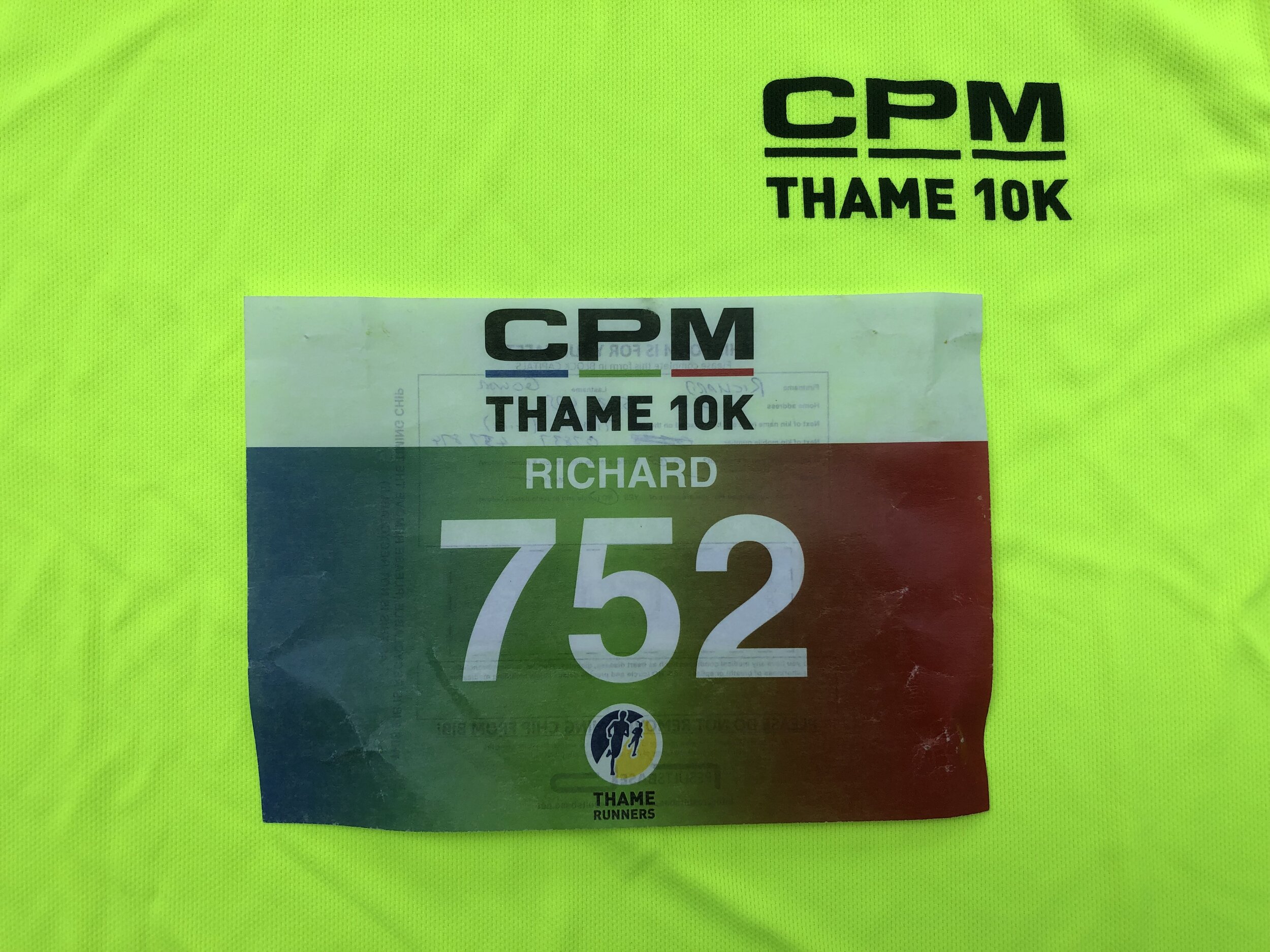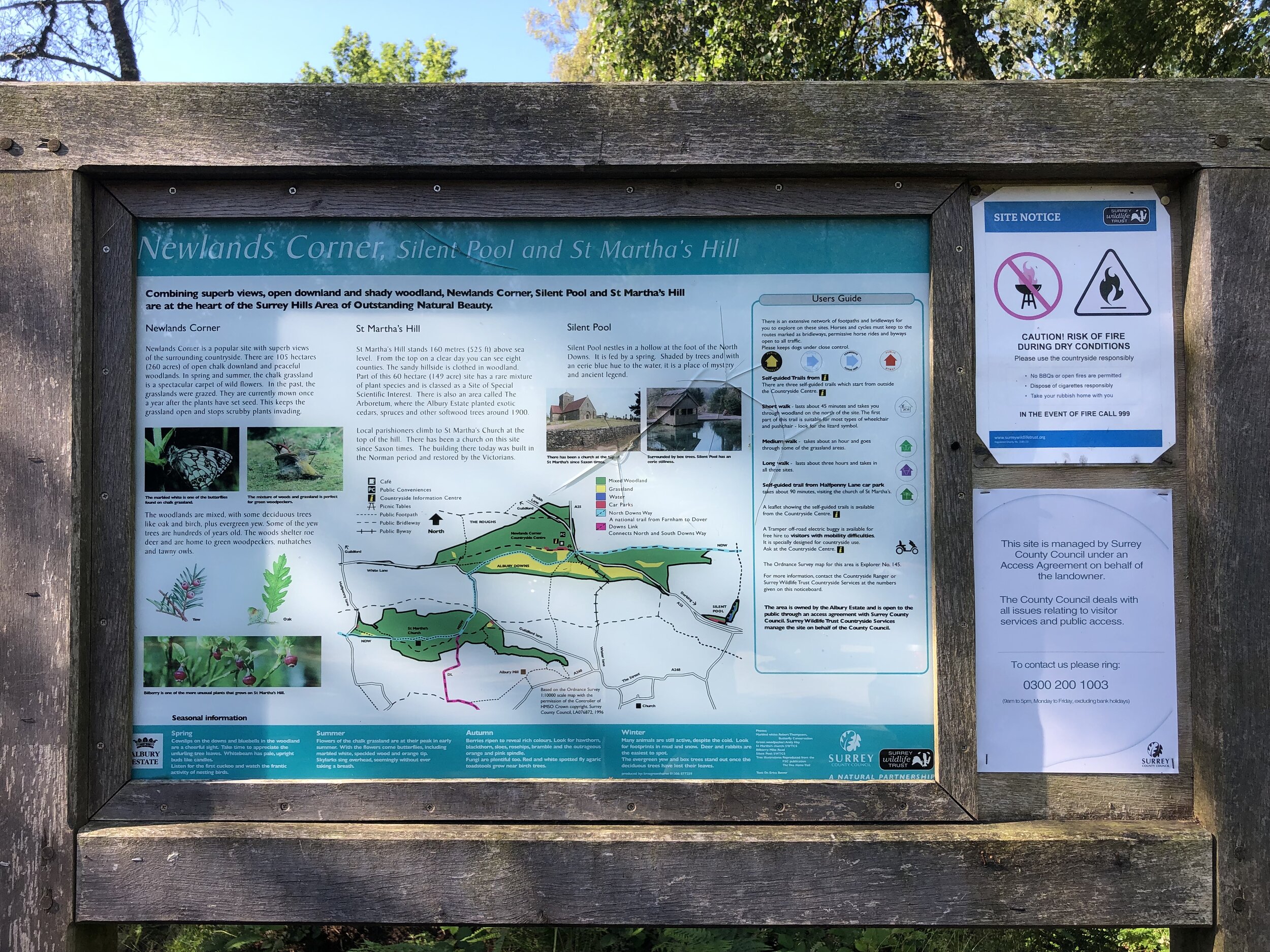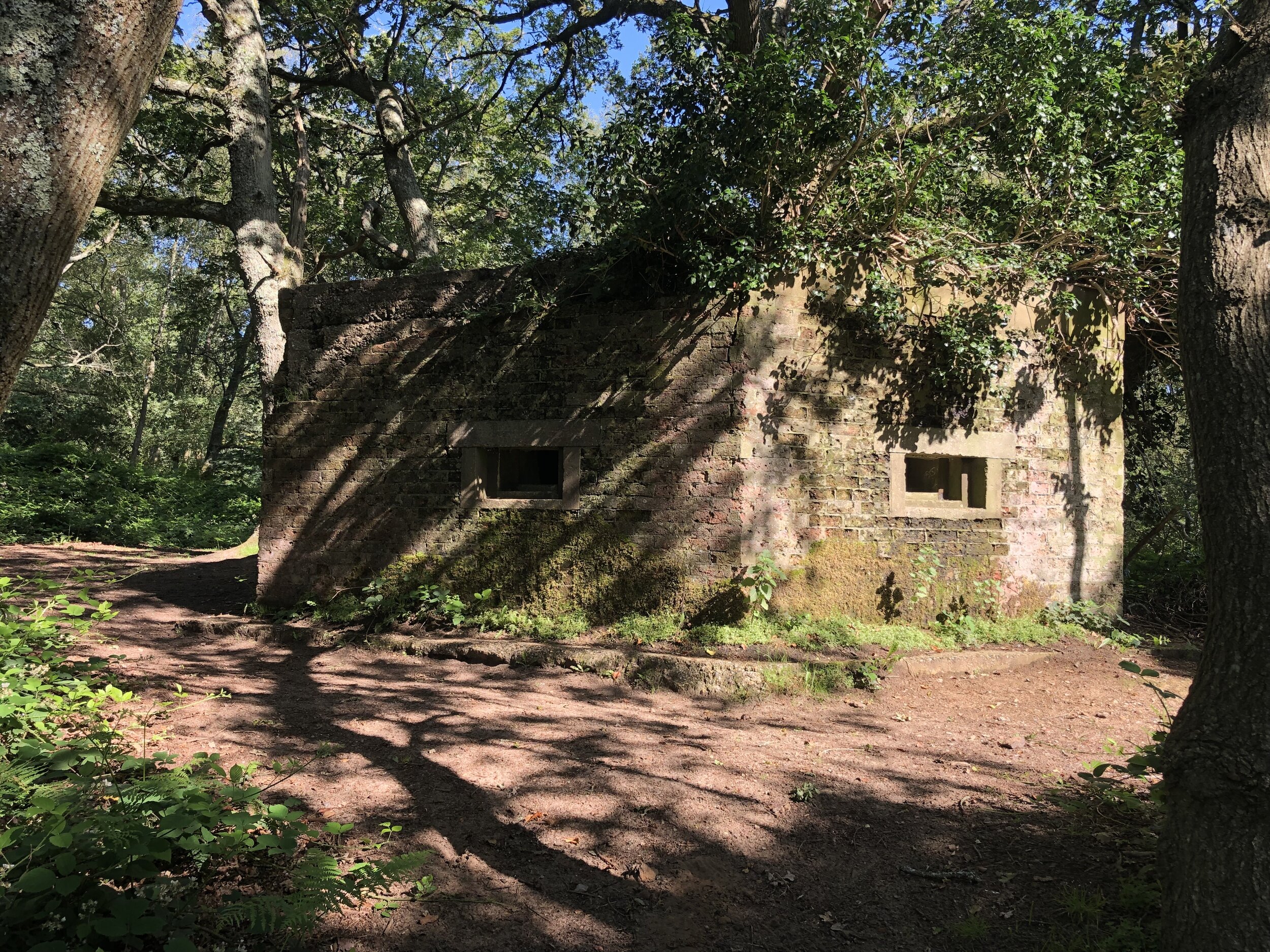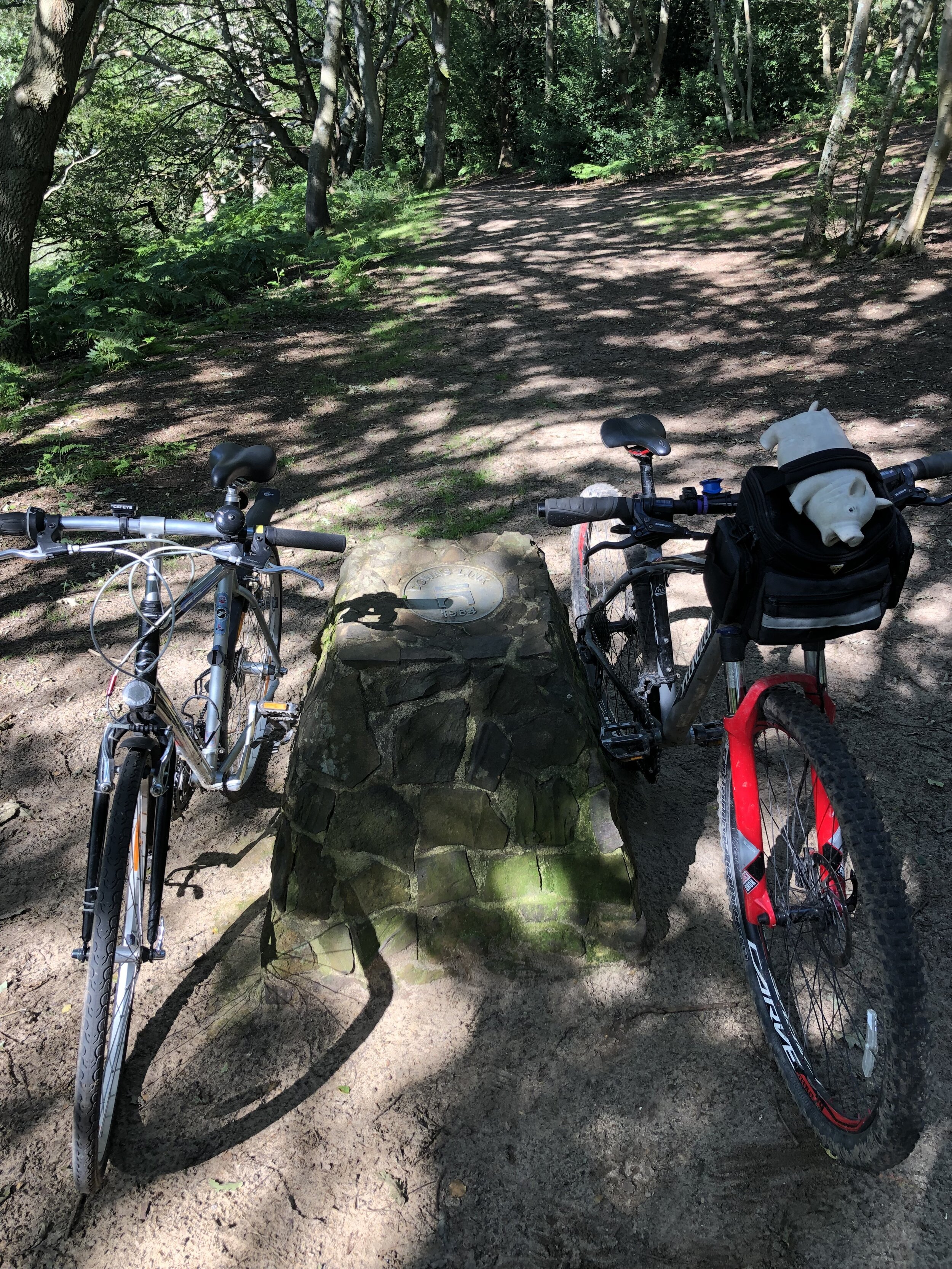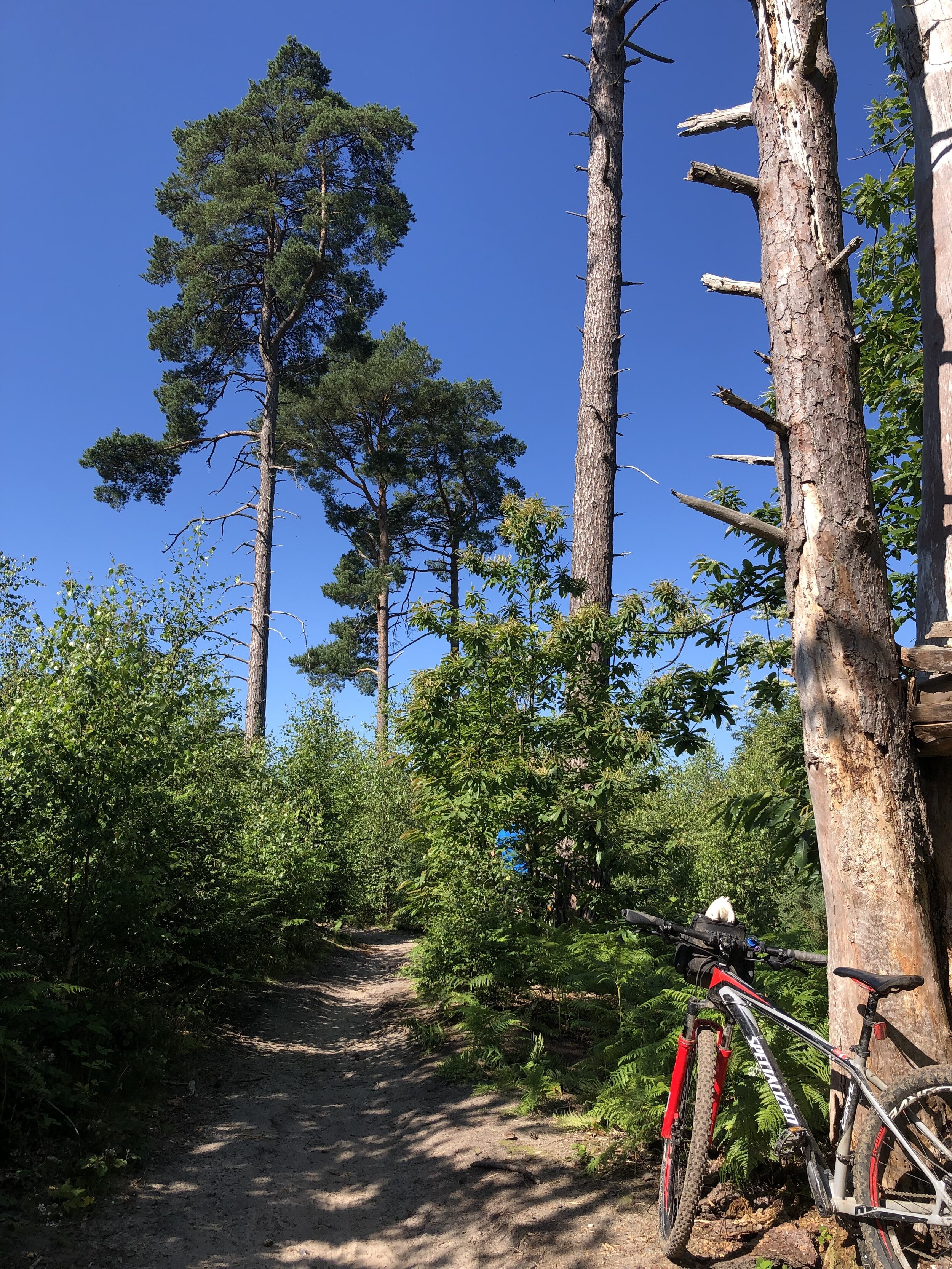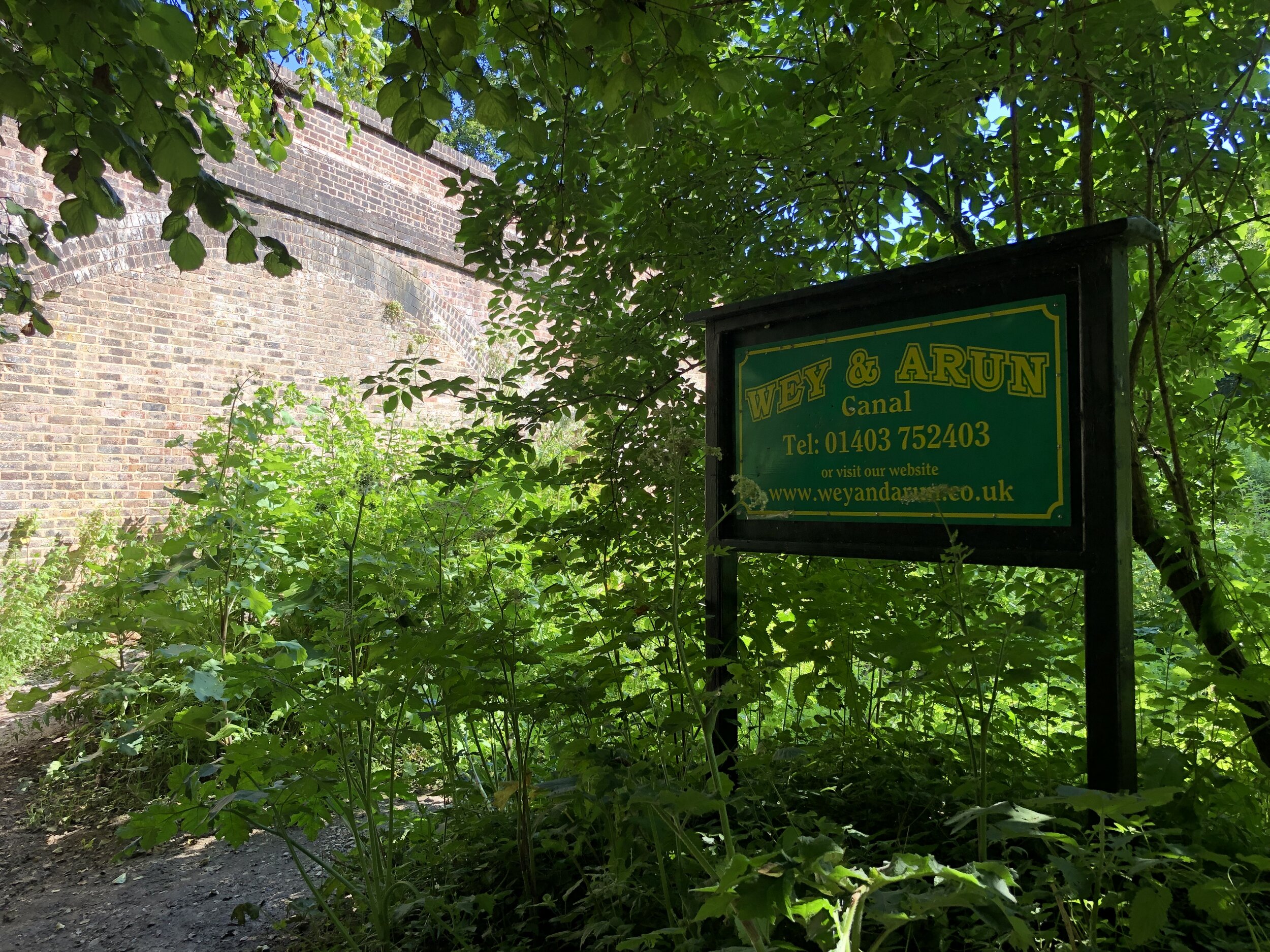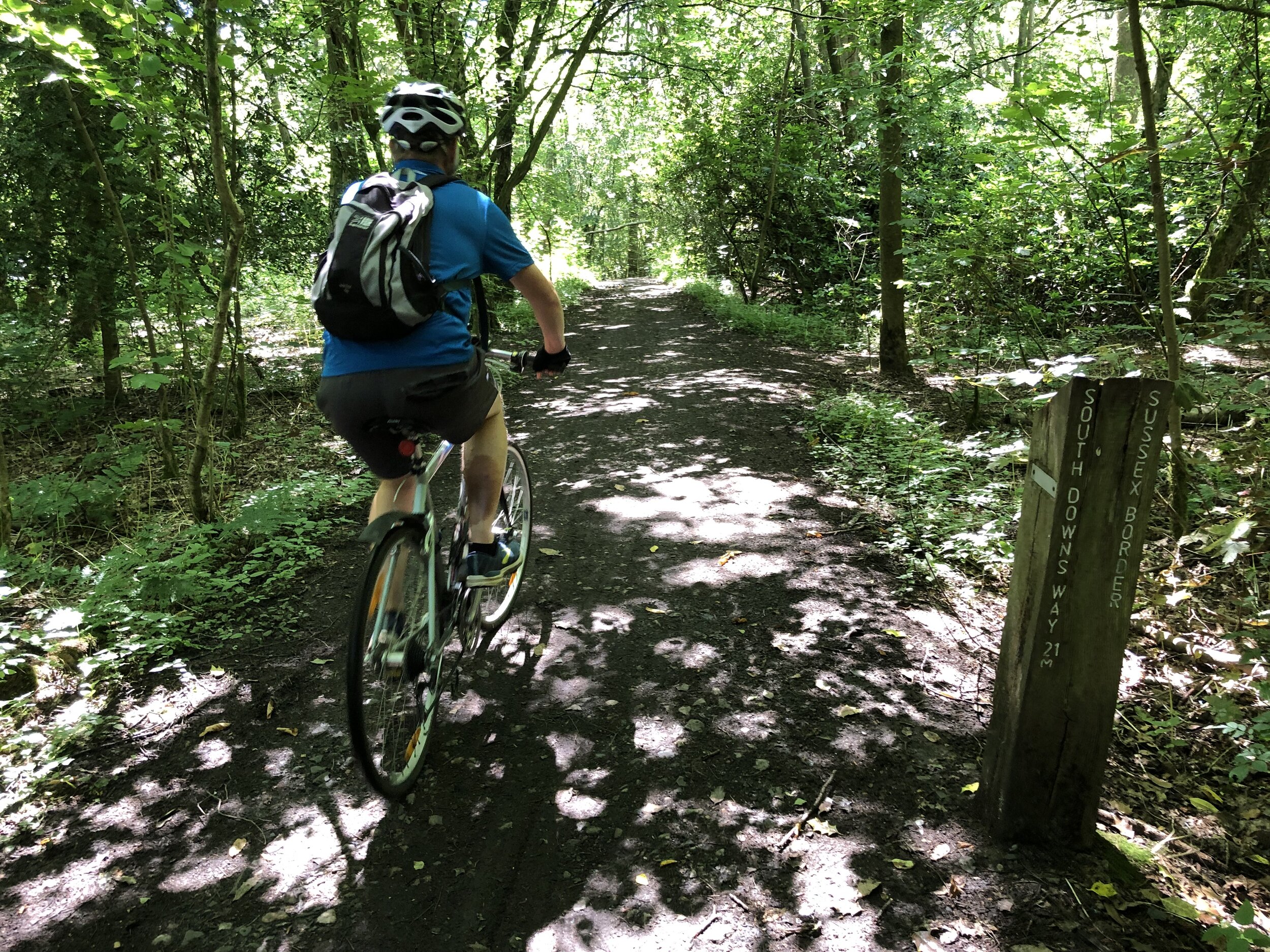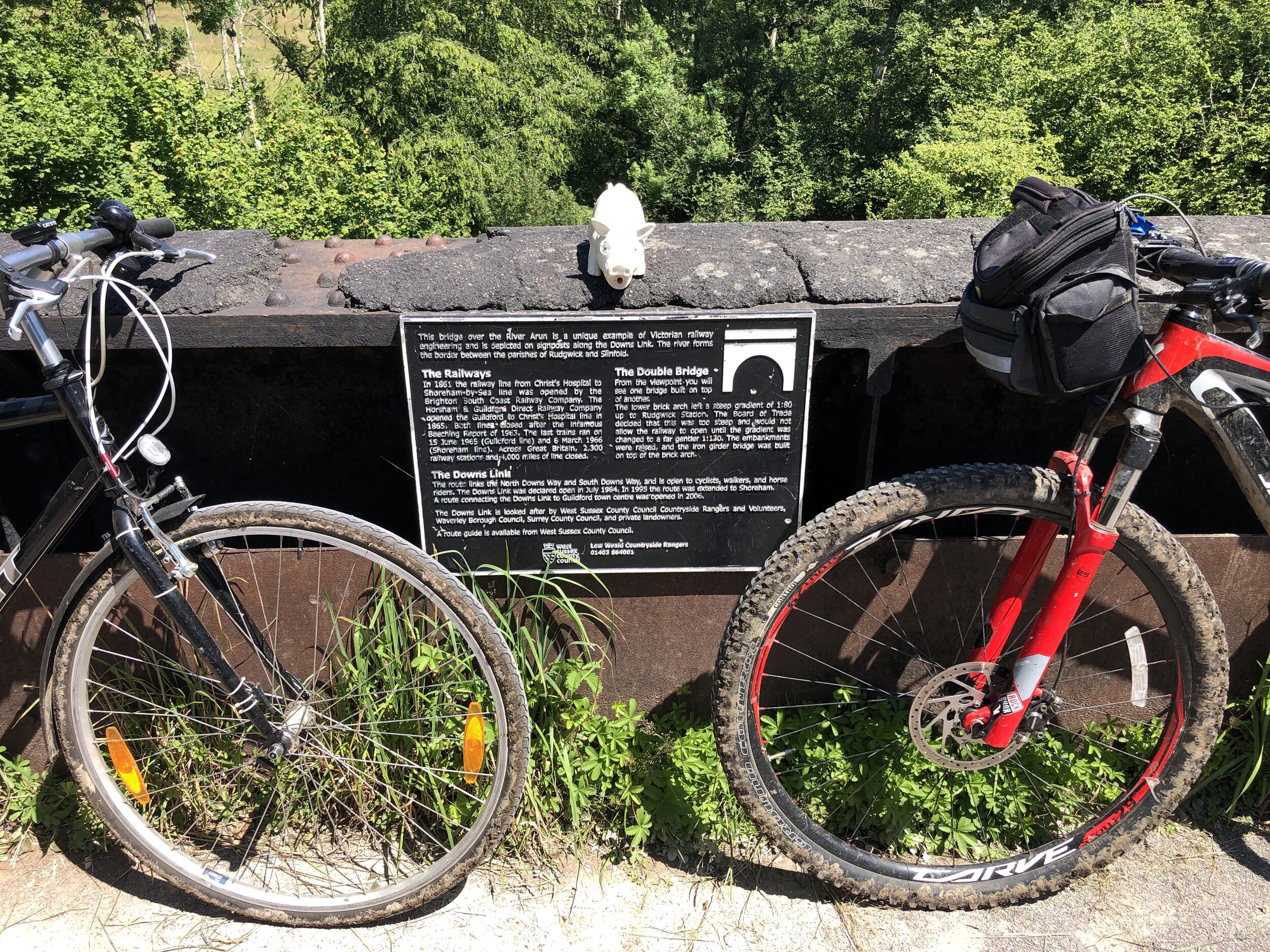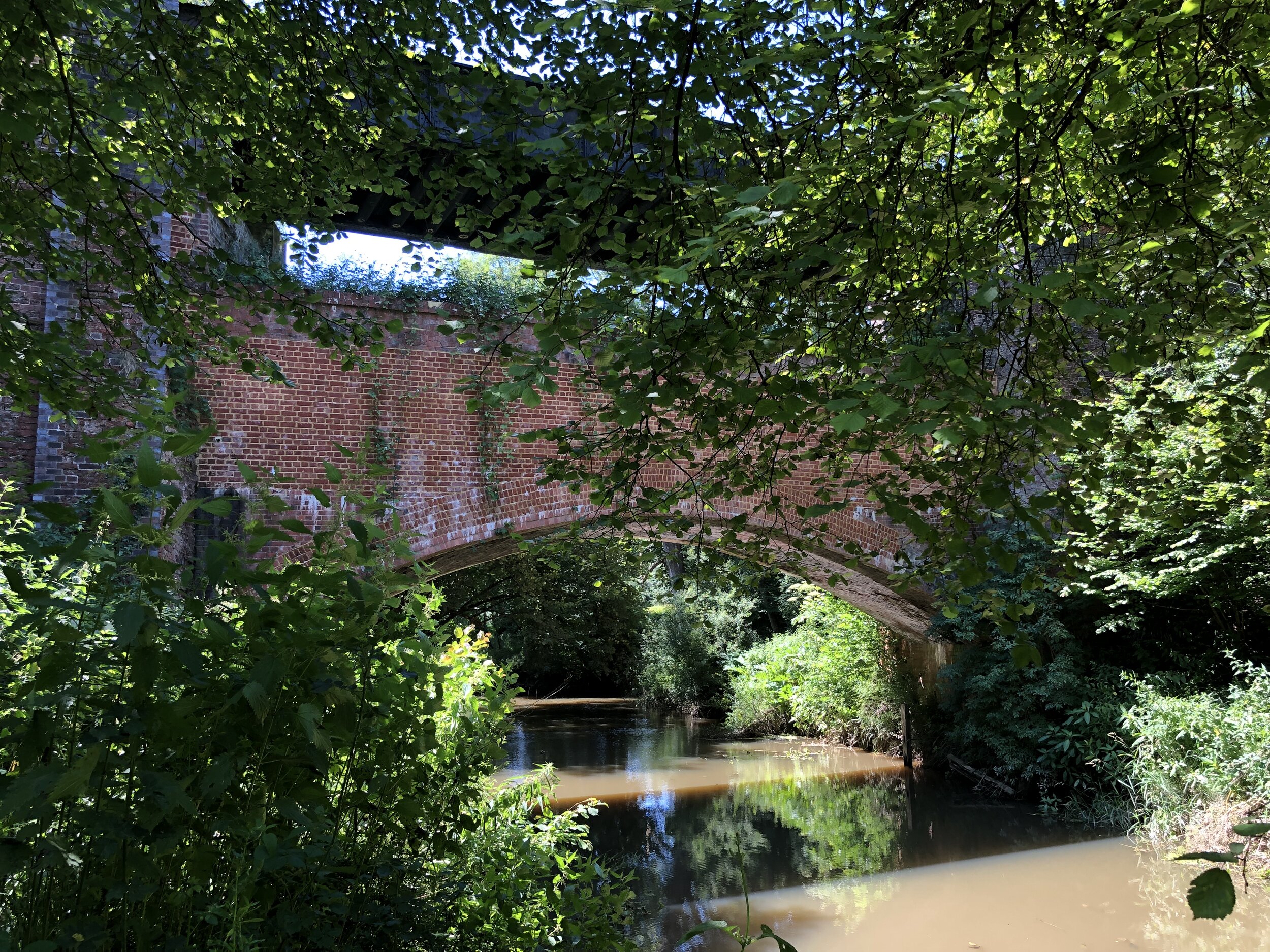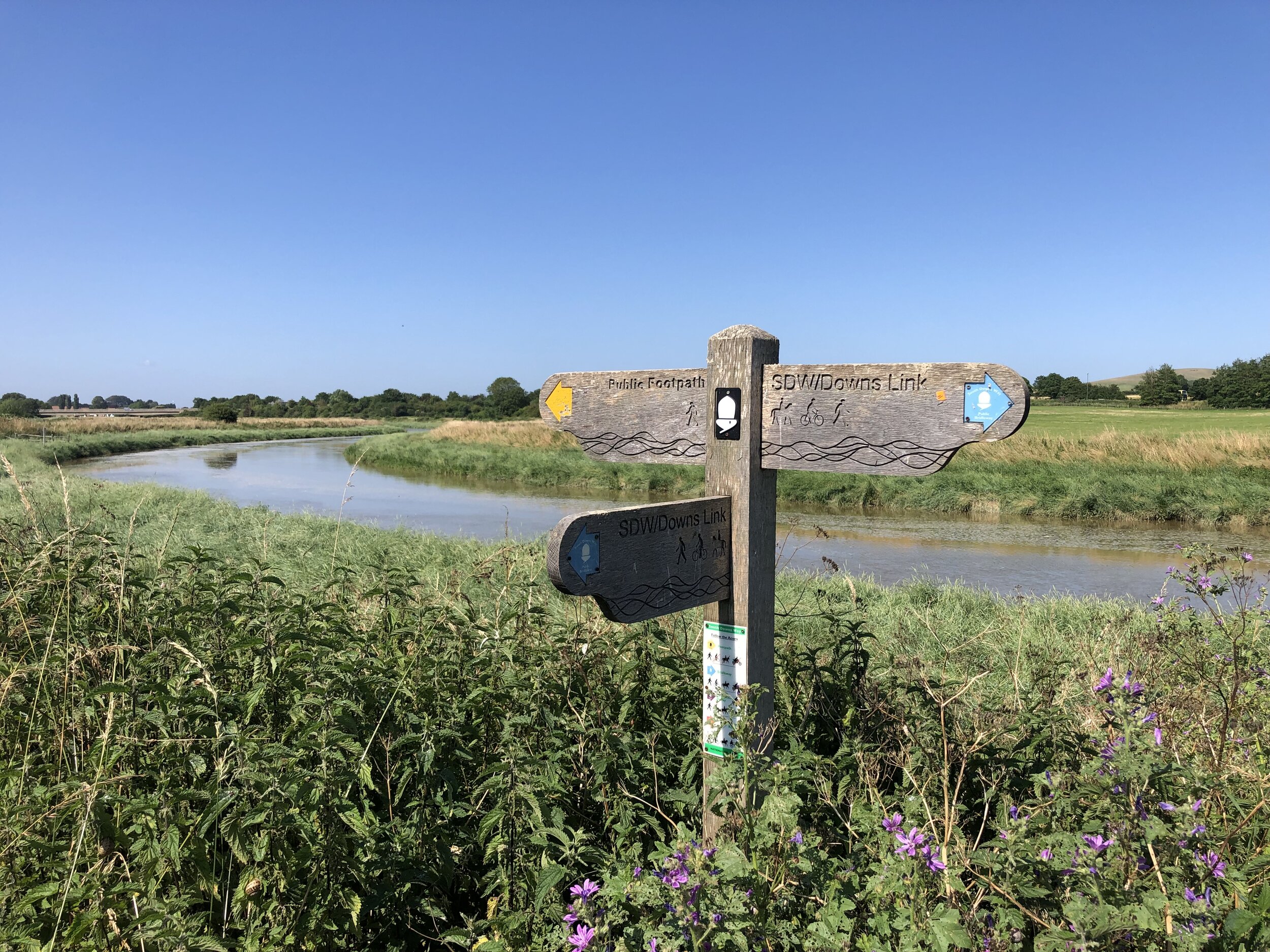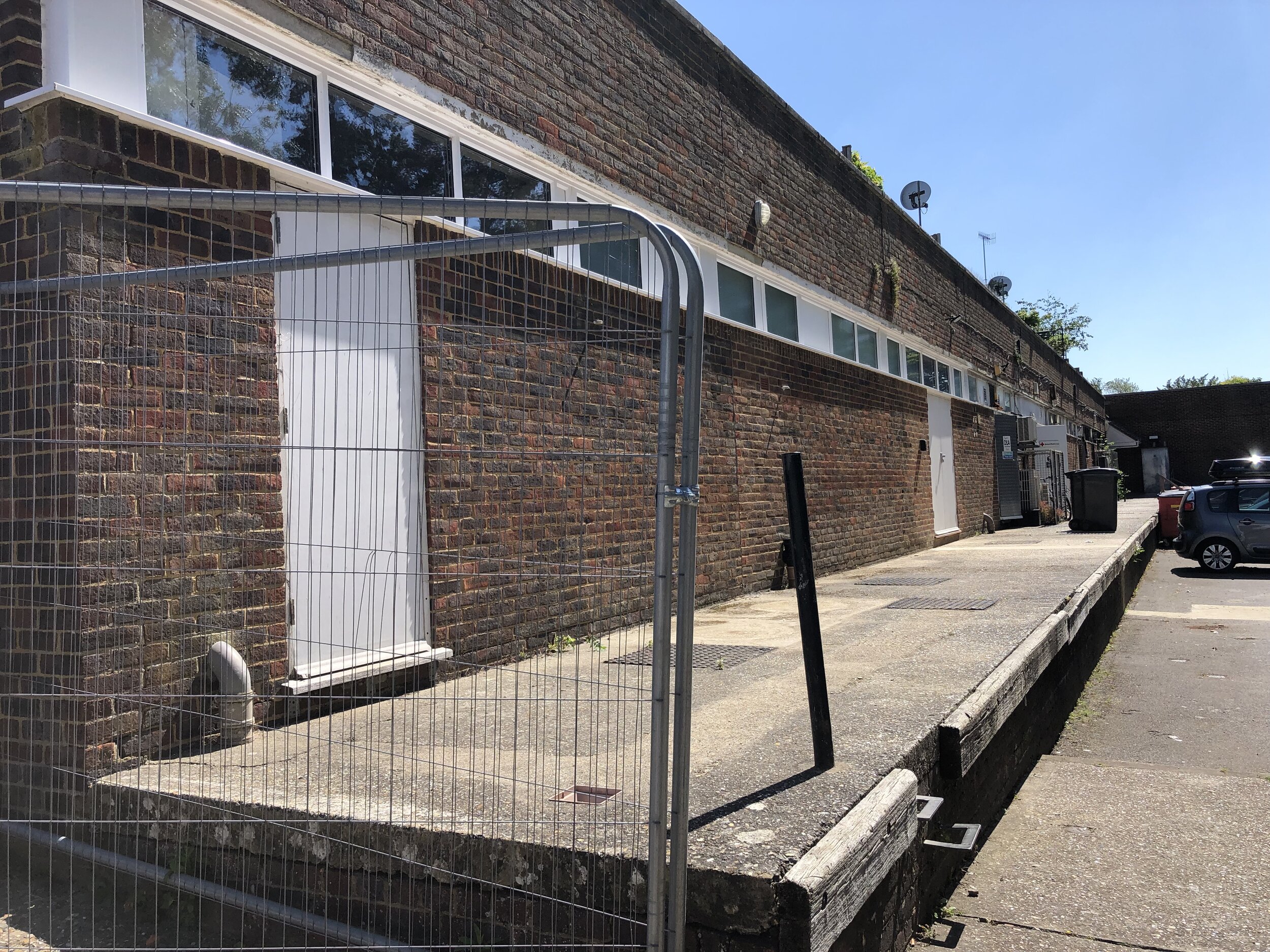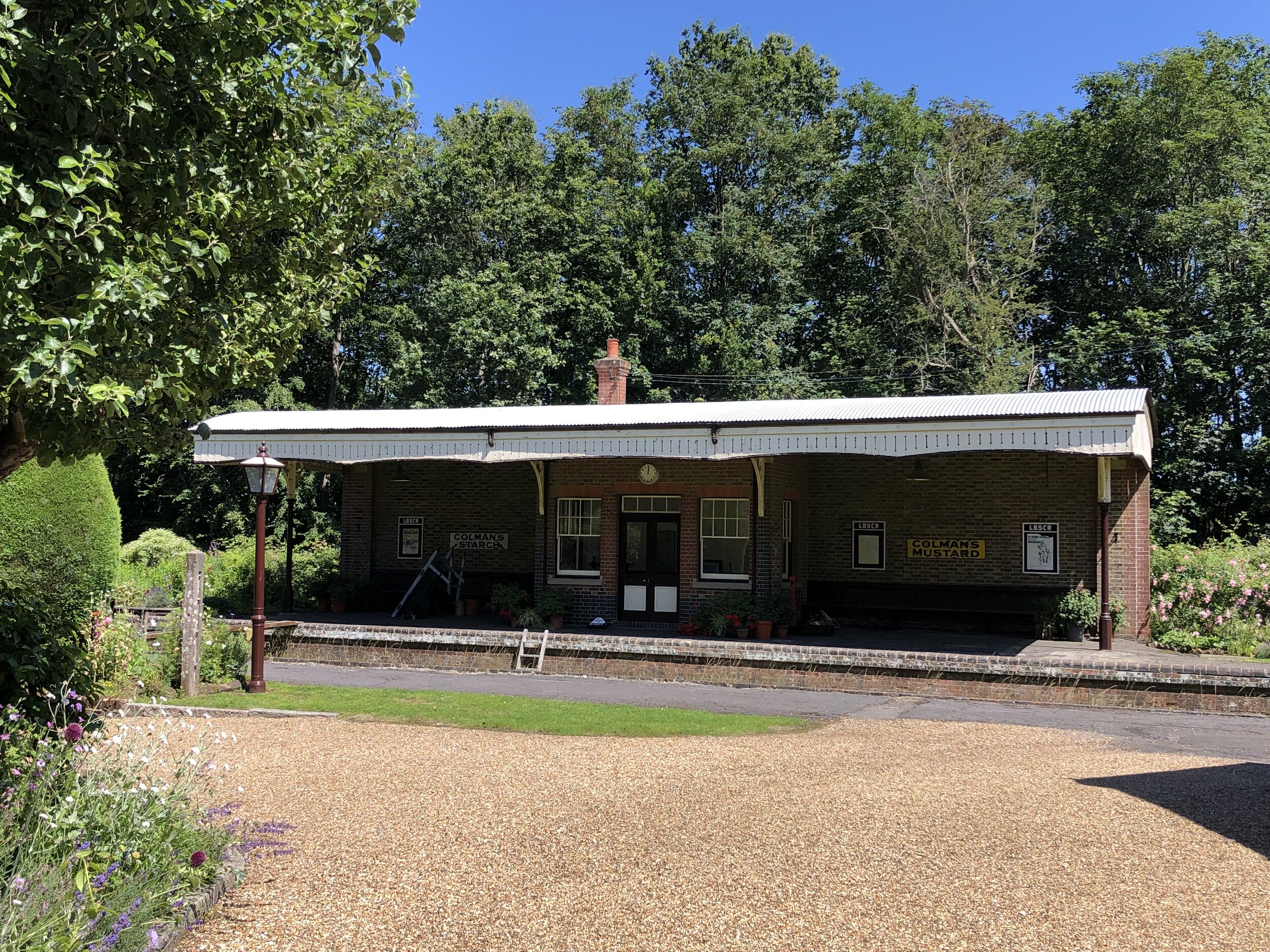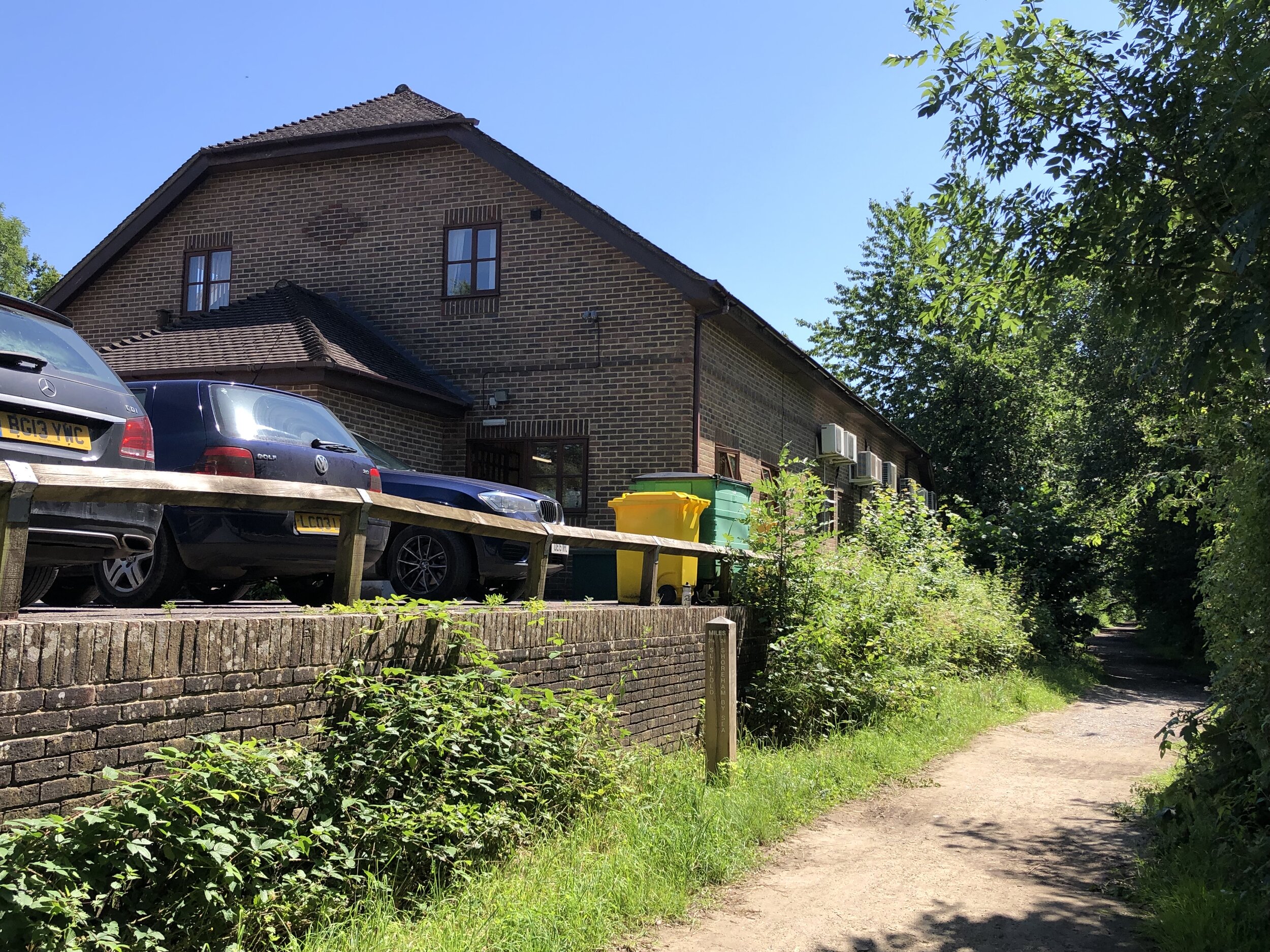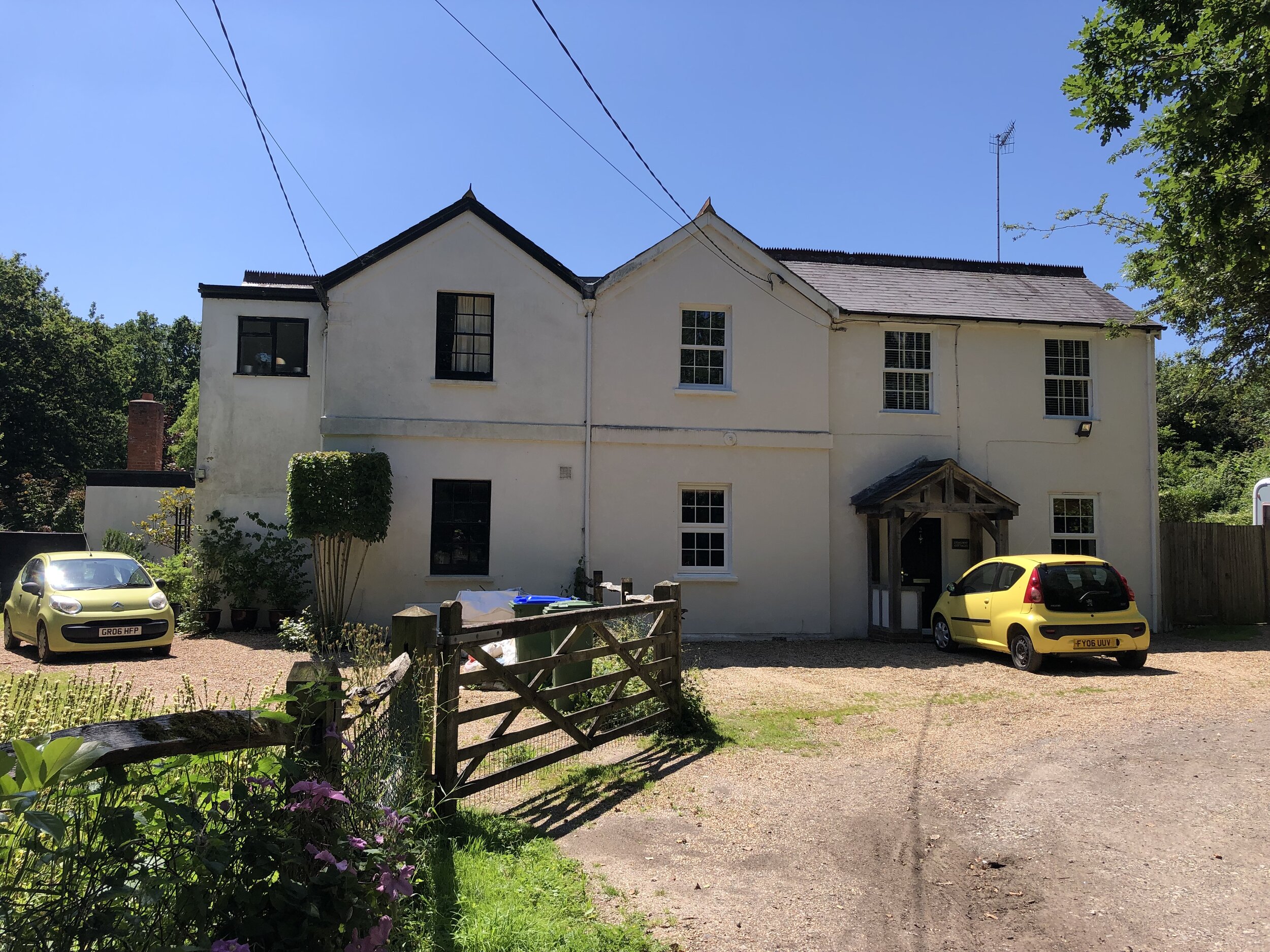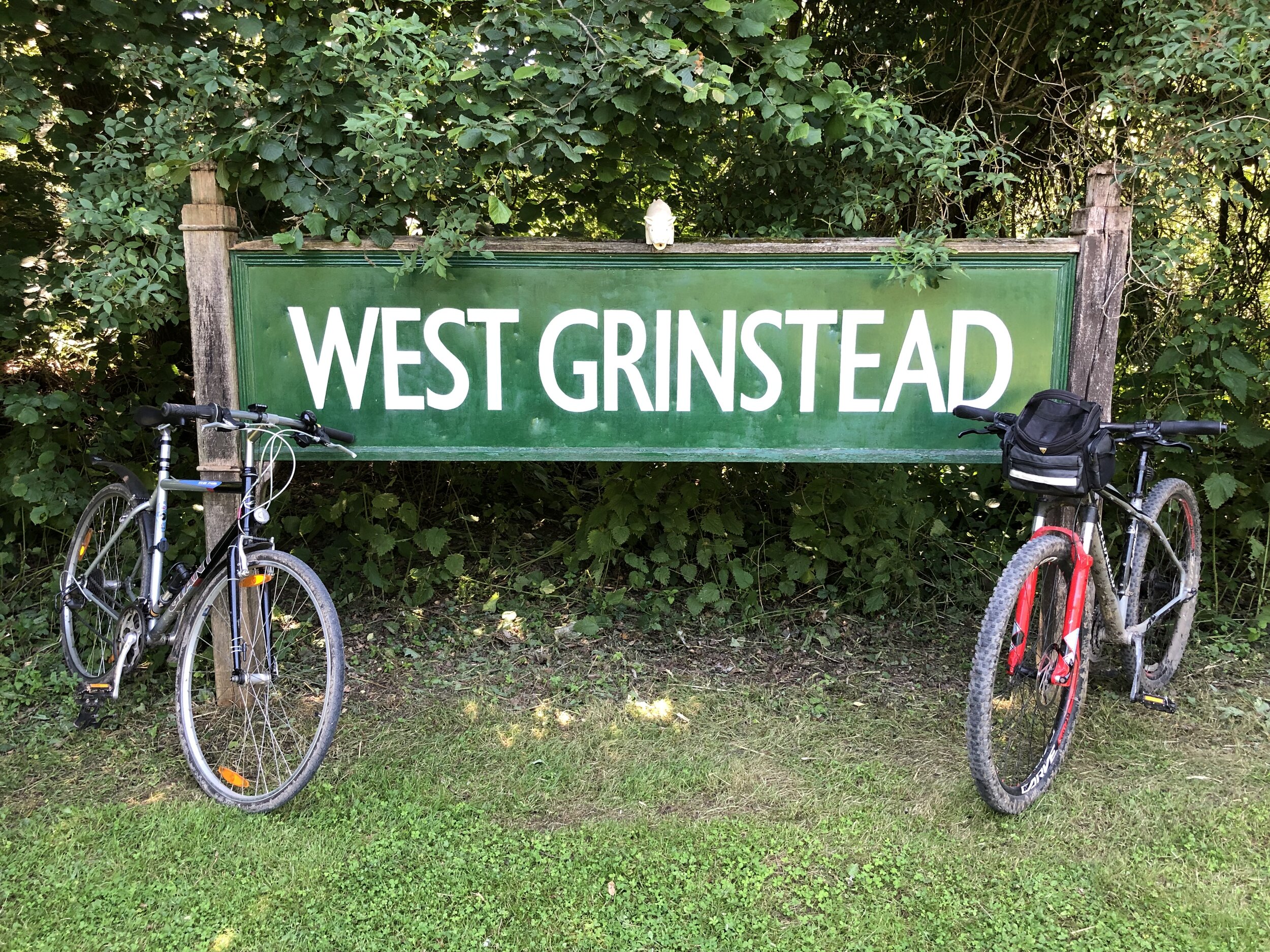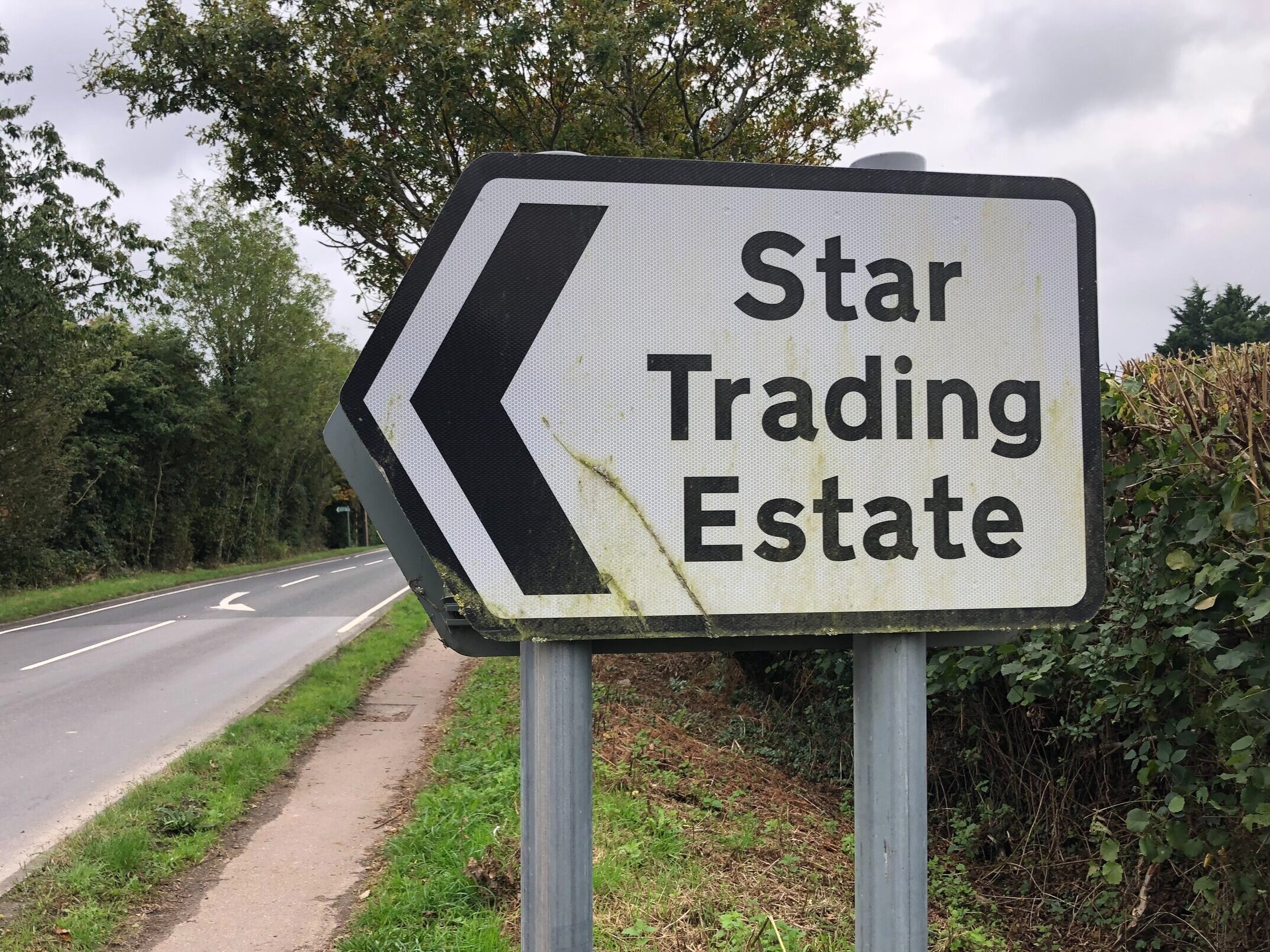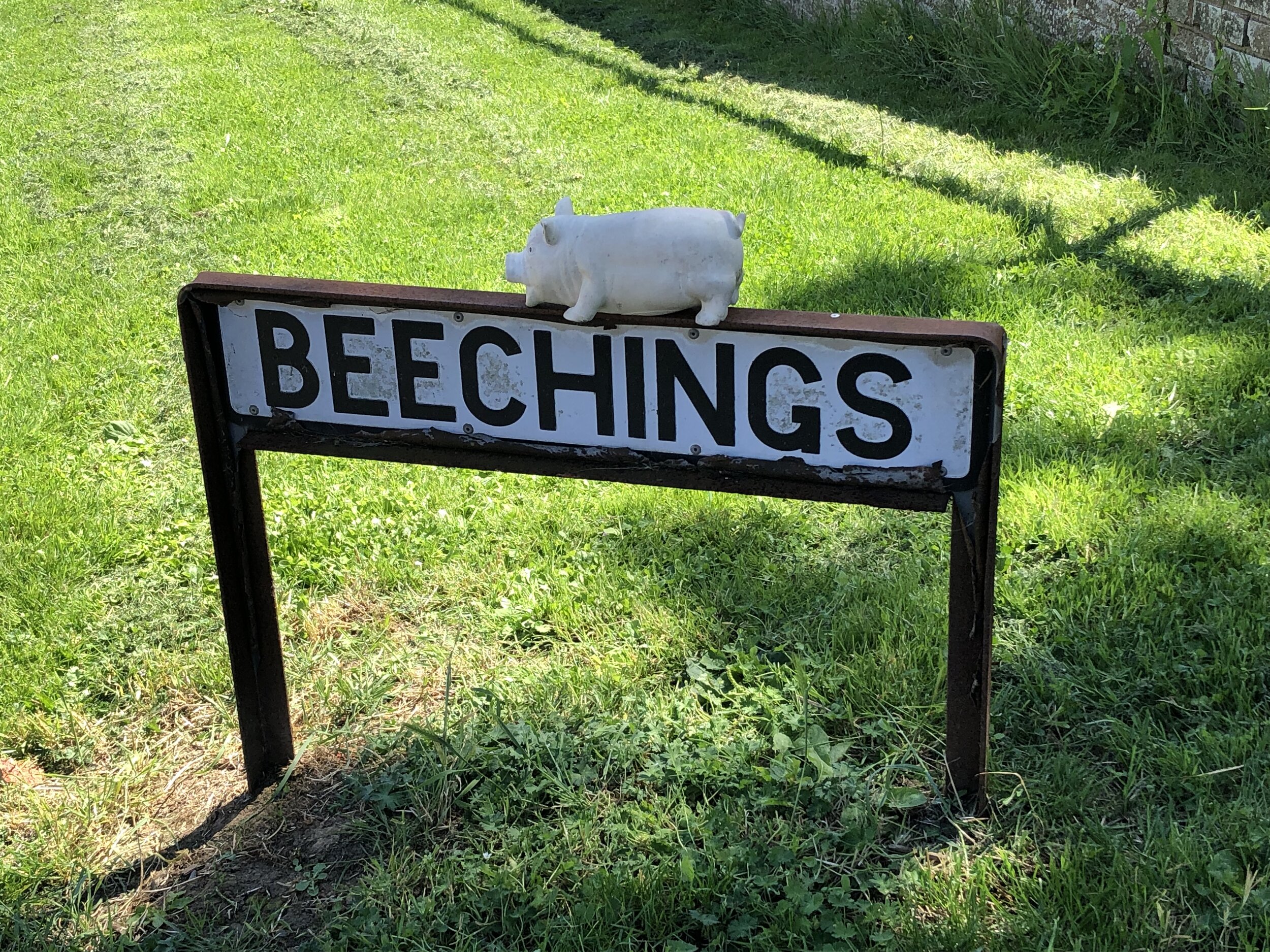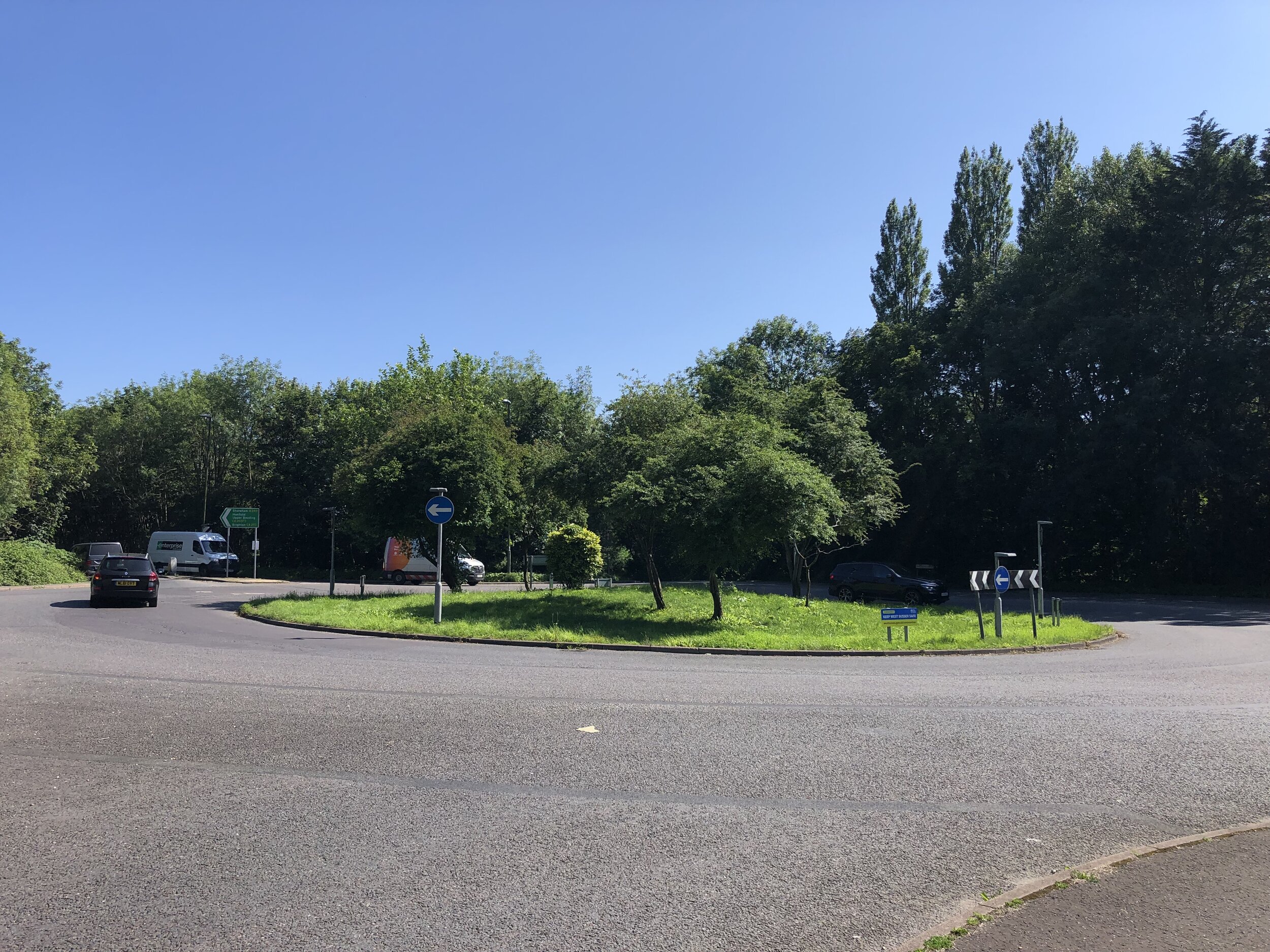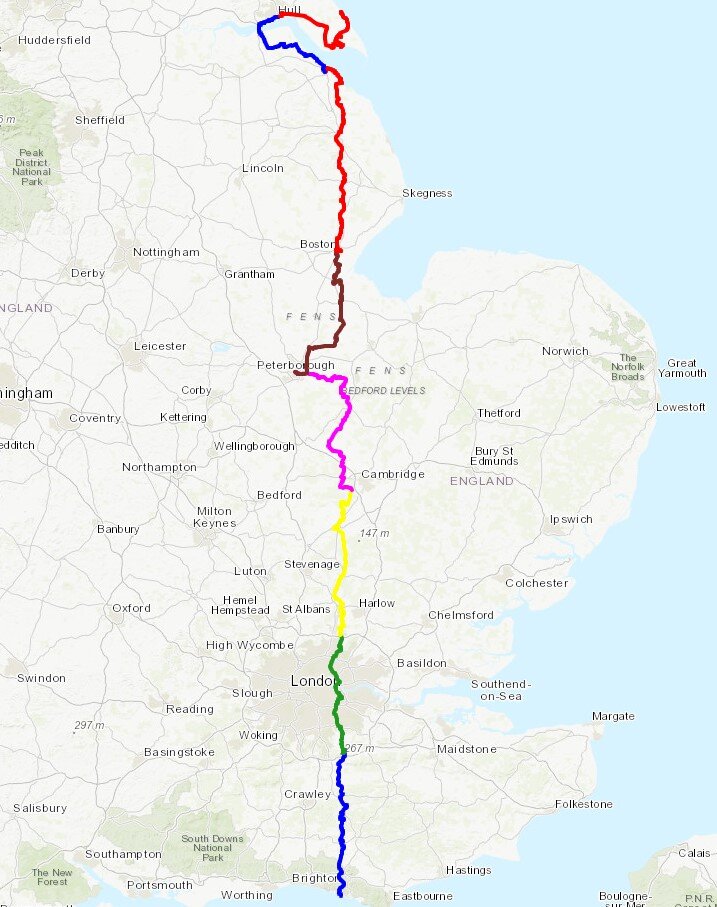When: September 15th 2024
Where: Leighton Buzzard, Bedfordshire
Course: Flatish circuit of south of town from Pages Park to the Grand Union. Mix of trail and pavement
Other routes touched: Grand Union Canal Towpath, Two Ridges Link
Finish time: 56 minutes 57 seconds
Margate Beach
This was a 2-day weekend cycle adventure on the NCN 1 and 15 in Kent. For Brian and I it was a continuation of the Thames Barrier to Margate trip that we did earlier in the year. This time we returned to Whitstable to pick up the NCN 15 to follow it to the end at Dover. For day 2 we followed the NCN 1 back to Whitstable. At 145 km and mostly flat it’s an easy ride giving more than enough time for coffee and cake stops along the way.
Day 2: The Viking Coastal Trail from Whitstable to Dover
Start: Premier Inn Whitstable hotel, Thanet Way, Whitstable, CT5 3DB
Finish: Premier Inn Dover Central (Eastern Ferry Terminal) hotel, Marine Court, Marine Parade, Dover, CT16 1LW
Distance: 79.5 km (49 miles)
Elevation change: + 554m / -602m (Net -48)
GPX File: get via Buy Me a Coffee
Other routes touched (walk): England Coast Path, Saxon Shore Way, Oyster Bay Trail, Wantsum Walk, Augustine Camino, Stonelees Trail, Miner’s Way Trail, Via Francigena
Other routes touched (cycle): NCN 15: Viking Coastal Trail, NCN 16, EV5,
Pubs / Cafes on route: Lots, but we stopped at Westgate-on-Sea, Whitfield and Sandwich.
Maps:
- Canterbury & Isle of Thanet Map | Herne Bay, Deal & Whitstable | Ordnance Survey | OS Explorer Map 150
- Dover, Folkestone & Hythe Map | England Coast Path | Ordnance Survey | OS Explorer Map 138
Links: Whitstable, Herne Bay, Reculver, Westgate-on-Sea, Margate, Broadstairs, Ramsgate, Sandwich, Whitfield, Dover
Our trip started at the Premier Inn on the southern edge of the town. From there it’s a 2.5 km cycle to the coast where, as it was Saturday, we stopped for Whitstable parkrun. The NCN 15 (not to be confused with the same numbered route in Leicestershire) runs from Whitstable to Dover, with the Reculver to Pegwell Bay section called the Viking Coastal Trail.
As it passes through several sea-side towns there’s lots of options to stop for food and drink along the way. We planned to stop for breakfast in Margate but hunger got the better of us so we stopped early at Westgate-on-Sea. At Pegwell Bay there’s an option to return to Whitstable via the inland section of the Viking Coastal Trail. That would make a great half-day trip, effectively a circuit of the Isle of Thanet, but we carried on south along the route 15.
After Pegwell Bay the route leaves the coast and heads in-land to Sandwich. We planned to have lunch there, mostly for the childish amusement of having a sandwich in Sandwich. We timed it badly though and arrived just as cafes were closing for the afternoon and the pubs were packed. As we were retuning there the next day we grabbed some quick food and moved on.
After Sandwich the route continues south, gradually climbing in elevation to the highest point of the day at Dover Castle. After this there’s a steep descent to Dover town centre where we stayed the night at the Marina.
Day 2: Dover to Whitstable via the NCN 1
Start: Premier Inn Dover Central (Eastern Ferry Terminal) hotel, Marine Court, Marine Parade, Dover, CT16 1LW
Finish: Premier Inn Whitstable hotel, Thanet Way, Whitstable, CT5 3DB
Distance: 64.7 km (40 miles)
Elevation change: - 554m / +602m (Net +48)
GPX File: get via Buy Me a Coffee
Other routes touched (walk): England Coast Path, Saxon Shore Way, Stour Valley Walk, Augustine Camino, Canterbury Middle Ring Walk, Canterbury Outer Ring Walk, Crab & Winkle Way
Other routes touched (cycle): NCN 1, NCN 15: Viking Coastal Trail
OS Trig Pillar: TP5672 - Richborough Hill
Pubs / Cafes on route: Lots, but we stopped at Walmer, Sandwich, Fordwich and Canterbury
Maps:
- Canterbury & Isle of Thanet Map | Herne Bay, Deal & Whitstable | Ordnance Survey | OS Explorer Map 150
- Dover, Folkestone & Hythe Map | England Coast Path | Ordnance Survey | OS Explorer Map 138
Links: Dover, White Cliffs of Dover National Trust, Walmer Sandwich, Fordwich, Canterbury, Canterbury and Whitstable Railway, Whitstable
For our return leg to Whitstable we followed the NCN 1, completing the London to Dover section that we started in our trip earlier in the year. The first section is very steep and follows a narrow path up to the top of the White Cliffs of Dover. We were an hour away from fully waking up so made the easy choice to slowly walk the bikes up the cliffs. From the top there were great views over the Channel and back to Dover Castle while we recovered from the climb.
From the top the route has an 8 km steady downhill section to the coast at Kingsdown to make up for the earlier climb. This coastal section was one of my favourite parts of the 2-dy trip with its mix of quiet country lanes and easy riding along the sea-front. We were not in a rush so decided to maximise the coffee and cake stops with the first one at Walmer. Stop #2 was in Sandwich where we had a lot more success than the previous day with cafes actually being open and wanting to sell us food.
The middle section from Sandwich to Canterbury was flat and pleasant but not particularly memorable. We pushed on to Canterbury for a long lunch near the Cathedral. The final section from Canterbury was far more interesting as it mostly follows a disused railway nicknamed the Crab and Winkle line.
This was a very easy weekend, both from a logistics and a cycling perspective. If you don’t have a hole weekend then it can be split into 2 shorter circles with Sandwich as the split.
The Full 2-Day Route
Day 1 in blue, Day 2 in red
The Millennium Mileposts
Dotting the UK's National Cycle Network are over 1,000 unique markers known as the Millennium Mileposts. Unveiled in 2000, these cast-iron sculptures are more than just waymarkers. Designed by four artists, one from each nation of the UK, they celebrate the diversity of the cycling routes. These artistic mileposts come in various shapes and can be found in both bustling towns and scenic landscapes, adding a touch of artistic charm to a cycling adventure.
Here’s the 21 Mileposts that I spotted on the 2 day cycle trip. The first 2 were on the Viking Coastal Trail on Day 1 and the rest were on the NCN 1 on Day 2.
The Thames Barrier, London
This was a trip that had been at the back of my mind for 30 years. Back in the summer of 1994 I cycled the length of the Thames from the source near Kemble in Gloucestershire to the Thames Barrier near Woolwich, London. The last day was a long one and we ended up at the Barrier after dark. At the time we had considered the adventure to be complete. A few years later I started to plan a second part: from the Barrier east along the Thames Estuary to Margate.
Over the intervening years I got more excited about other trips. I also either lost contact with a few of the old Thames Path gang or they got preoccupied with having babies. Early in 2024 the stars aligned and the Estuary adventure popped up to the top of my cycling backlog.
The route to Margate mostly follows NCN Route 1 with a bit of the Route 15 Viking Way at the end. It also runs parallel to the main rail line between London and Margate making trip logistics fairly simple. We did it over a weekend, staying both the Friday and Saturday night at the Chatham/Gillingham Victory Pier Premier Inn.
Day 1: Thames Barrier to Chatham
Start: Charlton Railway Station, London, SE7 7QG, United Kingdom
Finish: Premier Inn Chatham/Gillingham (Victory Pier) hotel, Blake Avenue, Gillingham, ME7 1GB, United Kingdom
Distance: 62.8 km (39 miles)
Elevation change: + 408m / -409m (Net +1m)
GPX File: get via Buy Me a Coffee
Other routes touched (walk): Thames Path, Capital Ring, Jubilee Greenway, Green Chain Walk, London Loop. Cray River Way, Hoo Peninsula Path, Weald Way, Thames and Medway Canal Towpath, Saxon Shore Way, England Coast Path, Strood Community Trail,
Other routes touched (cycle): NCN 1, 125, 179, Q14
Pubs / Cafes on route: At Woolwich Arsenal (4km in), Erith (15km in), Dartford (25km in), Gravesend (39 km in), Rochester (57km in), Chatham (59km in)
Maps:
- Greenwich & Gravesend Map | East End, Docklands, Bromley, Sidcup & Thurrock | Ordnance Survey | OS Explorer Map 162
- Gravesend & Rochester Map | Hoo Peninsula | Ordnance Survey | OS Explorer Map 163
Links: Charlton, Thames Barrier, Woolwich Arsenal, Erith, Dartford, Gravesend, Thames and Medway Canal, Rochester, Chatham, Gillingham
Like all Saturdays the day started with a parkrun, this time at Great Lines Heritage park, just over a mile from from the hotel. From there we headed to Chatham Station to get the train to Charlton. The Thames Barrier is a 1.4km ride from Charlton Station.
Navigation is straightforward, keeping to the NCN Route 1 all the way to Chatham. The first 20km hugs the riverside passing a mix of pleasant gentrified areas like Woolwich Arsenal and ugly industrial parts. After Erith the Route 1 cuts south away from the river to Dartford avoiding the entrance to the Queen Elizabeth Bridge. We had planned a coffee and cake stop in Dartford but nothing inspired us so we carried on. By the time we reached Gravesend we were really hungry and, as pubs were open by then, were optimistic about finding food. We found Gravesend equally inspiring so didn’t stop there either.
After Gravesend the scenery becomes much more pleasant. With the Route 1 following the disused Thames and Medway Canal. Watch out for the obelisk that marks the half-way point between the cities of London and Rochester. The Route 1 leaves the canal at Lower Higham which, conveniently for us, also has a train station. Brian was having problems with his wheel after several punctures and we’d run out of options to fix it at the road-side. Here we decided that Brian would head to Chatham by train and I would finish the first day on my own.
As it turned out Brian missed one of the best parts of the first day. The final section included quiet countryside and a descent down to Rochester. Had we kept together we would have stopped in Rochester for food ahead of the final few miles. I decided that I was on a mission to beat Brian’s train journey back to Chatham so I wasn’t hanging around. A 20 minute wait for the train meant that I was back at the hotel before Brian arrived at Halfords in Chatham. With a newly fixed wheel and fresh supplies of inner-tubes we were now ready for Day 2.
Day 2: Chatham to Margate
Start: Premier Inn Chatham/Gillingham (Victory Pier) hotel, Blake Avenue, Gillingham, ME7 1GB, United Kingdom
Finish: Margate Lighthouse, Harbour Arm, Margate, CT9 1AP
Distance: 87 km (54 miles)
Elevation change: + 514m / -513m (Net -1m)
GPX File: get via Buy Me a Coffee
Other routes touched (walk): Saxon Shore Way, England Coast Path, Swale Heritage Trail, Invicta Way, Wantsum Walk,
Other routes touched (cycle): NCN 1, 174, 15: Viking Coastal Trail
Pubs / Cafes on route: At Sittingbourne (22km in), Faversham (40km in), Whitstable (59km in), Herne Bay (66km in), Westgate-on-Sea (83km in) and Margate.
- We stopped at Cafe Guild in Faverham (40 km in) and The Ship Inn, Herne Bay (66km in)
Maps:
- Gravesend & Rochester Map | Hoo Peninsula | Ordnance Survey | OS Explorer Map 163
- Sittingbourne & Faversham Map | Isle of Sheppey | Ordnance Survey | OS Explorer Map 149
- Canterbury & Isle of Thanet Map | Herne Bay, Deal & Whitstable | Ordnance Survey | OS Explorer Map 150
Links: Sittingbourne, Faversham, Crab & Winkle Way, Whitstable, Herne Bay, Reculver, Westgate-on-Sea, Margate, Margate Lighthouse
Shortly after leaving the Chatham/Gillingham area, the Route 1 passes through Riverside Country Park. It was very popular with dog walkers early that Sunday morning so it was a good chance to take it slow as we warmed up for the day. After the Country Park the route cuts away from the estuary from Rainham to Sittingbourne.
Sittingbourne was our original plan for a breakfast stop but we were similarly uninspired by food options as we were on day 1. By the time we arrived in Faversham with 40km down we were starving. It was worth the wait though as Faversham is a very nice old Kent market town with several good cafes.
After Faversham the route heads back towards the coast then takes a detour up the steepest hill of the route to bypass Whitstable Town Centre. After a well-earned descent we reached the Crab & Winkle Way, a disused railway that once connected Whitstable to Canterbury. This was the point where we left the NCN 1, which follows the old railway line to the south. Instead we followed the Crab & Winkle Way north to join the Route 15 Viking Way at the Whistable coast.
The last 28km along the Viking Way from Whitstable to Margate was my favourite section of the whole route. This section keeps to the coast along flat boulevards passing seaside towns and the remains of Reculver Towers. We had made good time so we stopped for a while at a pub in Herne Bay to gaze across the estuary and contemplate future adventures.
Our 2-day adventure finished at Margate Lighthouse, an obvious place to mark the end of the Estuary adventure. We really enjoyed the trip and, baring the wheel & puncture issues at the end of day one, found it pretty easy going. I still didn’t get the sense of completion though. Yes, we had cycled the estuary to complete the Thames Path, but we had now left the southern section of the NCN Route 1 uncompleted. Within a couple of days I was already planning the next 2 day adventure to complete both the NCN Route 1 from Whitstable to Dover and the rest of the Viking Way.
The Full 2-Day Route
The Millennium Mileposts
Dotting the UK's National Cycle Network are over 1,000 unique markers known as the Millennium Mileposts. Unveiled in 2000, these cast-iron sculptures are more than just waymarkers. Designed by four artists, one from each nation of the UK, they celebrate the diversity of the cycling routes. These artistic mileposts come in various shapes and can be found in both bustling towns and scenic landscapes, adding a touch of artistic charm to a cycling adventure. Here’s the 14 Mileposts that I spotted on the 2 day estuary adventure.
Broadford Road bridge over the disused railway path
Start: Shalford Station, Guildford, GU4 8JD
Finish: Guildford Station, Guildford, GU1 4UT
Distance: 9.1 km (5.6 miles)
Elevation change: +/- 52m
GPX File: get via Buy Me a Coffee
Other routes touched (walk): Wey-South Path, National Trust Railway Walk, Scholar’s Trail, North Downs Way
Other routes touched (cycle): NCN 22, Downs Link
Pubs / Cafes on route: The Snooty Fox cafe near Shalford Station, The Weyside (7.9 km in), many others in Guildford
Map: OS Explorer Map (145) Guildford and Farnham
Links: Shalford, Guildford, Wey and Arun Canal, National Trust River Wey and Godalming Navigations and Dapdune Wharf, The Cranleigh Line
This is part of a series of short walks in and around the Surrey Hills. The guidance below will help you navigate but don’t use it as a fully accurate turn-by-turn guide. Always take a map and/or a GPX route and prepare well for the weather and terrain.
I’d had this walk in mind for a few years after I completed the Downs Link with my friend Mark in 2021. The Downs Link connects the North Downs Way and South Downs Way, mostly following disused railways. It starts at St Martha’s Hill following footpaths and joins the old rail line near Chinthurst Hill. However, there’s a section of this old line from Guildford that the Downs Link doesn’t follow so we needed to return to complete the rest.
This is a point-to-point walk with Guildford and Shalford Stations at either end. We originally planned to start at Guildford and return back on the train from Shalford. Although the train ride between them is only 8 minutes, the trains are fairly infrequent at weekends. As there was a Guildford-Shalford train leaving shortly after we parked at Guildford we took that one and did the route in reverse.
From Shalford Station cross over the A281 Horsham Road and follow the path across the common in a south-westerly direction to Broadford Road. Take a right and cross the bridge over the River Wey. Follow the path on the western side of the Wey north for approximately 1 km until you see the path on the left to the National Trust River Wey Navigations Railway Line Walk. Climb the old embankment to the WW2 Pillbox at the top and follow the route of the old rail line. This is the old section of line where trains from Shalford would have crossed over the River Wey to turn south onto the line to Petersfield. After ~400m the path reaches the fence where you can see the current Guildford to Petersfield line.
Continue a bit further and you’ll see where the Cranleigh Line used to split off from the Guildford to Petersfield line. Look closely near the A3100 Old Portsmouth Road bridge and you can see some remains of the old track with a tree growing out of them. This is the start of the old Cranleigh Line which becomes the route of the Downs Link further to the south.
Follow the route of the old rail line for another 2km, crossing under Broadford Road, across Horsham Road and back onto the Wey-South Path. Our walk reaches its southernmost point at the Tannery Lane bridge where the Downs Link joins from the north-east. Having already done the rest of the Cranleigh Line on the Downs Link, this now completes the full stretch of the disused railway.
To complete the walk, turn around and retrace your steps back to Horsham Road. Instead of following the old rail line again take a right onto Horsham Road and follow the Wey-South Path. Stay on the Wey-South Path, along the banks of the Wey all the way back to Guildford. On this final stretch you’ll retrace the 1 km of the route between the Broadford Road Bridge and the start of the old railway line. You’ll also cross over the route of the North Downs Way. For me this would have been a more logical place to start the Downs Link as it would have run closer to the route of the rail lines. I guess whoever designed the trail wasn’t as much of a completist as I am and thought St Martha’s Hill was a more impressive place to start.
Annoyingly, the end-point of the Wey-South Path at Millmead Lock was blocked off when we got there. The footbridge onto the island was destroyed after heavy rain in 2019 and is still out of action. There’s an easy diversion along the A281 past The Weyside pub and then over the footbridge behind the theatre. The final 1 km of the walk follows the west bank of the Wey back to Guildford Station.
More Disused Railway Posts
River Thames at Cookham
Start & Finish: Wakeman Road Car Park, 2A Wakeman Road, Bourne End, SL8 5SX
Distance: 8.2 km (5.1 miles)
Elevation change: +/- 83m
Shakespeare’s Way section covered: Bourne End Rail Bridge to Broad Lane, Widmoor: 3.9 km
GPX File: get via Buy Me a Coffee
Other routes touched (walk): Thames Path, Shakespeare’s Way, Beeches Way, Chiltern Way Berkshire Loop, High Wycombe to Bourne End Disused Railway
Other routes touched (cycle): N/A
Pubs / Cafes on route: Several in Bourne End and Cookham village centres. Also The Ferry (2.4 km in), The Garibaldi (3.7 km in), Chequers Inn (5.3 km in),
Map: OS Explorer Map (172) Chiltern Hills East
Links: Bourne End, Cookham, Wooburn
The Shakespeare’s Way is a 235 km / 146 mile mile long-distance path connecting Shakespeare's birthplace in Stratford-upon-Avon with the Shakespeare's Globe (Theatre), Southwark, London. A 34km section of the path cuts through the Chiltern Hills National Landscape in a south-easterly direction. Our walks take in short sections of the Shakespeare’s Way and loop back to the start on other paths. The Shakespeare’s Way is reasonably well marked however you’ll need a map or GPX route to keep on track for the return sections of the loops. The guidance below will help but don’t use it as a fully accurate turn-by-turn guide.
For this walk we parked at Wakeman Road Car Park in Bourne End and walked to the River Thames via the footpath to the left of the station. At the Thames cross over the railway bridge and, at the bottom of the steps, take a right to follow the Thames Path in a southerly direction.
Leave the Thames Path at Cookham Bridge and cross over to the north side of the Thames to follow Ferry Lane north. Here you have 2 choices: to follow The Beeches Way by taking the first path on the right after the bridge or to take an alternative route via Hedsor Road. Both options come together around the 5km mark at the top of Harvest Hill. We had already done the Beeches Way option so we took the alternative described below.
Continue north along Ferry Lane the take a right onto Hedsor Road, following it for ~500m to take a left onto Heavens Lea. Cross over Hedsor Hill (road) to follow Harvest Hill (road) in a north-easterly direction to Kiln Lane. Take a left onto Kiln Lane then a right onto a footpath just before the Chequers pub. Follow this footpath all the way down to Wooburn Park then cross over the River Wye and Town Lane.
Take the path to the left of Spake Oak depot to reach the disused Wycombe to Bourne End Railway Line. Follow this in a south-westerly direction to the end at the A4155 Cores End Road. Follow this back to the car park in Bourne End.
Shakespeare’s Way previous section (west): Marlow Donkey
Shakespeare’s Way next section (east): Beeches Way
Crossing the River Gade
Start: The Bright Star Pub, Kimpton Road, Peter's Green, Luton, LU2 9QP
Finish: Chaulden Adventure Playground, 106 Long Chaulden, Hemel Hempstead, HP1 2HX
Distance: 26.8 km (16.6 Miles)
Elevation change: +288m / -304m. Net -16m
GPX File: get via Buy Me a Coffee
Other Routes Touched (walk): Lee Valley Walk, River Ver Trail, Hertfordshire Way
Other Routes Touched (cycle): Chilterns Cycleway, The Nickey Line, River Lea Cycle Route
Pubs / Cafes on route: Several in Redbourn (10.6 km in), including The Hub Cycle Cafe. Three Blackbirds in Flamstead (15.7 km in)
Maps:
- Luton & Stevenage Map | Hitchin & Ampthill | Ordnance Survey | OS Explorer Map 193
- St Albans & Hatfield Map | Hemel Hempstead & Welwyn Garden City | Ordnance Survey | OS Explorer Map 182
Links: Chiltern Way (Chiltern Society), Redbourn, Flamstead, Hemel Hempstead, River Ver, River Gade
This is the fifth of a series of point to point walks on the Chiltern Way. The full trail is a 134 mile (215 km) long distance path around the Chiltern Hills Area of Outstanding Natural Beauty (AONB). My friend Brian and I have been doing a section a year on or around the Winter Solstice since 2019. At the current rate we plan to be finished in December 2027. The Chiltern Way is well sign-posted however you should take a map or GPX route to keep on track and be prepared for all weathers. This post isn’t intended as a fully accurate turn-by-turn guide.
Having been travelling west to east for the previous 4 sections we had now turned the corner and were heading south, south-west. We were also into more familiar territory as the route covered several trails that we had explored on previous adventures. After 3km from the section start at Peter’s Green the Chiltern Way crosses over the River Lea and briefly follows the Lea Valley Walk towards Harpenden. This section is also on the River Lea Cycle Route.
It had been a while since Brian and I had seen each other and we got so caught up in catching up that we missed the turning off the Lea Valley Walk. After realising our mistake we retraced our steps and followed the Chiltern Way again across to the start of the Nickey Line. This was another familiar section as I had covered it on the Nickey Line, Ayot Greenway and Alban Way cycle ride.
The Chiltern Way follows the Nickey Line for 4.3 km before cutting across the River Ver into Redbourn. We stopped here at The Hub Cycle cafe for a mid-morning coffee and cake. We’d been unlucky on previous Chiltern Way sections finding food as we had either passed pubs before they opened or not passed anything at all. This section passed through more towns so we made a point to stop and eat where we could.
After Redbourn our plan was to continue to Flamstead to arrive there just after 12:00 and in time for lunch at The Three Blackbirds pub. We arrived on time only to find out that the chef was off and they weren’t serving food that day. The nice lady at the bar kindly gave us directions for other places but none were on our route and would have only been practical if driving. We settled for a couple of packets of crisps and had our packed lunch on the move walking out of the village.
The second half of this section is more rural without any towns or villages to pass through. One interesting spot was passing by the front of Gaddeston Place, a large 18th century manor house overlooking the Gade Valley. It looked familiar but not surprisingly as it’s been used as a location in many films and TV series. Coincidentally I saw it again the following evening as it was featured in a movie that I was watching on Netflix.
The Chiltern Way descends sharply down from Gaddeston Place to the B440 Leighton Buzzard Road. be very careful crossing this road as the path opens onto the road at a sharp bend with little visibility. Once across the road the path crosses over the Gade and ascends up the other side of the valley towards Hemel Hempstead.
The end of this section for us was Shrub Hill Common on the north-western edge of Hemel. I had originally planned to finish the section at the Grand Union Canal a couple of km on but parking is better around Shrub Hill.
After a several Winter Solstice dawn to dusk walks we finally got the timings exactly right for this section, starting exactly at sunrise and finishing exactly at sunset.
Walking the line north of Fray’s River
Start & Finish: Buckinghamshire New University, Uxbridge Campus, 106 Oxford Road, Uxbridge, UB8 1NA
Distance: 6.3 km (3.9 miles)
Elevation change: +/- 27m
GPX File: get via Buy Me a Coffee
Other routes touched (walk): London Loop, Colne Valley Trail, South Bucks Way
Other routes touched (cycle): Grand Union Canal Towpath
Pubs / Cafes on route: Swan & Bottle pub (near start and end)
Map: Chiltern Hills East Map | High Wycombe, Maidenshead & Rickmansworth | Ordnance Survey | OS Explorer Map 172
Links: Uxbridge, Fray’s River, Alderglade Nature Reserve, Colne Valley Regional Park, Grand Union Canal
This trip was a return to visit to Uxbridge following my previous week’s cycle adventure on the Staines West to Denham Lines. Although we cycled between the old Uxbridge High Street Station and Denham, we followed a more cycle-friendly route rather than the course of the old rail line. This week Timea and I returned to walk the true route of the line. As with last week’s longer route from Staines West to Denham, this trip was inspired by Geoff Marshall’s London’s Lost Railways videos. Check out Geoff’s video for more detail on each of the lines and stations.
The route starts at 106 Oxford Road, the site of the former Uxbridge High Street Station, now a campus for Buckinghamshire New University. It’s actually in Hillingdon, Greater London, though and not in Buckinghamshire which is just across the River Colne to the west. The line closely follows the Hillingdon/Buckinghamshire border staying in Hillingdon for most of it’s length apart from one very short section at the start of Alderglade Nature Reserve.
From 106 Oxford Road follow Braybourne Close in a northerly direction to the end then into Alderglade Nature Reserve. The path follows the left hand side of the old railway embankment then follows the top of it. You can see a few bits of remaining metal from the railway if it’s not too overgrown. At the 1.3 km mark you’ll reach an old graffitied bridge that goes under the railway. Here you’ll need to cross over the Shire Ditch (Stream) and divert away from the rail route as it passes through private property.
Keep heading north on the footpath closest to the rail line and you’ll pass under a raised section of the A40 and through the Graffiti Gallery. On the north side of the A40 follow a path taking you east back to the course of the old rail line. There was a lot of nettles when we were there in July which made if difficult to see the path. Once on it, you can follow the route of the rail line through wood most of the way to the old mainline junction.
This section after the A40 is littered with old railway sleepers and bits of old railway metal. It’s a great place to explore in an area that attracts relatively few people. Around 500m from the A40 you’ll cross over an old bridge over the River Frays. Climb down the embankment just to the south of the river to get a good view of the old bridge. After the bridge continue along the route of the old railway to the site of the triangle junction that took trains onto the GWR/Chiltern Main Line. The route now ends here as the triangle is now used by a concrete company. Here you have the choice of retracing your steps for 200m to the footpath junction or, as we did, take a circuit of the small fishing lake in the woods to the east.
Whichever route you take to return from the end of the line, take the footpath that crosses between the 2 lakes on the eastern side of the old rail line. Cross over the Grand Union Canal and take a left to head south back to Uxbridge. When you pass Denham Deep Lock you could take a right into Denham Country Park to follow the South Bucks Way to Denham Station. As I’d followed that route on the bike the previous week we continued south along the canal. When you return to Uxbridge the Swan and Bottle Pub (next to the canal bridge) is a good place to stop for a rest. Look out for old photos of Uxbridge on the wall and a great map of waterways in the area. From the Swan and Bottle cross the bridge to the eastern side of the canal and back to the start at 106 Oxford Road.
HS2 train parked up at Colnbrook Station
Start / Finish: Site of Staines West Station: The Old Station, Moor Lane, Staines, TW18 4BB
Distance: 22.9 km (14.2 miles)
Elevation: + 99m / -67m. Net +22m
GPX File: get via Buy Me a Coffee
Other Routes Touched (walk): Colne Valley Way, London Loop, Shakespeare’s Way, Celandine Route, South Bucks Way
Other Routes Touched (cycle): Grand Union Canal Towpath, NCN 6, 61
Pubs / Cafes on route: Fat Boys Cafe, Colnbrook (7.8k in), Several as you pass through West Drayton and Yiewsley (~14 km in), Swan and Bottle pub, Uxbridge (18.8k in), Colne Valley Cafe (21 km in)
Maps:
- Windsor, Weybridge & Bracknell Map | Thames Path | Ordnance Survey | OS Explorer Map 160
- Chiltern Hills East Map | High Wycombe, Maidenshead & Rickmansworth | Ordnance Survey | OS Explorer Map 172
Links: Staines-upon-Thames, Staines Moor, Stanwell Moor, Poyle, Colnbrook, Harmondsworth Moor, West Drayton, Yiewsley, Cowley, Uxbridge, Denham, Colne Valley Regional Park
This is a short cycle adventure inspired by 3 of Geoff Marshall’s London’s Lost Railways videos. It traces 3 separate disused railways that ran from Staines in Surrey to Denham in Buckinghamshire. Much of the route travels through the Colne Valley Regional Park, an interesting mix of countryside, industry and transport links on the western edge of Greater London. I cycled this route as a part of a 100 km circular tour of the Colne Valley, Chiltern Hills, South Bucks and Windsor. There’s a mix of road and off-road sections so it’s best to take a mountain bike or similar.
Check out Geoff’s videos for each section of the route for more detail on each of the lines and stations.
Line 1: Staines West to West Drayton
The Staines to West Drayton Railway was in existence from 1884 to 1965 and once also connected to the Reading to Waterloo Line at Staines. The Staines West Station building is still intact and now used as offices.
From Staines West Station follow Moor Lane until you reach a footpath on the right hand side just ahead of the A30 Staines Bypass. Follow this path to cross over the old bridge that crosses the River Wraysbury and the route of the old railway. Take a left after the bridge to pass under the A30 and onto Staines Moor. Keep to the south-western edge of the moor and find a gate leading to a bridge in the woods and the route of the old railway. Here you’ll find an information board about the railway and steps up to join the old rail line.
Follow the route of the old railway in a northerly direction to meet the site of the old Yeoveney Halt Station. There’s not much left but you can find some concrete remains in a clearing to the right hand side of the track.
Continue north following the edge of the M25 and River Wraysbury and take a path that passes through Junction 14 of the M25 to reach the western edge of the motorway. Just before you join Horton Road take a track heading south for about 100m to the approximate site of the old Poyle Halt Station. Nothing remains. You’re now also at the most westerly point of Greater London.
Retrace your route back from Poyle Halt to meet Horton Road following it west and then join Poyle Road at the roundabout. Take a right on the next roundabout onto Blackthorne road, following it east to the junction of Blackthorne Crescent where you’ll be at the approximate site of Poyle Estate Halt. As with the previous station, nothing remains.
Retrace your route back down Blackthorne Road and take a right back onto Poyle Road heading north, then a right onto Bath Road. Colnbrook Station can be found on the left hand side of Bath Road just after the junction with Meadowbrook Close. The old building still remains and is now a private house called Station Cottage. After Colnbrook Station the rail line is still in use but now only for cargo and not for passengers.
There was one extra station north of Colnbrook station called Colnbrook Estate Halt. There’s nothing left of it and I couldn’t find a way to get close to the location so we cycled on to West Drayton. To do this continue east along Bath Road over the M25 then take the first track on the left which takes you north to Harmondsworth Moor. Pass under the M4 near the M4/M25 junction and onto a road called The Common. Continue north, then right onto Cricketfield Road, right onto Mill Road, left onto Station Road, right onto Warwick Road where you’ll find West Drayton Station and the end of this section.
Line 2: West Drayton to Uxbridge Vine Street
This section follows the Uxbridge (Vine Street) branch line from West Drayton station. The line ran passenger services from 1884 to 1962 and completely closed in 1979. Today nothing remains of Uxbridge Vine Street Station or Cowley Station, the only other station on the route. You can still find evidence of the line in the shape of streets and some road names.
From West Drayton Station cross over High Street and follow Tavistock Road, following the curve of the old railway. Take a right onto Trout Road over the Grand Union Canal, a left through a path onto Chantry Close then a left onto the A408. Taking a right onto Moorfield Road then take a left onto St Martin Close, a right onto New Peachy Lane and a left onto Peachy Lane. Note that in Geoff’s video he found some alleyways between the houses that traced a closer route to the old line.
Take a left off Peachy Lane onto Kingdom Lane, a cycle path that directly follows the route of the old railway. Follow this for 0.5km to Station Road, near the site of the old Cowley Station. Cross Station Road and continue to follow the old rail route up Cleveland Road, Whitehall Road and Kendal Mews. You’ve now arrived at the busy A4020 (Hillingdon Road) dual carriageway that runs through Uxbridge. The Hertz building on the north side of the A4020 is on the site of the old Vine Street Station.
Line 3: Uxbridge High Street to Denham
From the site of Uxbridge Vine Street Station navigate round the roundabout to pick up Oxford Road to the site of the old Uxbridge High Street Station at 106 Oxford Road. There’s no remains of the old station and the site is now a building for the Buckinghamshire New University.
Geoff’s video on this section describes a walk along the route of the old line that connected Uxbridge to the Chiltern main line (formerly GWR) from 1907 to 1964. Having cycled through Alderglade Nature Reserve and Frays Farm Meadows before I remember it being a tricky ride and best tackled on foot. This time we opted for a more cycle-friendly route to the west of the old line. Timea (wife) and I went back to Uxbridge a week later to walk the true route of the old railway and you read about that in my next post.
From 106 Oxford Road we followed the Grand Union Canal Towpath from the Swan and Bottle pub to the southern entrance of Denham Country Park south of Denham Deep Lock. From here follow the South Bucks Way through the Country Park, Buckinghamshire Golf Course, Denham Village and along The Pyghtle to Denham Station. This is the end point of the route along the 3 disused rail lines.
The full cycle route from Staines West to Denham
The full cycle route: all 3 lines from Staines (south) to Denham (north)
Elevation plan for the full cycle route between Staines West and Denham
Stations on the Staines West to Denham Lines
Displayed in order of the cycle route from Staines West to Denham. Click on each photo to connect to the Wikipedia article for the station. Includes West Drayton and Denham which are still operating stations.
More Disused Railway Posts
Start: Princes Risborough Station, Station Approach, Princes Risborough, HP27 9DN
Finish: Chinnor Railway Station, Station Road, Chinnor, OX38 4ER
Distance: 6.3 km (3.9 miles)
Elevation change: +73m / -46m. Net = +27m
GPX File: get via Buy Me a Coffee
Other routes touched (walk): Risborough Blue Route, The Chiltern Way, Midshires Way, The Ridgeway, Wildlife Walk
Other routes touched (cycle): NCN 57
Pubs / Cafes on route: Lions of Bledlow (3.4 km in)
Map: Chiltern Hills North Map | Aylesbury, Berkhamsted & Chesham | Ordnance Survey | OS Explorer Map 181
Links: Chinnor and Princes Risborough Historic Railway, Watlington and Princes Risborough Railway, Chinnor, Princes Risborough, Bledlow
The Chinnor and Princes Risborough Historic Railway runs on a section of the old Princes Risborough to Watlington line. I’ve passed by it many times on walks and cycle rides in the area but never taken a trip on the restored section. We decided to take a ride on it to celebrate our friend gaining her British Citizenship as a part of an English-themed summer day out. The guidance below will help you navigate but don’t use it as a fully accurate turn-by-turn guide. Always take a map and/or a GPX route and prepare well for the weather and terrain.
The historic railway visitor centre at Chinnor station is the best place to start. The station is lovingly preserved and staffed by volunteers who obviously love what they do. There’s a choice of a steam or diesel powered trip to Princes Risborough. We planned a trip on the steam powered train but it was a hot day after a few dry weeks and they decided not to use the steam engine due to a fire risk.
I loved the trip more than I expected. The old carriages reminded me of when I used to take the train from Maidenhead to London with my Dad when I was growing up in the ‘80s. It was a short distance but took around 30 minutes due to having to stop for the gates to be opened at the various road crossings and a section of track shared with mainline trains. It was great to go at a slower pace to enjoy the experience and see the Chiltern Hills roll by on the right hand side of the train.
The entry ticket includes a return trip to Chinnor but we decided to walk back instead, having a picnic on the way.
The route back
When exiting Princes Risborough Station look out for the footpath opposite the station building before the entrance to the car park. Follow this path south to Picts Lane then take a right to cross the bridge over the railway. Continue along Bledlow Road for 400 metres then take a footpath on the left, following the Risborough Blue Route trail. Take the first path on the right to pick up the Chiltern Way and follow this all the way to the village of Bledlow.
Keep following Church End Road through Bledlow to the Lions of Bledlow Pub, now leaving the Chiltern Way. The Lions is a great old pub to stop for a rest at this half-way point. After the pub take a footpath diagonally across a field in a south-westerly direction. Keep heading in the direction on the track that follows the Midshires Way up the hill to Bledlow Ridge. Here you’ll join the Ridgeway which you’ll follow until it meets Hill Road. Take a right onto Hill Road to follow it in a north-westerly direction back to Chinnor station. There’s no pavement on the first half of this section of Hill Road and a safer route is to follow the edge of The Rec (playing field) to exit onto Hill Road where the pavement starts.
See my post on Cycling The Phoenix Trail and Watlington and Princes Risborough Railway for more on the disused line and the stations along the way.
Brookwood Cemetery: graves along the route of the old Necropolis Railway
This was a two-for-one trip for us to walk the Pirbright Circular and visit the disused railway station at Brookwood. Both are distinct and interesting destinations in their own right and can be easily combined into a same-day trip.
The Pirbright Circular
Start / Finish: Pirbright Village Green, Ave De Cagny, Pirbright, Woking GU24 0JE
Distance: 6.6 km (4.1 miles)
Elevation Change: +/- 45m
GPX File: get via Buy Me a Coffee
Other Routes Touched (walk): None
Cafe / pub on route: Around Pirbright Green: The Cricketers on the Green, White Hart Pirbright
Map: Guildford & Farnham Map | Godalming & Farnborough | Ordnance Survey | OS Explorer Map 145
Links: Pirbright, Surrey CC Pirbright Circular Leaflet
This is an easy, scenic walk around the boundary of the village of Pirbright. This was our latest walk in the Explore Surrey series whose website is a rich source of information about getting out and about in the county. As with all of their routes, their PDFs have all the details so I won’t cover them again here.
If you’re arriving by train to Brookwood Station it’s a 2 km walk to Pirbright Green around the outside of the cemetary. An alternative route is to enter the cemetery from the entrance on the south side of the train station and walk through the cemetery to Pirbright Green.
Brookwood Cemetery and The Necropolis Railway
Visiting the disused station at Brookwood Cemetery had been on my list for a while having watched the 2 YouTube videos embedded below. I recommend watching them both to understand more about the Cemetery and the Necropolis Railway before you go.
The best way to track down the old railway and station is to arrive by train to Brookwood Station from Waterloo. We were short on time and coming from outside of London so arrived by car and parked just inside the main gates at the entrance to the southern side of the cemetery off Cemetary Pales road. From here you can follow the path of the old railway as it curves to the south-east.
When we arrived at the old South Station, now part of a monastery, we met a monk and his dog taking the bins out. It seemed like he was quite familiar with people visiting the old station and gave us a bit of the history.
More on the railway: Wikipedia, Brookwood Cemetery Society
The River Chess at the end of the Ebury Way at Rickmansworth. The hotel in the centre is the site of the old Rickmansworth Church Street Station.
Start: Watford Junction Station, Station Rd, Watford WD17 1EU
Finish: Premier Inn Rickmansworth Hotel, Batchworth Lock House, Rickmansworth, WD3 1JB
Return to Start: via #322 bus. Check timetables for details.
Distance: 8.8 km (5.5 miles)
Elevation change: +39m / -61m. Net -22m
GPX File: get via Buy Me a Coffee
Other routes touched (walk): Abbey Line Trail, Croxley Green Boundary Walk, Grand Union Canal Towpath
Other routes touched (cycle): Colne Valley Cycle Route, Abbey Way, NCN 6, 61
London Coal Duty Posts: 45, 46
Pubs / Cafes on route: Many in Watford and Rickmansworth. On route: café in the Oxhey Activity Park at 3 km in.
Maps:
- London North Map | The City, West End, Enfield, Ealing, Harrow & Watford | Ordnance Survey | OS Explorer Map 173
- Chiltern Hills East Map | High Wycombe, Maidenshead & Rickmansworth | Ordnance Survey | OS Explorer Map 172
Links: Watford, Watford Junction Station, London Orphan Asylum, River Colne, Ebury Way, Croxley Common Moor, Rickmansworth
The Ebury Way is a walking and cycle path that runs along the course of the old Watford to Rickmansworth branch line. I have cycled it many times as a part of longer trips but it’s a short trail and it always went by too quickly to fully appreciate it. Having recently completed the Abbey Line Trail from St Albans to Watford Junction, it felt right to continue the rail-themed walk to Rickmansworth via the route of the old line.
The original rail line followed the current route of the Overground service to Watford High Street Station but then continued to the south-west and split into 2 branches, one to the old Croxley Green Station and the other to Rickmansworth. The route branched again with a short section diverting north to Croxley Mills goods station. There’s an image on the Wikipedia page for the Watford & Rickmansworth Railway that shows the different routes.
The start of the Ebury Way is in Riverside Park just south of the old split to Croxley Green Station. It’s impractical, and not a scenic walk, to follow the old rail route to here from either Watford Junction or Watford High Street stations. A better walk is to follow the route of the Abbey Way / NCN 6,61 cycle route that follows the River Colne. From Watford Junction station you can get to this route by retracing the last 1 km of the Abbey Line Trail down Orphanage Road, Radlett Road and Link Road to Radlett Road Playing Fields. From here you can follow the cycle route to the south.
There’s a few things to look out for on this first section of the walk through Watford. At 1.6 km (1 mile) in, just after the huge brick rail bridge crossing the River Colne you can find a great example of one of the old London Coal Duty Posts. This one is a large stone obelisk, originally positioned on the opposite side of the river but repaired and moved to its current position in 1984.
After the Coal Duty Post Obelisk you’ll be in Waterfields Recreation Ground. At the point where the Colne takes a curve to the left you’ll see a metal sculpture of a man about to dive into a pool. The inscription reads: “In the early 1900’s this was the site of a fresh water Lido, an outdoor swimming pool where Watfordonians could dive and swim in the River Colne”. I hope that the river was a lot cleaner then as I wouldn’t want to get into it now.
After another 200m and after crossing under the A411 you’ll cross over Water’s Lane where there’s a similar sculpture, this time of a man leaning out of a window holding a net. The inscription on this one reads: “In the 1900’s houses on this lane were continuously flooded with stories of locals climbing in through their upstairs window from boats. This is how Water Lane got its name”.
As you cross over Water Lane look to the left across the bridge over the River Colne to see another Coal Duty Post, this one is a good example of the distinctive and more common white Type 2 cast iron posts.
For the next kilometer you’ll pass through the retails parks of the east side of Watford. There’s not much to see here until you cross under the large curved viaduct that carries the Overground from Watford High Street to Bushey. After the viaduct you’ll cross over Thomas Sawyer Way, into Oxhey Activity Park and back to the River Colne.
Follow the National Cycle Route 6/61 in an westerly direction next to the River Colne through Oxhey Activity Park, over the A4178 into Riverside Recreation Ground and then into Riverside Park. The route curves through Riverside Park before connecting with the route of the old railway. An Ebury Way Information Board and a Millennium National Cycle Network sign mark the official start of the Ebury Way. You’ll now be 4 km into the walk from Watford Junction station.
Navigation along the Ebury Way is as simple as you would expect from a disused railway and there’s regular signposts along the way. We noticed a lot of litter on the route which spoilt an otherwise pleasant trail.
After 2 km on the rail route (6 km from Watford Junction) you’ll reach the western edge of Croxley Common Moor, a Site of Special Scientific Interest (SSSI) and a Local Nature Reserve (LNR). This is also the point where the branch line to Croxley Mills split off from the Watford to Rickmansworth line. If you pass through the kissing gate into the common you can see the a footpath along the western side of the common that follows the route of the old track.
Continuing along the Ebury Way you’ll have uninspiring light-industrial buildings on your left and Croxley Common Moor on your right. At the eastern end of the moor you’ll pass under the railway bridge that carries the Metropolitan Line between Moor Park and Rickmansworth.
The final 1.5 km, after the railway bridge passes through a series of fishing lakes, and over the Grand Union Canal. The Ebury Way ends with another information board before crossing a bridge over the River Chess. This is a nice spot with barges and quirky moorings. Beyond the barges you’ll see the Premier Inn which is built on the site of the old Rickmansworth Church Street Station.
More Disused Railway Posts
Ver Valley Meadows
The Abbey Line is a 10 km railway branch line connecting St Albans and Watford in Hertfordshire. The Abbey Line Trail follows the route through local countryside following quiet paths in an otherwise busy area. There’s 5 local stations between the start and end points giving several options to break up the walk into smaller sections.
The whole Abbey Line walking route is 15 km and would be a good 1 day hike in good weather. We did it in the winter and broke it up into 2 sections of around 8.5 km using Bricket Wood Station to access the start & end points.
As well as being a good spot to cut the trail in half, Bricket Wood also marks the end of the River Ver Trail. If you have already completed the River Ver Trail you could skip the first section and complete the Abbey Line from Bricket Wood to Watford Junction.
If you are using the train to return to the start point of your walks, be careful to check the timetable. Trains were running once an hour when we walked it and we missed one by a minute.
Section 1: St Albans Abbey Station to Bricket Wood
Start: St Albans Abbey Station, St Albans, Hertfordshire, AL1 2AY
Finish: Bricket Wood Station, St Albans, Hertfordshire, AL2 3PE
Distance: 8.6 km (5.3 miles)
Elevation change: +43m / -45m. Net -2m
GPX File: get via Buy Me a Coffee
Other routes touched (walk): River Ver Trail,
Other routes touched (cycle): The Alban Way, NCN 6, 61
Pubs / Cafes on route: Many in St. Albans, The Overdraft in Park Street (4 km in), Moor Mill Beefeater (6k in), The Gate pub is near the end of the route at Bricket Wood
Map: OS Explorer Map (182) St. Albans and Hatfield
Links: St Albans, St Albans Abbey Station, The Abbey Line, Abbey Line Community Partnership, Park Street, How Wood, Bricket Wood, Bricket Wood Station
The start of the Abbey Line at St Albans City Station will be familiar if you’ve done other walks in the area. This is also the end of the Alban Way, a disused rail line, now a walking and cycle path, that connected St Albans to Hatfield. Verulamium Park opposite also marks the start of the final section of the River Ver Trail connecting Kensworth with Bricket Wood.
When planning this trip my first thought was to skip the first section and start at Bricket Wood. The Abbey Line Trail follows the same route as the River Ver Trail for this first section and I initially wasn’t keen to do it again. However, my River Ver walk was an overnight Summer Solstice trip and much of it was in the dark so I decided to re-walk the section in better light. It’s a very pretty and interesting walk so I’m glad I did it again to take in the parts I missed the first time.
From St Albans Abbey Station the trail takes a right to follow the busy Holywell Hill road towards the city centre. After less than 100m you reach the bridge over the River Ver and can take a right onto the river-side footpath on the south side of the river. From here navigation is straightforward as the trail follows close to the river and is well-signed with either Abbey Line Trail or River Ver Trail stickers.
After 1km you’ll pass under the old railway bridge that carries the Alban Way over the River Ver before the old line takes a curve into St Albans City Station.
After 3km the trail passes under the A414 North Orbital Road and through the Ver Valley Meadows. Be careful here as the meadows can be very wet and you might, as we did, have to stay close to the eastern edge of the field to keep dry.
After the Ver Valley Meadows the trail joins the A5183 between Park Street and How Wood. This gives you your first chance to cut the trip into a shorter section and return by train. Unless the weather is really bad or you’re up for a very short trip, it’s worth continuing though. As you walk down the A5183 keep an eye out on the left hand side to see the remains of an embankment where a the Park Street Branch Line went over the road. This was a short section of track that connected the Abbey Line with the Borehamwood to Harpenden line connecting at Napsbury. Another clue to this old track is in the name of Branch Road which you’ll pass on the right before the next bridge over the Ver.
When you reach the bridge over the Ver leave the A5183 and take a right to follow the footpath on the south side of the river. Continue following the trail, passing under the M25 around 1 km later. About 1.5km from the M25 tunnel you’ll reach a bend in Drop Lane as it diverts north away from the River Ver. This marks the end of this first section of the Abbey Line Trail and the end of the River Ver Trail. Continue up Drop Lane for an extra 1km to reach Bricket Wood Station for the return trip back to St Albans Abbey.
Section 2: Bricket Wood to Watford Junction Station
Start: Bricket Wood Station, St Albans, Hertfordshire, AL2 3PE
Finish: Watford Junction Station, Station Rd, Watford WD17 1EU
Distance: 8.3 km (5.2 miles)
Elevation change: +46m / -56m. Net -10m
GPX File: get via Buy Me a Coffee
Other routes touched (walk): River Ver Trail, Hertfordshire Way,
Other routes touched (cycle): Colne Valley Cycle Route, NCN 6, 61
Pubs / Cafes on route: Many in Watford
Maps:
- St Albans & Hatfield Map | Hemel Hempstead & Welwyn Garden City | Ordnance Survey | OS Explorer Map 182
- London North Map | The City, West End, Enfield, Ealing, Harrow & Watford | Ordnance Survey | OS Explorer Map 173
Links: Bricket Wood, Bricket Wood Station, Munsden House, Munsden Estate, London Orphan Asylum, Watford, Watford Junction Station
From Bricket Wood Station cross over Station Road and follow Drop Lane back to the Abbey Line Trail at the River Ver. At the bend, take a right to follow the path on the right along the Ver in a south-westerly direction. You’ll reach the confluence with the River Colne and the end of the Ver. The rest of the Abbey Line Trail follows closely to the River Colne until Radlett Playing fields in Watford before taking a sharp turn up to Watford Junction Station.
Navigation is as straightforward as Section 1. The main thing that you need to look out for is where the tail takes a sharp right away from the Colne just after the confluence with the Ver. This takes you across the field and up a small hill where it takes a left to follow the direction of the Colne at a higher elevation.
Much of the first half of this section is through the grounds of the Munsden Estate. It’s a well-maintained private estate with several trails crossing it. As you traverse it you’ll start to see the taller buildings of Watford in the distance. After the estate you’ll cross over the M1 on a bridge then over the busy A41 Colne Way. We were able to cross straight over the A41 in a gap in traffic. Be careful though as it’s a very busy road so it’s safer to cross at the lights just to the north-west.
After the A41 the trail follows the Colne through the outskirts of Watford passing though Knutsford Playing fields. You can keep to the water’s edge here but it can be muddy after wet weather so an alternative is to walk through the middle of the playing fields or along Radlett Road.
Once you get to the bridge over the Colne at Link Road you’ll leave the Colne to head uphill to Watford Junction Station via Orphanage Road. Look out for buildings of the former London Orphan Asylum on the right of the road. These are now private homes.
The trail ends at Watford Junction Station where you can catch the train back to St Albans. If you’re not ready to finish walking, you can pick up the Ebury Way, a disused rail line that connected Watford Junction to Rickmansworth.
The Phoenix Trail
Start / Finish: Car Park at The Mount, Princes Risborough, HP27 9AN
Distance: 47.6 km (29.6 miles)
Elevation: +/- 313m
GPX File: get via Buy Me a Coffee
Other Routes Touched (walk): Risborough Pink Route, Midshires Way, Oxfordshire Way, The Ridgeway, Aston Rowant Discovery Trail, The Chiltern Way
Other Routes Touched (cycle): NCN 57
Pubs / Cafes on route: Many in Princes Risborough, Thame and Watlington. We stopped at the Spire & Spoke in Watlington (27 km in) and the Lions of Bledlow (41 km in)
Maps: OS Explorer Map (180) Oxford, Witney and Woodstock and OS Explorer Map (181) Chiltern Hills North
Links: Sustrans Phoenix Trail, Sustrans NCN 57, Wycombe Railway, Watlington and Princes Risborough Railway, Chinnor & Princes Risborough Railway, Princes Risborough, Thame, Tetsworth, Watlington, Chinnor, Bledlow
It’s now become an annual tradition of mine to do a muddy cycle trip on the day before starting work in the New Year. Having a micro-adventure under the belt is always a good win before trying to remember my work password, what I do and why I do it. My first weigh-in of the new year with a “Personal Best” kilo total was also another motivation to get out of the house.
This year’s trip with to explore the 2 disused railways from Princes Risborough station on the north edge of the Chilterns. The first one is a stretch of the old Wycombe Railway that’s now been adopted as a cycle path called The Phoenix Trail. The second is the old Princes Risborough to Watlington line. The first part of this to Chinnor is now as heritage rail line. The rest has been completely abandoned but you can find remains of the old stations if you know where to look.
If you’re arriving by car, a good place to part is The Mount, just off Princes Risborough High Street. Although you can also park at the rail station, The Mount is cheaper and often has more spaces. The Mount is also on NCN 57 so you can pick up the route from there and ride the 1 km to the station.
To access the Phoenix trail continue along the NCN 57 as it crosses the road bridge to the south of the station and passes through the village of Horsenden. Before reaching the start of the Trail you’ll pass over a level crossing that’s now part of the Princes Risborough to Chinnor Historic Railway.
Once on the Phoenix Trail navigation is as simple as you’d expect from a disused rail path. Along the way you’ll pass art installations and the locations of the three stations along the old track. The first station, Bledlow, is easy to spot as the building is still intact, albeit extended. You’ll find it on the left hand side of the Trail after crossing Sandpit Lane.
Towersey Halt, the second station is less obvious as nothing remains of it. The location is just after the bridge that crosses Chinnor Road. Further along at Thame the Trail passes through the middle of the still-intact platforms.
Approximately 1.5km after the old Thame station the Phoenix Trail abruptly stops and the NCN 57 takes a sharp turn to the right along Hatchett’s Lane. Here you have a choice of following the NCN 57 round to the roundabout and taking a left onto the A329 or you can continue along the path of the old rail line along a bumpy footpath. We took the footpath option to arrive at the A329 opposite a car dealership.
From here the Wycombe Railway continued west to the next station at Tiddington then on to Oxford. For our trip it was the end of the line as there’s no option to continue along the old rail route. We headed south along the A329, then took country roads to Watlington via Tetsworth.
Watlington is a great place to stop for a rest before exploring the more challenging final section of the route. My new favourite cycle cafe/pub is the Spire and Spoke on Hill Road. A couple of coffees and a carrot cake were perfect fuel for the rest of the ride.
After the Spire and Spoke, the remains of the old Watlington Station can be found on Station Road, just off the B4009 Watlington Road. The station, which was the end of the line from Princes Risborough, is on private land but you can see the roof and chimney from the gate on Station Road.
After Watlington Station, go back along Station Road and take a right onto the B4009 Watlington Road heading north-east. After 3km you’ll reach the B4009/M40 Bus Link with parking spots at the side of the road. This is the location of the old Lewknor Bridge Halt. According to the Wikipedia article, the steps up to the Halt are still there. We only found the steps down to Hill Road on the northern side which are probably not the same.
Further along the B4009 the road goes under the M40. After the motorway exit take a right onto Aston Lane and continue until you reach some woodland on the left before the first house. Some remains of the old Aston Rowant Station can be found in the woods. We decided not to explore that day but I might return another time.
Further up Aston Lane, take a left onto The Ridgeway and follow it towards Princes Risborough. We were there after a lot of rain and this second of the trail was a mud-bath. Even on a dry day I recommend taking on the route with a mountain bike and definitely not a road bike. There were several spots along this section where we had to get off and push.
After ~1.5km along The Ridgeway the trail crosses Kingston Hill (Road) and you’ll see the old Kingston Crossing Halt, now a private cottage in a good condition. Next continue along the Ridgeway to Chinnor Hill and take a short diversion north along Chinnor Hill Road to visit the well-preserved Chinnor Station, now the end-point of the Princes Risborough to Chinnor Heritage Railway.
After Chinnor return to the Ridgeway and continue towards Princes Risborough. Just over 1 km after Chinnor Station take a left hand bridleway to leave The Ridgeway to Hempton Wainhill. Wainhill Crossing Halt, rebuilt by the Princes Risborough to Chinnor Heritage Railway is on the left hand side of the lane. From here retrace your route back up to the Ridgeway.
At the top of the hill leave The Ridgeway and continue along the lane down the hill following the Midshires Way. This will lead you to the village of Bledlow where the Lions Of Bledlow pub is a god place for a final stop before the final stage of the route. After the pub follow Church End (road), take a left onto Perry Lane and head north. Perry Lane crosses under a railway bridge that carries the Historic Railway. This is the site of the old Bledlow Bridge Halt Station. You can’t access the station from the road but it is visible from the Historic Railway.
At the end of Perry Lane take a right onto the B4009 Lower Icknield Way and follow it in a north-eastly direction towards Princes Risborough. After 1 km you’ll arrive back at the bridge were the Phoenix Trail begins. Leave the B4009 and follow the NCN 57 back through Horsenden to The Mount.
Disused Stations on the Phoenix Trail
Displayed in order of the cycle route from Princes Risborough to Thame. Click on each photo to connect to the Wikipedia article for the station.
Disused Stations on the Princes Risborough to Watlington Line
Displayed in order of the cycle route from Watlington to Princes Risborough. Click on each photo to connect to the Wikipedia article for the station.
The Wycombe Railway and Princes Risborough to Watlington Railway Lines
More Disused Railway Posts
This is a great video by Paul and Rebecca Whitewick that tells the story of the Watlington to Princes Risborough line.
Bridge over the disused railway.
Start: Brockenhurst Railway Station: Brockenhurst, SO42 7TW
Finish: Sway Railway Station: Sway, Lymington SO41 6BA
Distance: 10.6 km (6.6 Miles)
Elevation change: +79m / -101m. Net -22m
GPX File: get via Buy Me a Coffee
Other Routes Touched (walk): Southampton and Dorchester Railway Path
Other Routes Touched (cycle): NCN 2
Pubs / Cafes on route: Several in Brockenhurst and Sway. None on the route
Map: New Forest Map | Southampton, Ringwood, Ferndown, Lymington, Christchurch & Bournemouth | Ordnance Survey | OS Explorer Map OL22
Links: Brockenhurst, Southampton and Dorchester Railway, Sway
This is a flat(ish) point to point walk between Brockenhurst and Sway railway stations, taking in a stretch of the disused Southampton and Dorchester railway path. The guidance below will help you navigate but don’t use it as a fully accurate turn-by-turn guide. Always take a map and/or a GPX route and prepare well for the weather and terrain.
From Brockenhurst Station cross over the car park onto Avenue Road and follow it in a north-westerly direction to Sway Road. Take a left onto Sway Road then a right into a small car park to the left of the school. Continue through the car park onto a path that crosses Culverley Green to Burley Road. Take at left at Burley Road and follow it for 300 metres before taking a path on the left. Continue along this path with the stream on your left and farm buildings on your right. Continue following this path in a roughly south-westerly through Hinchslea Bog. We were there in winter after a lot of rain and the Bog was very ….boggy. Make sure you wear waterproof boots and are prepared to jump over a few streams and puddles.
At 3km from the start of the walk you’ll arrive at a crossing in the path. Take the left hand path which will take you to the start of the Southampton and Dorchester Railway path at the south-western corner of the golf course. Take a left and follow the railway path for ~3.5 km until the path ends and the old rail route becomes a road. From here you can either retrace your route along the railway path or take another path just to the south back to the edge of the woods near Oaken Caravan site. From here leave the railway path and follow a footpath in a south-easterly direction through the woods to Adlams Lane.
Follow Adlams Lane to the junction with Mead End Road, then take a left onto Mead End Road and follow it onto Station Road to reach Sway Station. From here you can catch a train back to Brockenhurst (1 stop).
Scroll down for information on the Old Station Tea Room on the site of the old Holmsley Station, further along the disused rail line.
Holmsley Railway Station - The Old Station Tea Room
The route described above covers the section of the old Southampton to Dorchester line that has been converted to a shared path for walking, cycling and riding. Further up the line to the west, on the section that’s now a road, you can find the old Holmsley Station, now converted into a Team Room. It’s a great place to stop whether you’re a train enthusiast or not. It’s been lovingly restored and is now a busy cafe.
Links:
More Disused Railway Posts
Sunrise at the confluence of the rivers Ver and Colne near Bricket Wood
Start: St Mary the Virgin, Church End, Kensworth, Dunstable, LU6 3RA
Finish: Confluence with the River Colne, Bricket Wood, St Albans AL2 3FZ
Distance: 28.2 km (17.5 miles)
Elevation change: +103m /-226m. Net -123m
GPX File: get via Buy Me a Coffee
Other routes touched (walk): Ver Valley Walks, Hertfordshire Way, Chiltern Way, Abbey Line Trail
Other routes touched (cycle): Chilterns Cycleway, Nickey Line, Alban Way, NCN 57, 6, 61, Cycling the Rivers Gade and Ver
Pubs / Cafes on route: Several in Markyate (4km), Redbourn (12km), St Albans (21km), Park Street (25km)
Map: St Albans & Hatfield Map | Hemel Hempstead & Welwyn Garden City | Ordnance Survey | OS Explorer Map 182
Links: River Ver Trail PDF, Kensworth, Markyate, Redbourn, St Albans, Park Street, Bricket Wood
For Brian and I this was our second Summer Solstice overnight walk. The idea of these are to walk from sunset to sunrise on the shortest night of the year. We’ve done several Winter Solstice day-time walks before but have only done a summer overnighter once before. Last year we did it on the Thames Down Link: a great walk but we got to the end at 03:00, a full 1 hour and 44 minutes before sunrise. For this second attempt we wanted to get the timings right to arrive at sunrise.
Our 2 learnings from last year was that we needed a slightly longer route and to start the walk a bit later. We were already about 30 minutes in at sunset last time. Our route this time was 3km longer but we also started from a pub 1.2 km from the start and left the pub exactly at sunset.
Our route was the River Ver Walk, a point-to-point in the eastern Chilterns following the river from source to its confluence with the River Colne. The route has also been on my list for a while, previously intending to do it in 3 sections. I’d put it on hold since Timea and I went down from 2 cars to 1 and point-to-points got a bit trickier to organize. Having Brian’s car for this trip and doing it in 1 go made it feasible again.
We set off at 21:24 from the Farmer’s Boy pub in Kensworth who kindly let us leave a car there overnight. From the pub it’s a short climb up the hill on Hollick's Lane to the church of St Mary. The River Ver Trail starts here and continues along footpaths and quiet roads to Bricket Wood. Although it’s well sign-posted, it would have been very hard to rely on these in the dark so we followed my pre-planned GPX track on my phone.
For the first 13km of the walk we weren’t aware of river with it either being too small, too far from the route or that that route went through towns or busy roads. It was only after leaving the Nickey Line after Redbourn that the trail goes through quieter countryside and the river is more apparent.
One thing to watch out for if you’re walking this one at night is the section through the Gorhambury Estate near St Albans. This section of the route is a Permissive Path leading to a big gate on the A4147. The gate is locked after 18:00 and there’s no simple or safe way to get around it. There’s a sign on the gate with numbers to call if you’re locked in after 18:00 but neither of these worked. I also don’t think they intended to answer calls from walkers at 02:00 in the morning. We found a cunning way to escape the estate but I don’t recommend it. If you’re attempting this route at night, there’s an alternative route around the estate described in their website.
The adventure of escaping the estate woke us up a bit as were starting to lose energy. The gradual increase in light also helped but, as with last year, the final couple of hours were tough. With 1 km to go we both noticed a significant increase in brightness and checked our watches to see that it was exactly sunrise at 04:44. This was also the point where we decided that we’d properly ticked the box of doing a full Summer Solstice overnighter and didn’t need to make it an annual event.
By around 05:00 we reached the end of the trail at the confluence with the River Colne. It was a quiet peaceful place mark the end of the route. It wasn’t the end of the walk though. Although we had wanted to leave one car at the end, there’s no good parking options. We leave a car near The Gate pub on Smug Oak Lane but it added another 2 km to the walk. Another slightly closer, option would have been The Riverside Car-park on Drop Lane which is on the trail at 1.4km from the end.
With the extra bits at the start and end of the trail to get from and to our cars, our whole walk was 32km in 7.5 hours. Having 2 cars made the logistics easier. Public transport is an option with some careful planning if you’re doing the trail in the daytime. Using St Albans as a hub there’s a bus that takes you up the A5183 past Markyate to Lynch Hill, although you would still need to walk up to St Mary’s Church before retracing your steps along the trail. For the end point, Bricket Hill train station, with direct services to St Albans is a 15 minute walk from the end of the trail.
Protected View to St Paul’s Cathedral
Start & Finish: Alexandra Palace, Alexandra Palace Way, London N22 7AY
Distance: 11.1 km (6.9 miles)
Elevation change: +/- 138m
GPX File: get via Buy Me a Coffee
Other routes touched (walk): New River Path, Capital Ring
Other routes touched (cycle): None
Pubs / Cafes on route: Many, including: Finsbury Park Cafe, Goods Office (Parkland Walk South), Queens Wood Cafe (Highgate Wood)
Map: OS Explorer 173 London North
Links: Alexandra Palace, New River, Finsbury Park, Parkland Walk, Highgate Wood, London’s Protected Views
This is a short circular walk in north-west London that takes in Alexandra Palace, The New River Path and The Parkland Walk. The Parkland Walk follows a disused railway line and is now an area of calm in a busy part of the capital.
If you’re driving there’s a large car-park at Alexandra Palace that, at the time of writing, takes donations rather than a fixed charge. To access the route by public transport, the route passes close to Hornsea and Harringay rail stations and Highgate tube on the Northern Line.
At Alexandra Palace find the view point on the terrace at the centre of the south side of the main building. This is a Protected View to St. Paul’s Cathedral, although we couldn’t see St Paul’s even through the viewfinder. Must have been hiding.
From the view point take the paths through Alexandra Park to the southern exit to North View Road. Here you can either take a left onto the path following the southern edge of the park, or follow North View Road and Newlands Road as they run parallel to the path. We were there after a lot of rain and the path was muddy so we took the roads. The path and Newlands Road join just before Campsbourne Play Centre. Follow Newlands Road, then Greenways in an easterly direction until you reach the New River Path.
Follow the New River Path in a southerly direction for 2.6km until the junction of Alroy Road and Endymion Road. Take a right onto Endymion Road and follow it south until the entrance to Finsbury Park. Enter the park and follow the path on the western edge down to meet the Capital Ring just south of the Finsbury Park Café. Take a right onto the Capital Ring, cross the footbridge over the rail line and join the Parkland Walk.
Parkland Walk South
The Parkland Walk follows the route of the old railway line that ran from Finsbury Park station to Alexandra Palace. The route of the southern, and longer, section of the Parkland Walk runs from Finsbury Park (the park not the station) to the Holmesdale Tunnels near Highgate tube station.
Disused Stations Passed:
Stroud Green: Disused Stations / Wikipedia. Platforms no longer exist. The Station Master’s House survives and is in alternative use.
Crouch End Station: Disused Stations / Wikipedia. Both platforms survive.
Highgate: Disused Stations / Wikipedia. Still exists but not publicly accessible.
When you reach the western end of Parkland Walk have a look at the entrance to the tunnels before leaving the path. These are now blocked off to protect the bats that now live there. Leave the Parkland Walk at Holmesdale Road and follow signs for the Capital Ring. You’ll pass through Priory Gardens, Queen’s Wood and Highgate Wood. The Queen’s Wood Café is a great place to stop for a rest ahead of the final 2 km. Once you have crossed Muswell Hill Road from Queen’s Wood into Highgate Wood, leave the Capital Ring and follow the path on the eastern edge of Highgate Wood to the north-east corner at Cranley Gardens.
If you want to stay true to the route of the old rail line, you could follow the path on the western side of Highgate Wood instead.
Parkland Walk North
After Highgate Wood, the Parkland Walk can be picked up again on the junction of Muswell Hill Road and Cranley Gardens (road). This section of the Walk exits into Alexandra Park where you’re a very short walk back to the start.
Disused Stations Passed:
Cranley Gardens: Disused Stations / Wikipedia. No longer exists, site now used for housing and St. James primary school.
Muswell Hill: Disused Stations / Wikipedia. No longer exists, site now used for Muswell Hill primary school.
Alexandra Palace: Disused Stations / Wikipedia. Platforms removed but the station building survives and is in alternative use.
More Disused Railway Posts
Crossing The Old Shoreham Toll Bridge on the last mile
When: October 10th 2021
Start: Church of St Martha-on-the-Hill, Halfpenny Lane, Guildford, GU4 8PZ
Finish: 3rd Shoreham Sea Scouts, Shoreham-by-Sea, BN43 5LT
Distance: 61.3 km (38.1 miles)
Elevation change: +456m / -622m (Net -166m)
GPX File: get via Buy Me a Coffee
Other routes touched (walk): North Downs Way, Tillingbourne At Work (SCC), Wey South Path, The Fox Way, Greensand Way, Sussex Border Path, West Sussex Literary Trail, South Downs Way
Other routes touched (cycle): NCN 22, 223
Maps:
- OS Explorer Map (145) Guildford and Farnham
- OS Explorer OL34 Crawley & Horsham
- OS Explorer OL11 Brighton and Hove
Finish time: 8 hours 32 minutes
Links: Downs Link (Wikipedia), The Cranleigh Line, The Steyning Line, St Martha’s Hill, Surrey Hills AONB, Wey and Arun Canal, South Downs National Park
This was a return to familiar territory for Mark and I. We’d cycled the Downs Link in July and passed by St Martha’s church on the Hardest of Snails 10k shortly after. Running the whole of the 38 mile trail was an altogether bigger challenge. This was also Mark’s first Ultra and my first running one with a friend.
I had worked out a plan to get us through it at a steady pace with 30 minutes contingency for the 10 hour cut-off. I have a consistent pace for Ultras, but not knowing how Mark would get on I didn’t know whether we would be able to stick together or not.
The first 6.4k to the old railway path is steep and hilly. With a lot of runners packed tightly into narrow paths you have to go at the speed of the group. This was a comfortable pace for a short race but faster than I had planned for this. I couldn’t see Mark at all in this first section and was worried that I was getting a long way ahead. I needn’t have worried as he arrived at the first Aid Station 30 seconds behind me.
This was the pattern for the first half of the race. I was slightly ahead on each section and we met up at the Aid Stations. Somewhere between Henfield and Steyning we’d both slowed to a fast walk and kept together to the end. By the finish point at Shoreham-by-Sea we were a hour ahead of our planned time and well within the official cut-off.
This is billed as a great Ultra for first timers and I’d argue that it’s a great one all round. After the first 6.4k it’s mostly flat and on good ground. There’s a few long straight stretches that got a bit boring but made up for by the remains of the old stations along the way. See my post on the cycle trip for more about these.
Running and crossing the finishing line with a friend made it special for me. Well done Mark on joining the Ultra club and huge thanks for Mark’s family for supporting us along the way.
When: September 5th 2021
Where: Thame Leisure Centre, Oxford Road, Thame, OX9 2BB
Course: Single loop out through Thame Town Centre and back via the Phoenix Trail
Other routes touched (walk): N/A
Other routes touched (cycle): Phoenix Trail, NCN 57
Finish time: 52:31
Old carriage at West Grinstead Station
Start: St. Martha’s Hill Guildford Lane Car Park, Guildford Lane, Albury, Guildford, GU5 9BQ
Finish: Shoreham-by-Sea Station, Station Approach, Shoreham-by-Sea, BN43 5WX
Distance: 61 km (38 miles)
Elevation change: +344m / -457m (Net -113m)
GPX File: get via Buy Me a Coffee
Other routes touched (walk): North Downs Way, Tillingbourne At Work (SCC), Wey South Path, The Fox Way, Greensand Way, Sussex Border Path, West Sussex Literary Trail, South Downs Way
Other routes touched (cycle): NCN 22, 223
Other routes touched (run): Downs Link Ultra
Pubs / Cafes on route: Wild & Green Kitchen (Cranleigh), The Little Teahouse (Southwater), The Old Railway (Henfield) …and others
Maps:
- OS Explorer Map (145) Guildford and Farnham
- OS Explorer OL34 Crawley & Horsham
- OS Explorer OL11 Brighton and Hove
Links: Downs Link (Wikipedia), The Cranleigh Line, The Steyning Line, St Martha’s Hill, Surrey Hills AONB, Wey and Arun Canal, South Downs National Park
The Downs Link is a ~59k trail linking the North Downs Way at St. Martha’s Hill and the South Downs Way near Shoreham-by-Sea. Having recently completed the similarly sounding Thames Down Link, this was an obvious next trip. The first 6k is a hilly route through countryside around Blackheath and Chilworth. Once it connects to the Wey and Arun Canal it follows the route of the disused Cranleigh and Steyning Lines.
There’s no practical public transport connection between the start and the end (maybe they should build a train line to connect them?) … so we did a 2-car shuffle. Our total route was a bit longer than the actual Downs Link as we started from the Guildford Lane Car Park and finished at Shoreham-by-Sea station.
Navigation is very easy, especially once you’re on the old rail line. There were a couple of path junctions on the first 6k that we may have missed if we’d not had a GPX route to guide us.
There’s remains of the former stations along the route, some better preserved than others. West Grinstead is a particular highlight as there’s a British Rail Mark 1 coach on site, now used as an information centre. Others, like Partridge Green and Bramber have been completely demolished with no remaining evidence.
Don’t miss stopping at Rudgwick Bridge over the River Arun. The previous gradient up to Rudgwick Station was too steep for trains so the embankments were raised and an iron bridge was built on top of the brick arch. There’s a viewpoint just off the path where you can see the two layers. The logo on the Down Link signs along the route are based on this bridge.
If you’re an OS Trig Pillar bagger, you can find TP1686 - Broomhall Copse 5 minutes off the path at the intersection with the Sussex Border path.
Downs Link Disused Stations
Pictures above: top row, left to right:
Bramley and Womersh: Disused Stations / Wikipedia. Platform and shelter still there.
Cranleigh: Disused Stations / Wikipedia. Station’s old platform levels still exist behind shops. Everything else has gone.
Baynards: Disused Stations / Wikipedia. Station has been restored but now in private hands.
Rudgwick: Disused Stations / Wikipedia. Rudgwick Medical Centre has been built on the site of the station's main building.
Slinfold: Disused Stations / Wikipedia. Station demolished & replaced by caravan park. Photo shows Railway Cottages opposite.
Christ’s Hospital: Disused Stations / Wikipedia. Old station demolished but platform remains. New station to the south.
Pictures above: bottom row, left to right:
Southwater: Wikipedia. Replica sign only, road now covers site of original station.
West Grinstead: Wikipedia. Station building and cottages now in private hands. Platform remains with a British Rail Mark 1 coach on display.
Partridge Green: Wikipedia. Station buildings have been removed and replaced by housing and the Star Road Industrial Estate
Henfield: Wikipedia. Station demolished. Only evidence is Beechings and Station Road sign where station used to be.
Steyning: Wikipedia. Station demolished but old warehouse building remains, now converted into townhouses.
Bramber: Wikipedia. Station demolished and replaced by a roundabout (photo). No other evidence.
More Disused Railway Posts
View to the north from the Greenwich Observatory: National Maritime Museum and Isle of Dogs in the background
The Prime Meridian, also known as the Greenwich Meridian, is the line of longitude defined as 0°. It’s the line that divides East and West. It’s also a line that I asked myself one Christmas: “can that be cycled"?”. The answer is “no” as it’s a dead-straight line with buildings inconveniently built along it's path. You can cycle quite close to it though, so that’s what we did.
If you want to walk it, there’s a well-signed path called the Greenwich Meridian Trail. The Trail is also very well described in a series of 4 books by Graham and Hilda Heap. The cycle route that I designed stays as close to the Prime Meridian as possible but avoiding footpaths and opting for quieter country roads over busy main roads. Even if you’re cycling I highly recommend the Greenwich Meridian Trail books as they’re a great guide to the interesting things to see along the way.
Our cycle trip was 8 days in total, averaging 77k (48 miles) per day. That’s a gentler pace than our previous long distance trips such as LEJOG or Titanic Ireland. Although we could have gone further each day we opted for more coffee and cake stops. We also split it into 3 separate trips rather than a single end-to-end. This ended up taking us exactly a year to complete as Covid Lockdowns interrupted our plans and we had to fit the trips in where we could.
We based the start and end of each section based on access to train lines. Fortunately there’s good train connections along the route without significant diversions. The start at Peacehaven is close to Newhaven Station, although Brighton Station, 6.5 miles away, gives better connections to the North. For the end of Day 2 we wanted to get through London and Waltham Abbey is a natural stopping point. There’s a station nearby at Waltham Cross, or more north/south connections 12 miles west at Potters Bar.
For section 2, covering Days 3 and 4 we covered Waltham Abbey to Peterborough. This takes you quite a way off the Meridian but has a lot of north/south rail connections including to Potters Bar and Hull. Picking up from Peterborough on Day 5 for section 3, we cut diagonally north-east to rejoin the Meridian at Fleet. There’s not much to miss in the section between March and Fleet and the route takes in the main Meridian markers.
By the end of Day 6 the Meridian reaches the coast at Cleethorpes. From here the challenge is crossing the Humber Estuary to pick up the Meridian where it rejoins land at Sunk Island. The Greenwich Meridian Trail ends at Cleethorpes and a bus is the most practical means of picking up the route at Patringham on the northern side. For our cycle route we took a long diversion west to cross the Humber Bridge and return on the northern side via Hull. This gives you an unbroken cycle trip, but means that all of day 7 and half of day 8 are off the Meridian. It’s worth it for the crossing of the Humber Bridge and the Hull to Winestead Rail Trail.
The final point of the Prime Meridian at Sand Le Mere is quite different to the start at Peacehaven. There’s no monument to mark the end of your trip … at least not any more. This is one of the most eroded parts of the English coast and the previous marker is long gone. Instead we found a large lump of concrete that was more or less in the right position and decided it was the end point. From here it’s 28k ride back to Hull where you can get the train back home.
See the individual blog posts for each section for photos, maps and stats covering each day.
Links to each section:
The Complete Route
Two maps of the Prime Meridian. Above: Cycle route, each colour representing a different day of the trip. Right: tube-style map showing the cycle route, 0 degrees longitude and the Greenwich Meridian Trail



